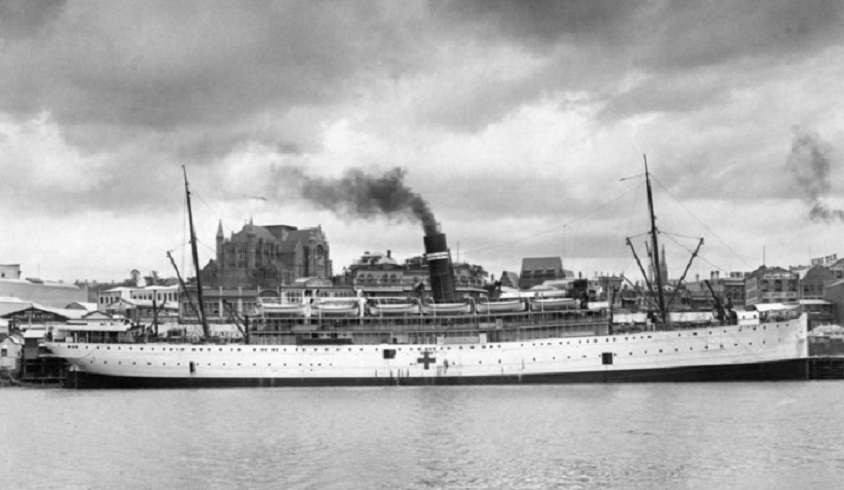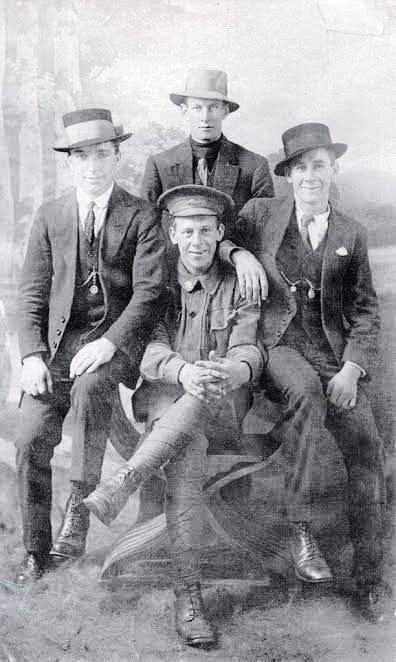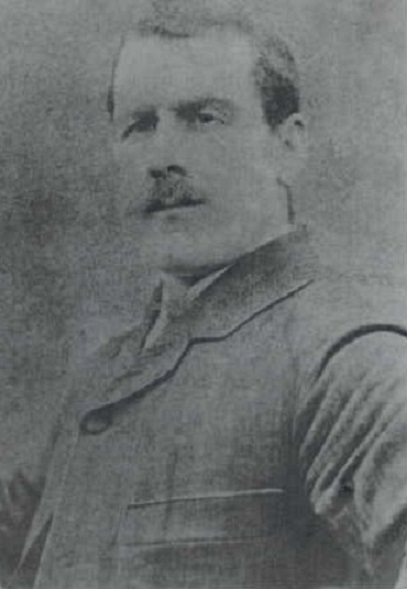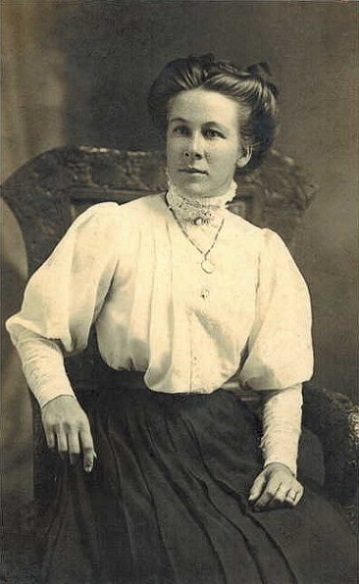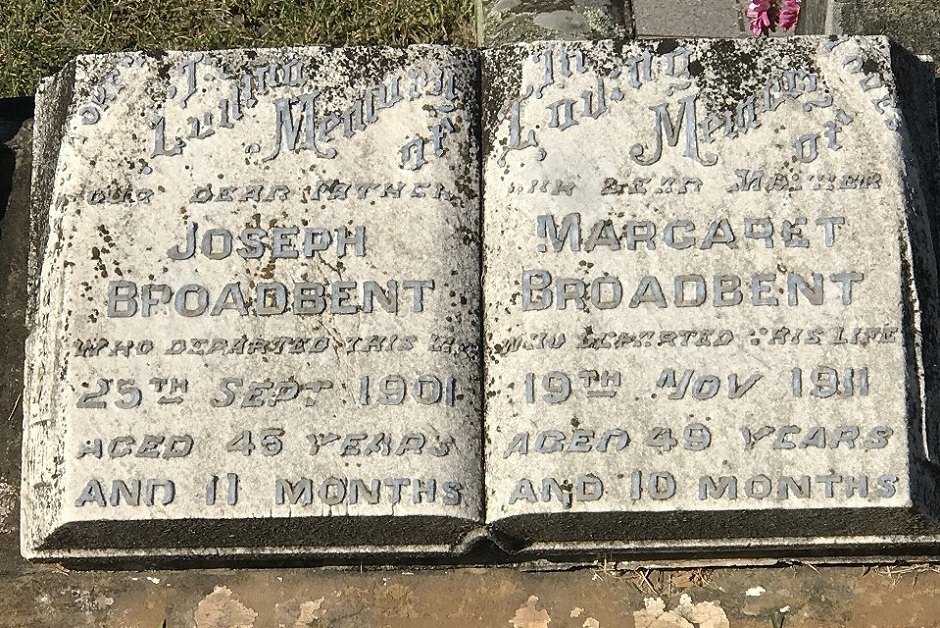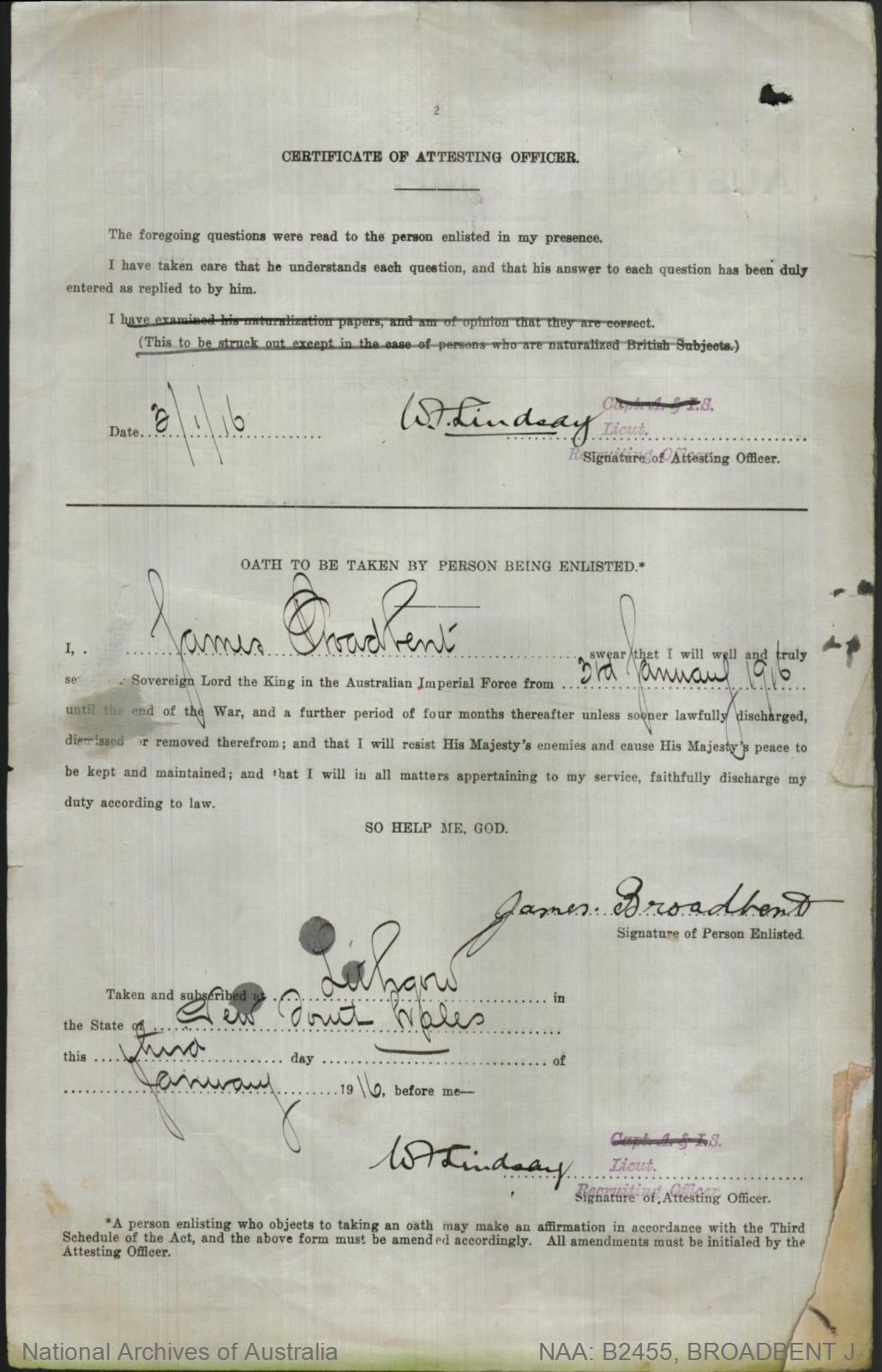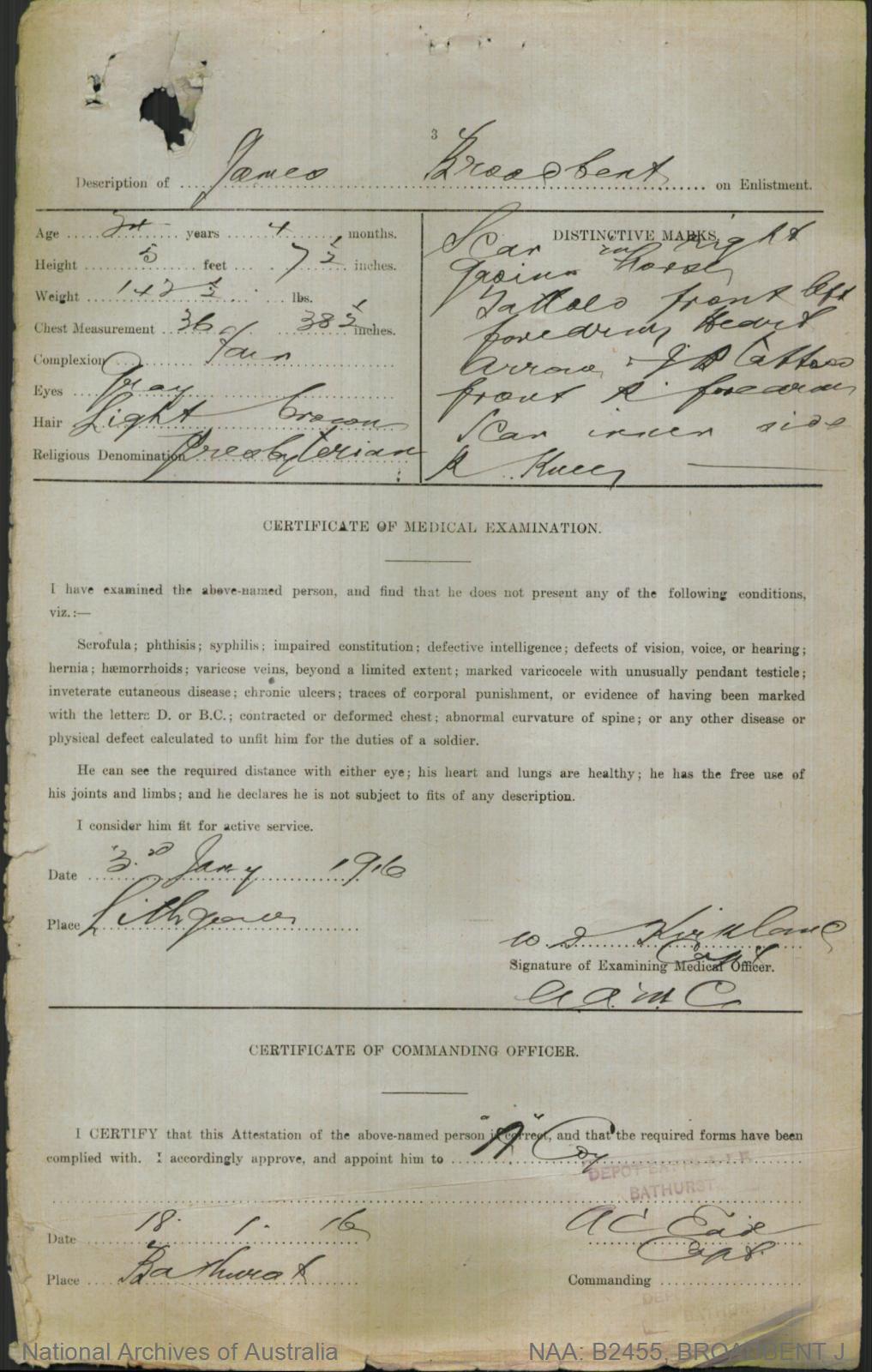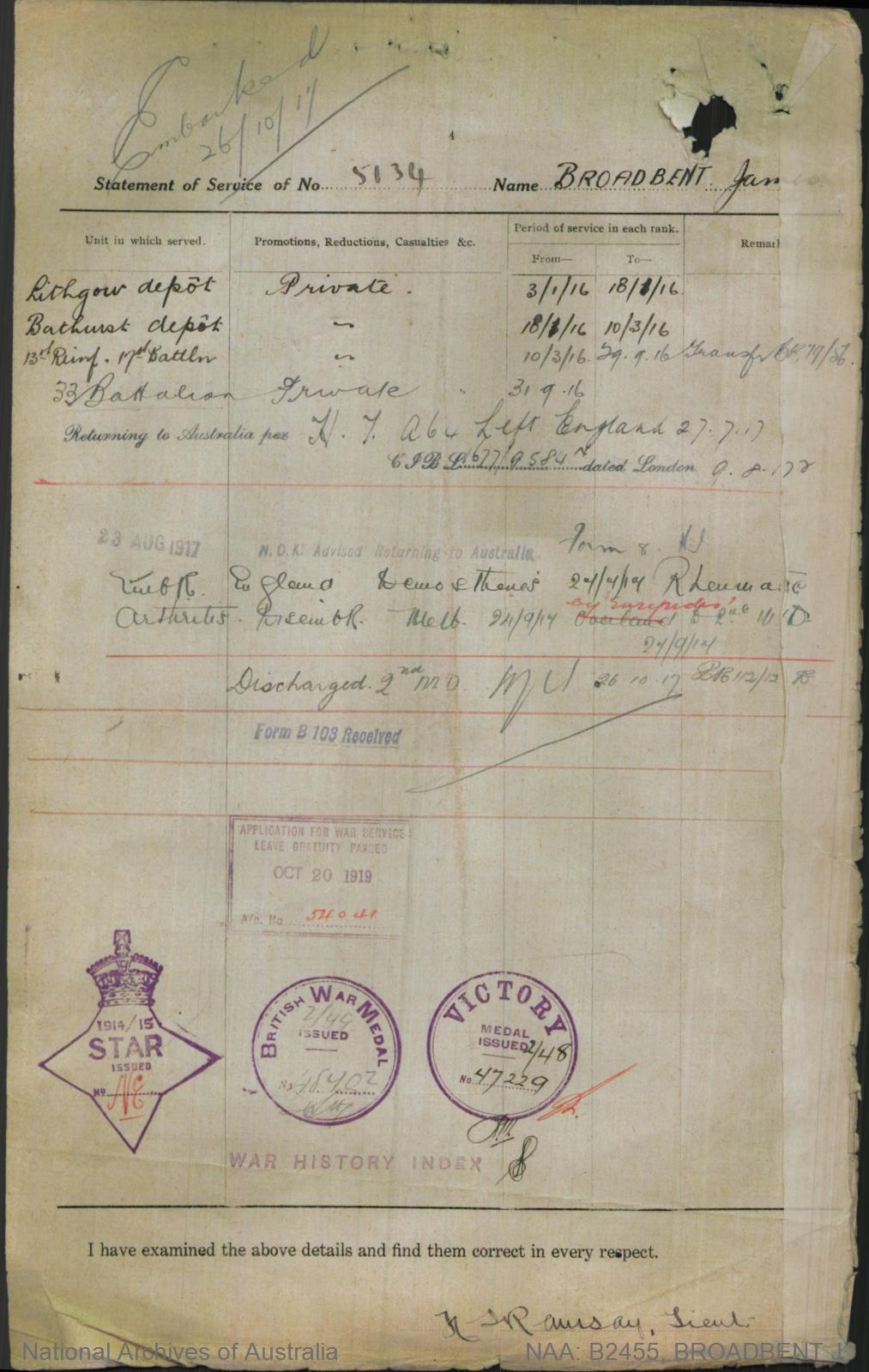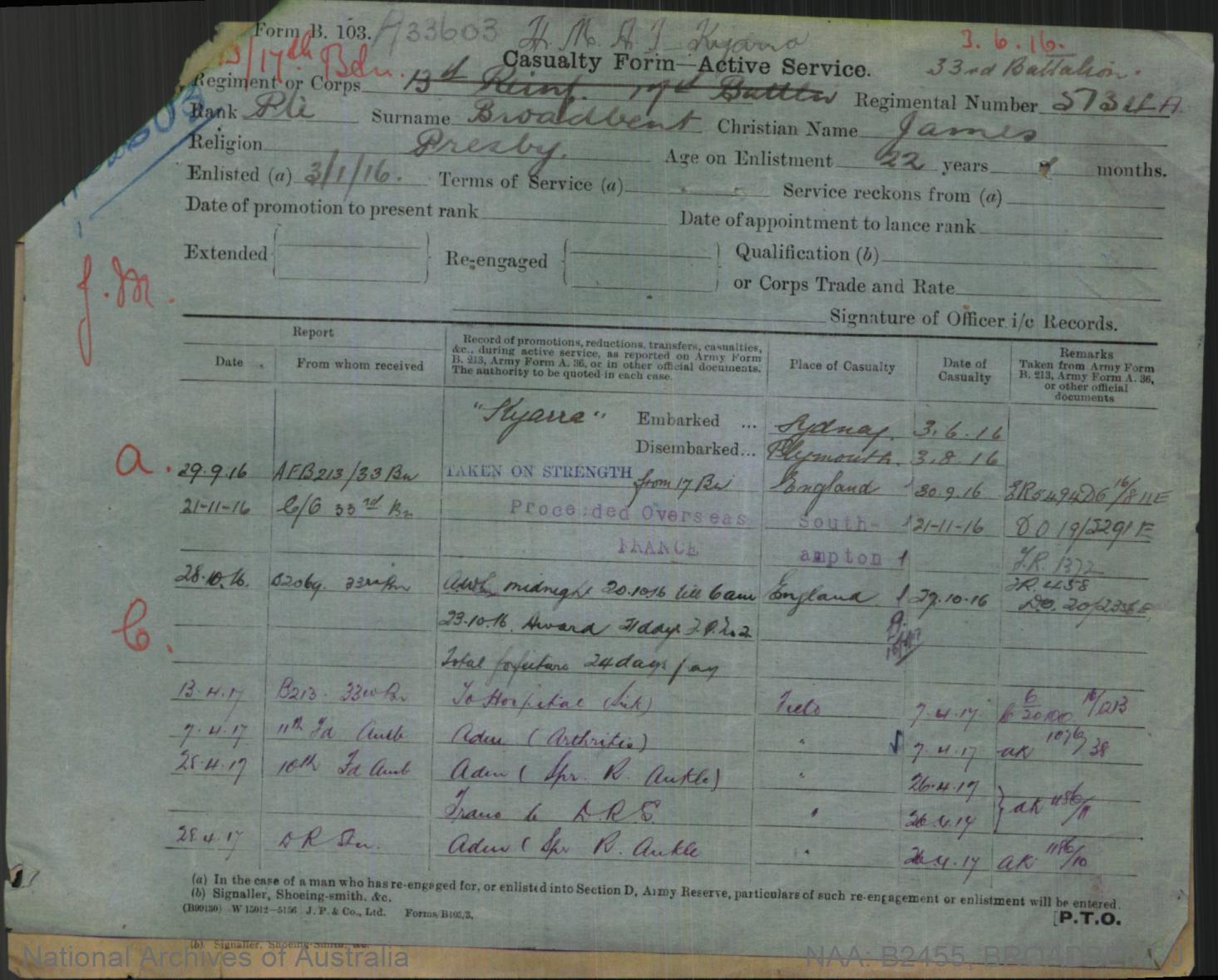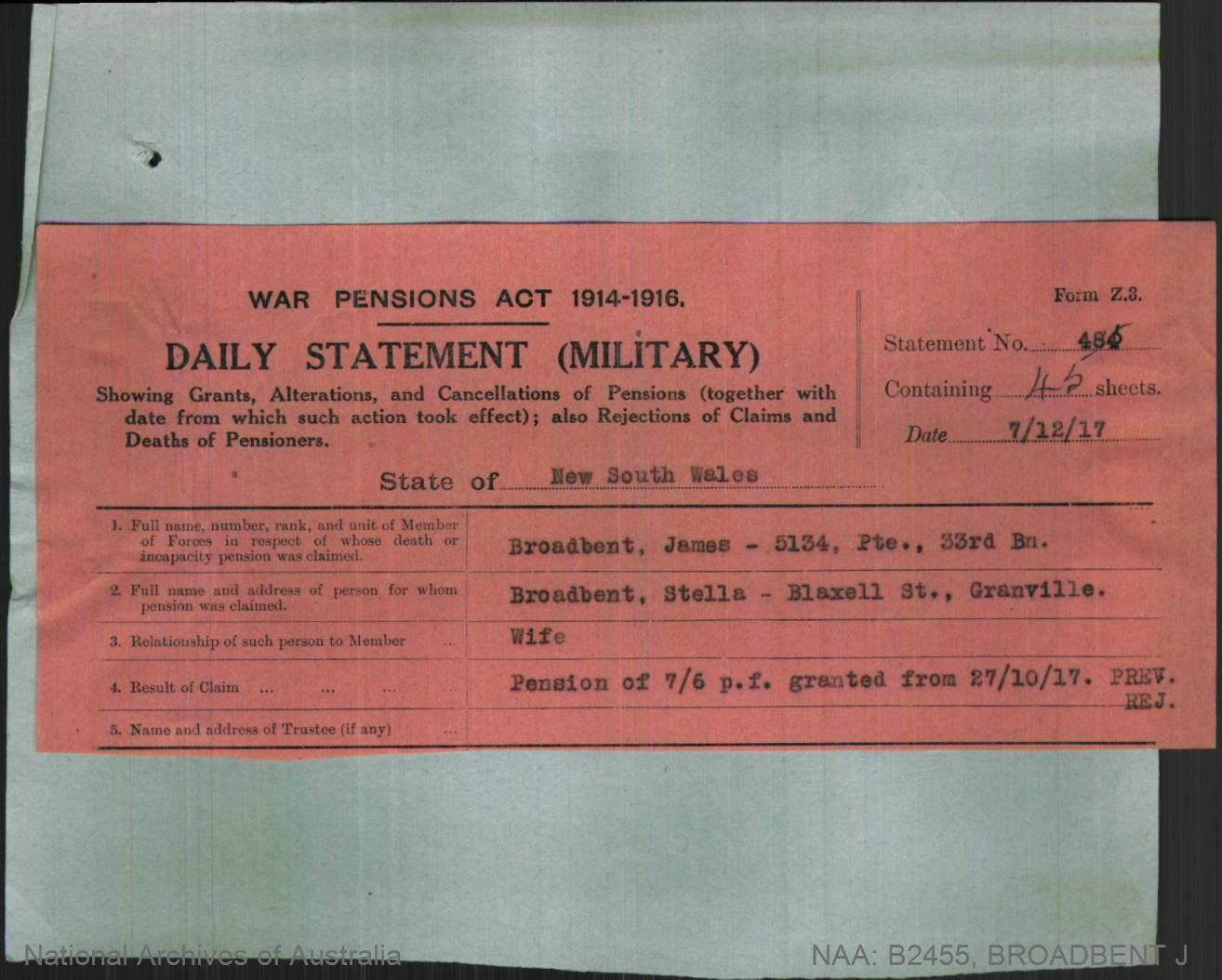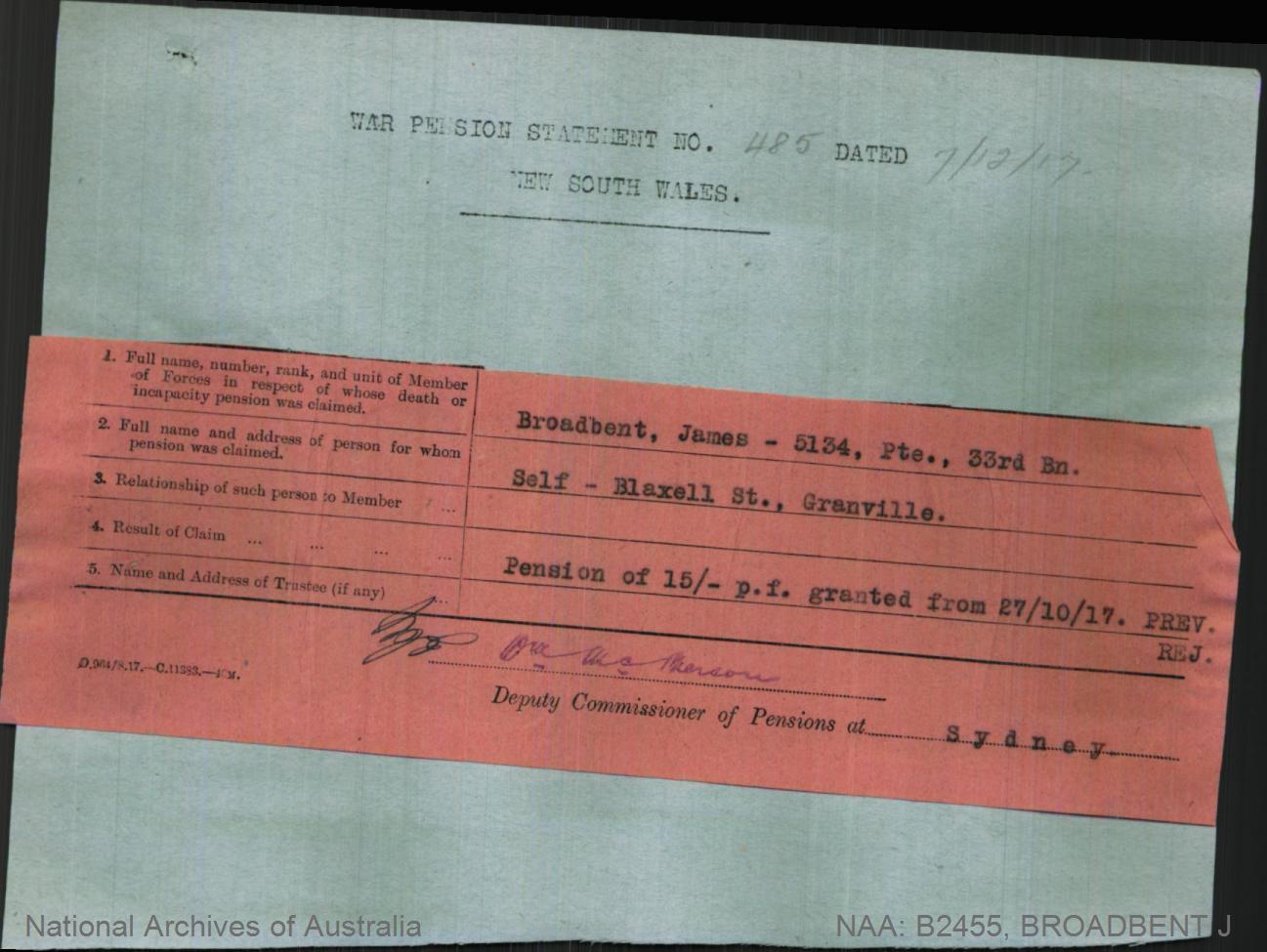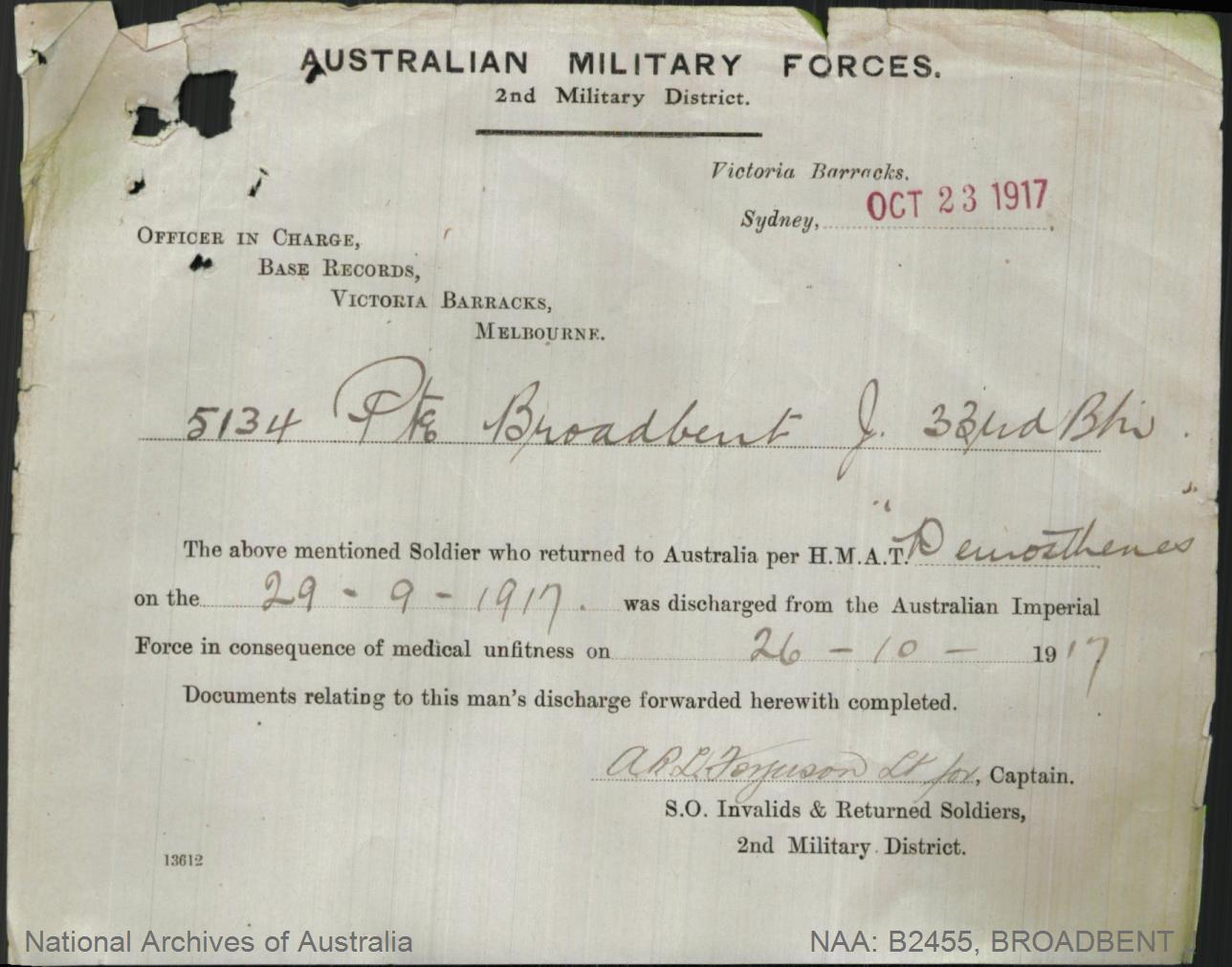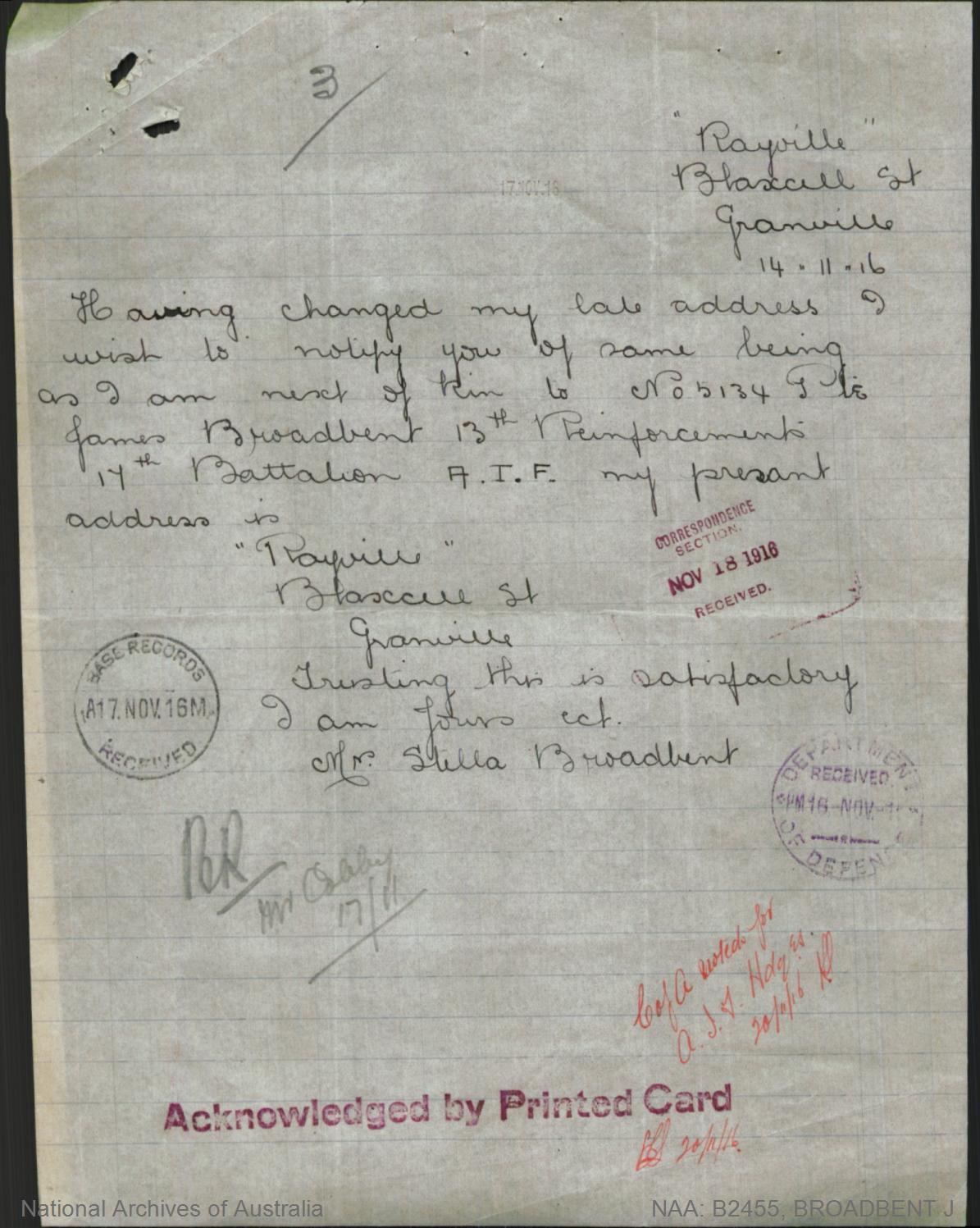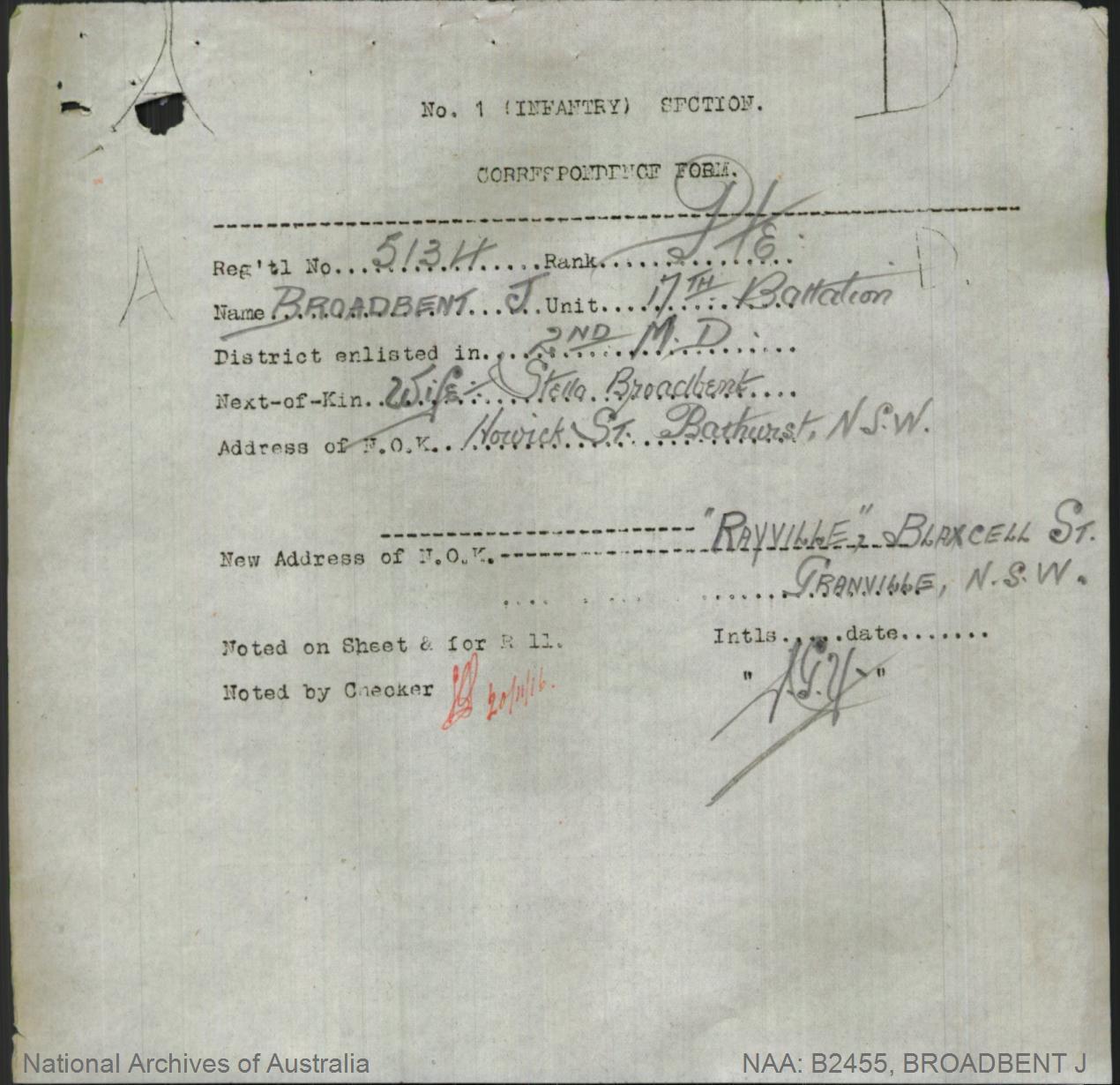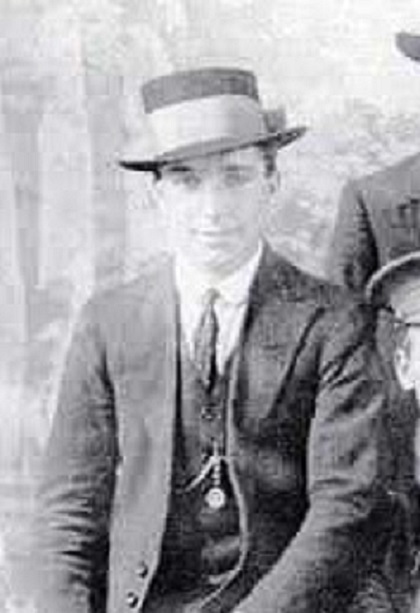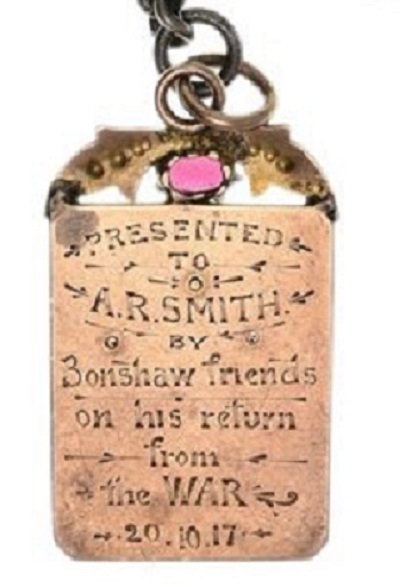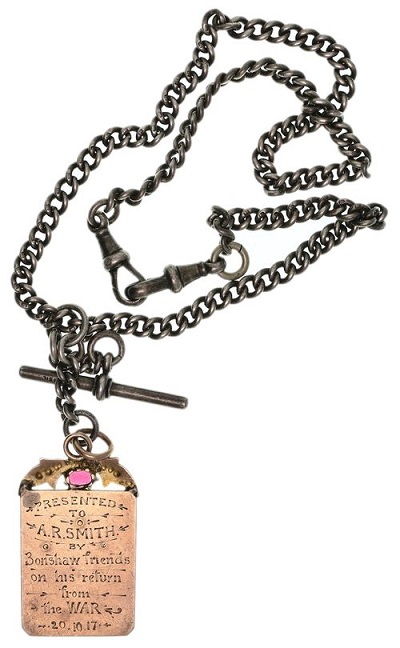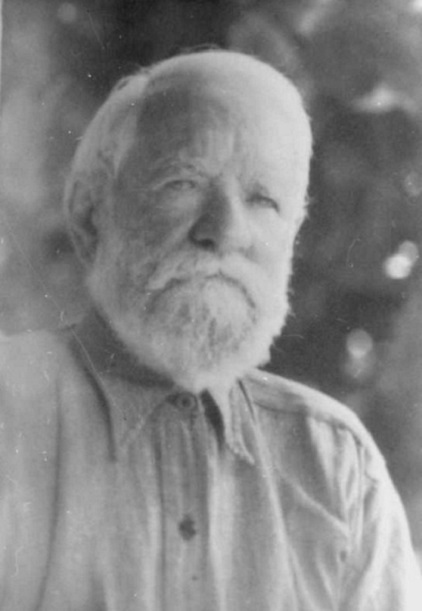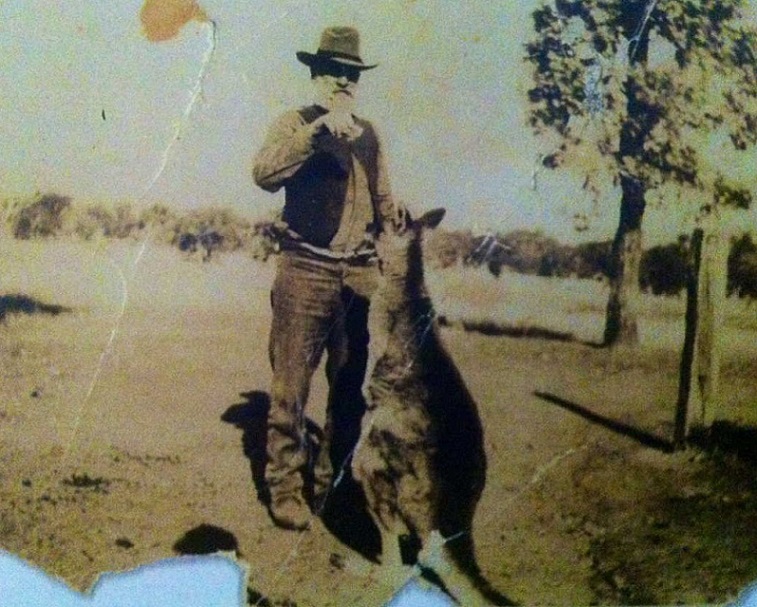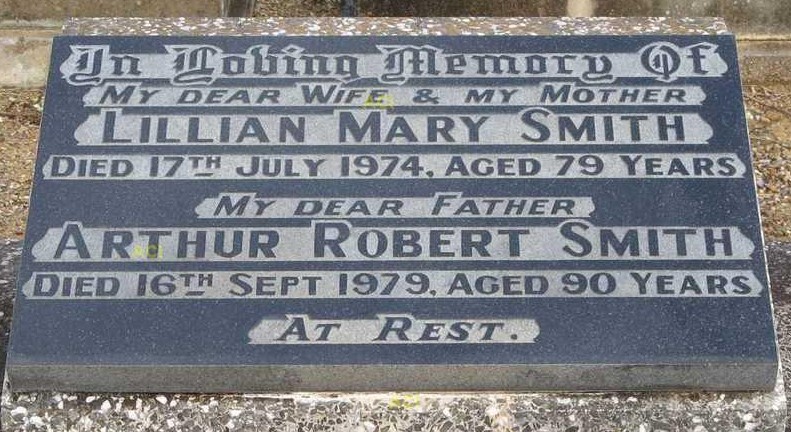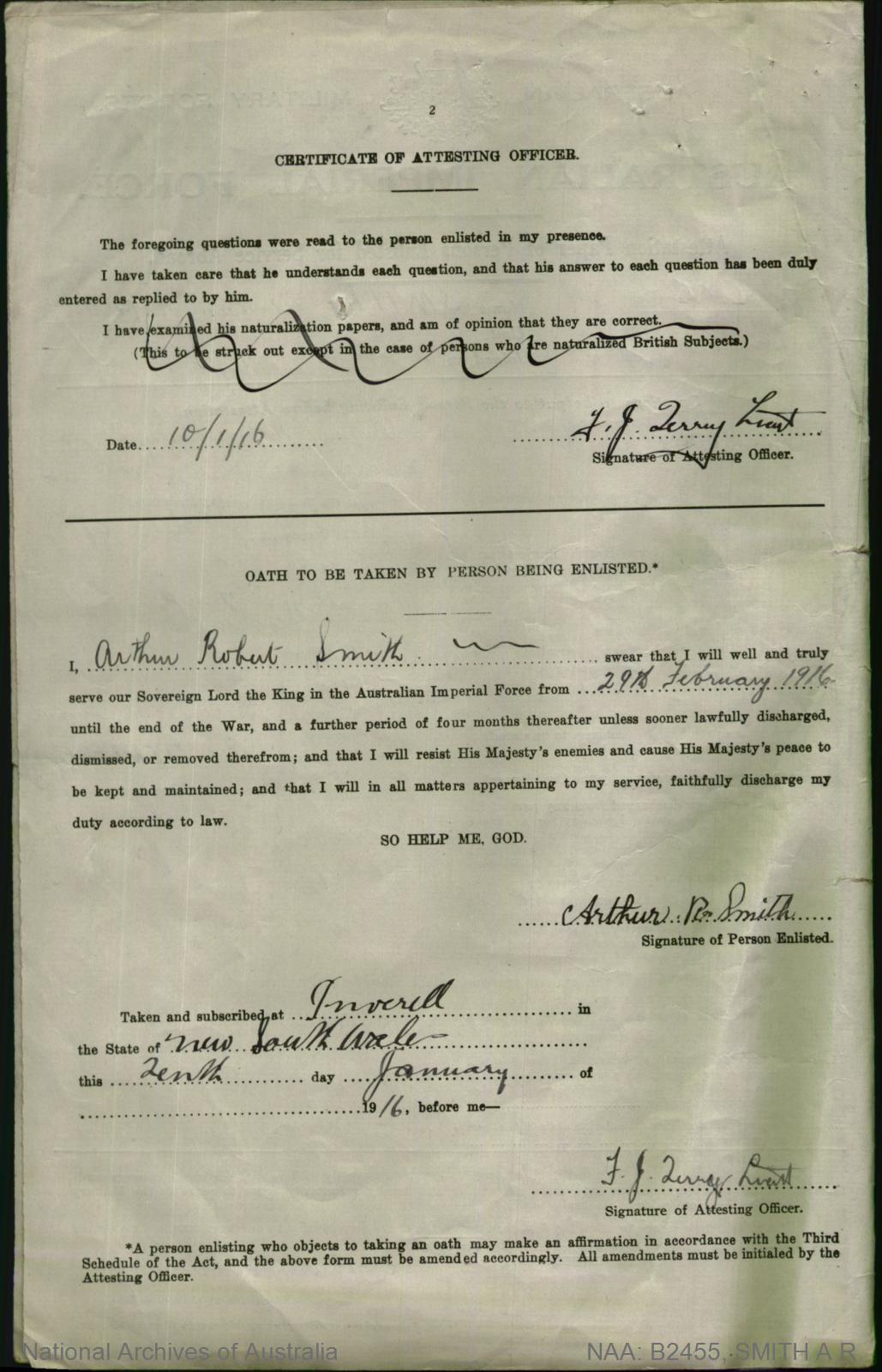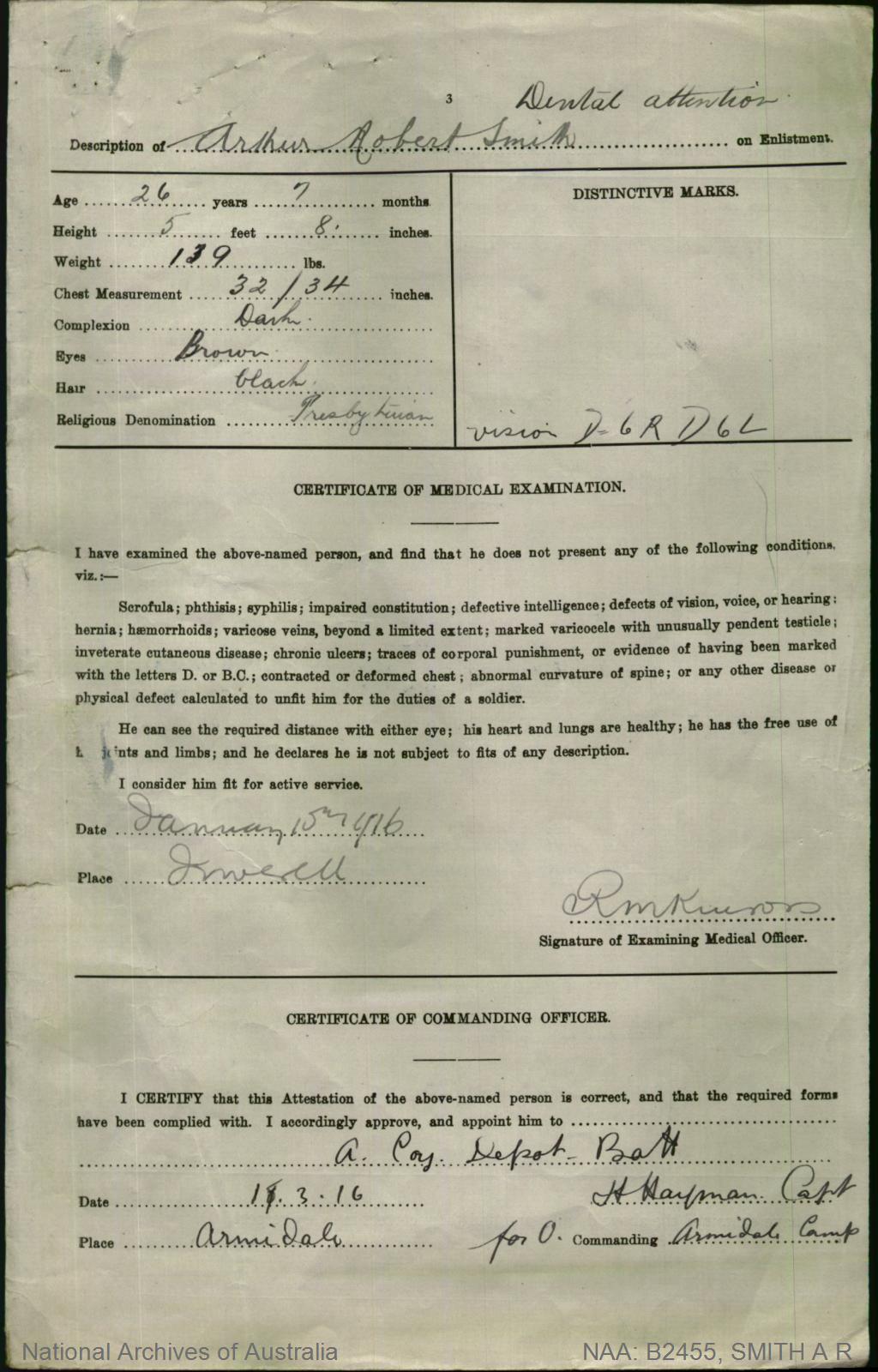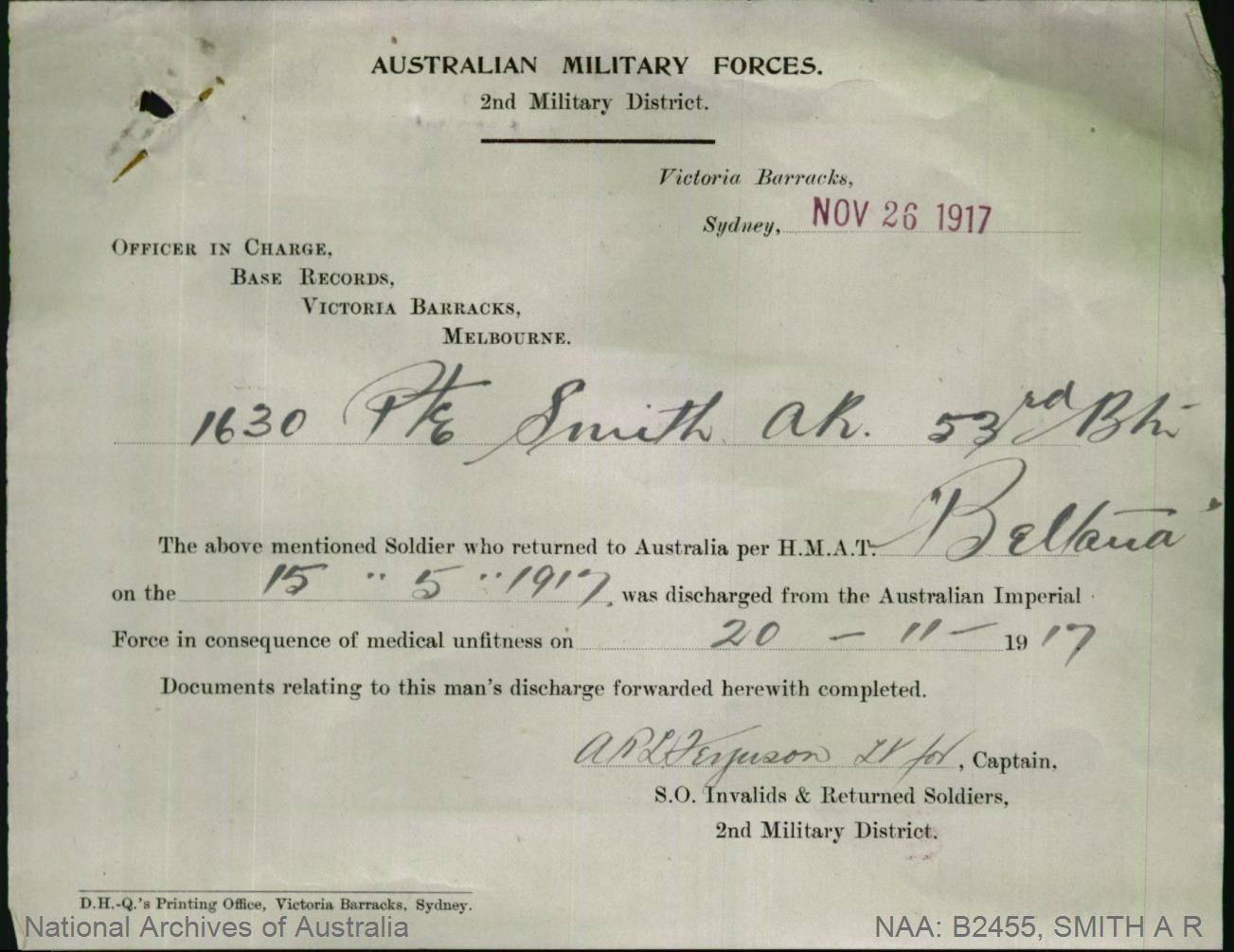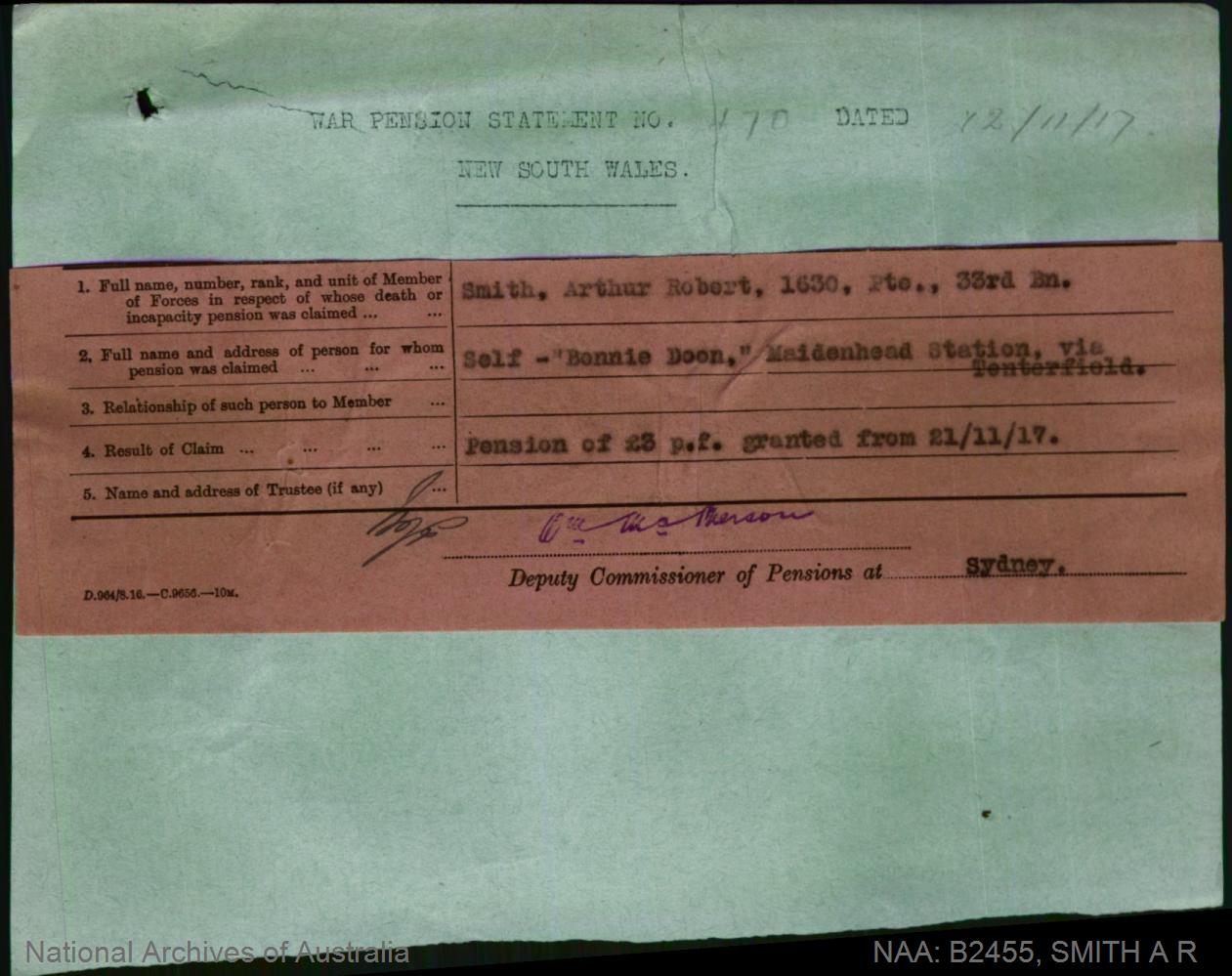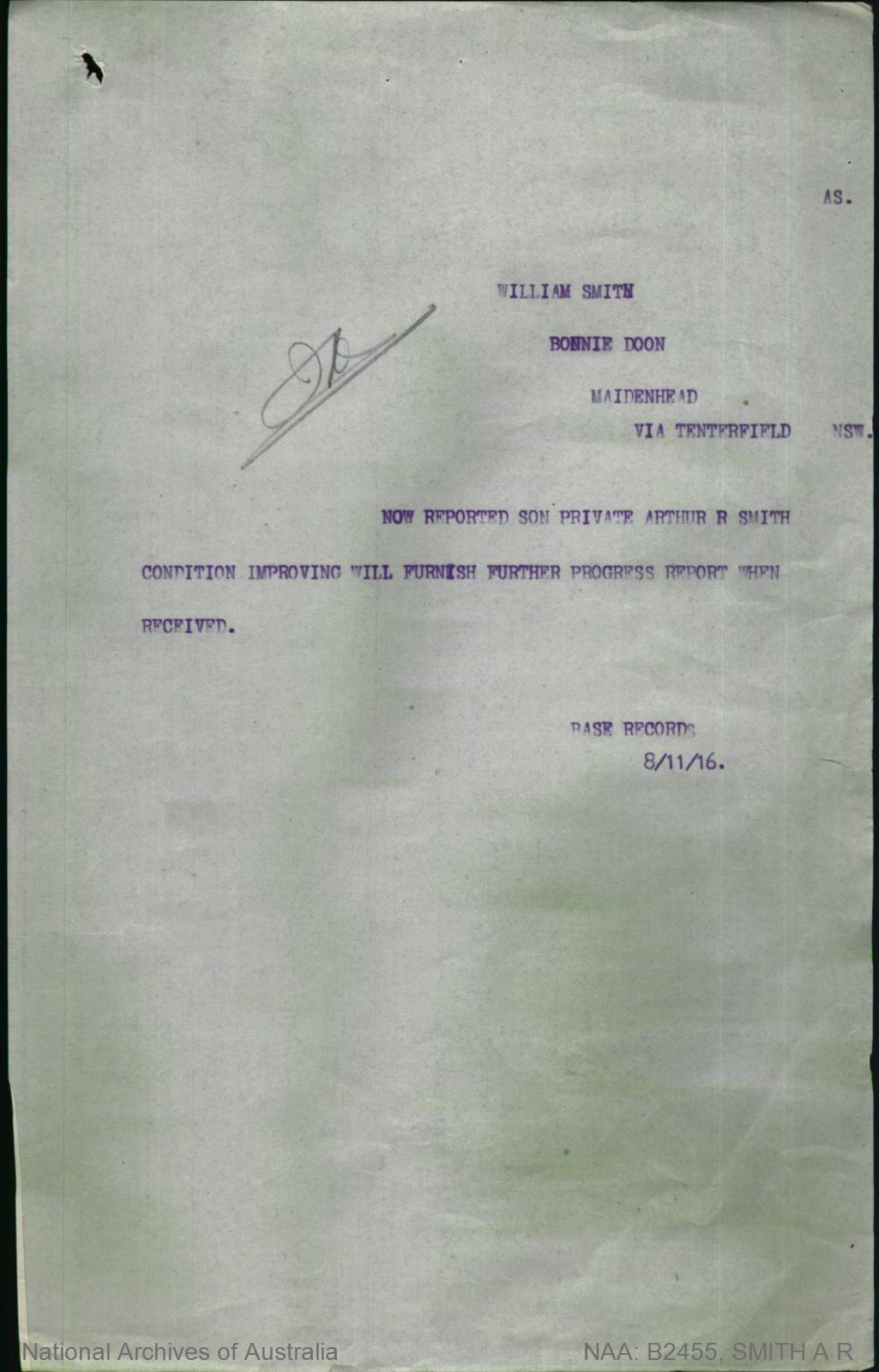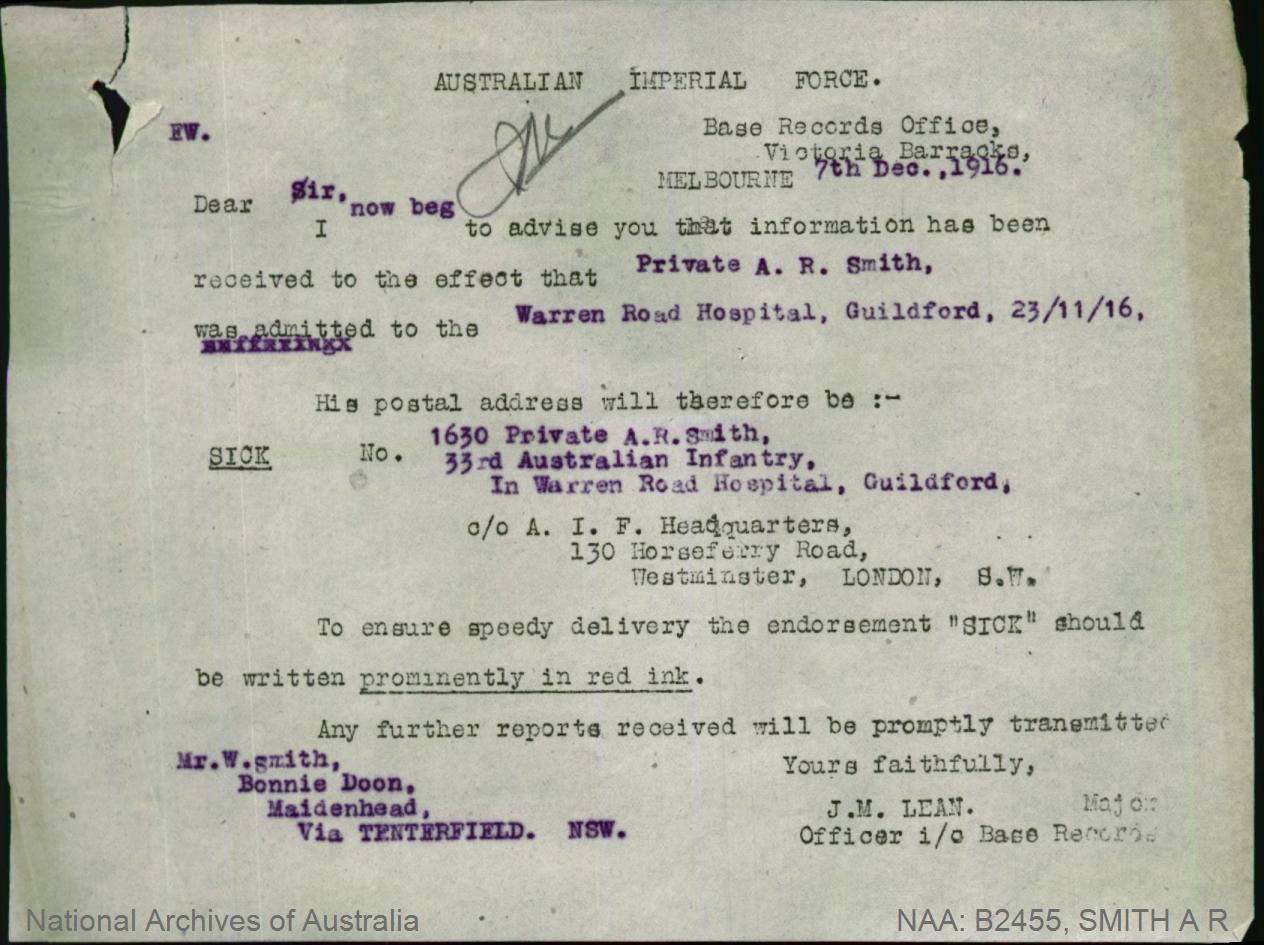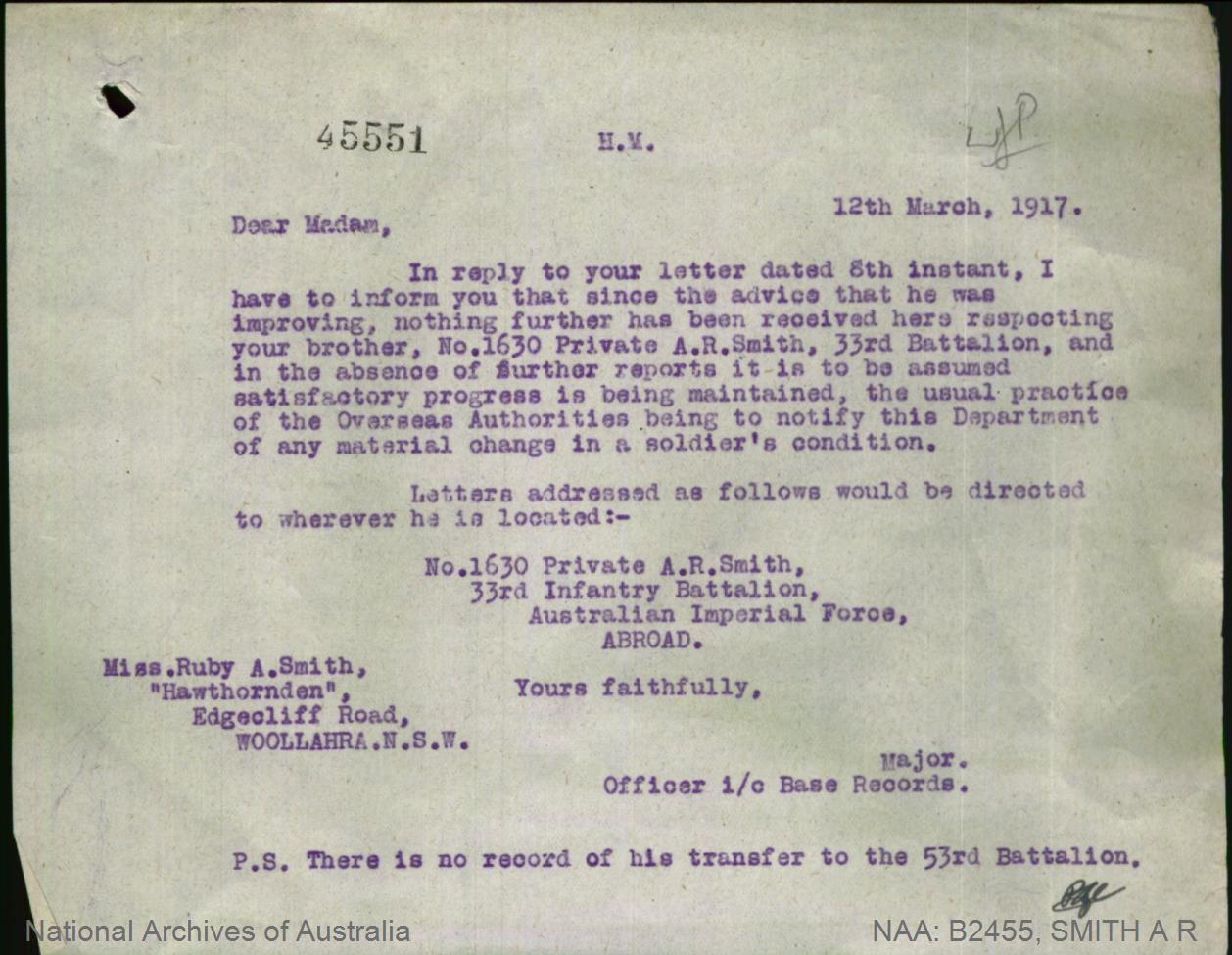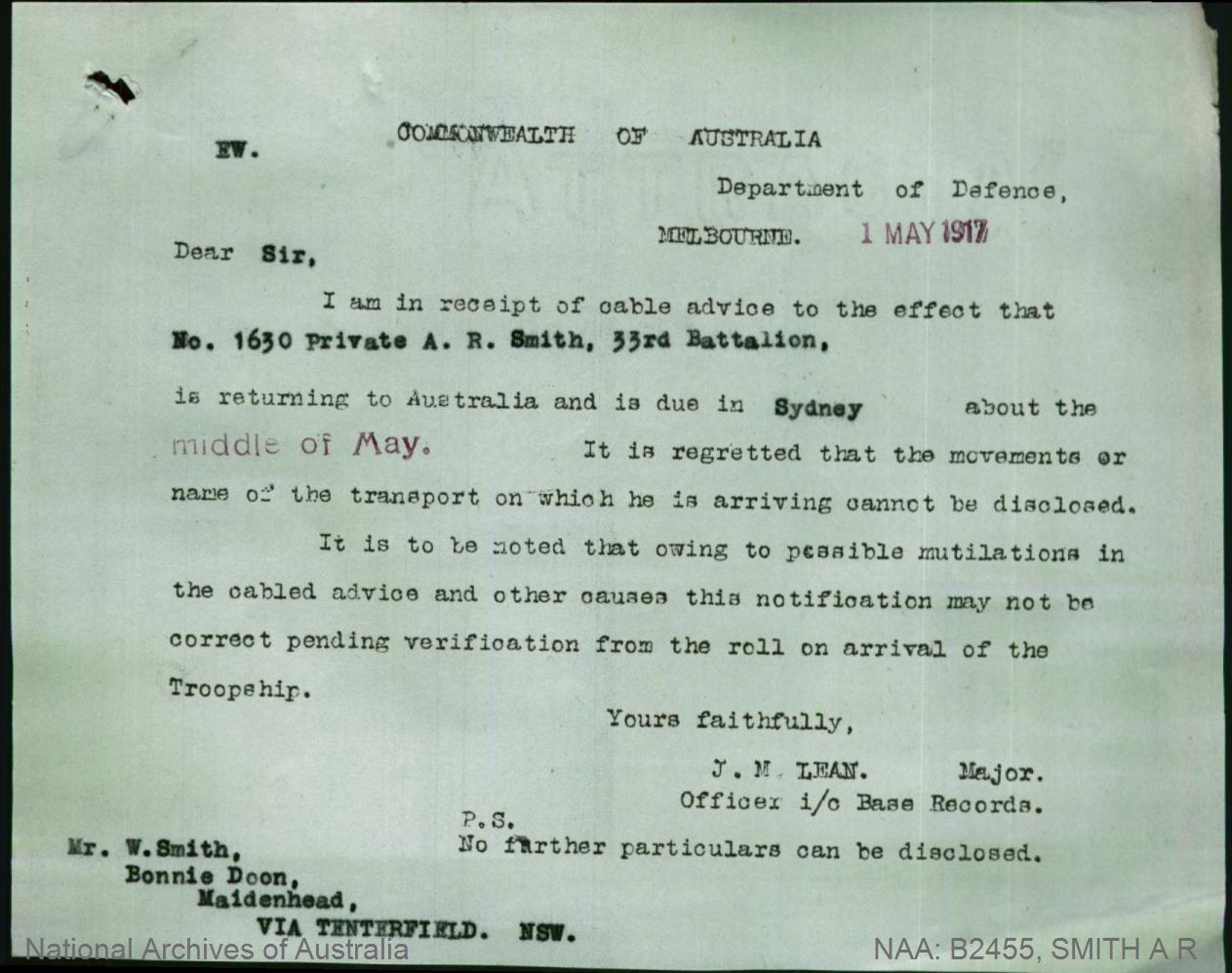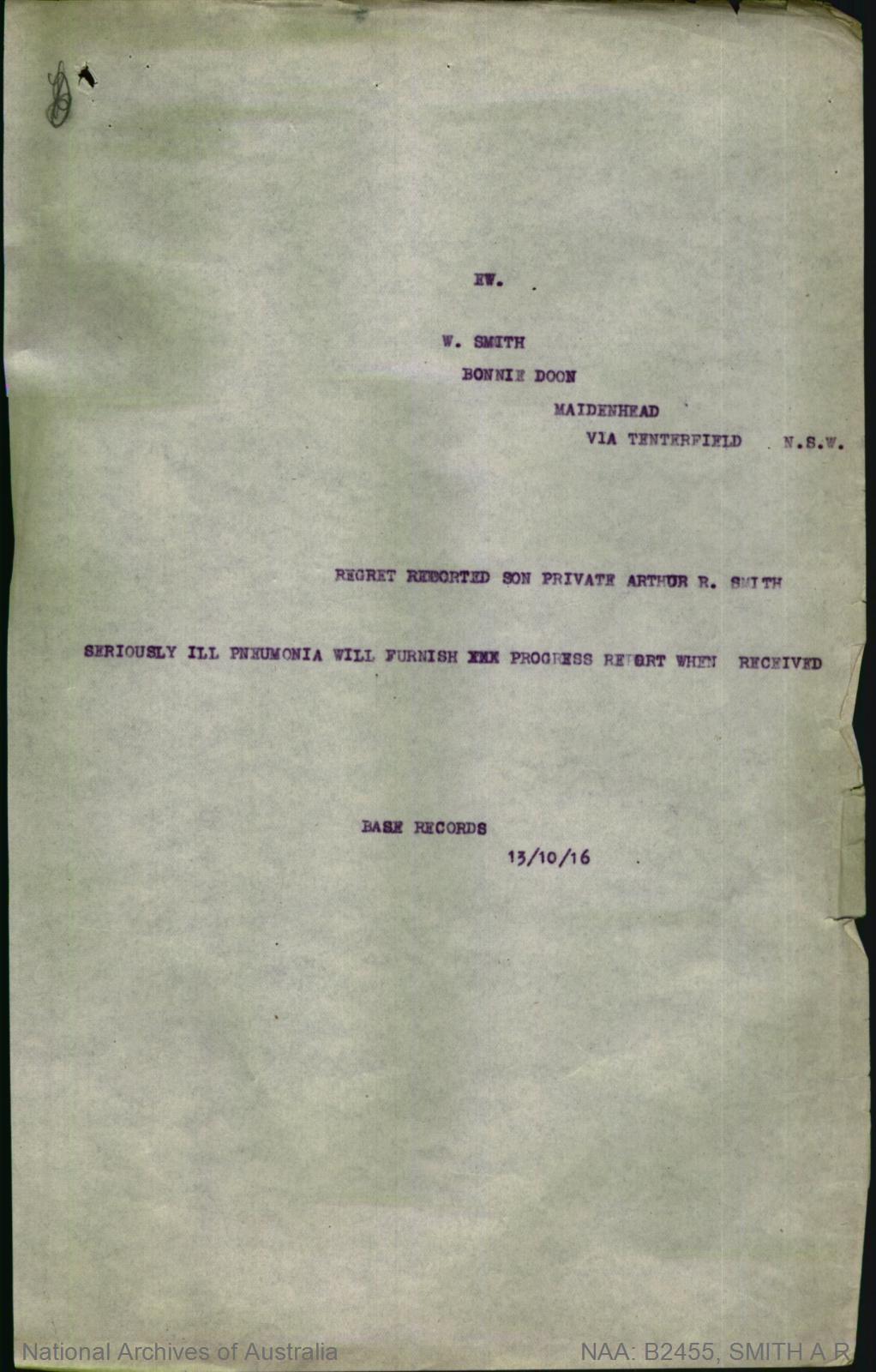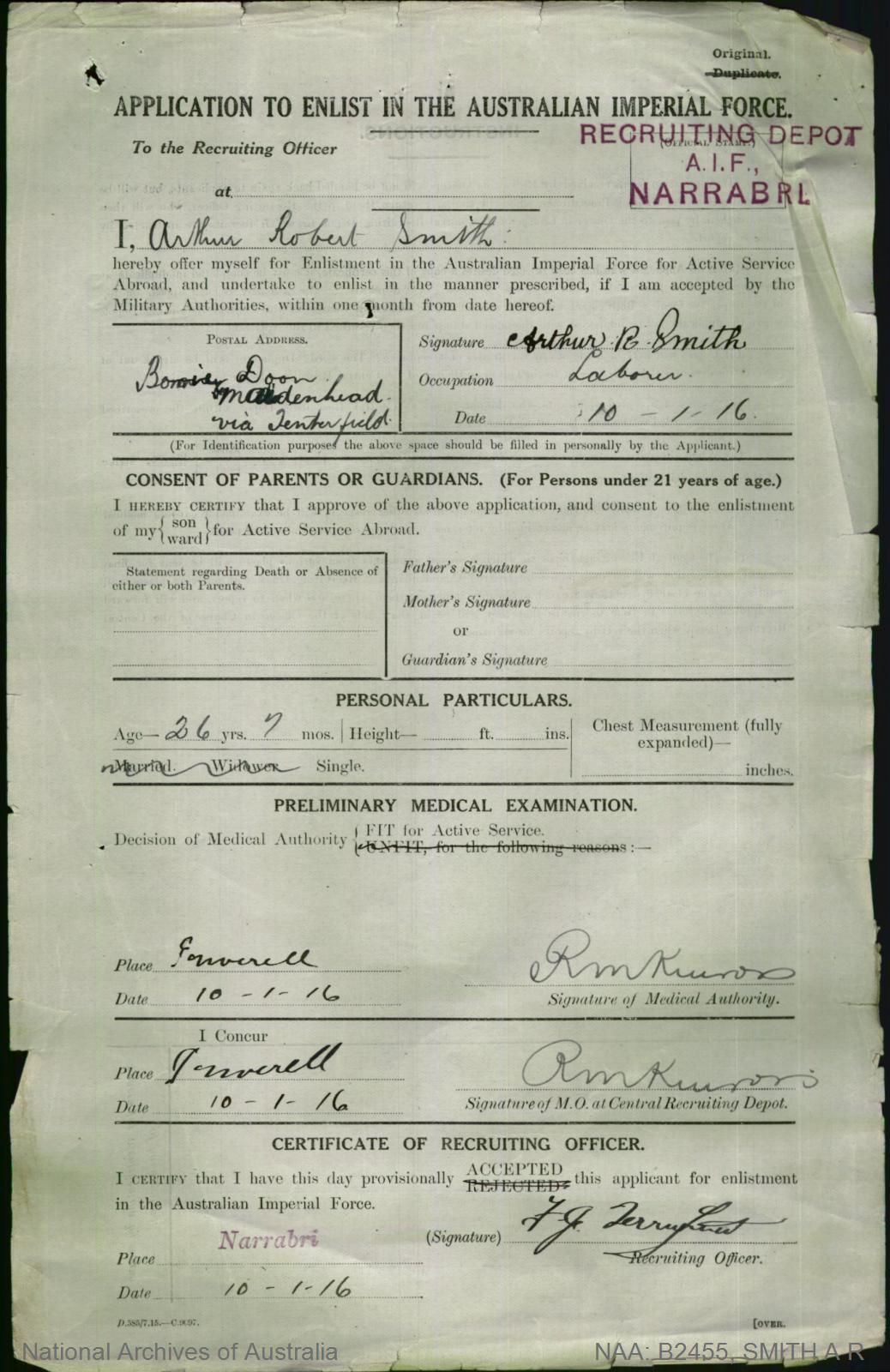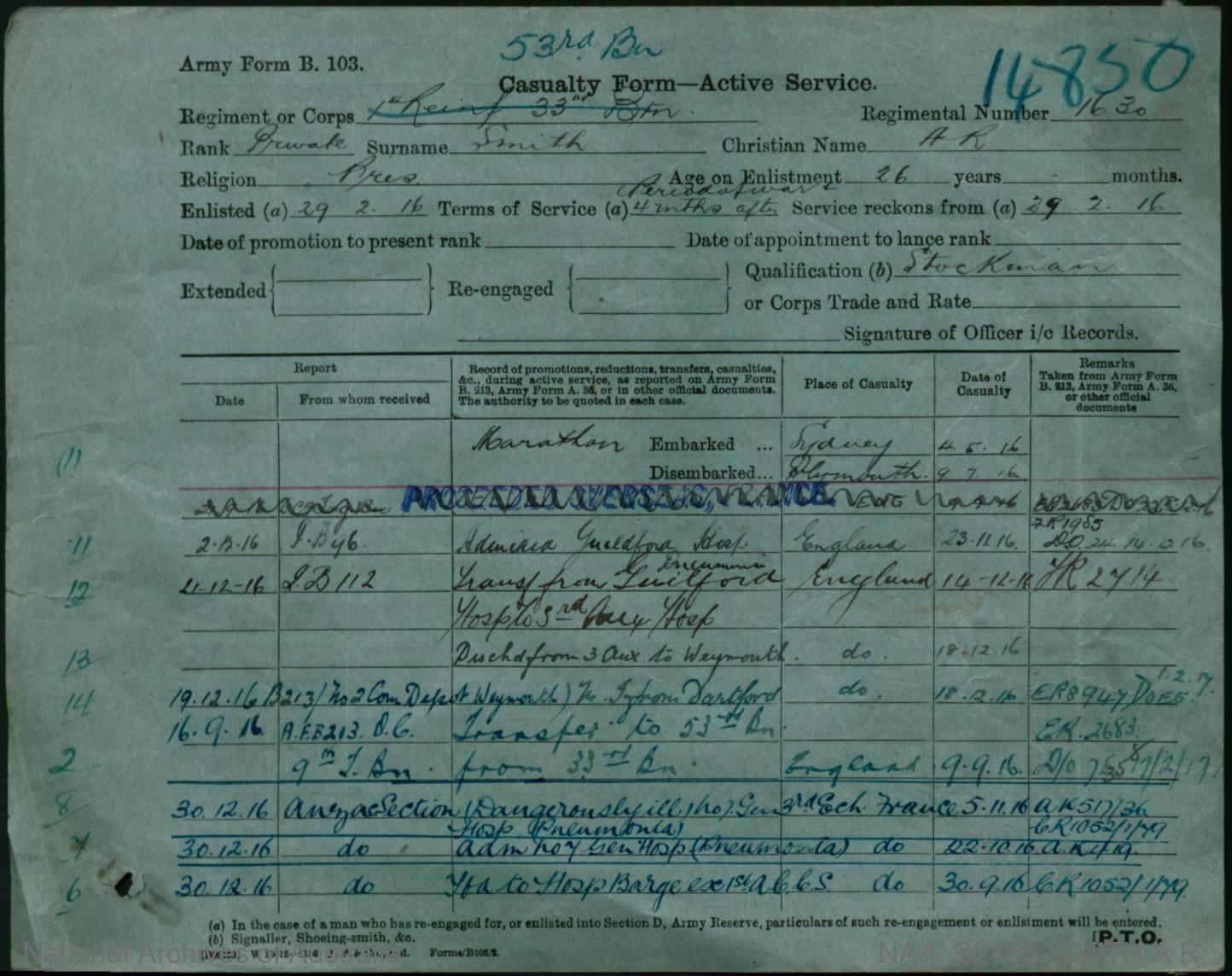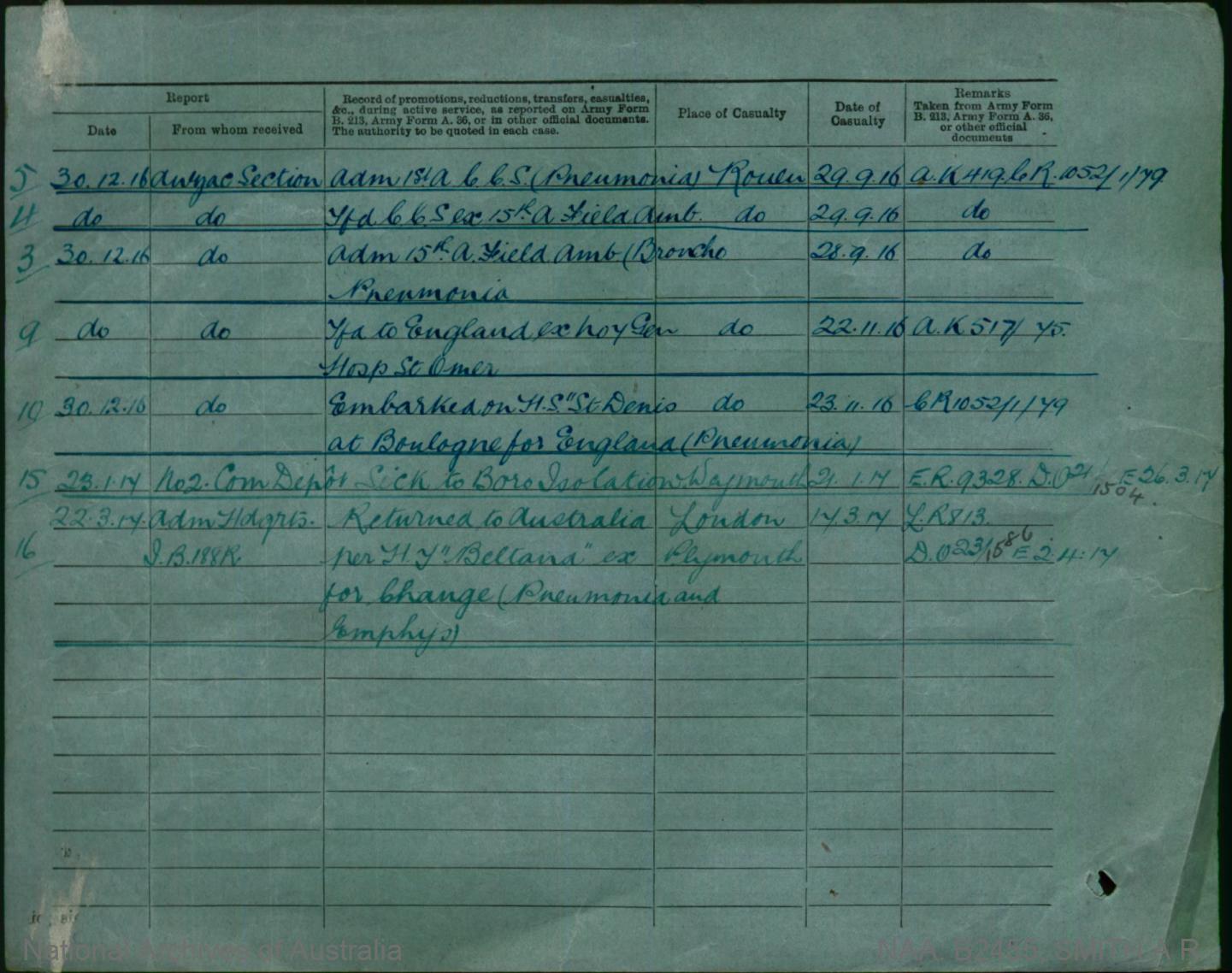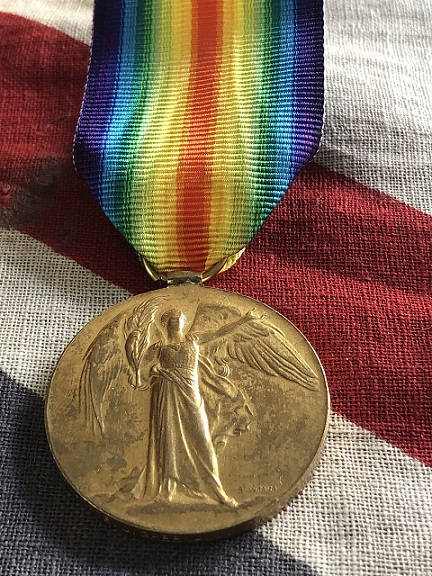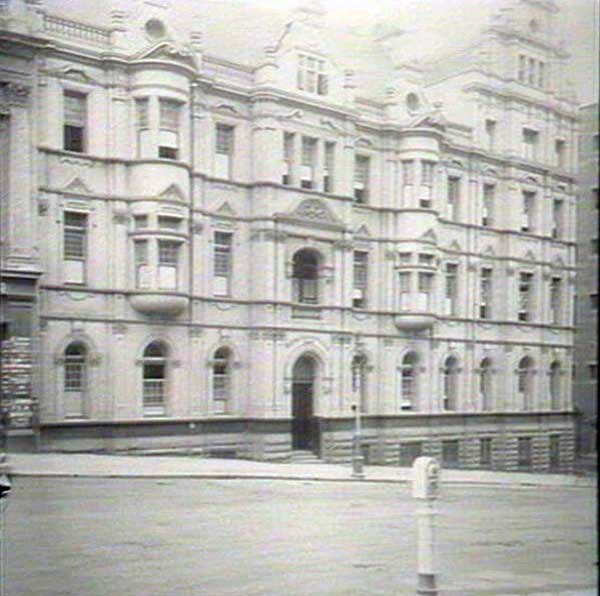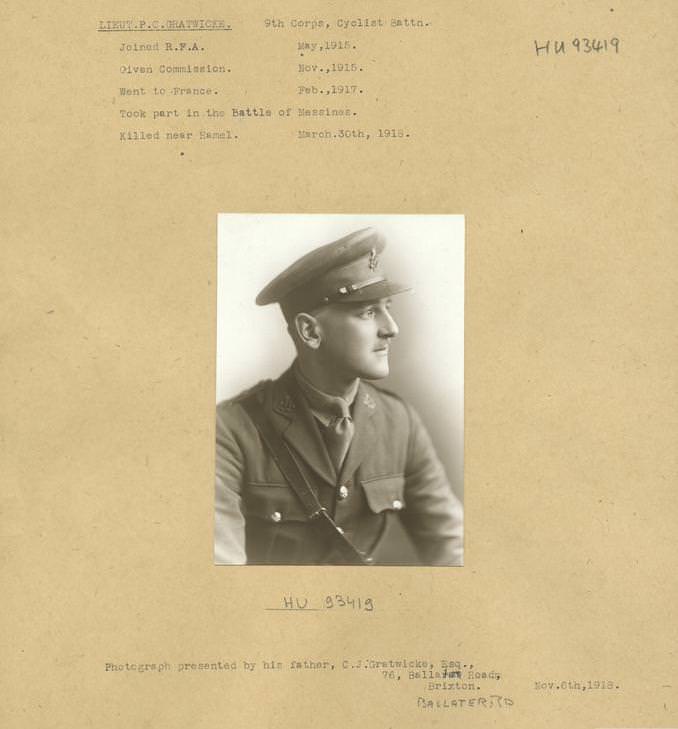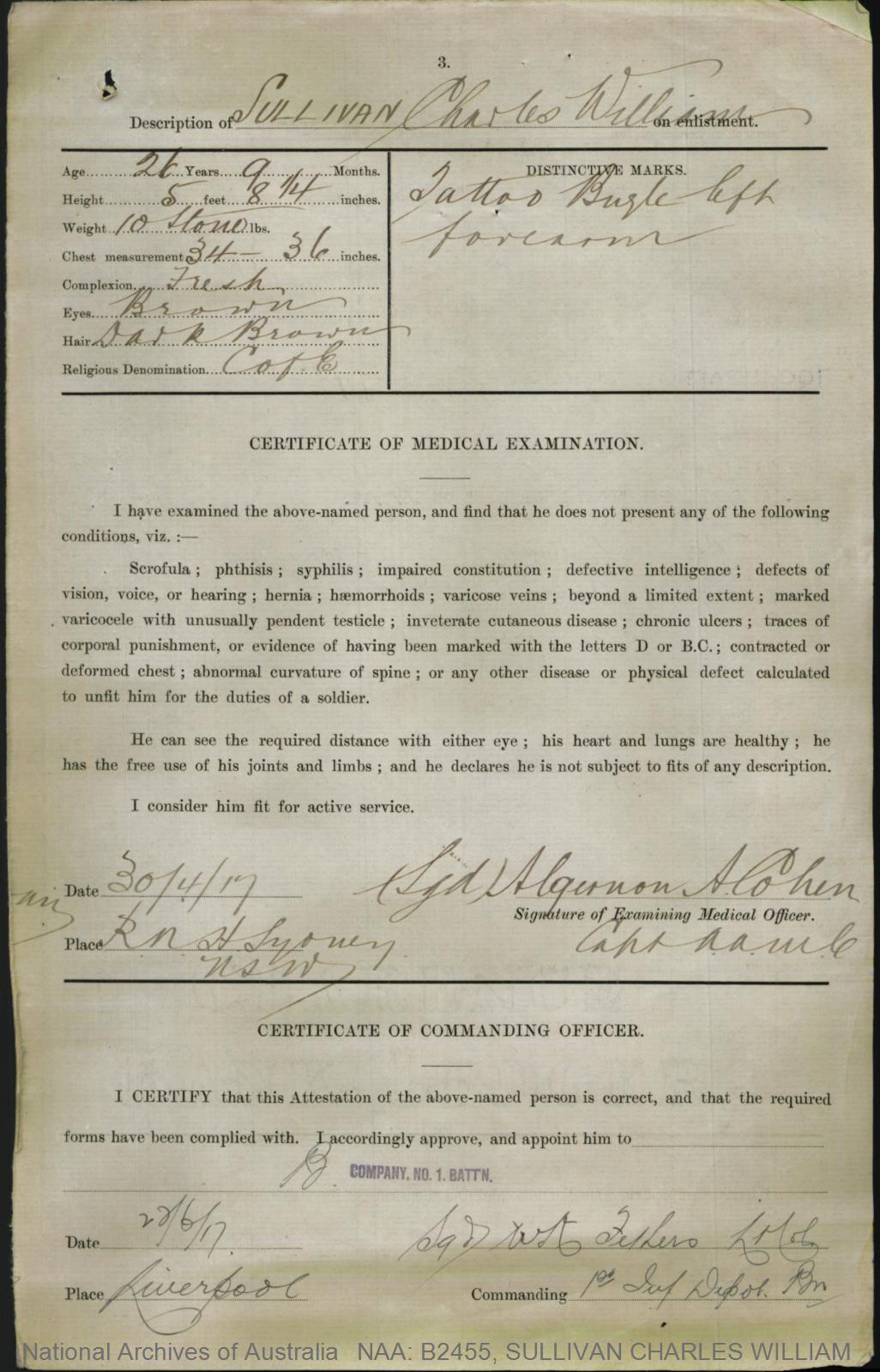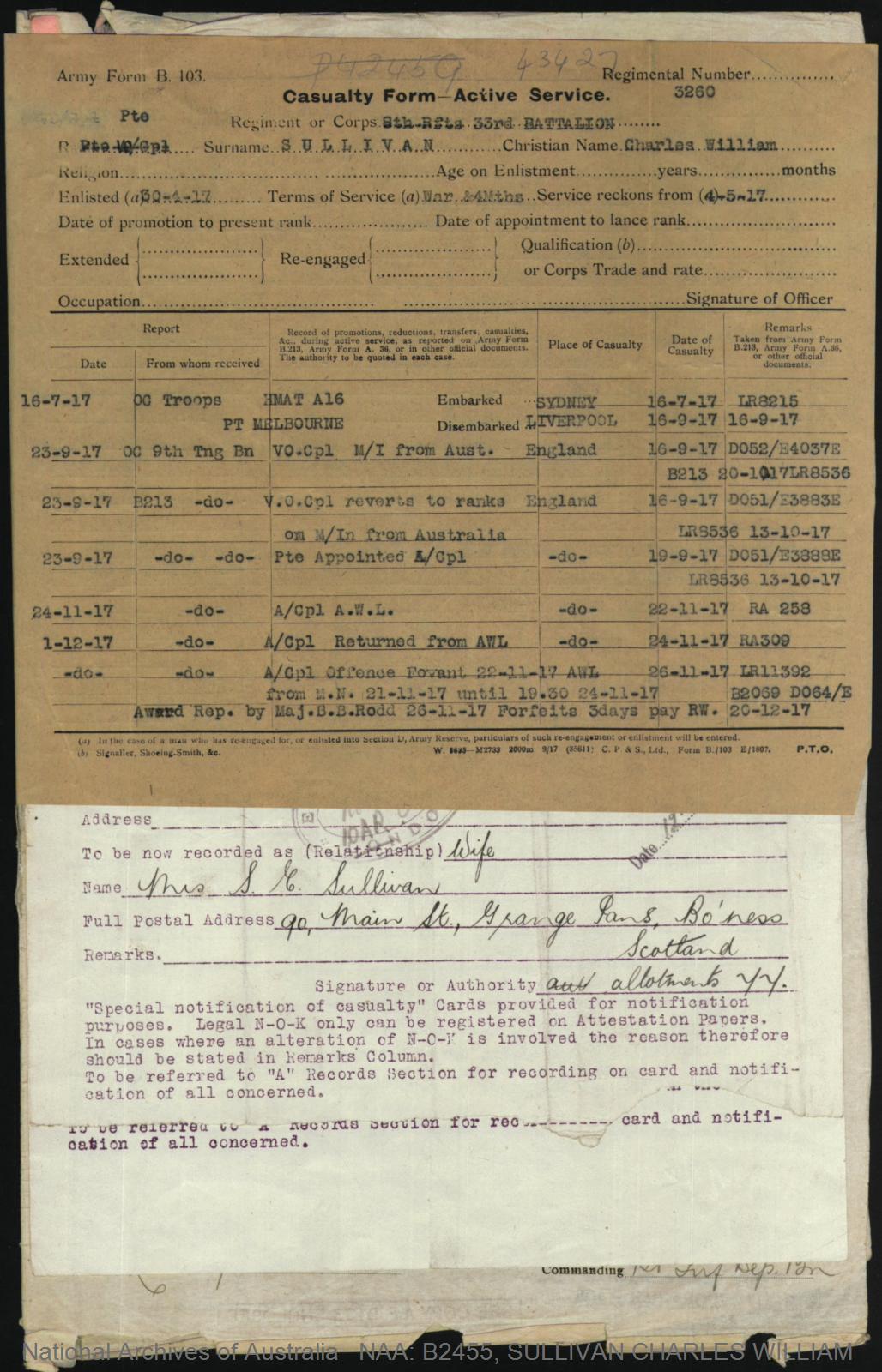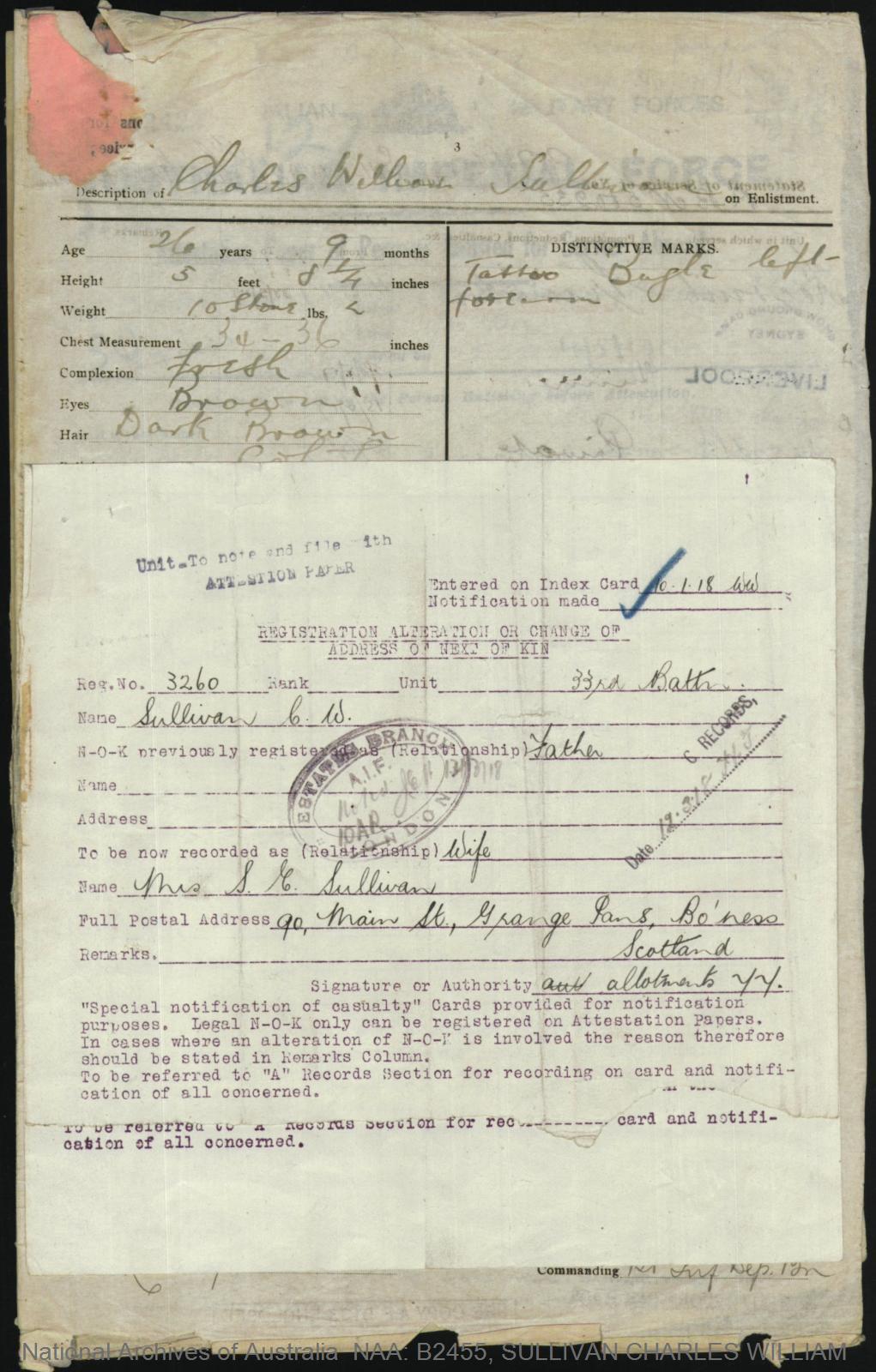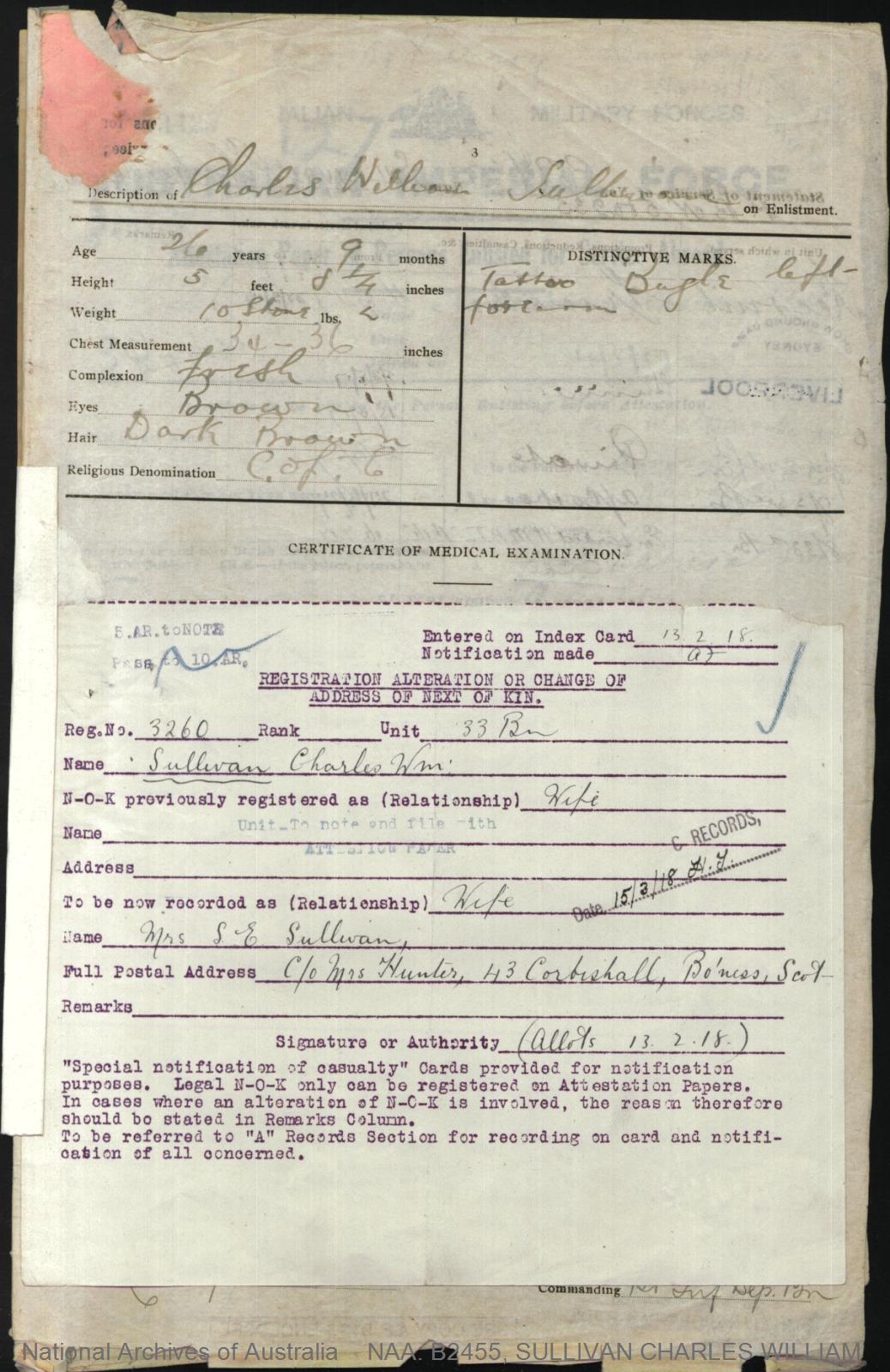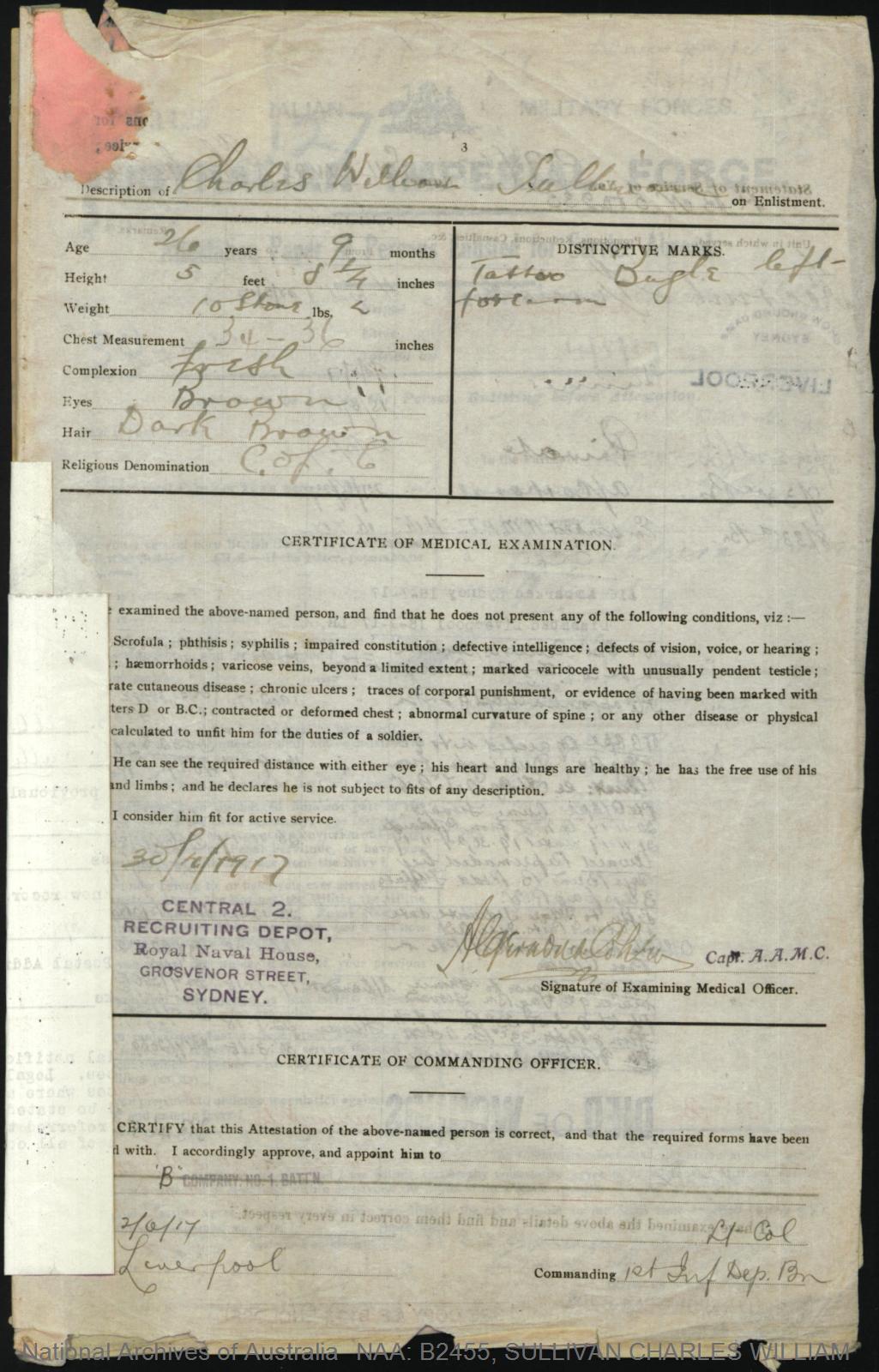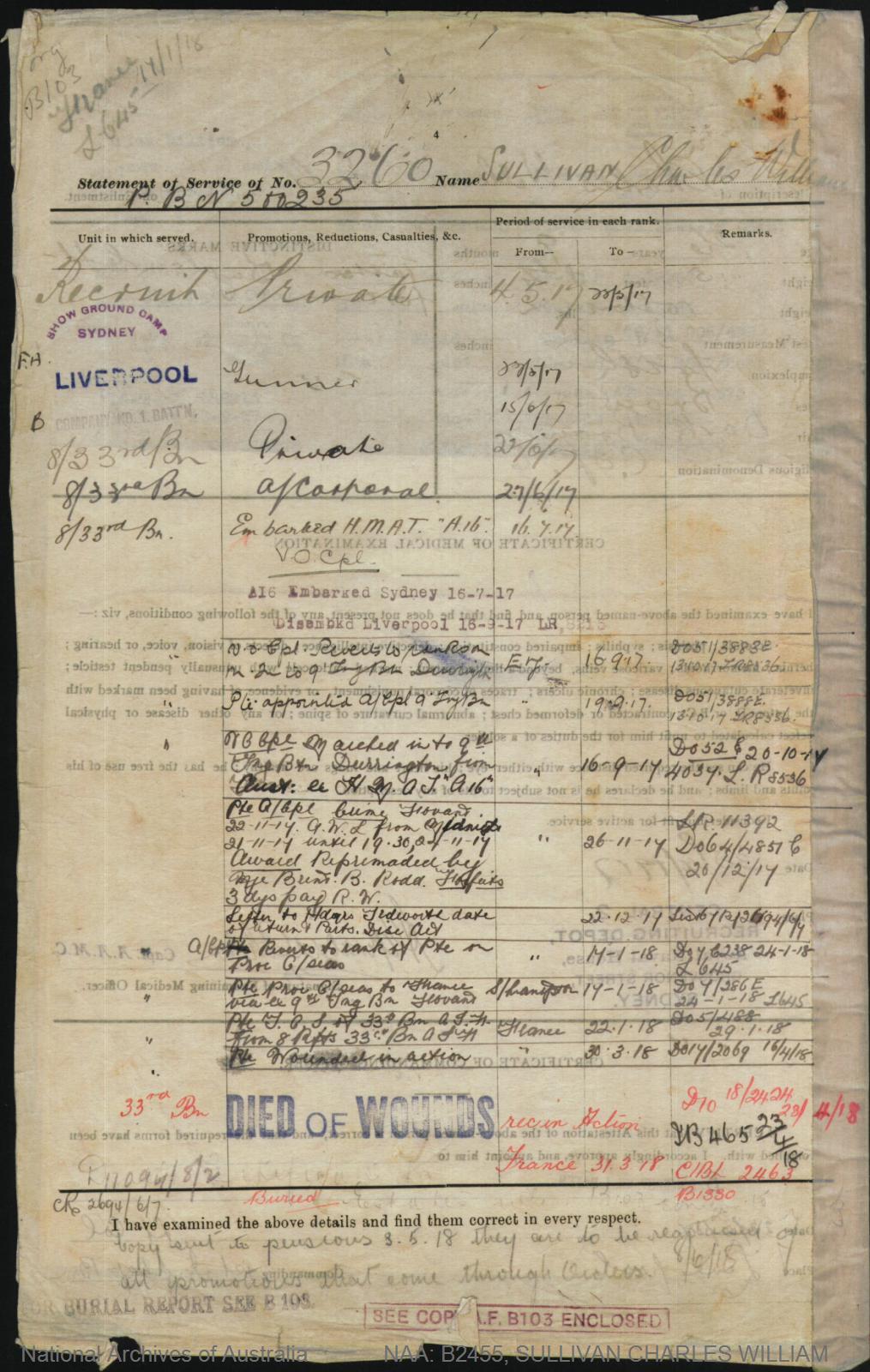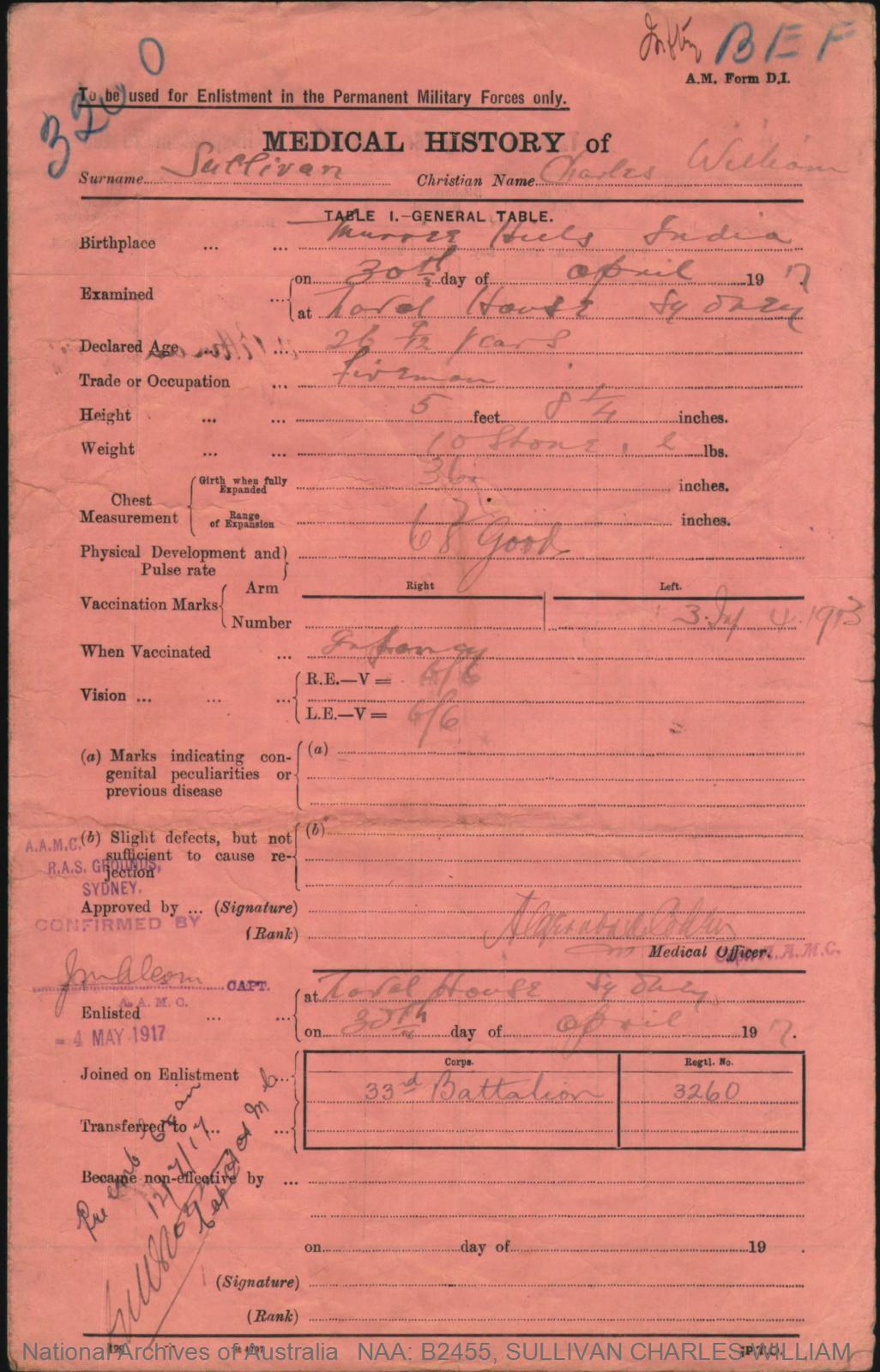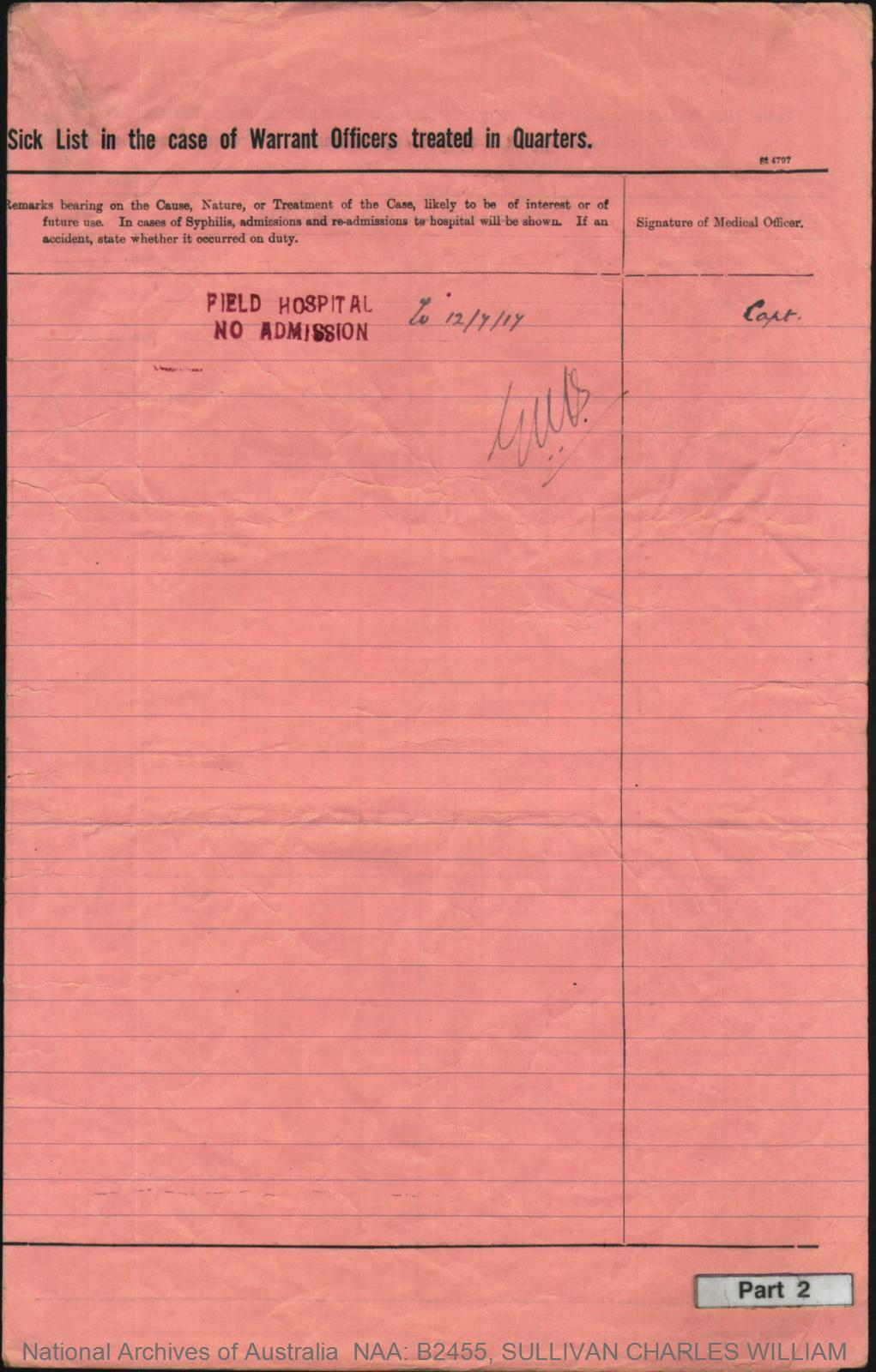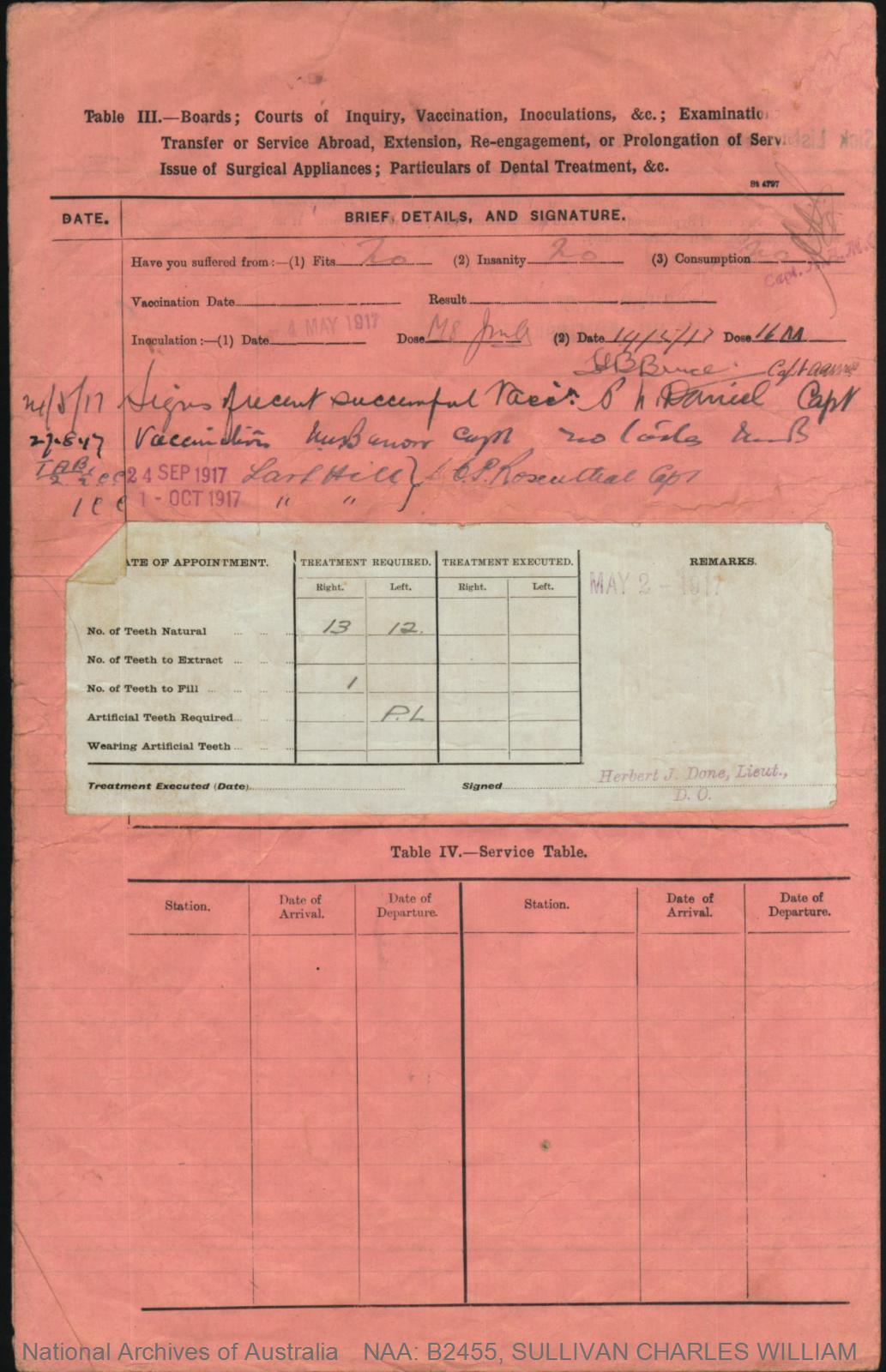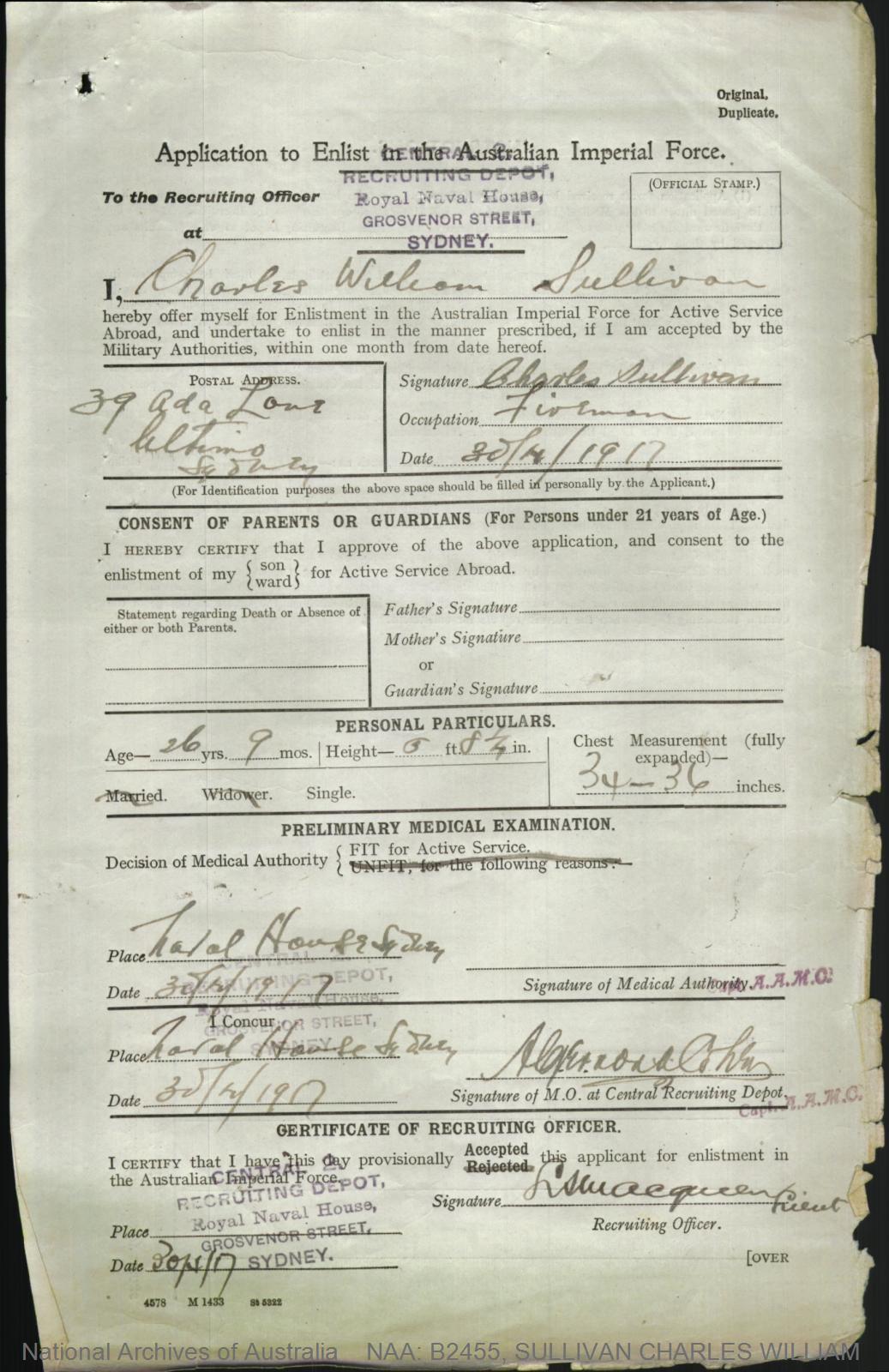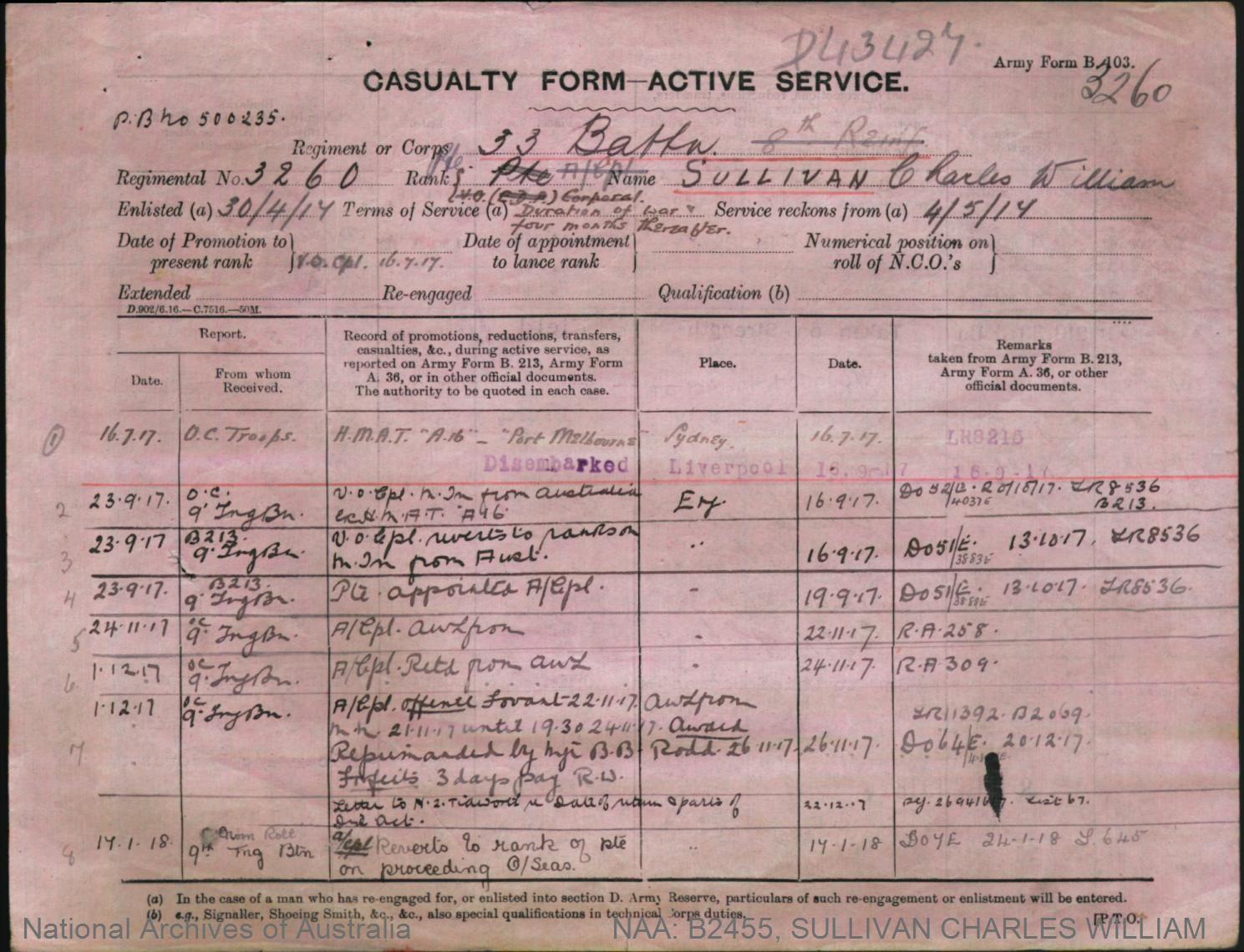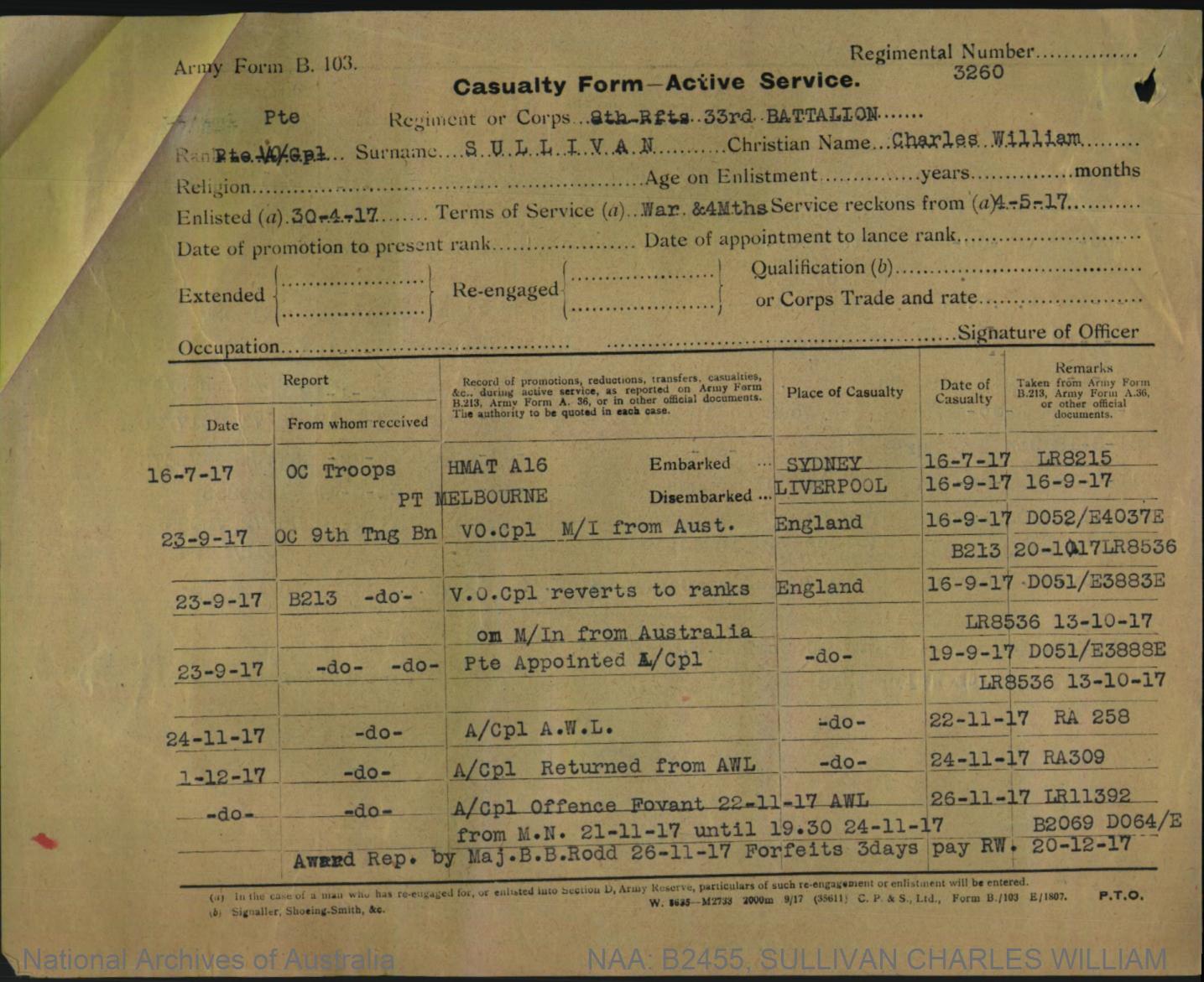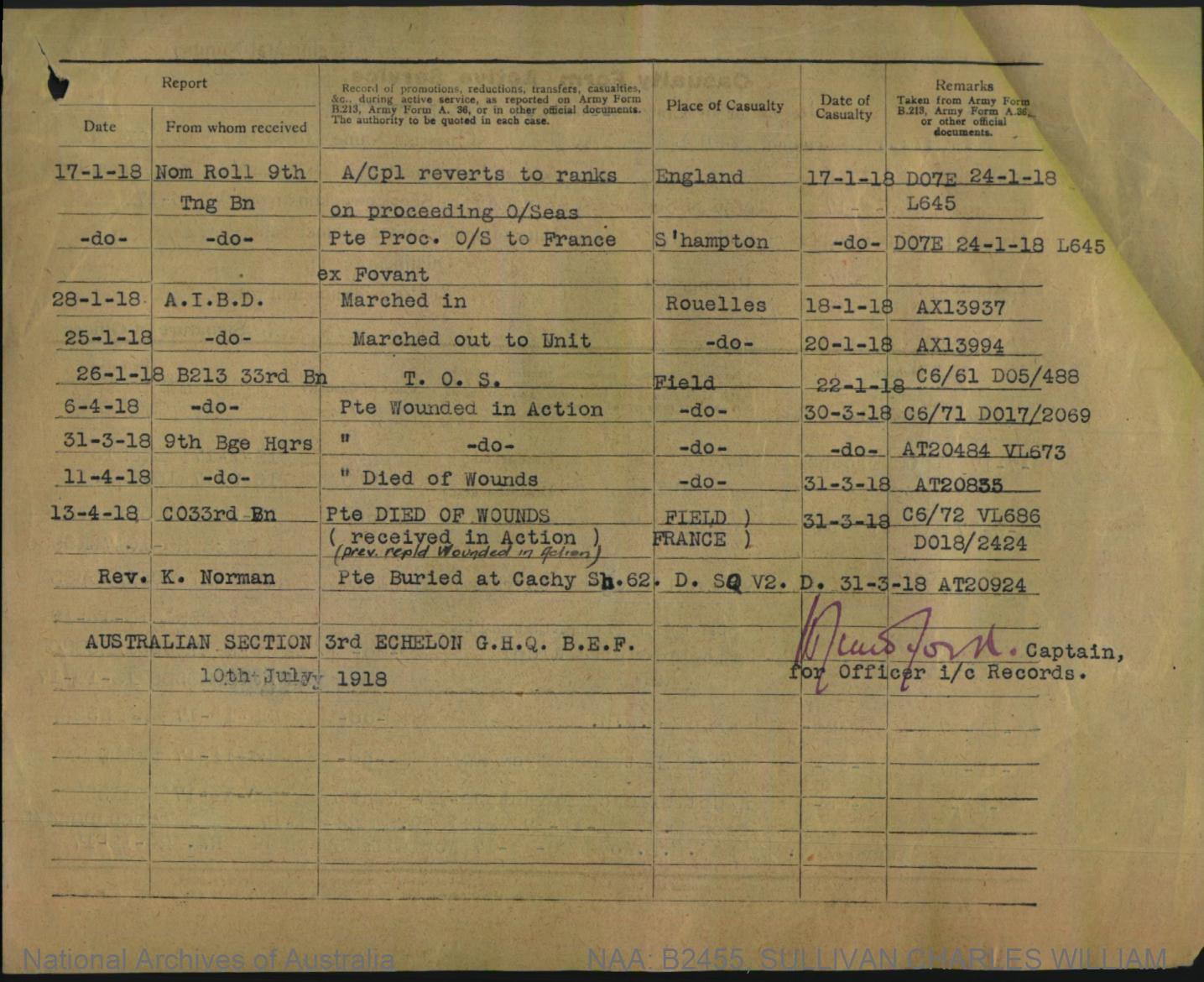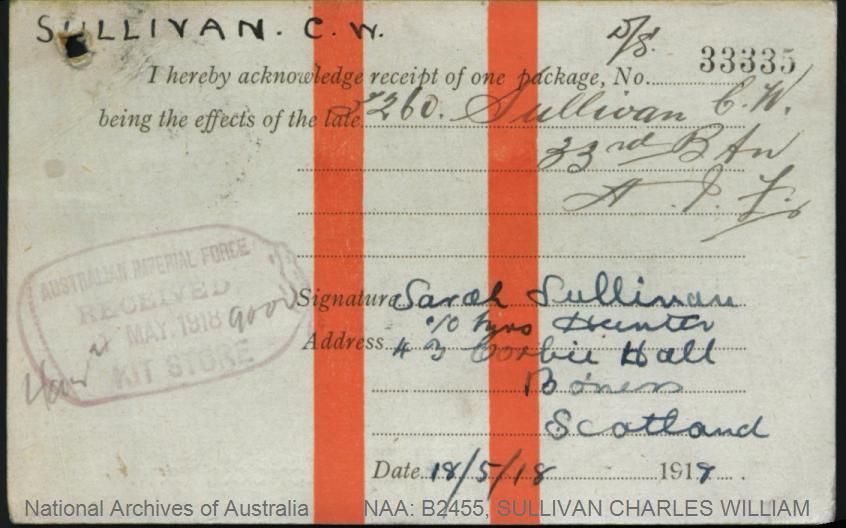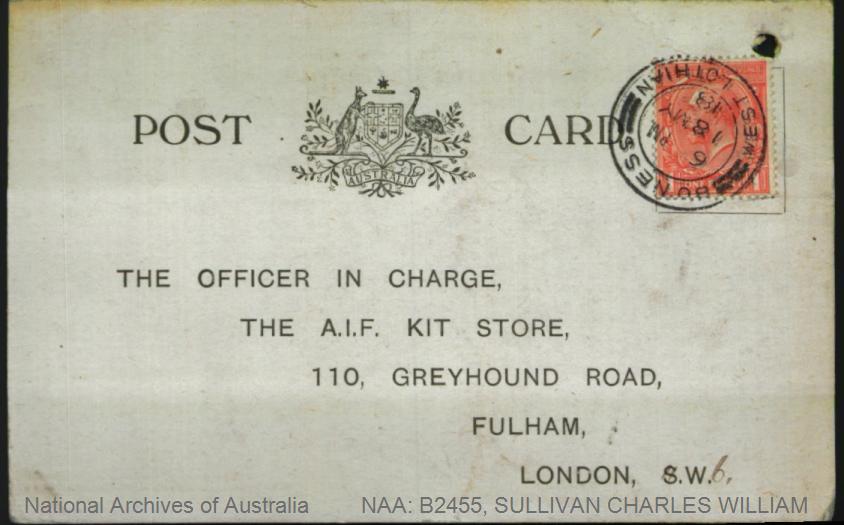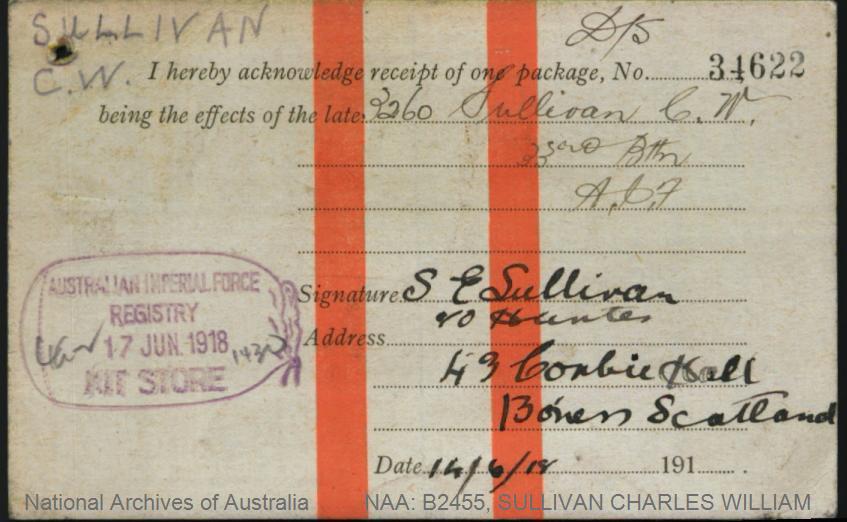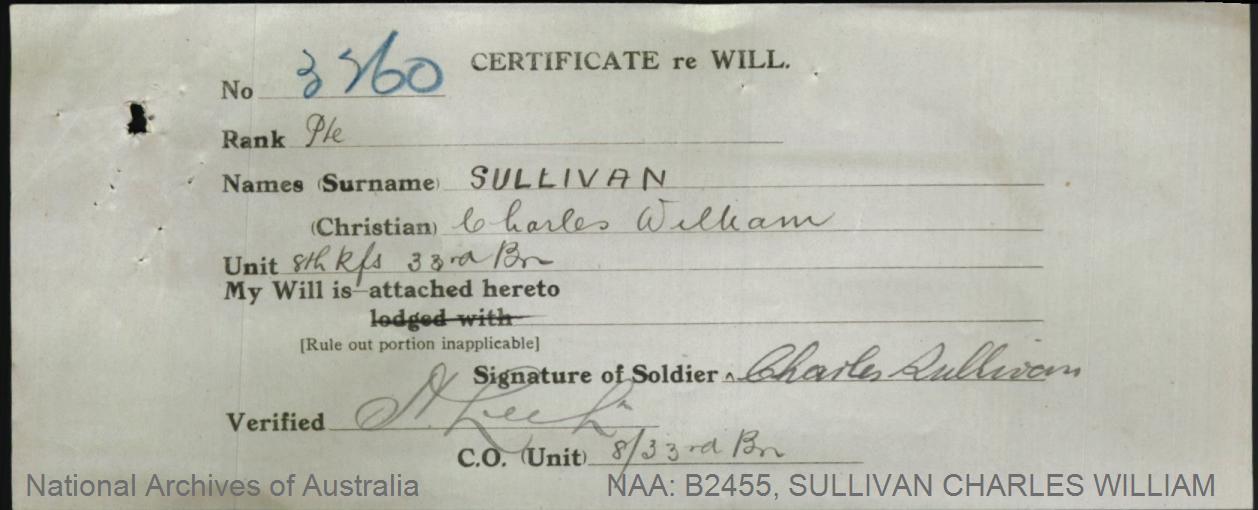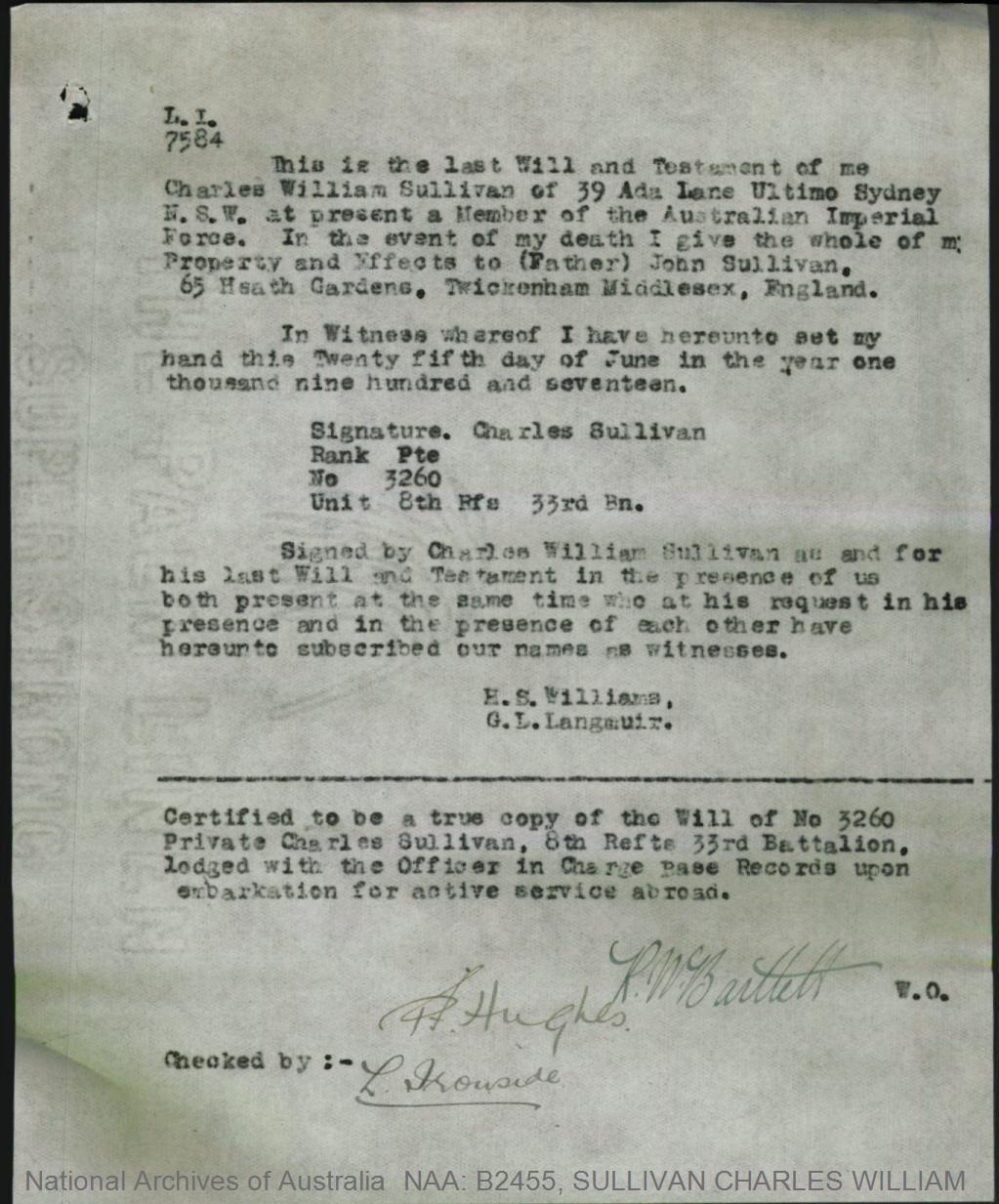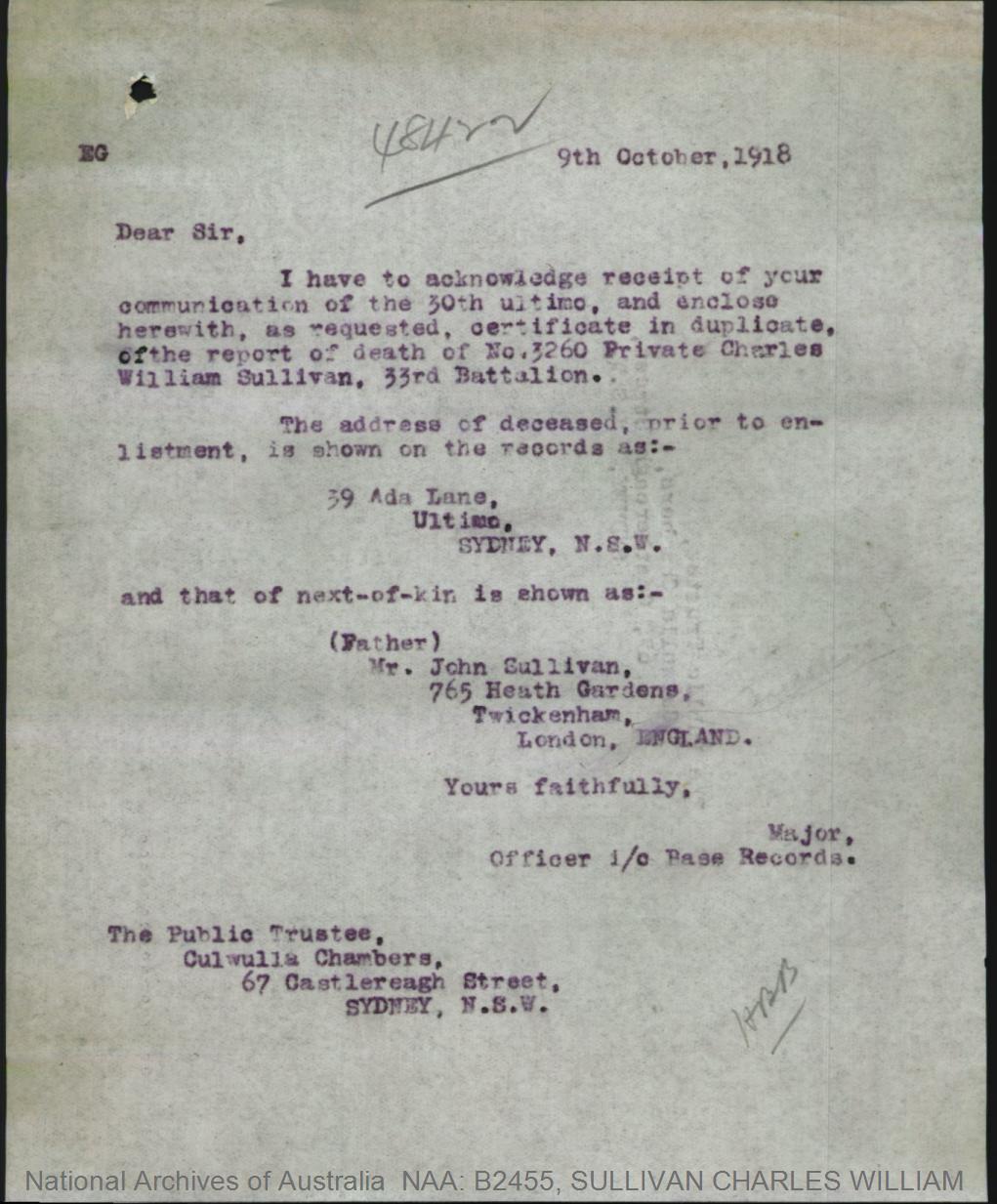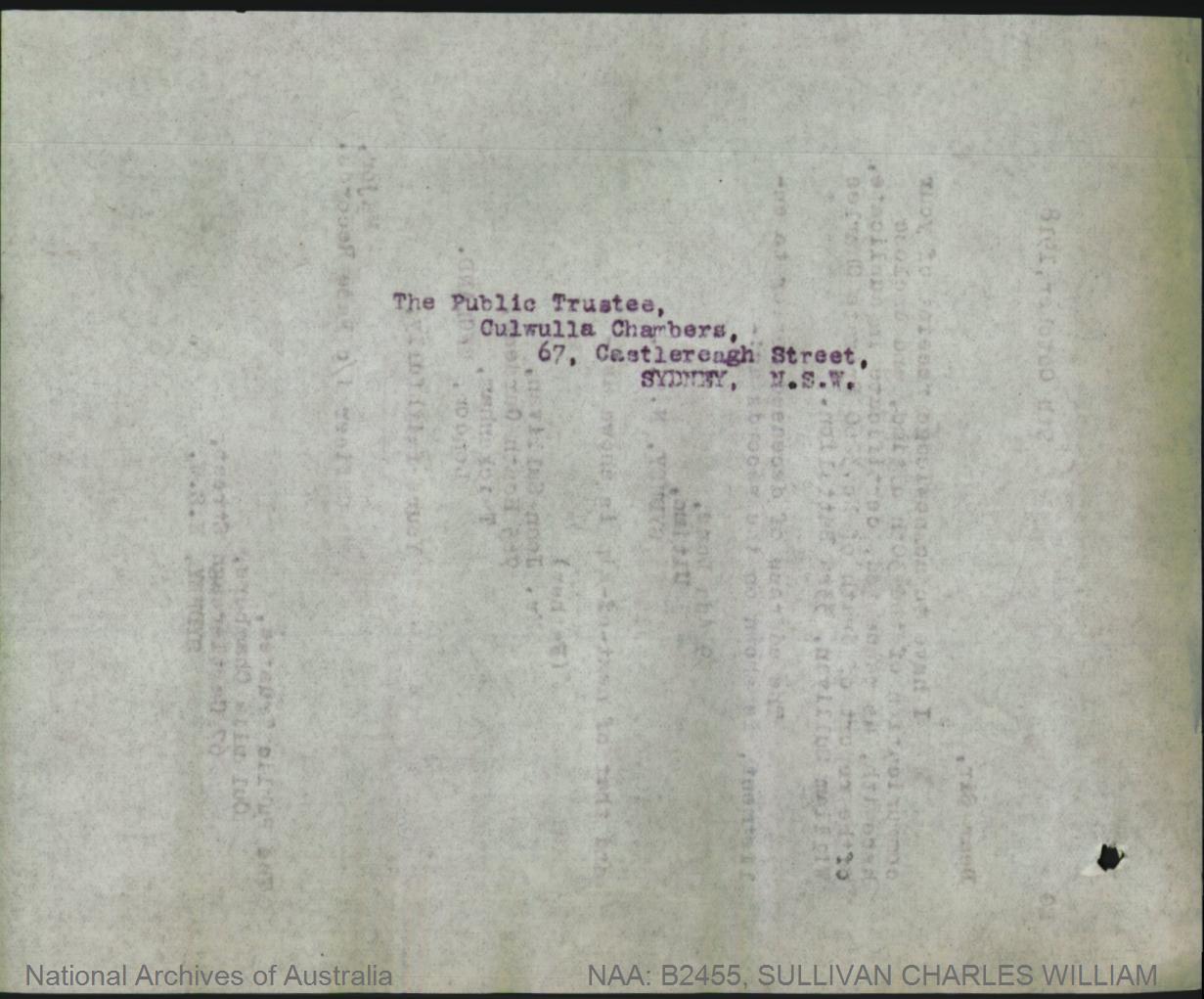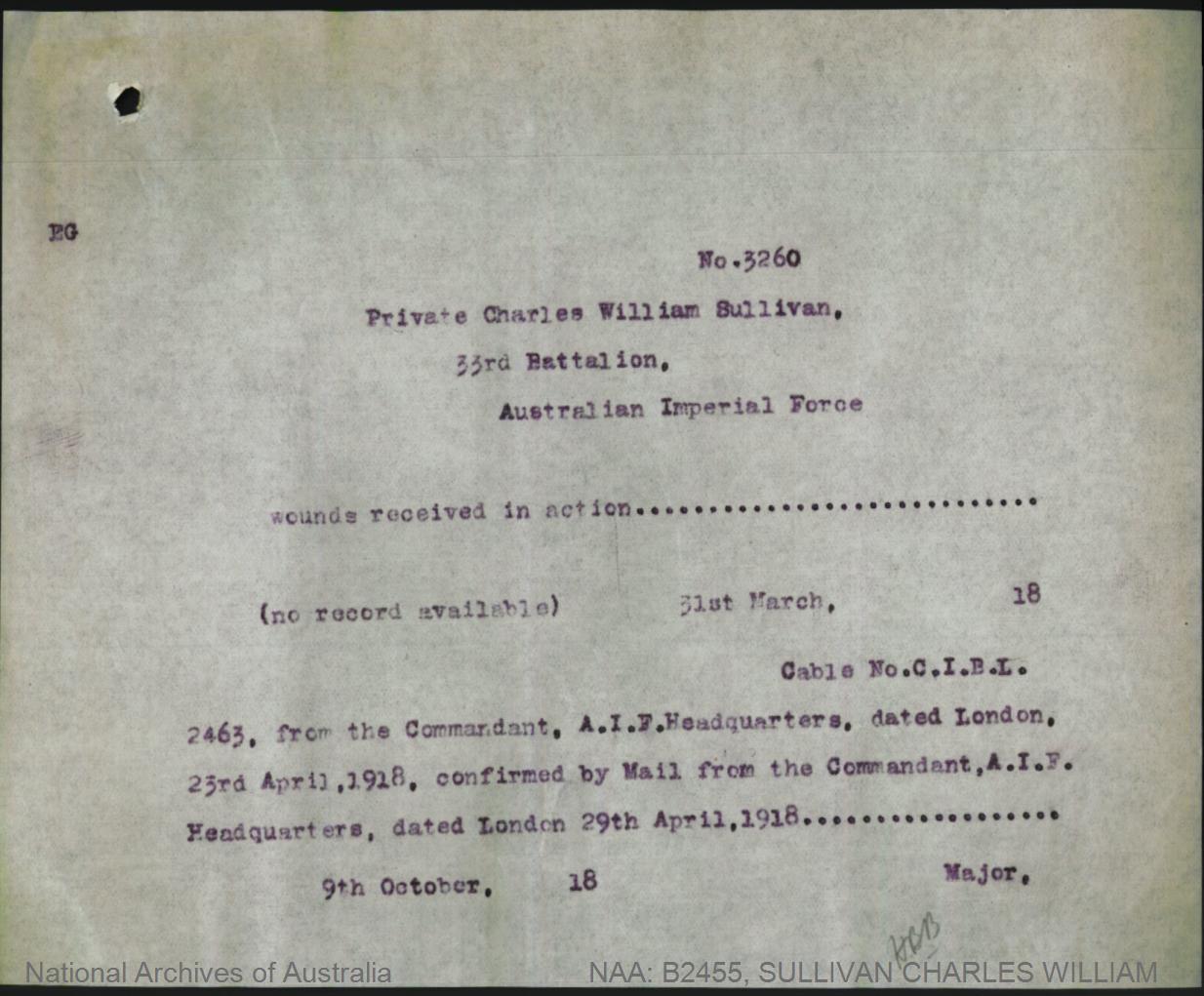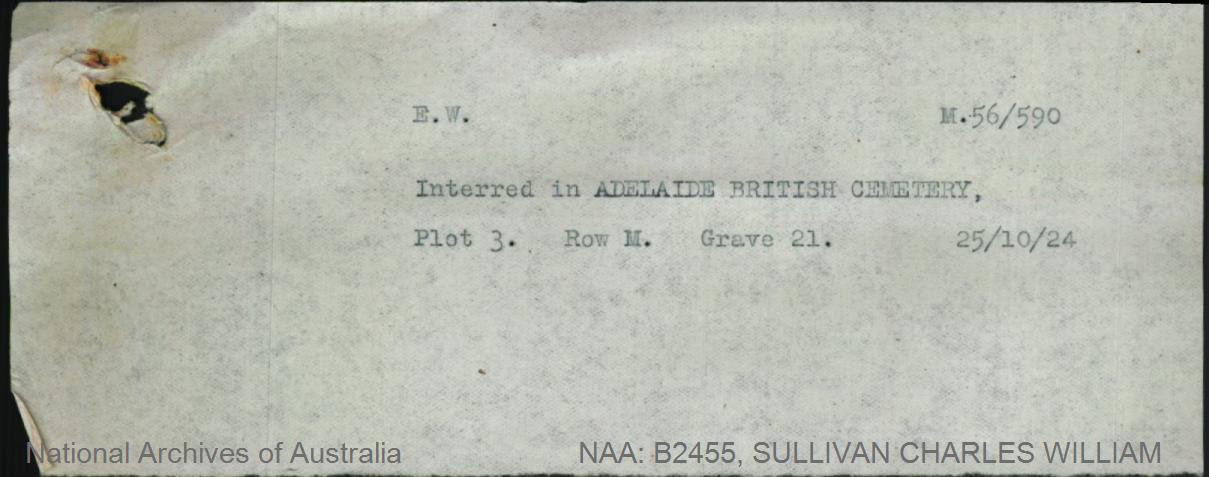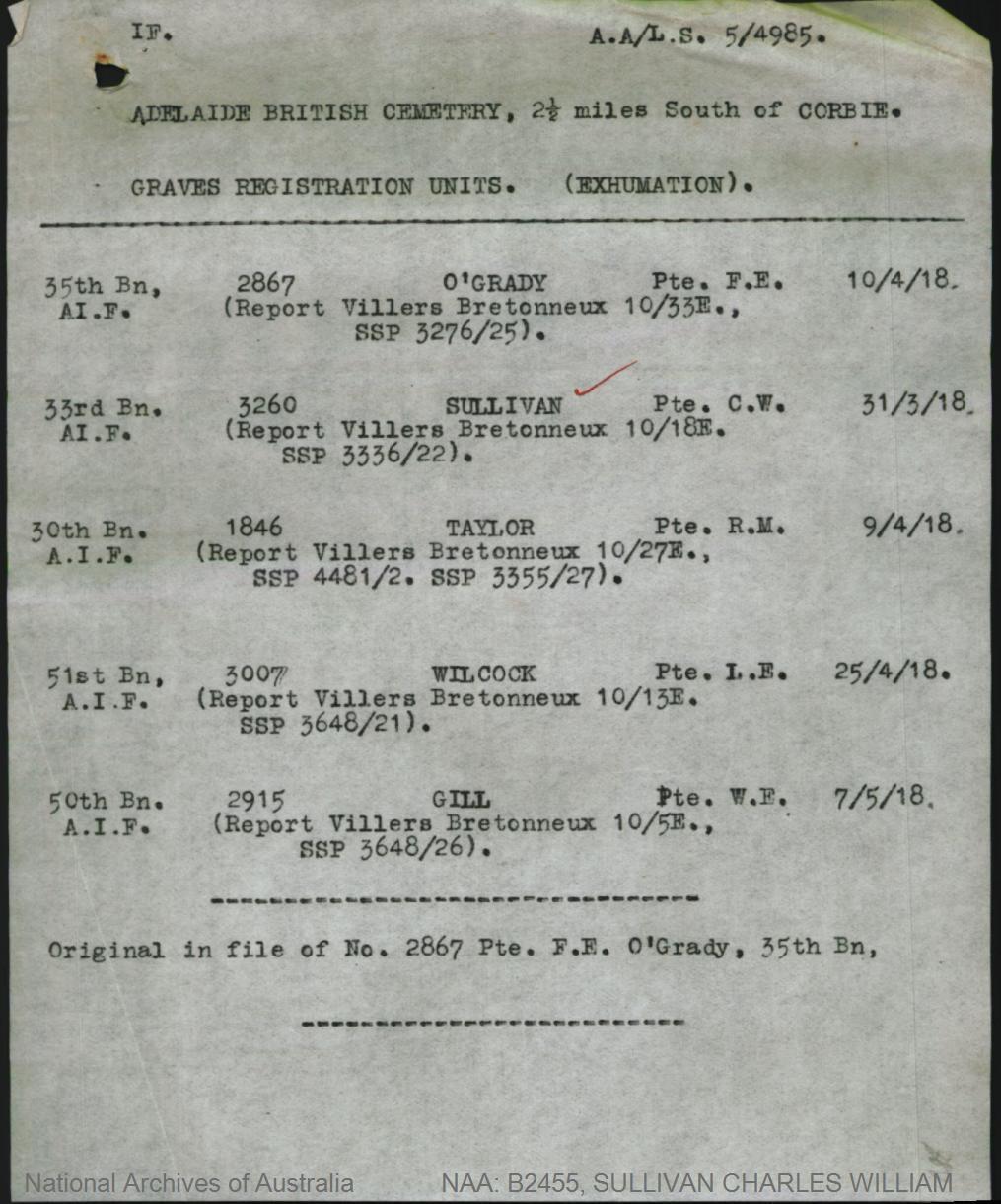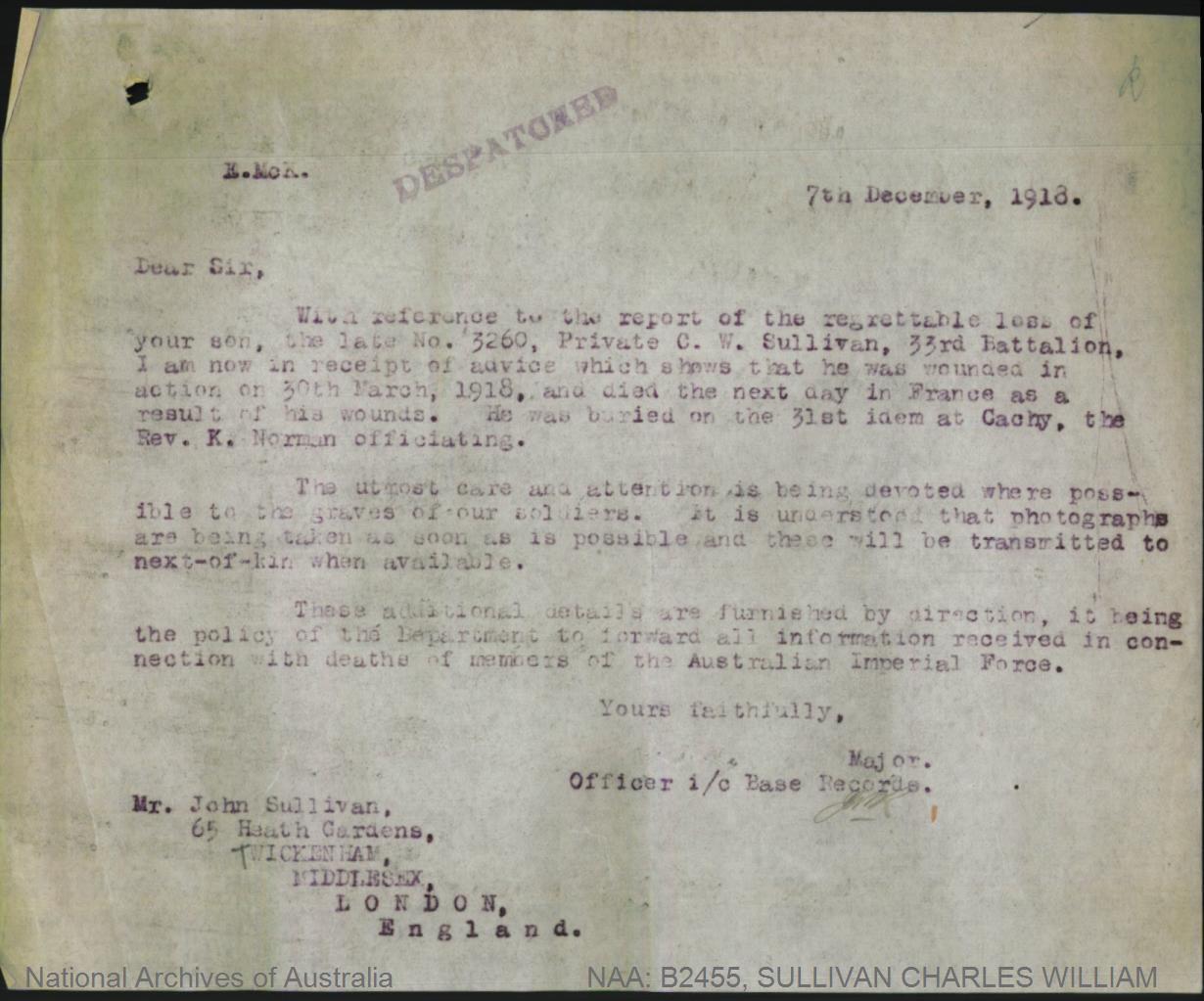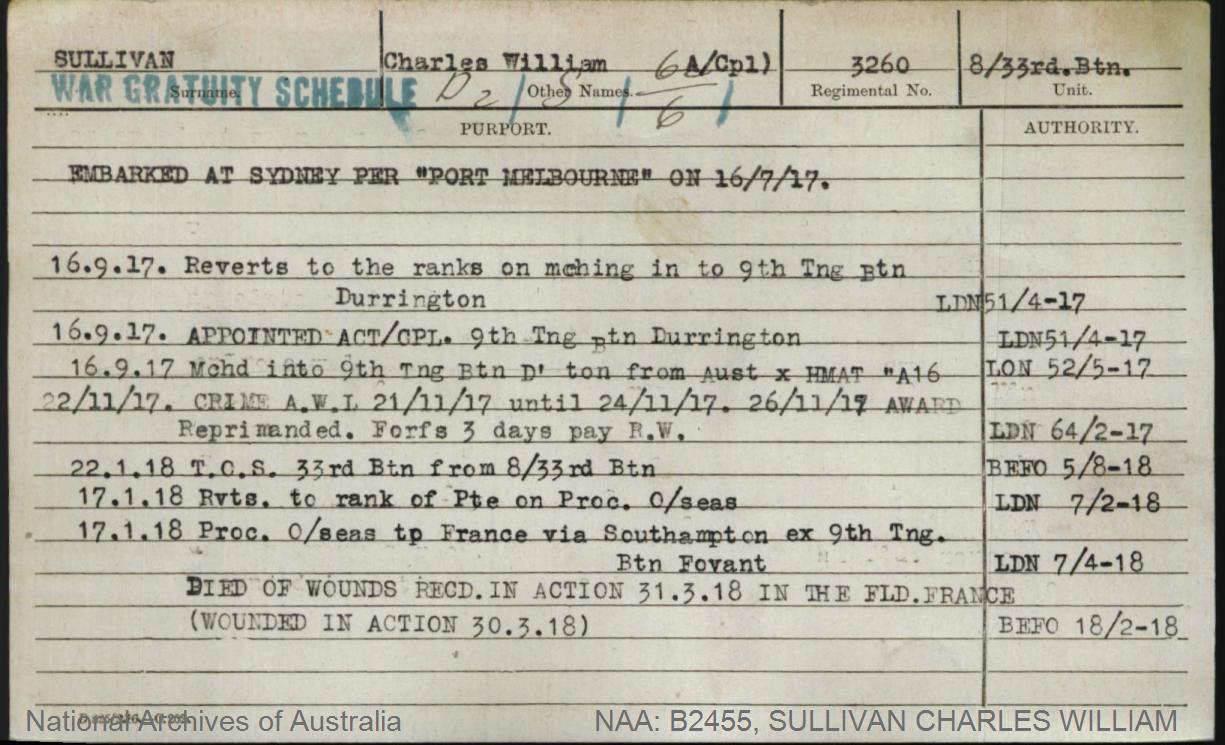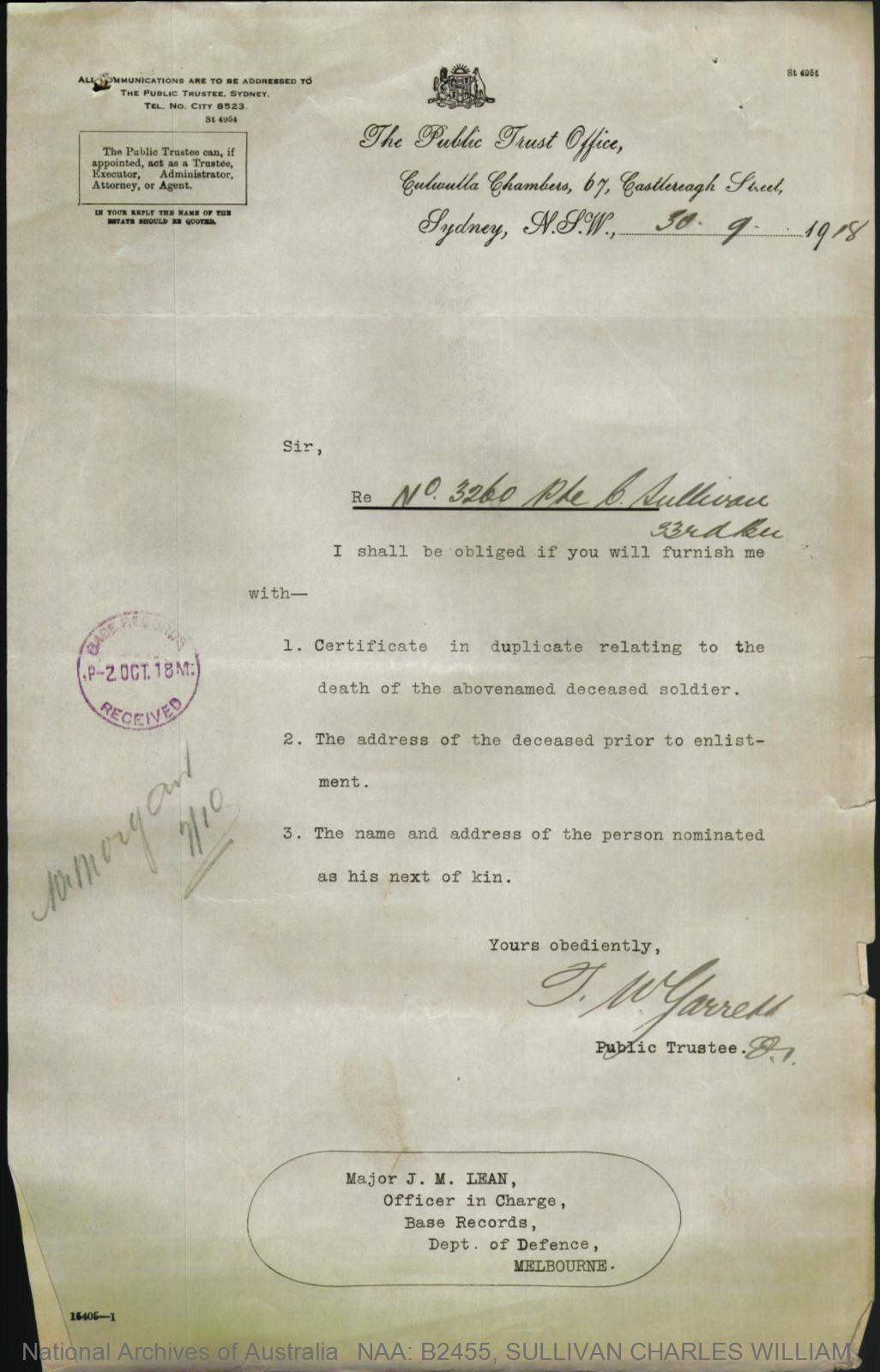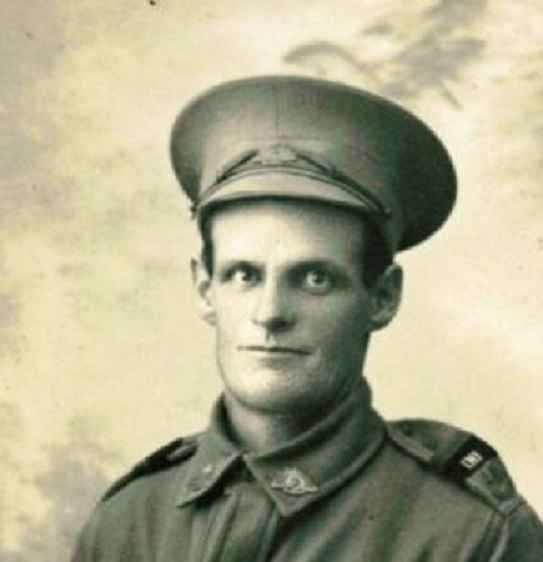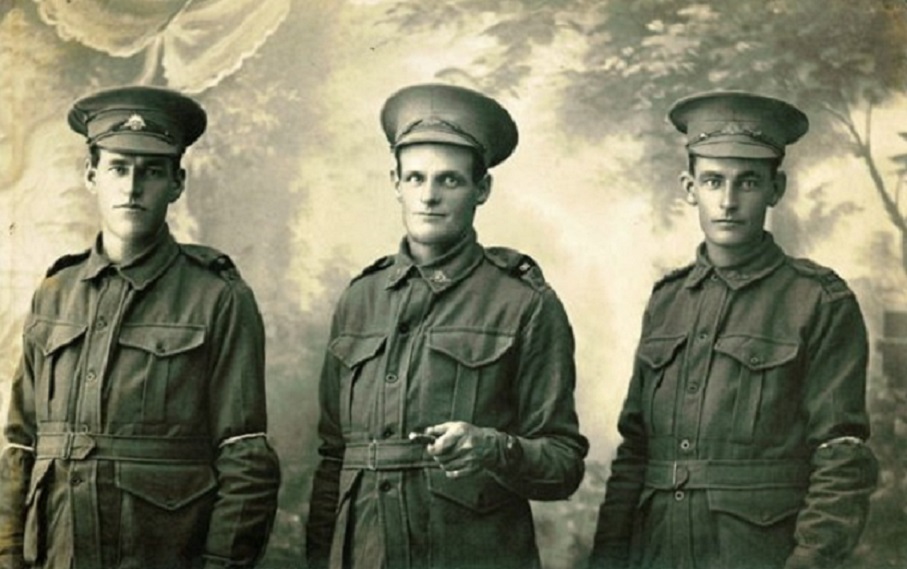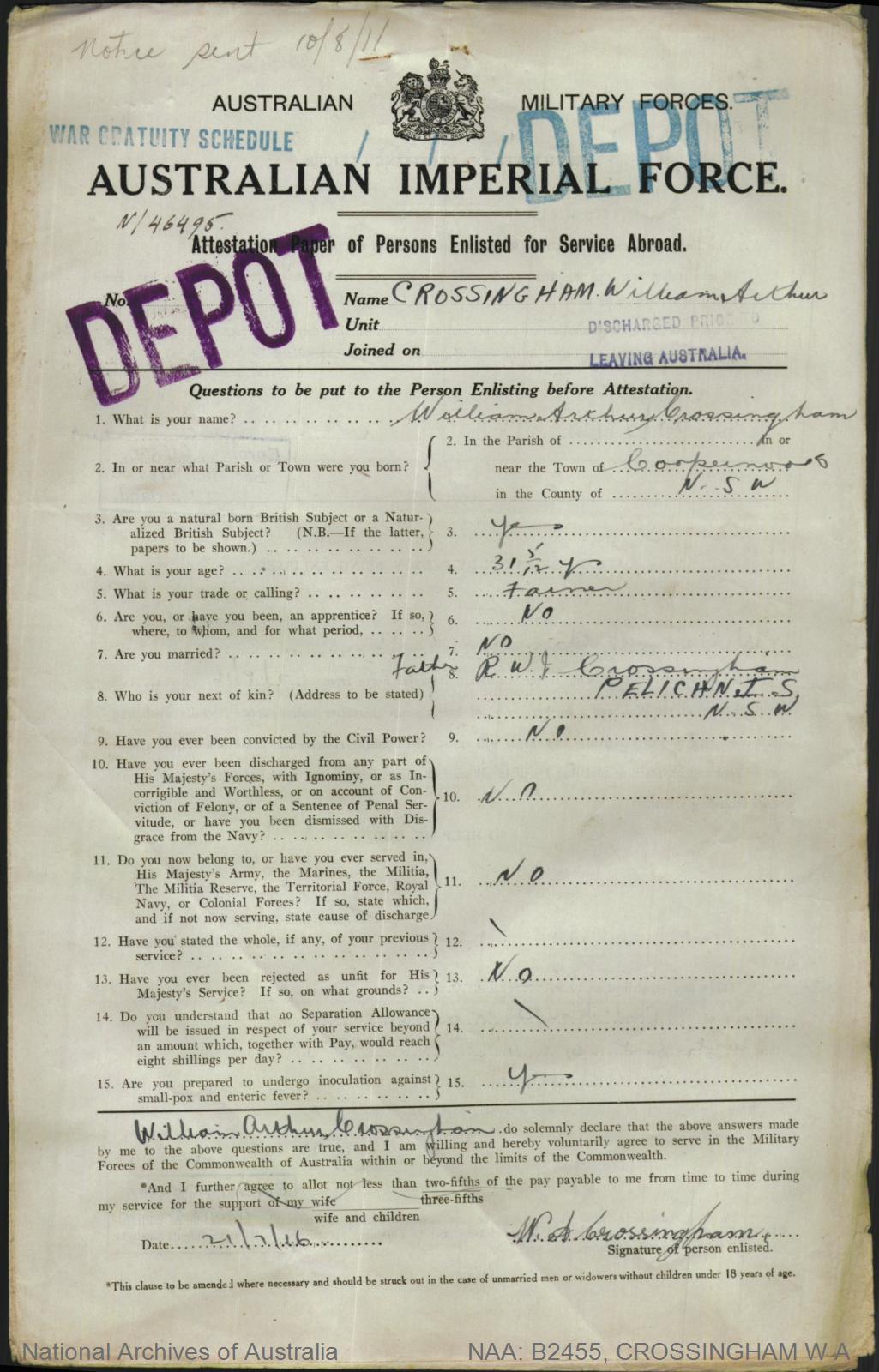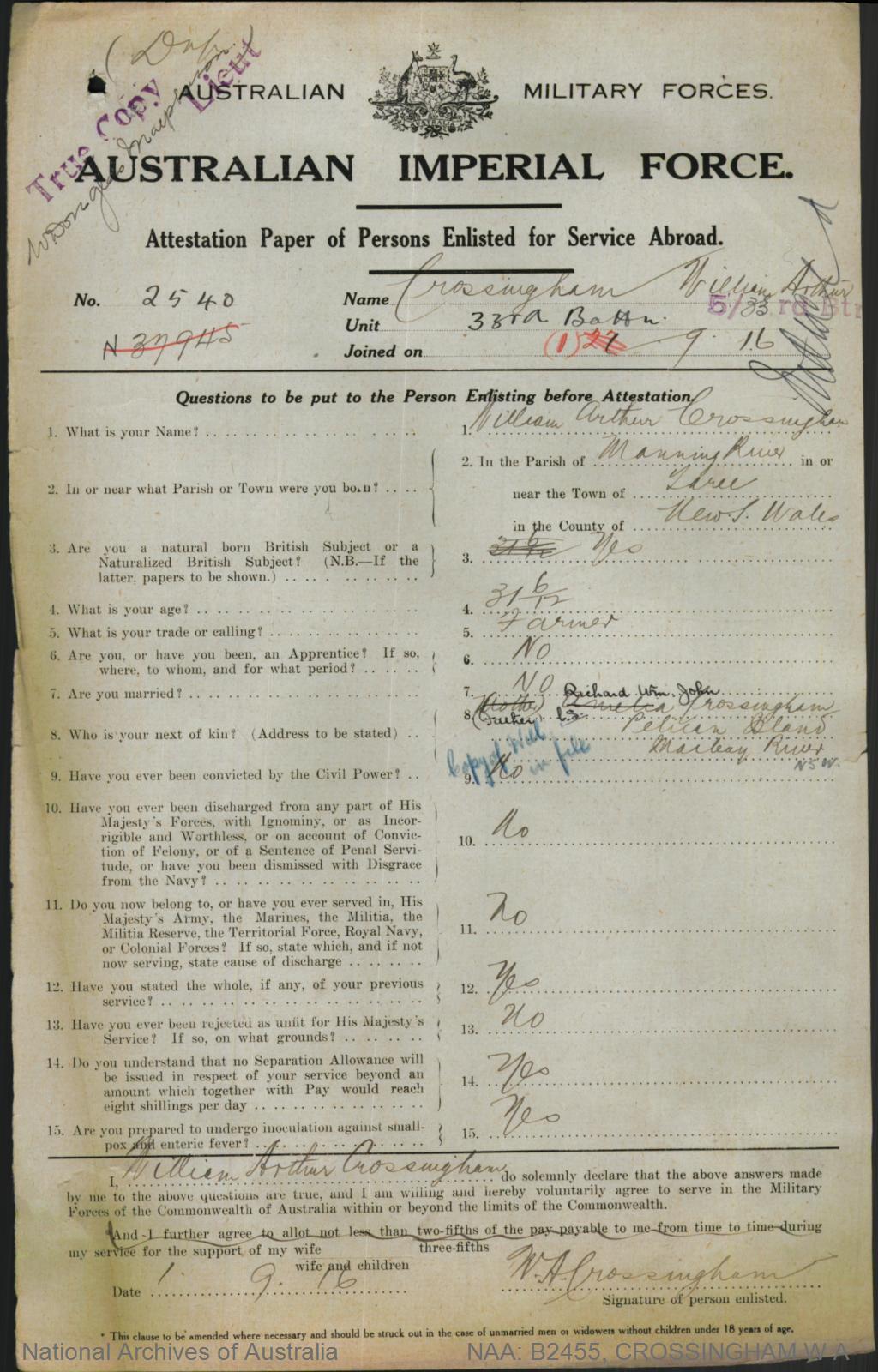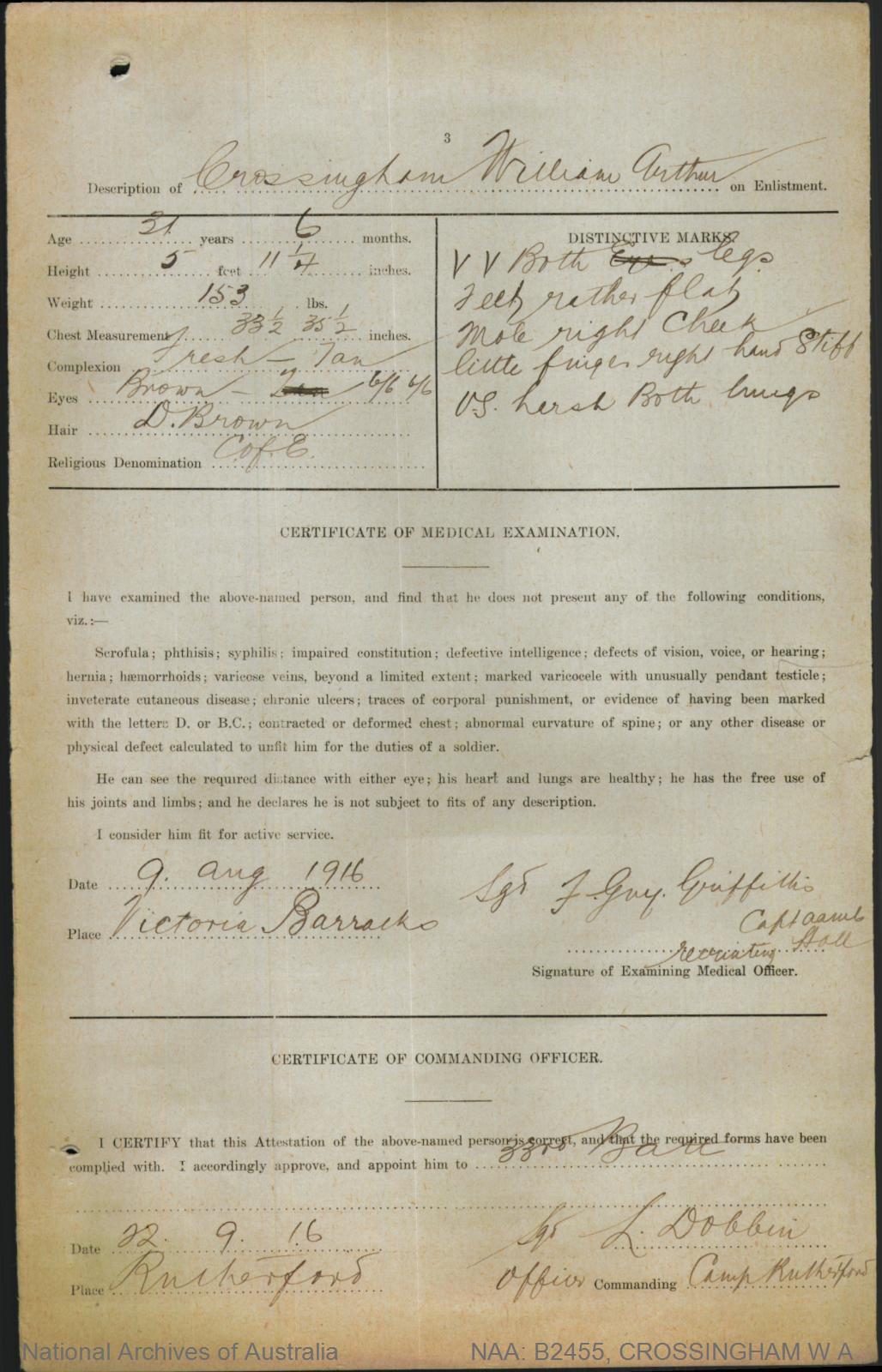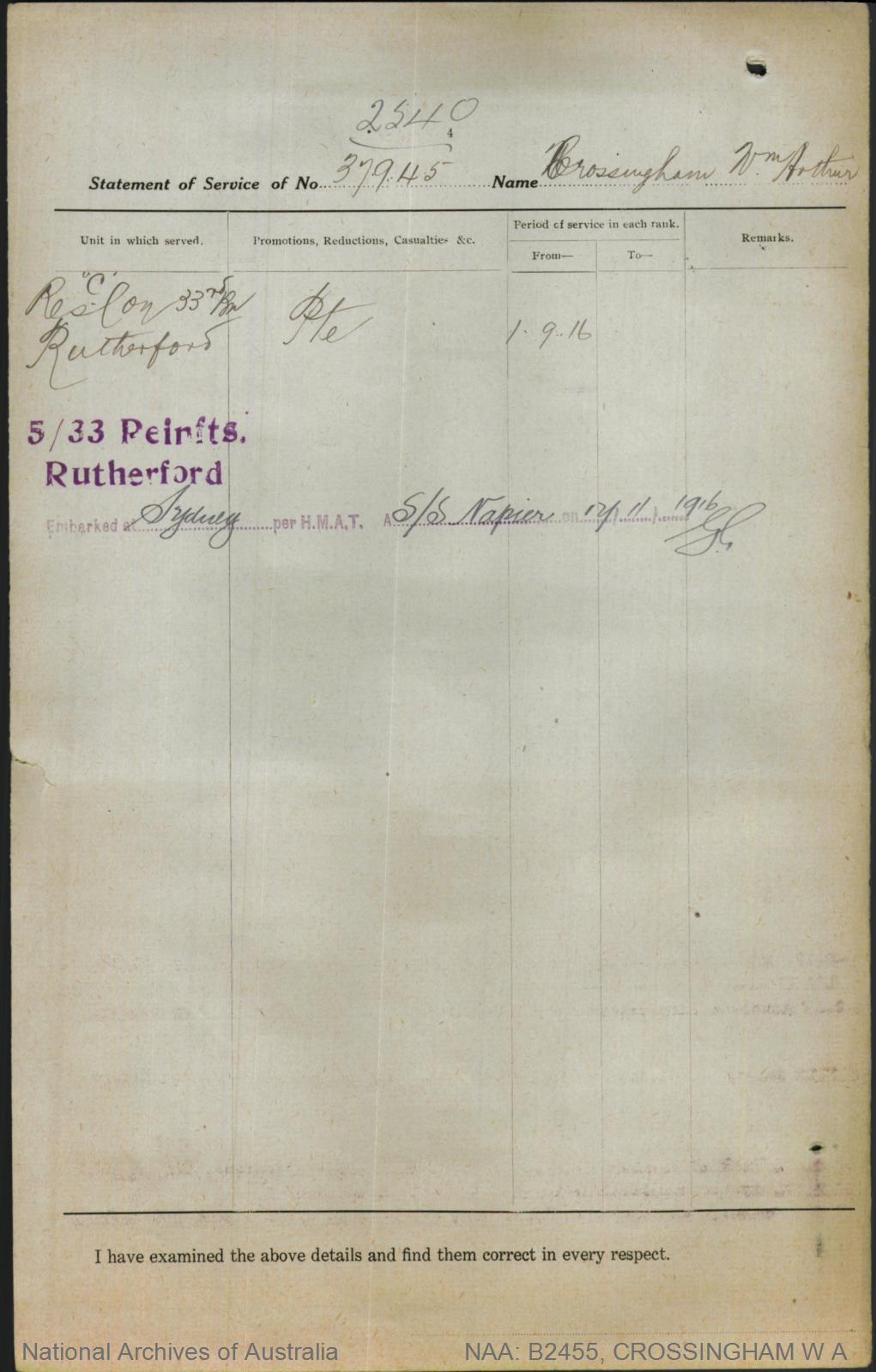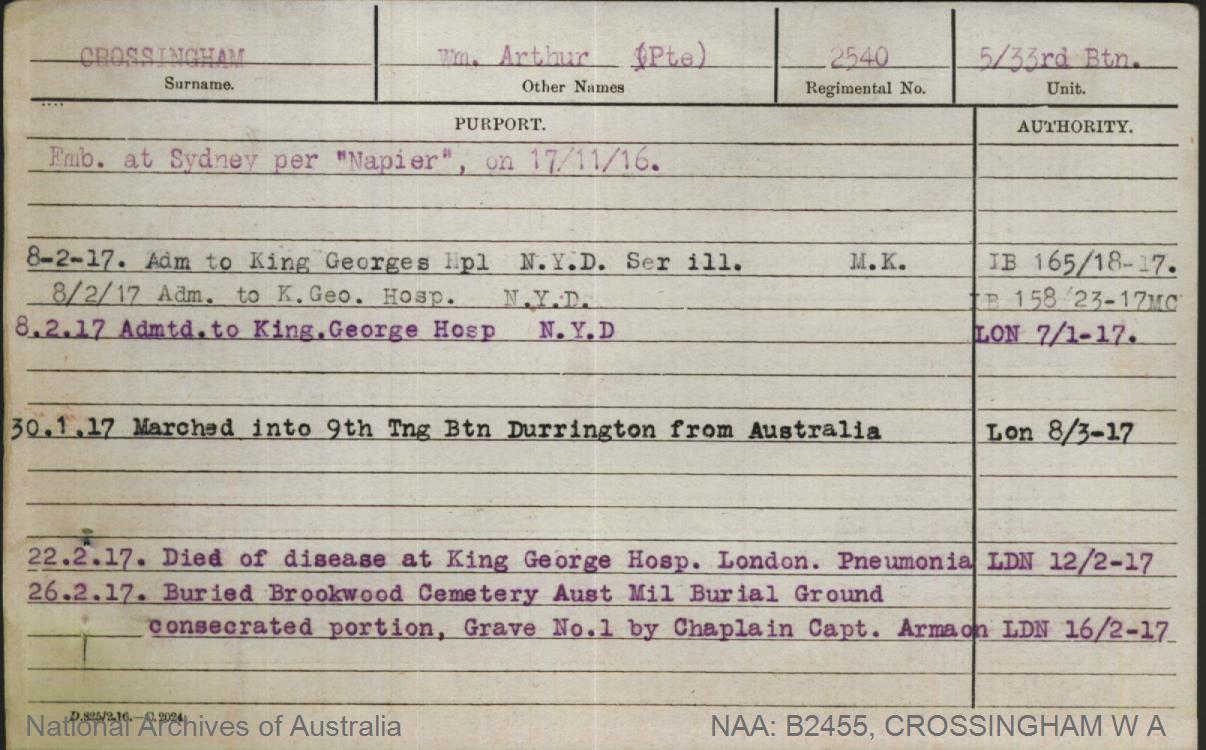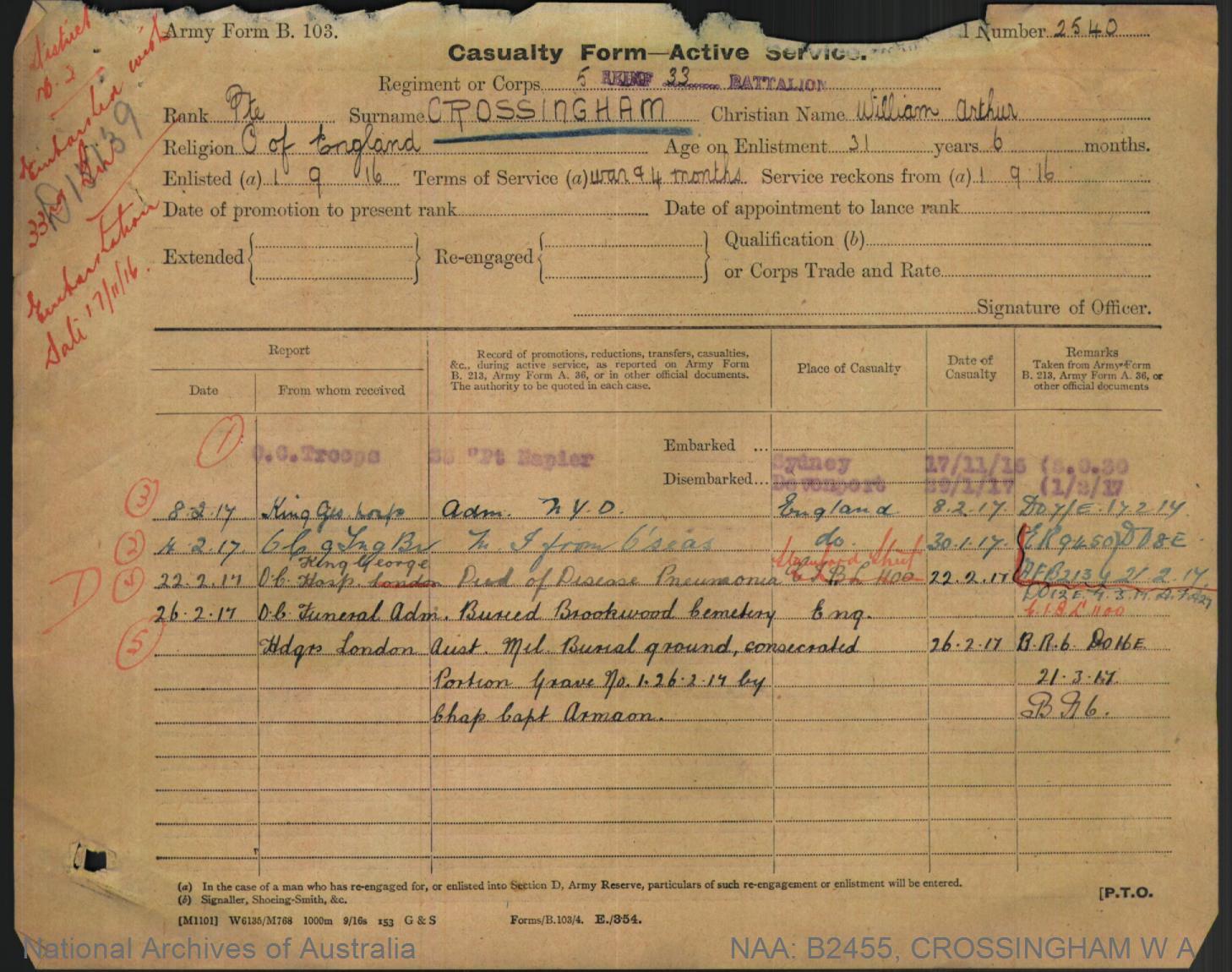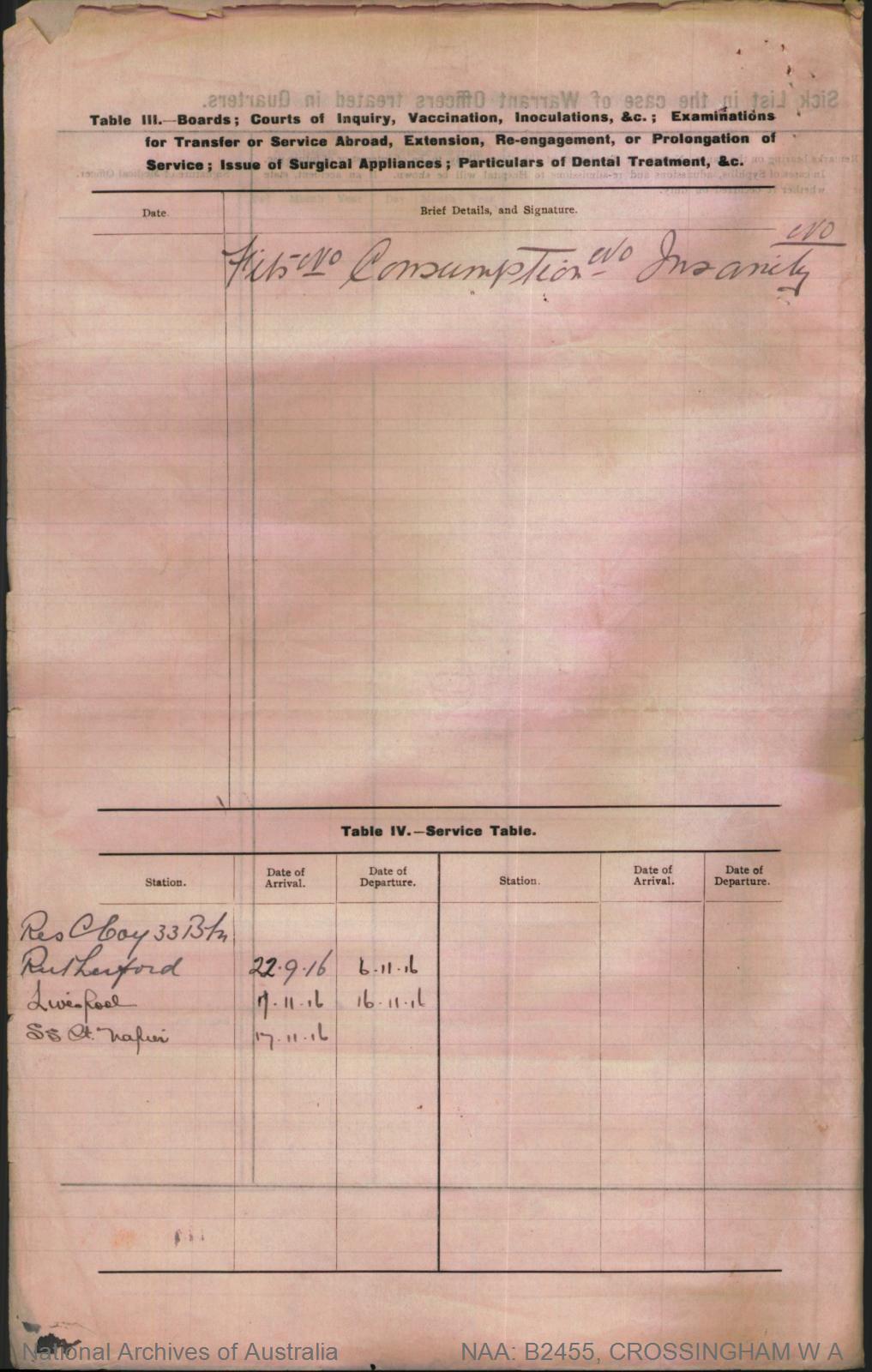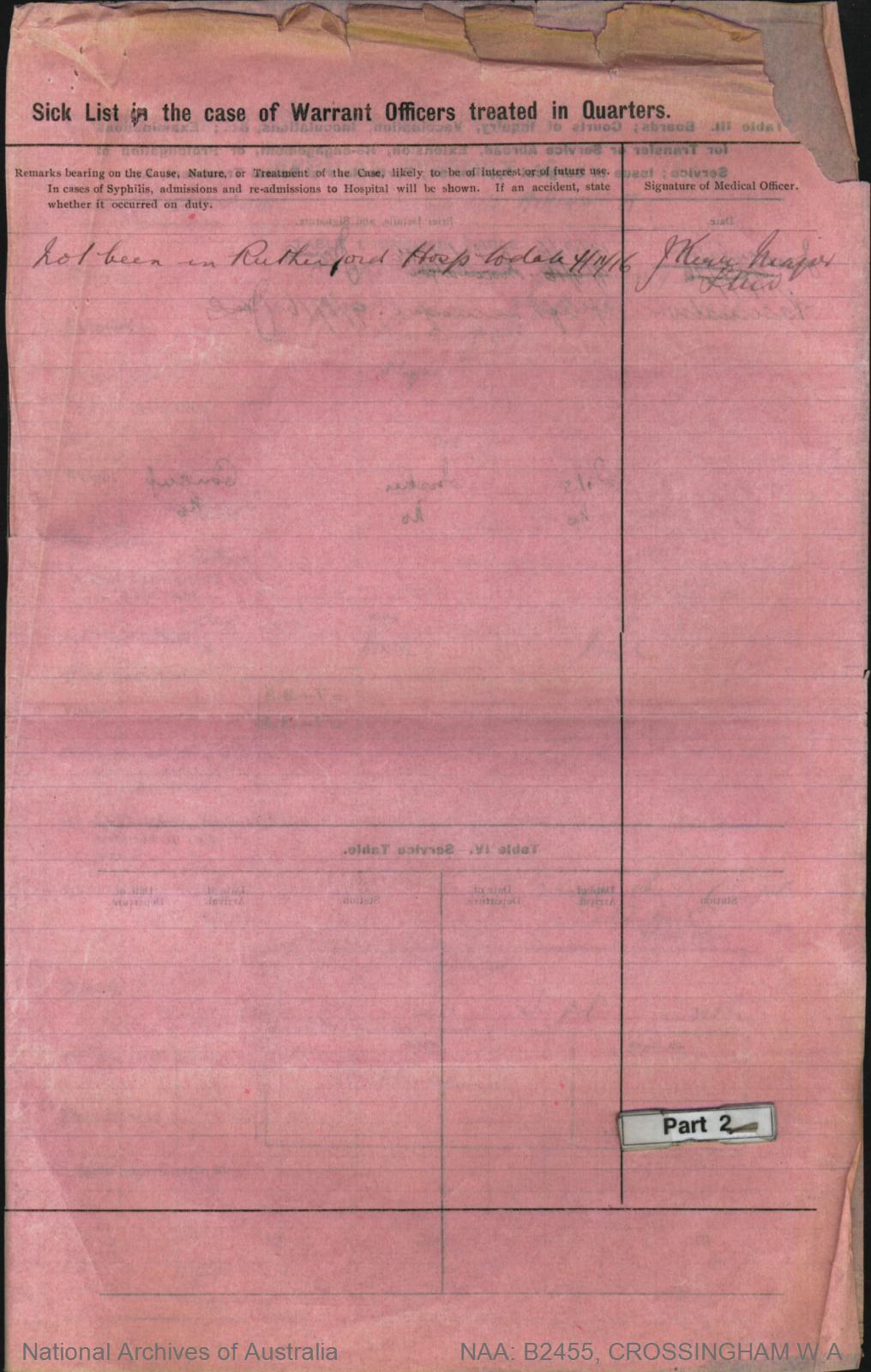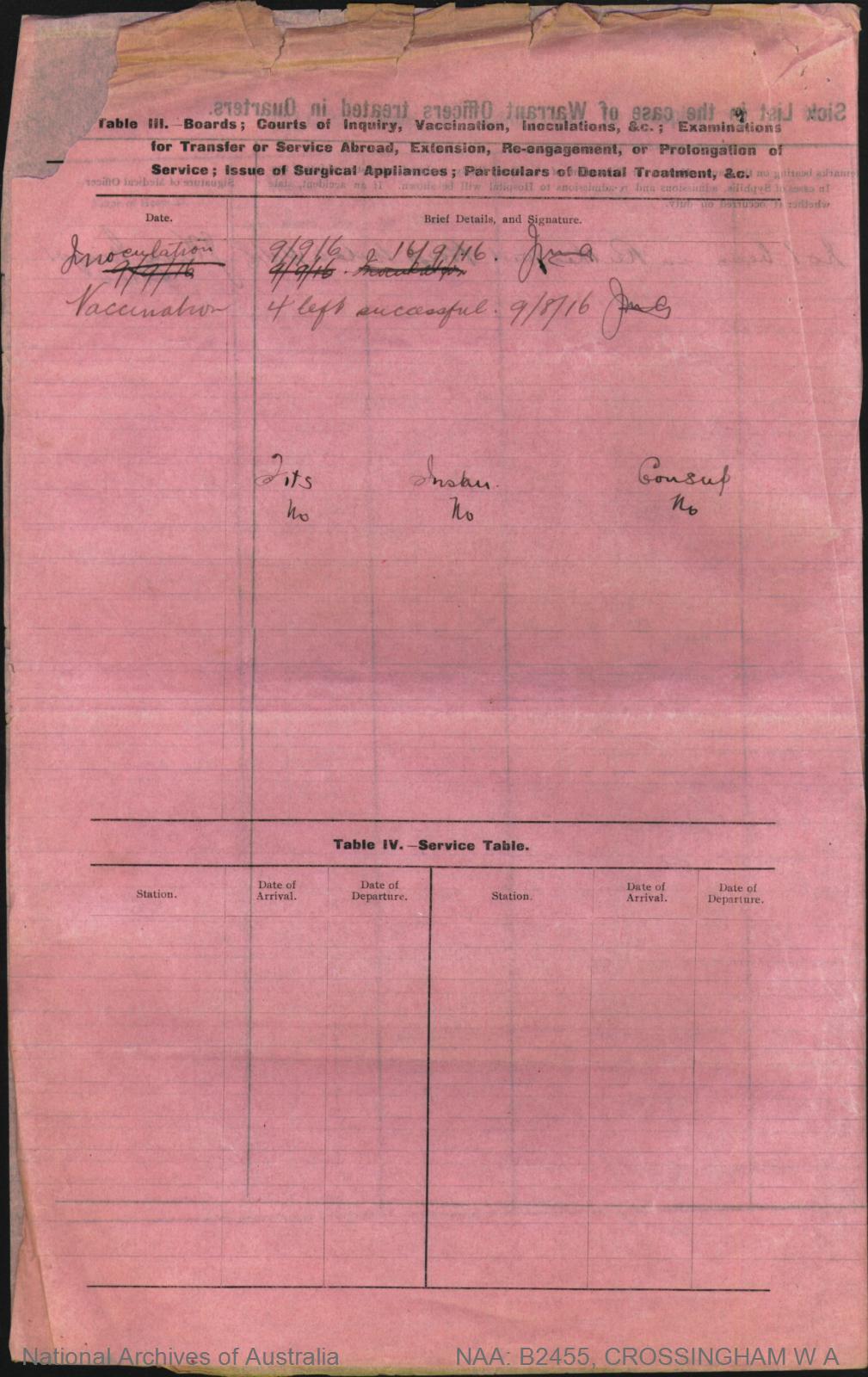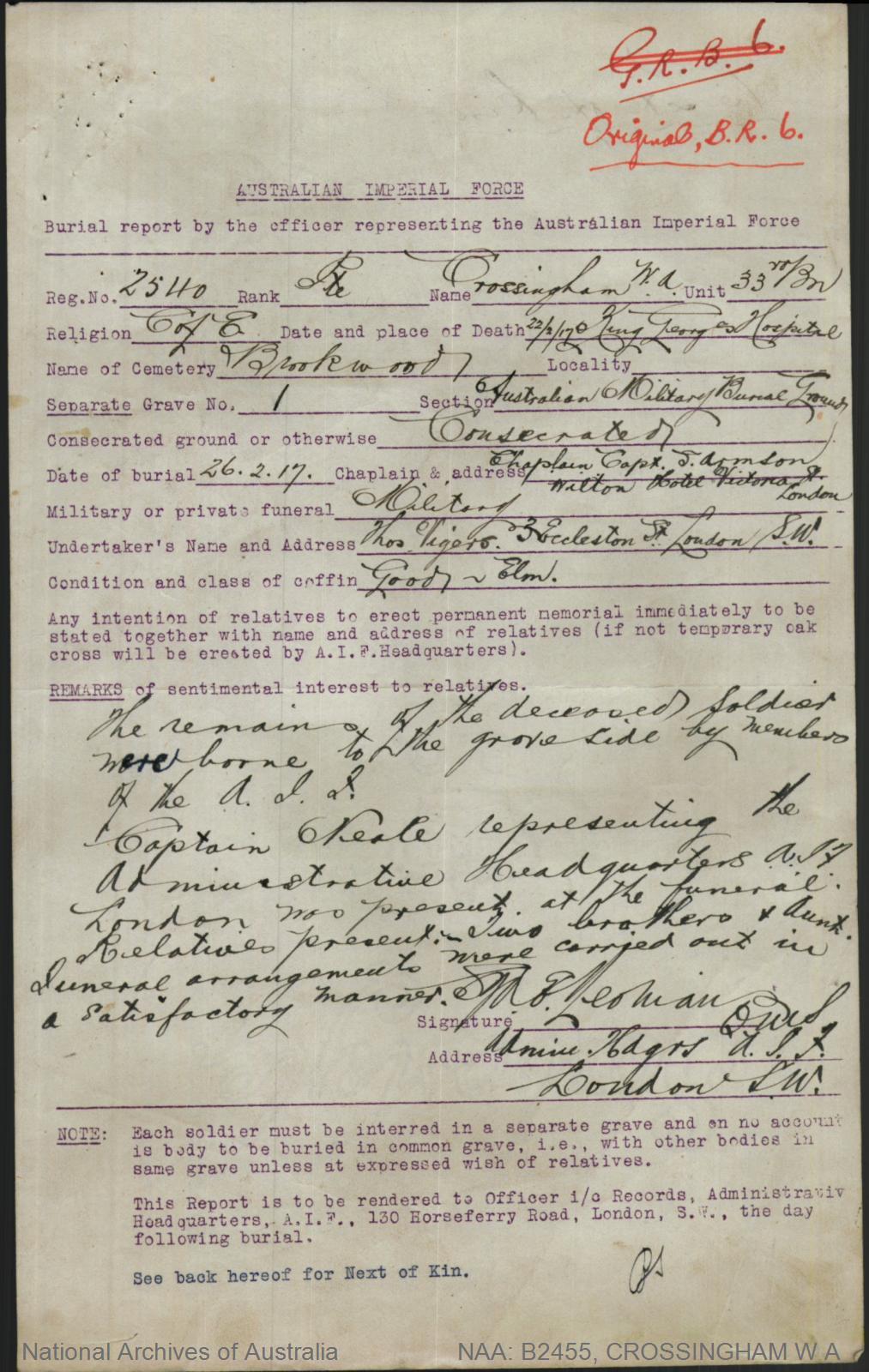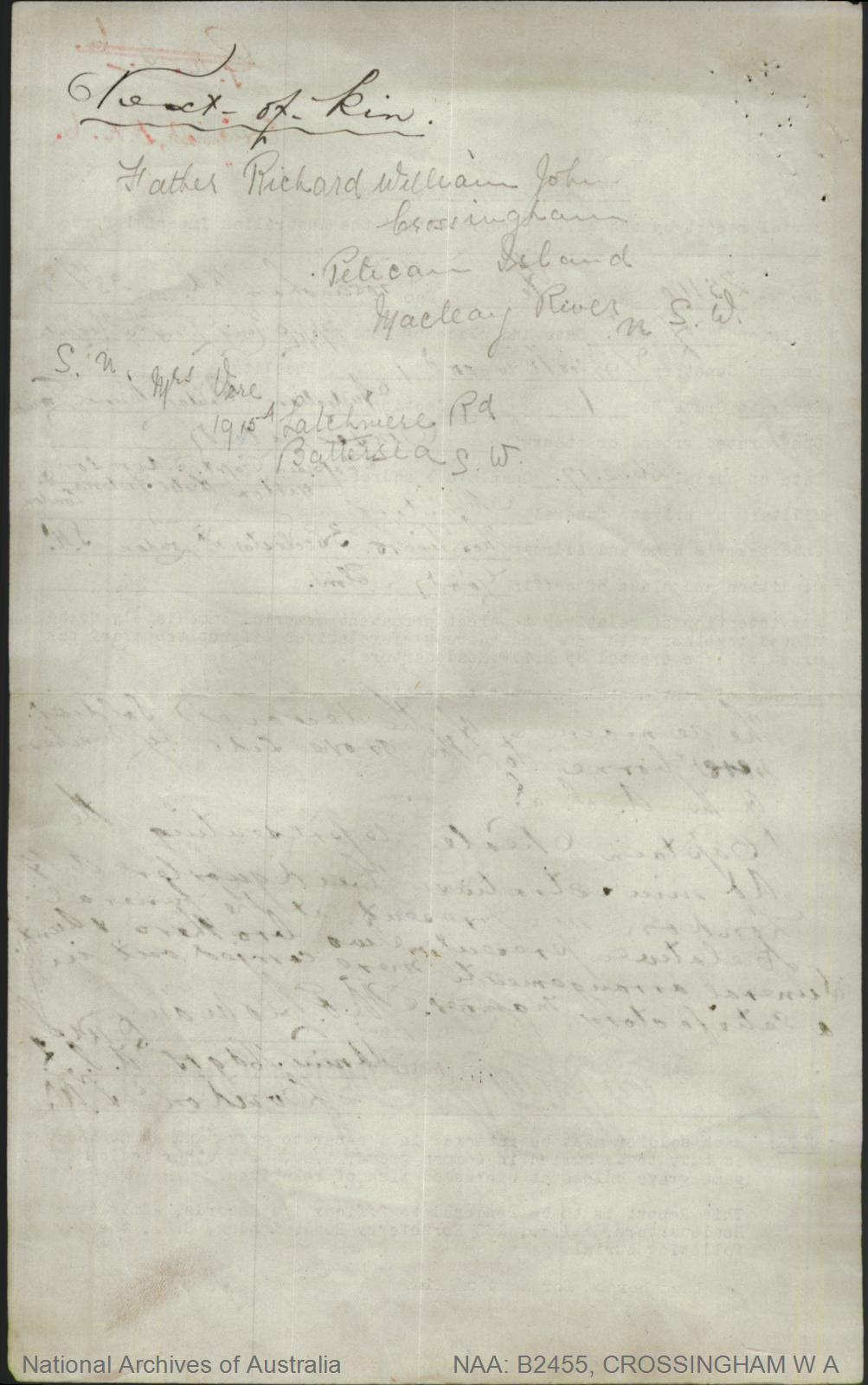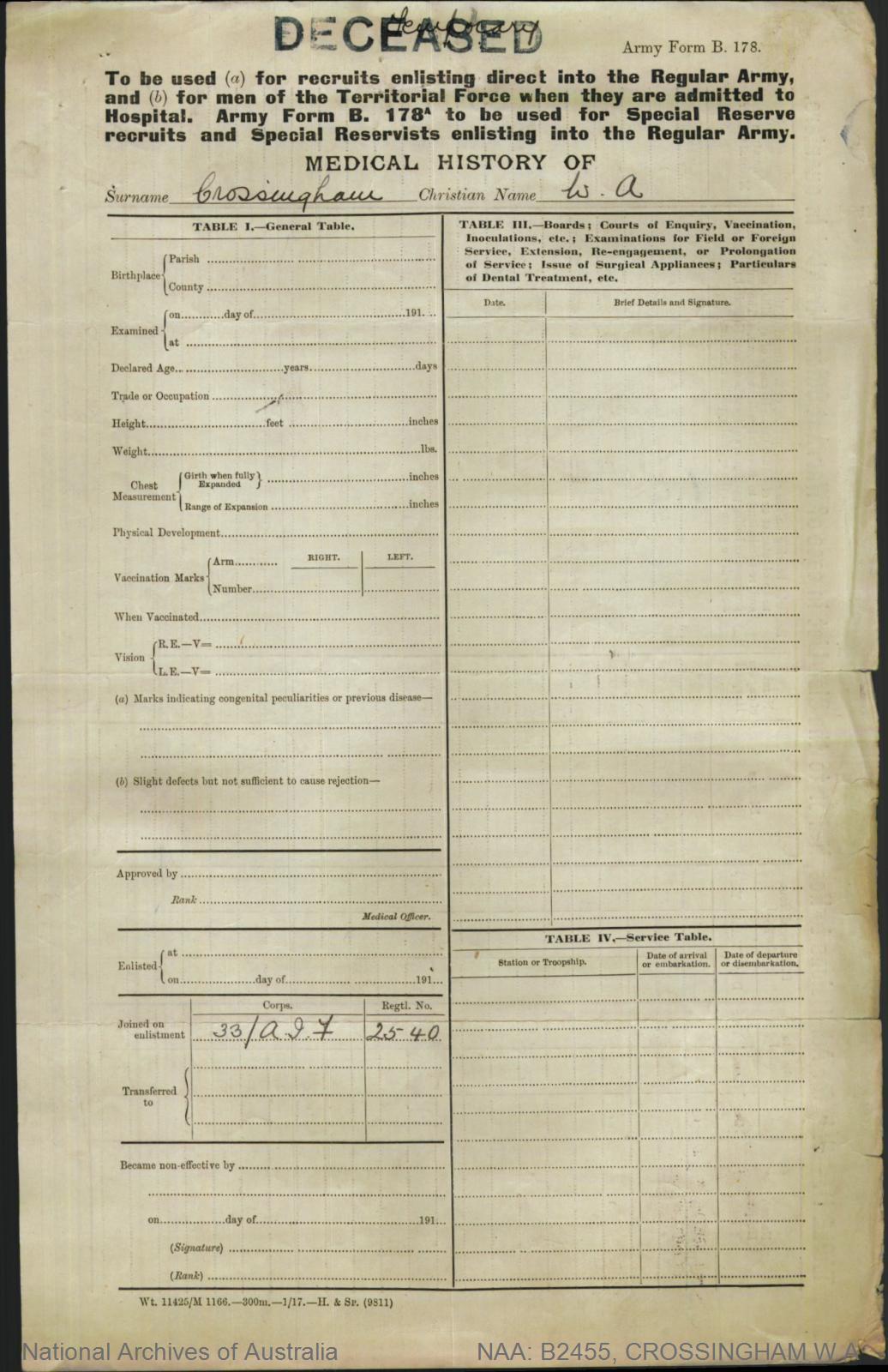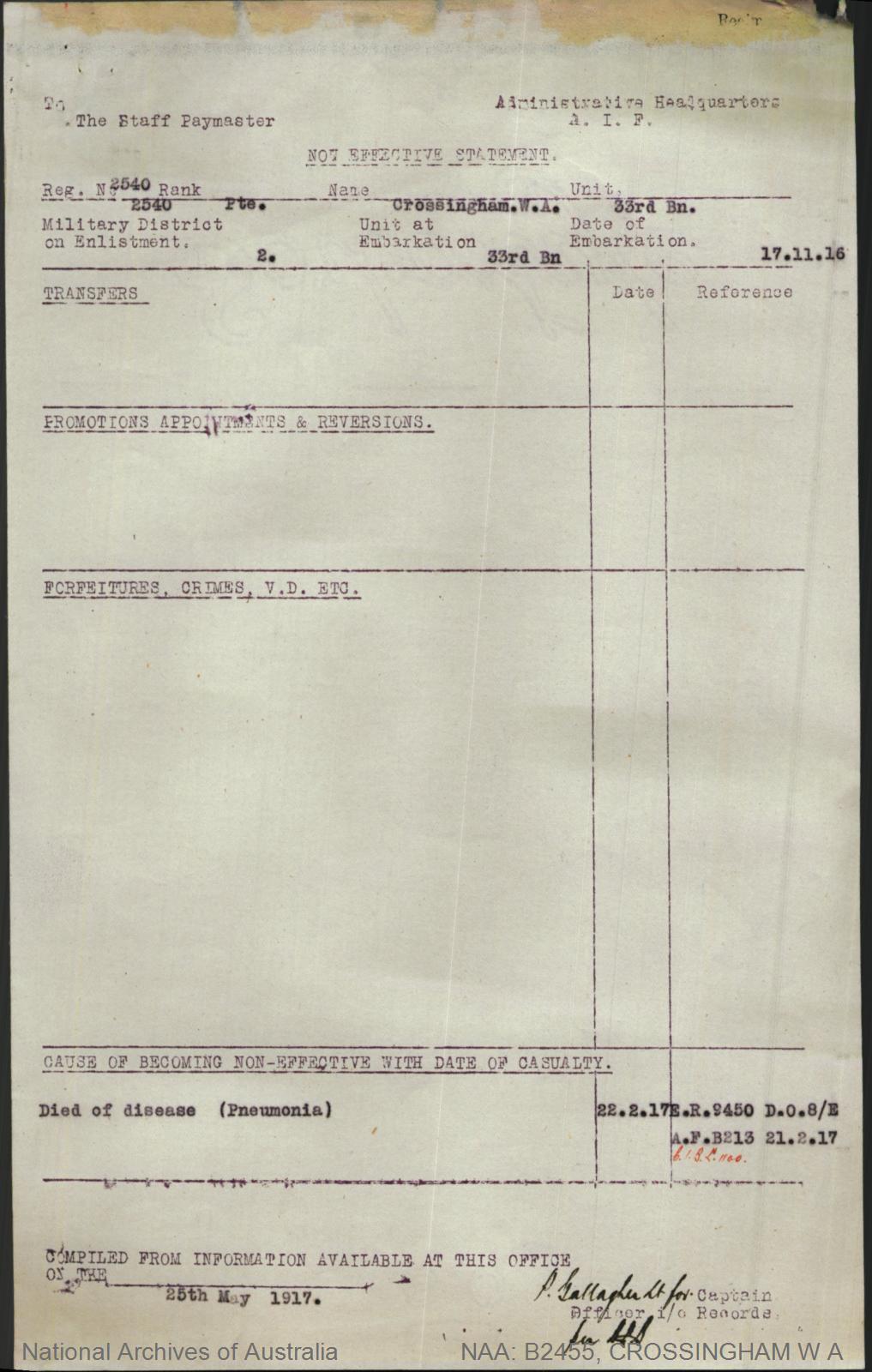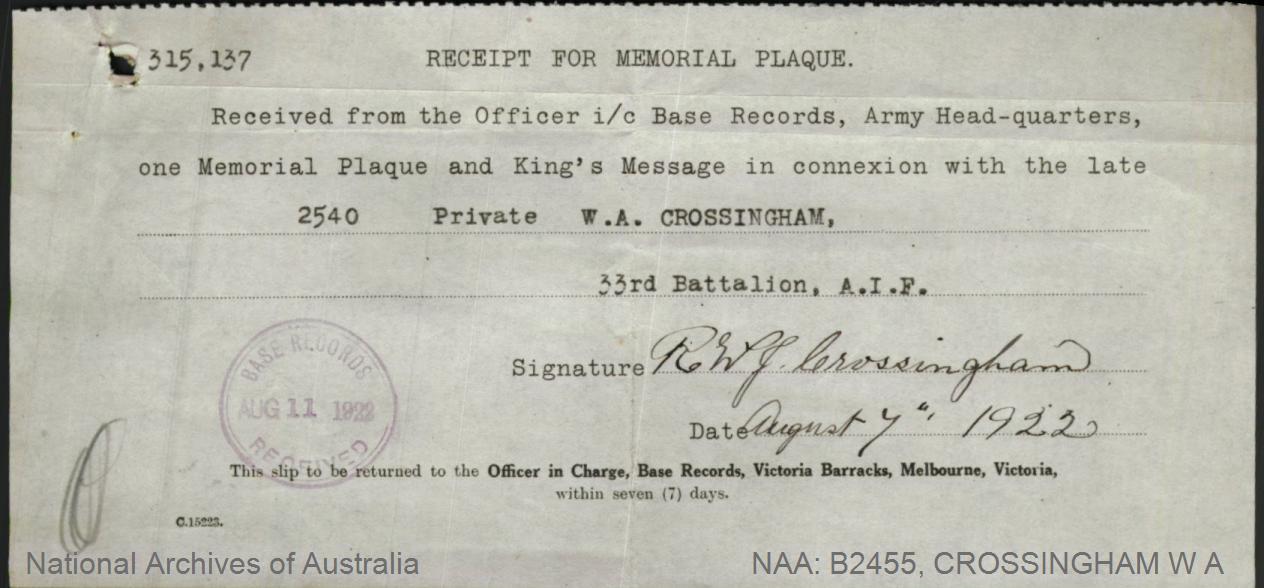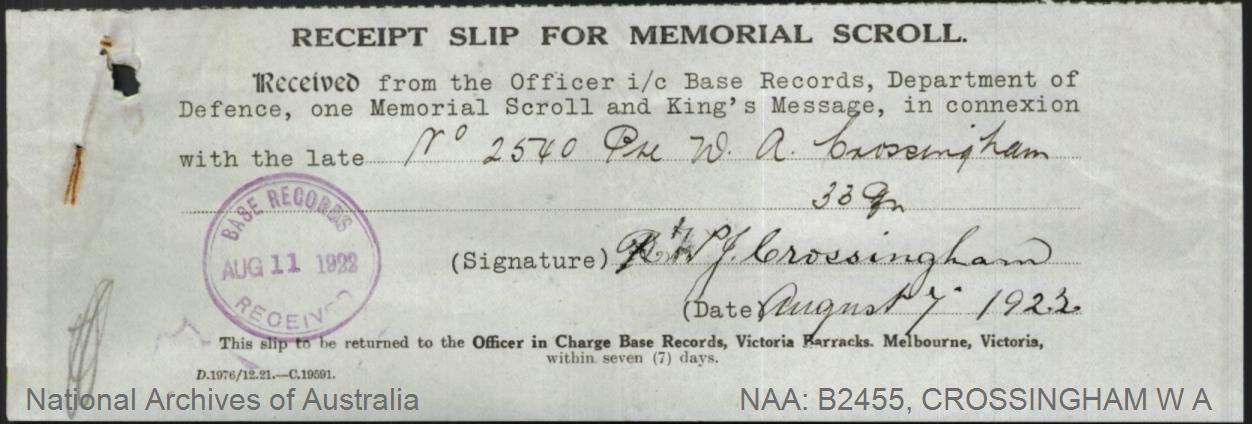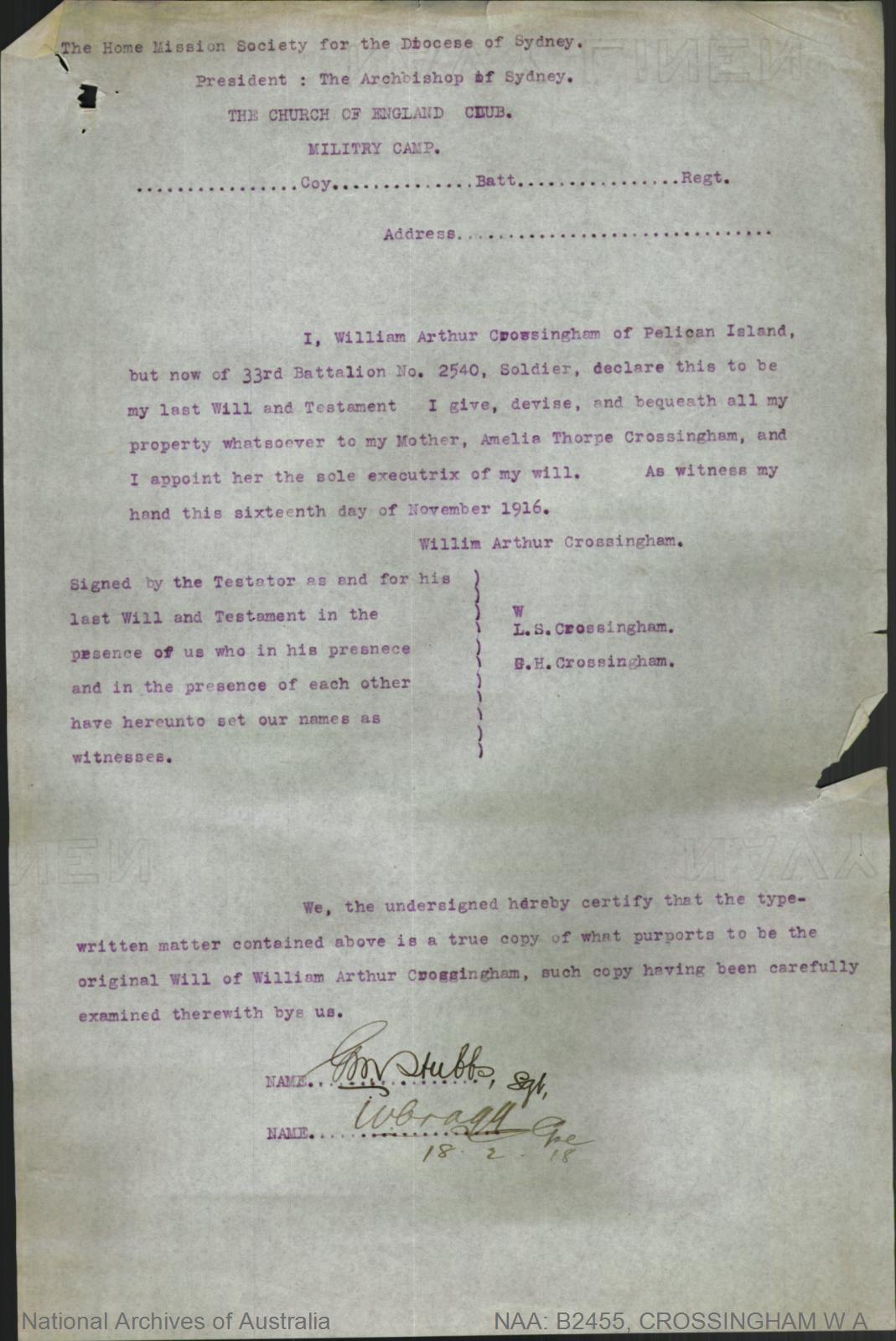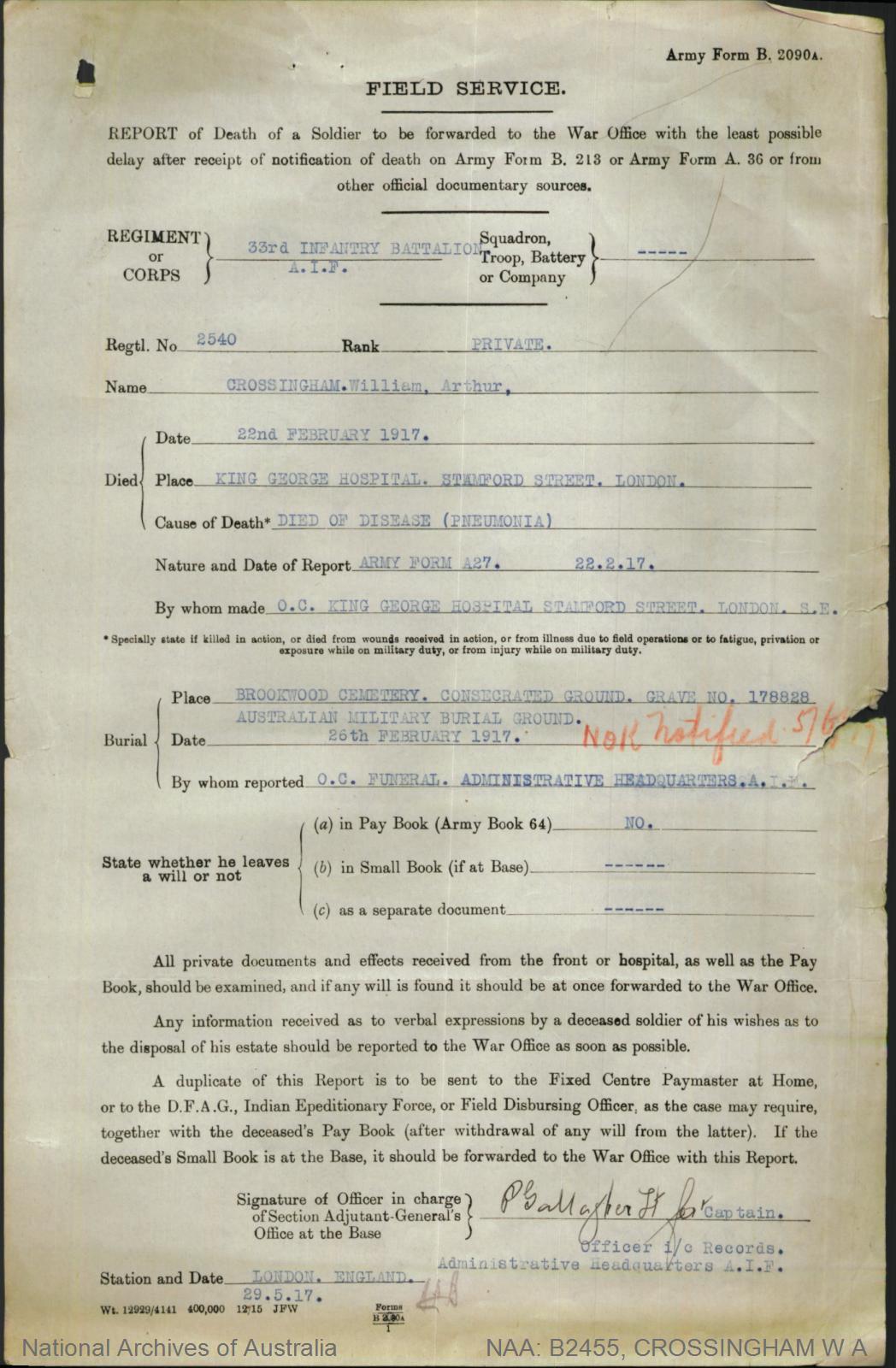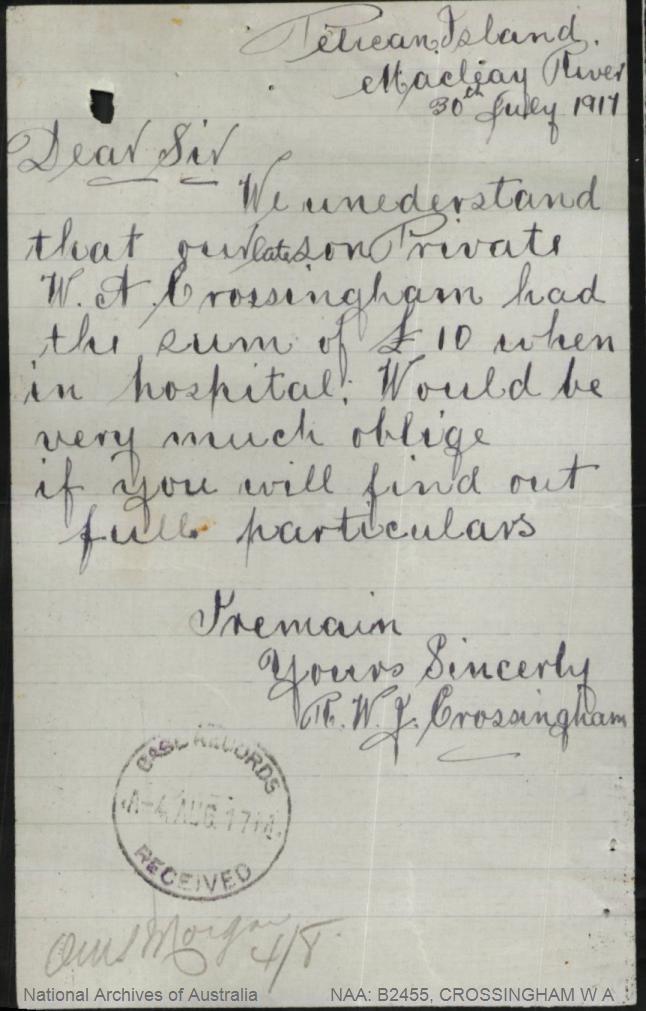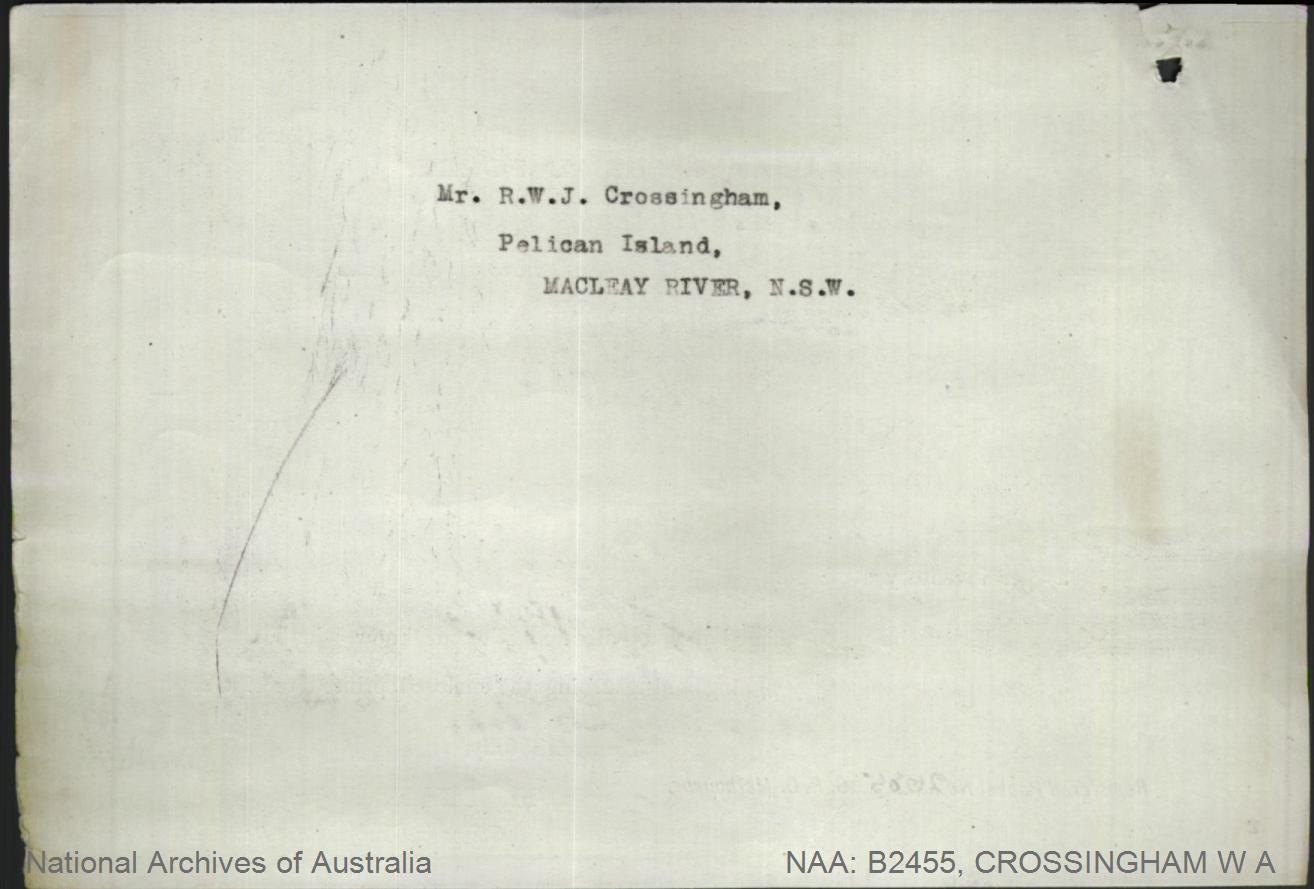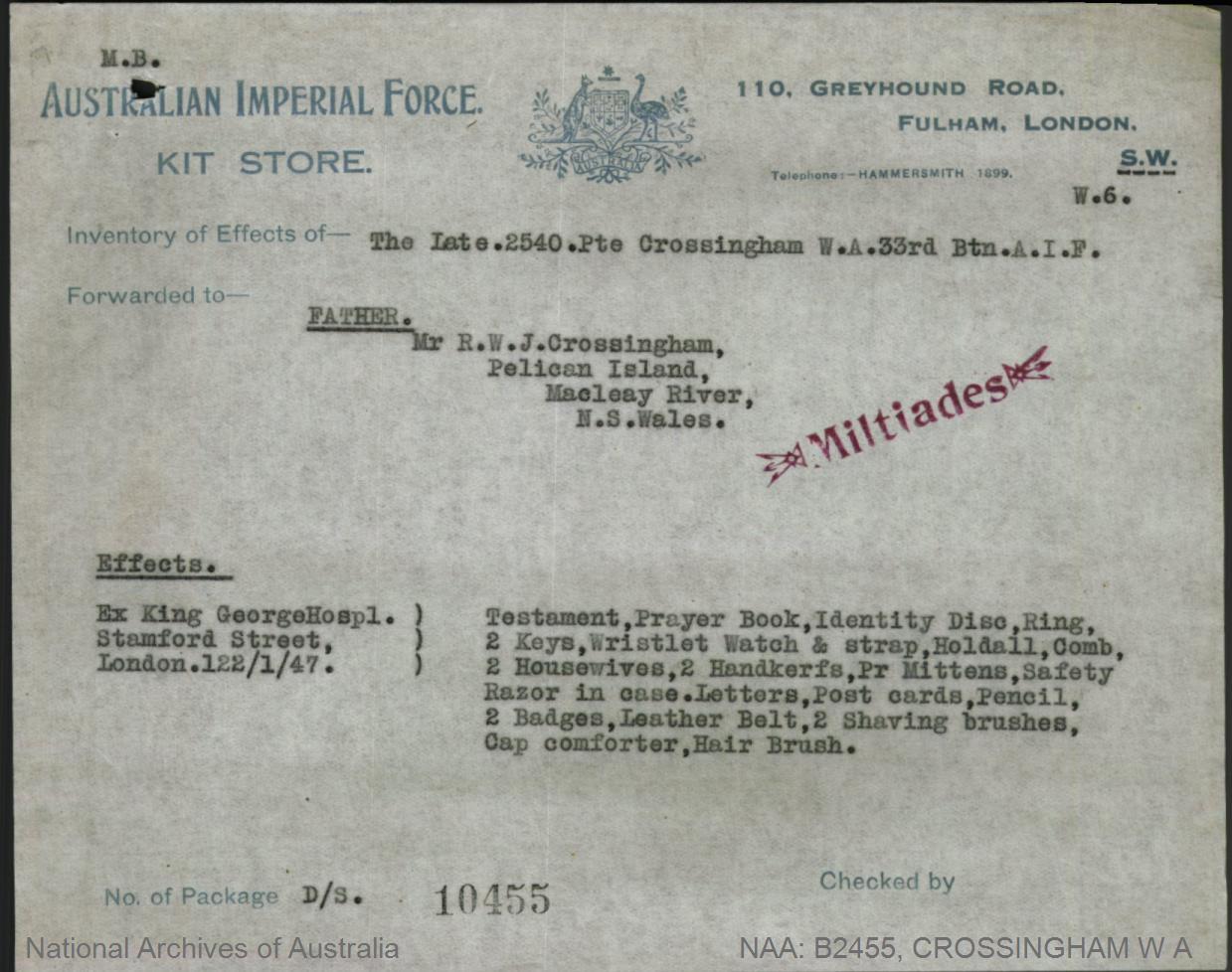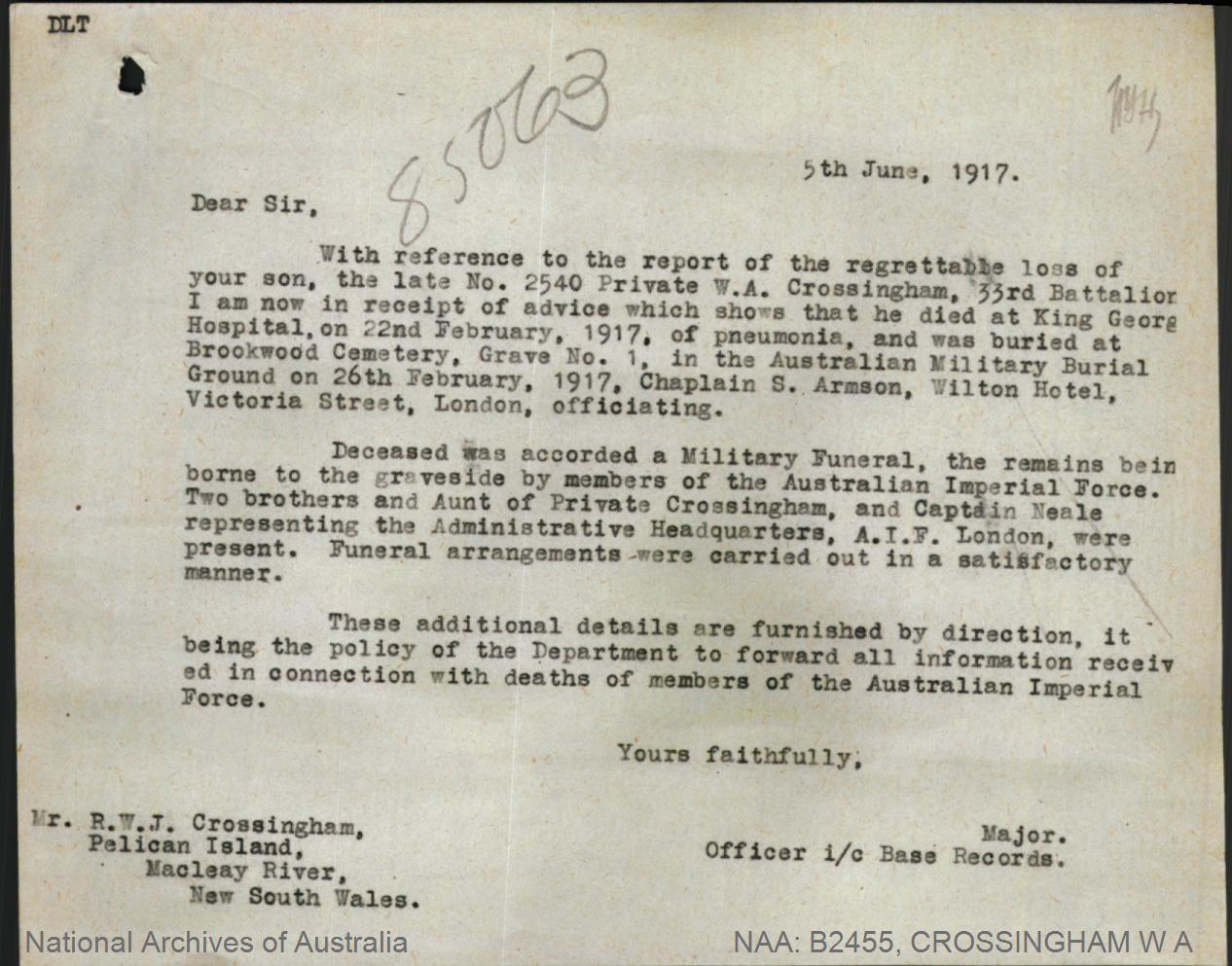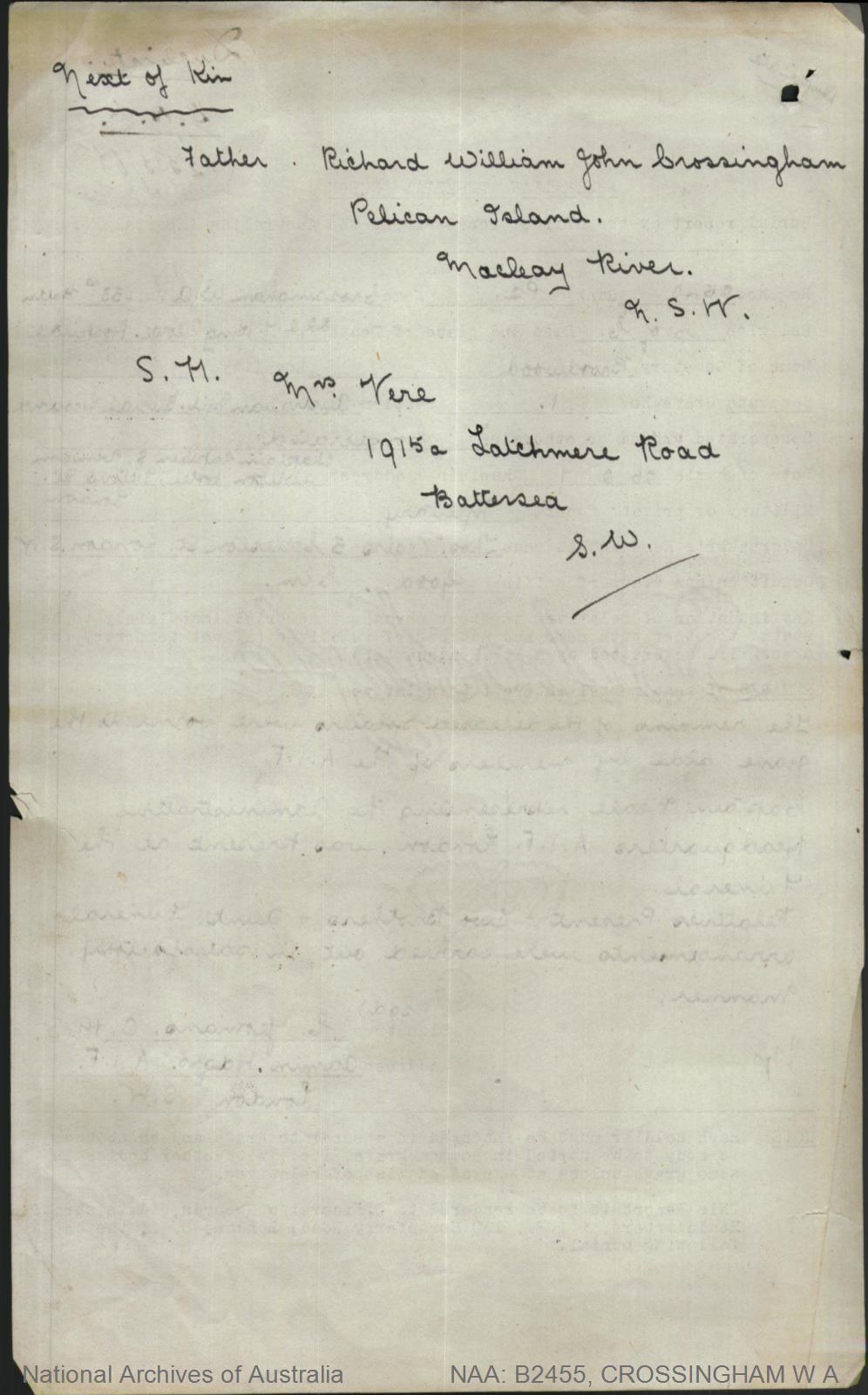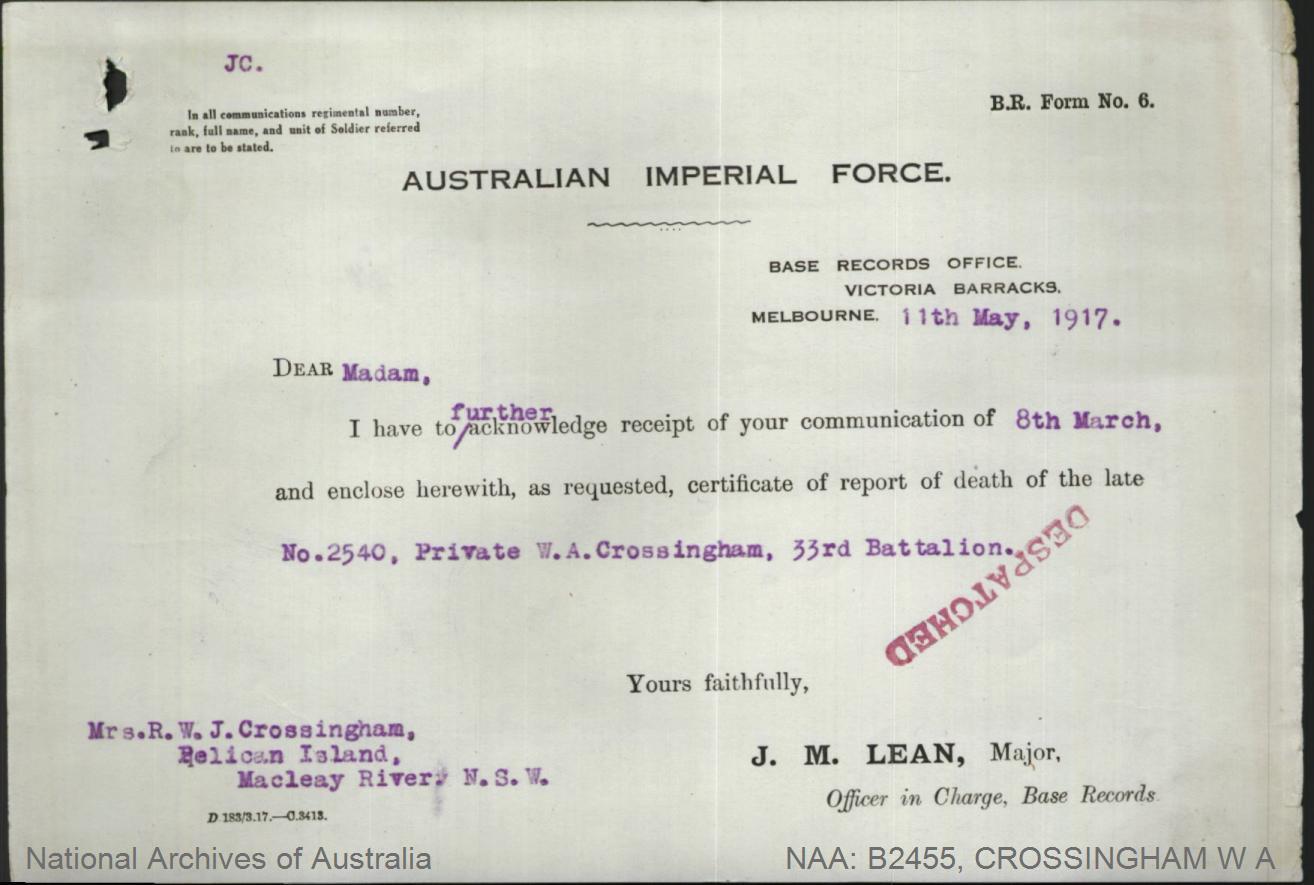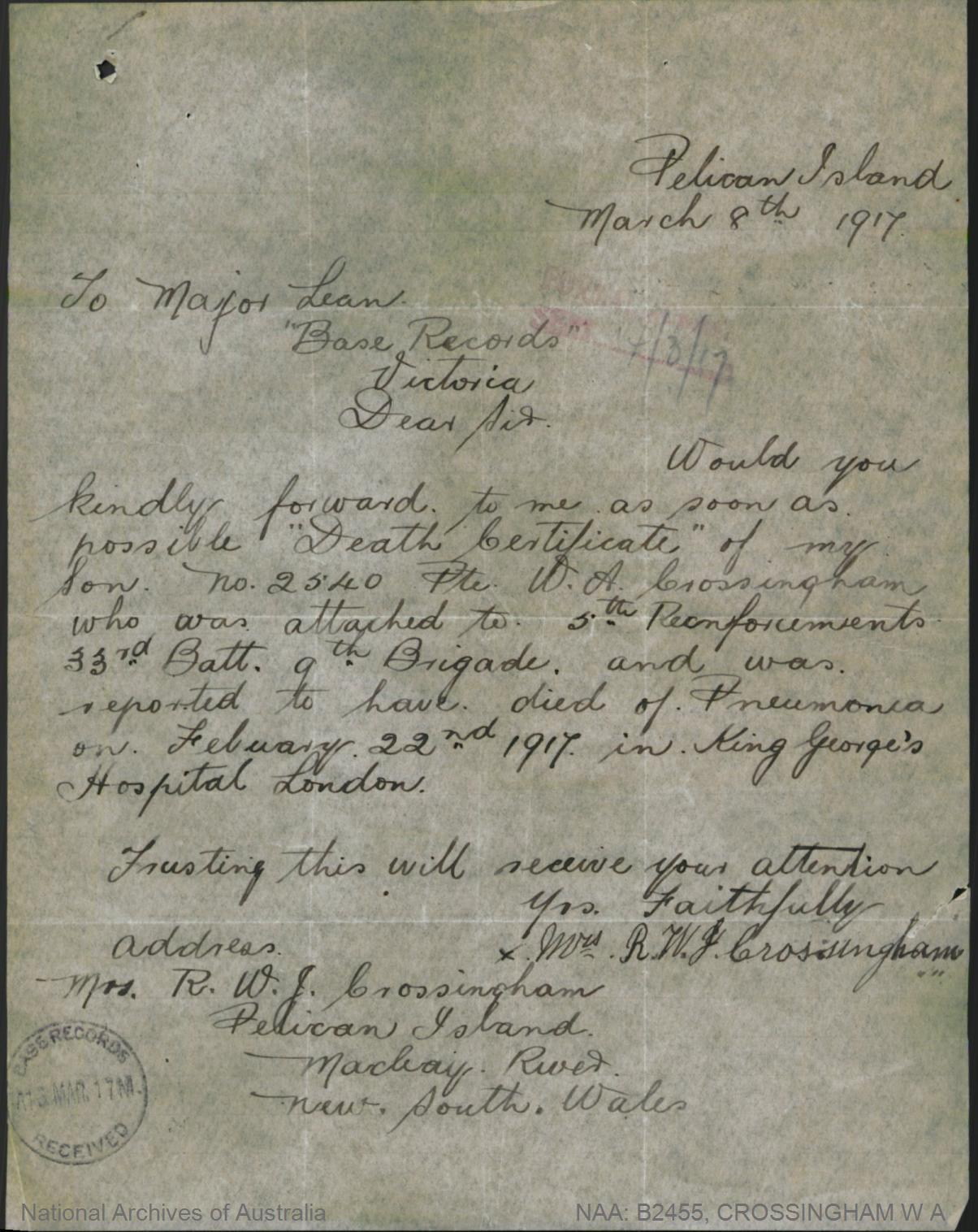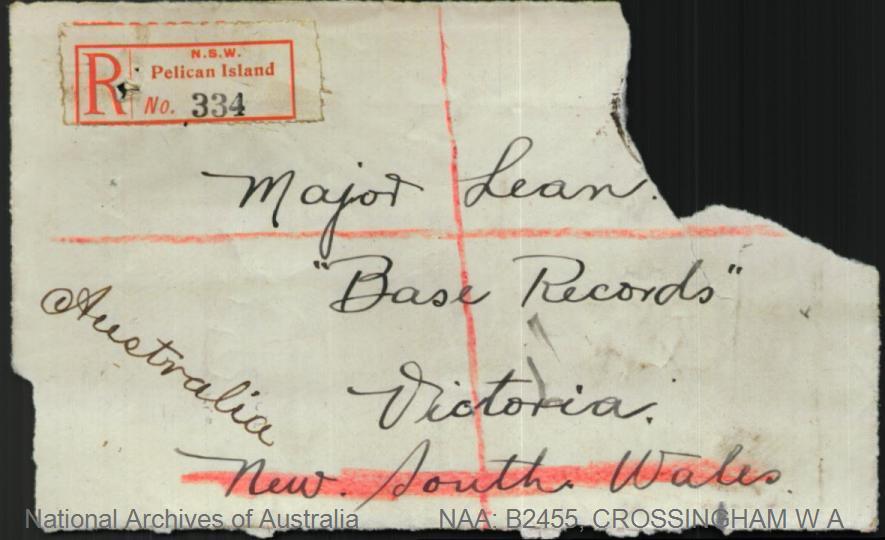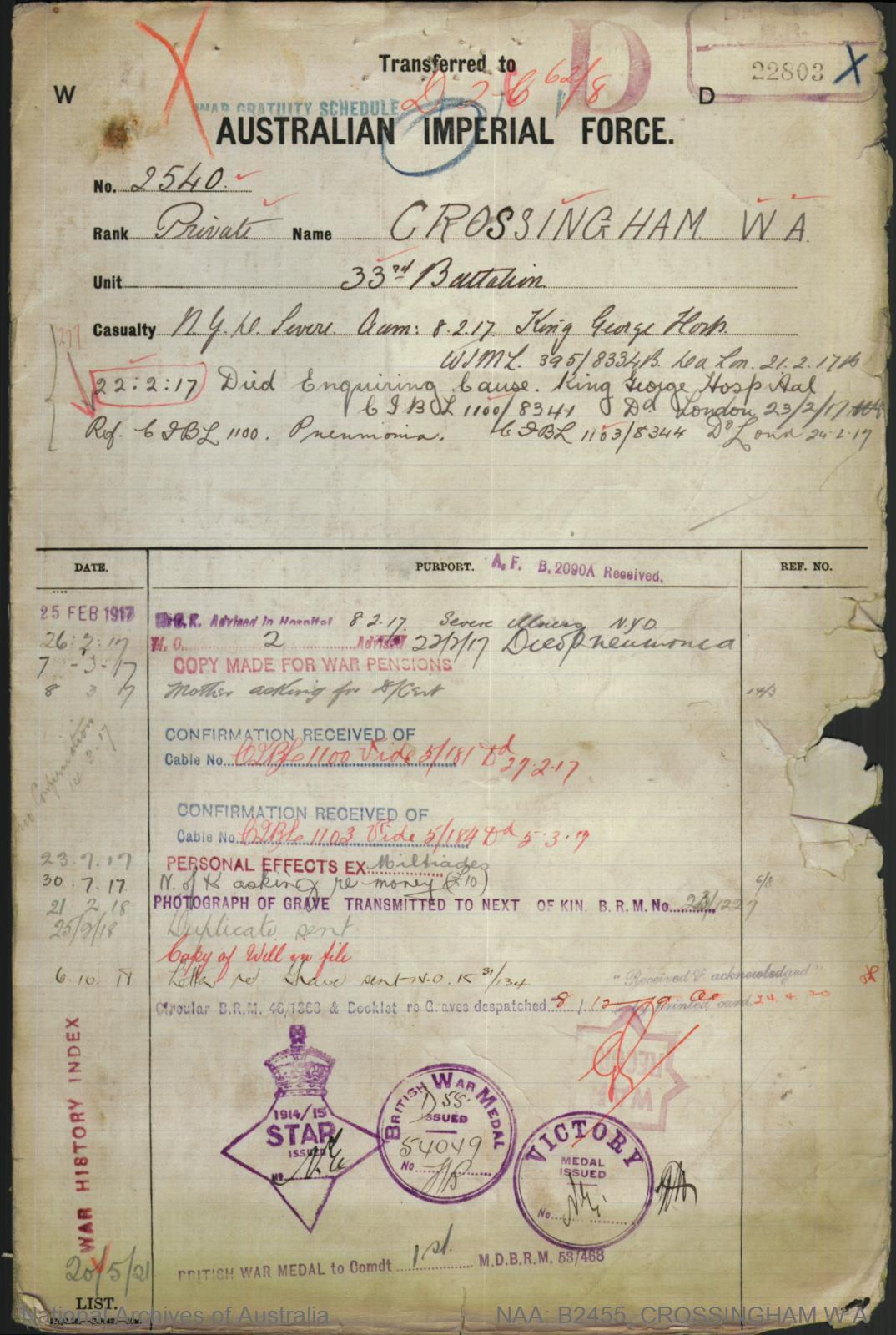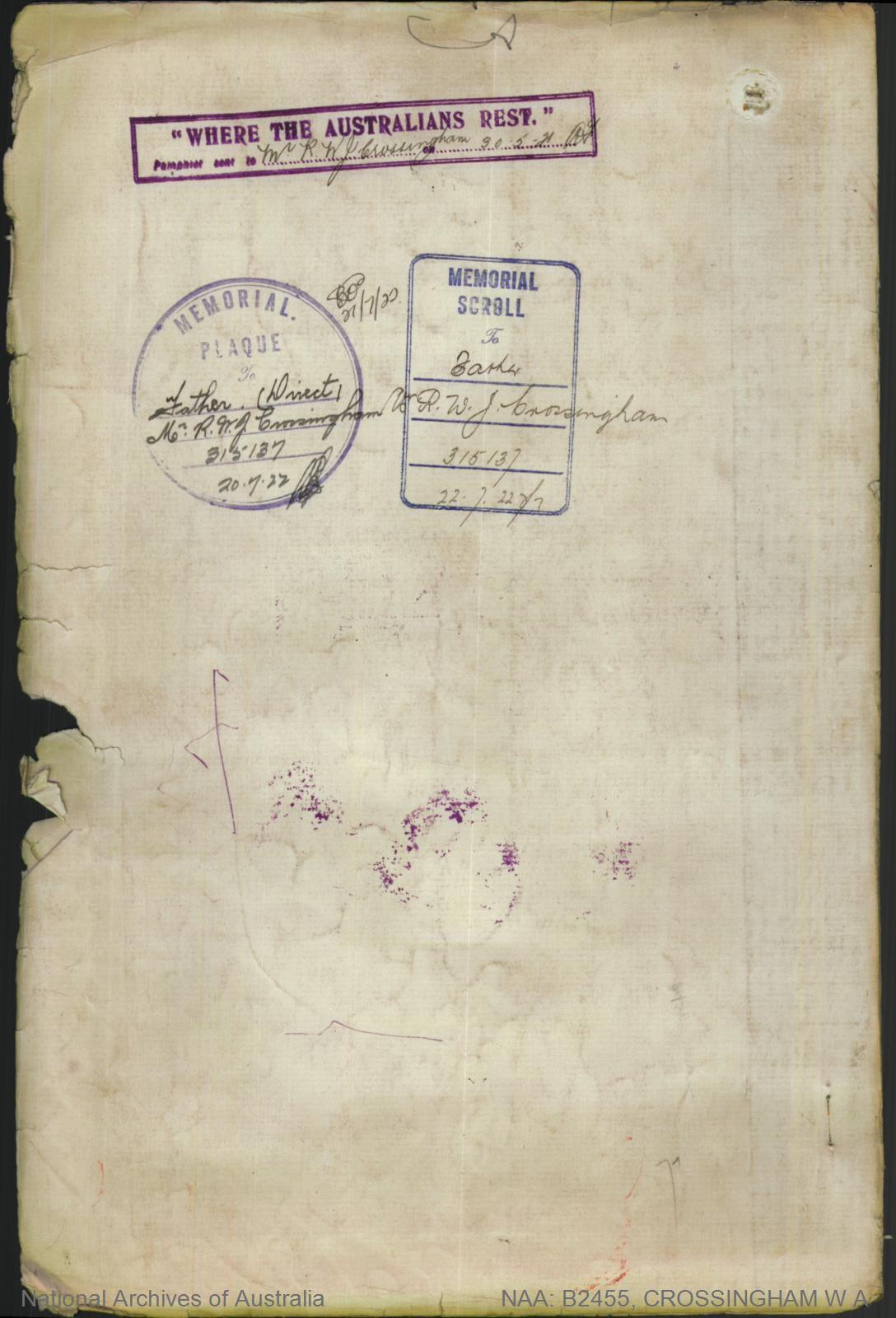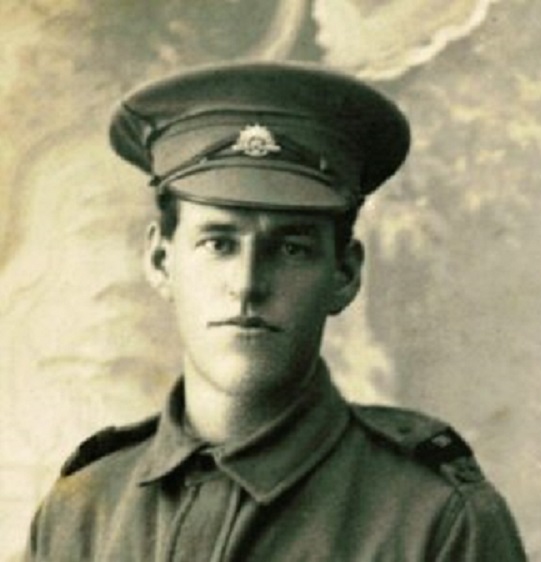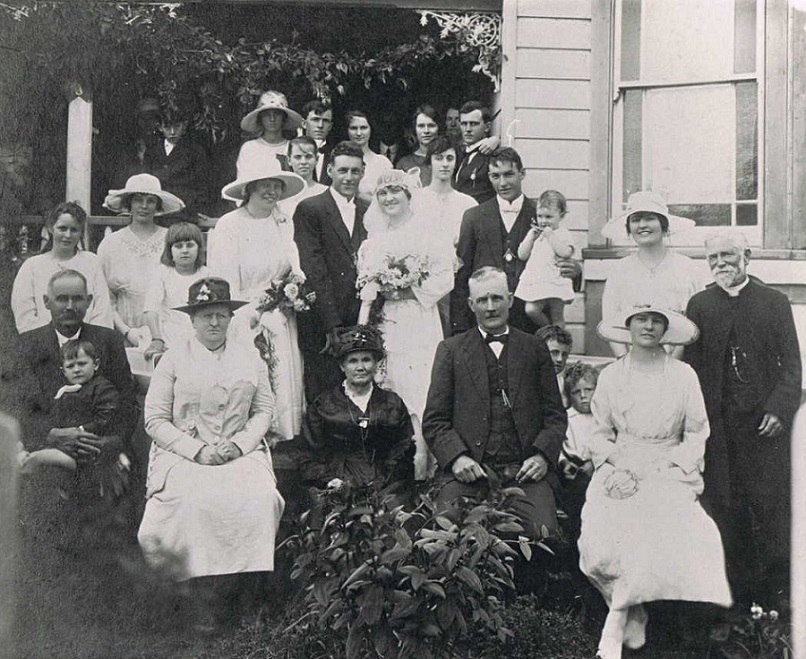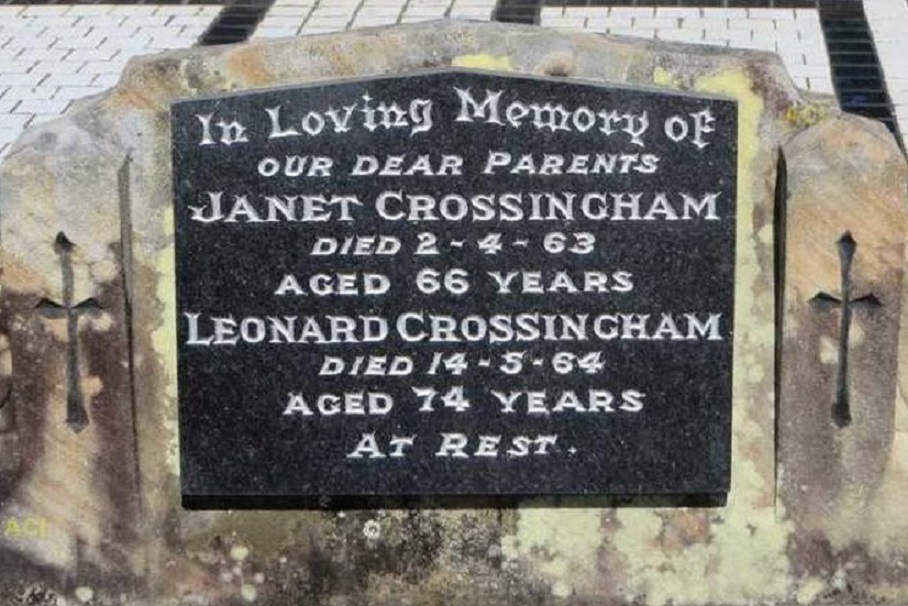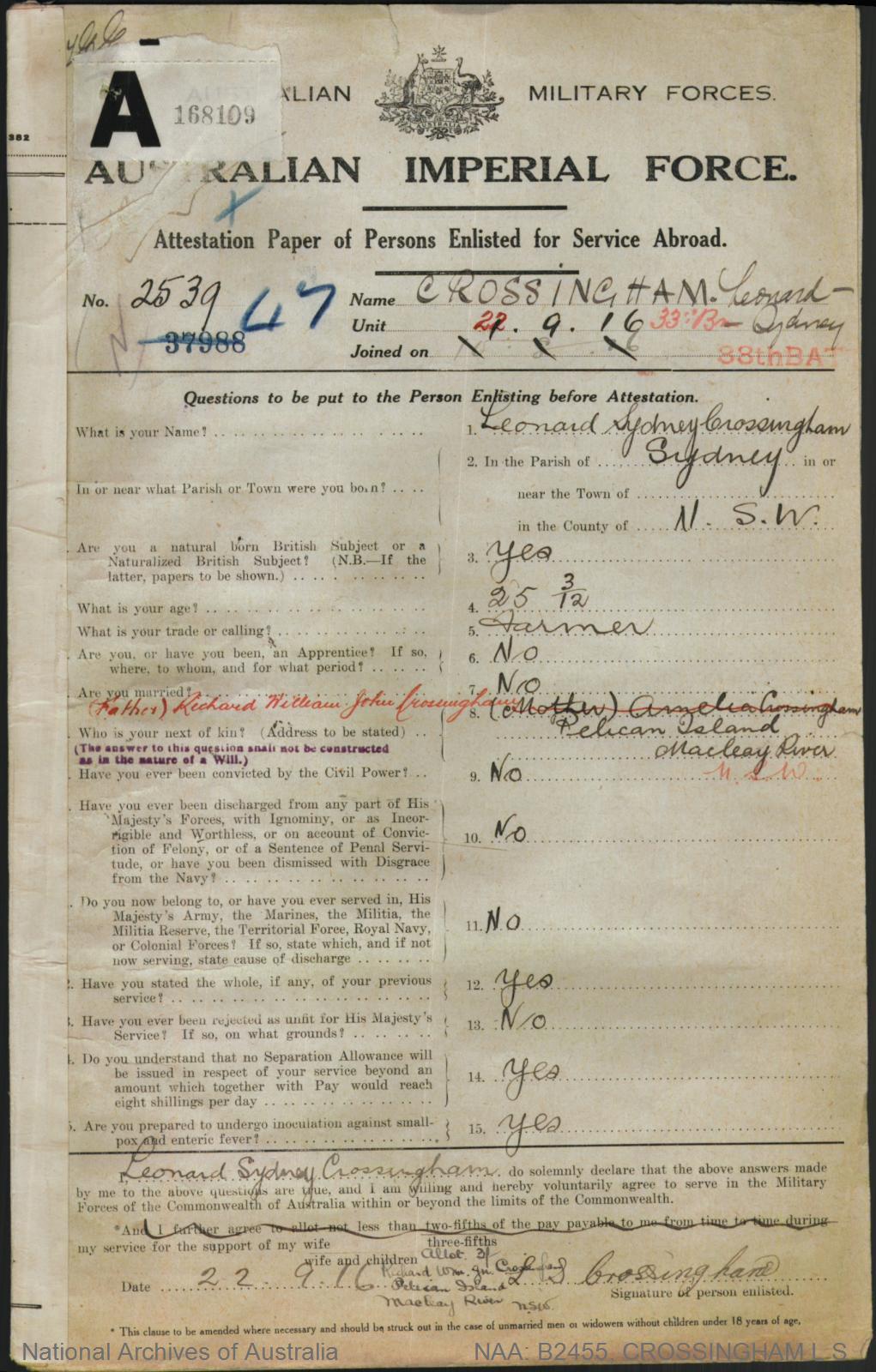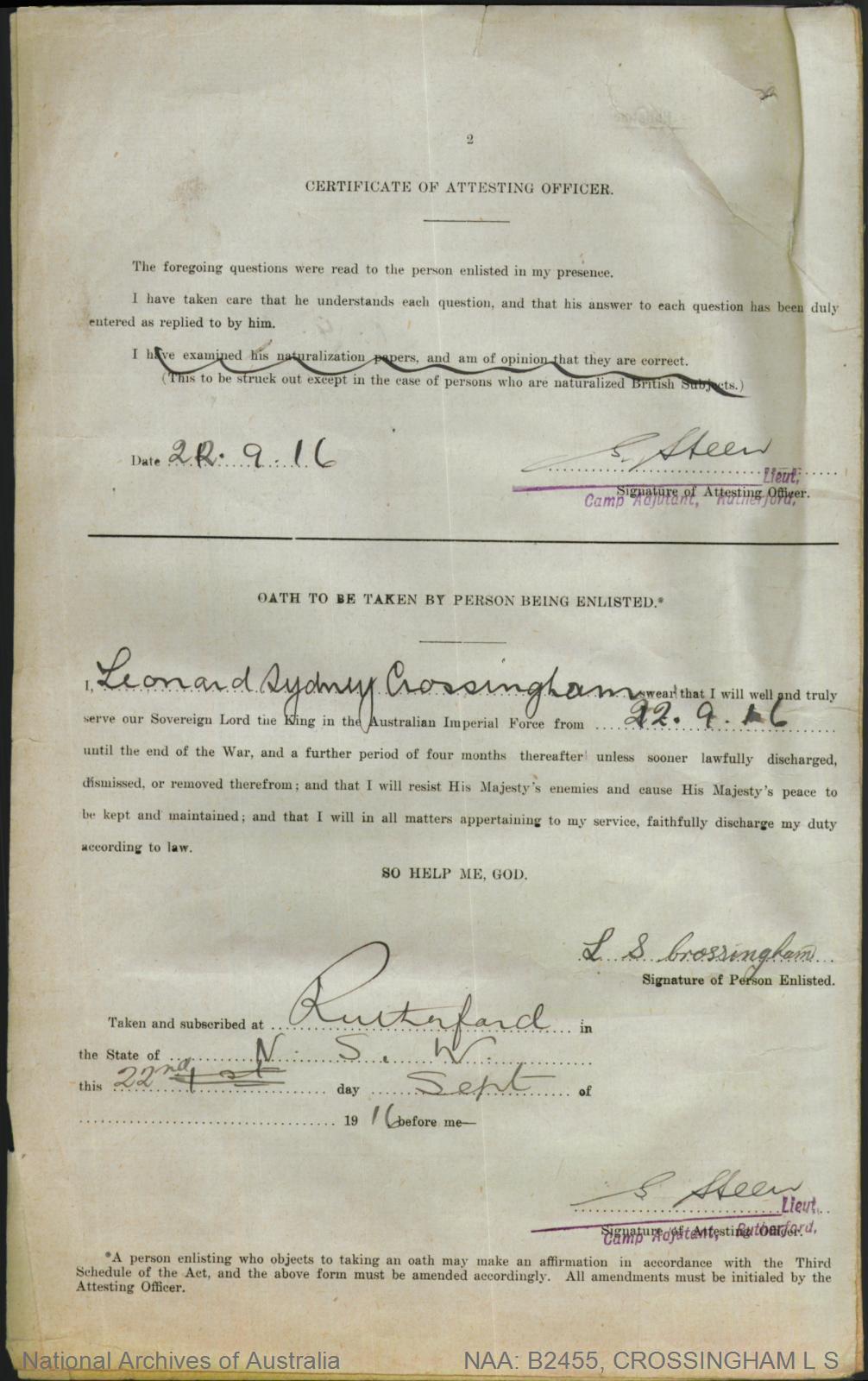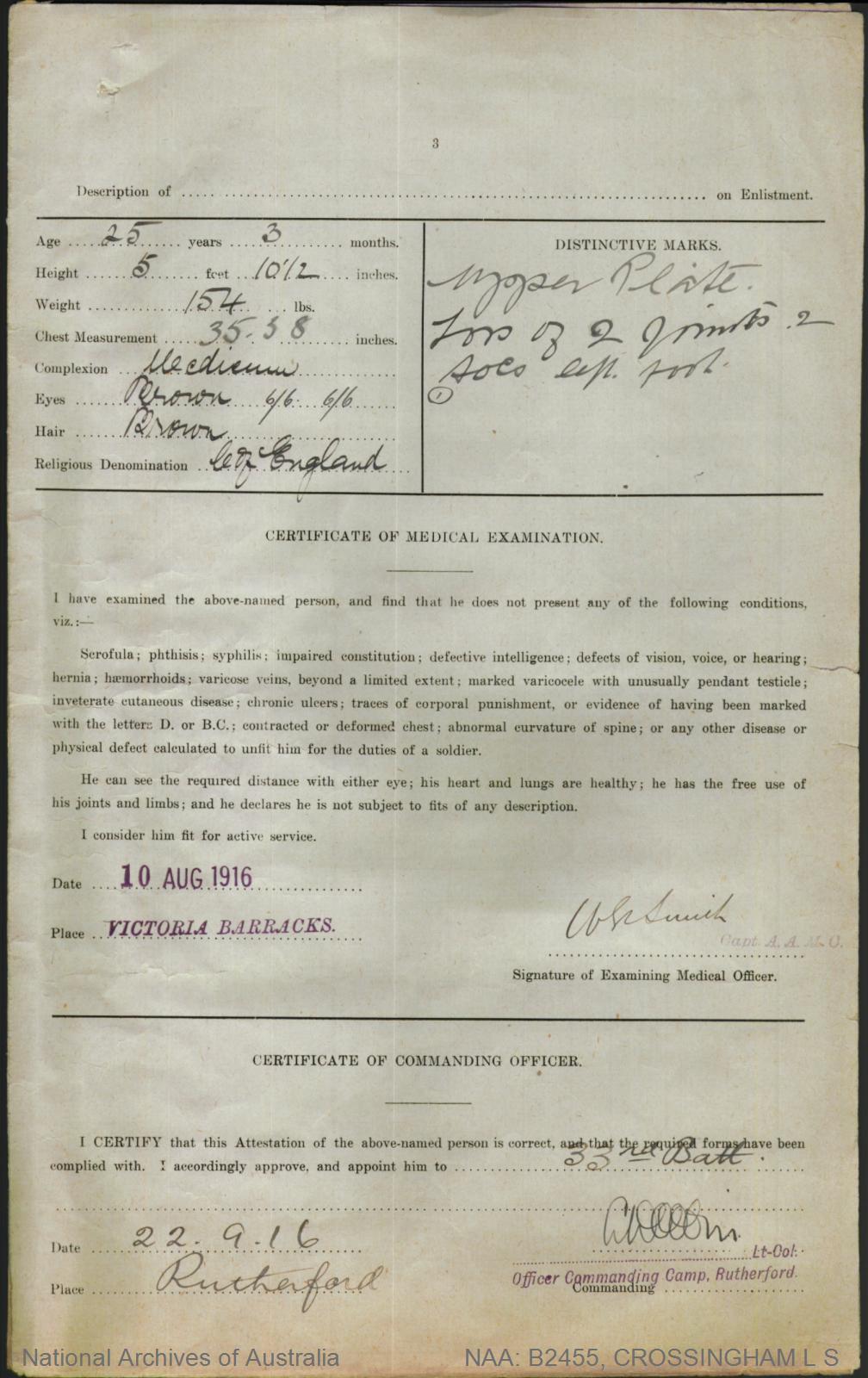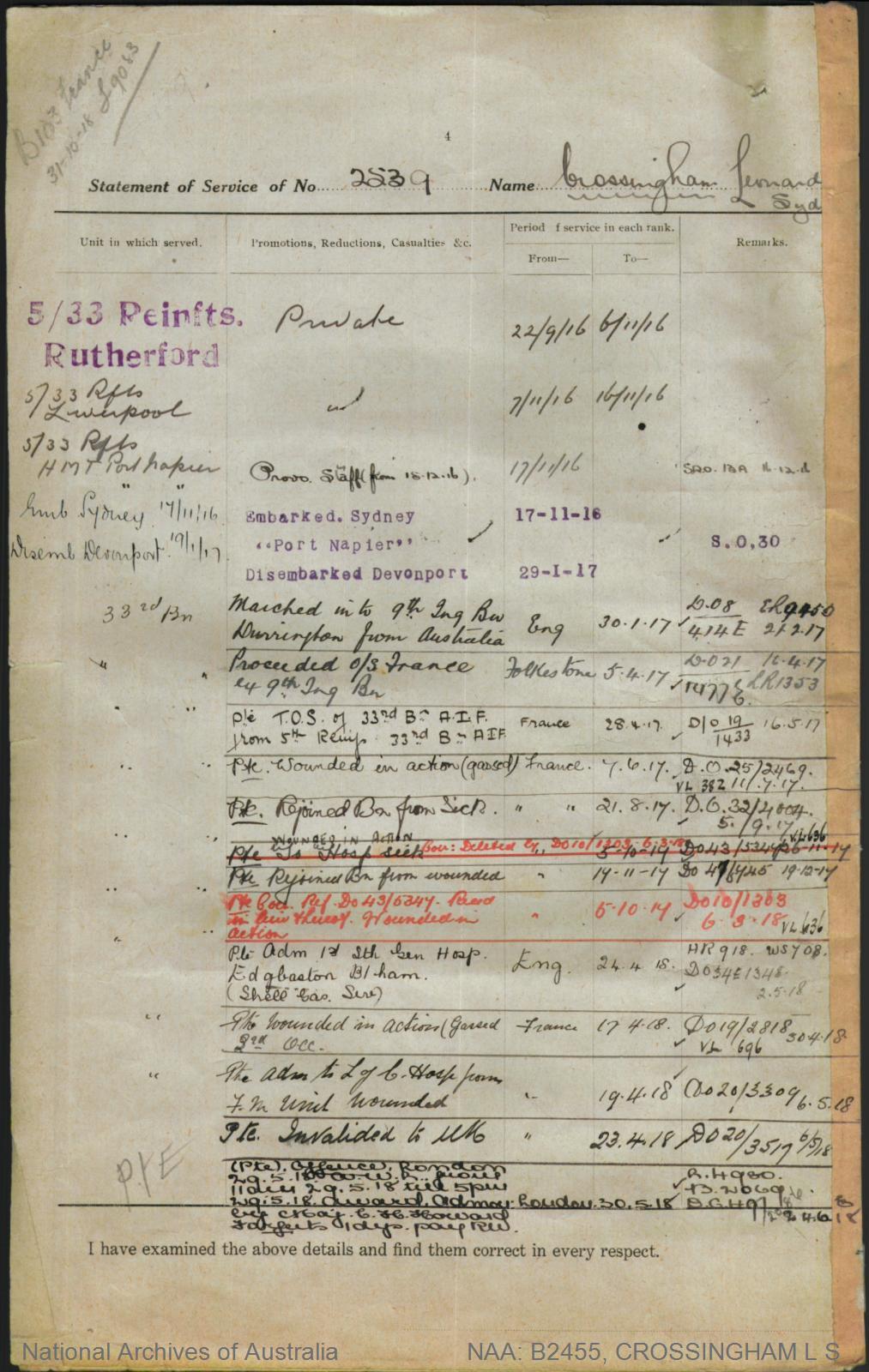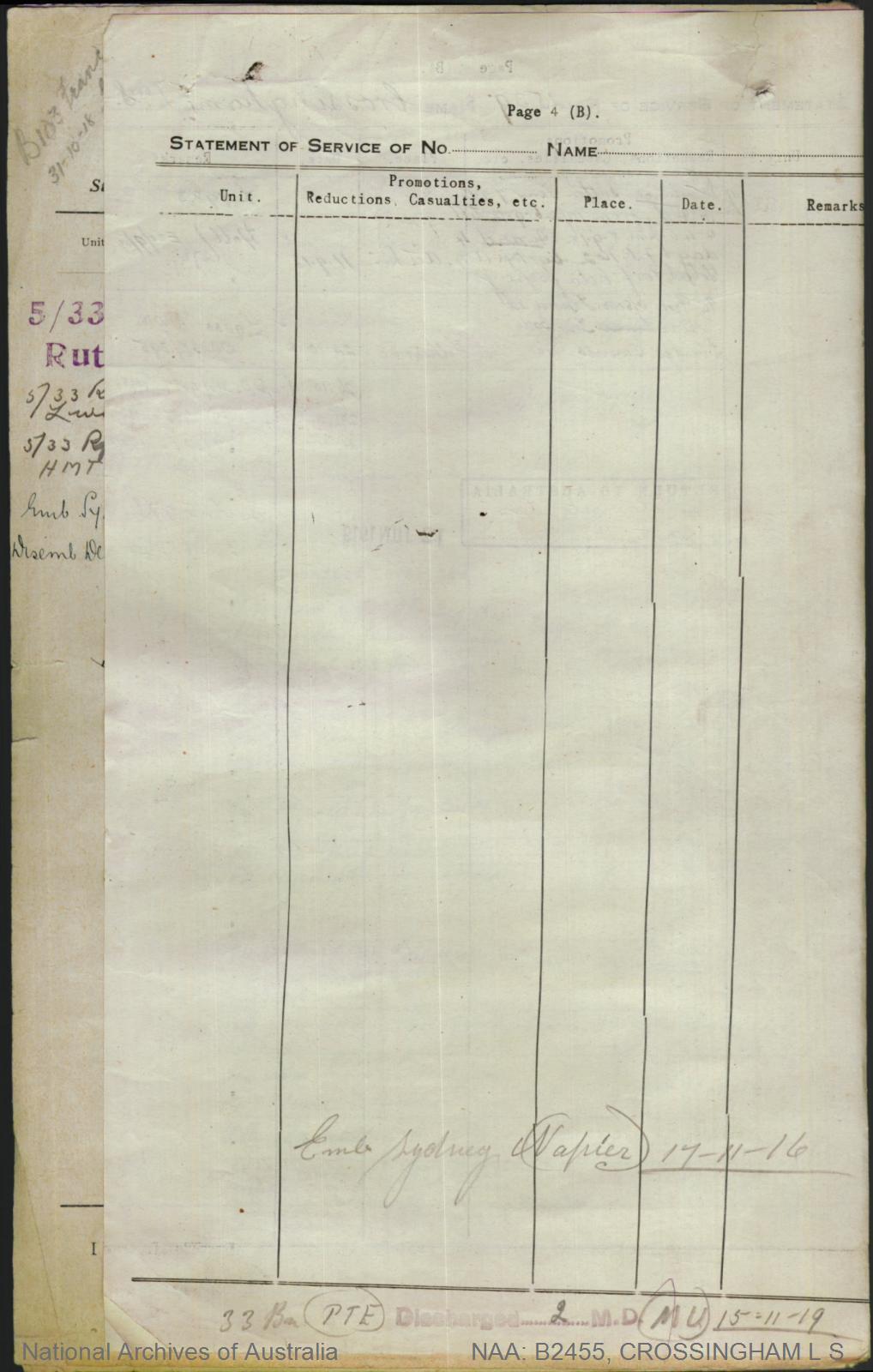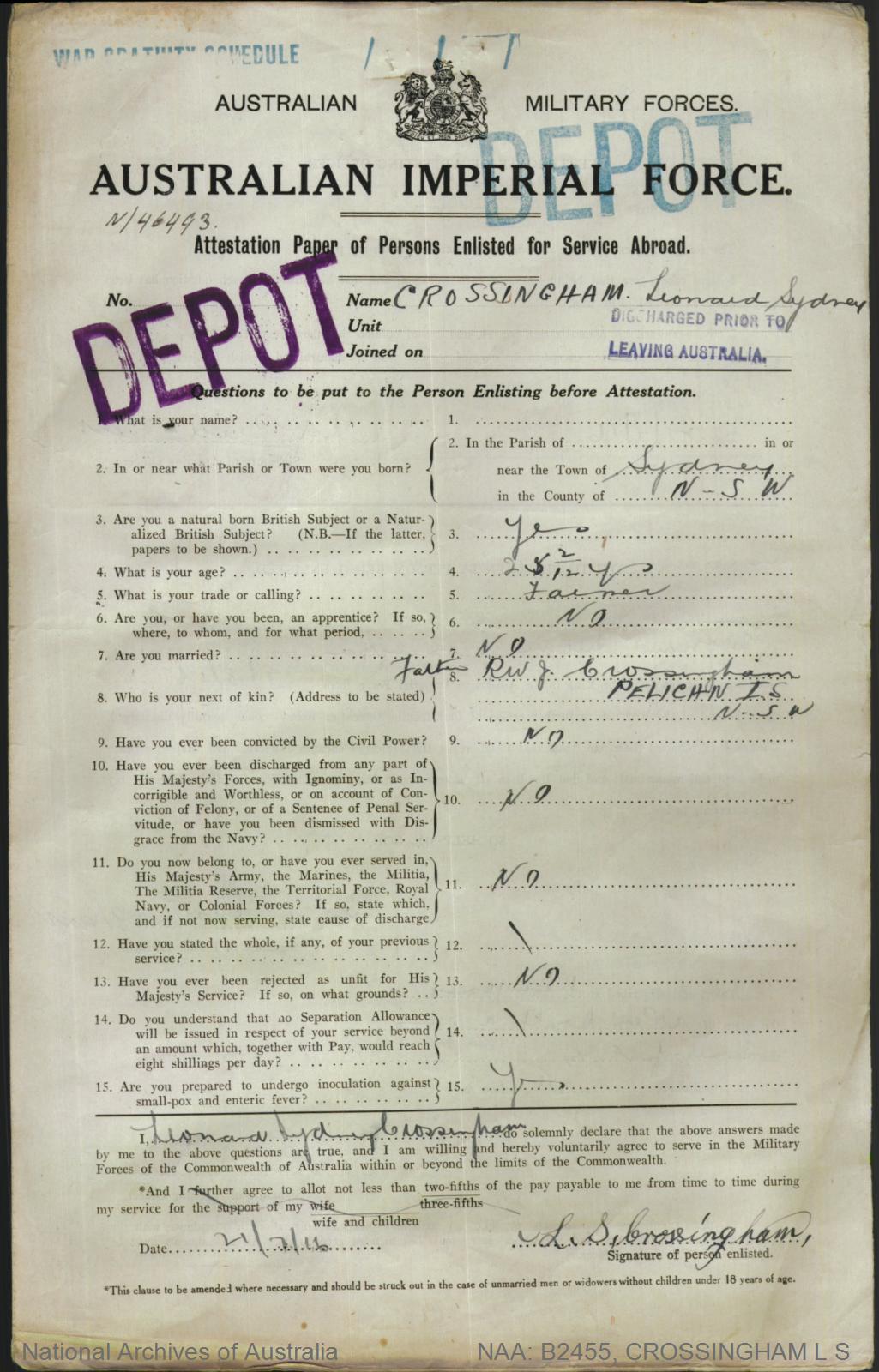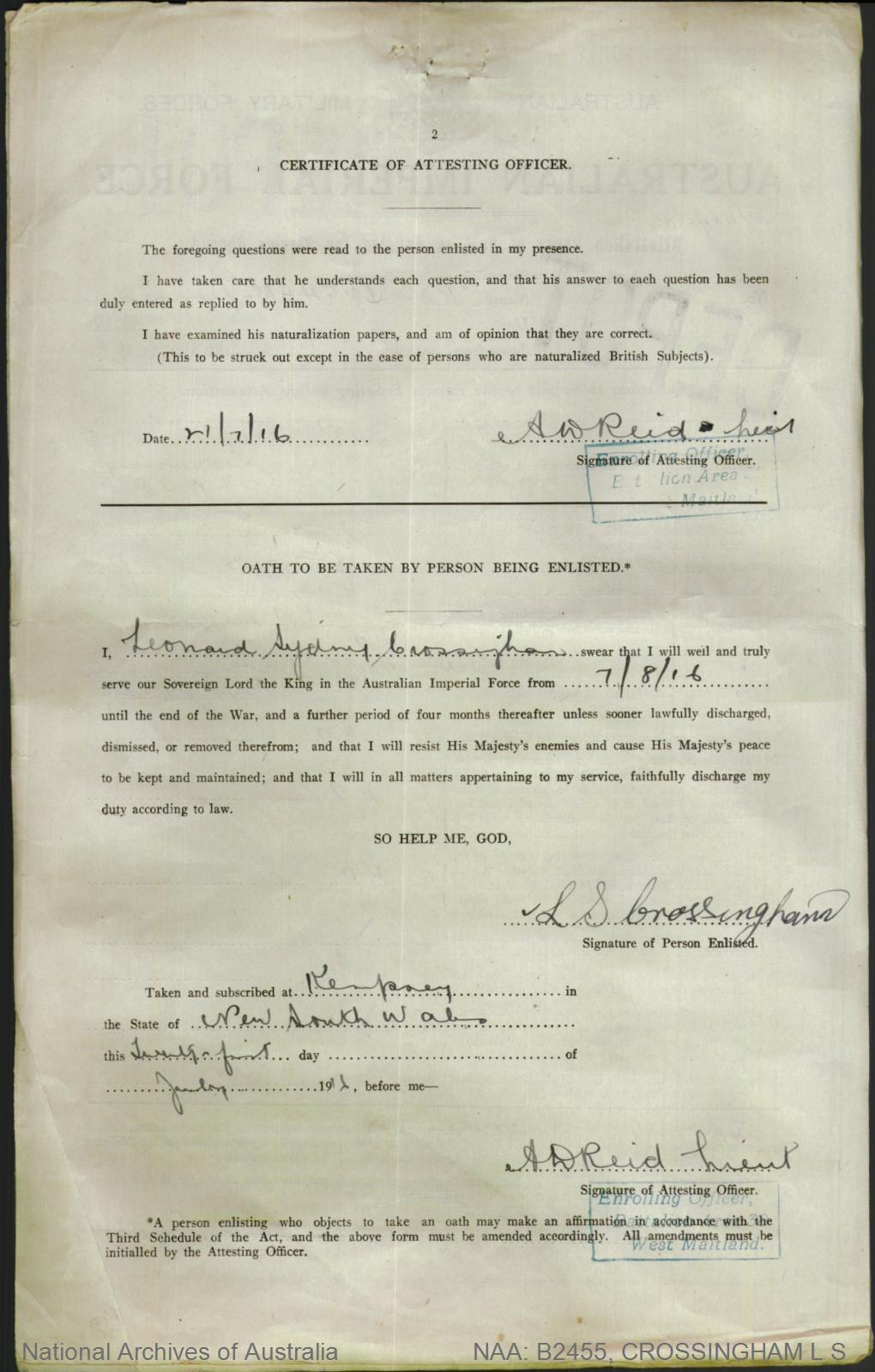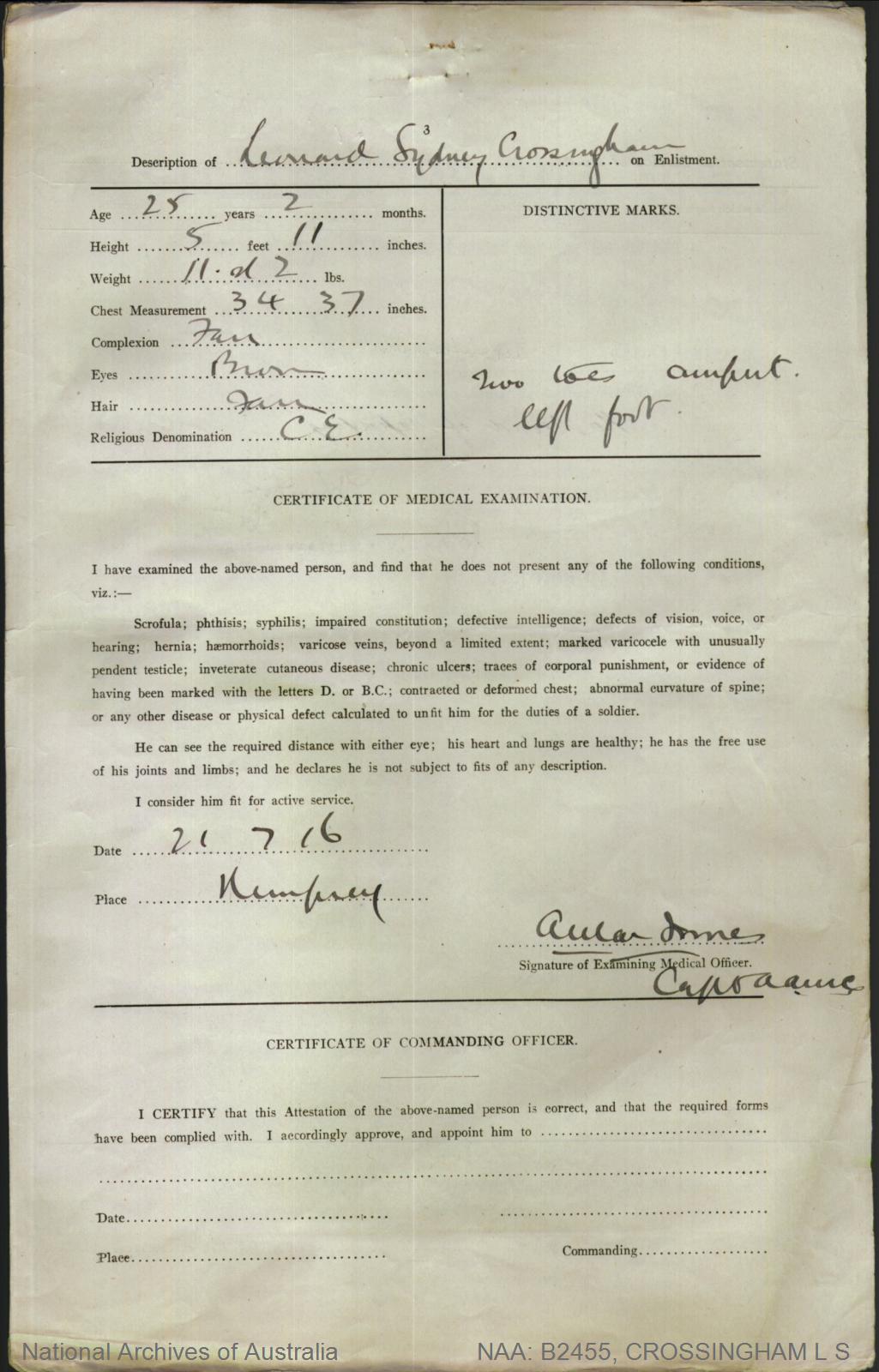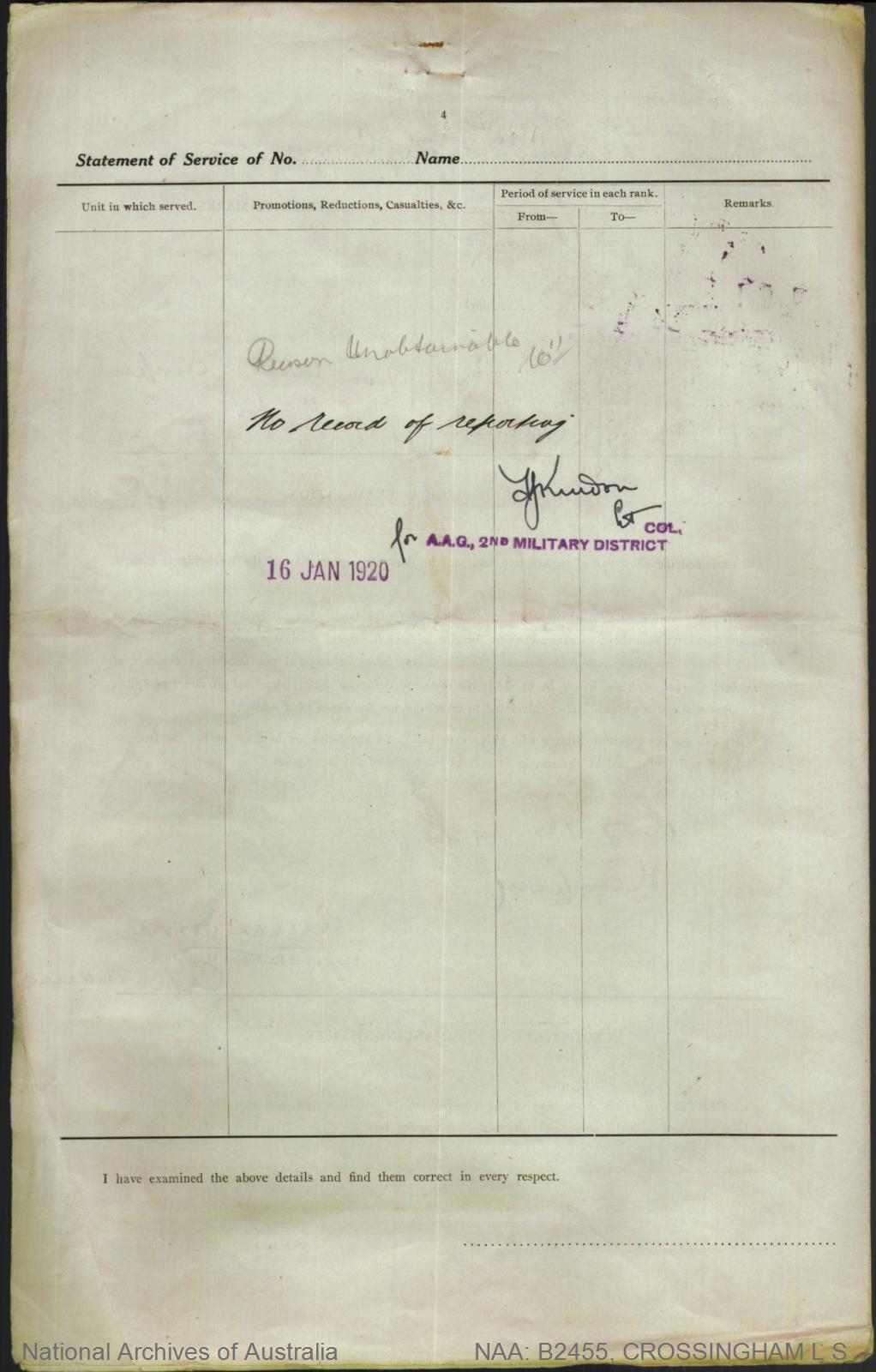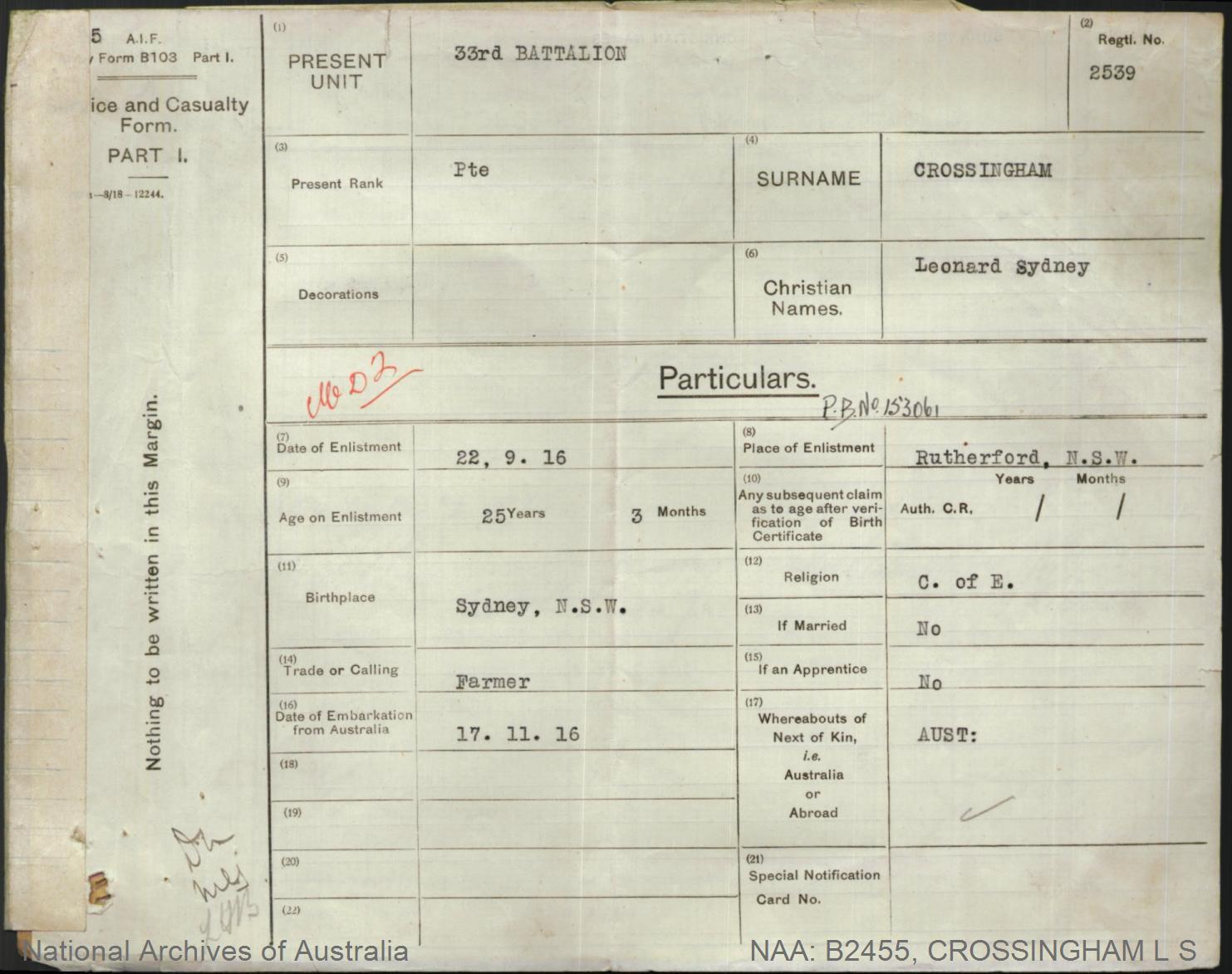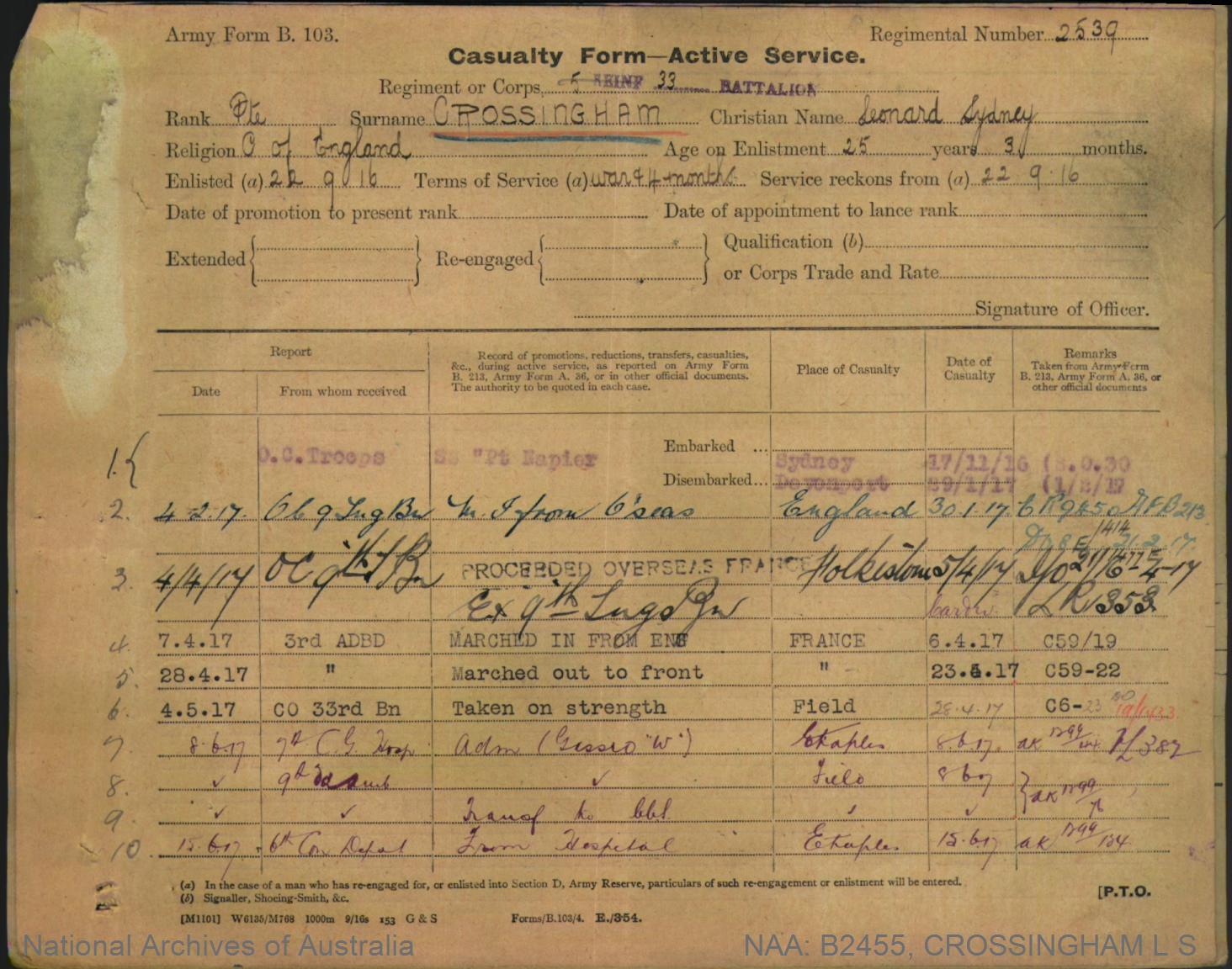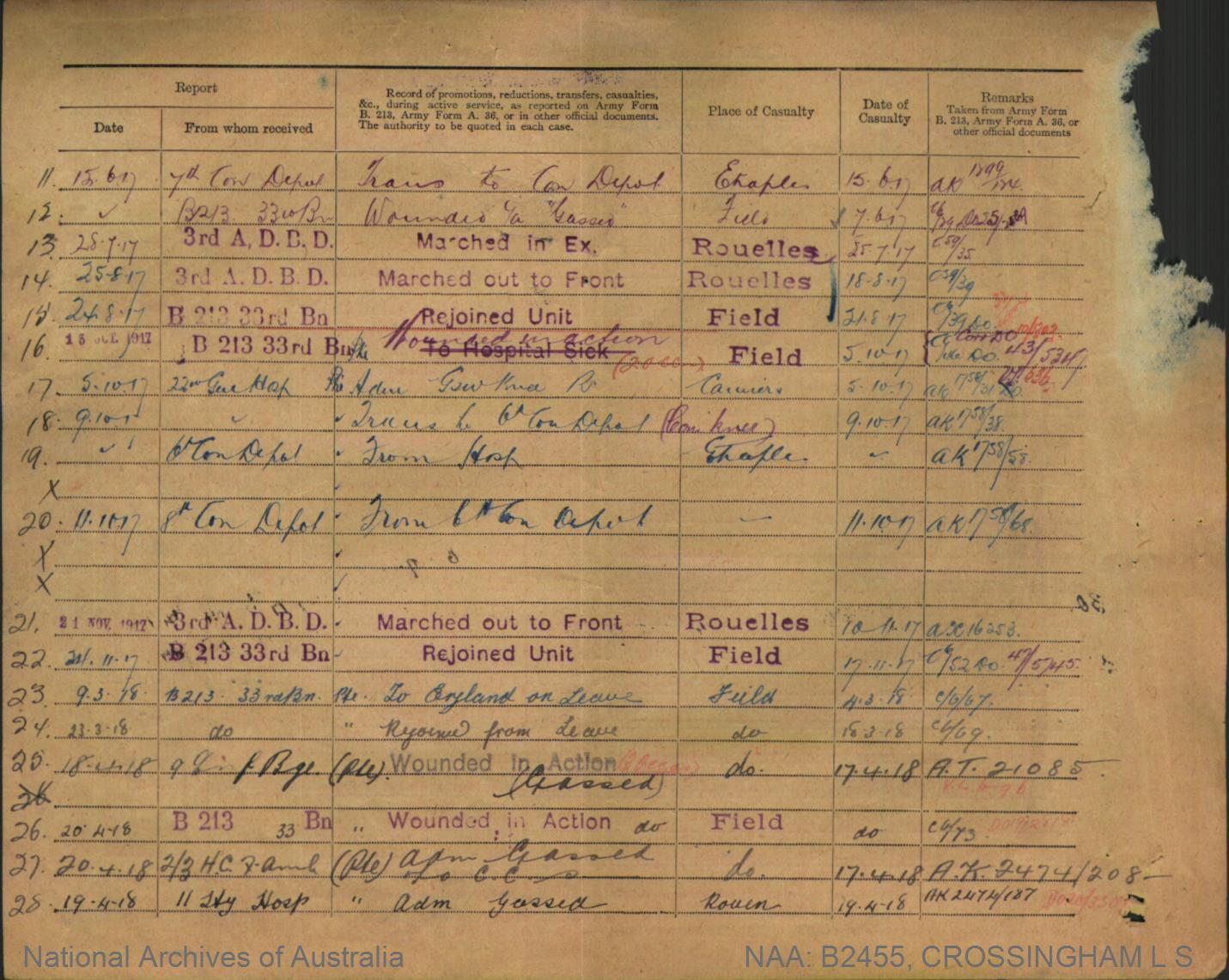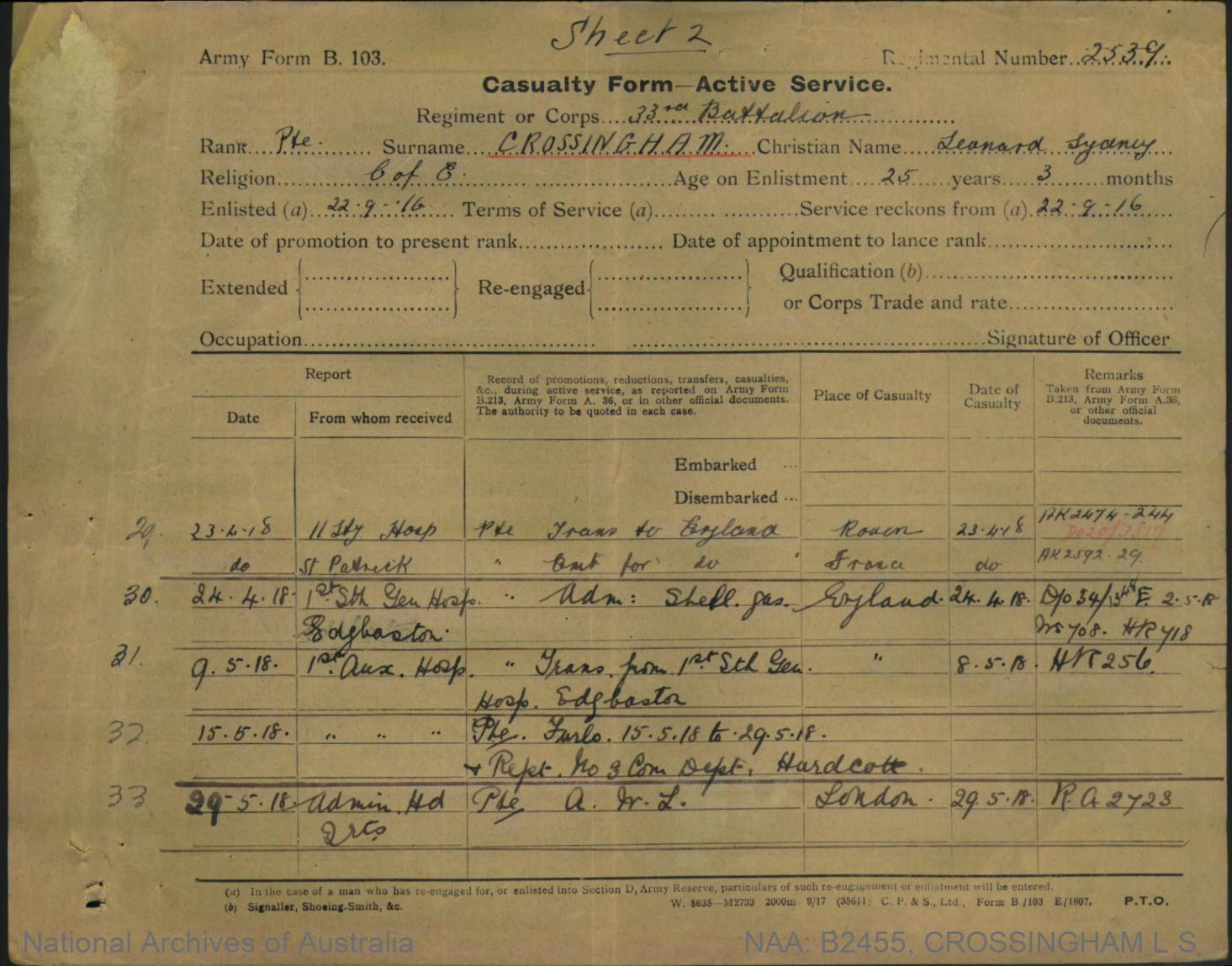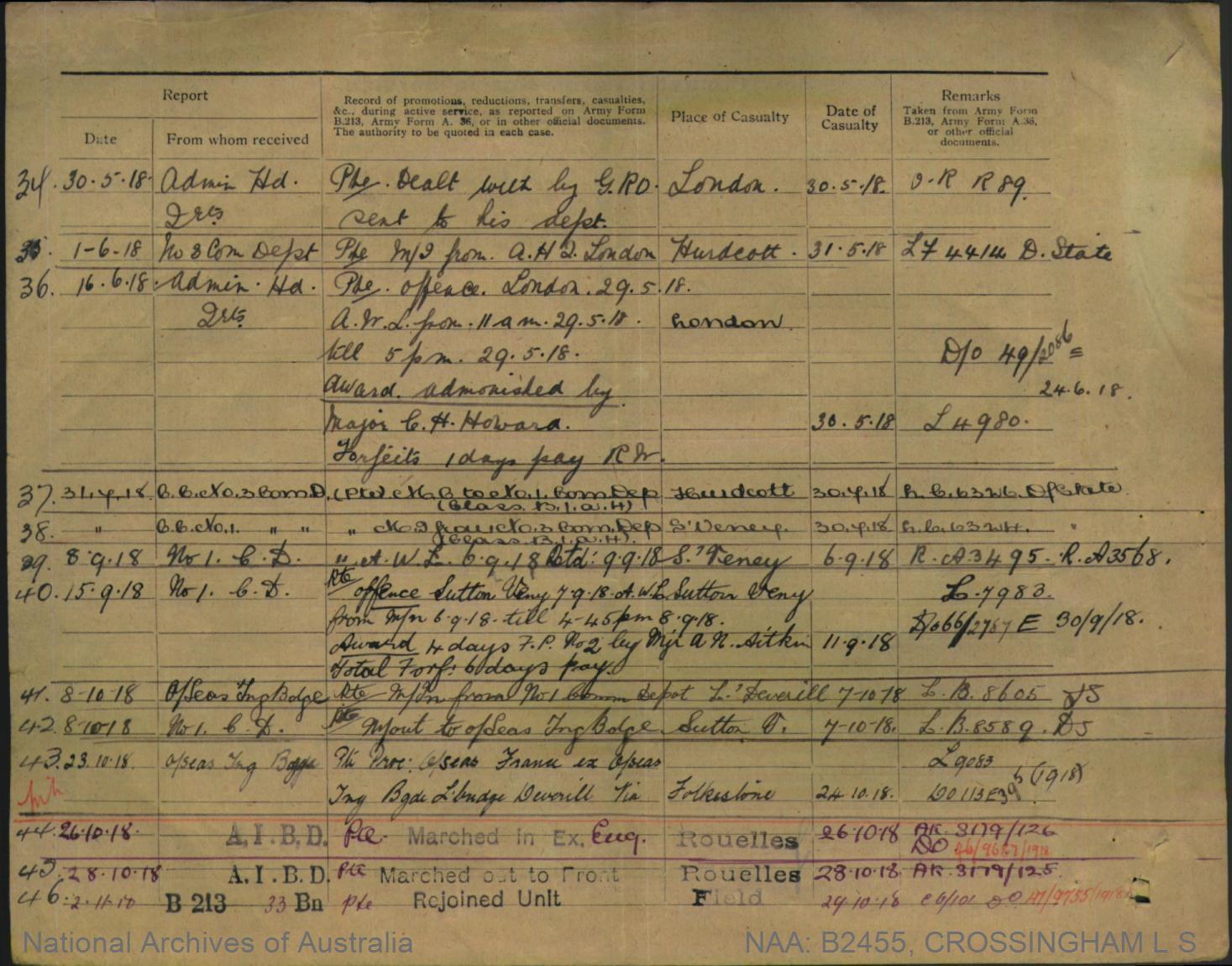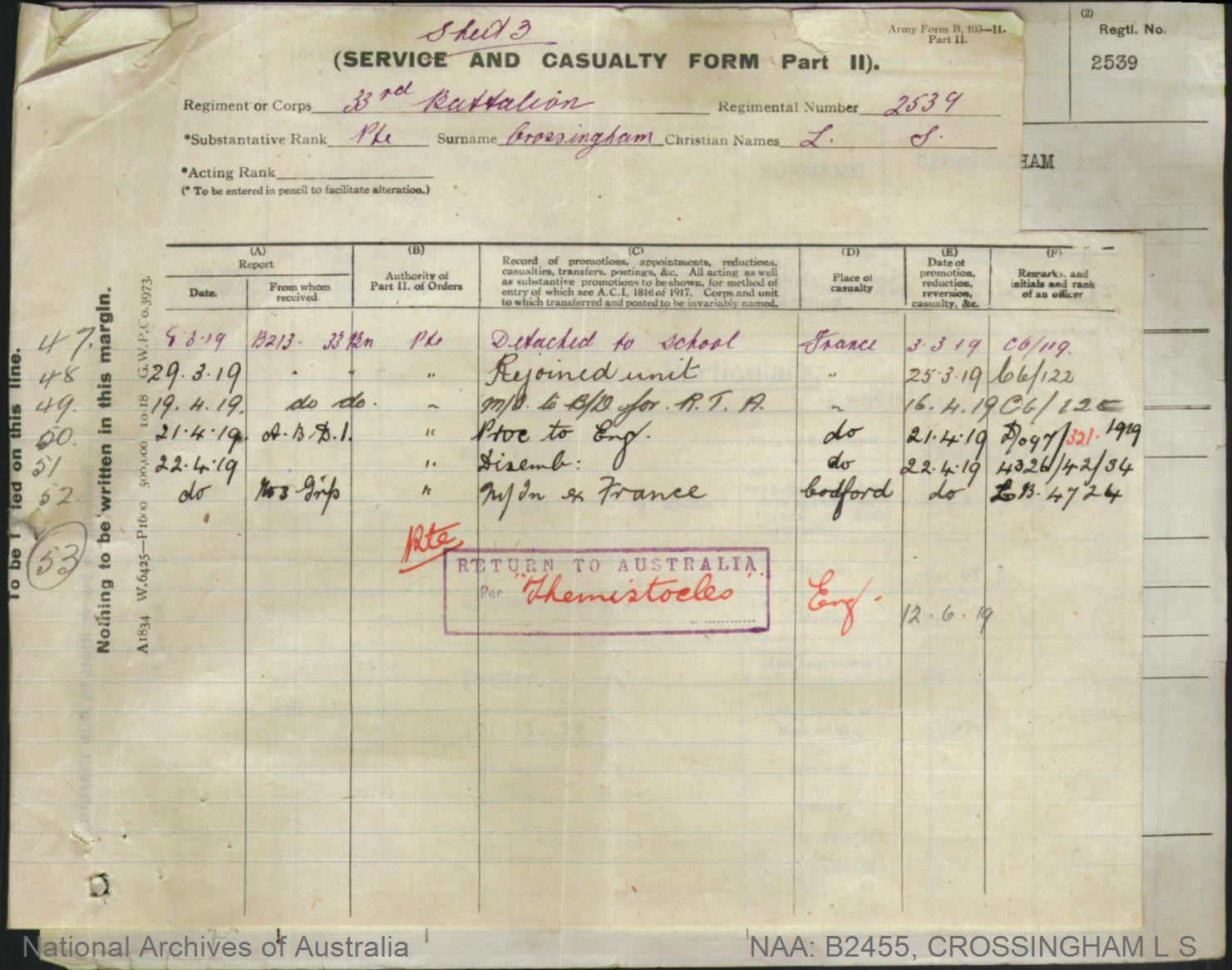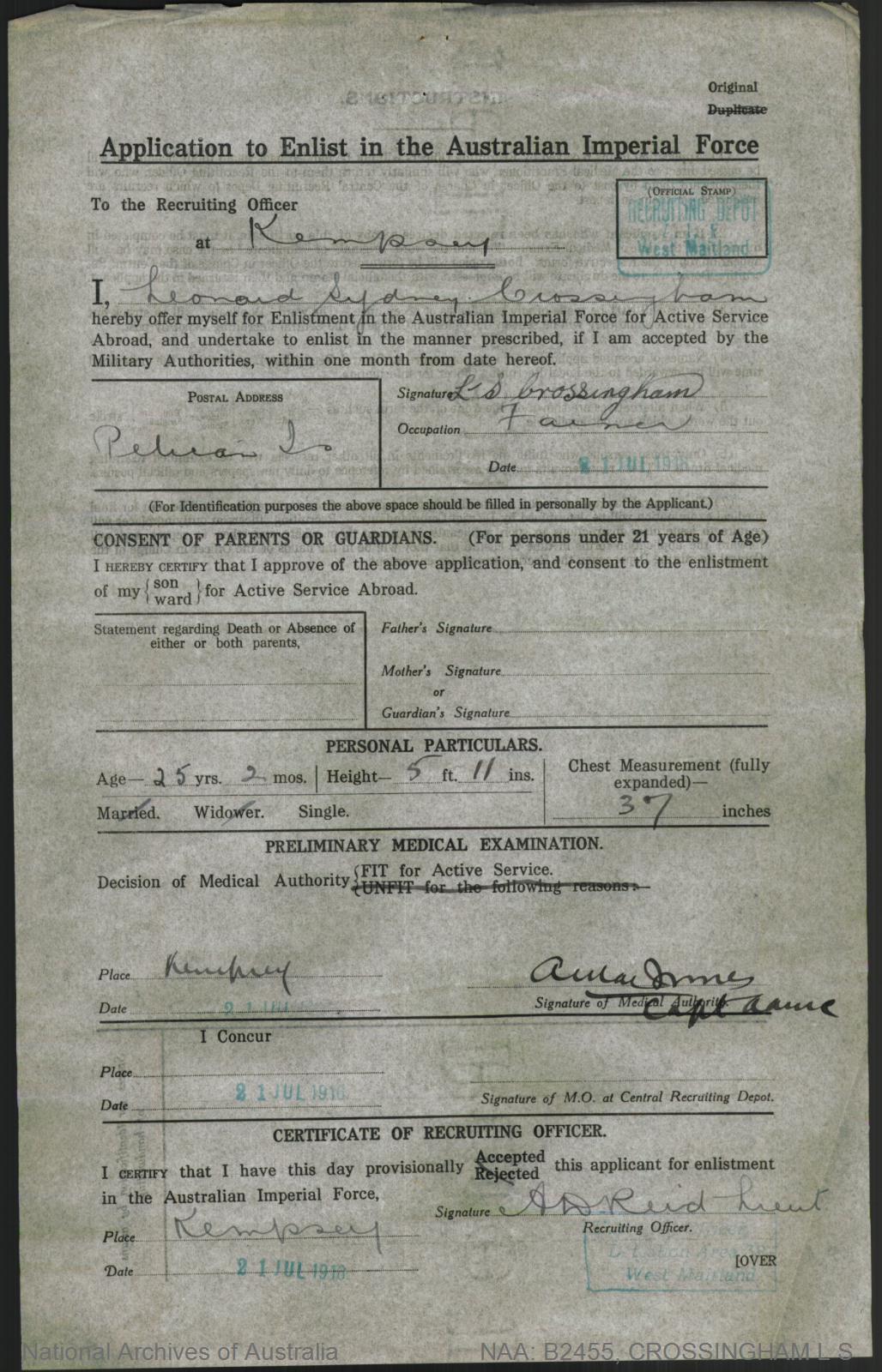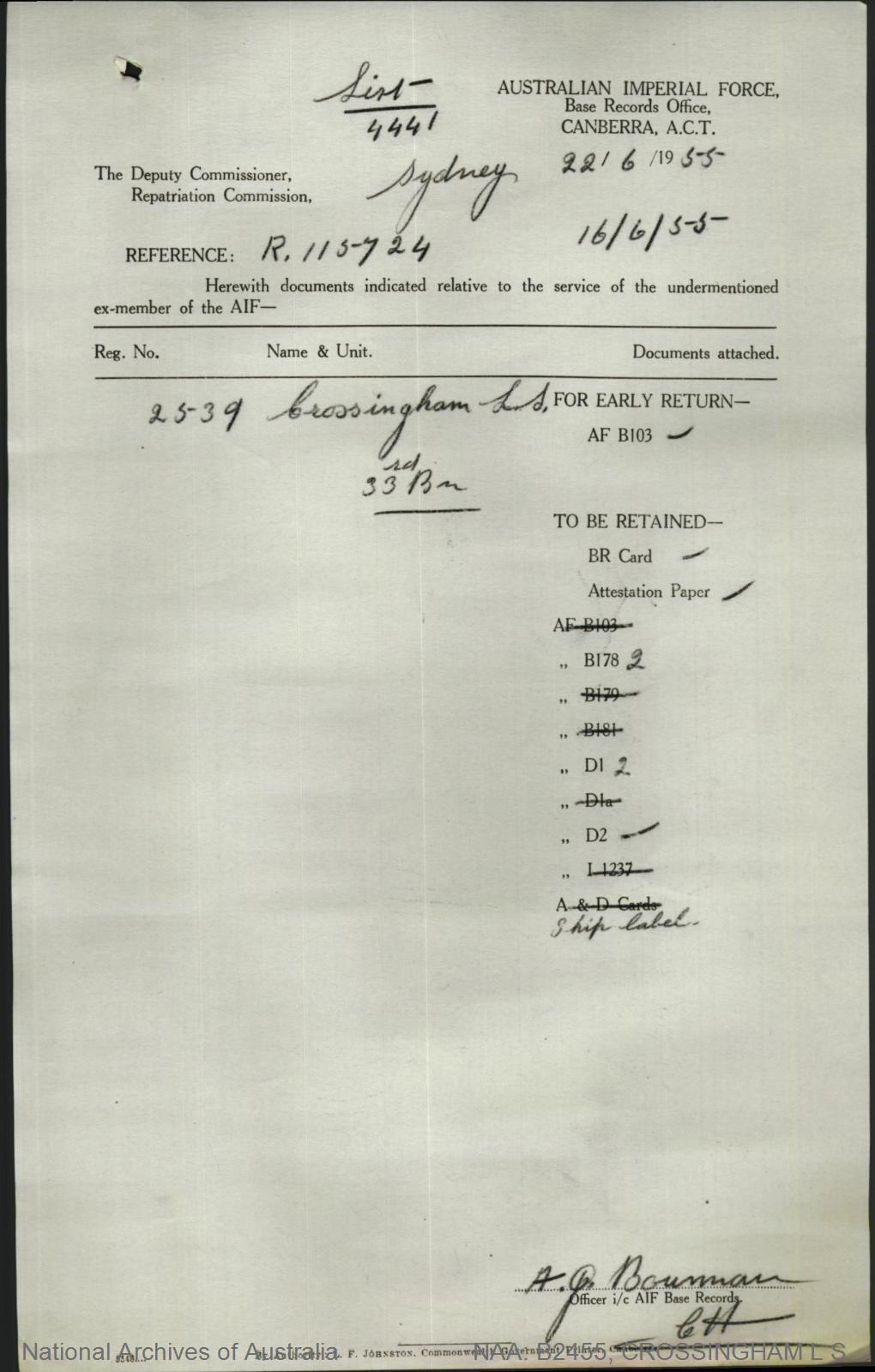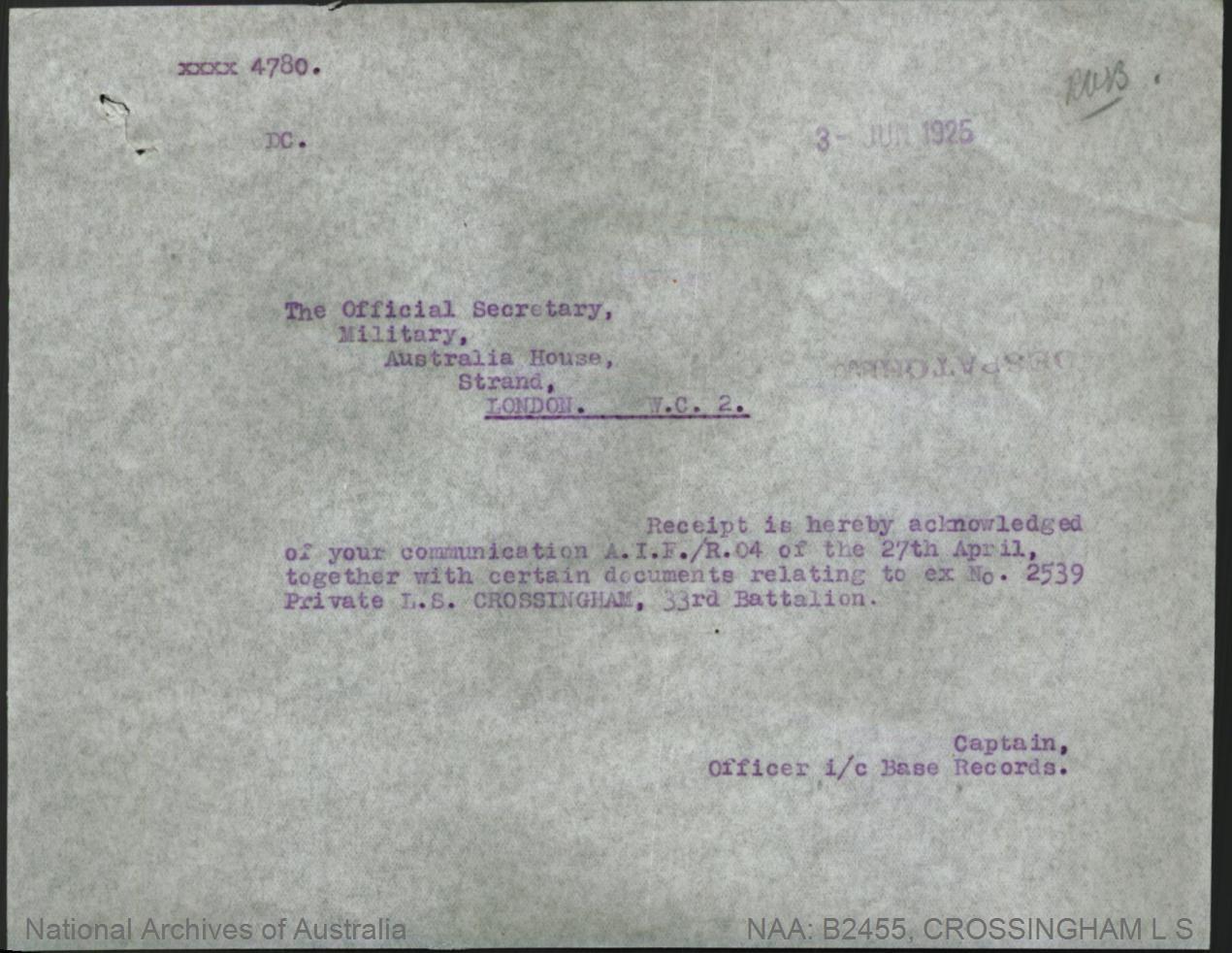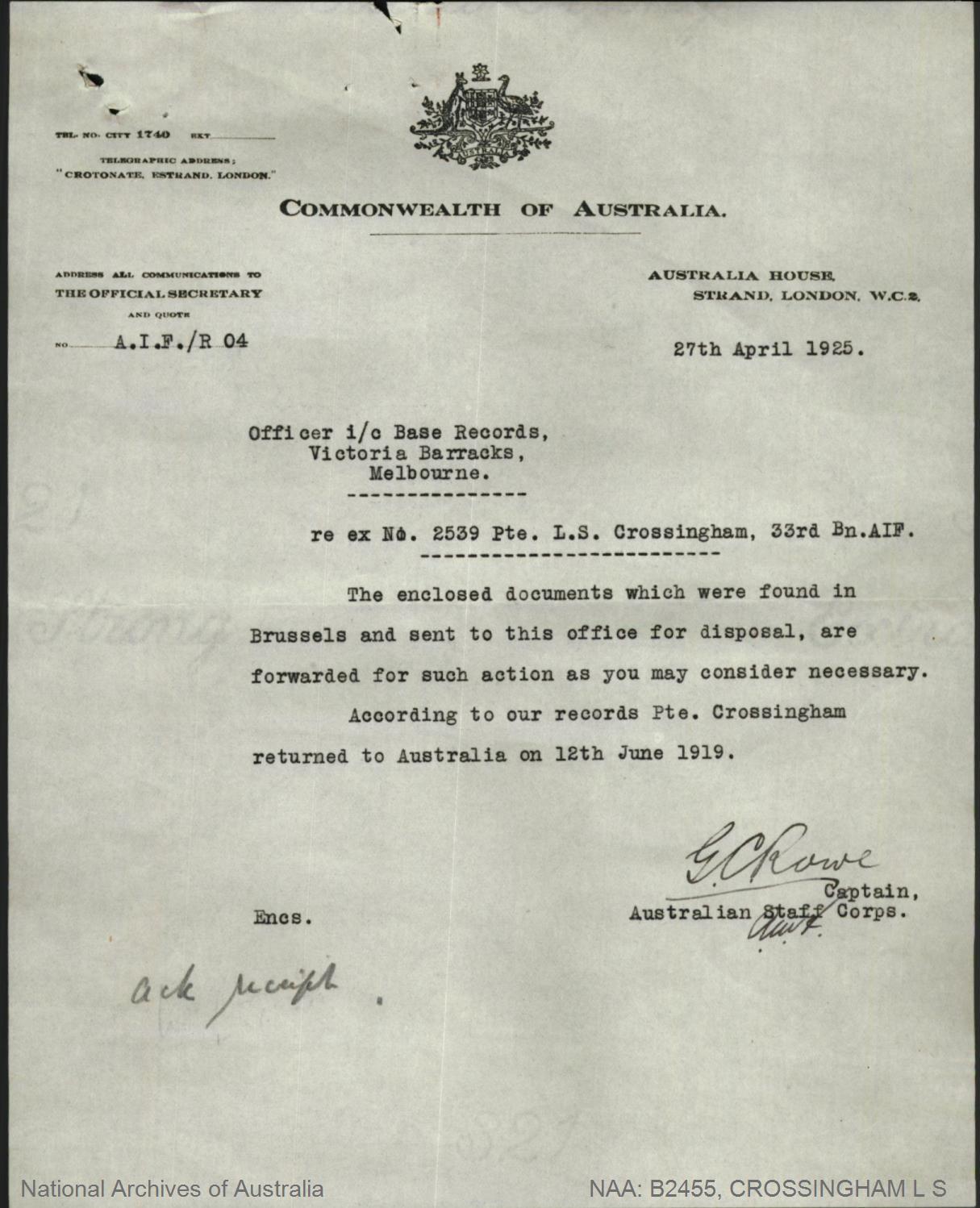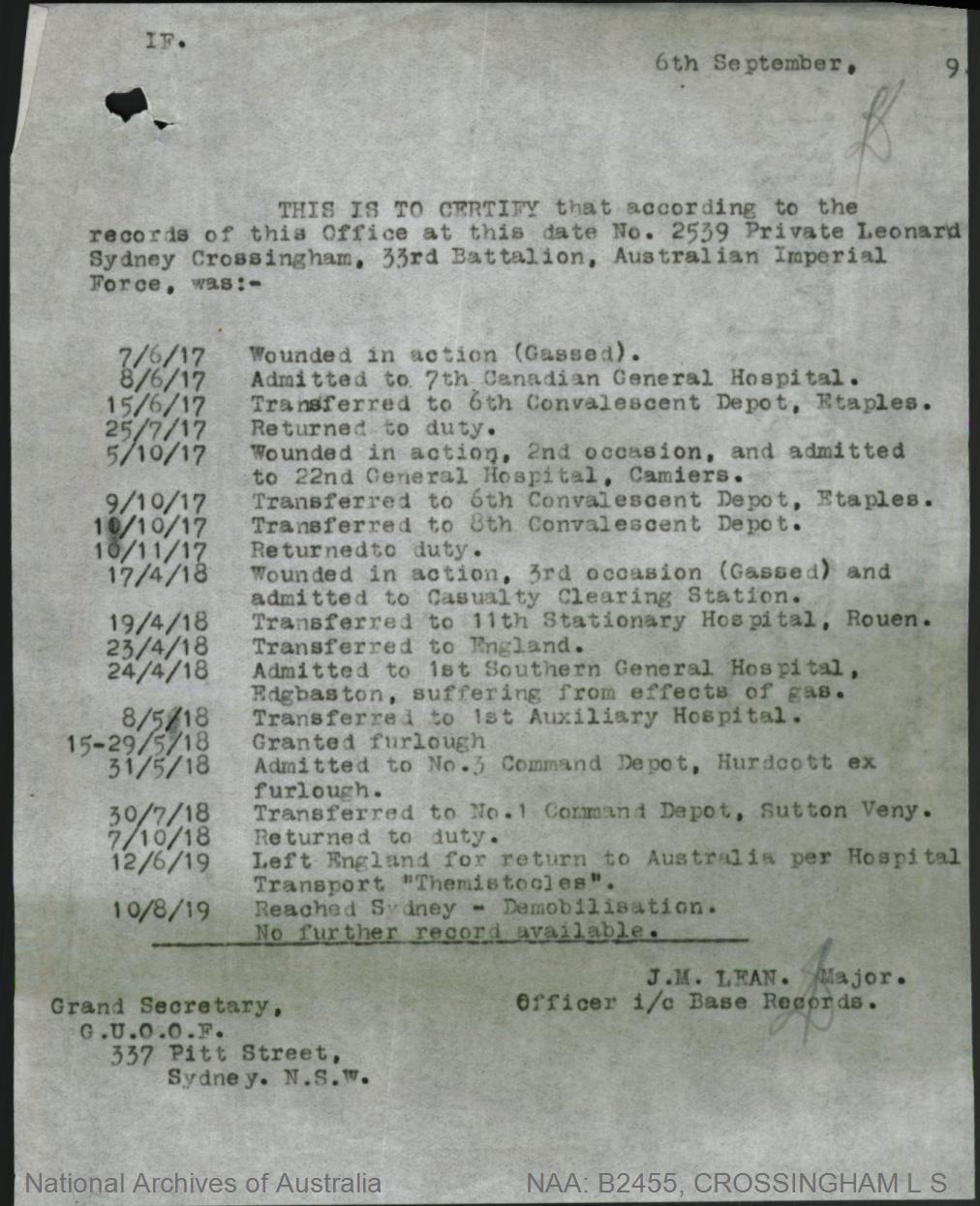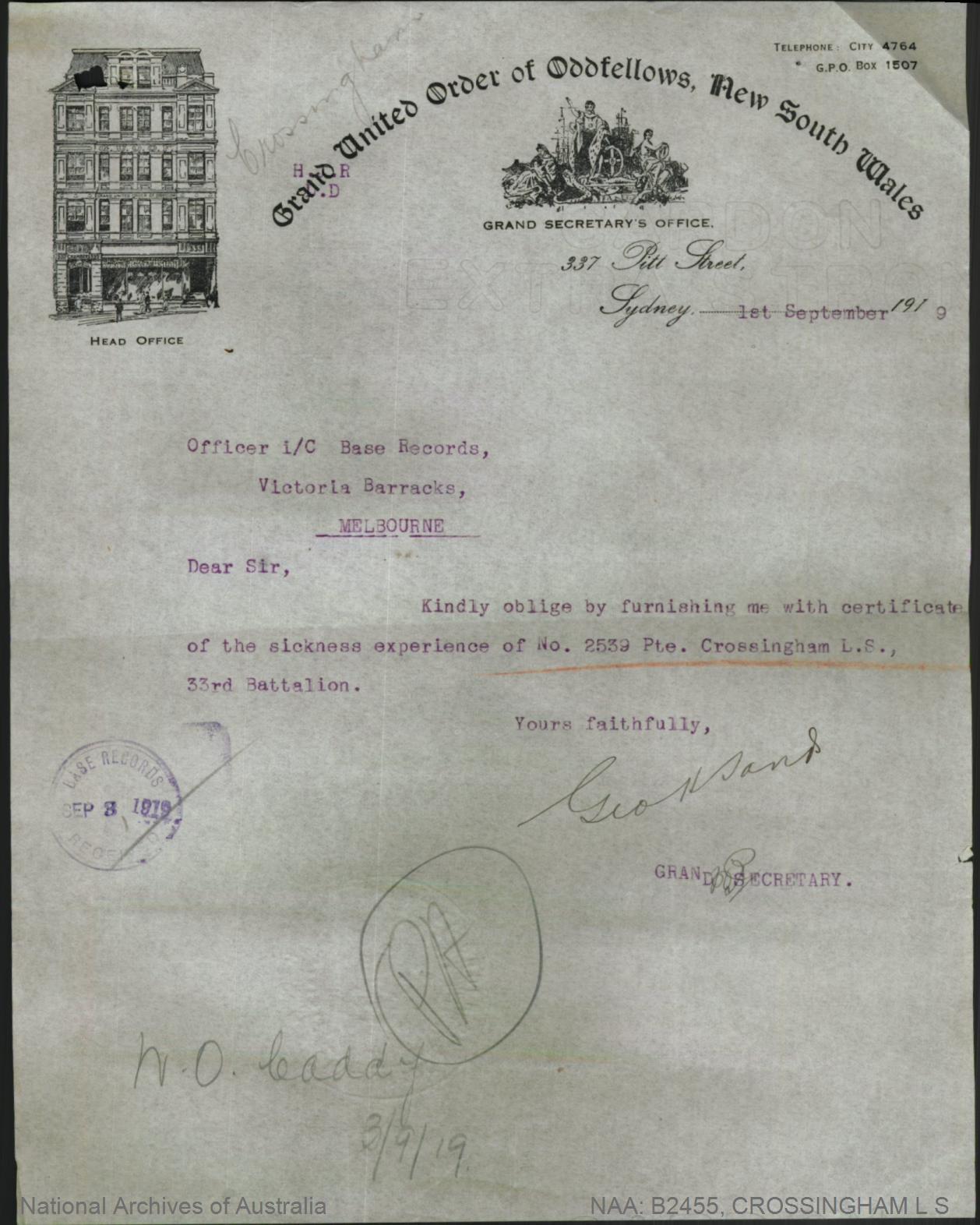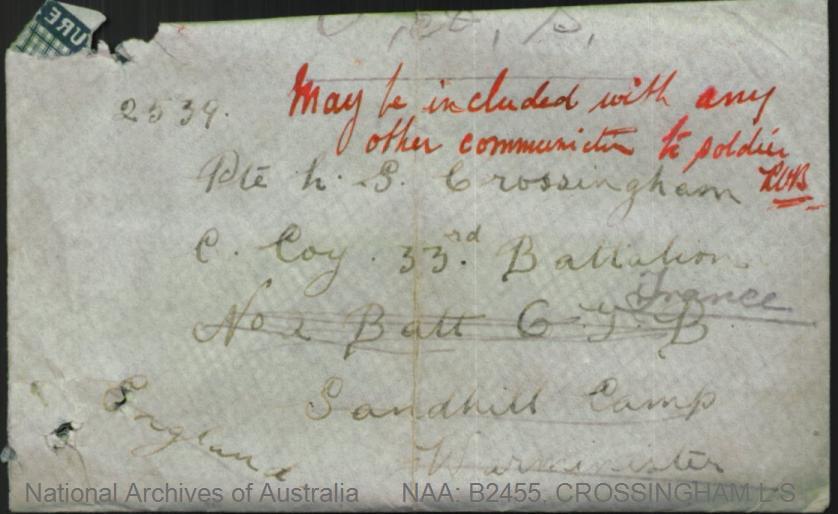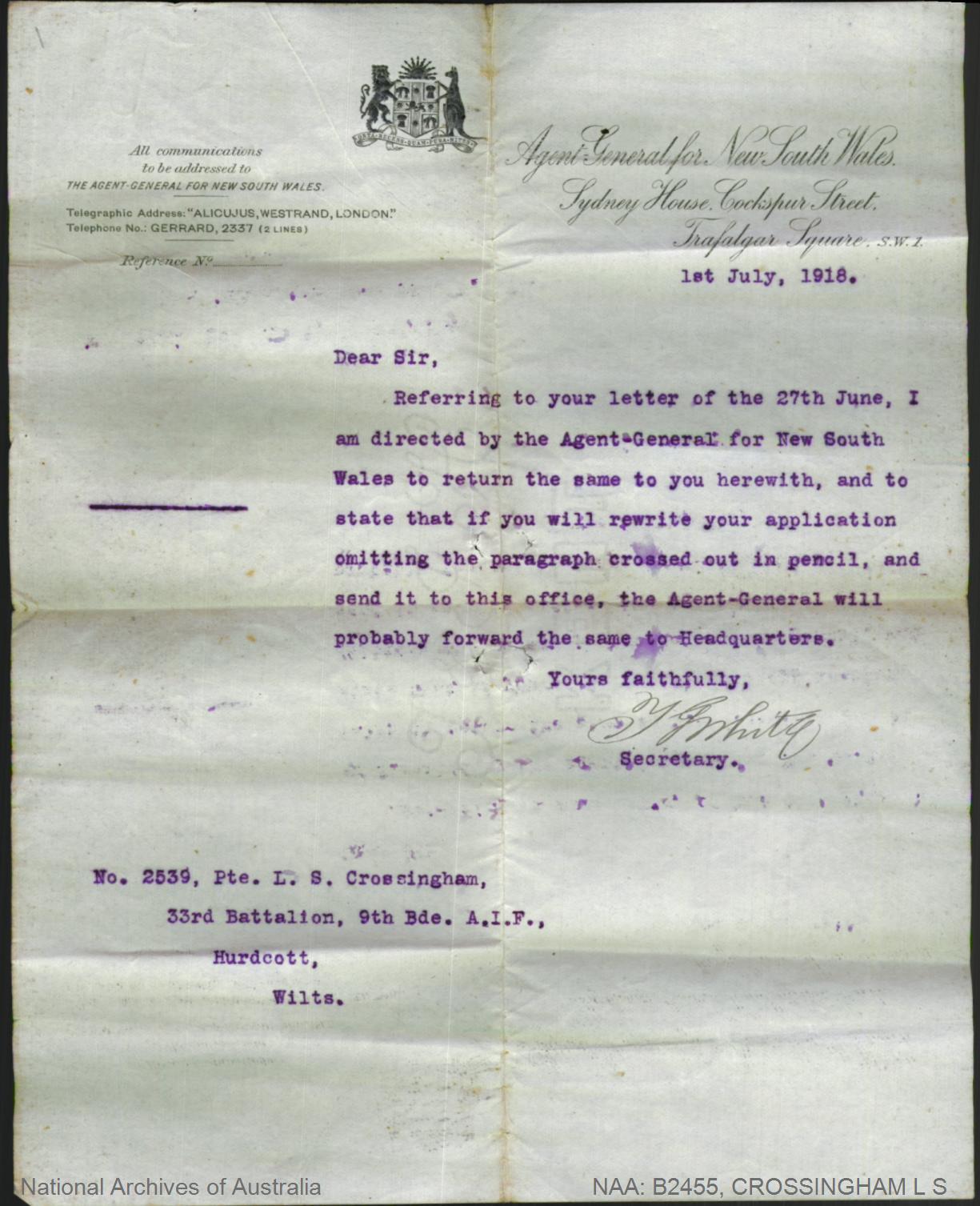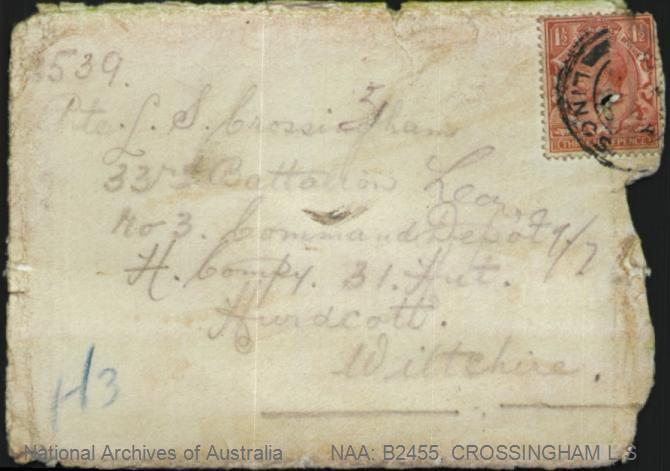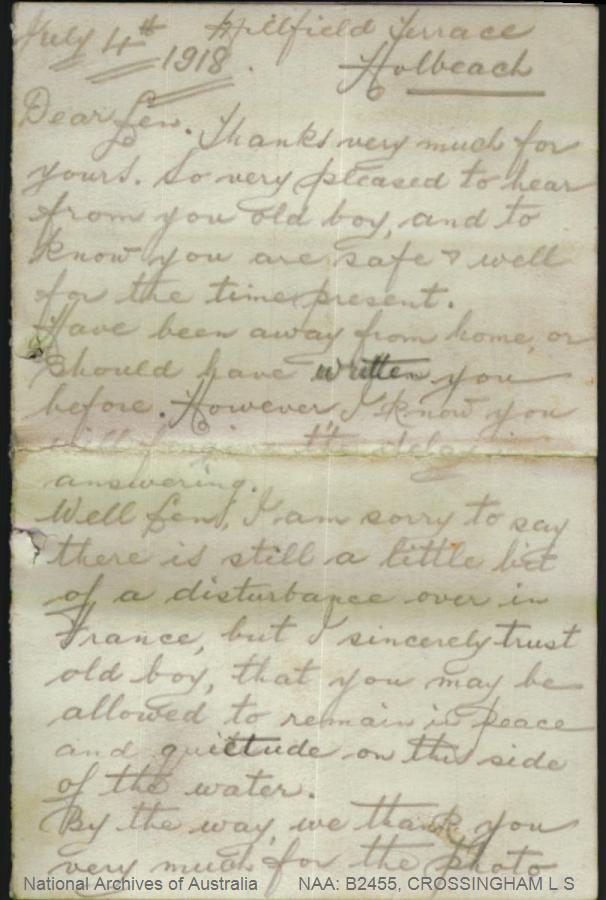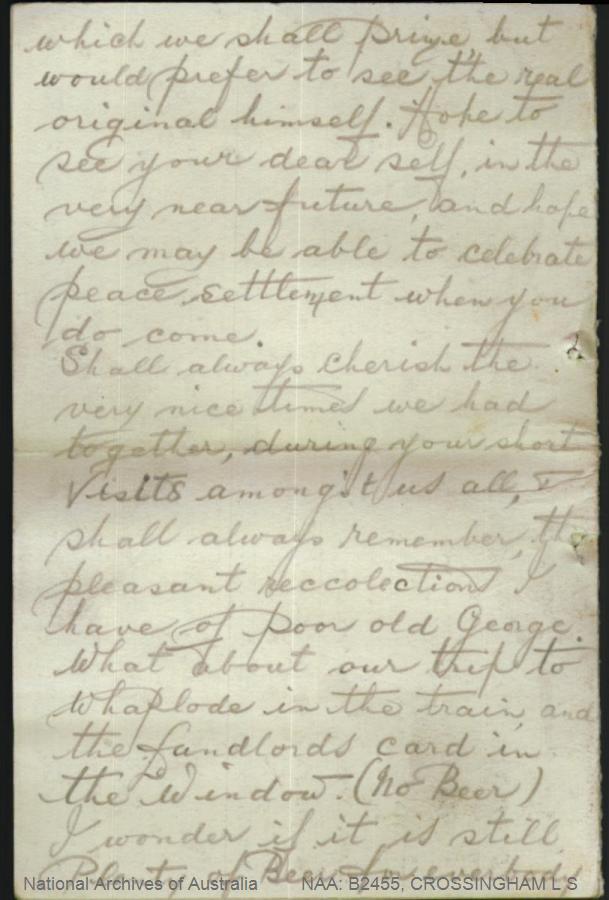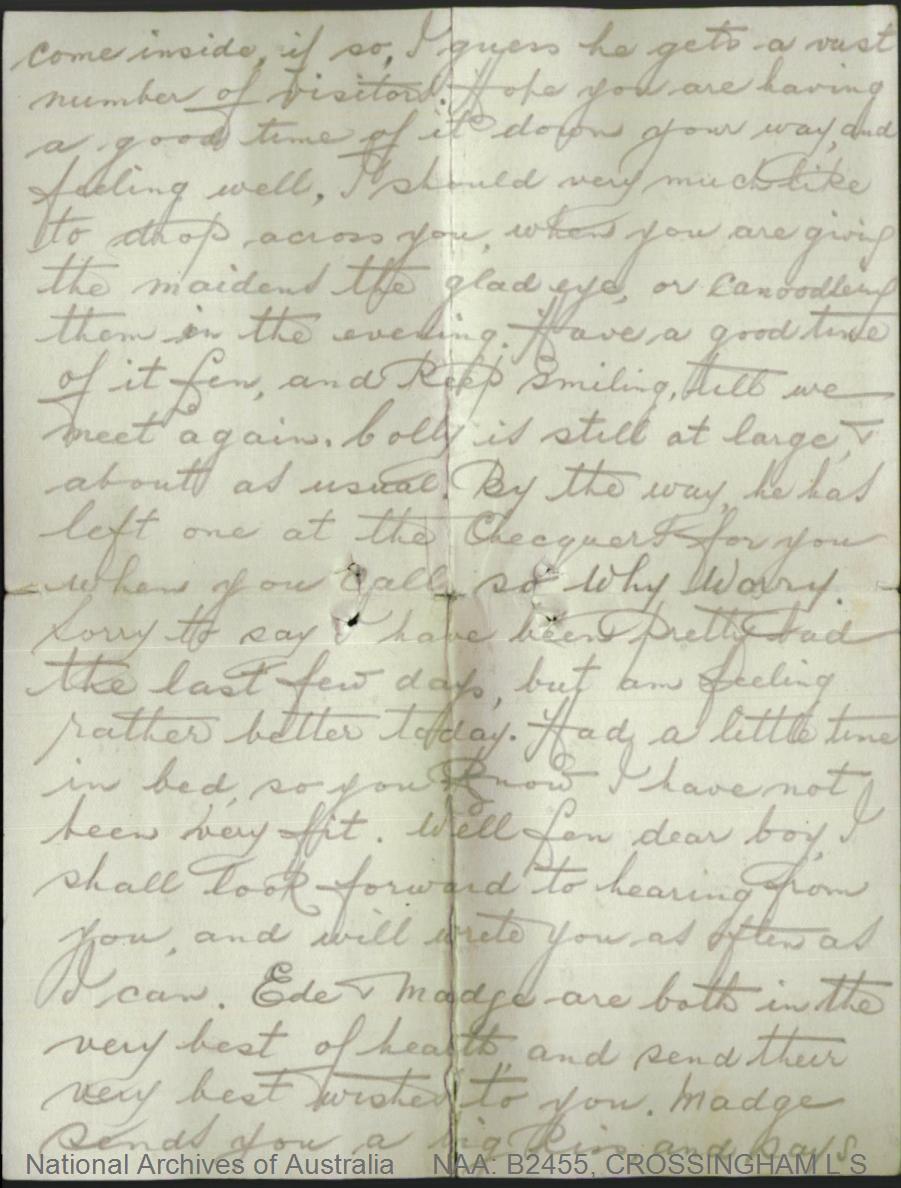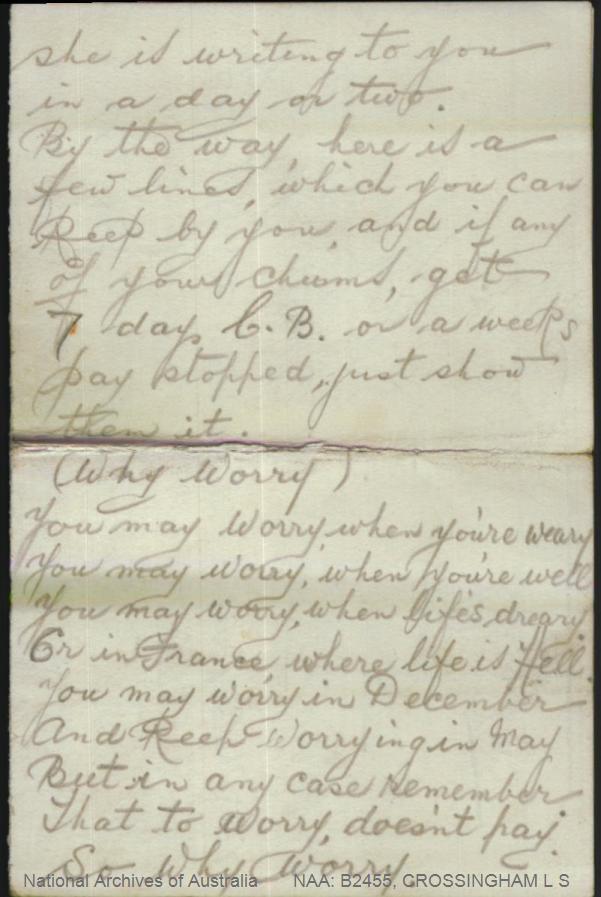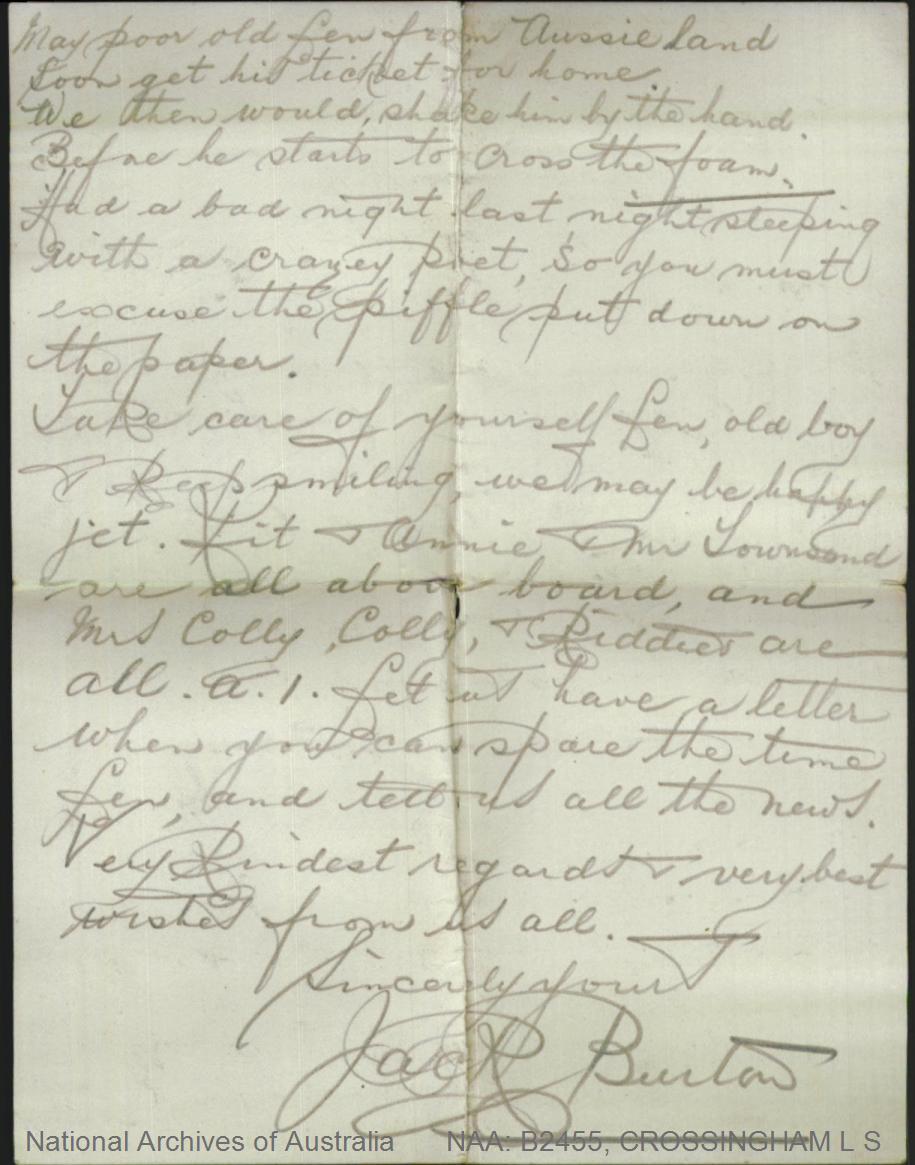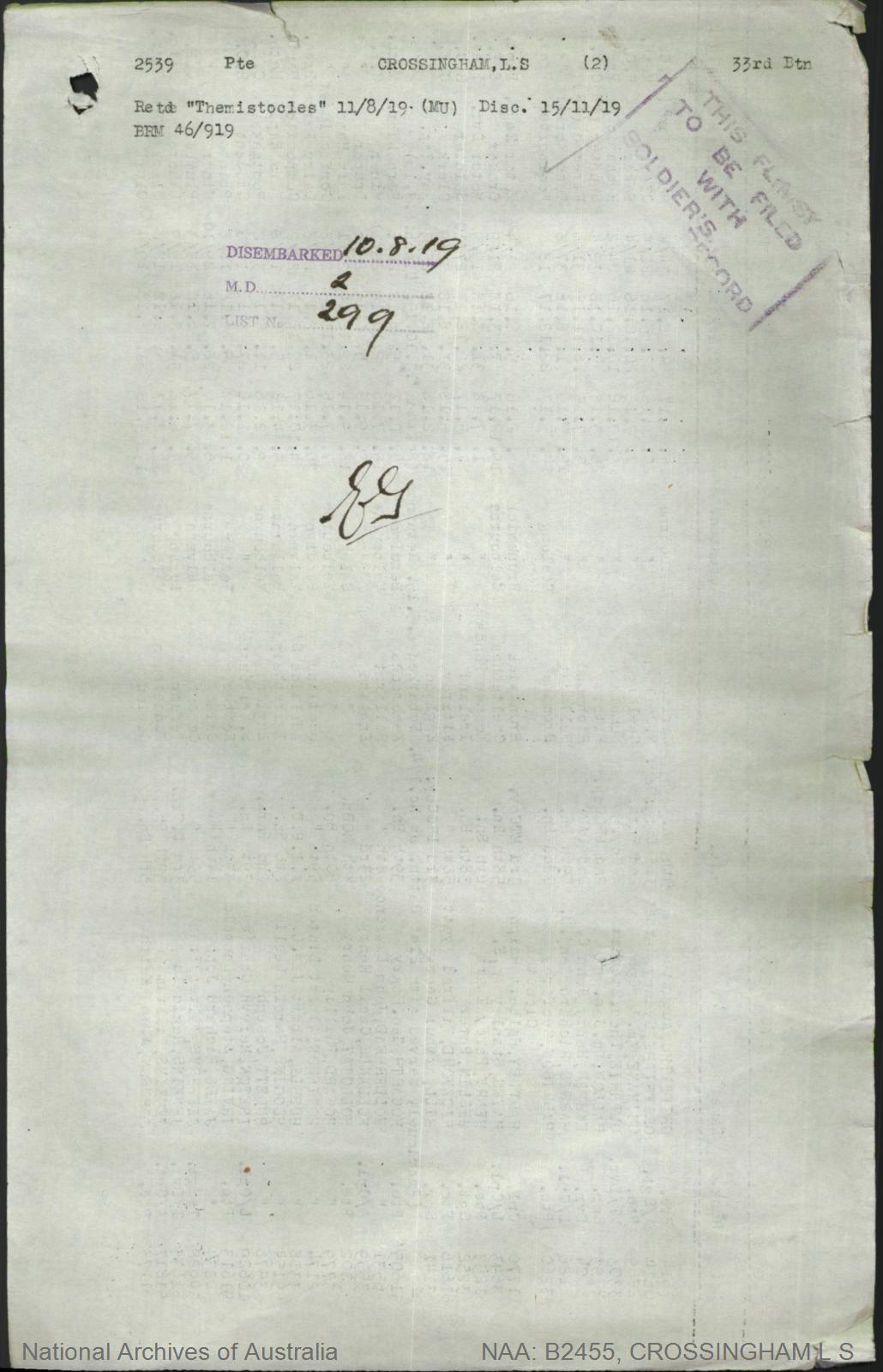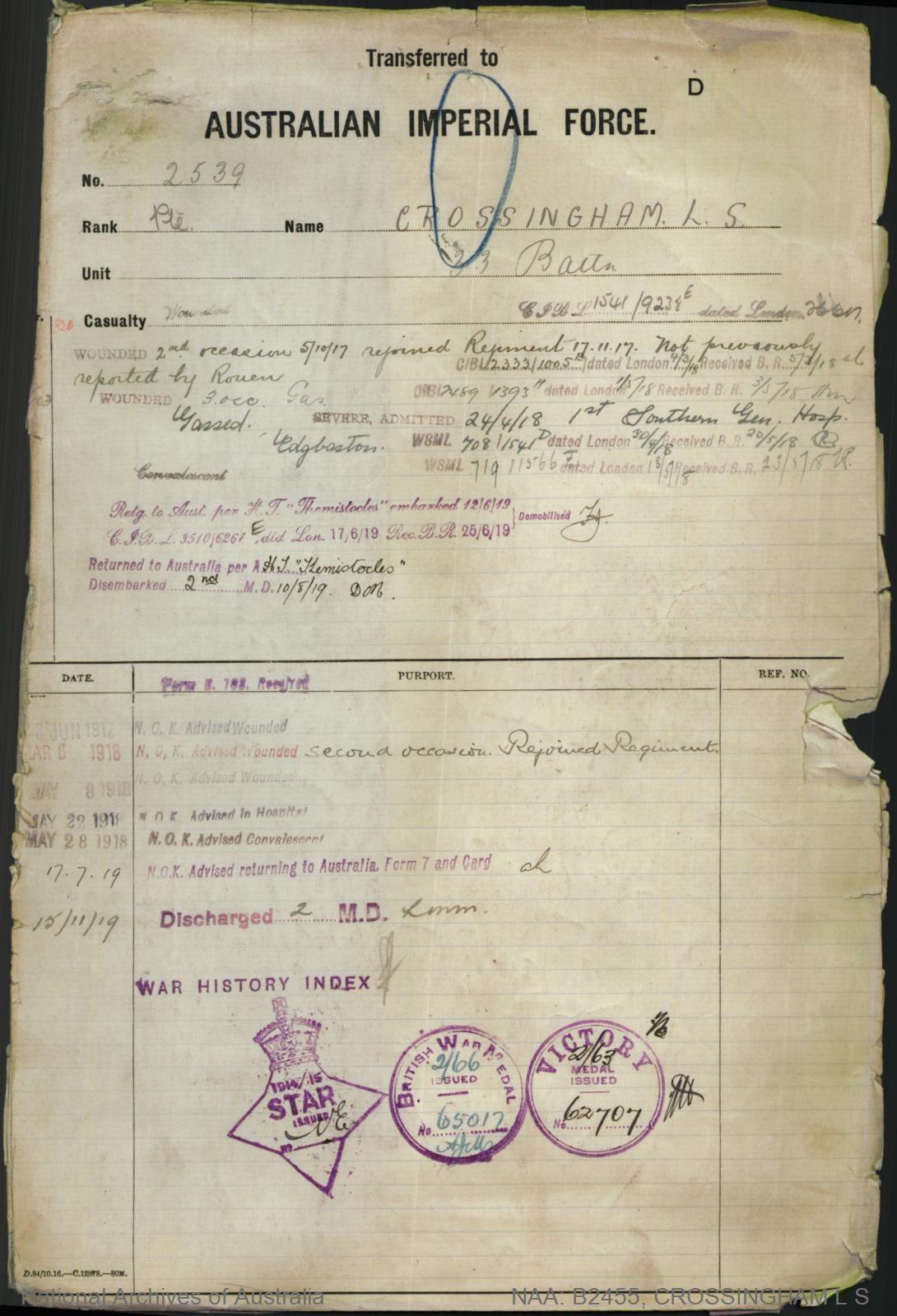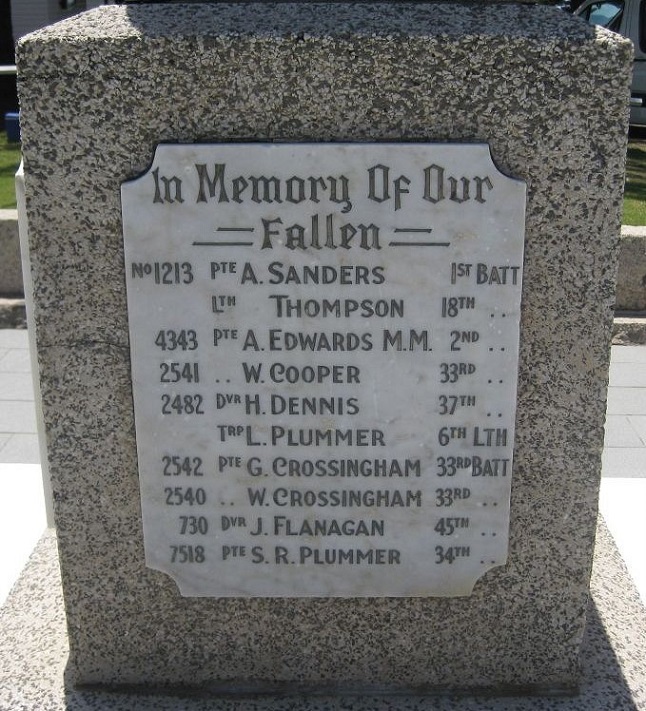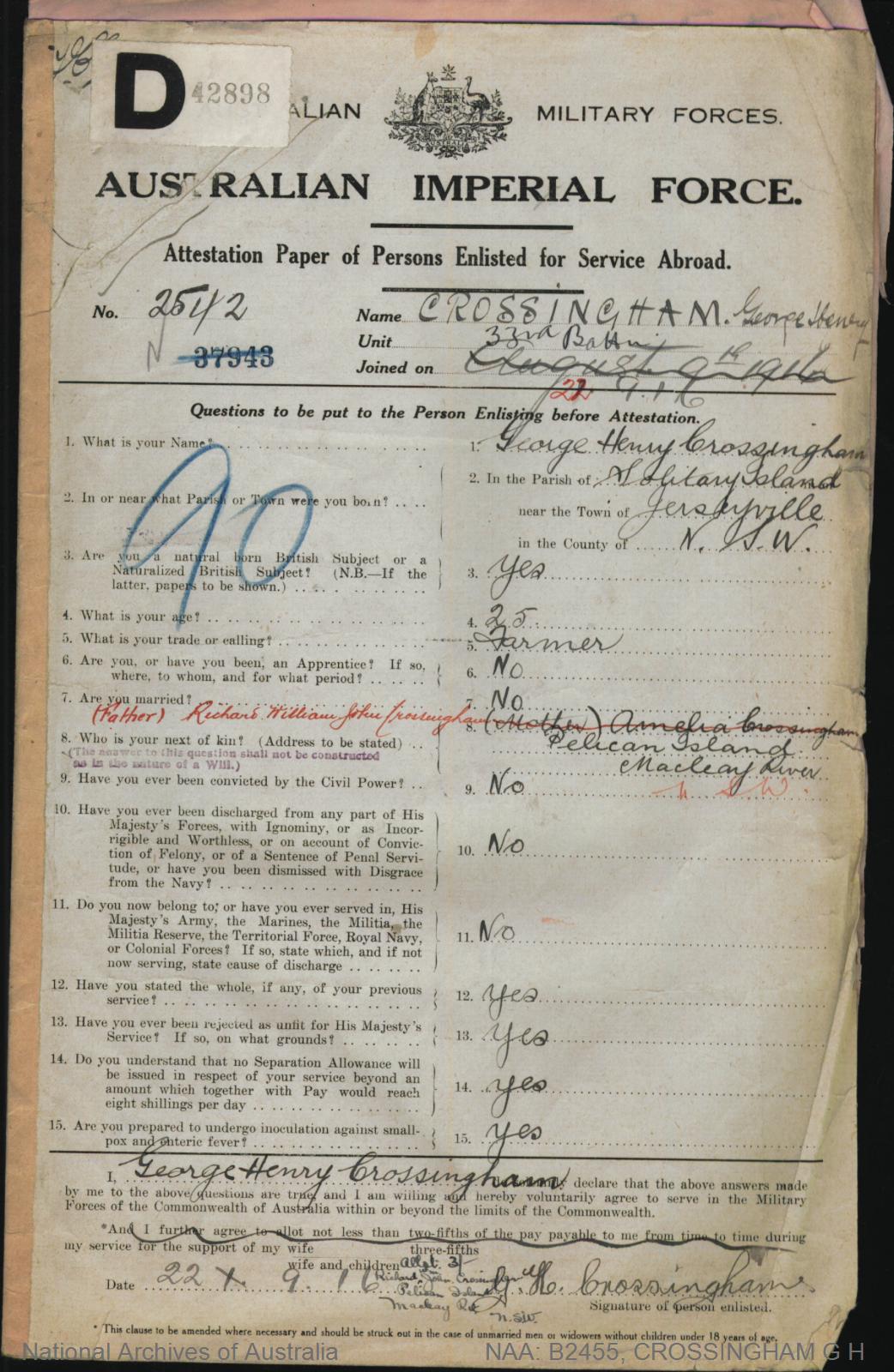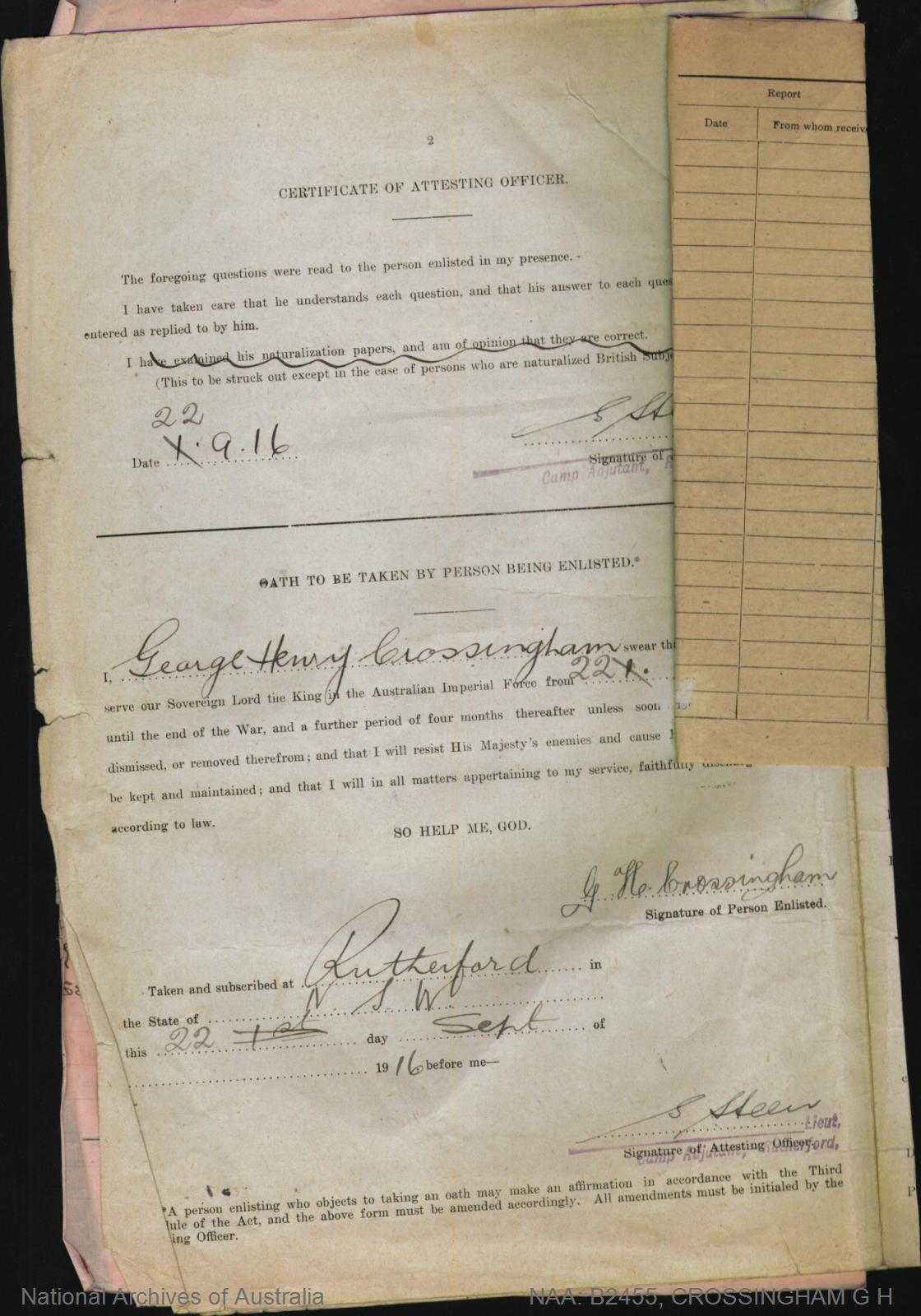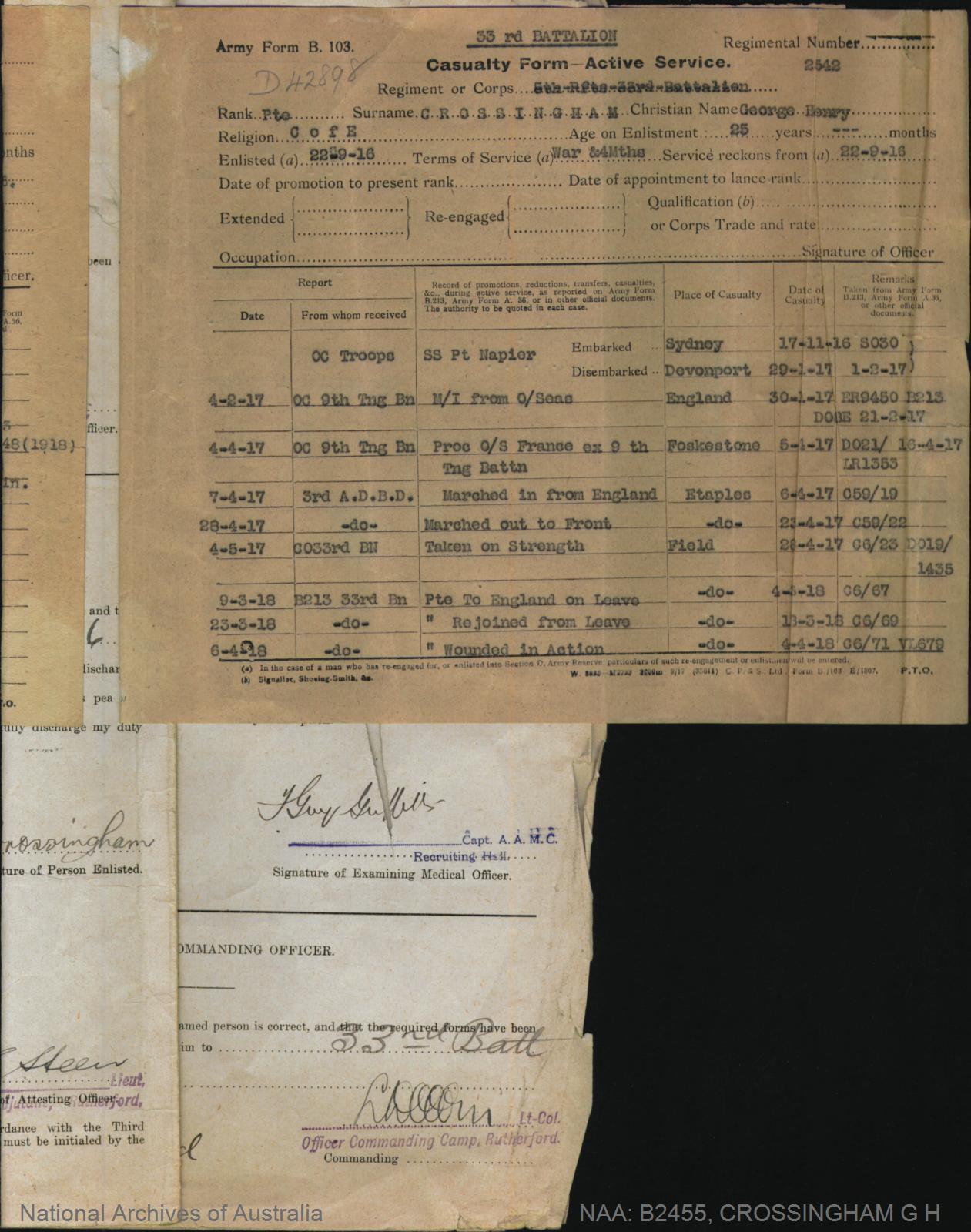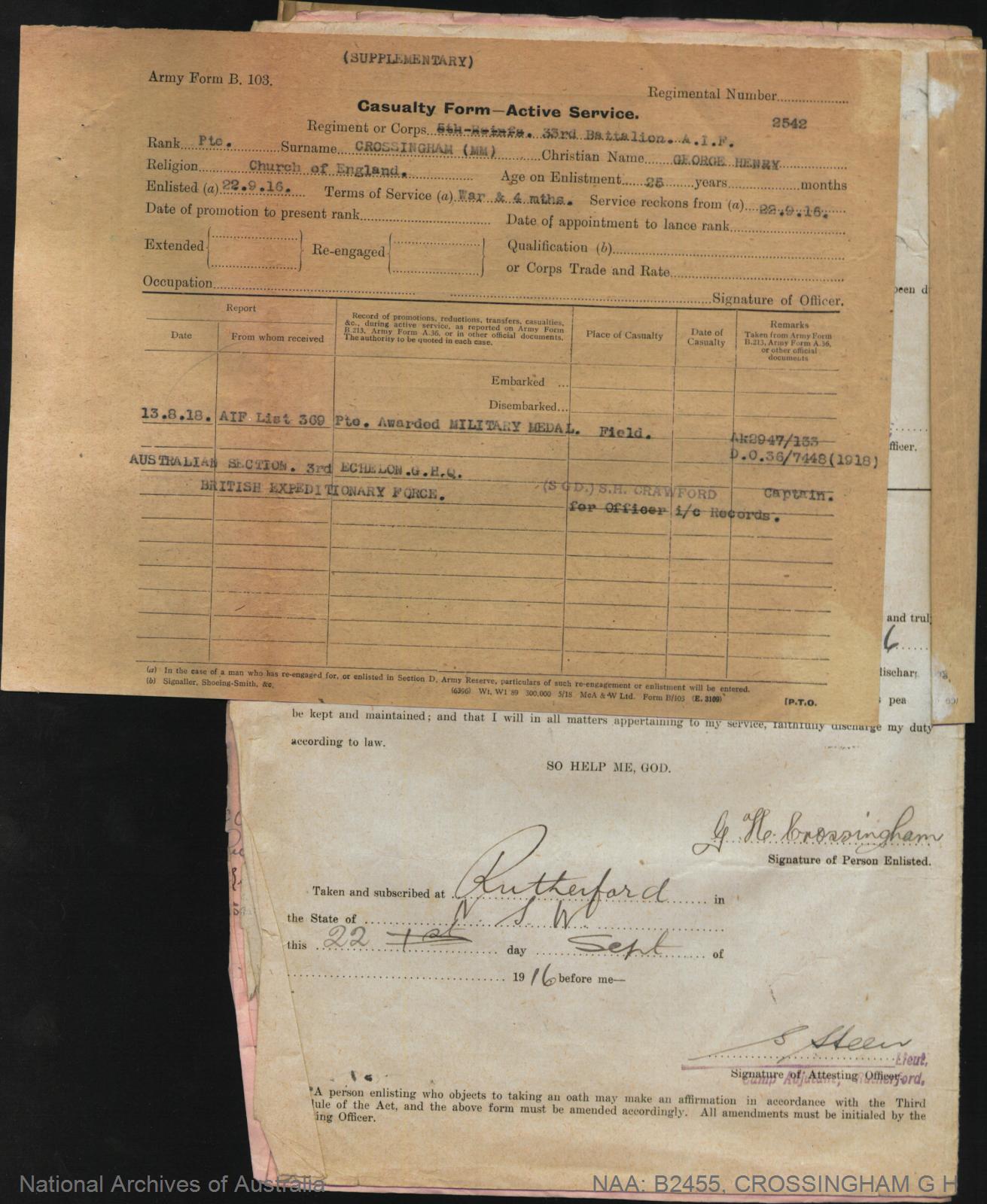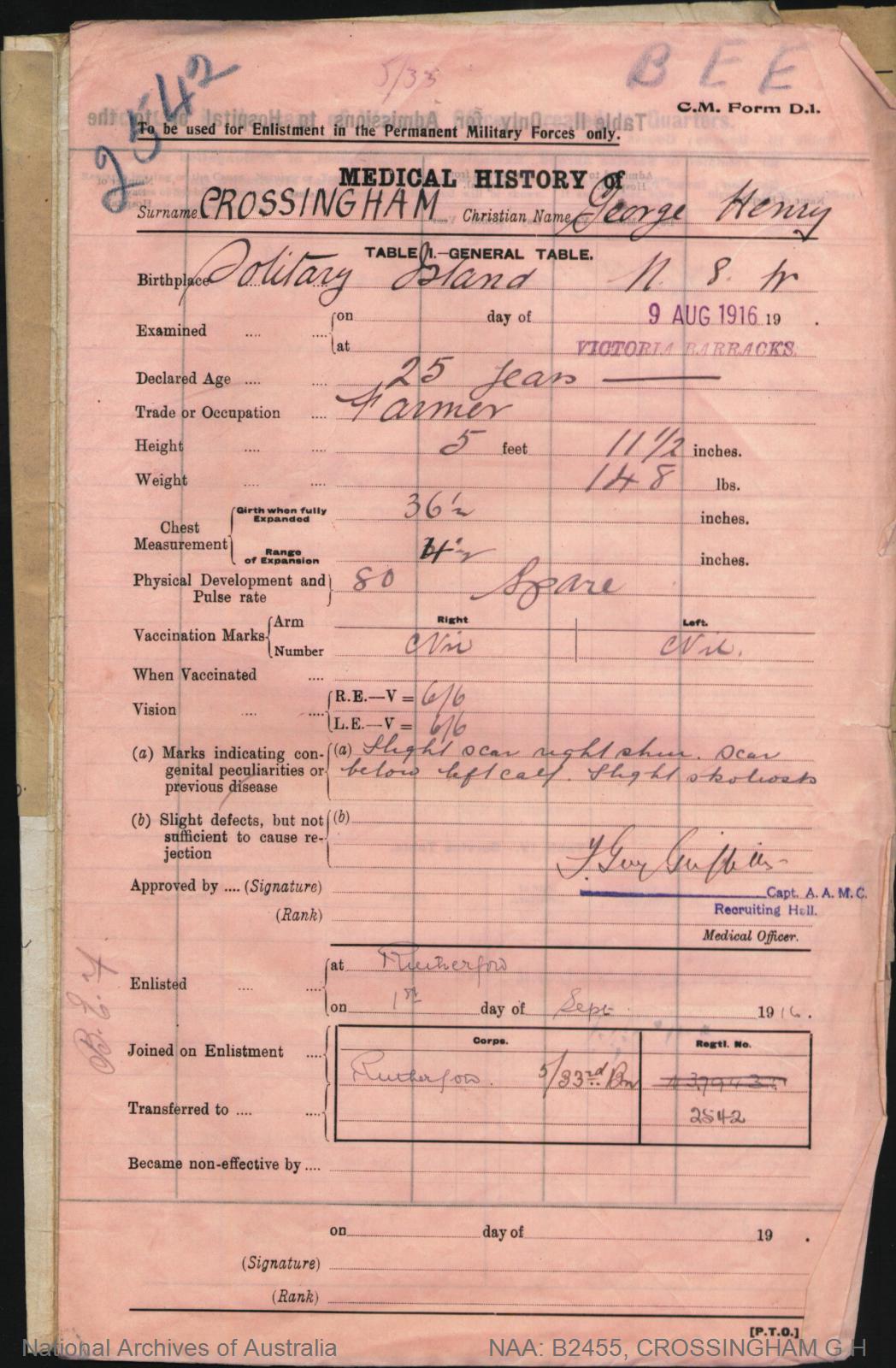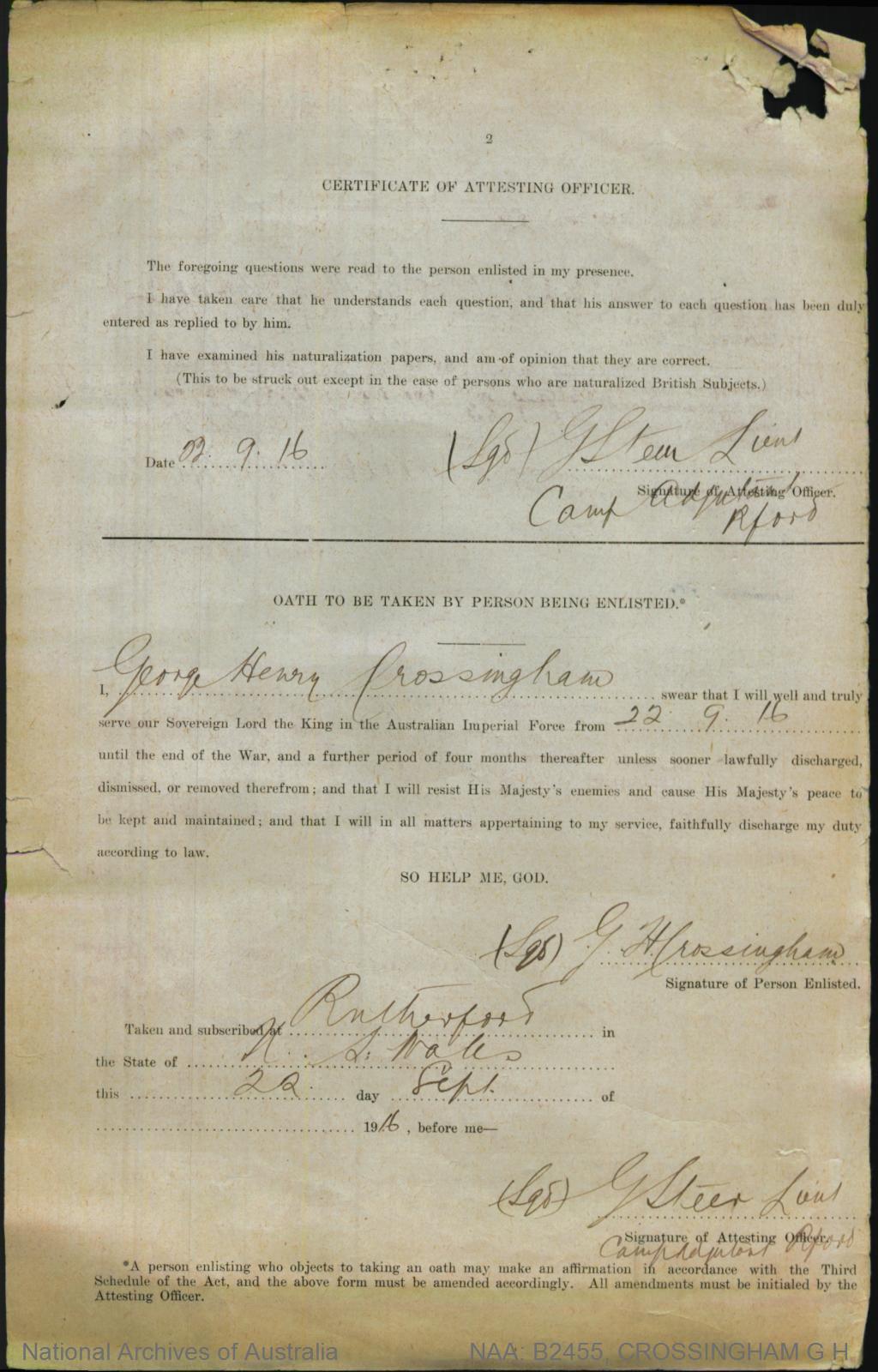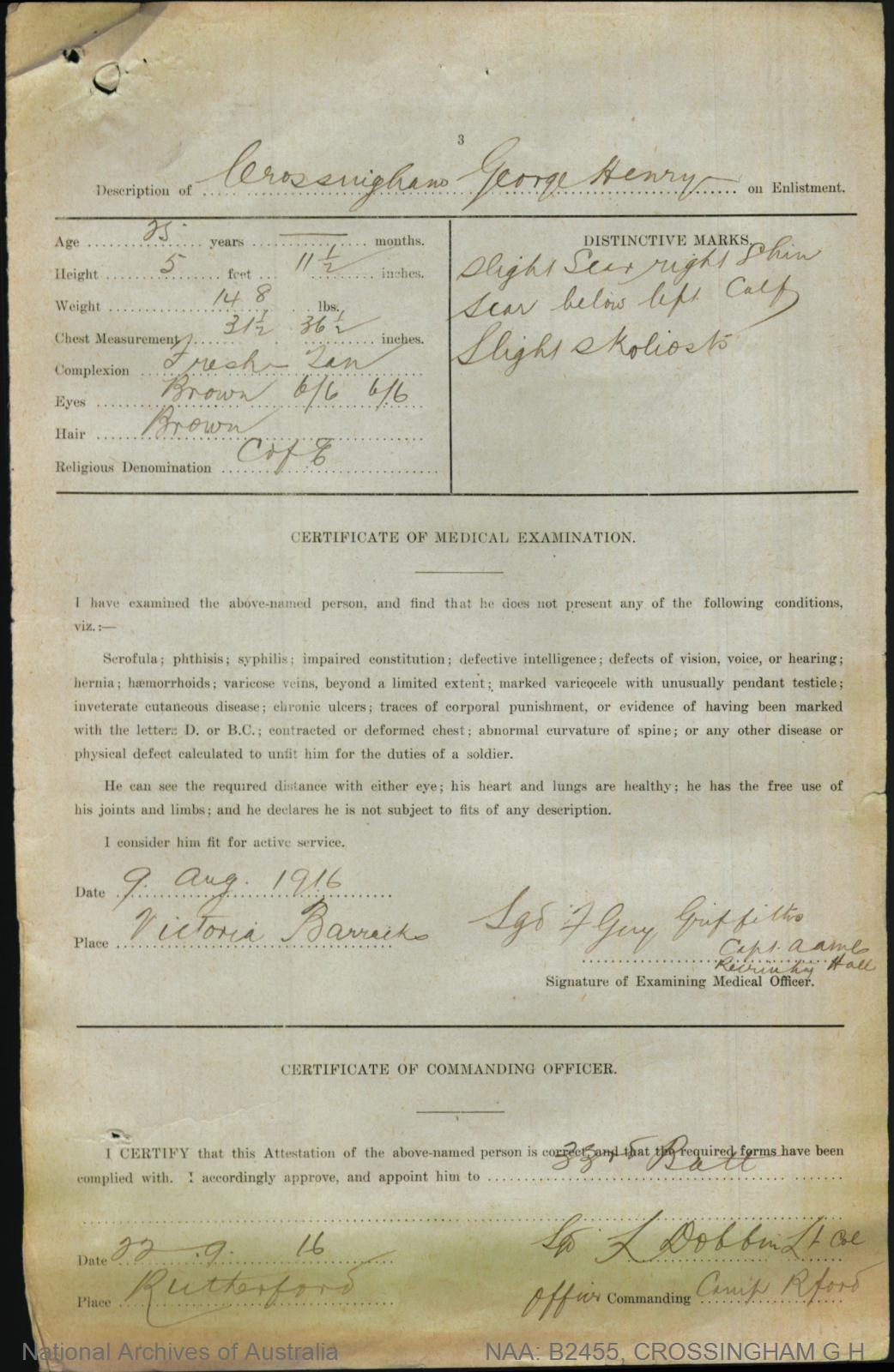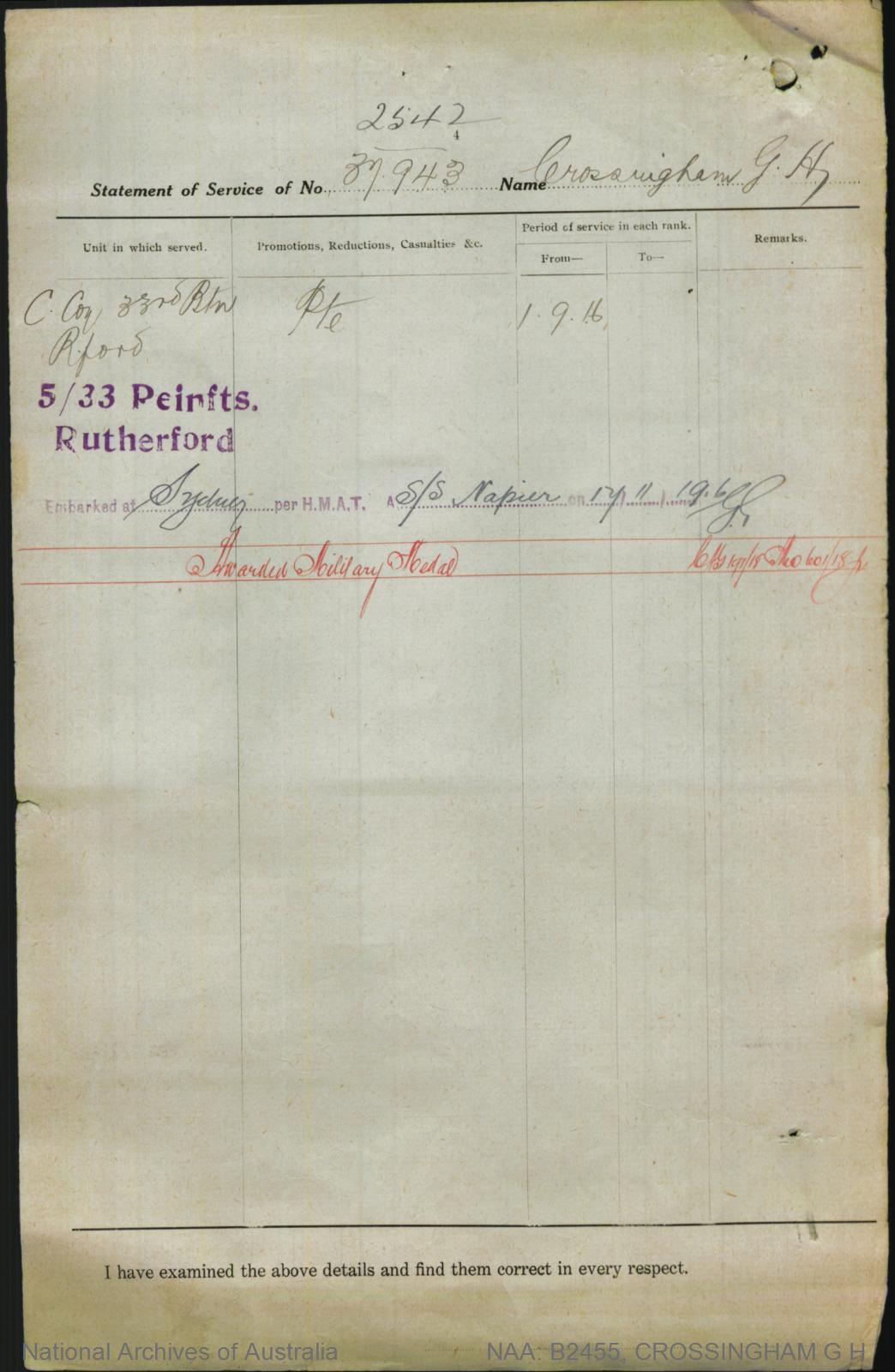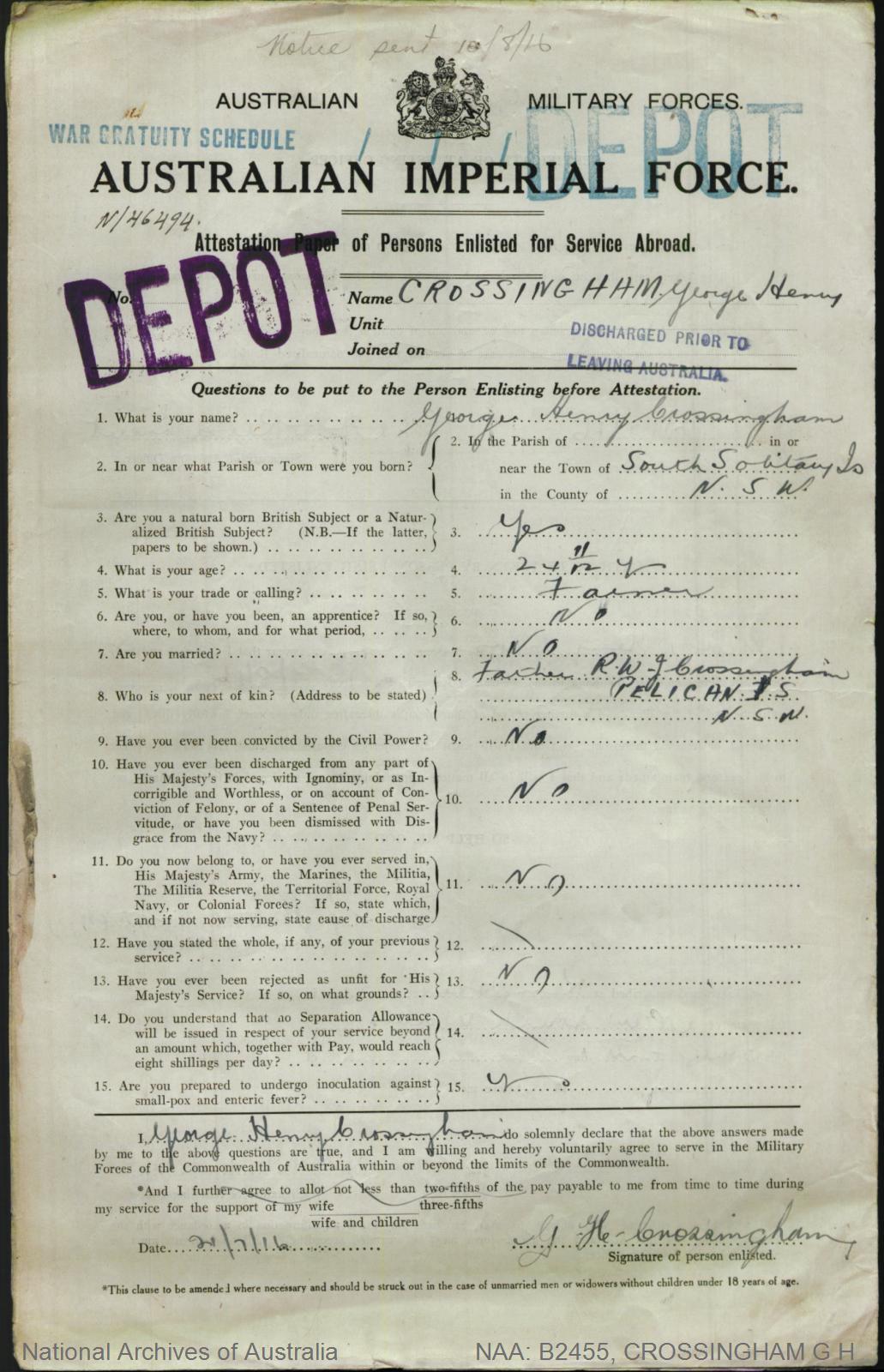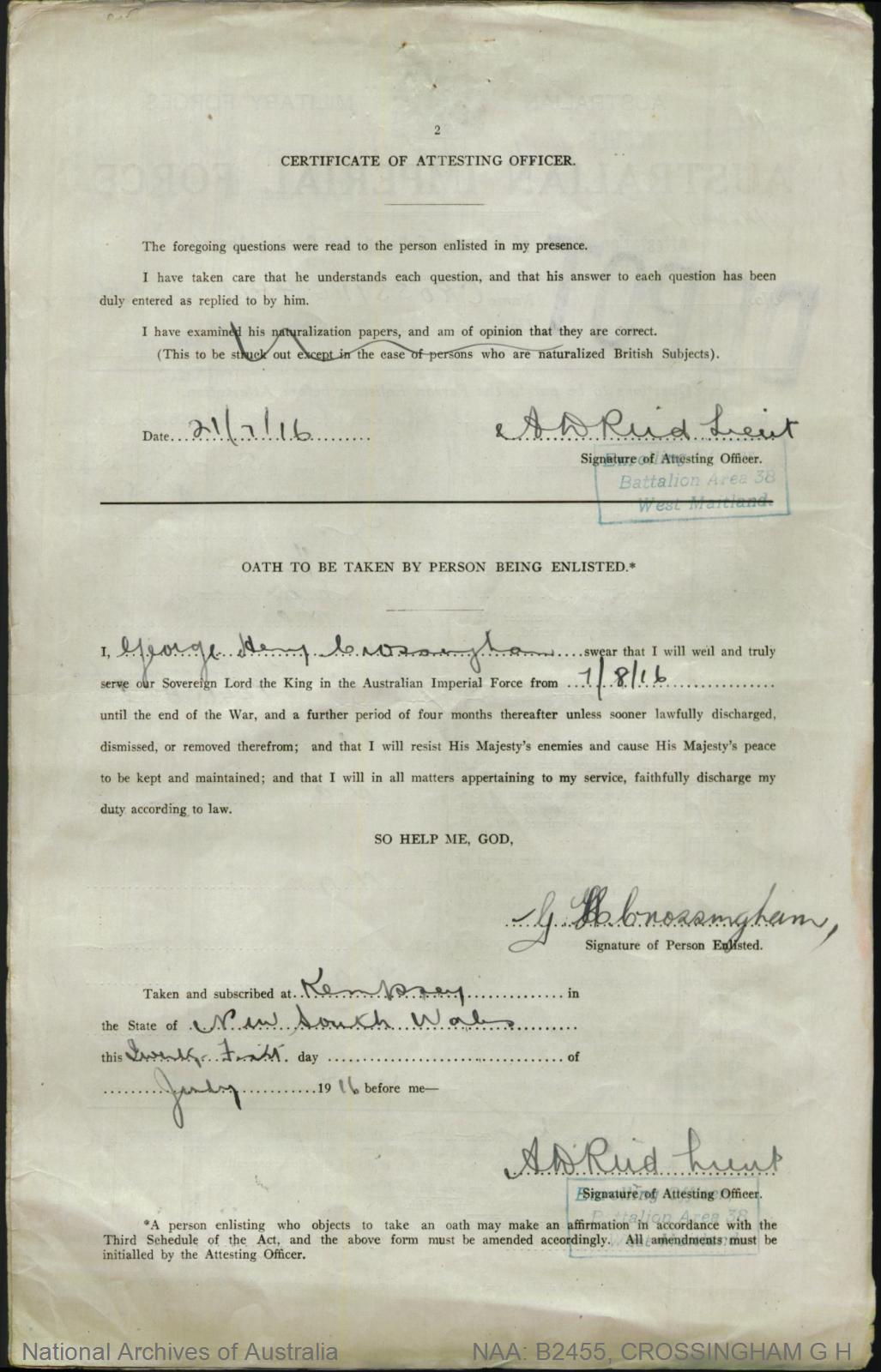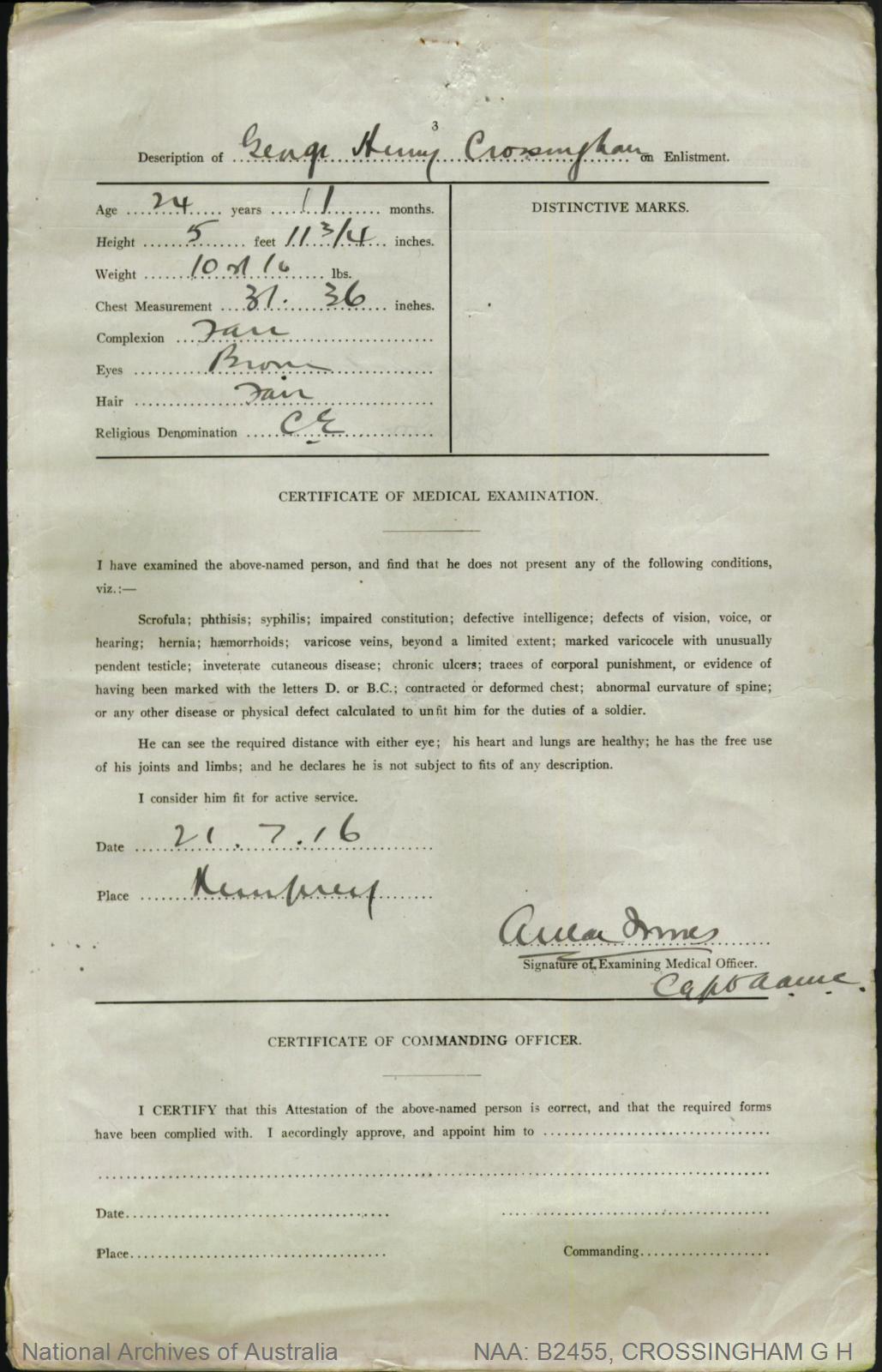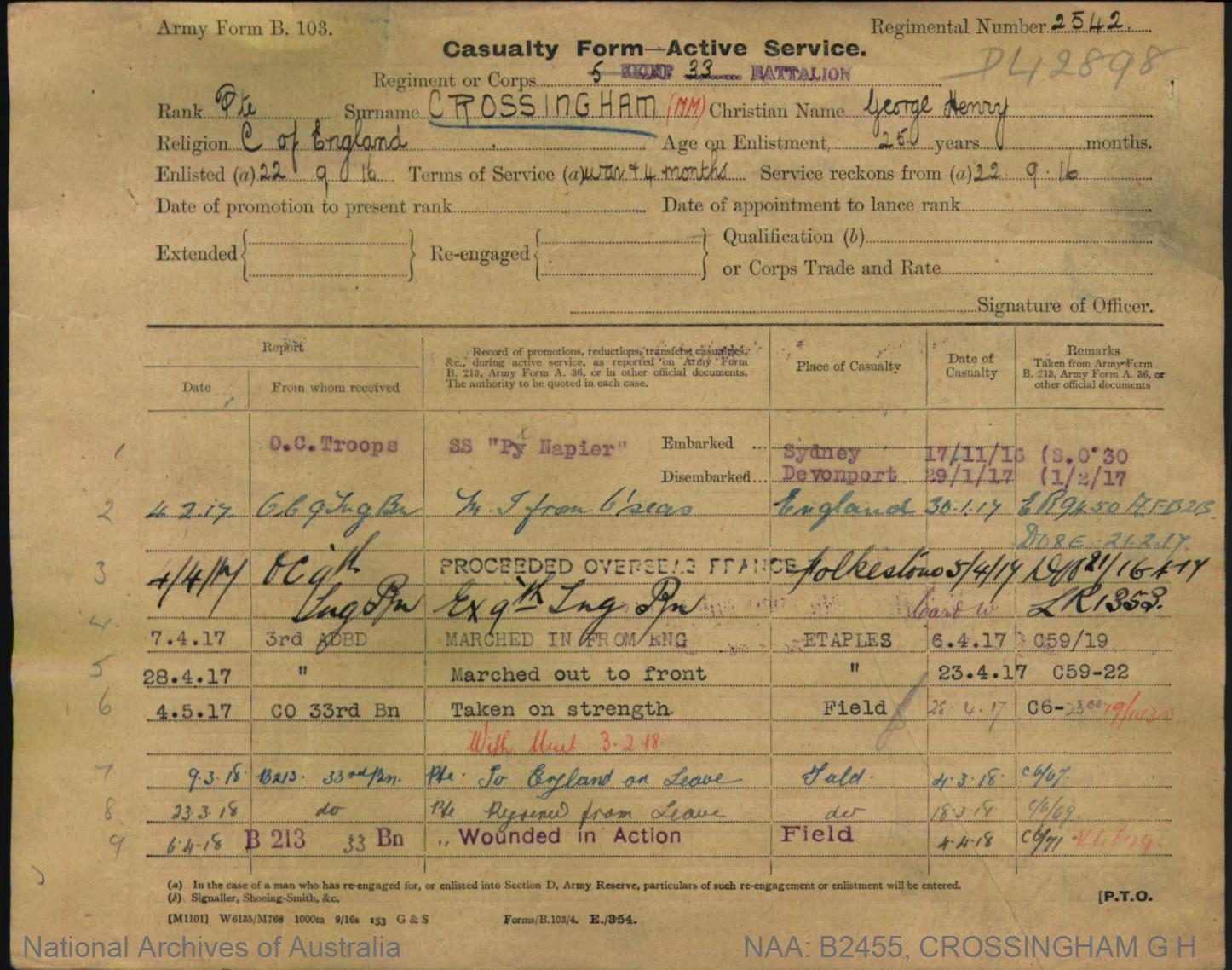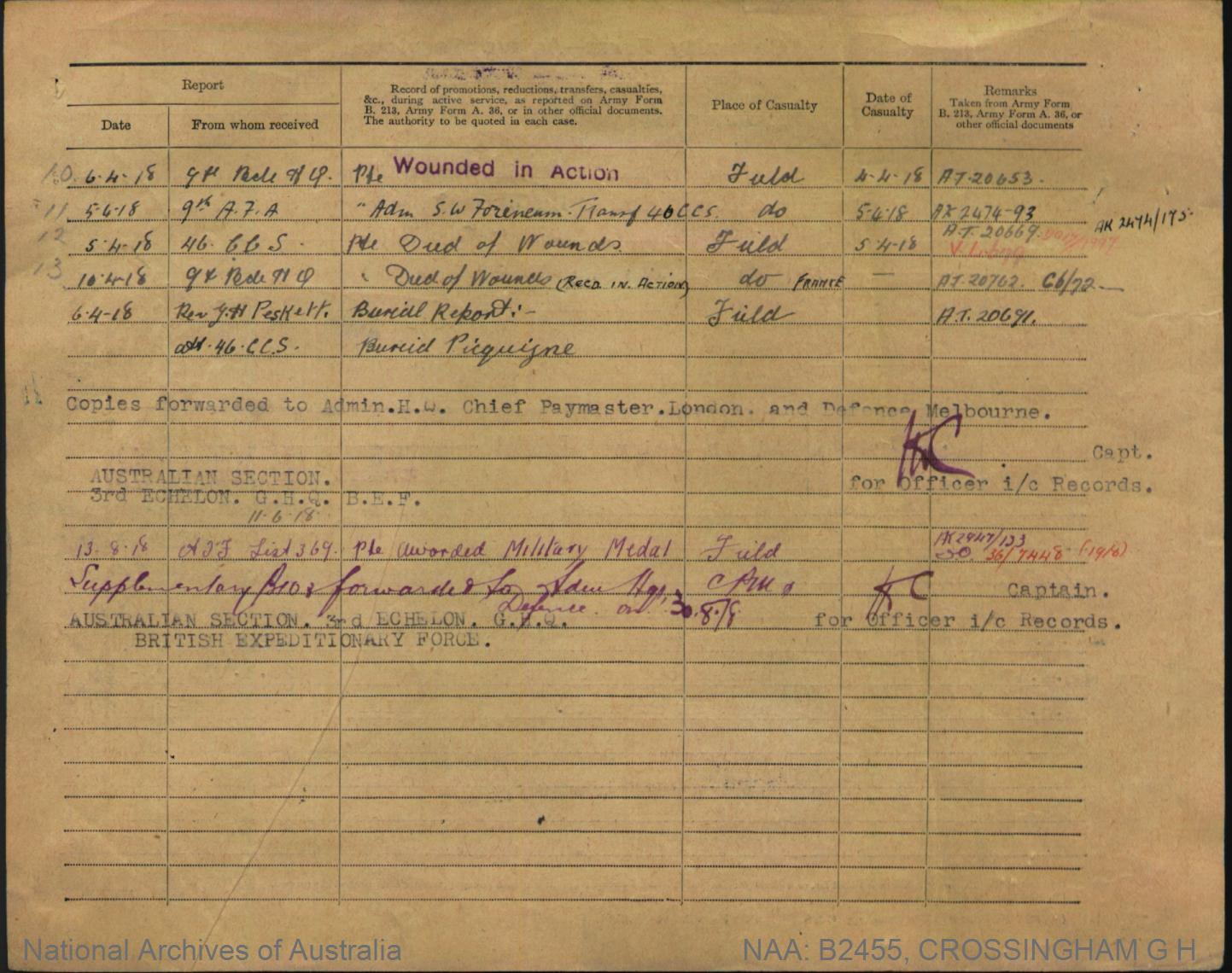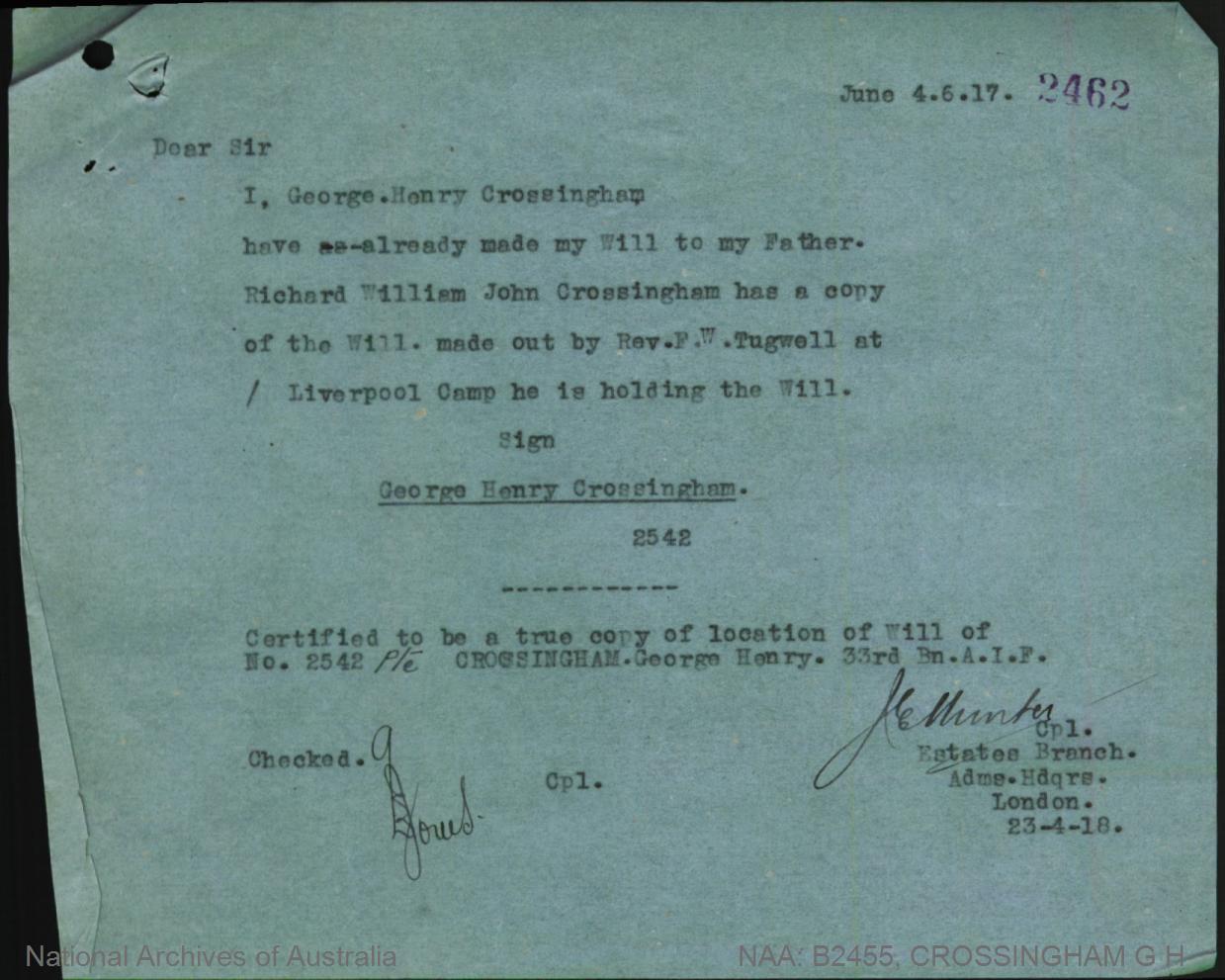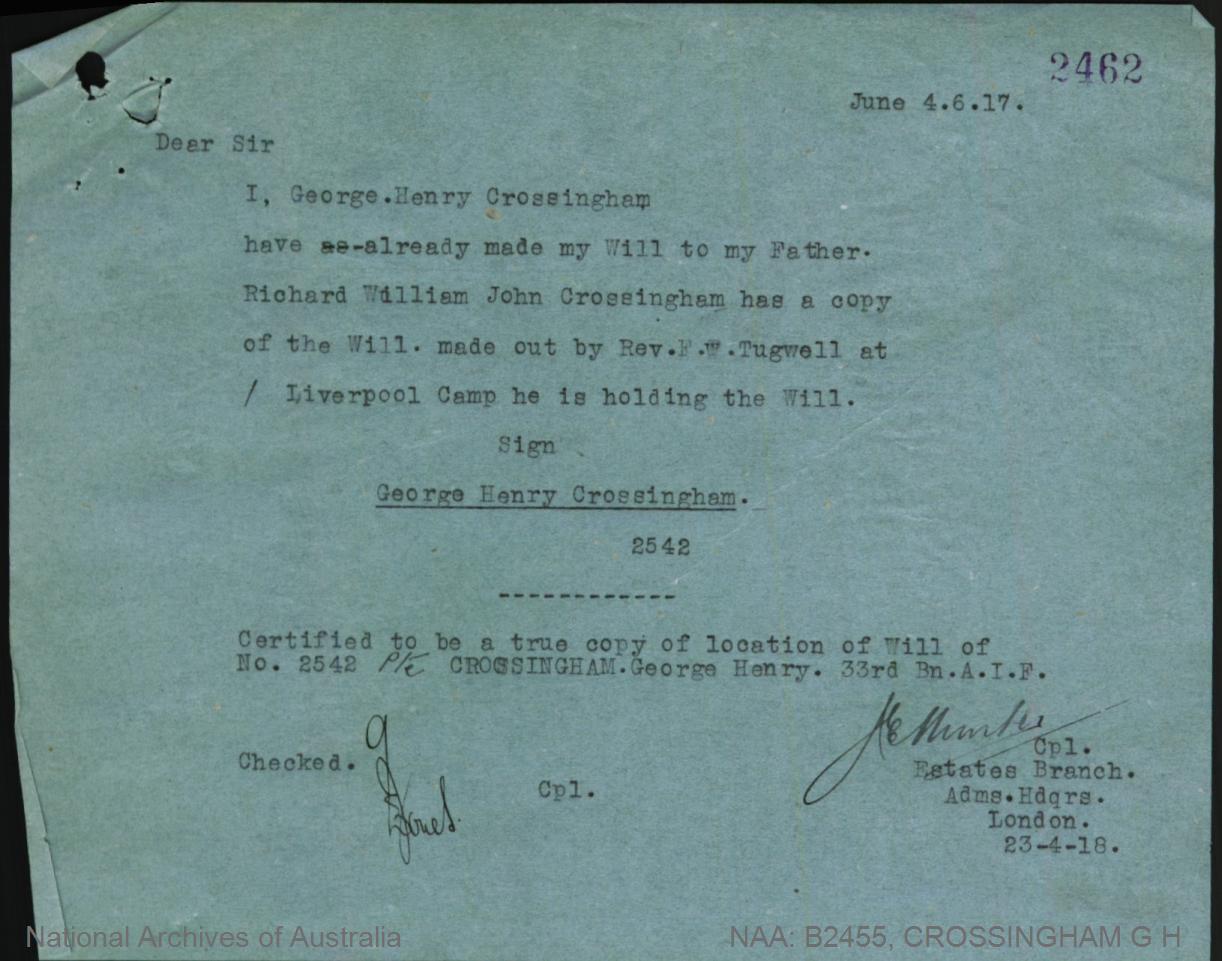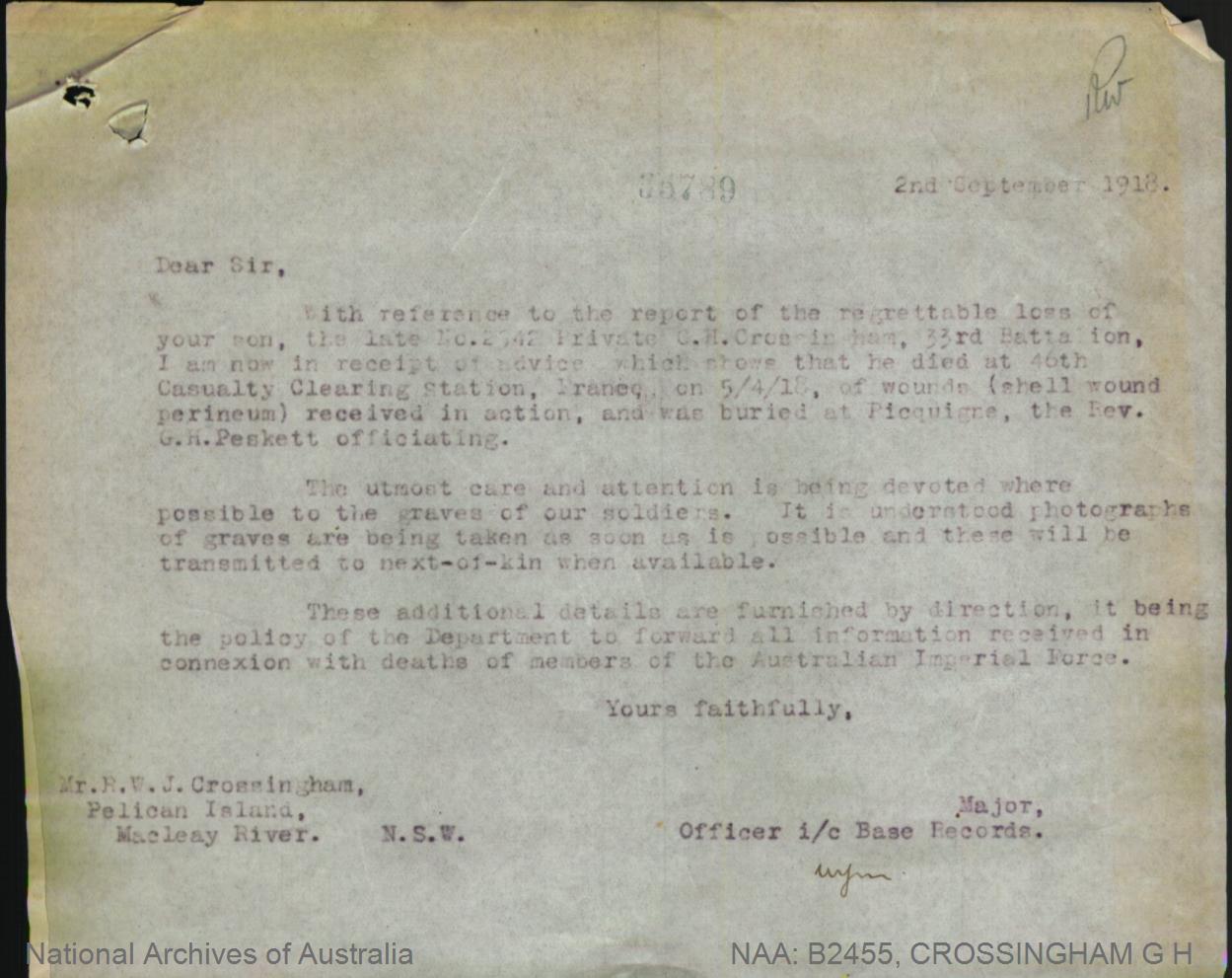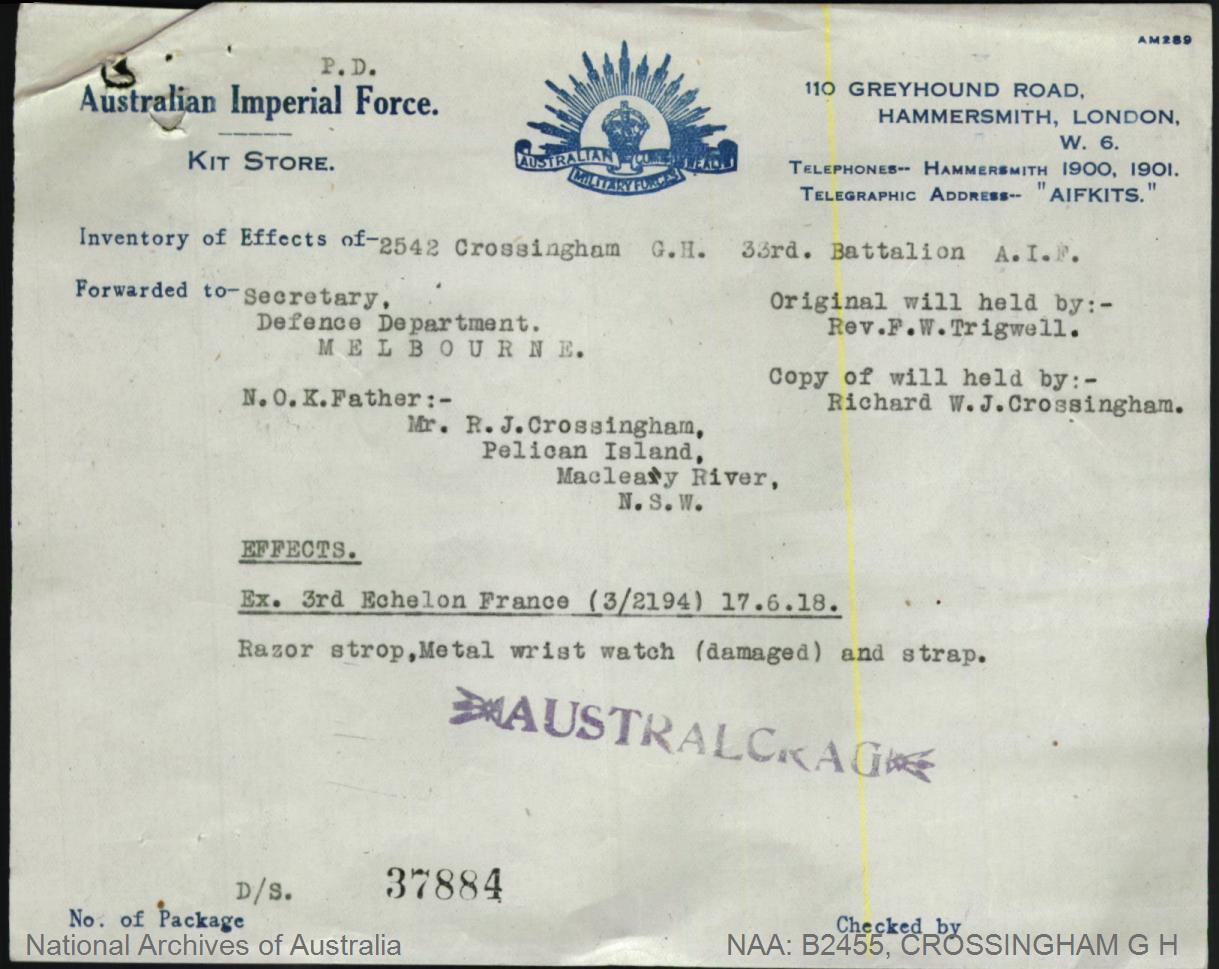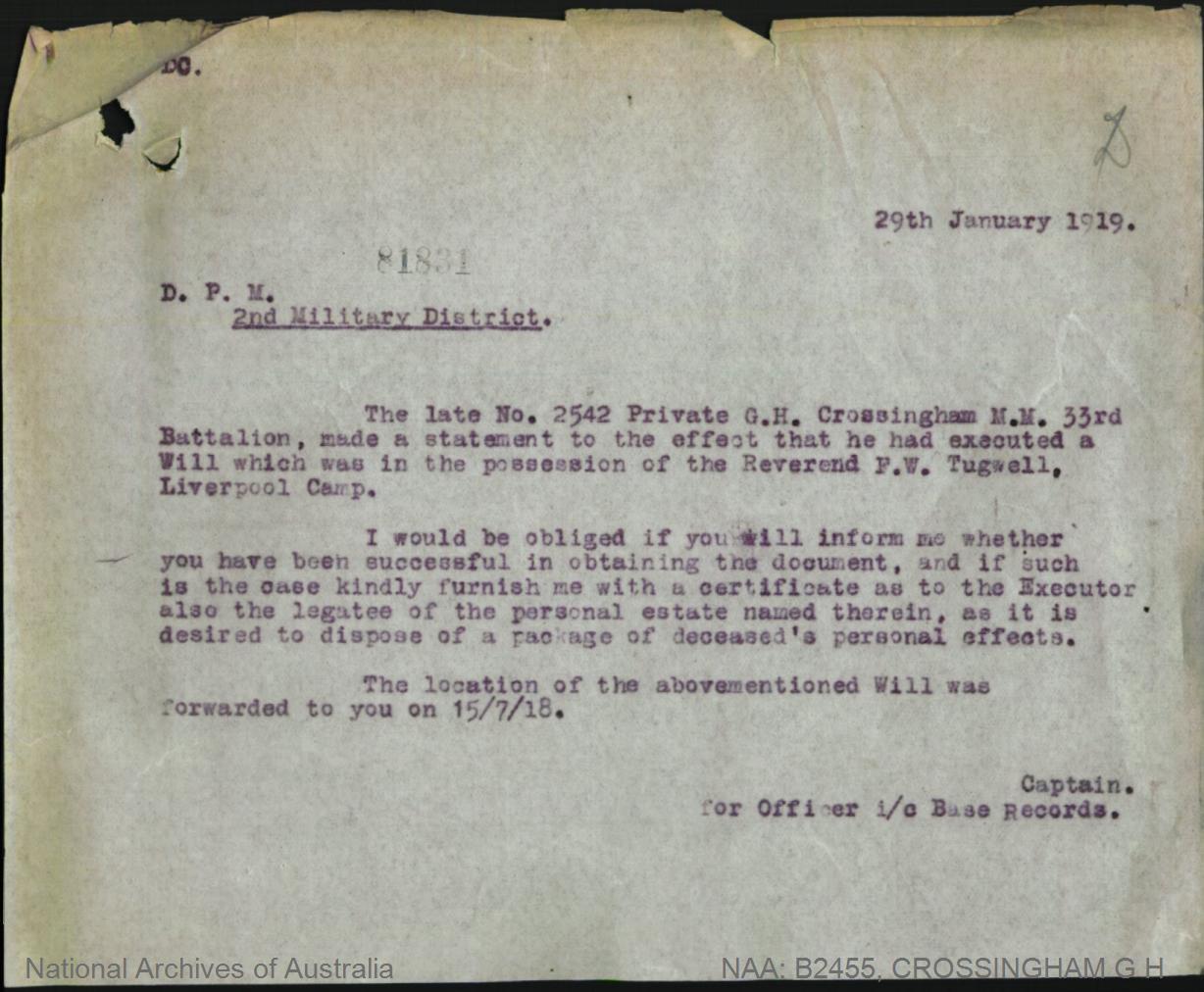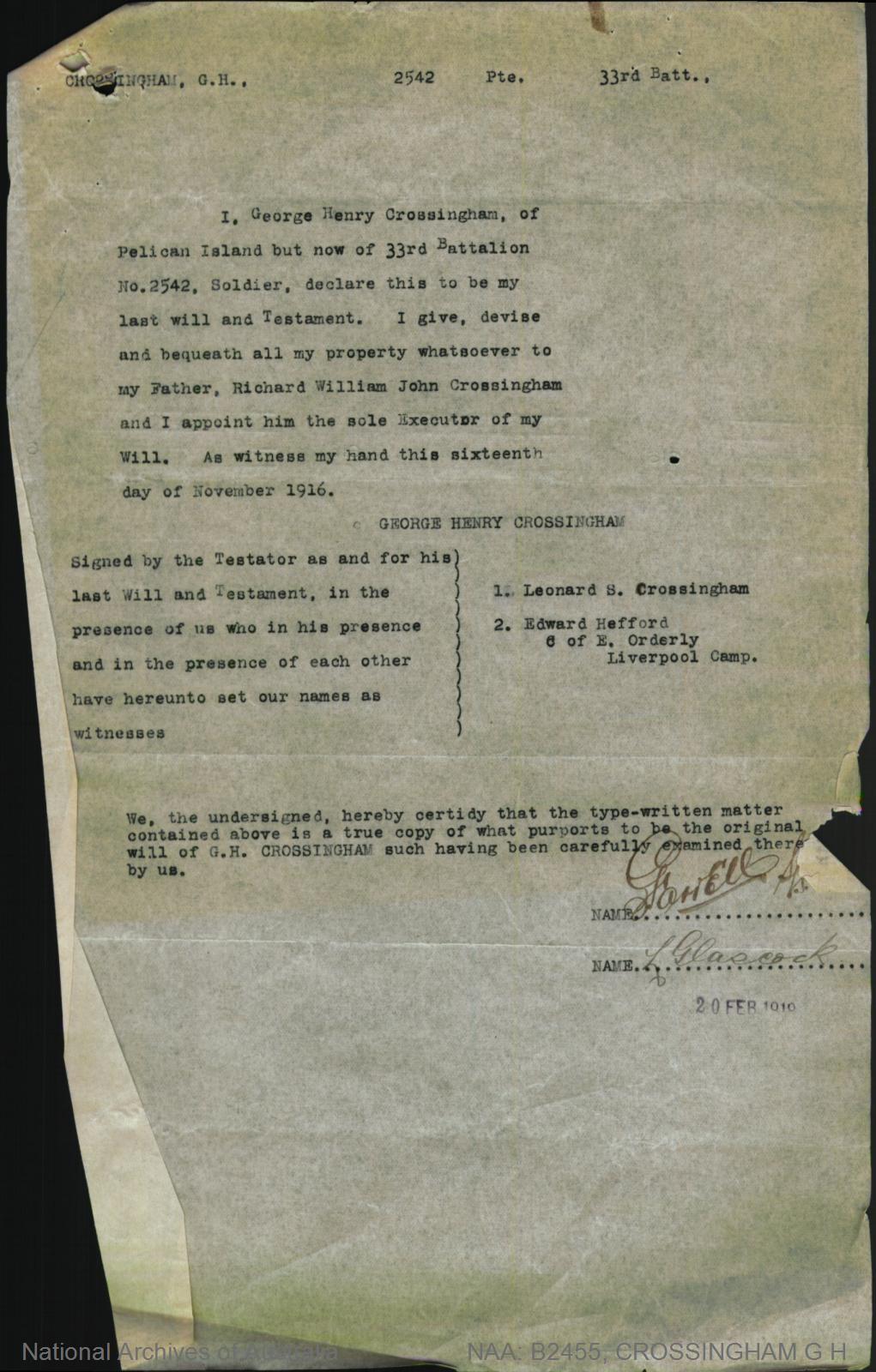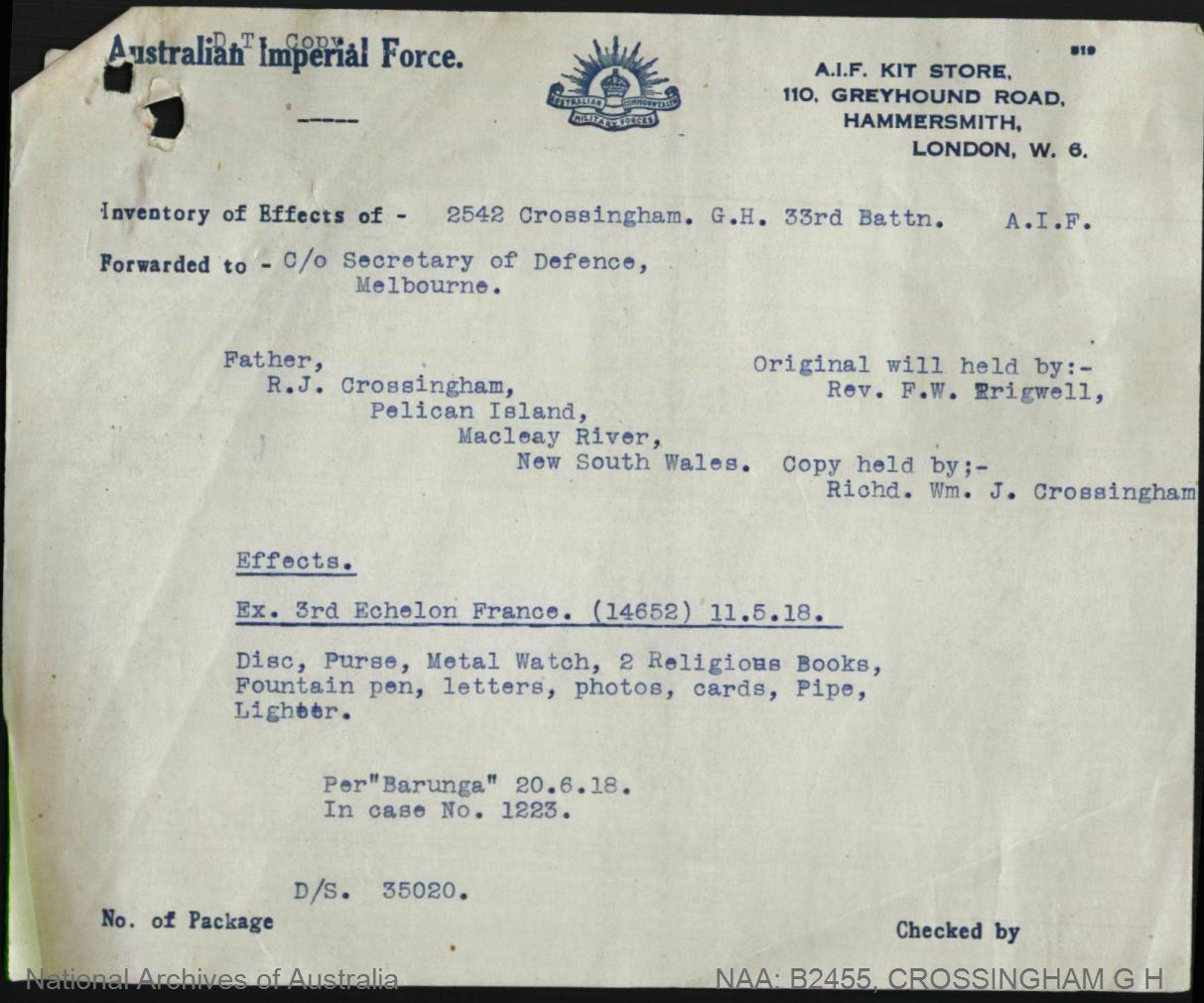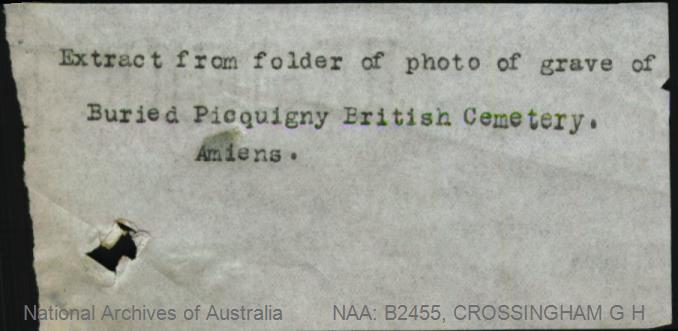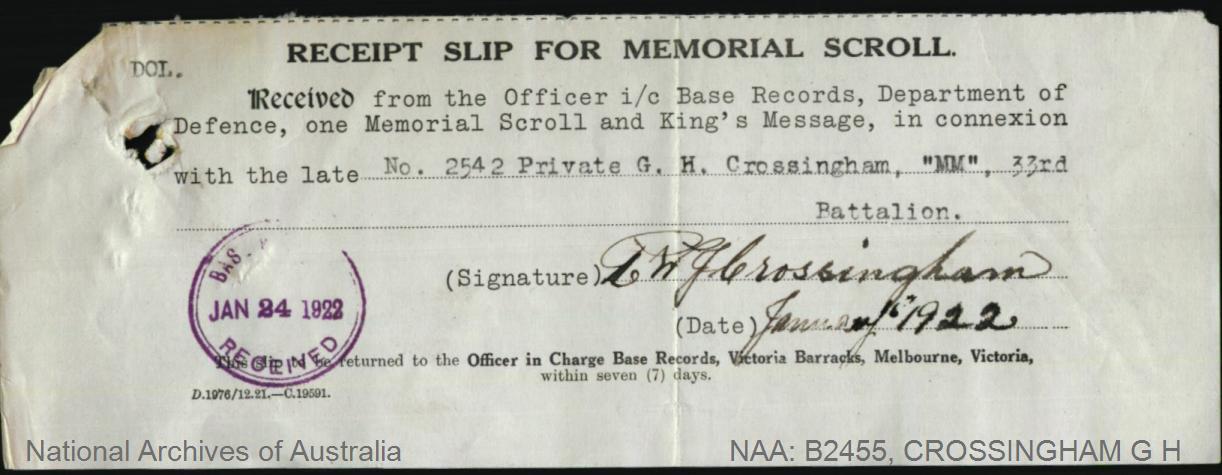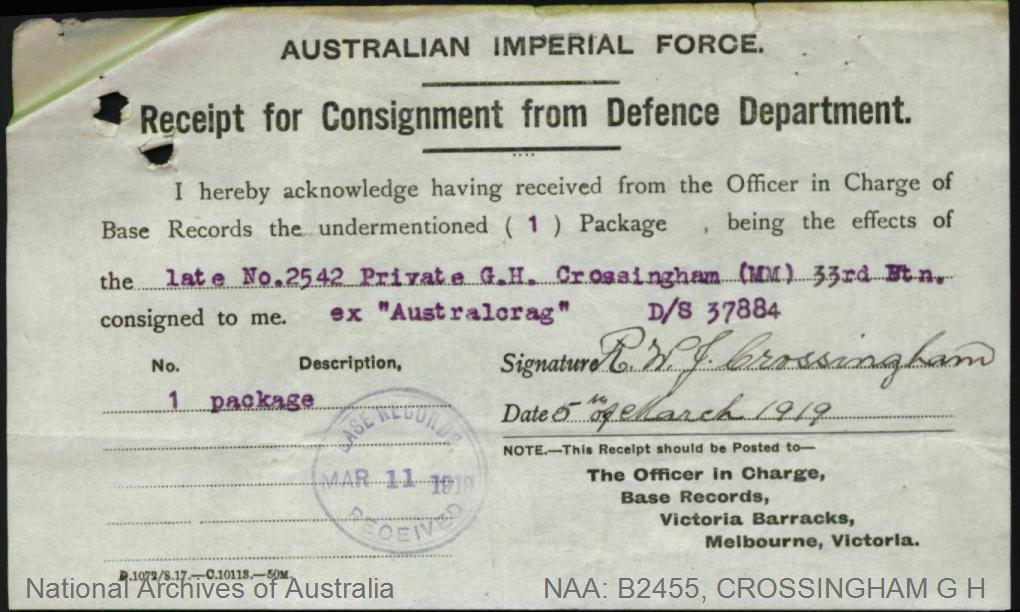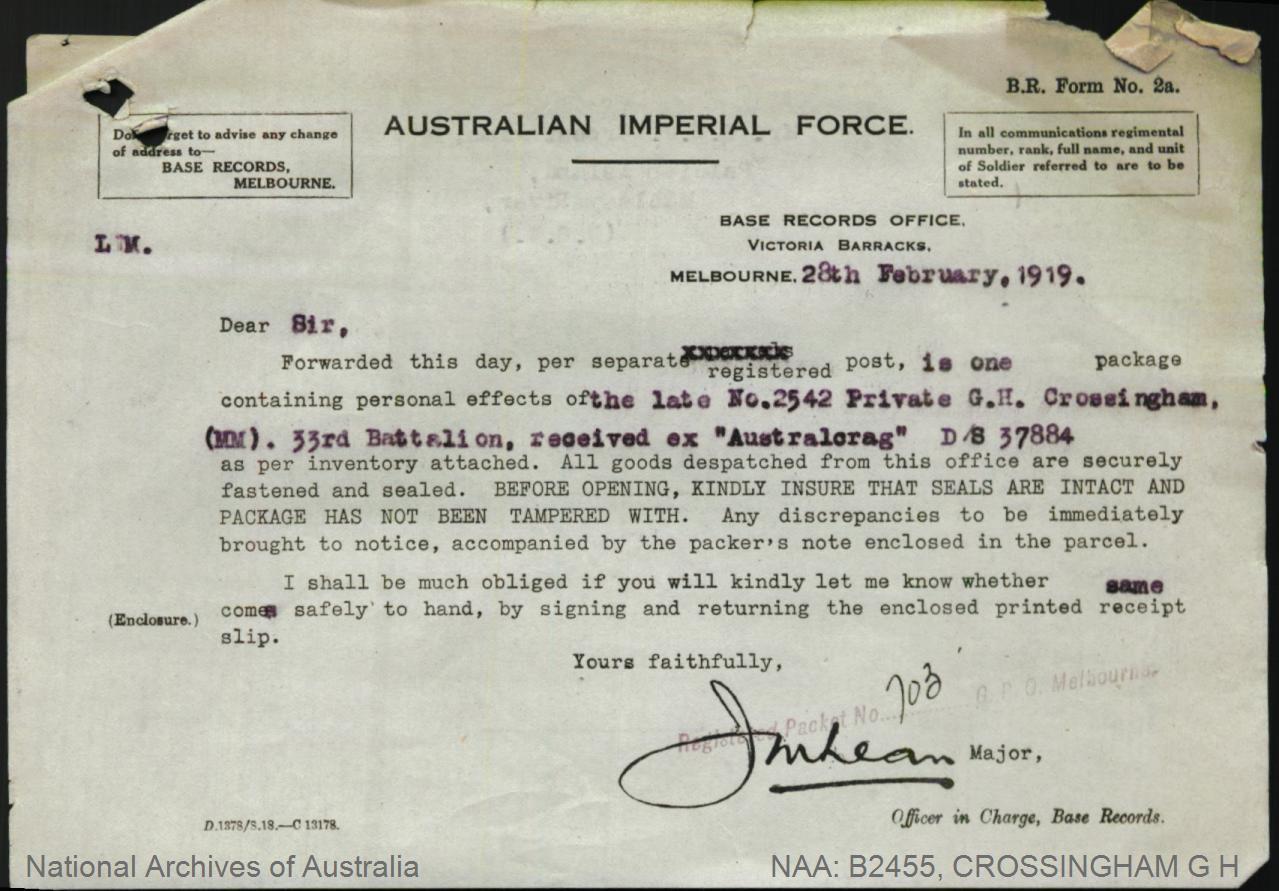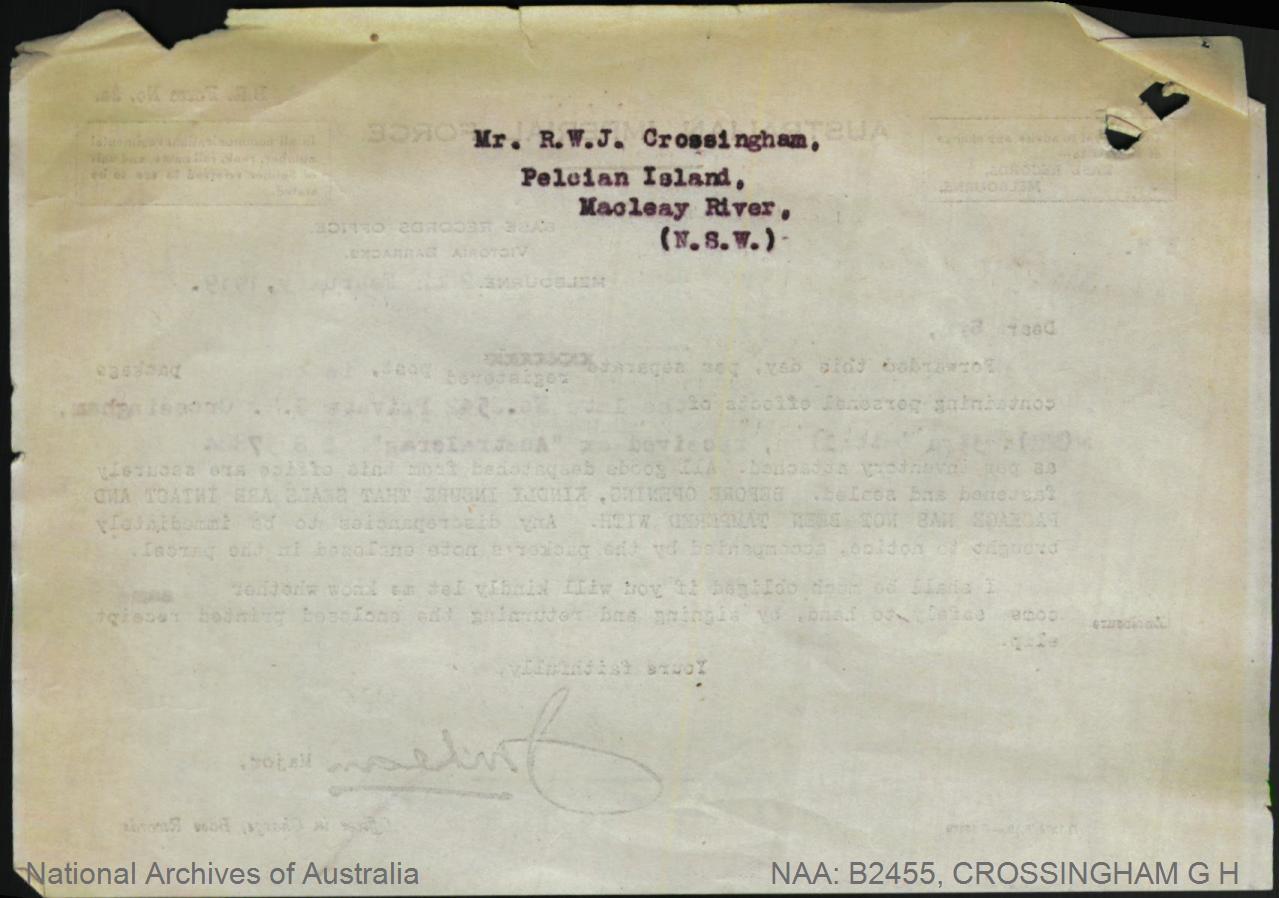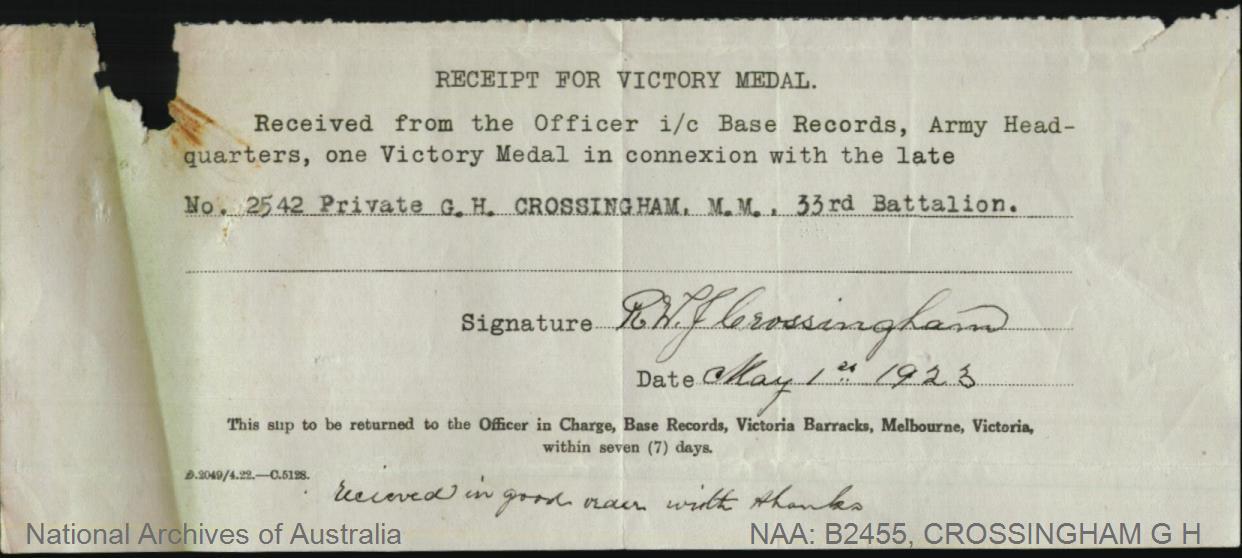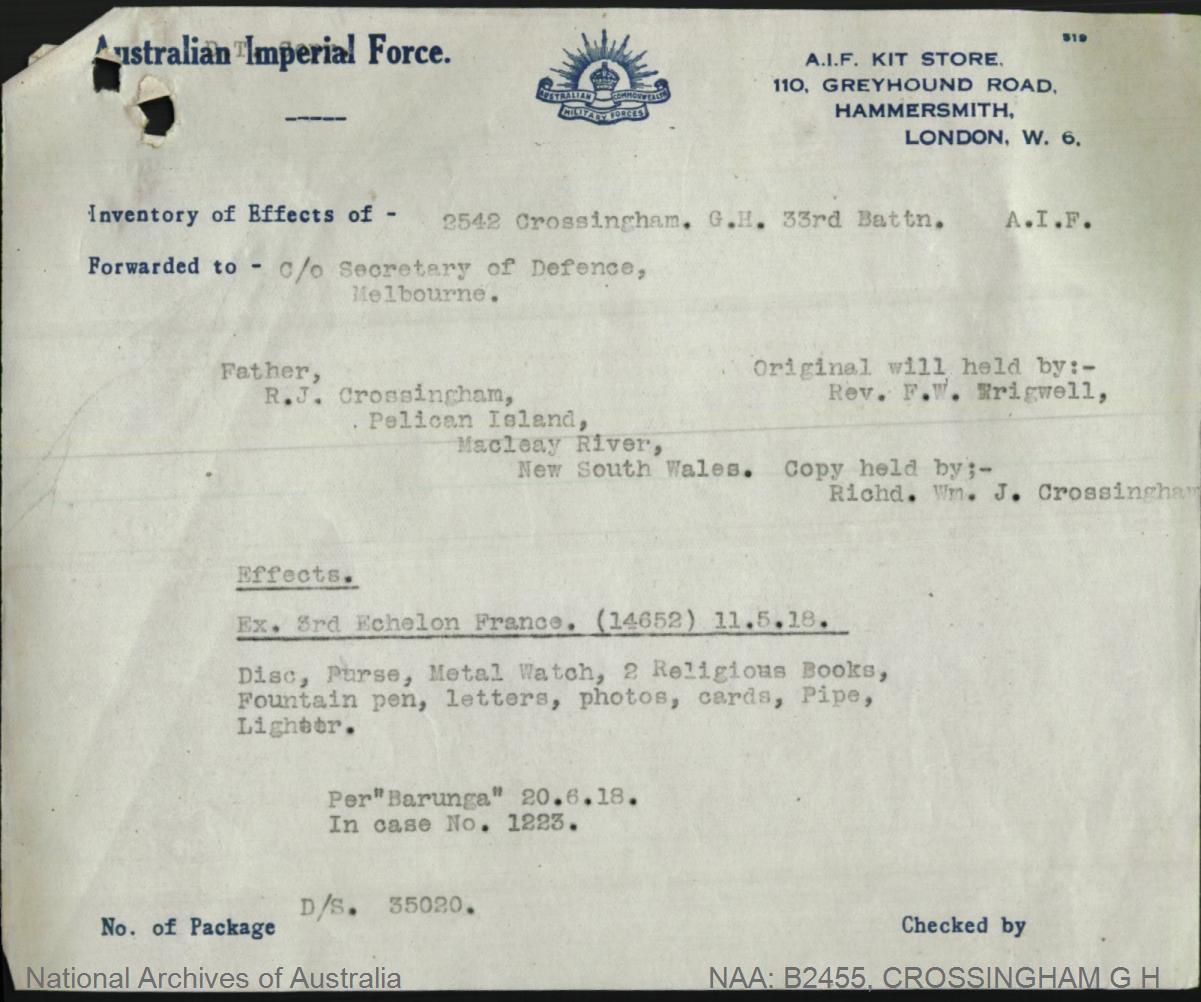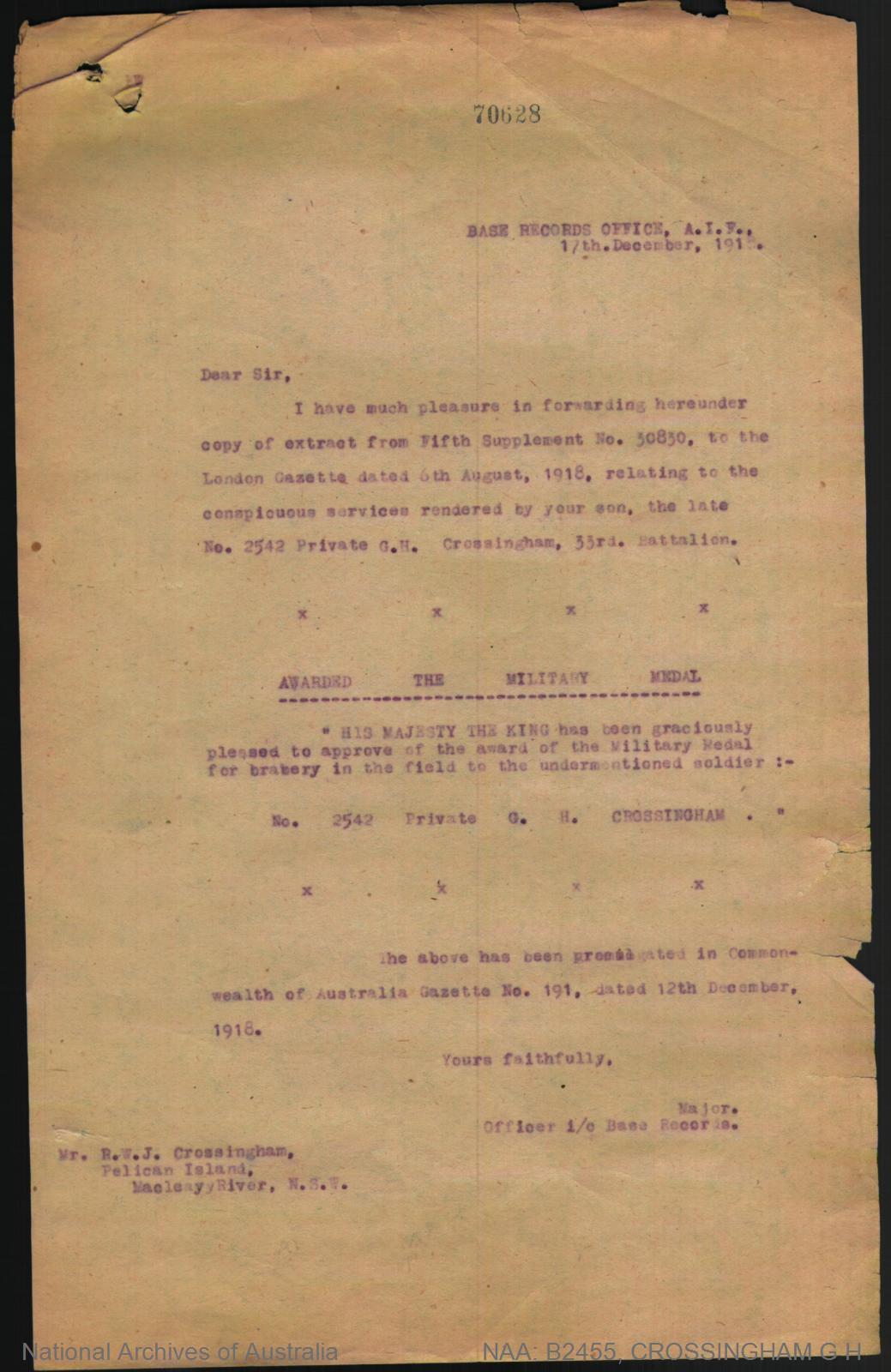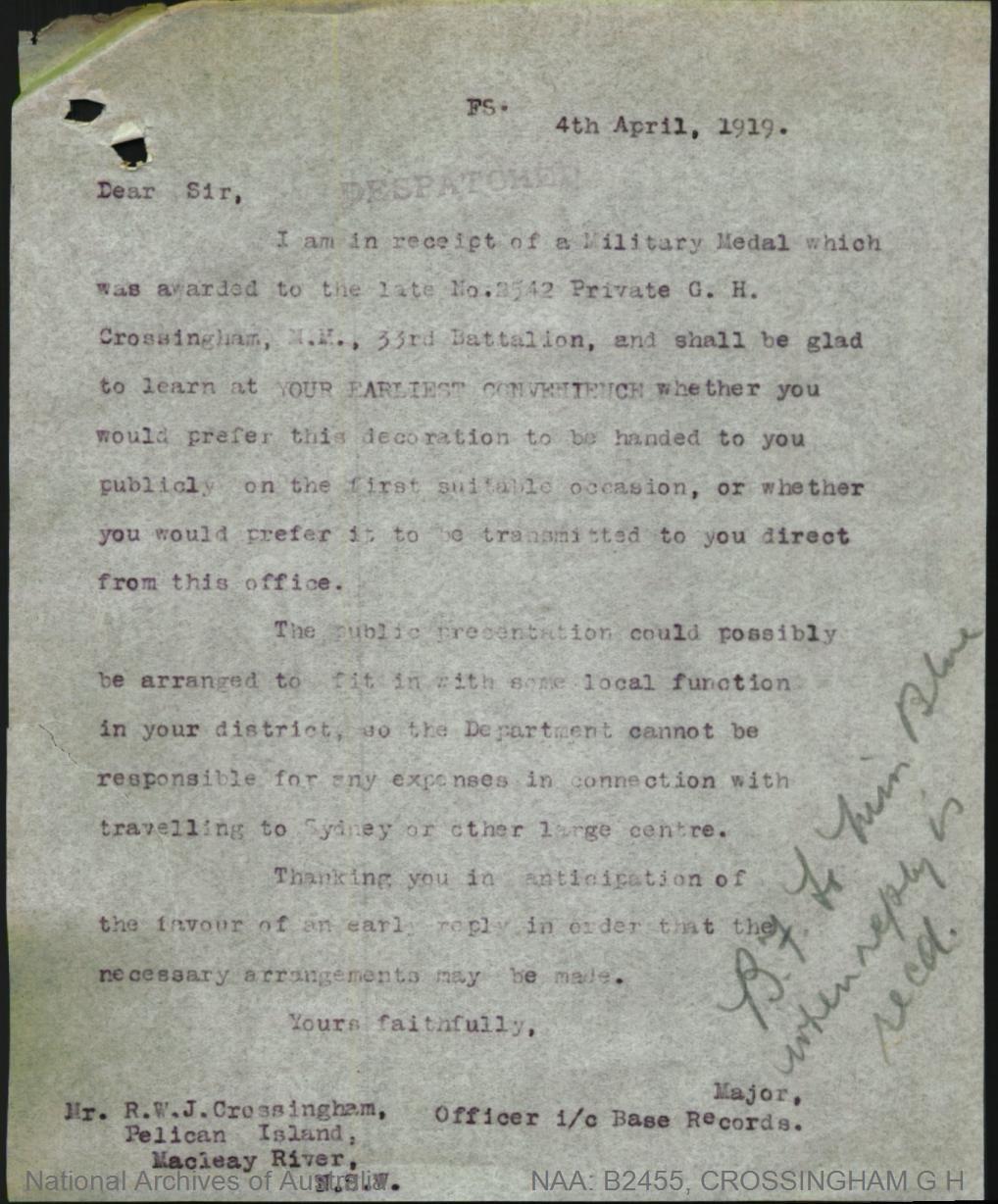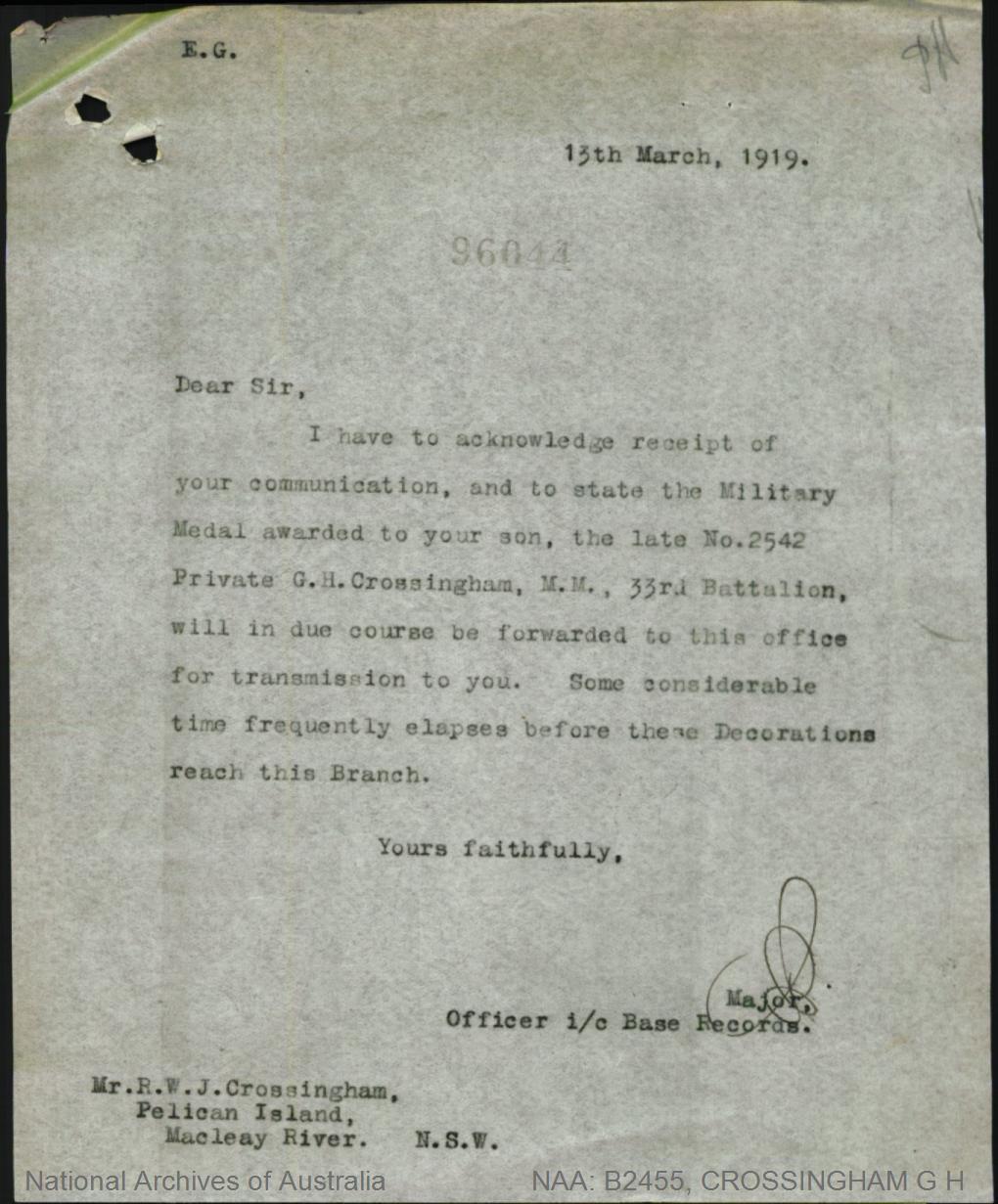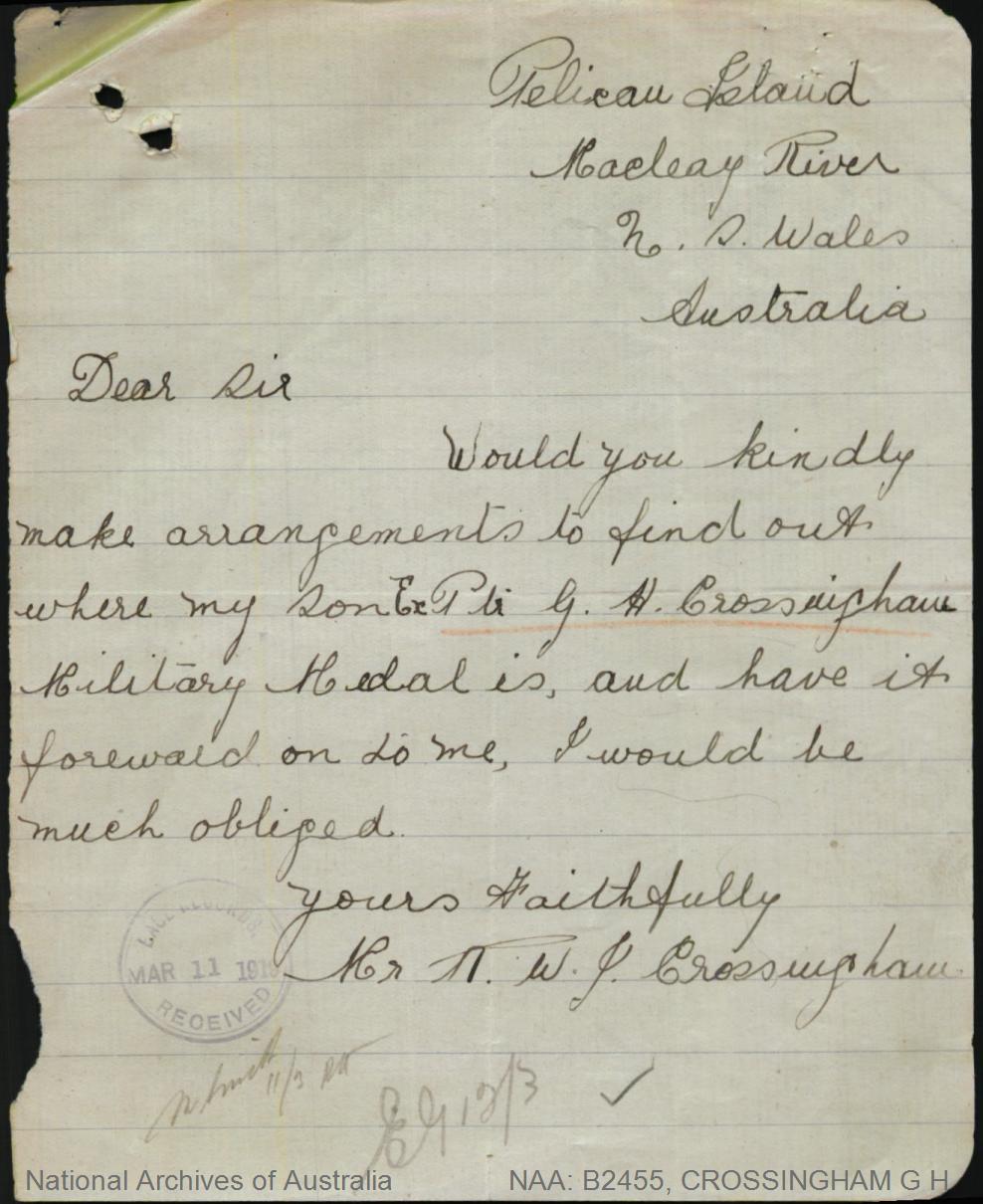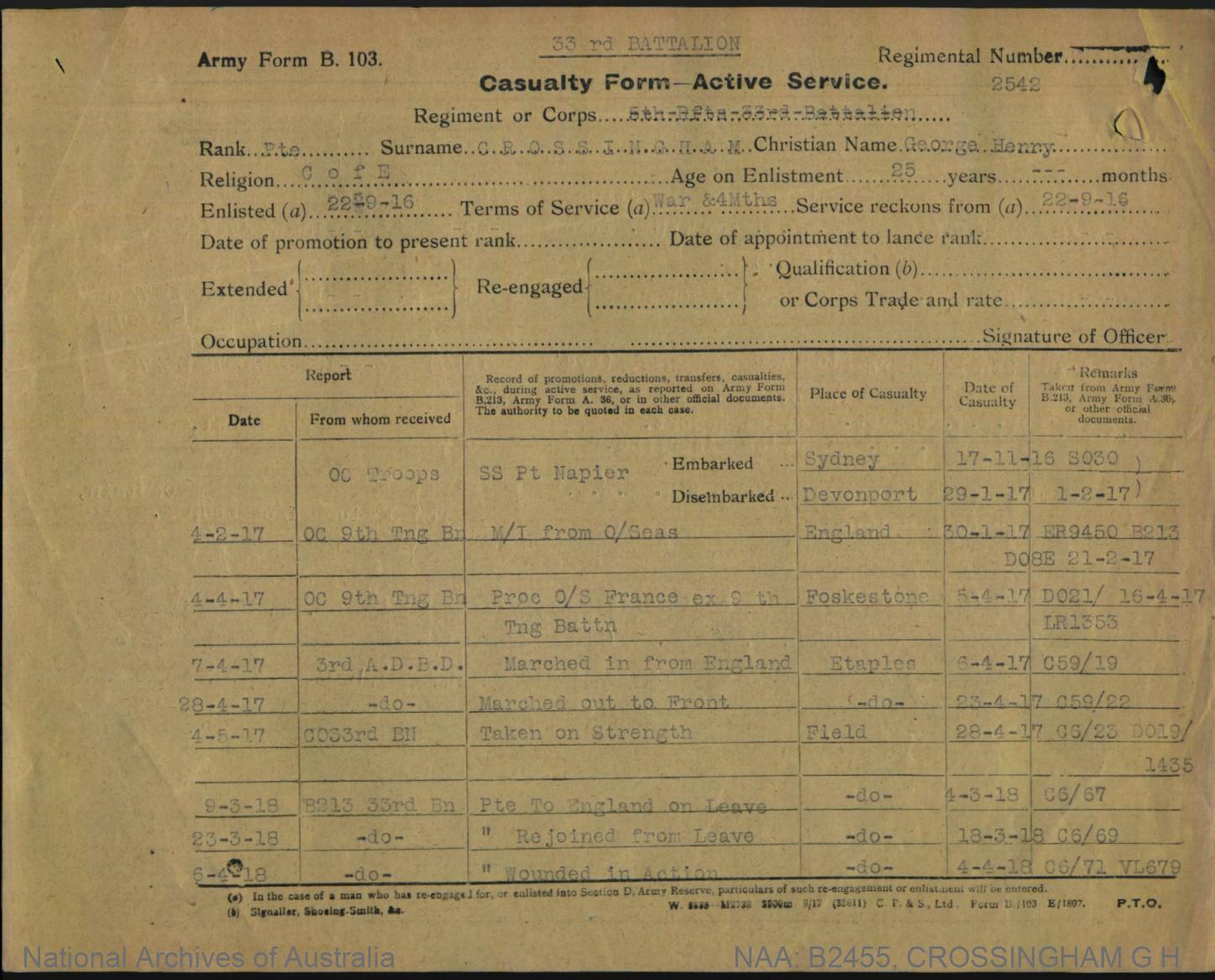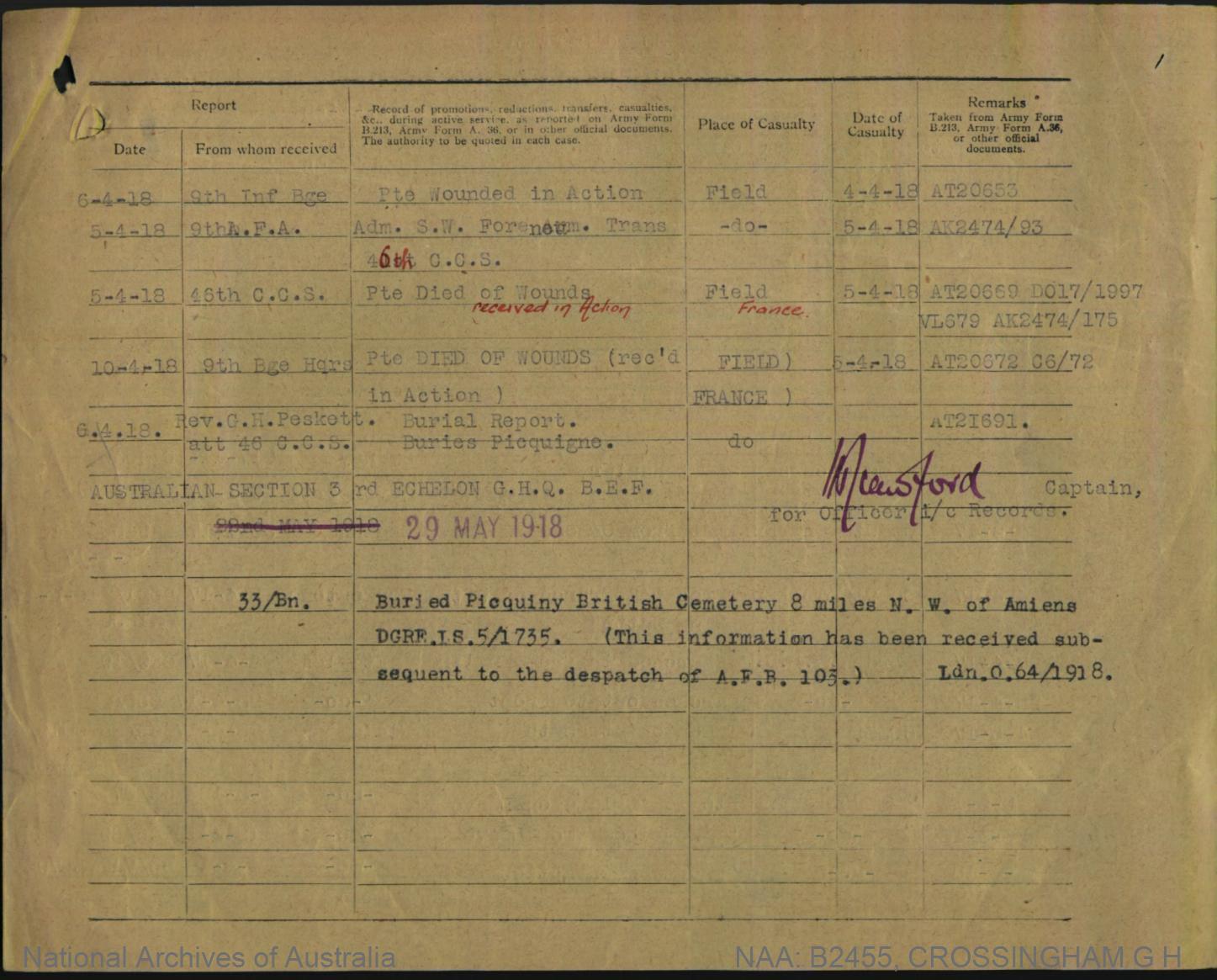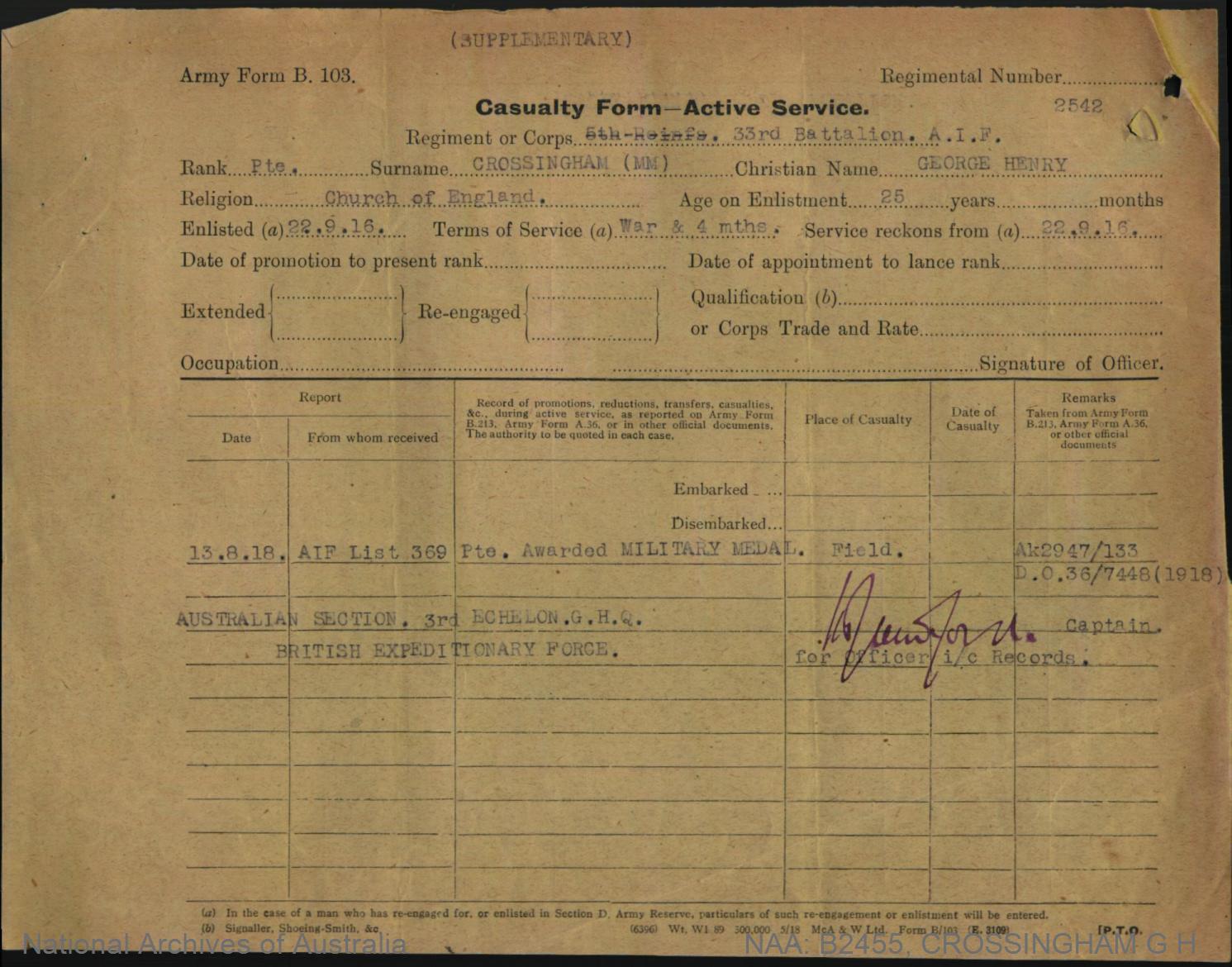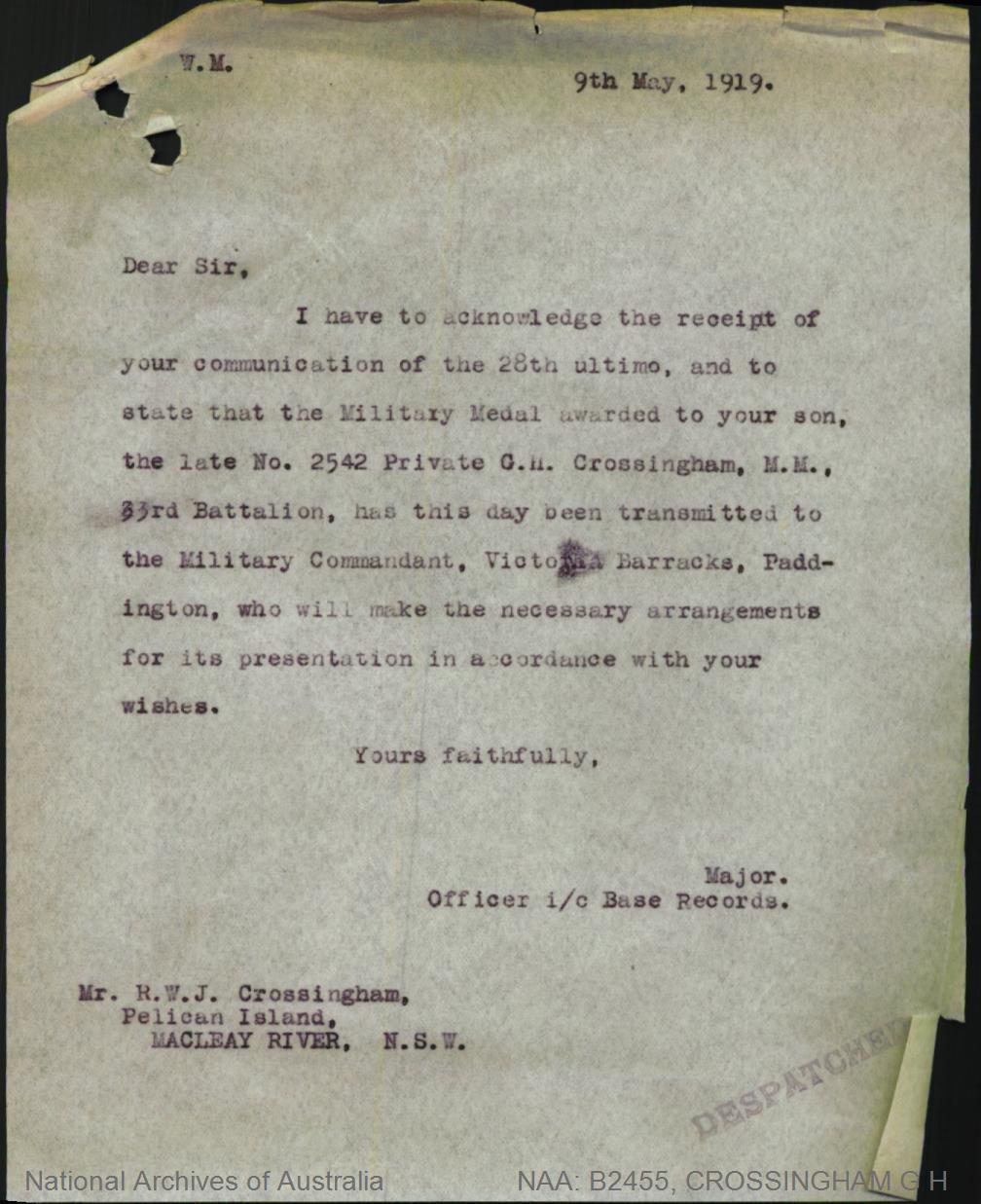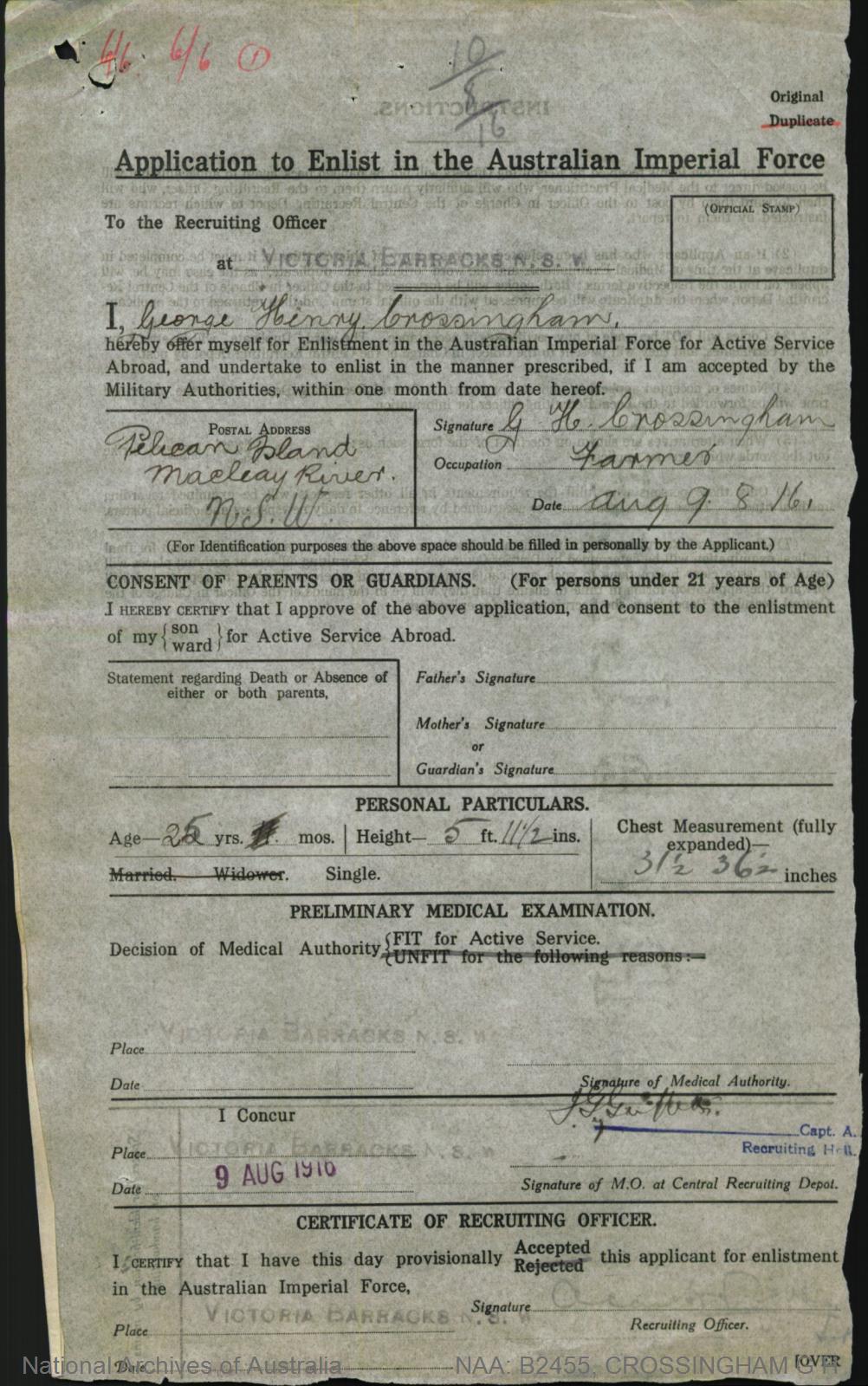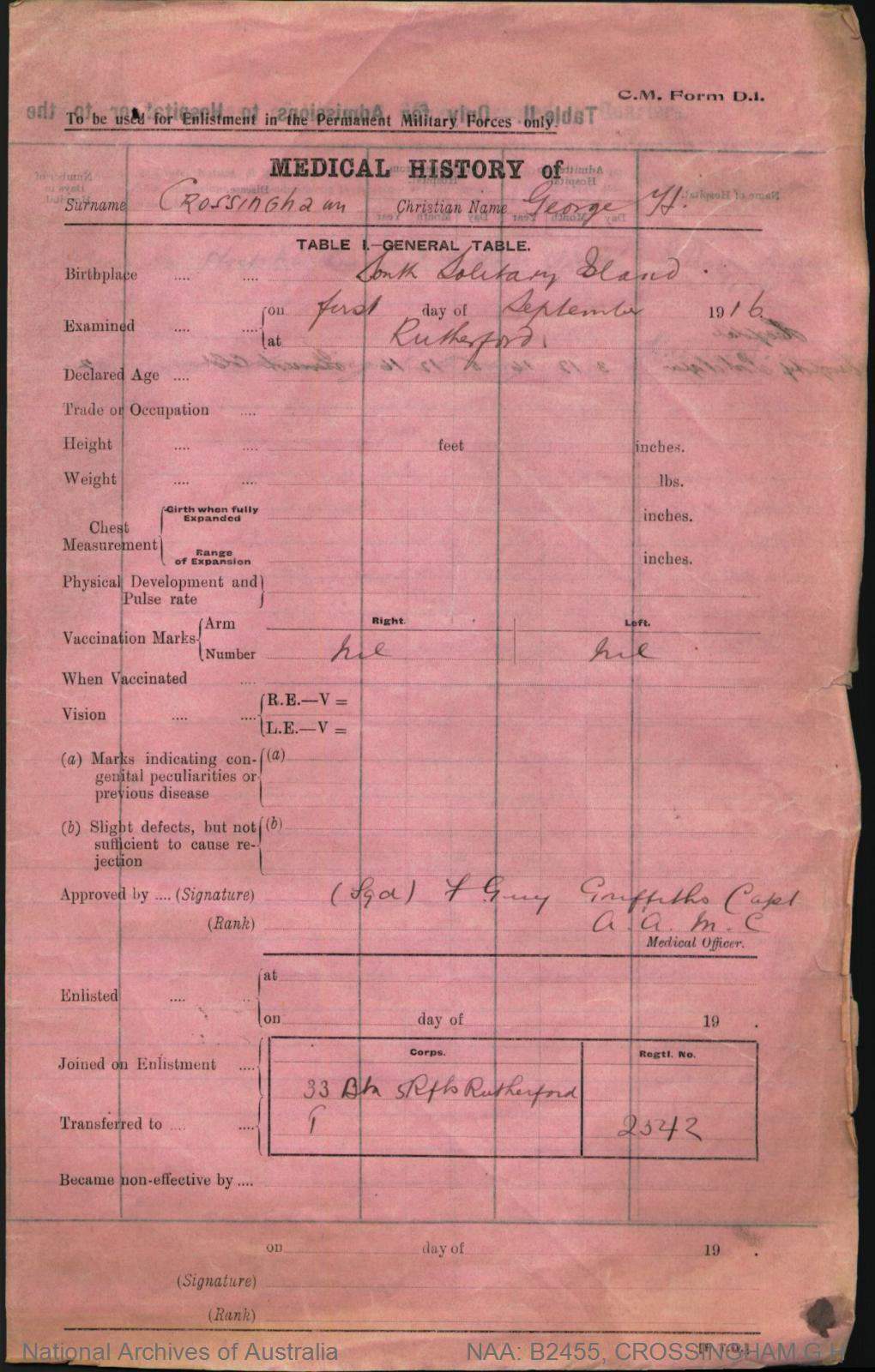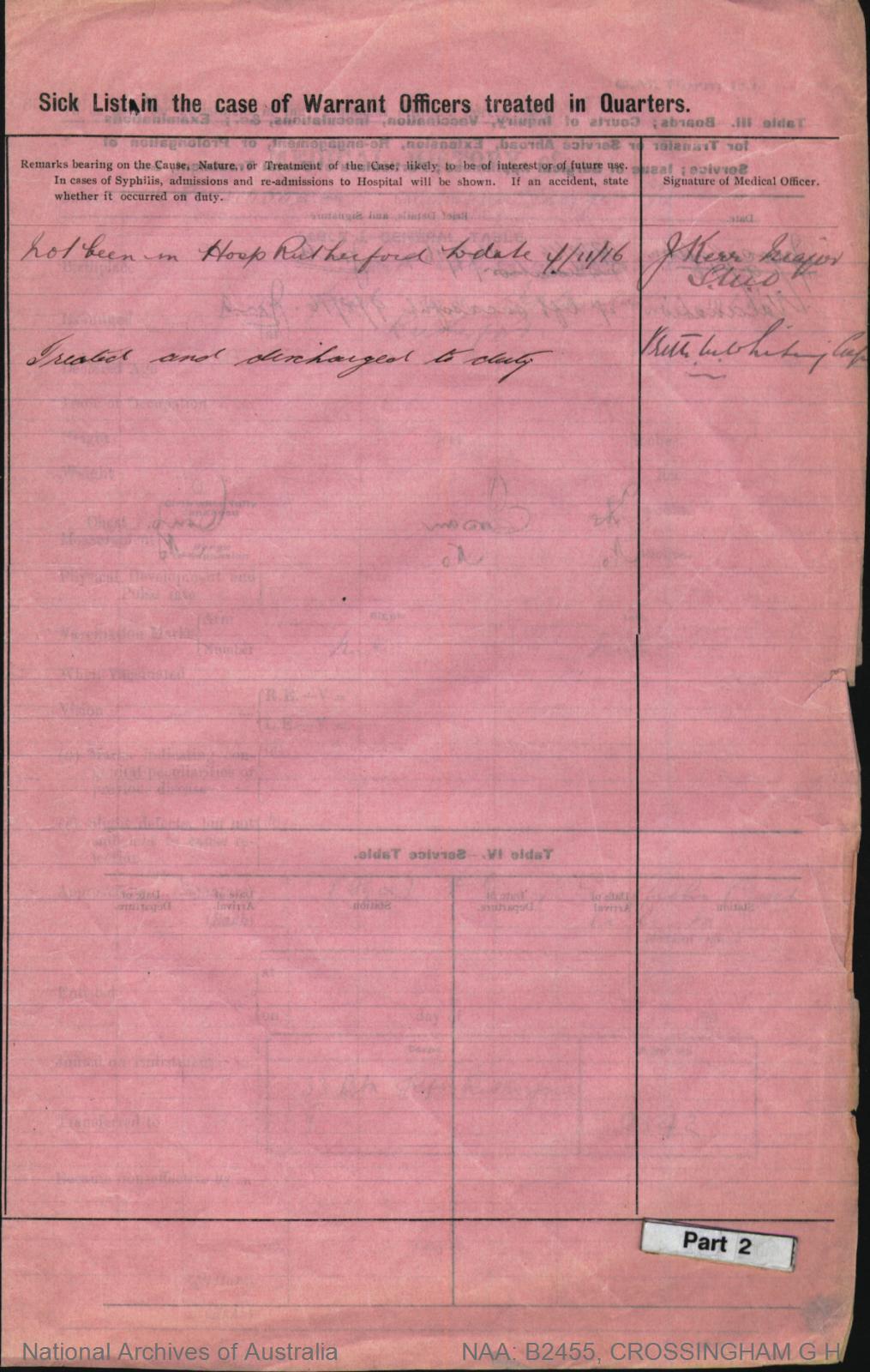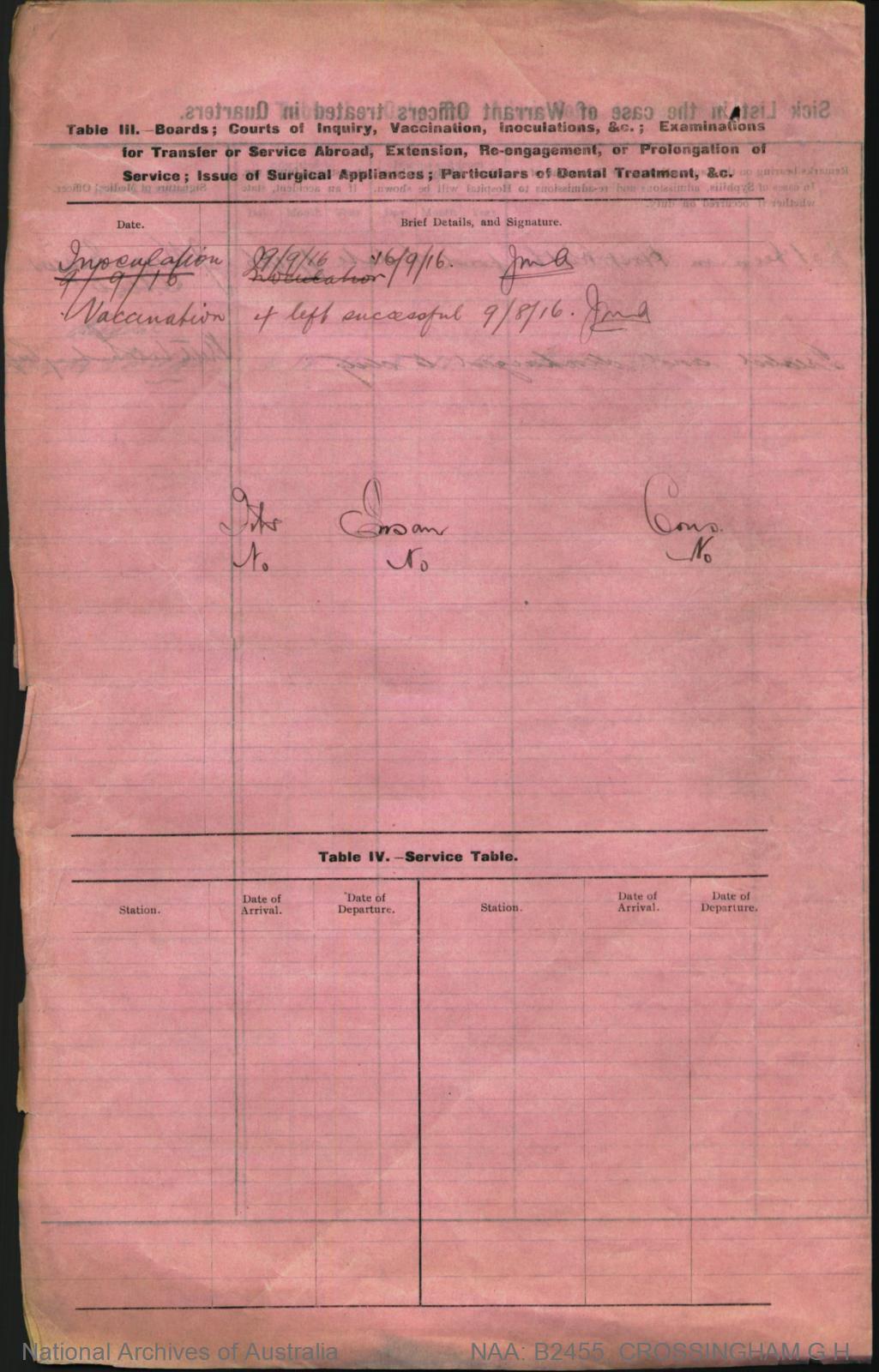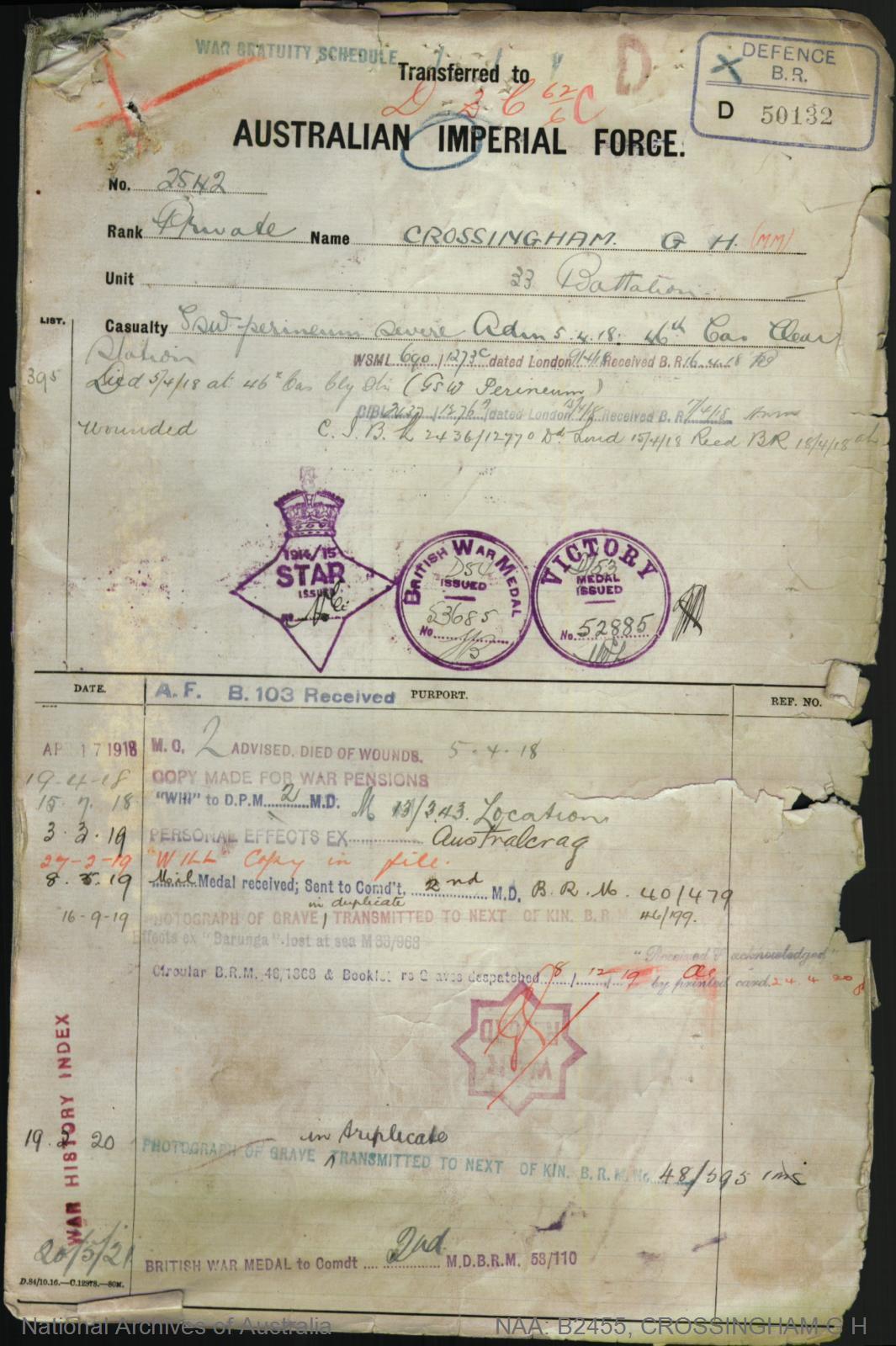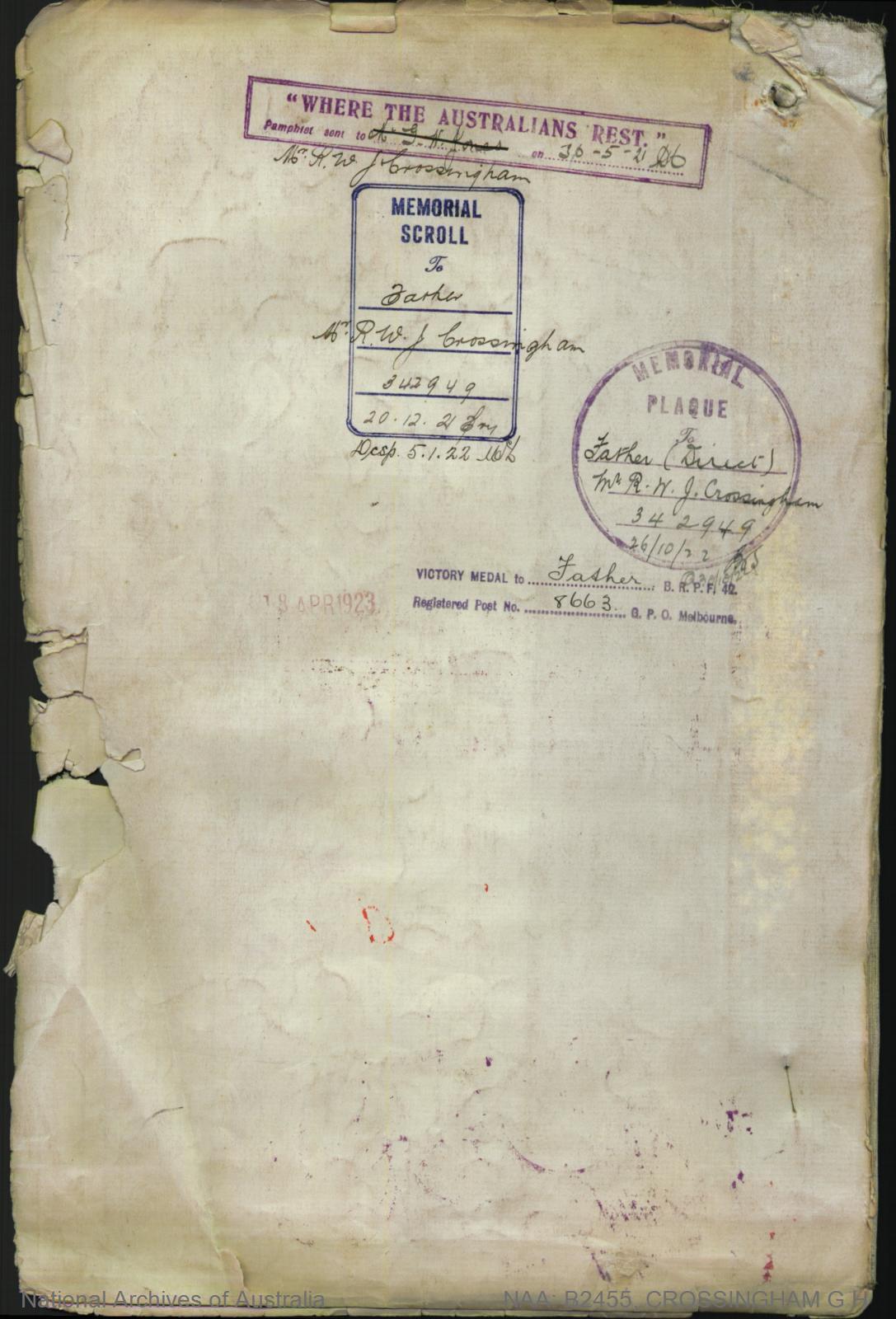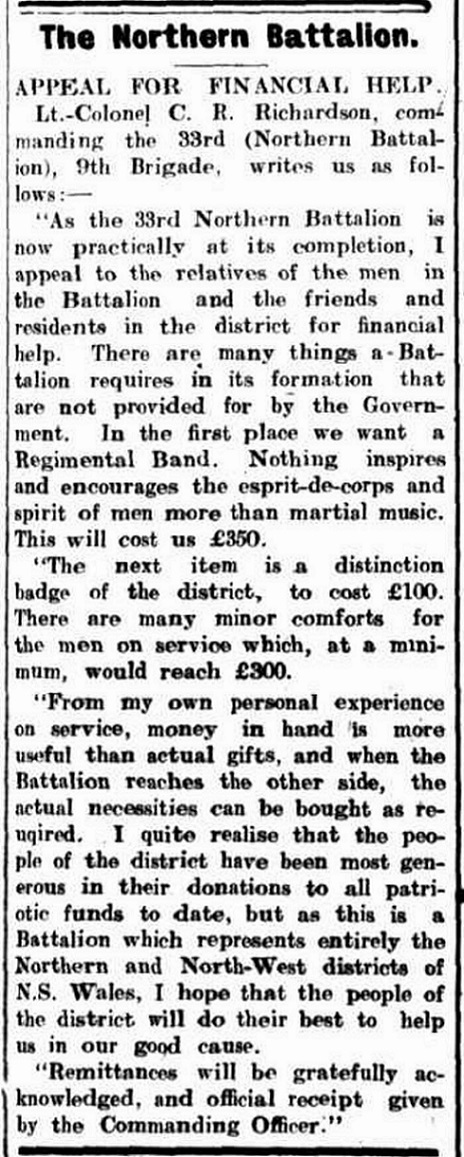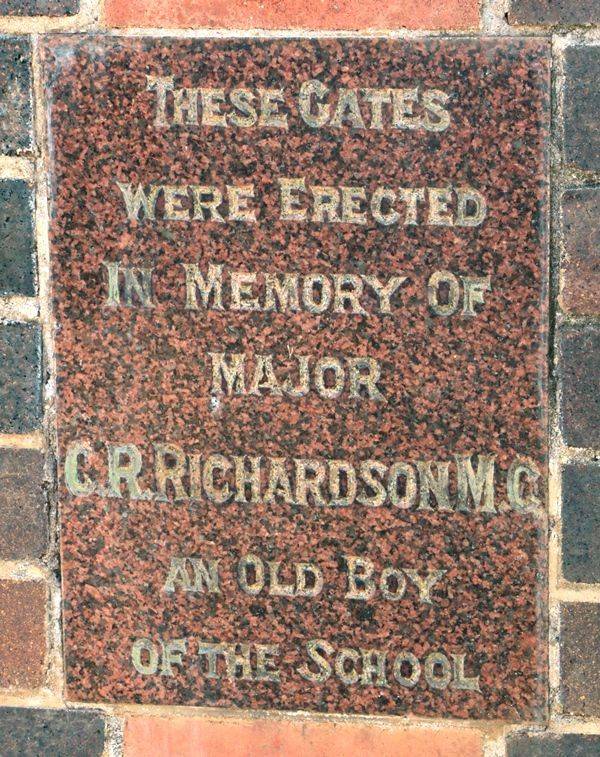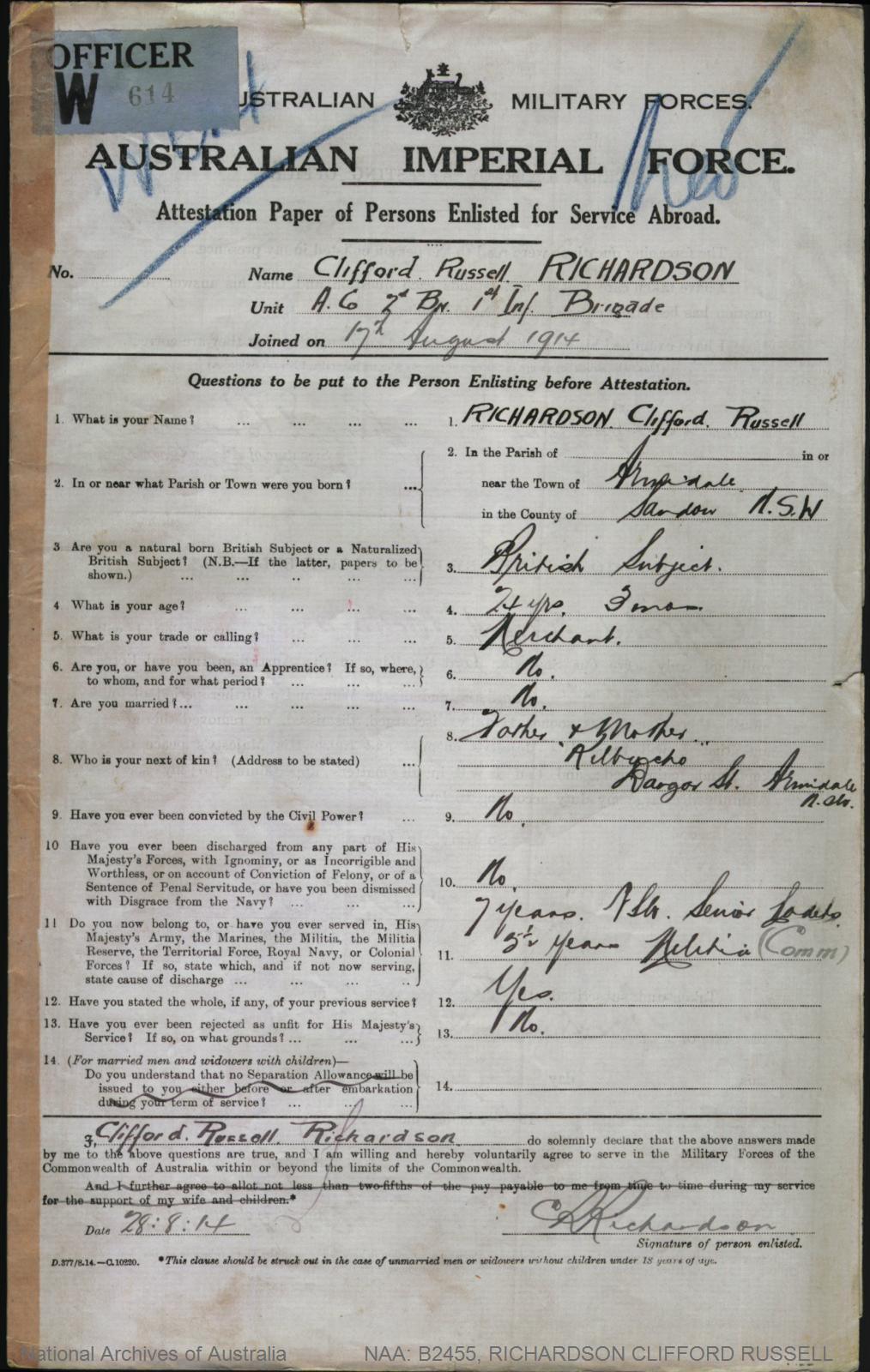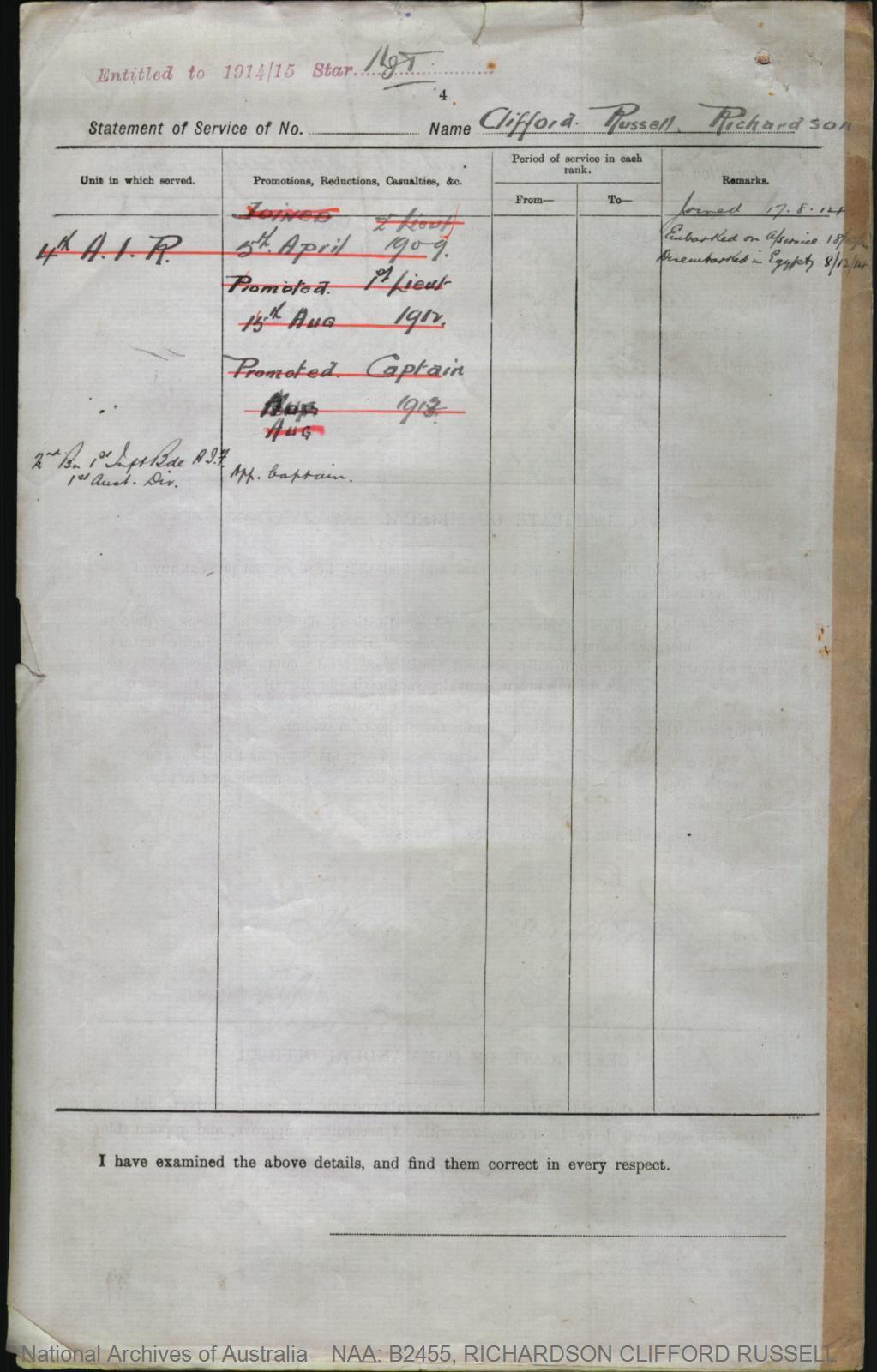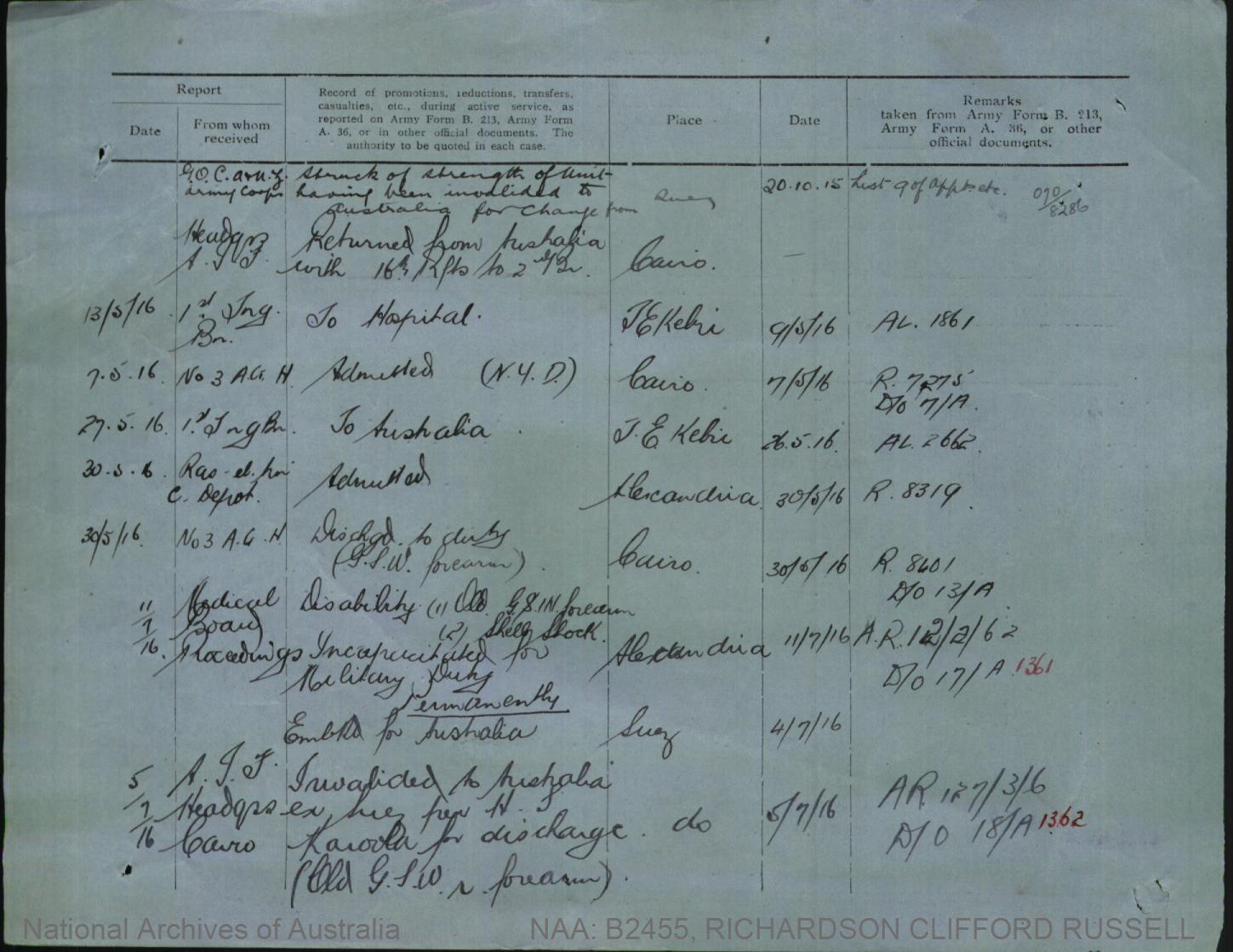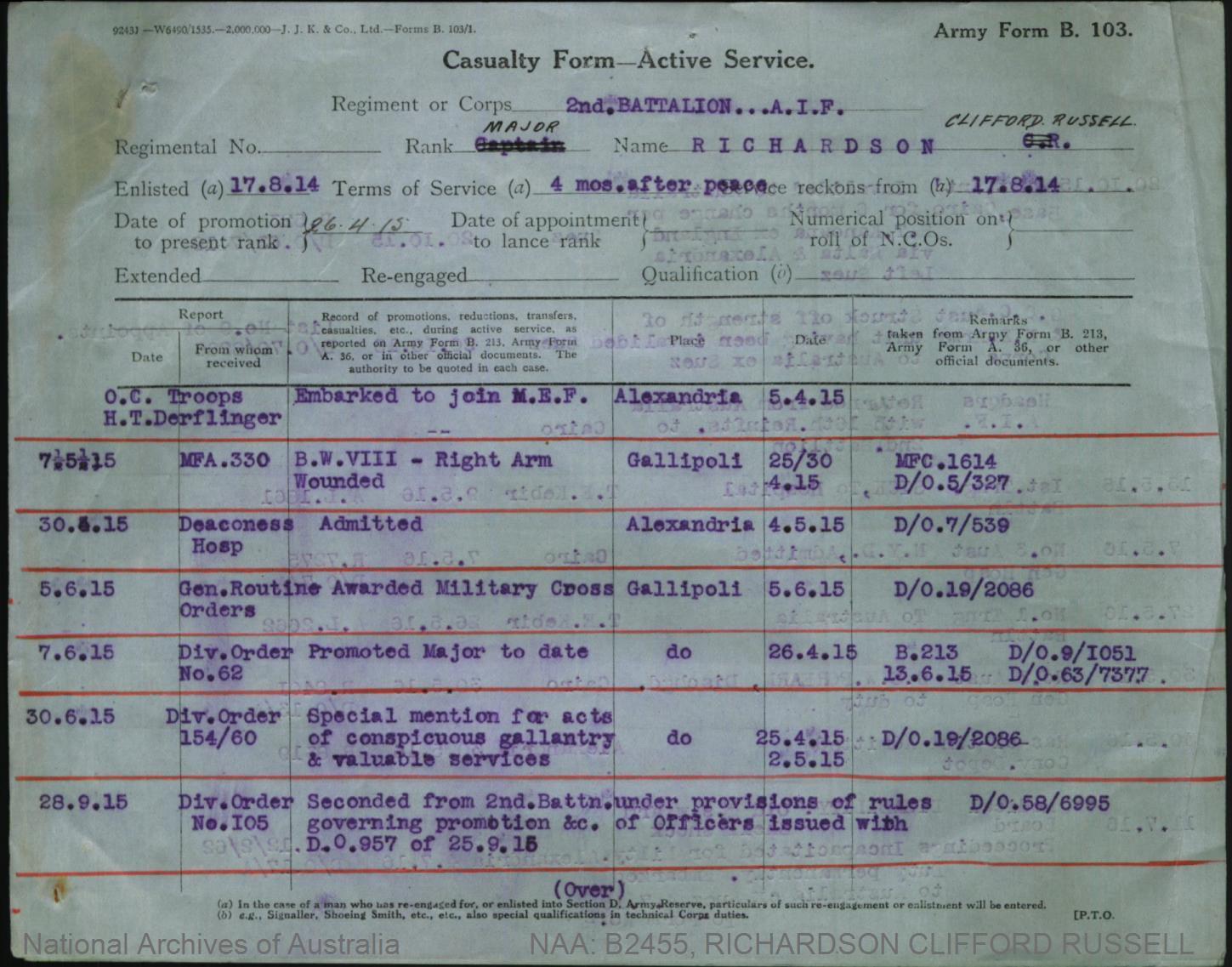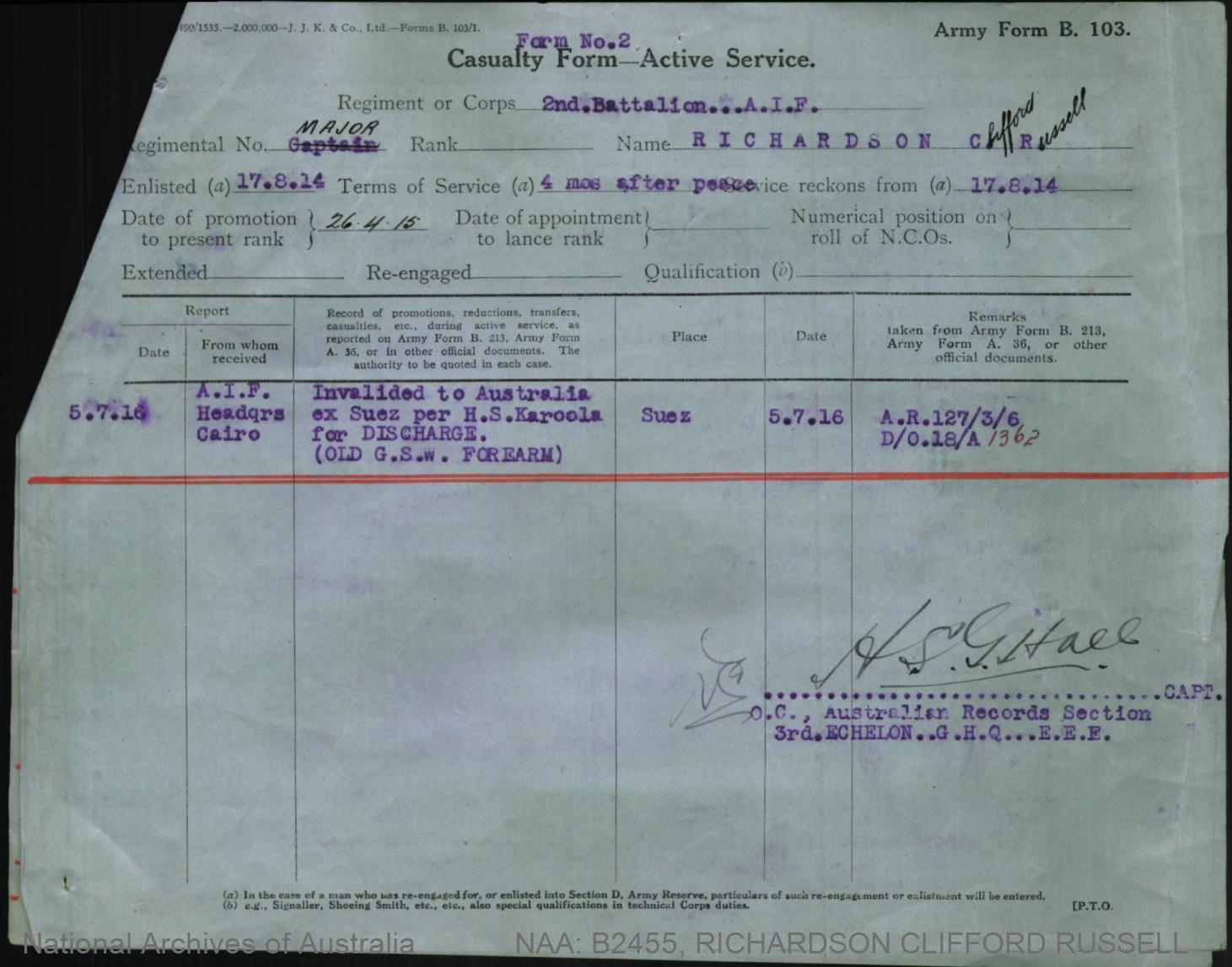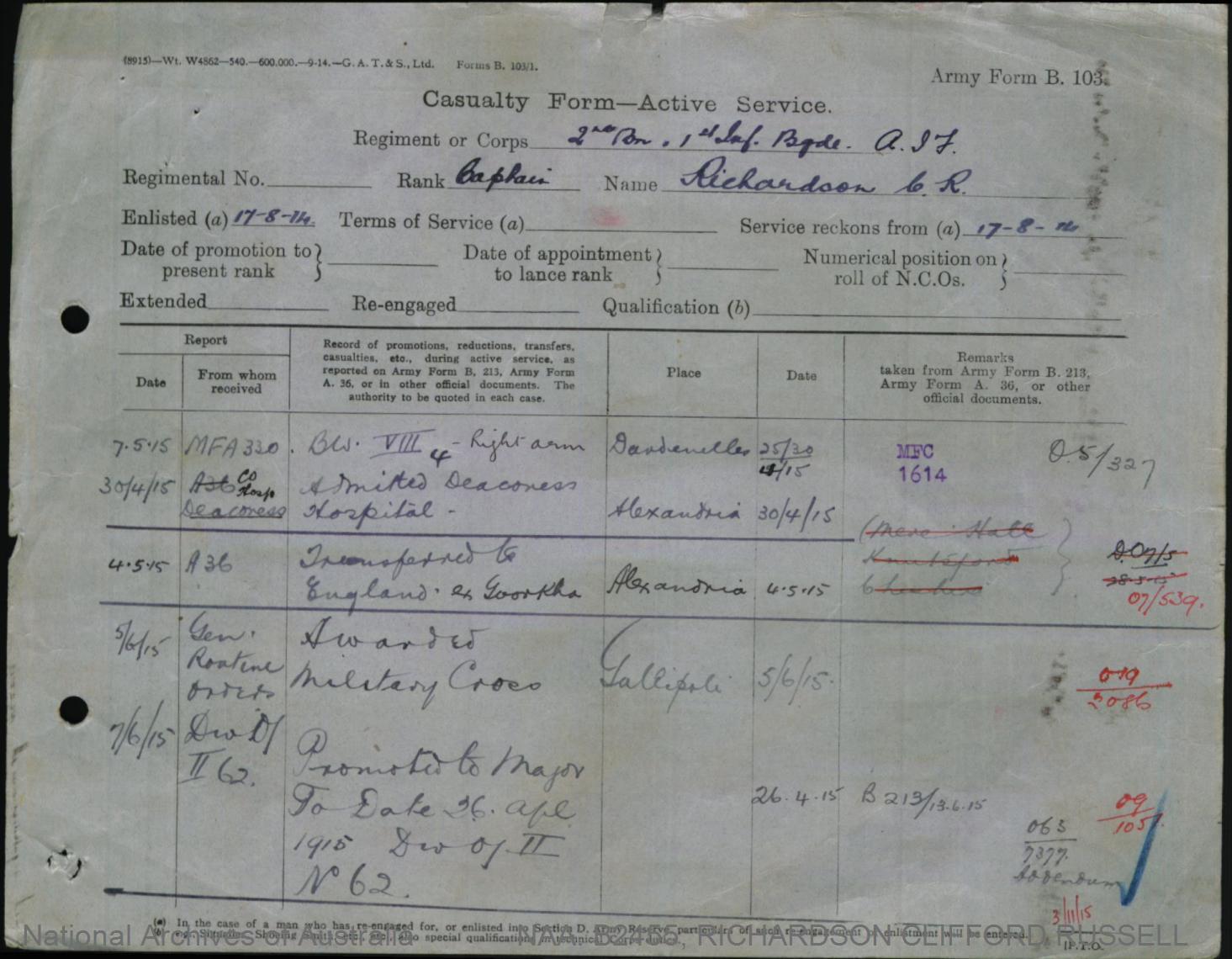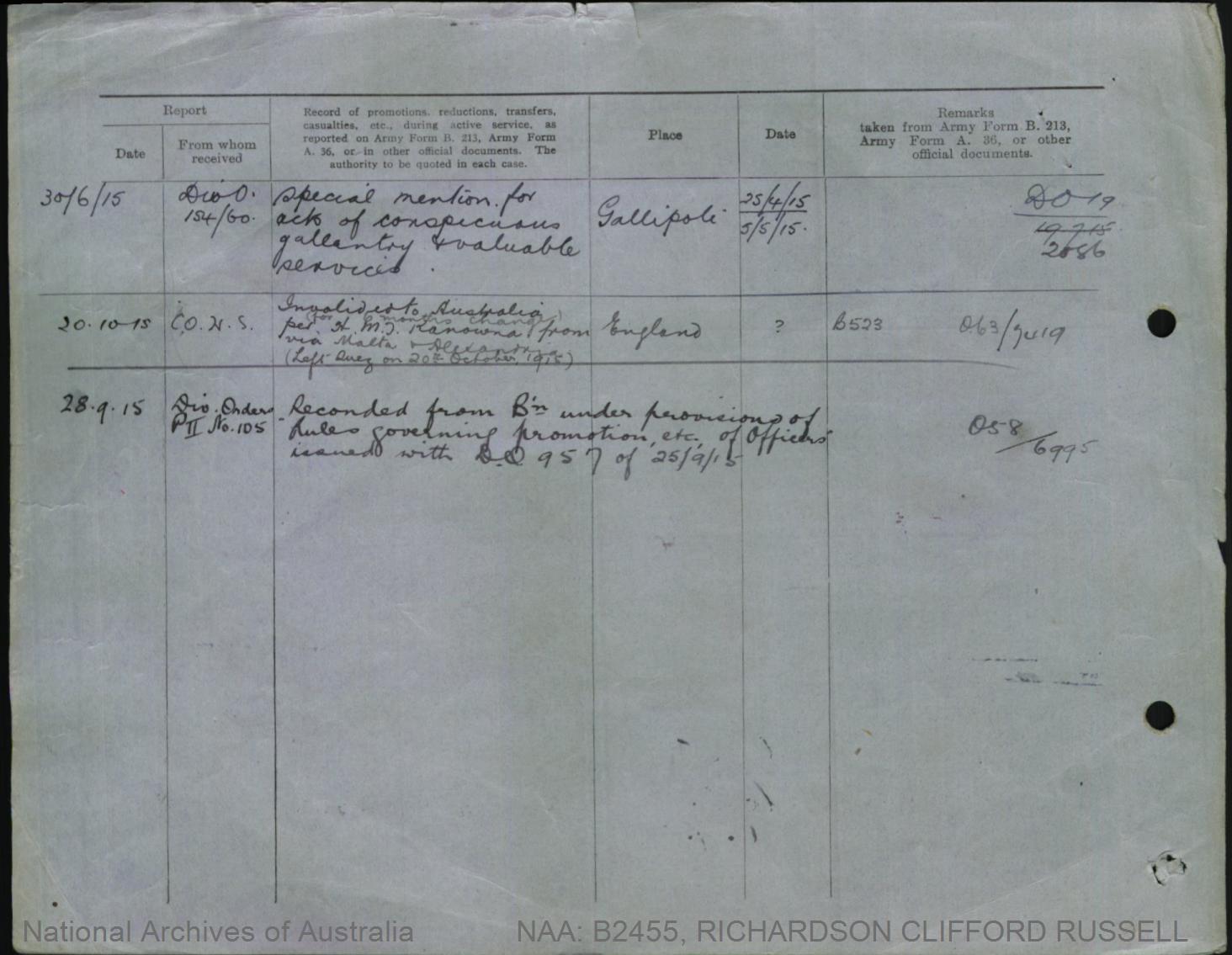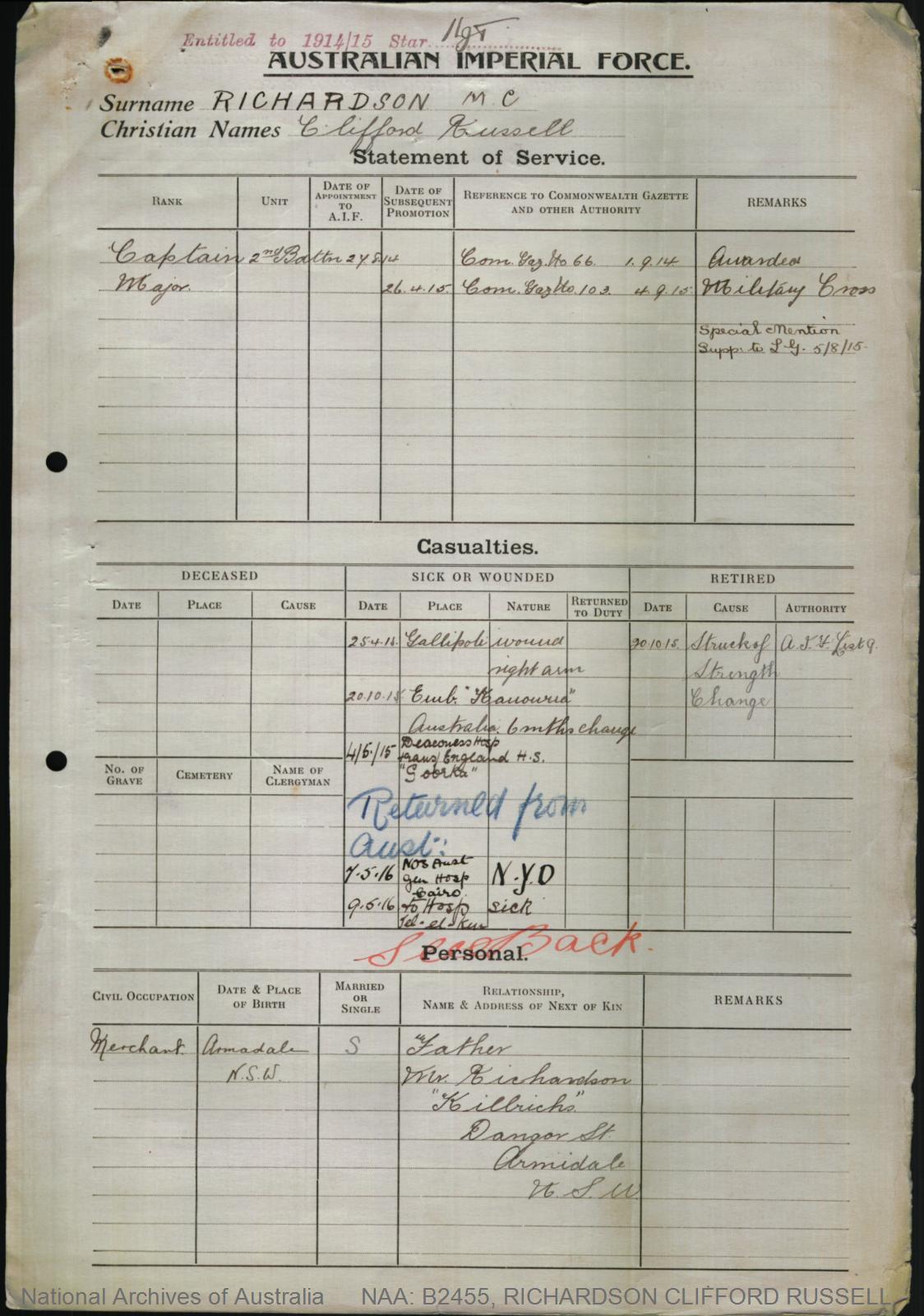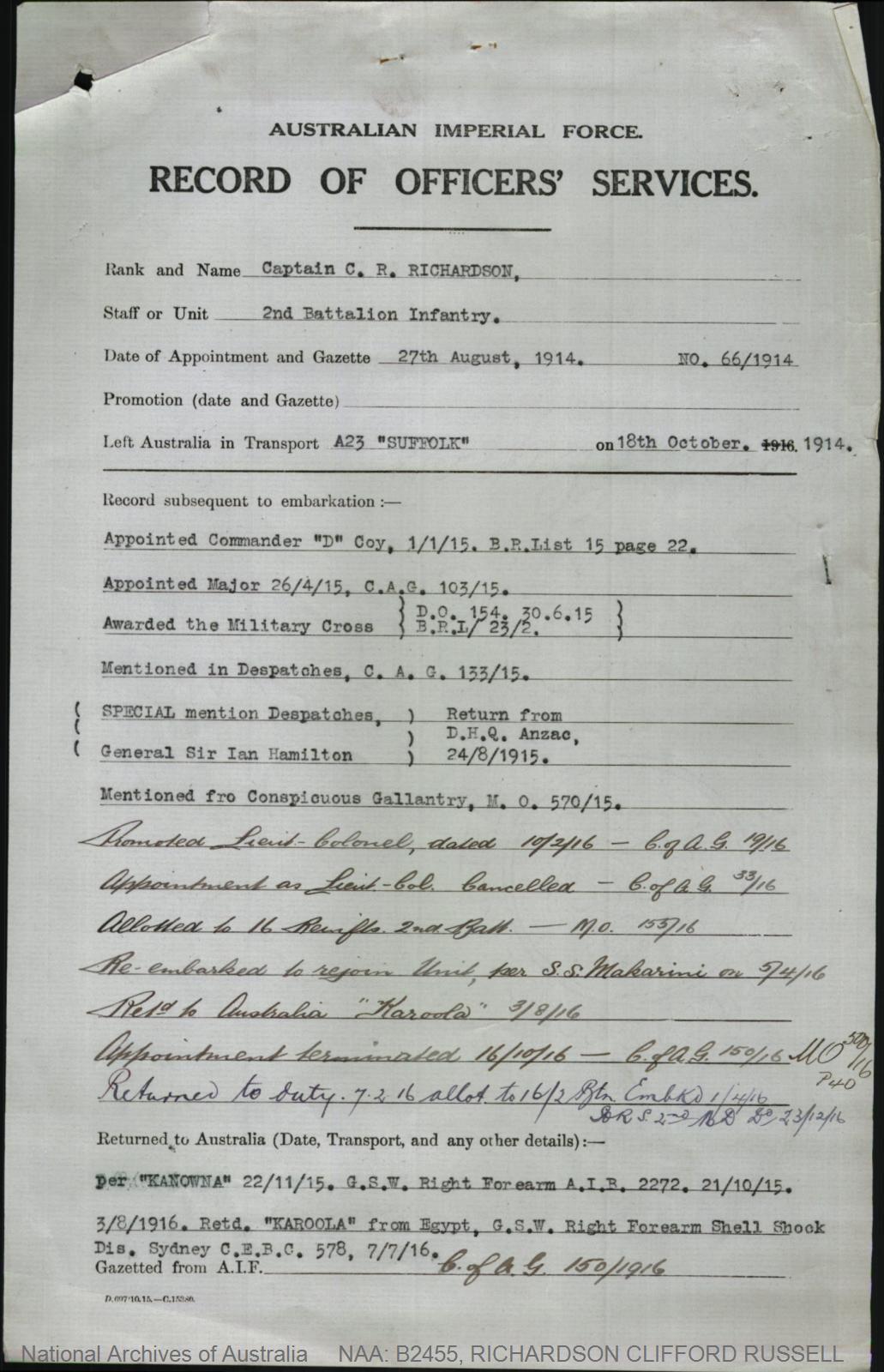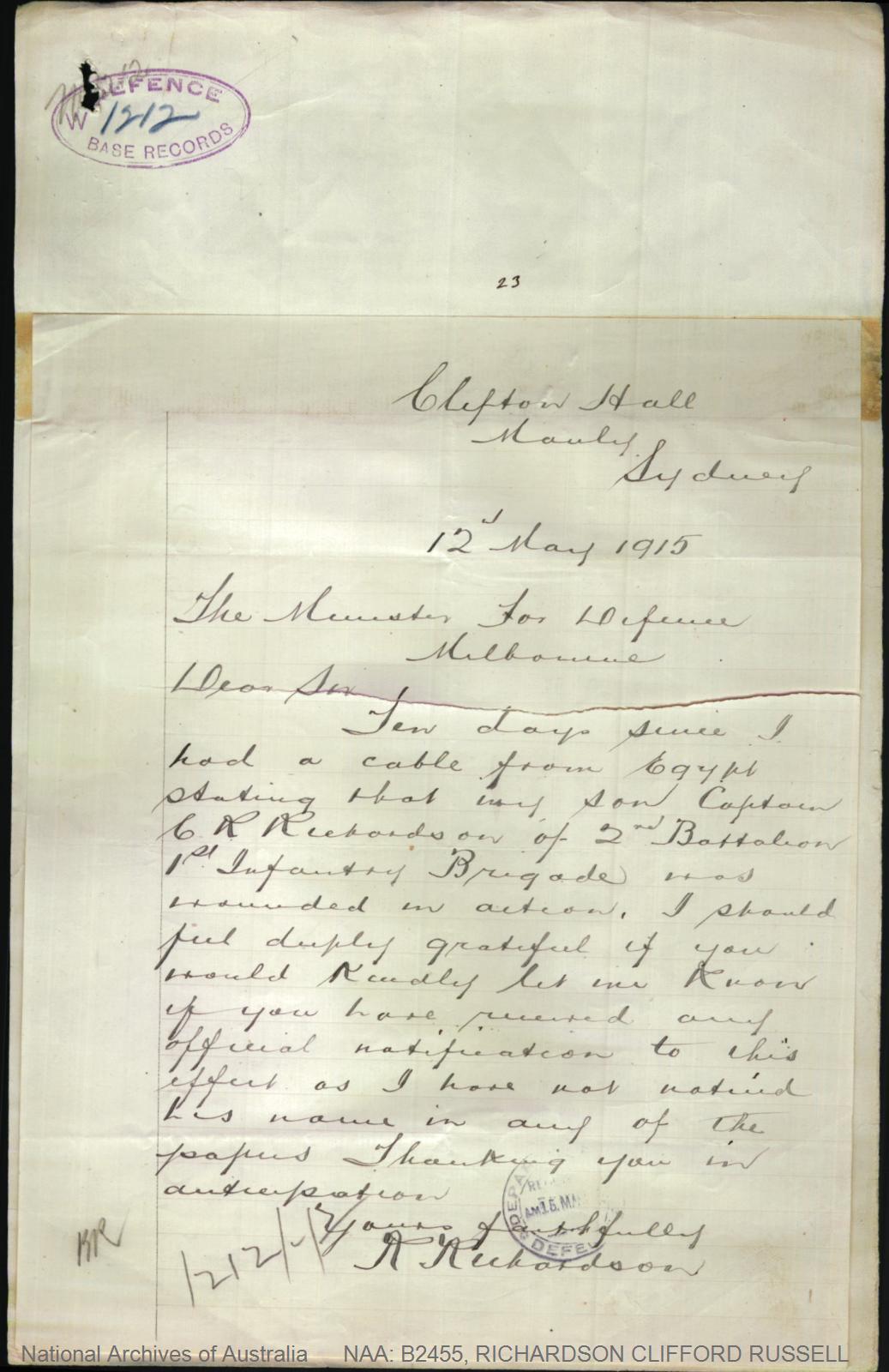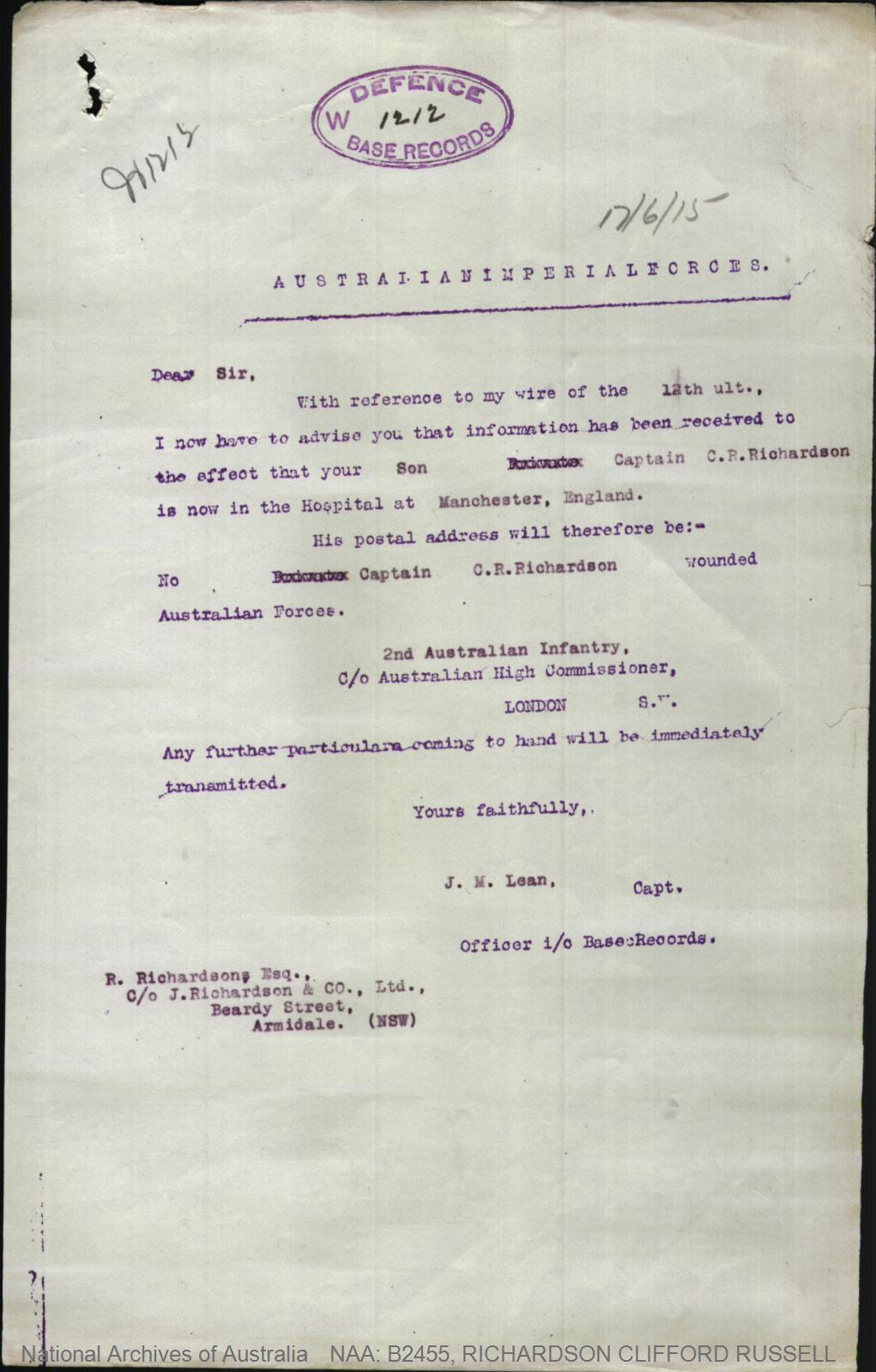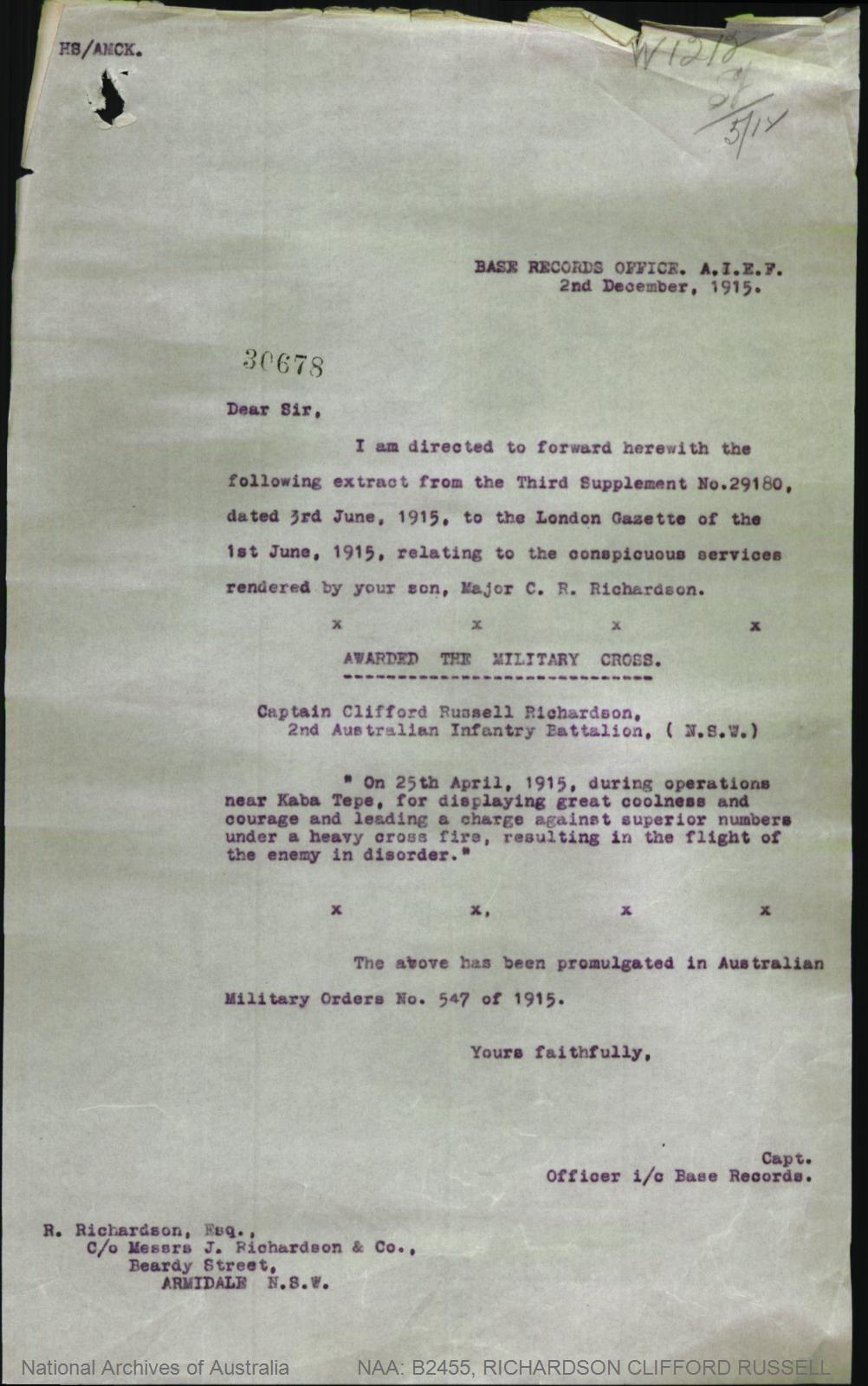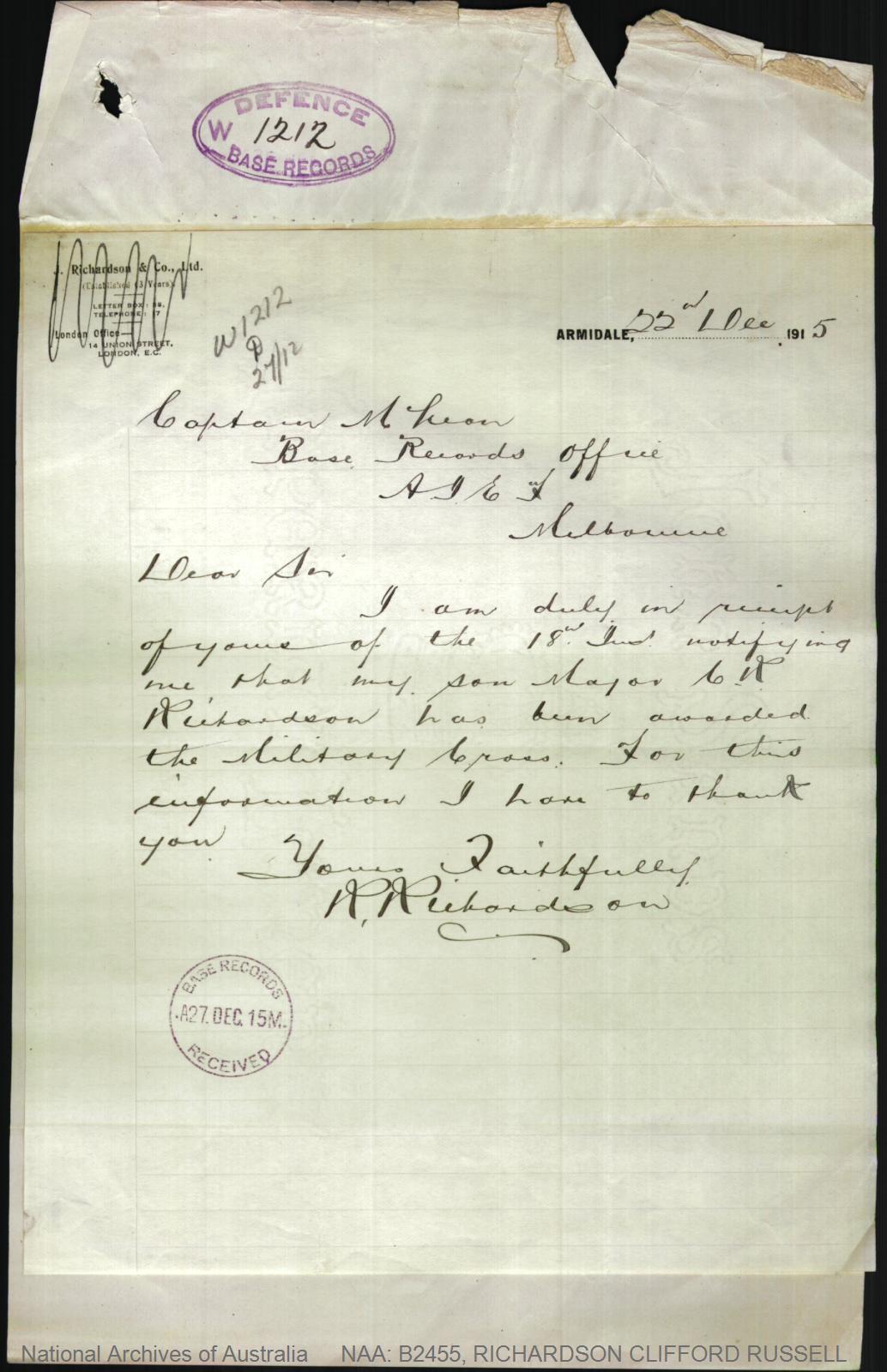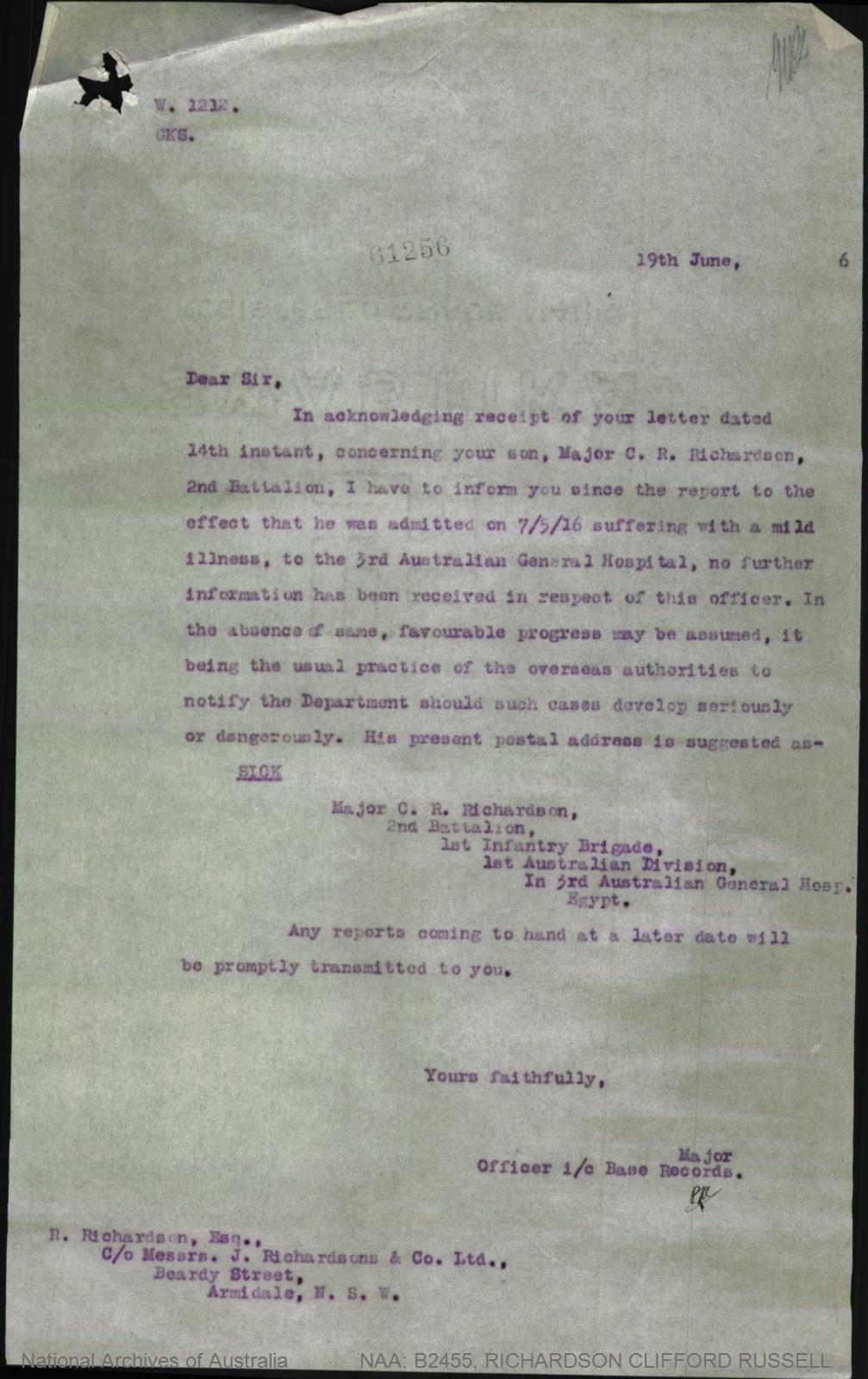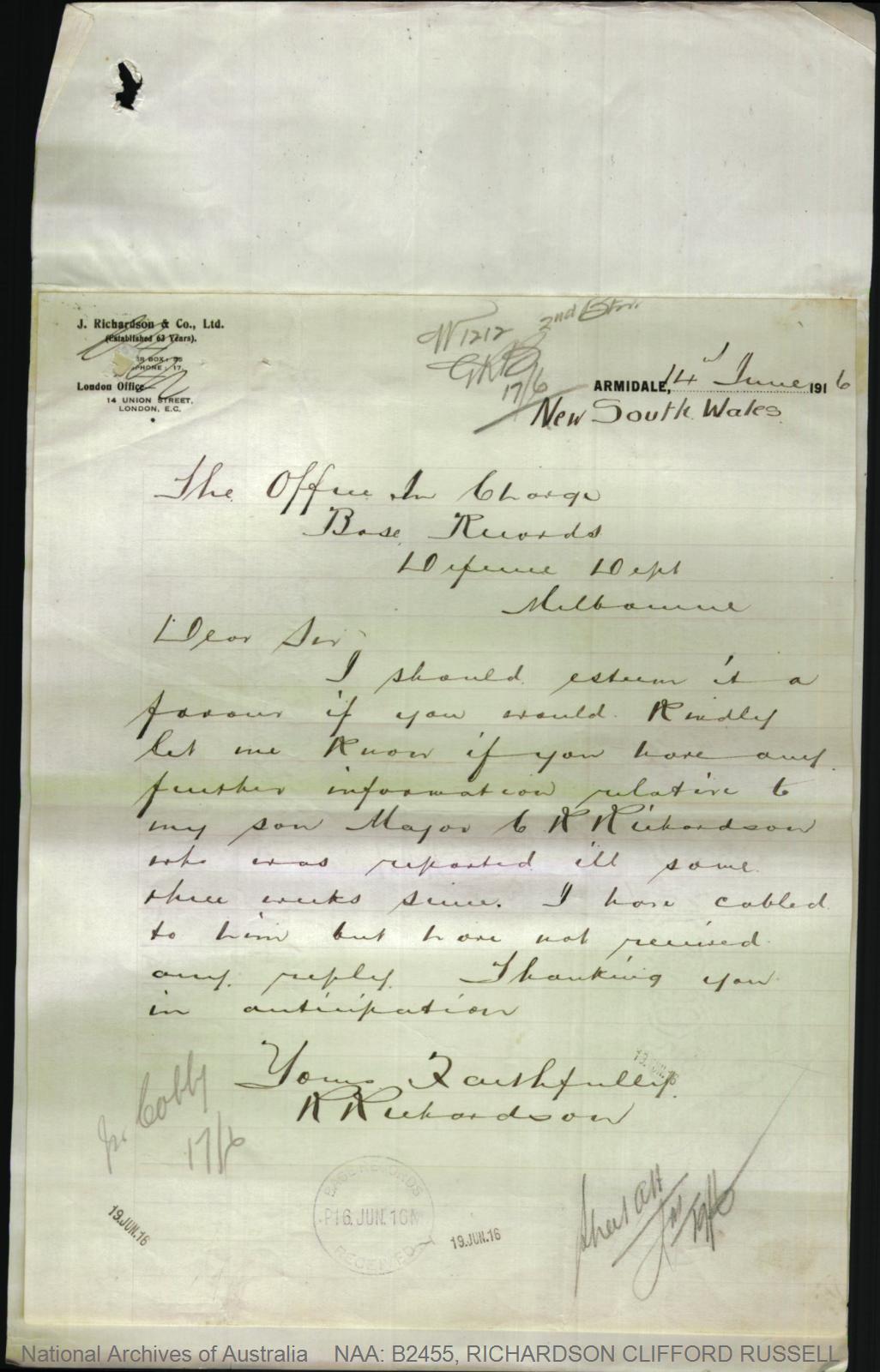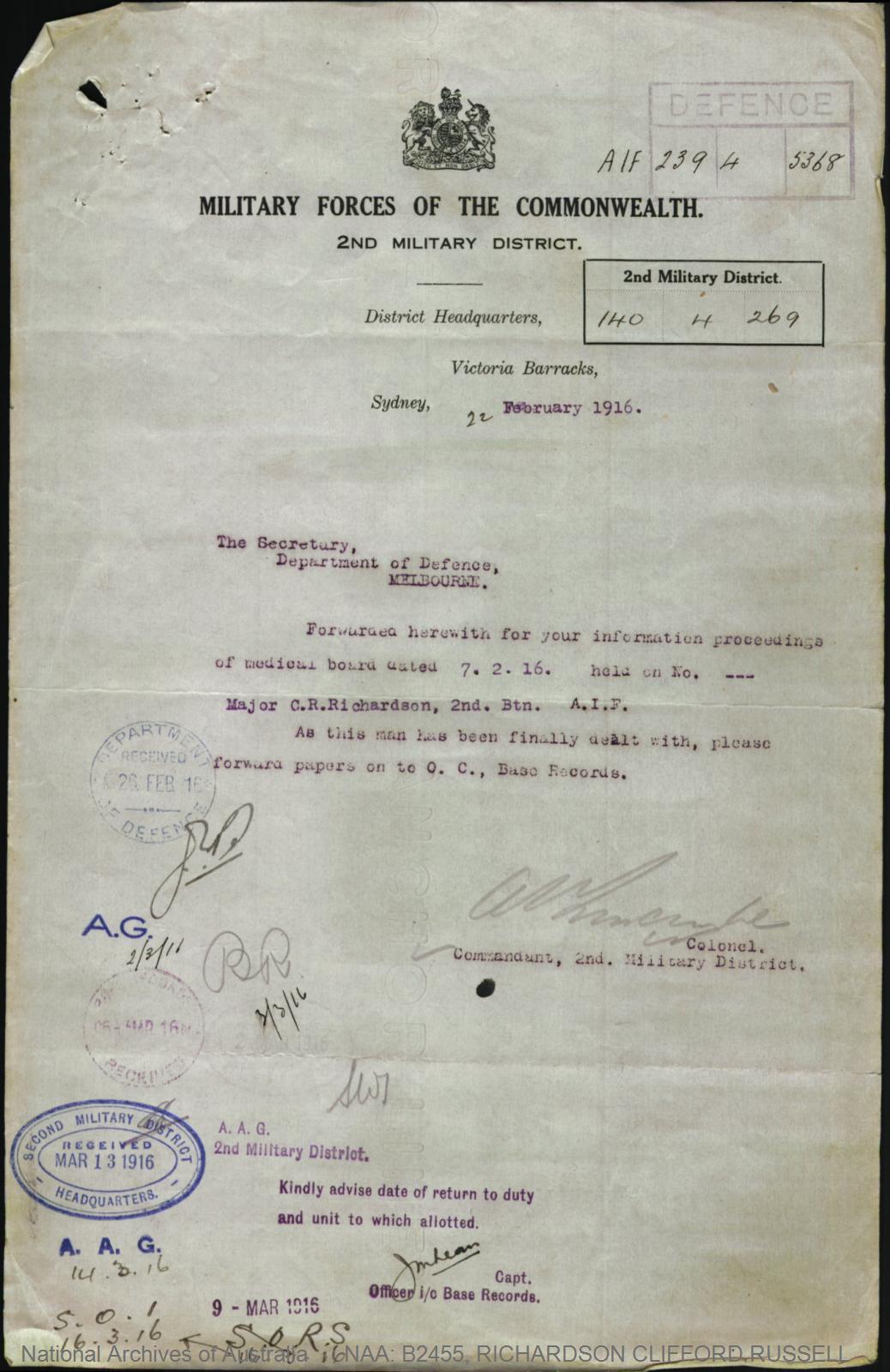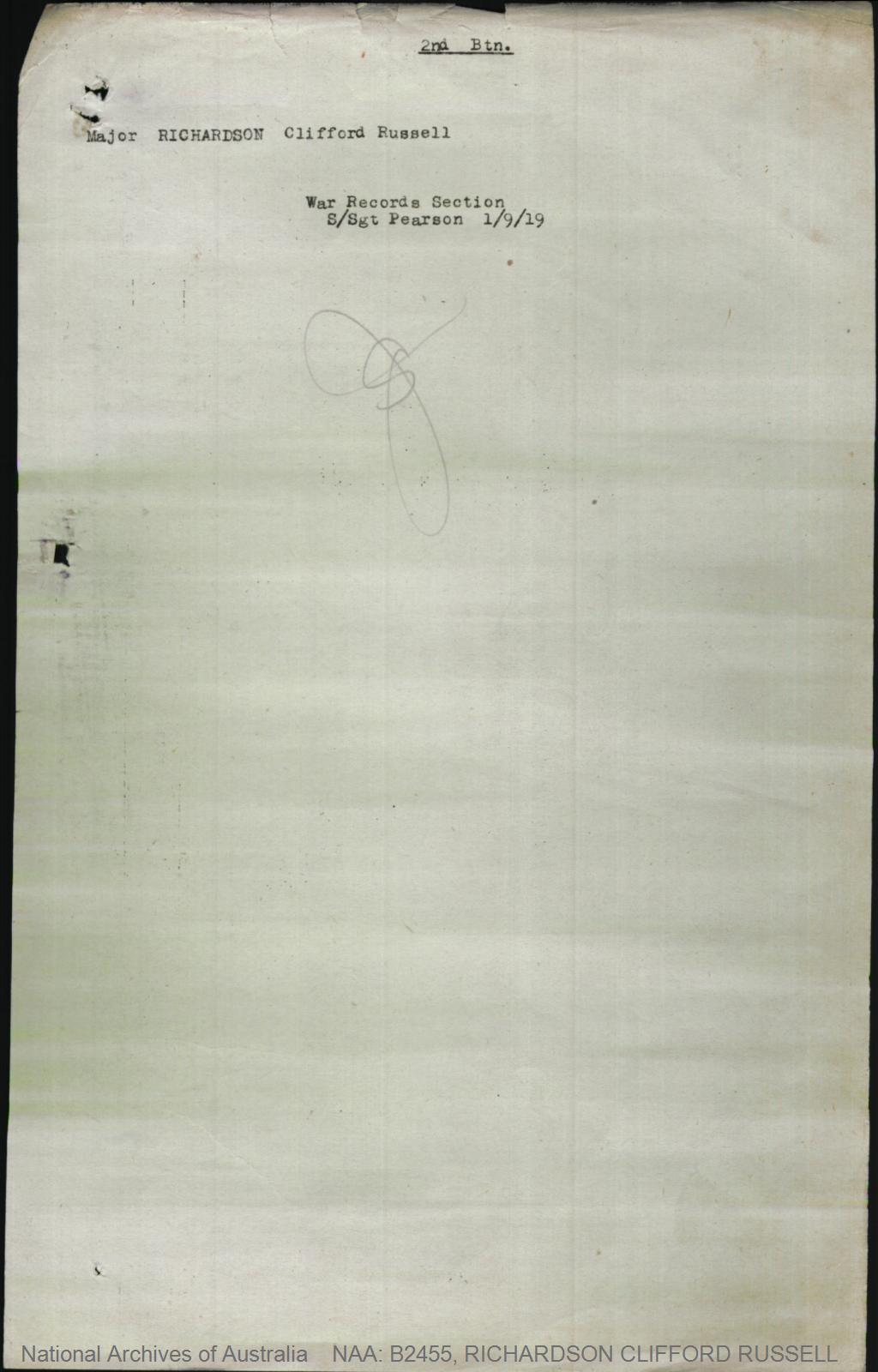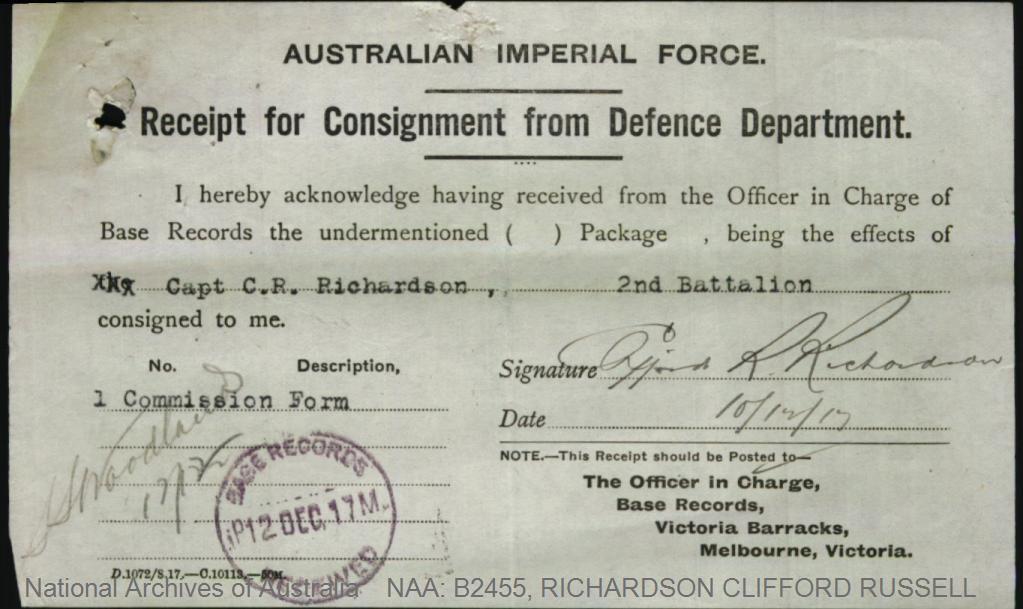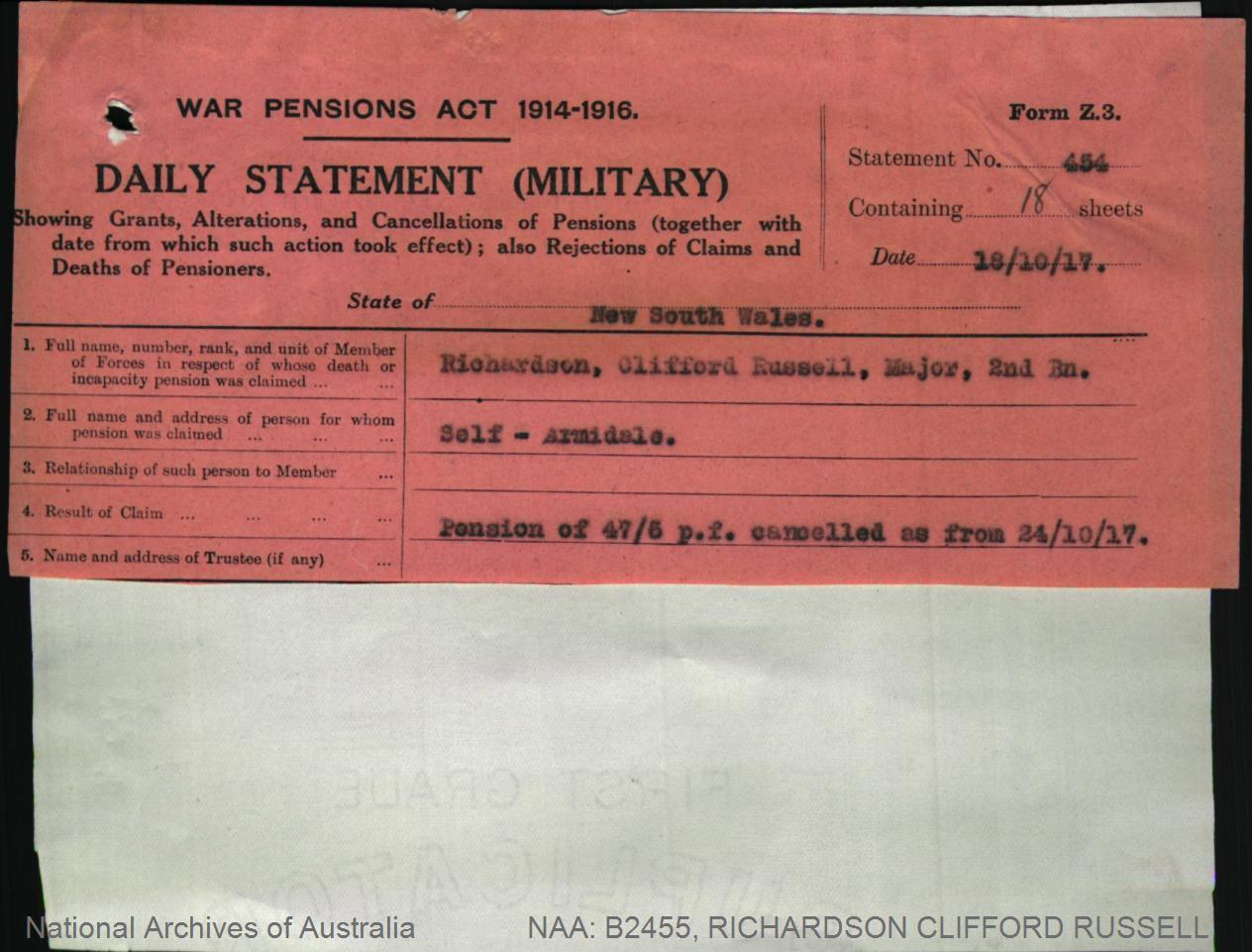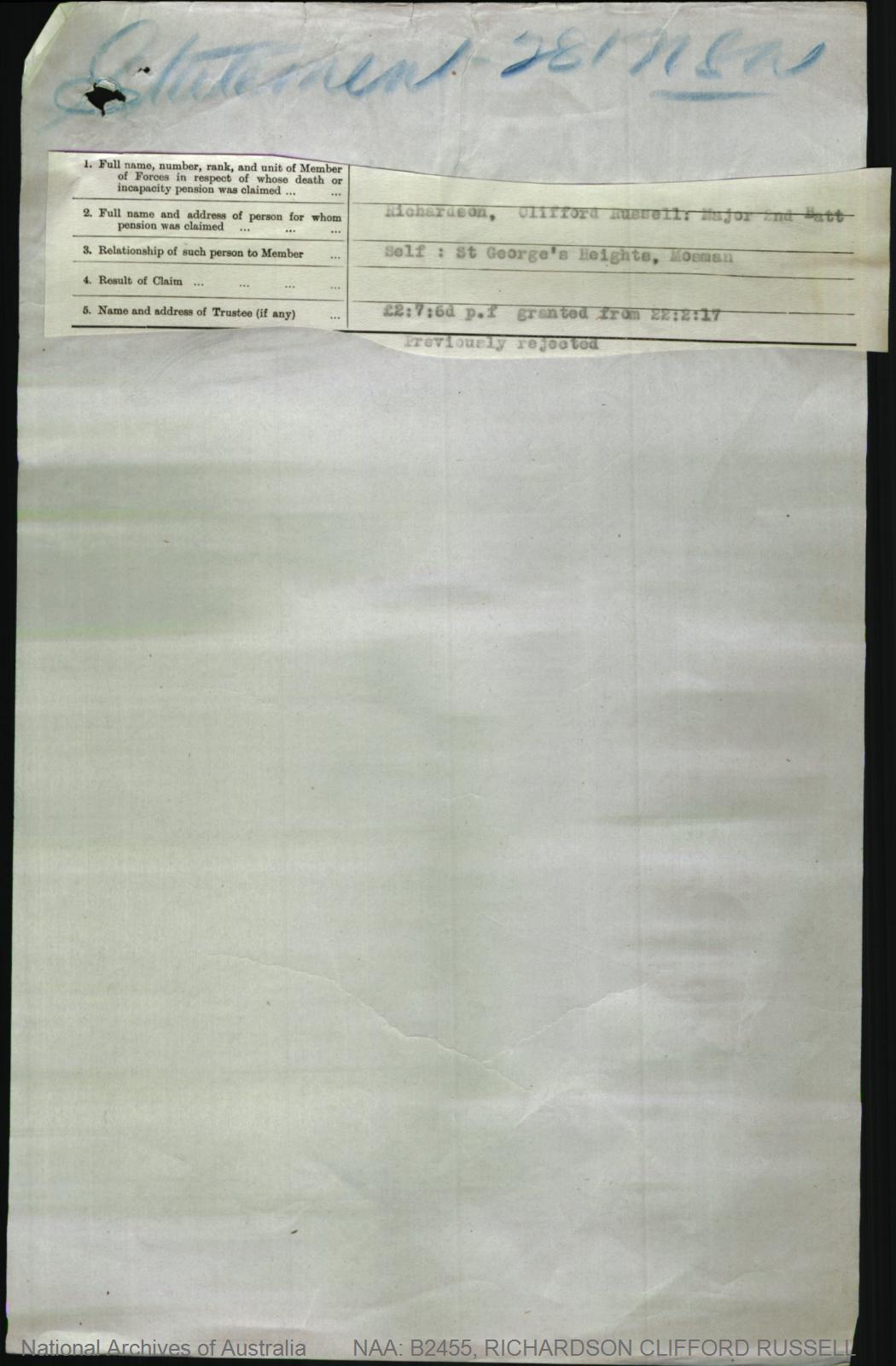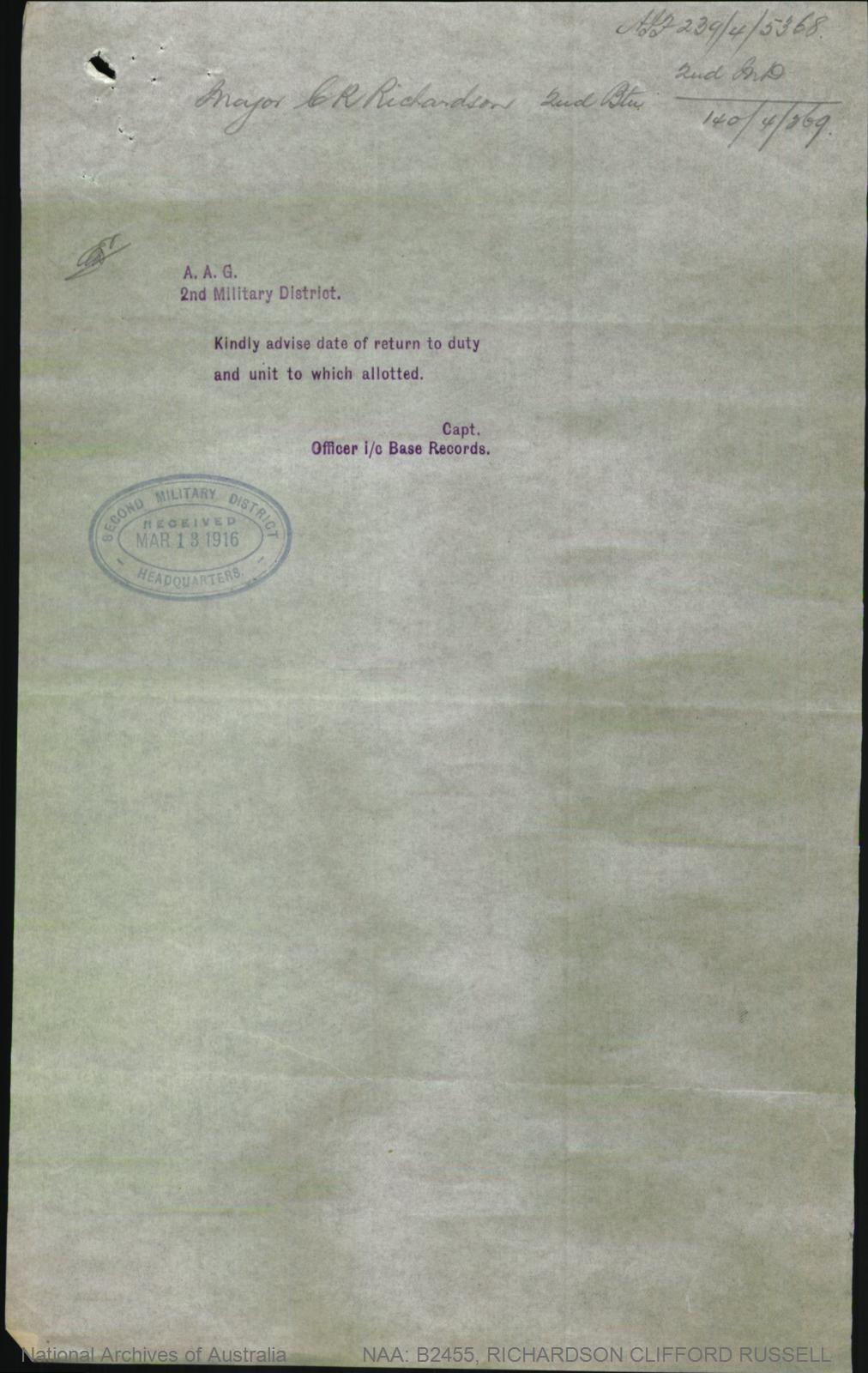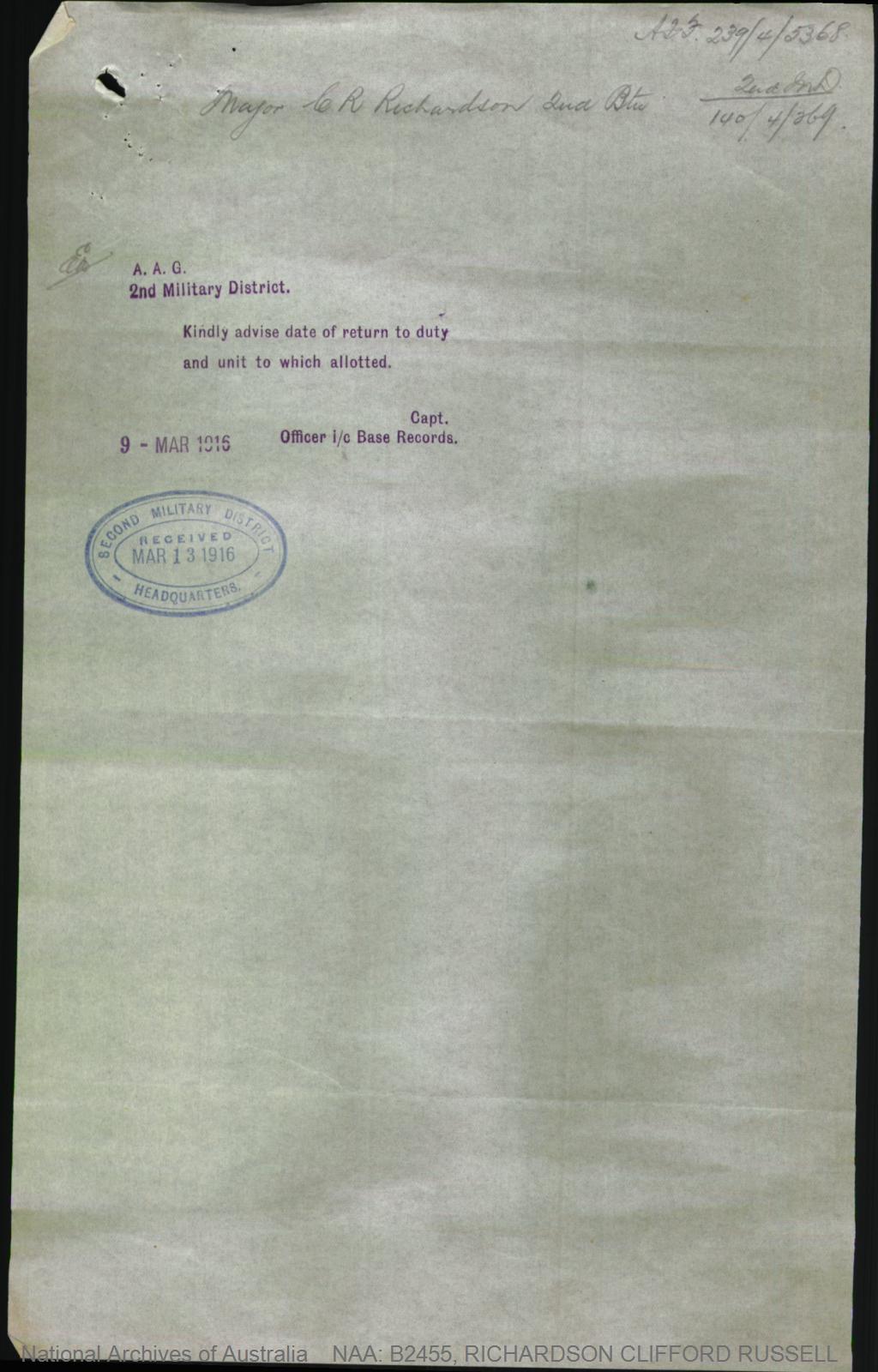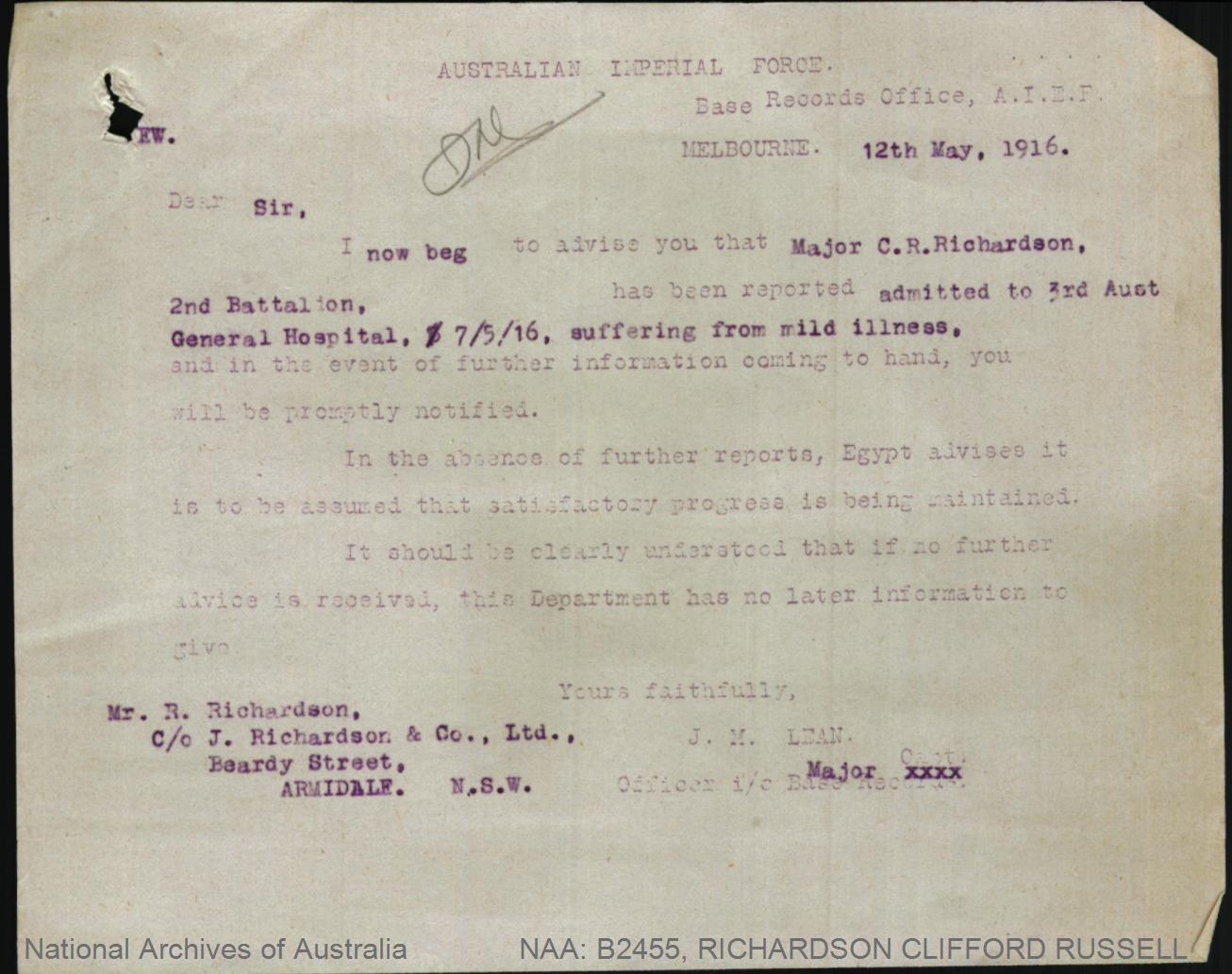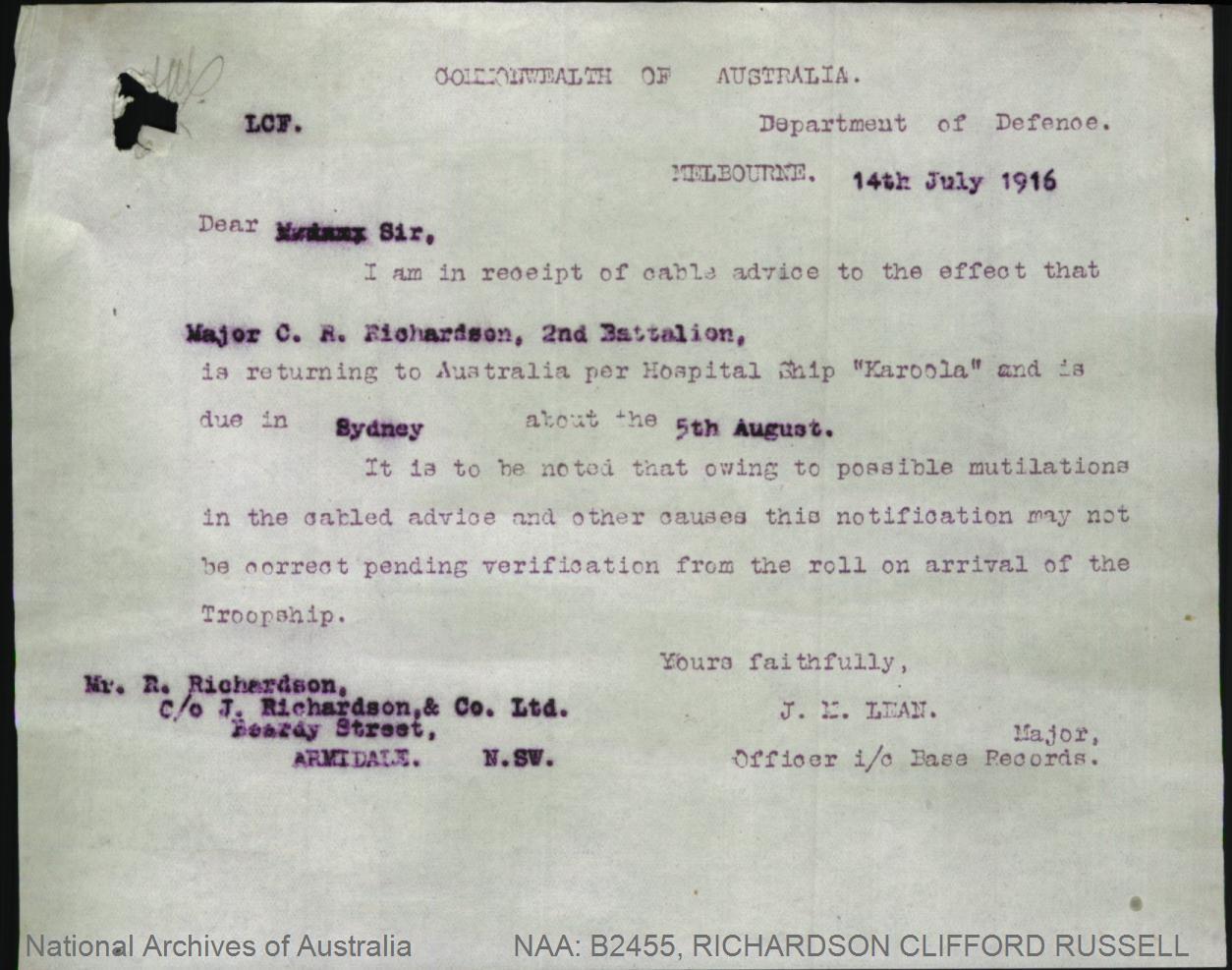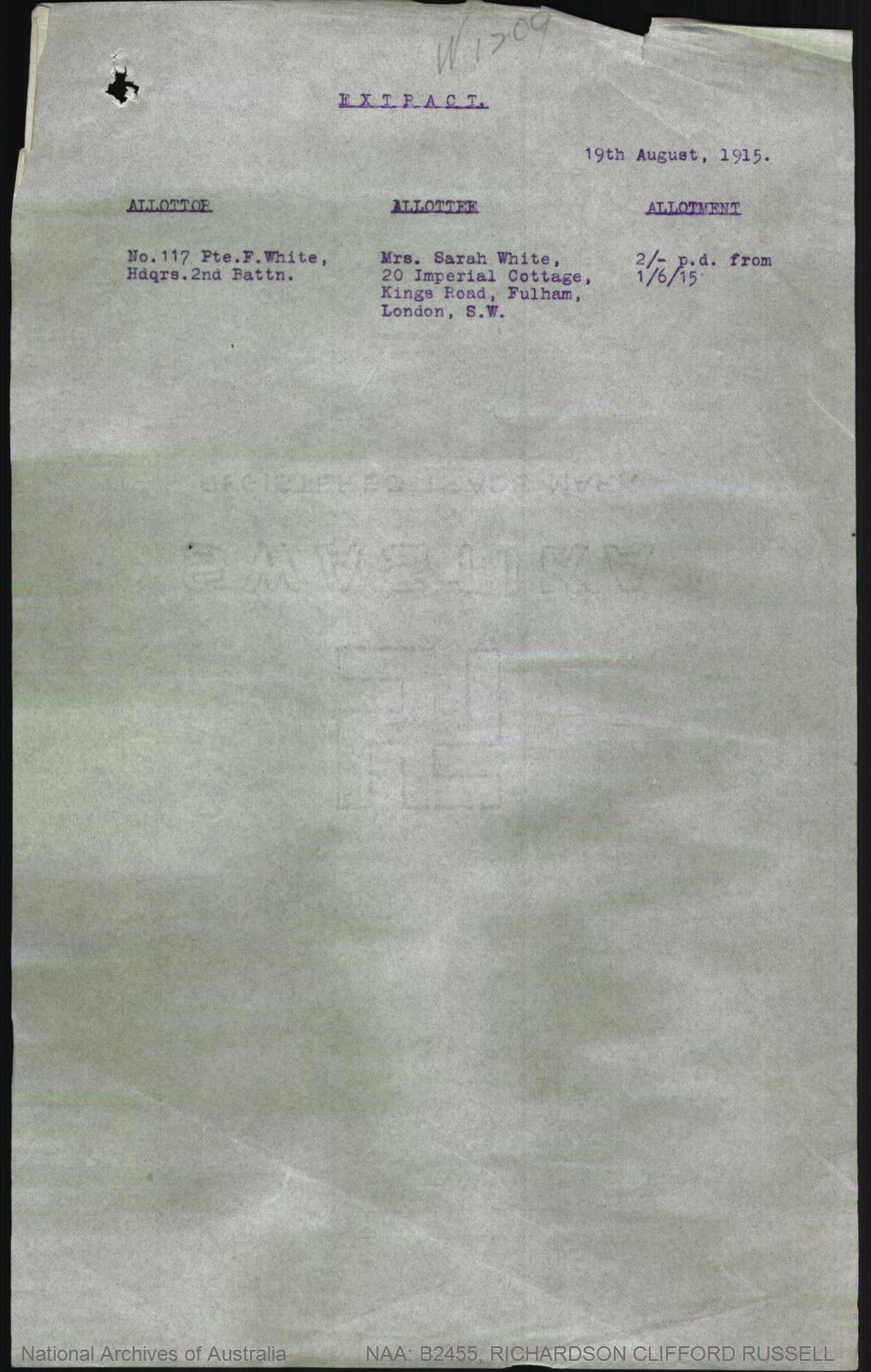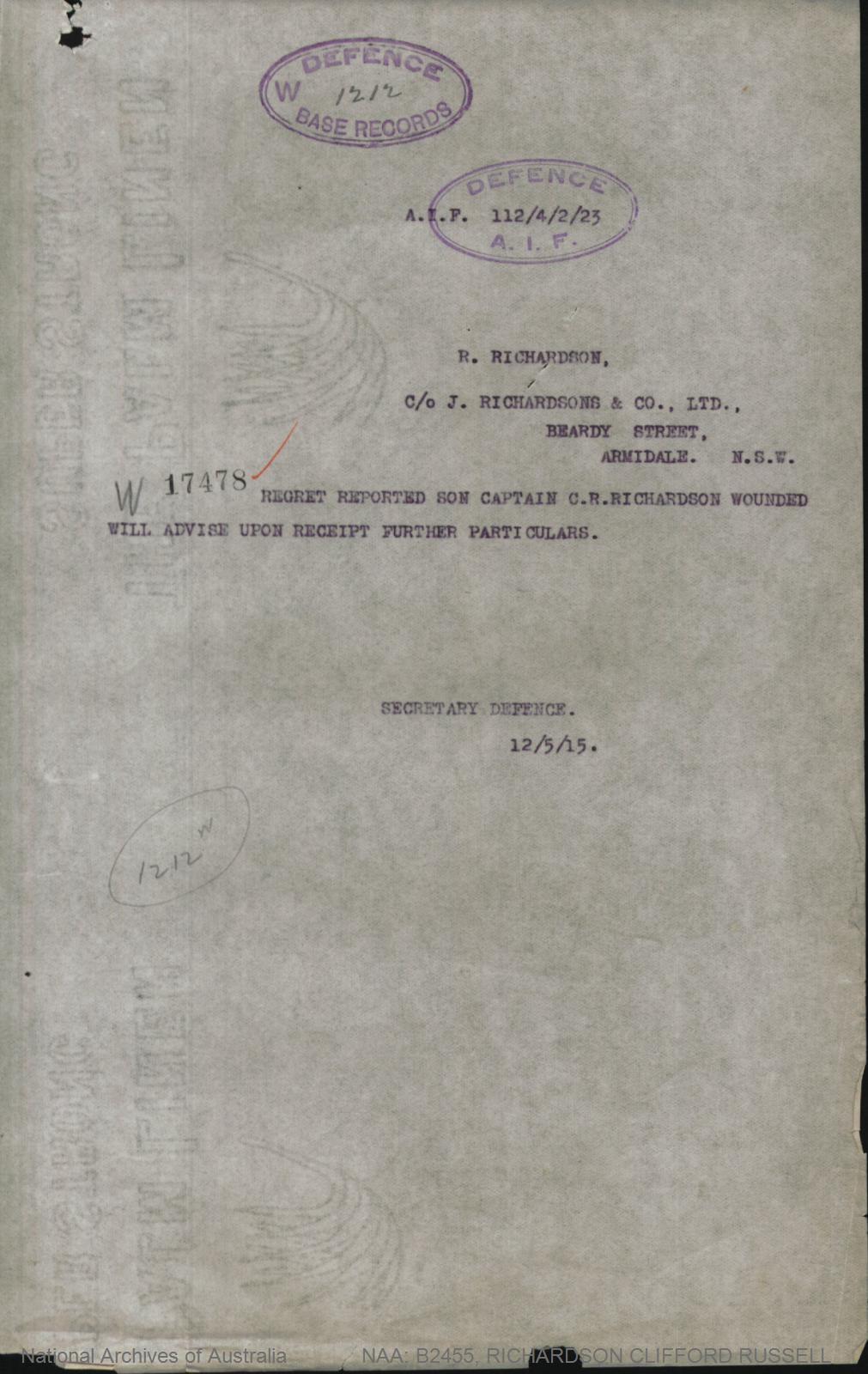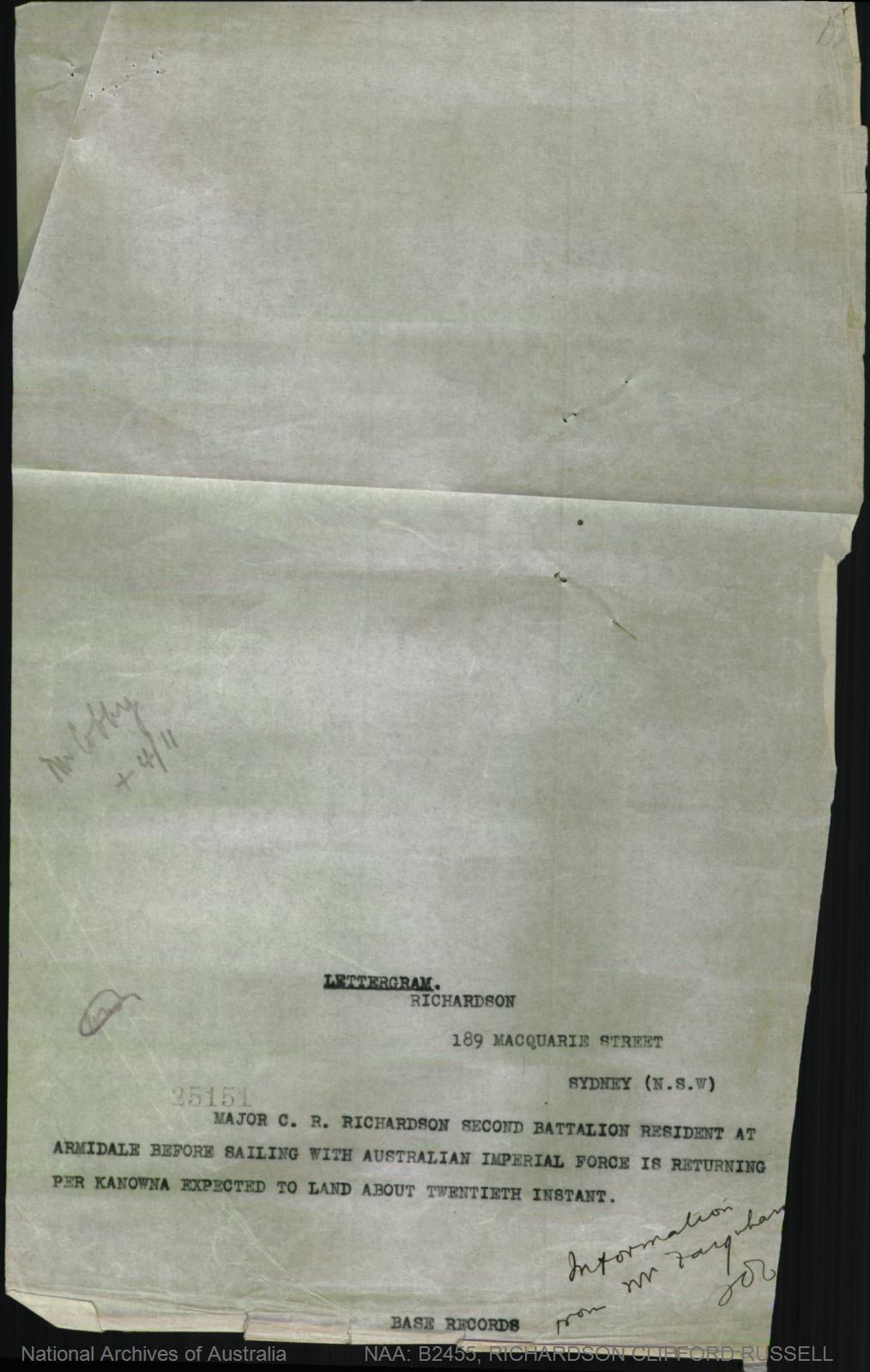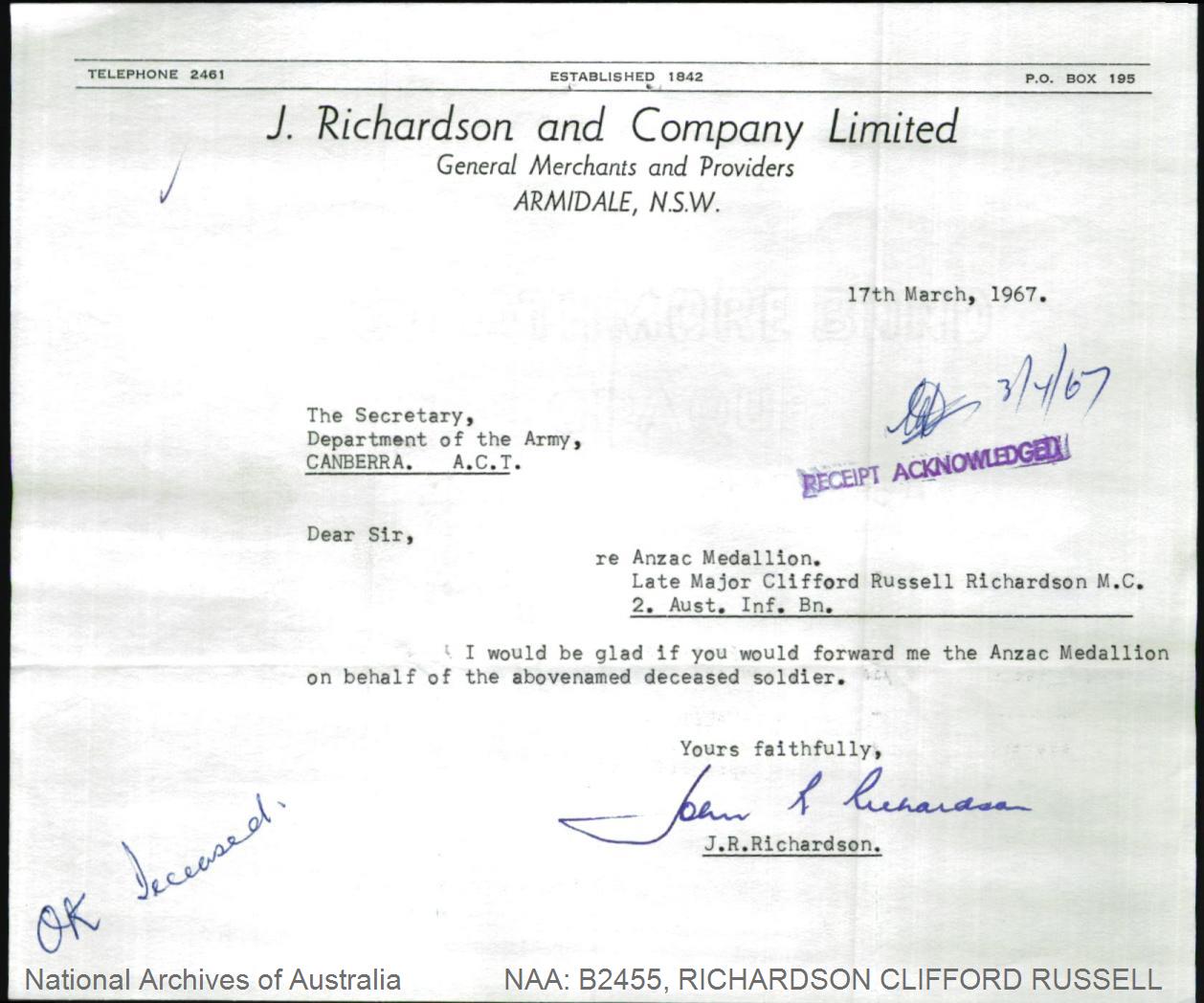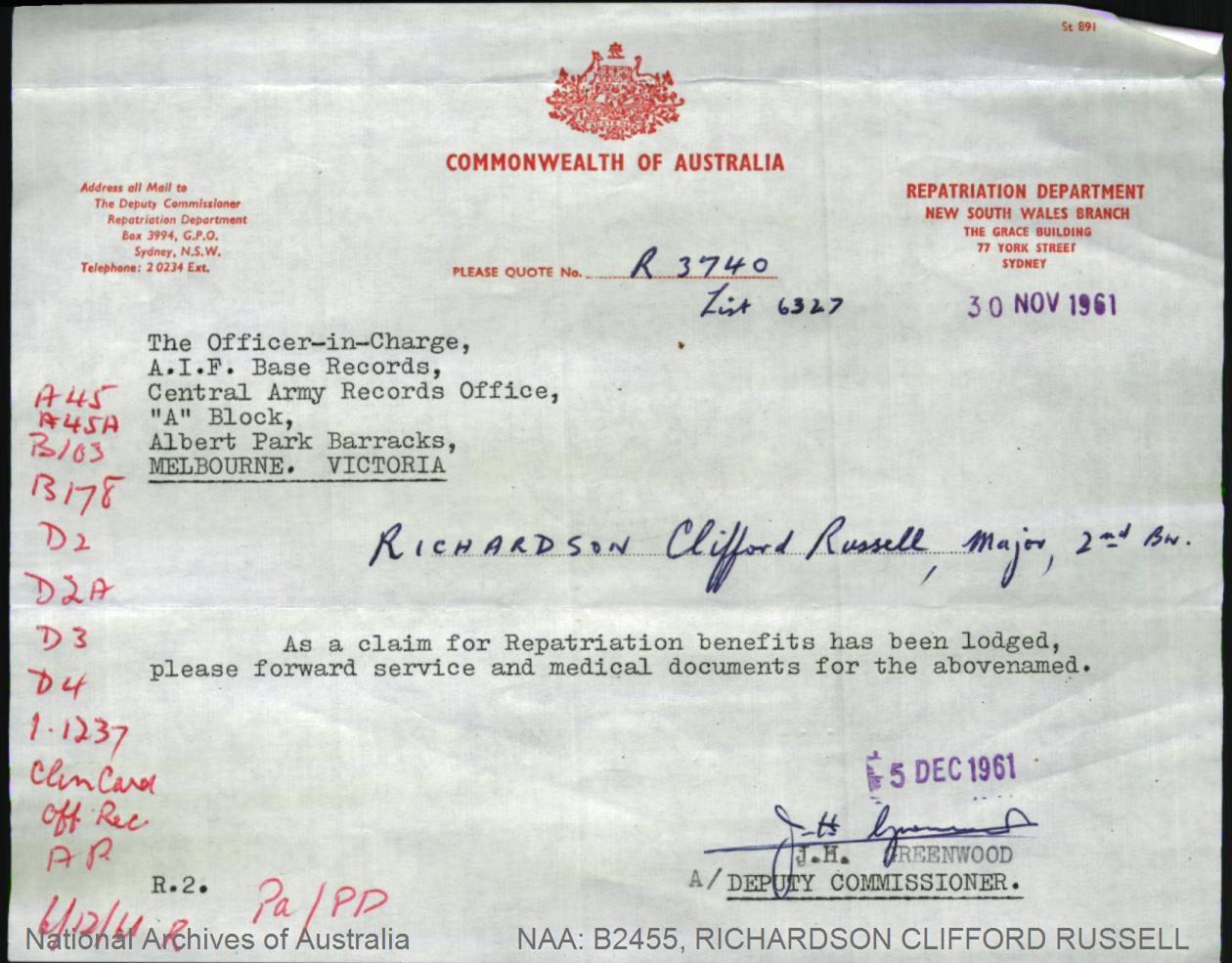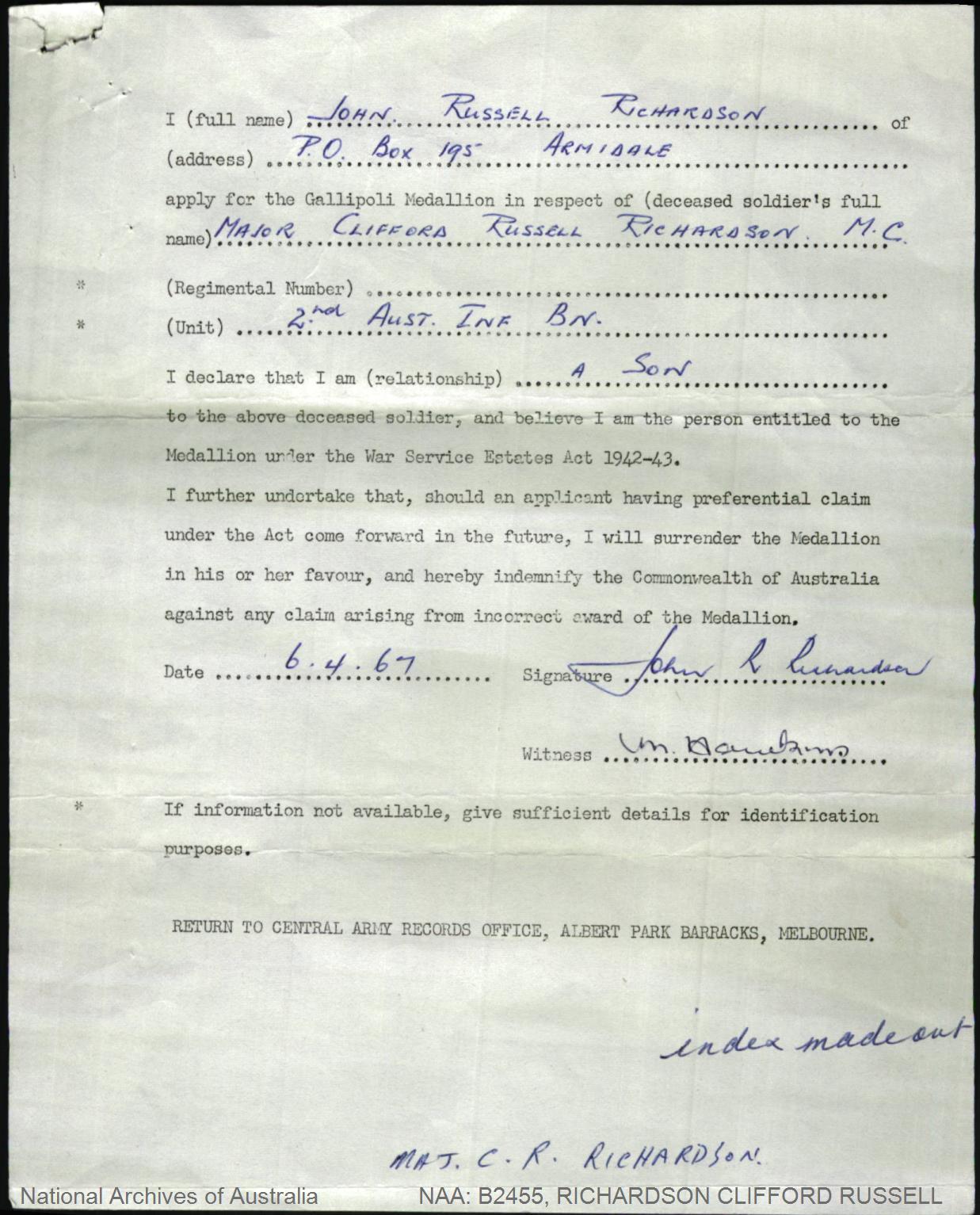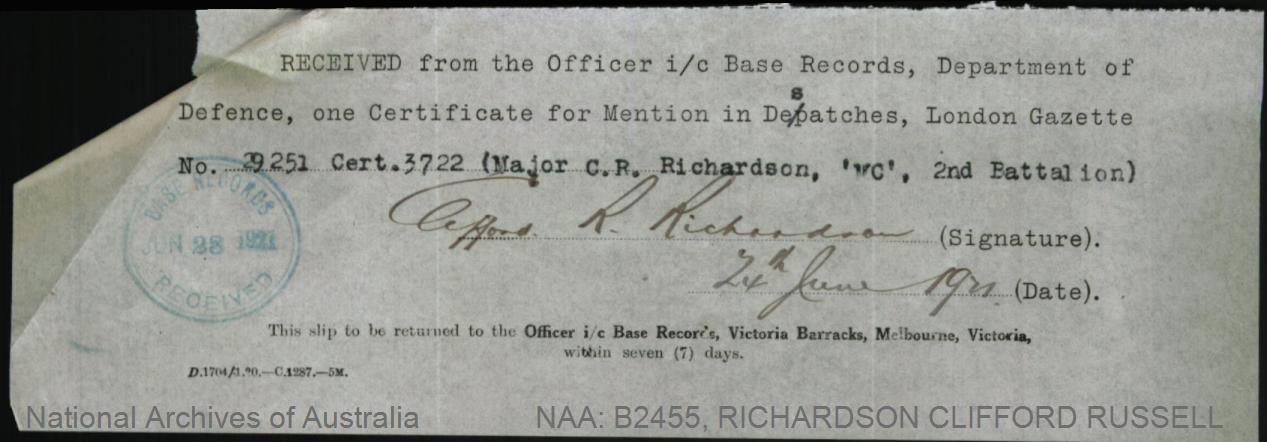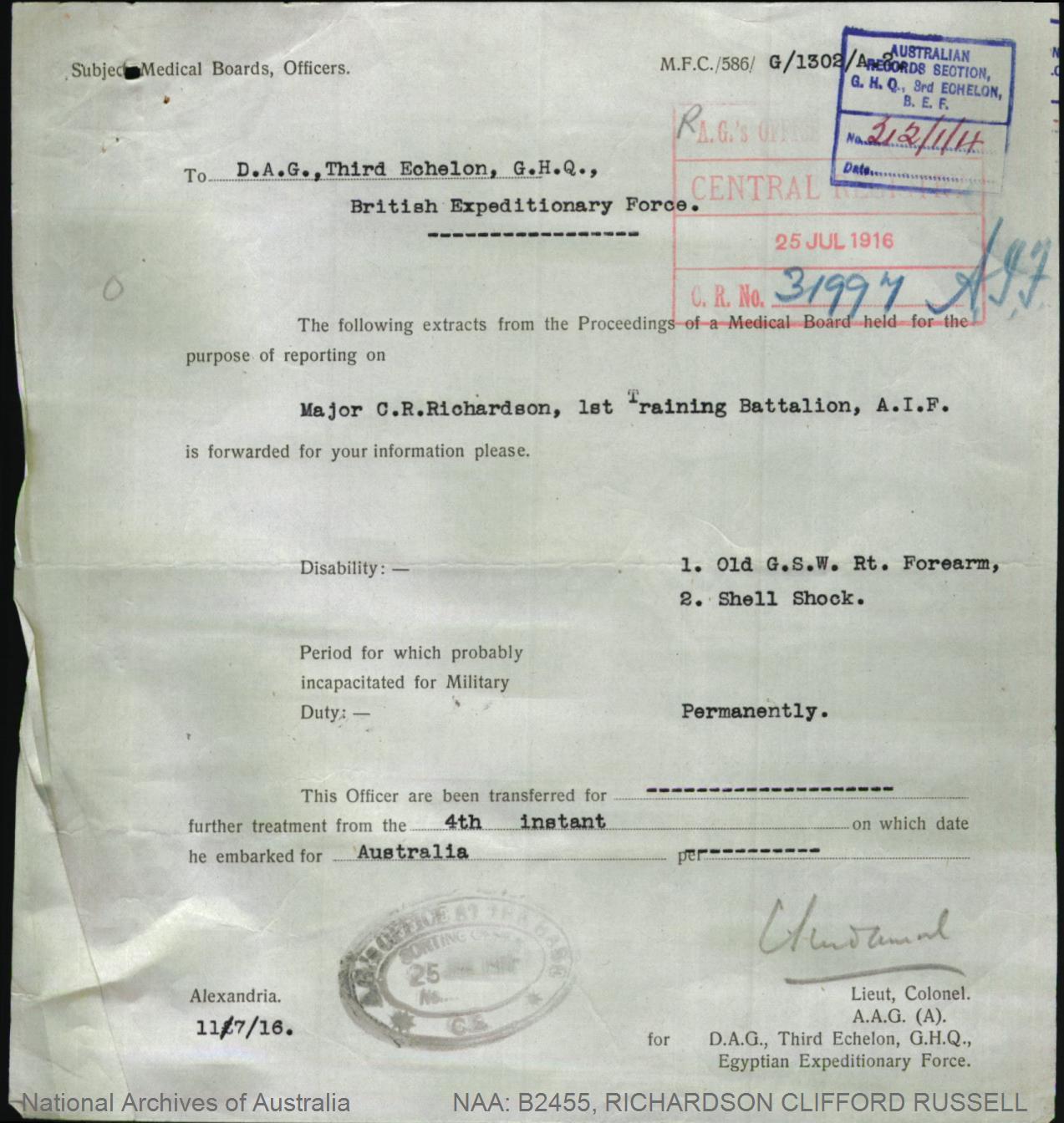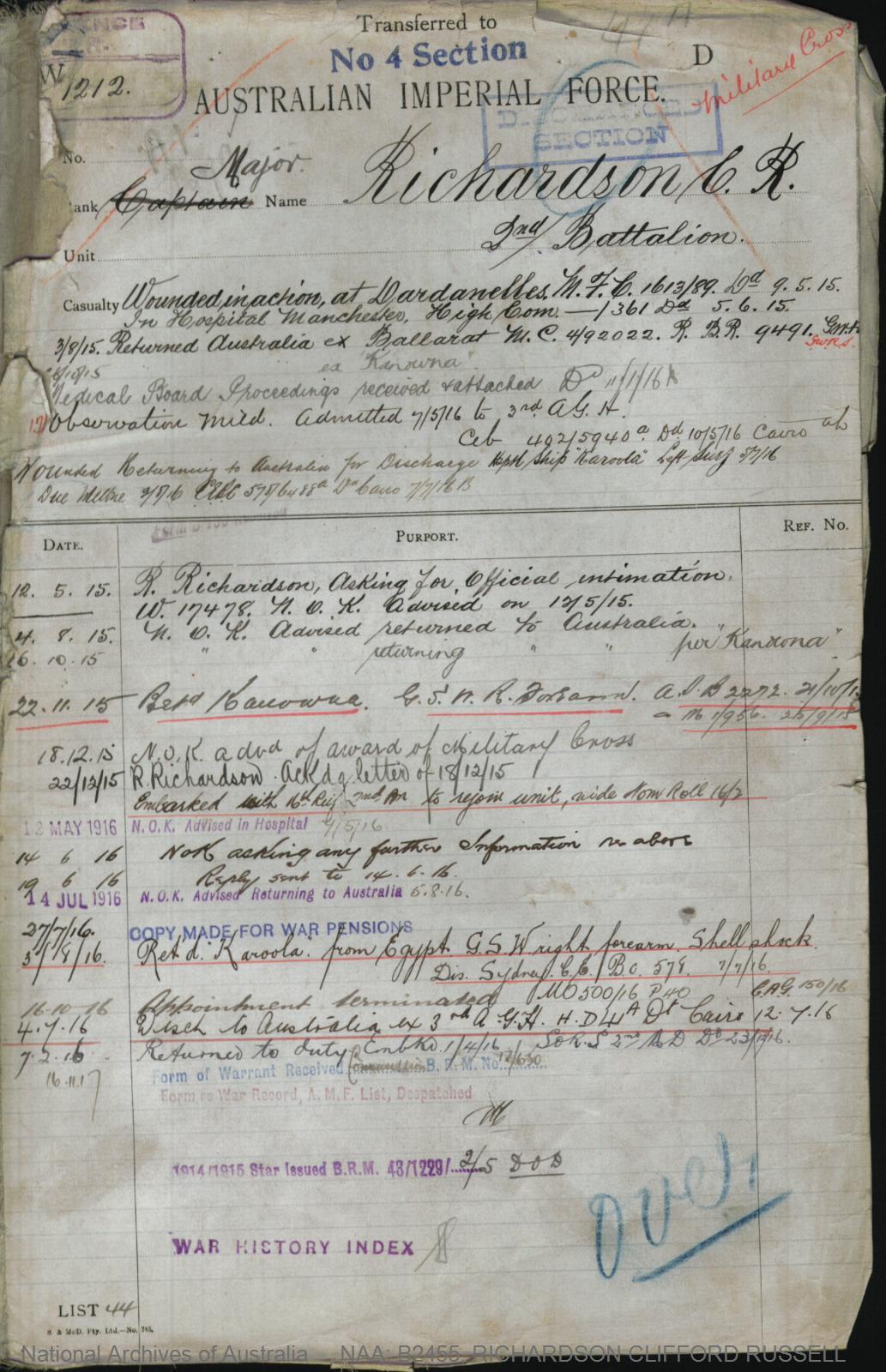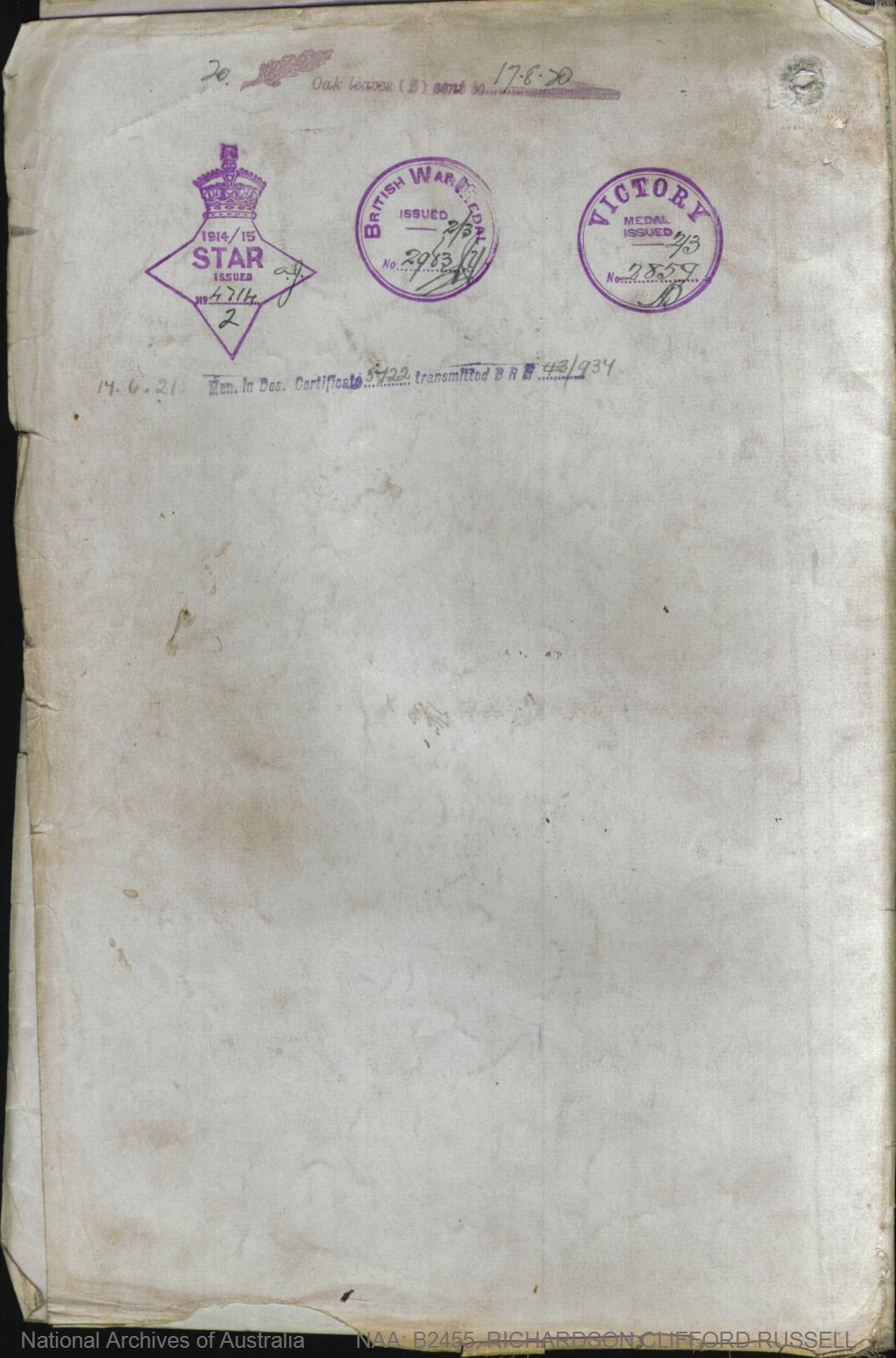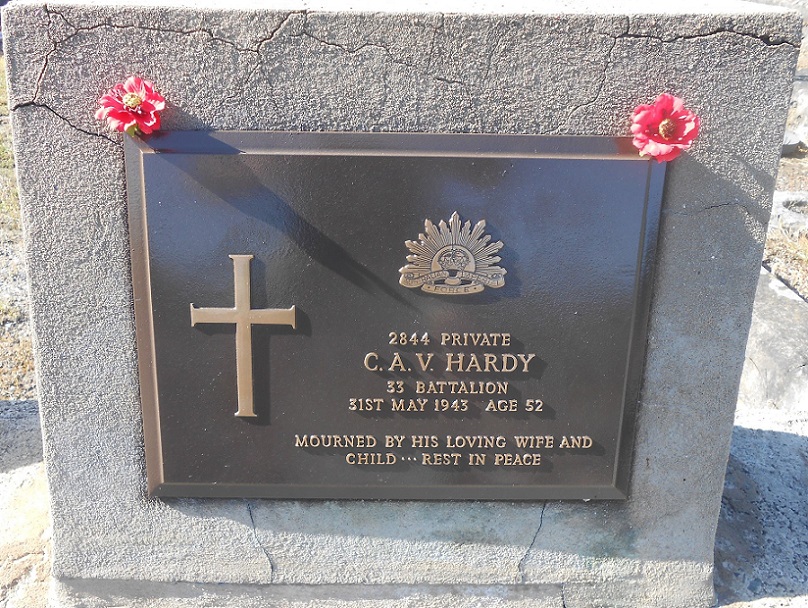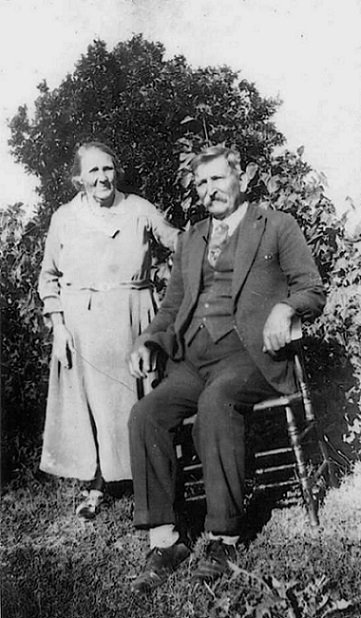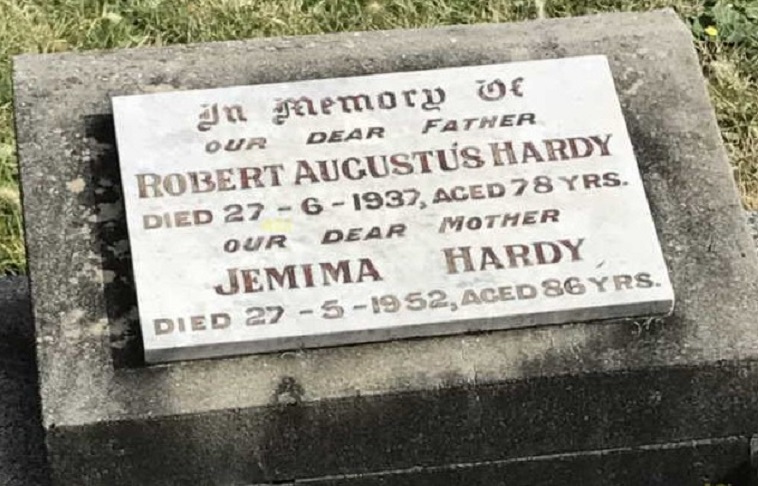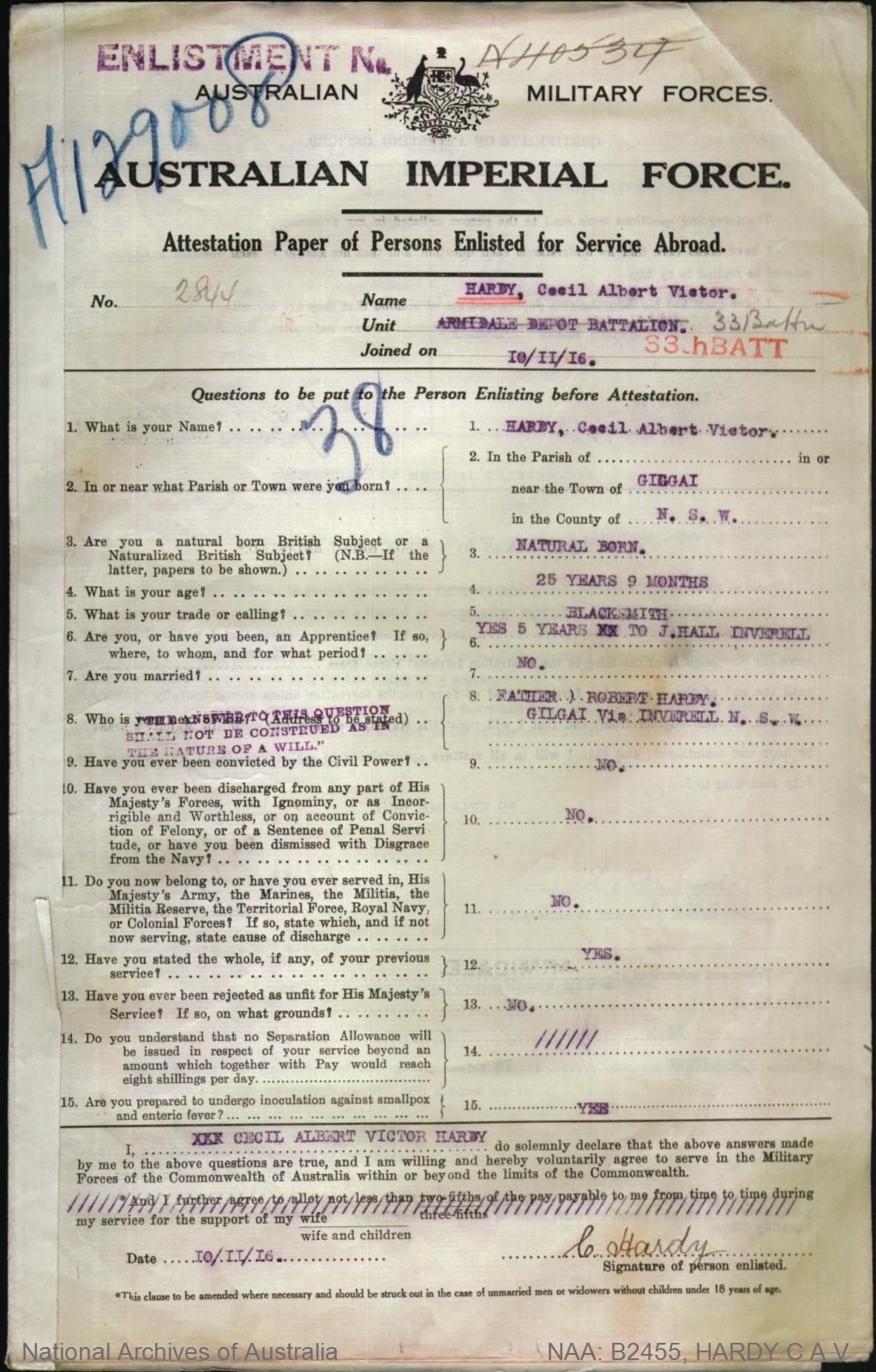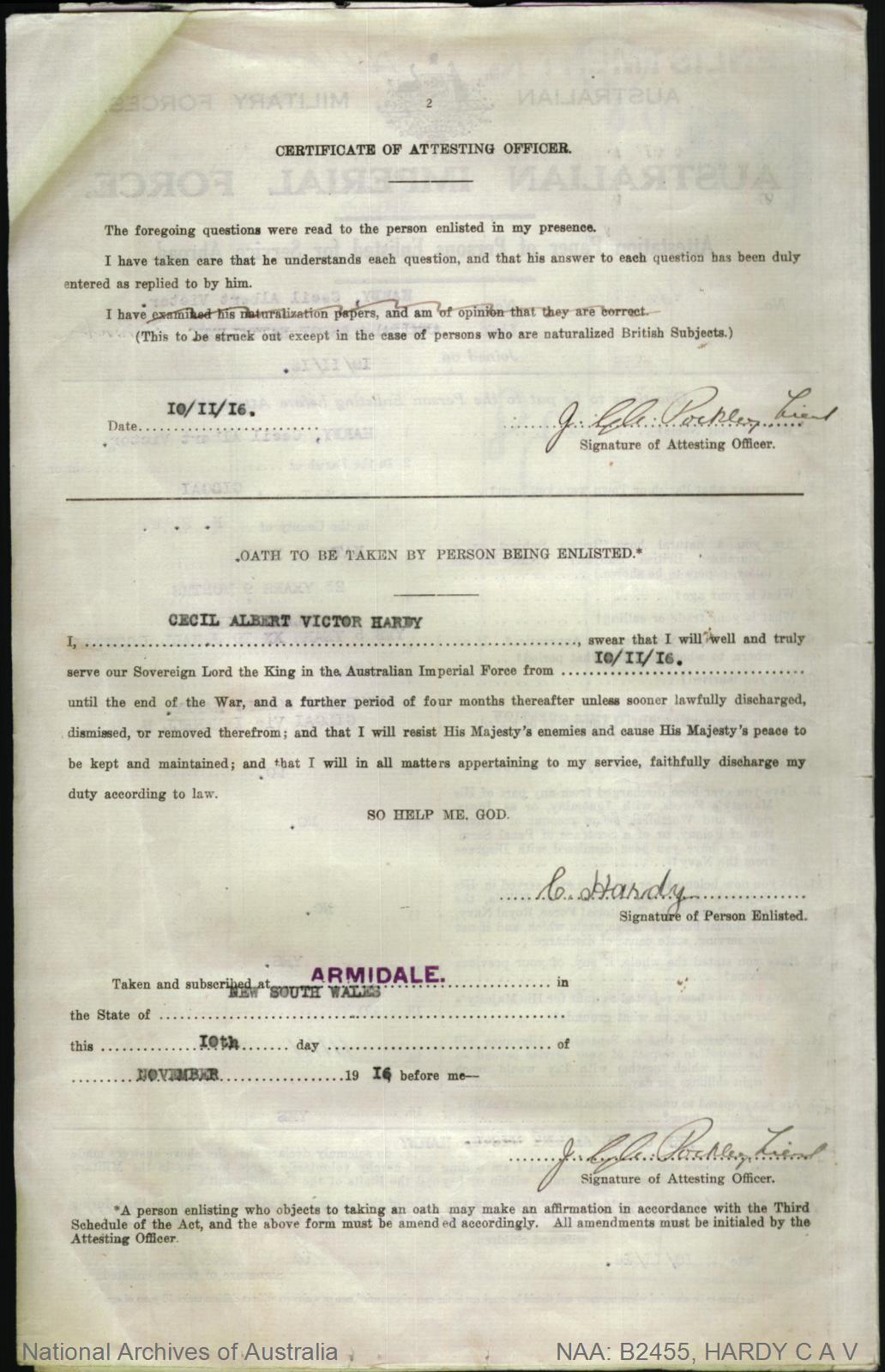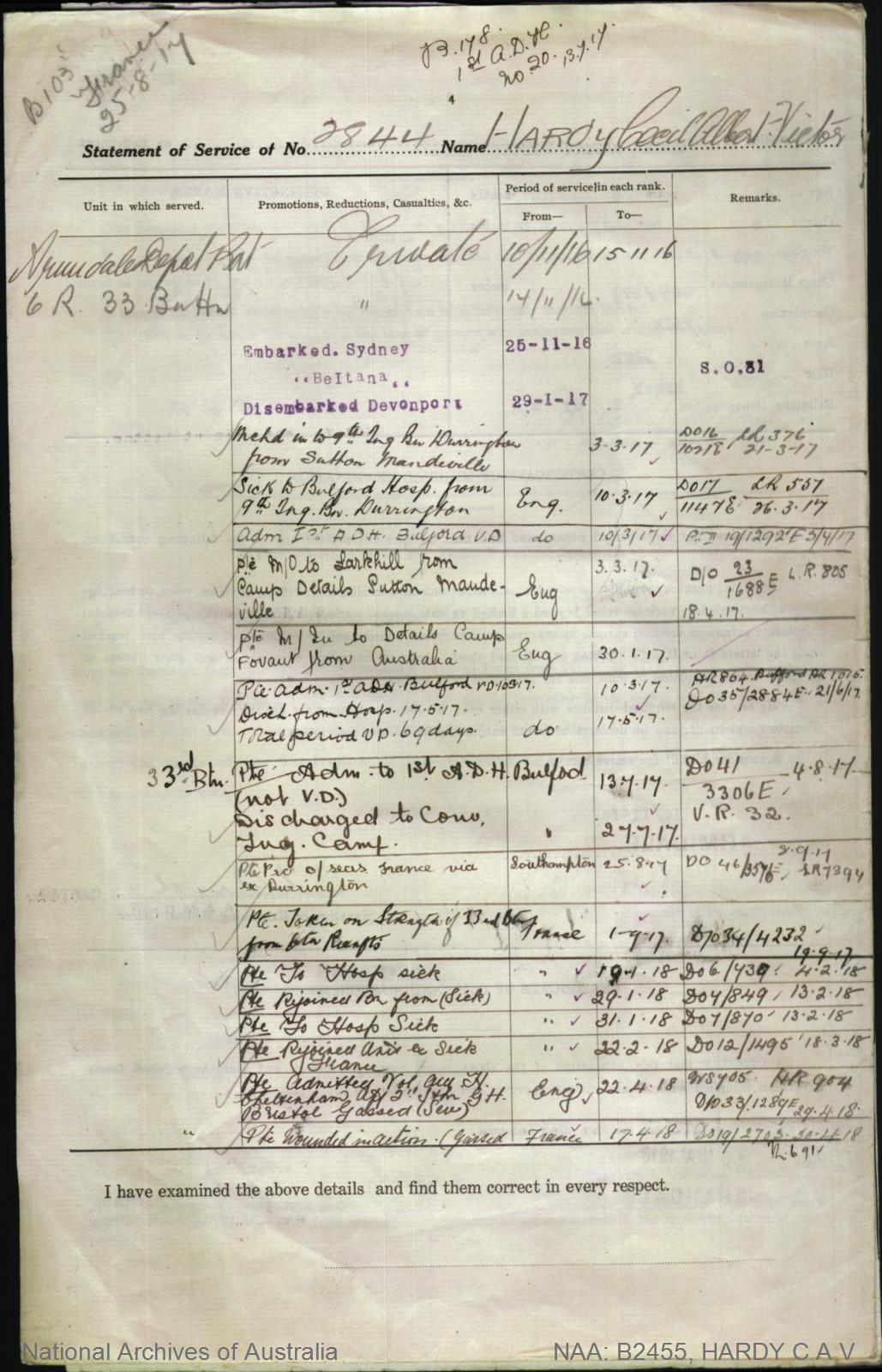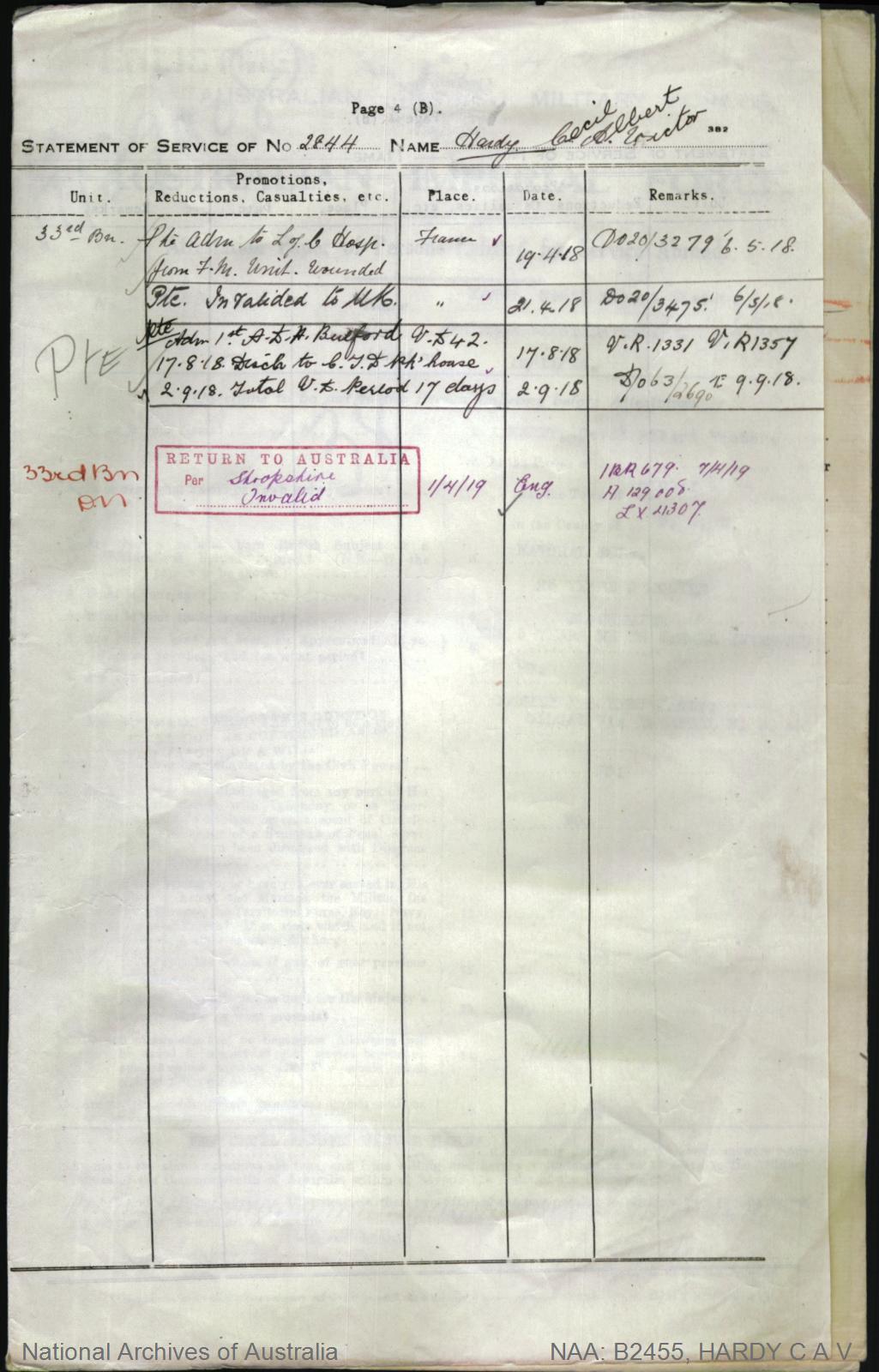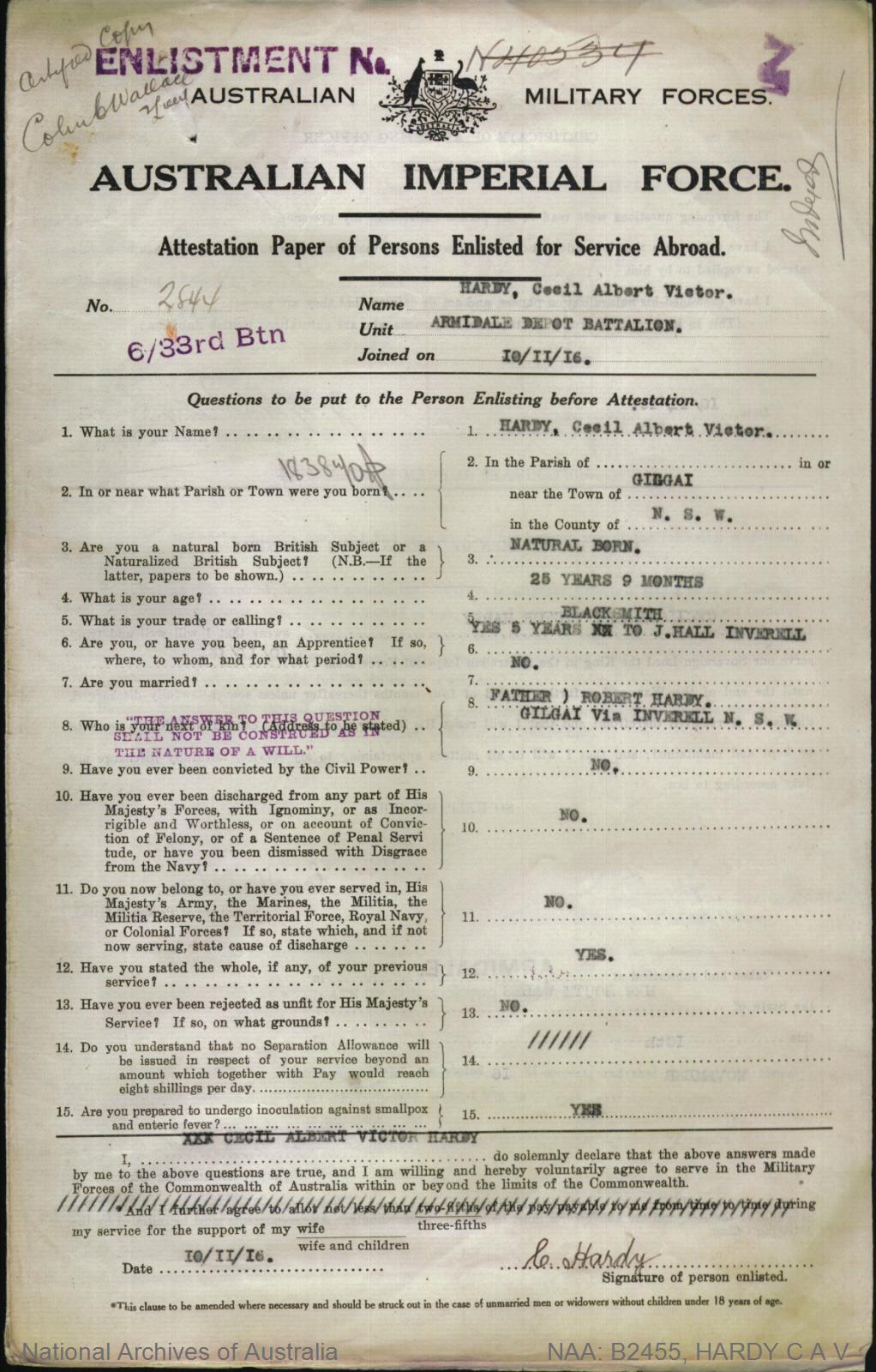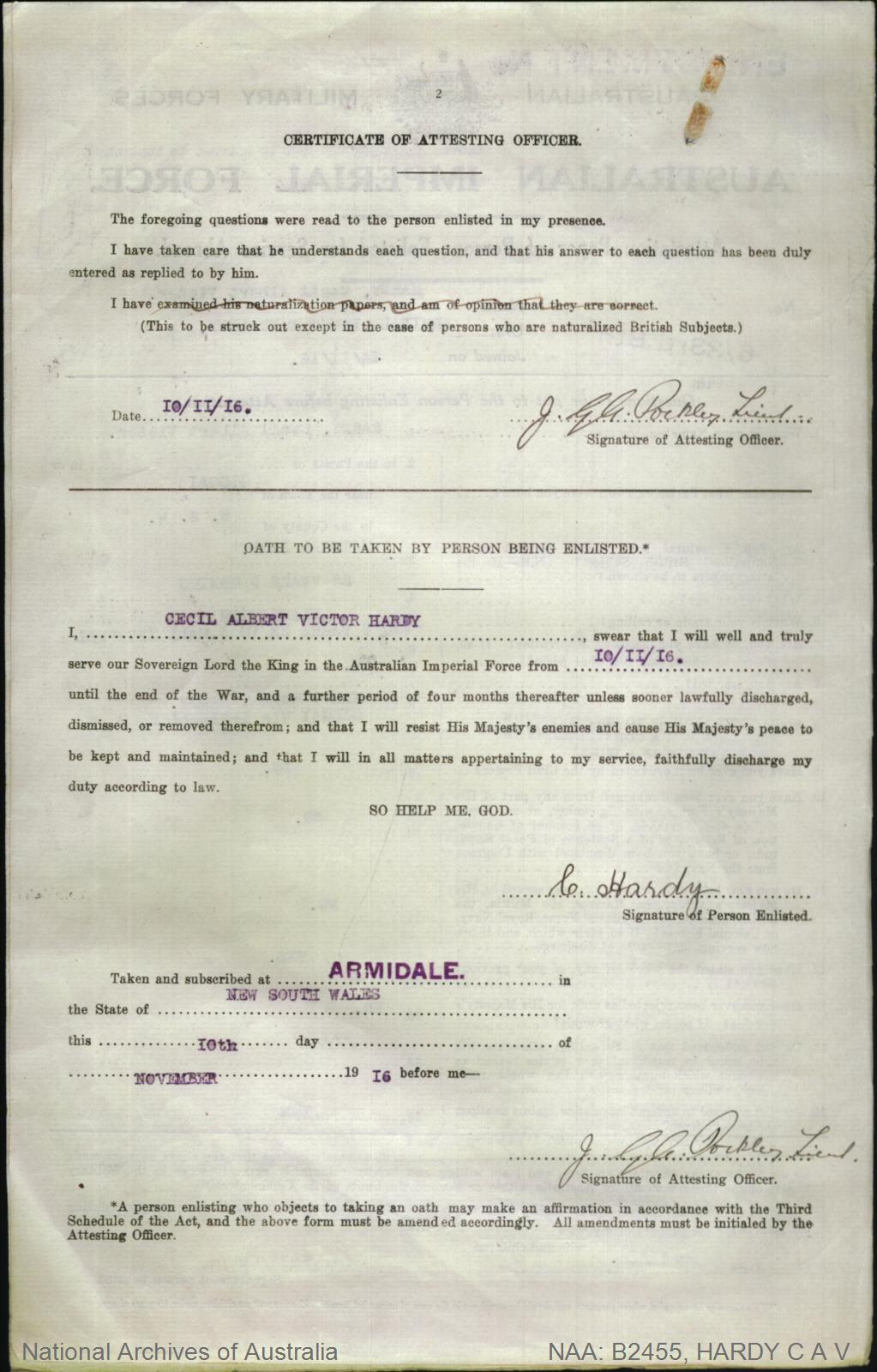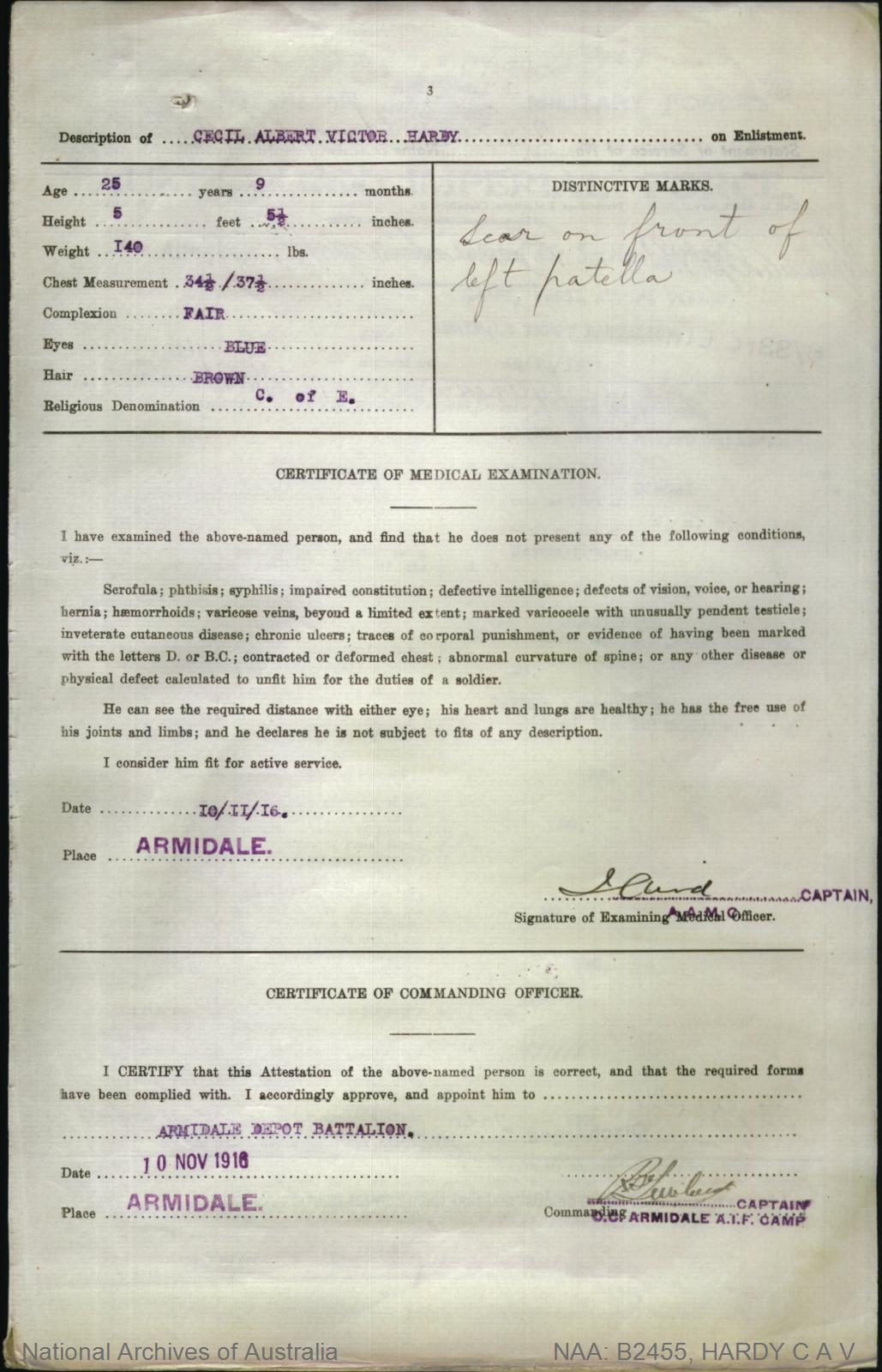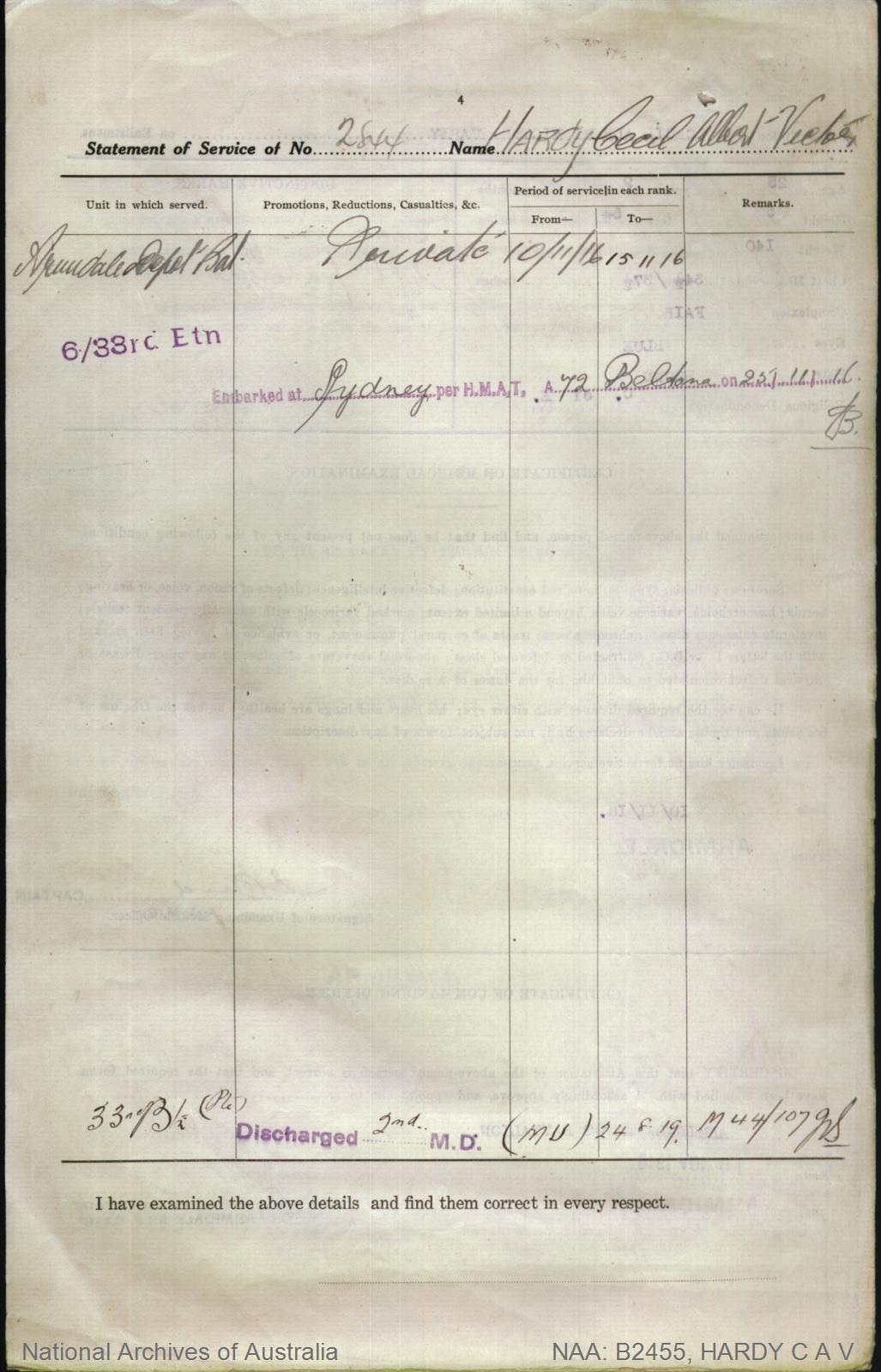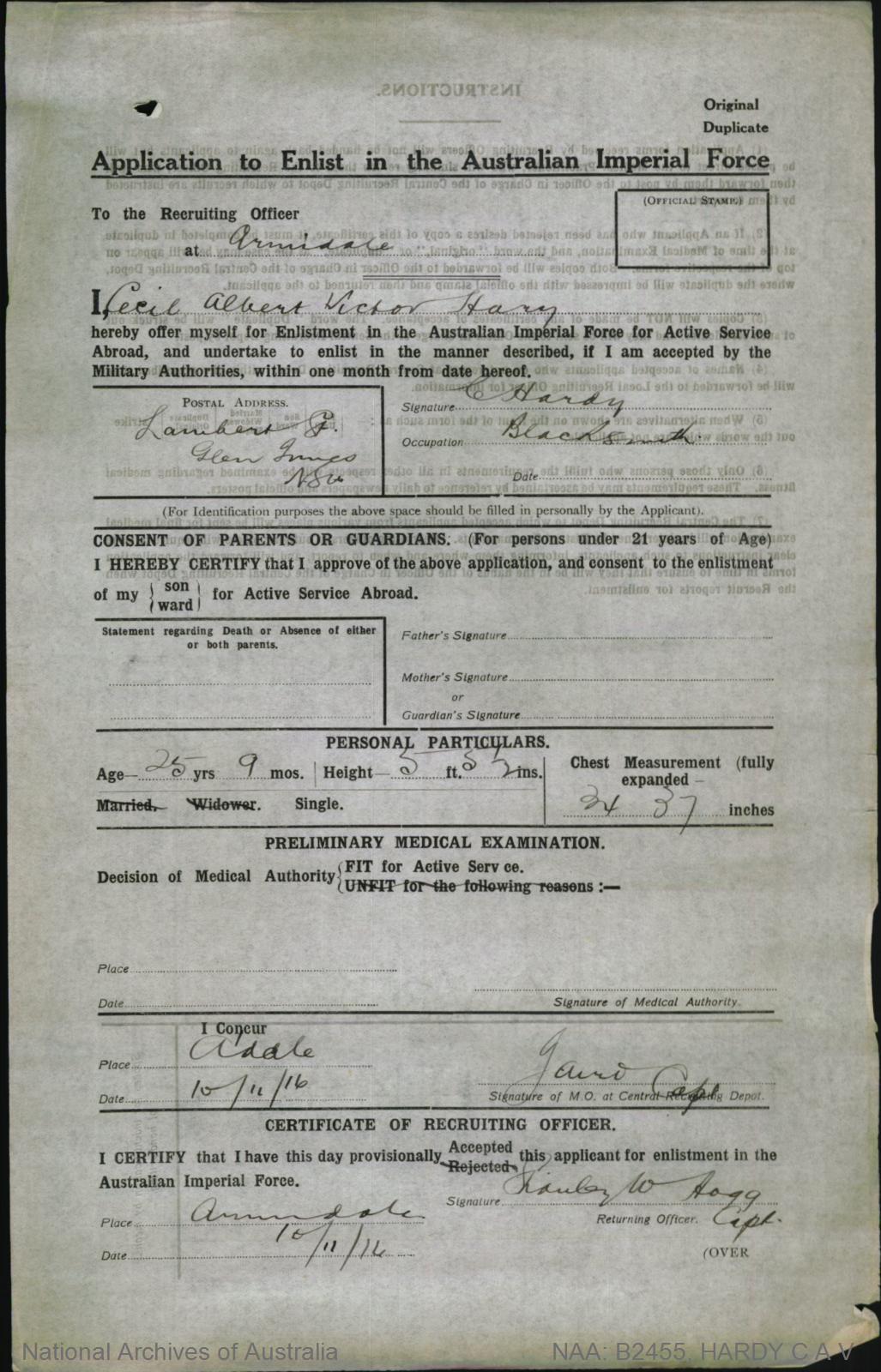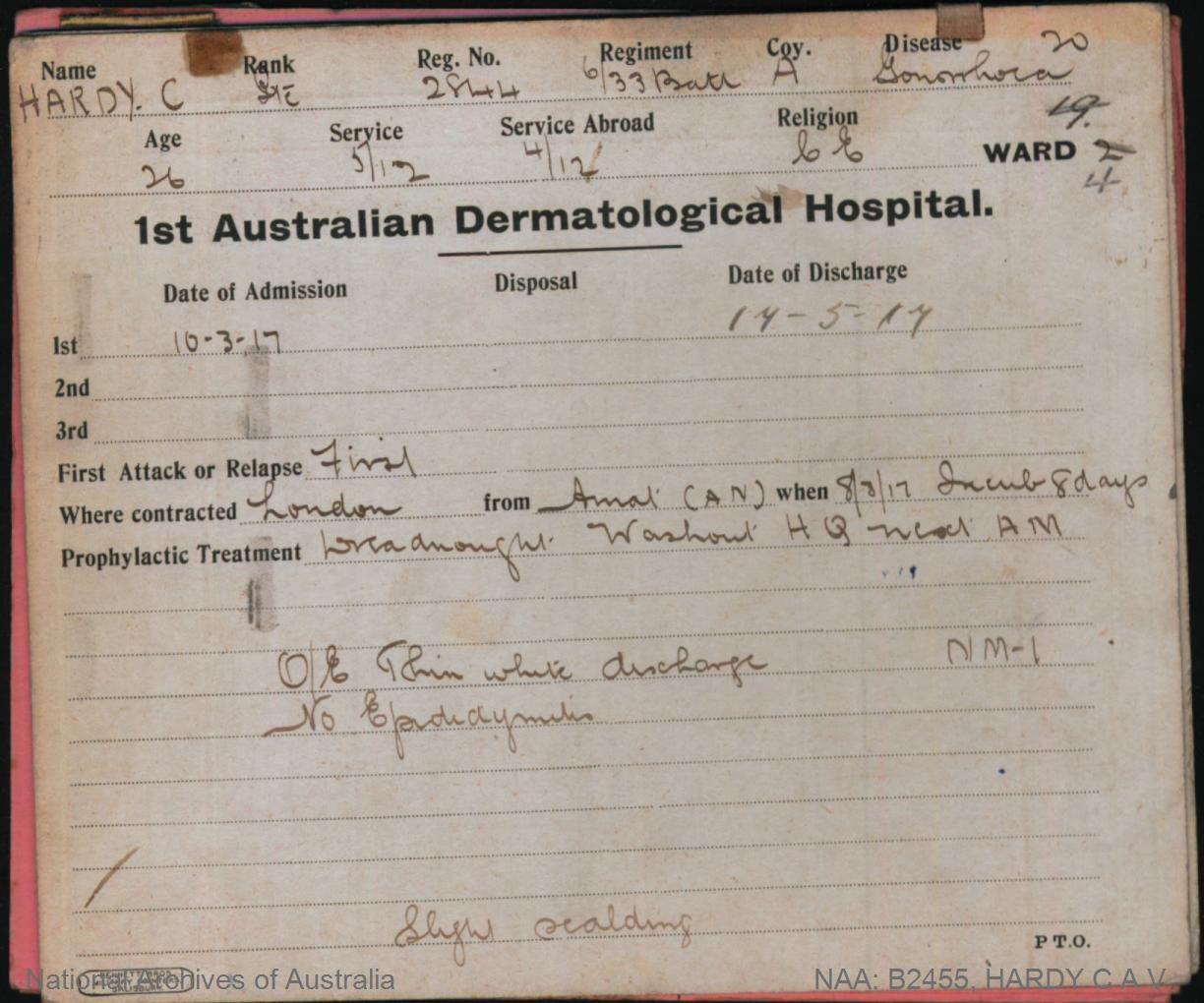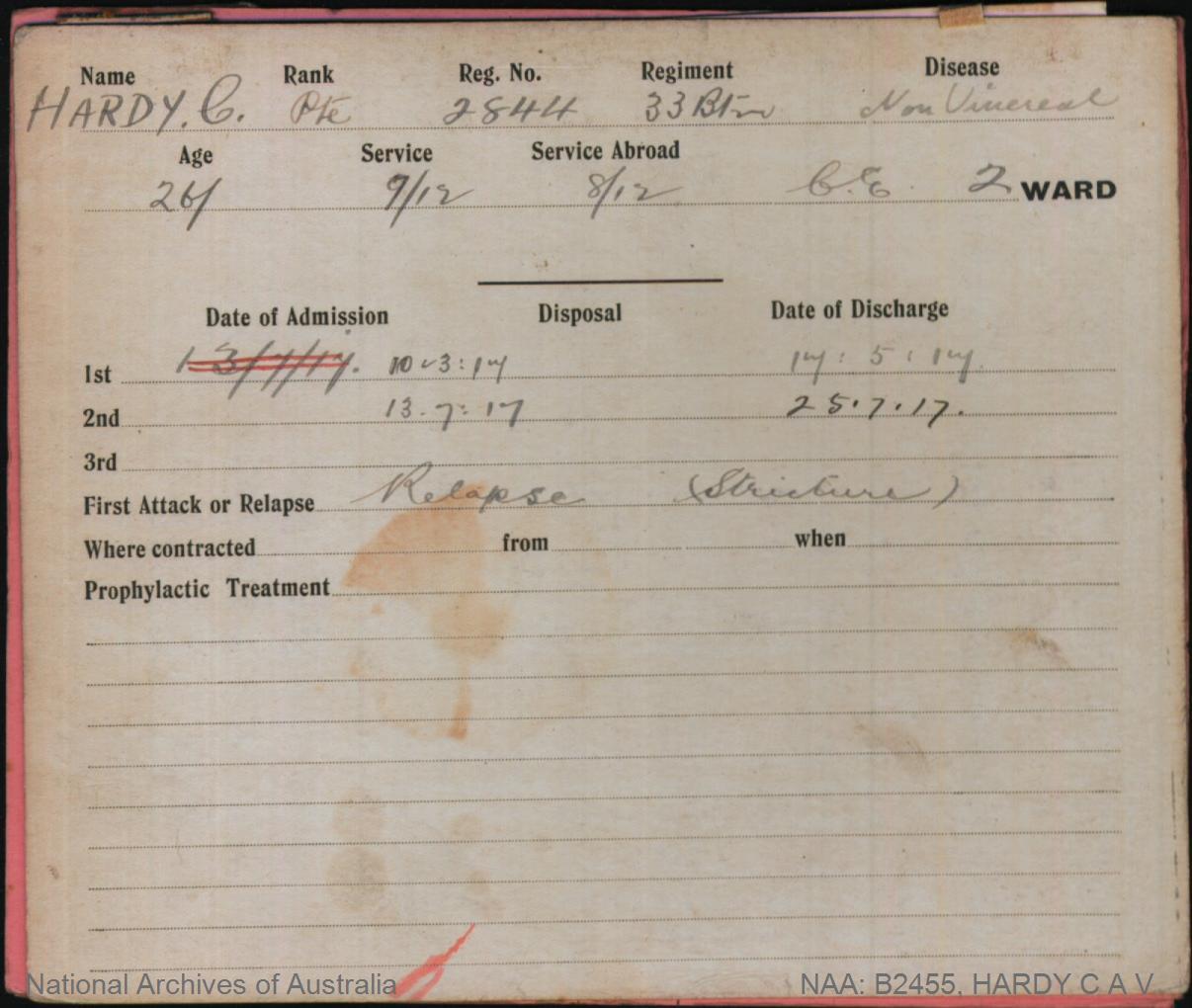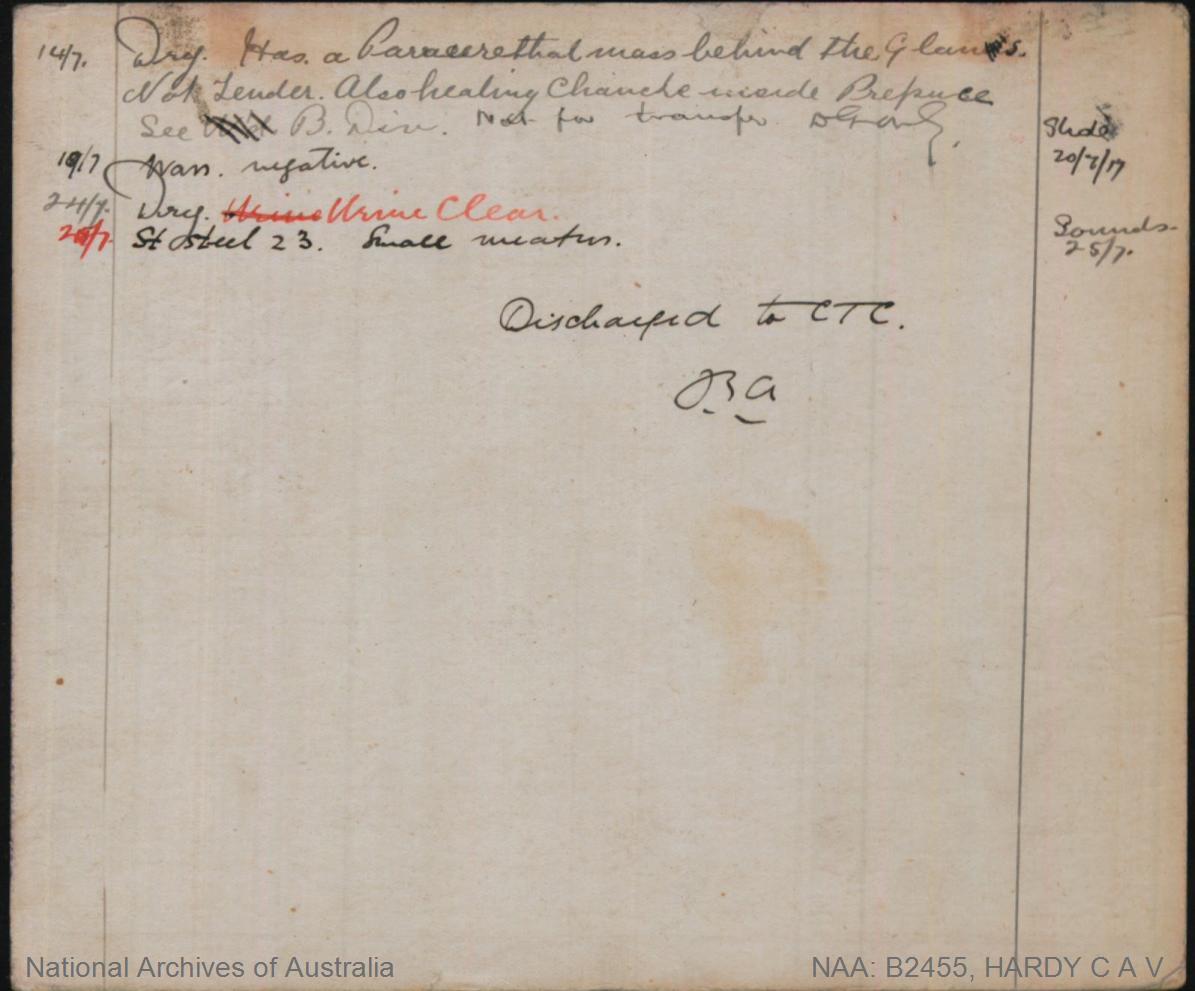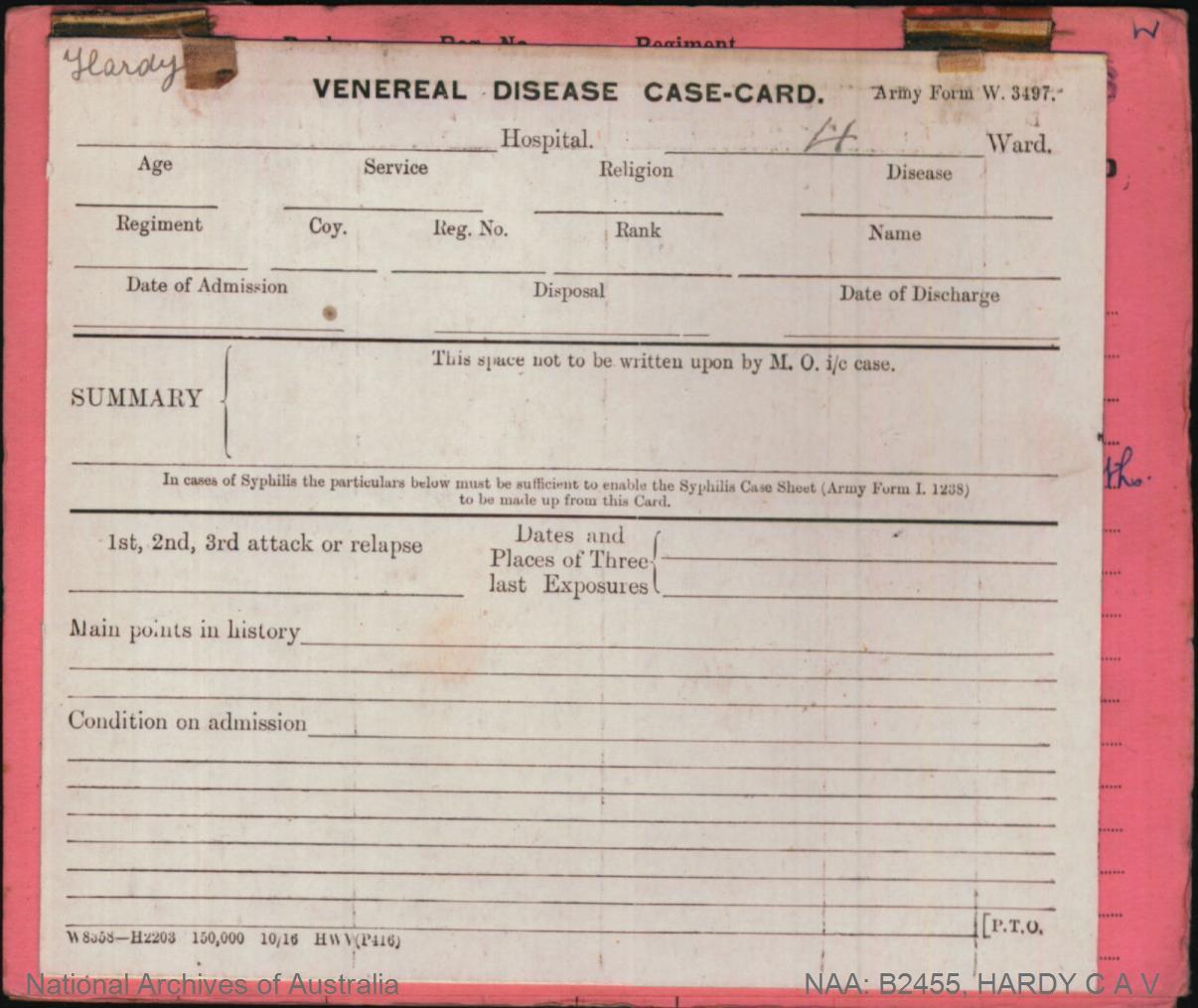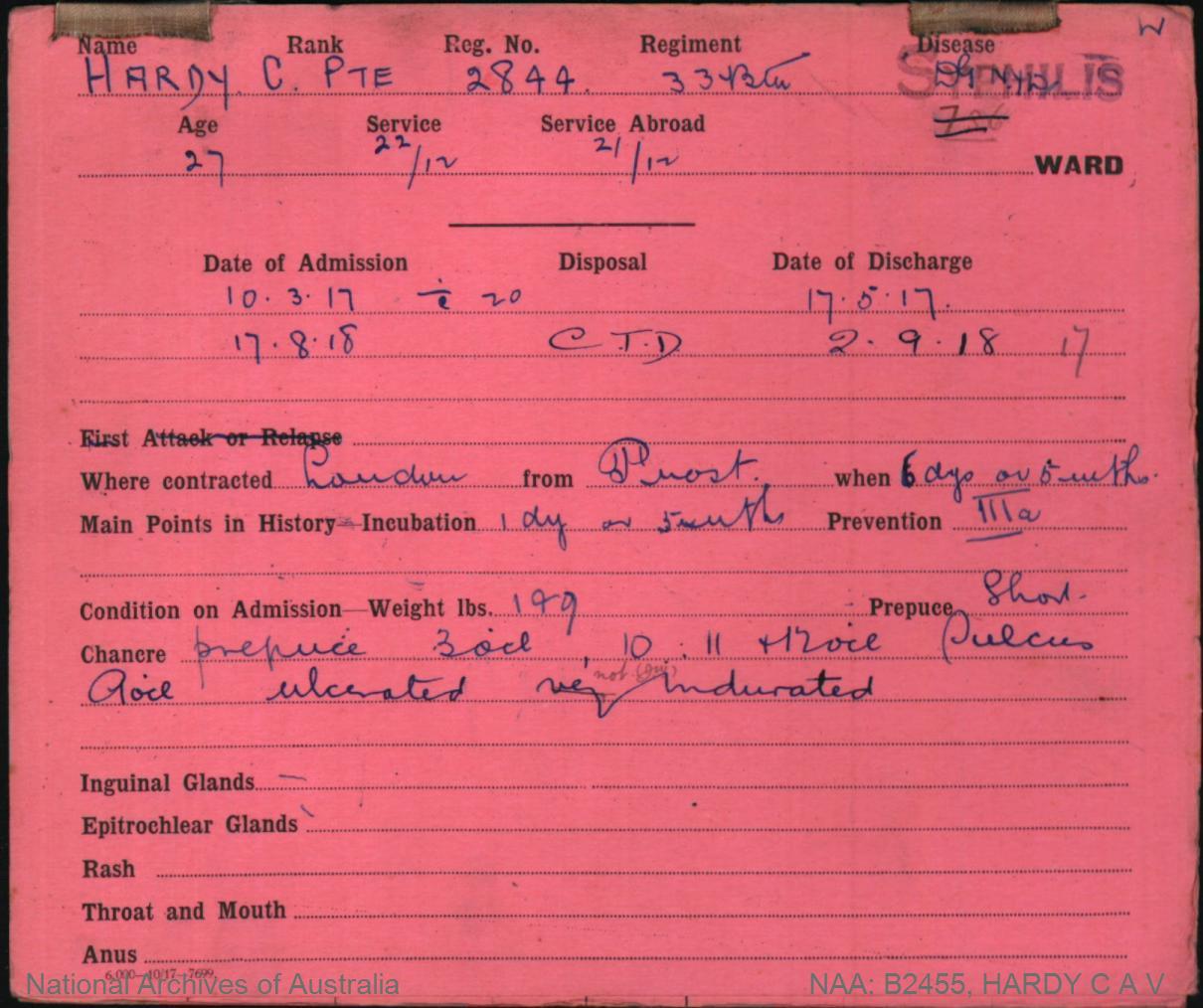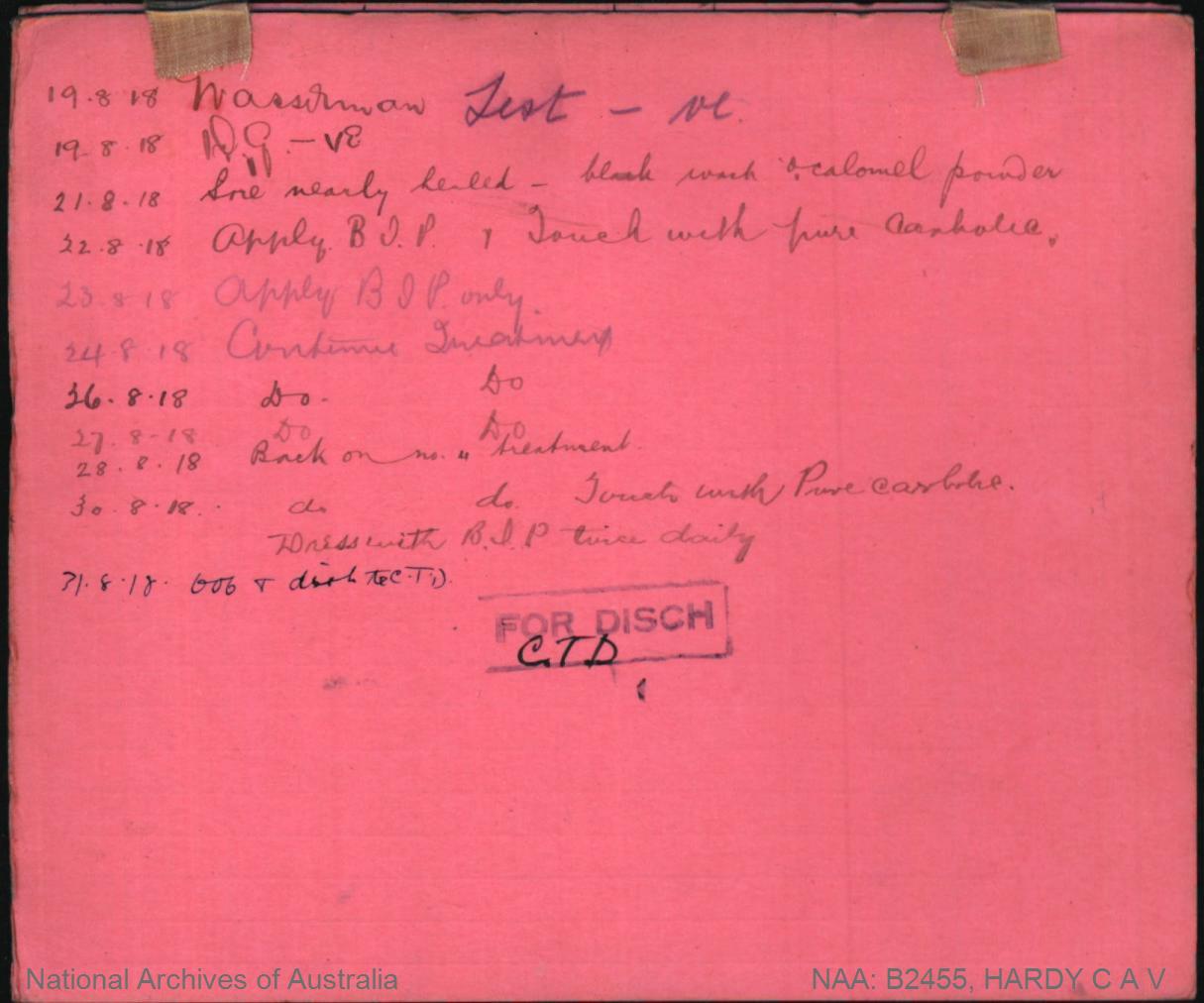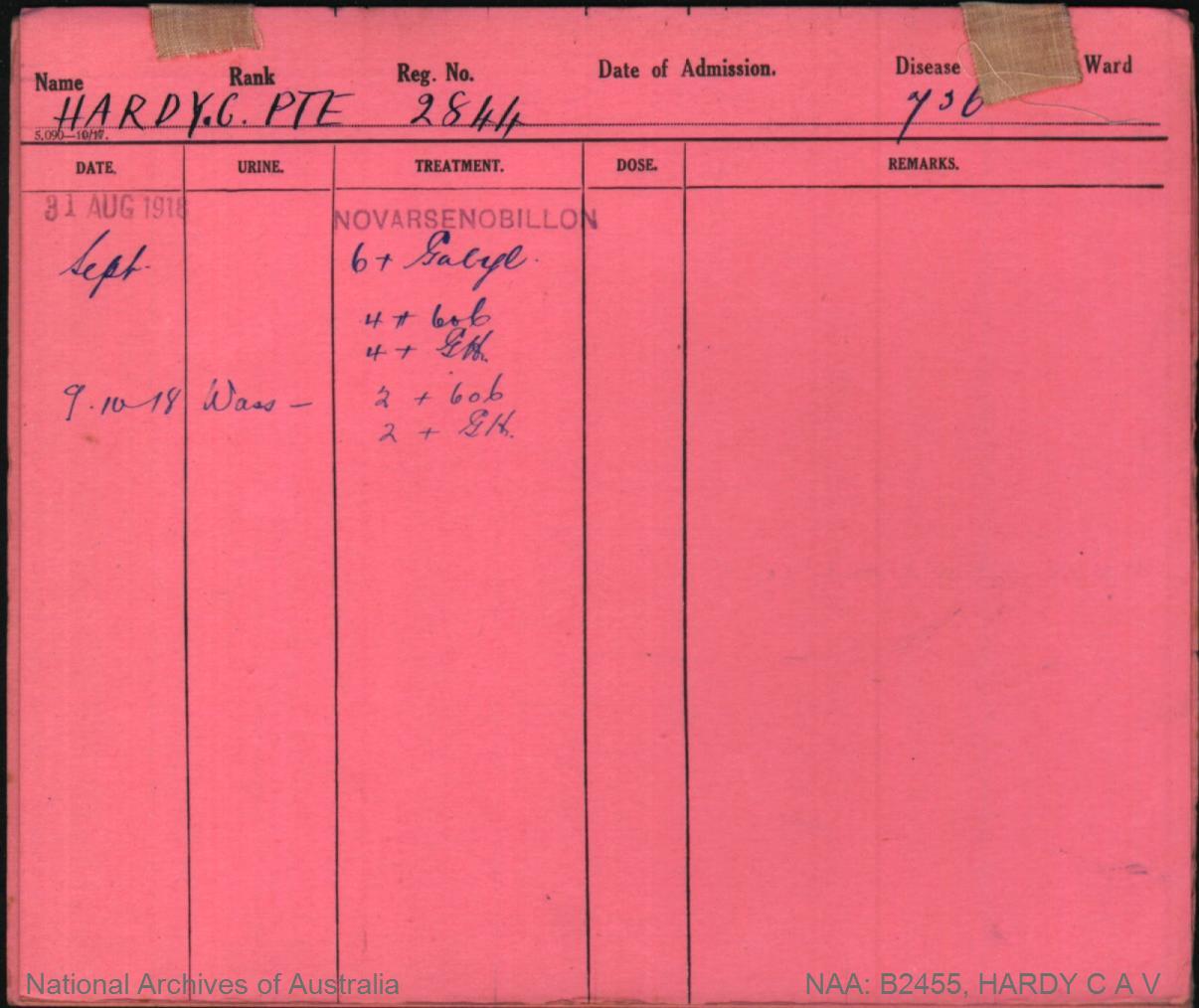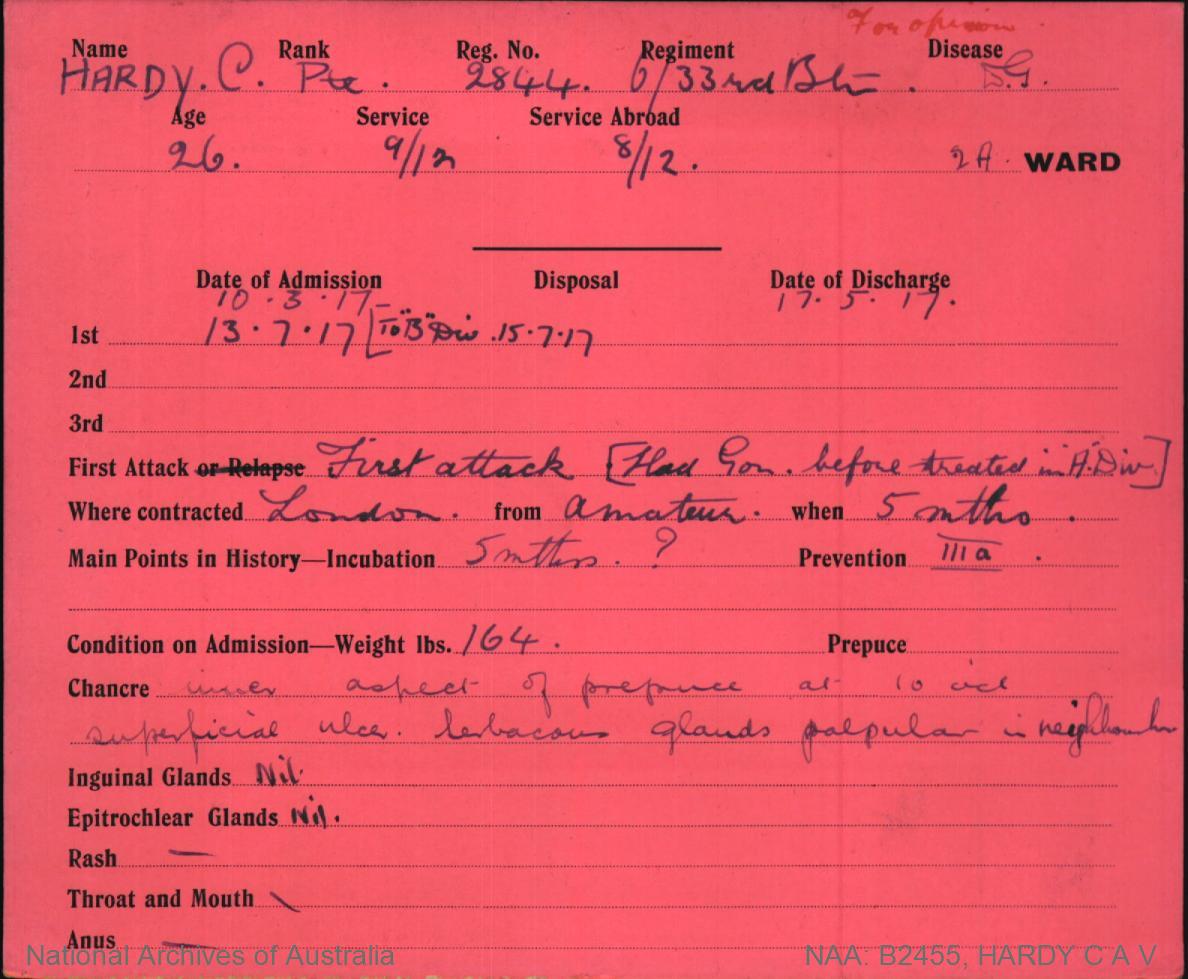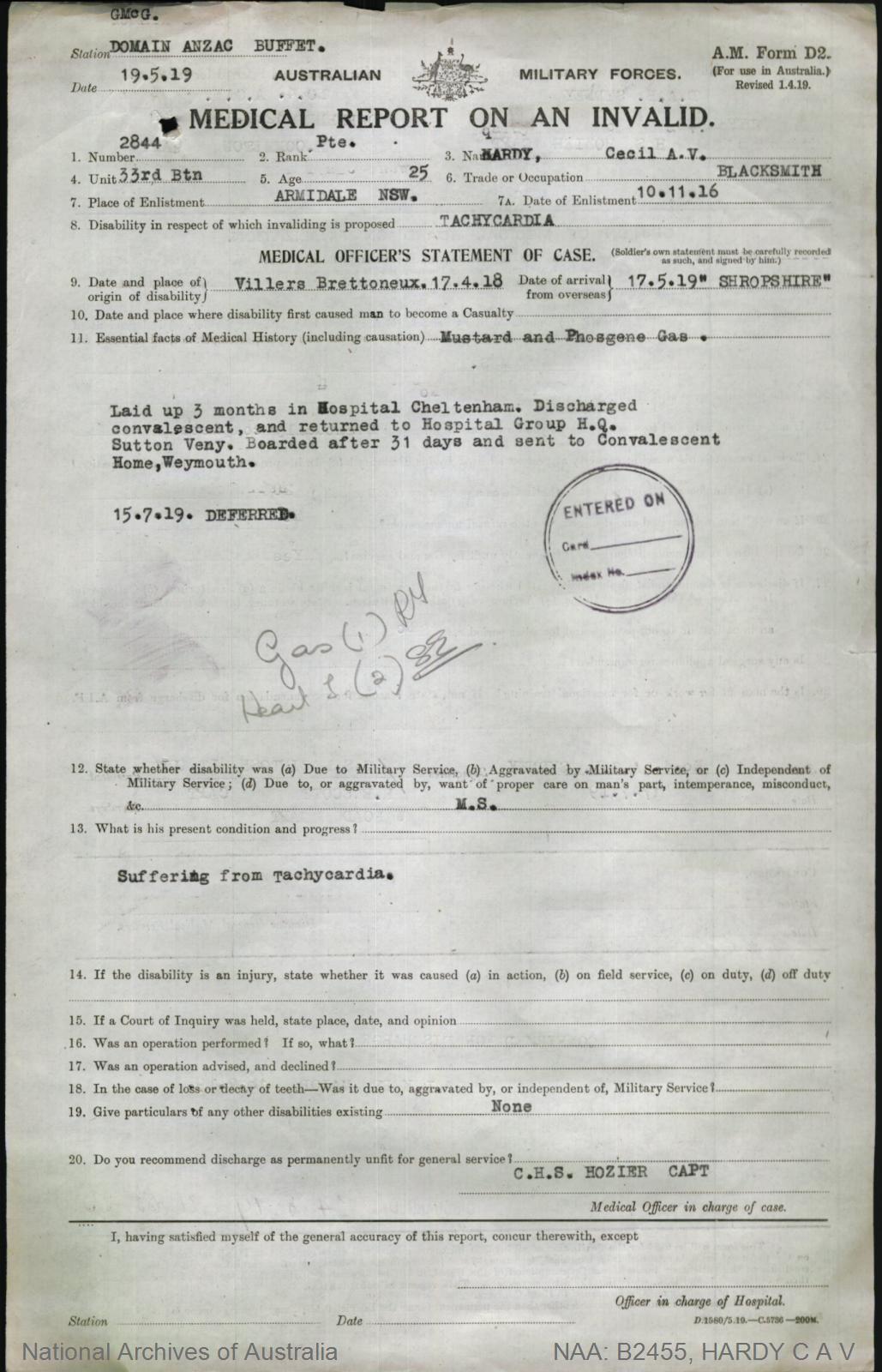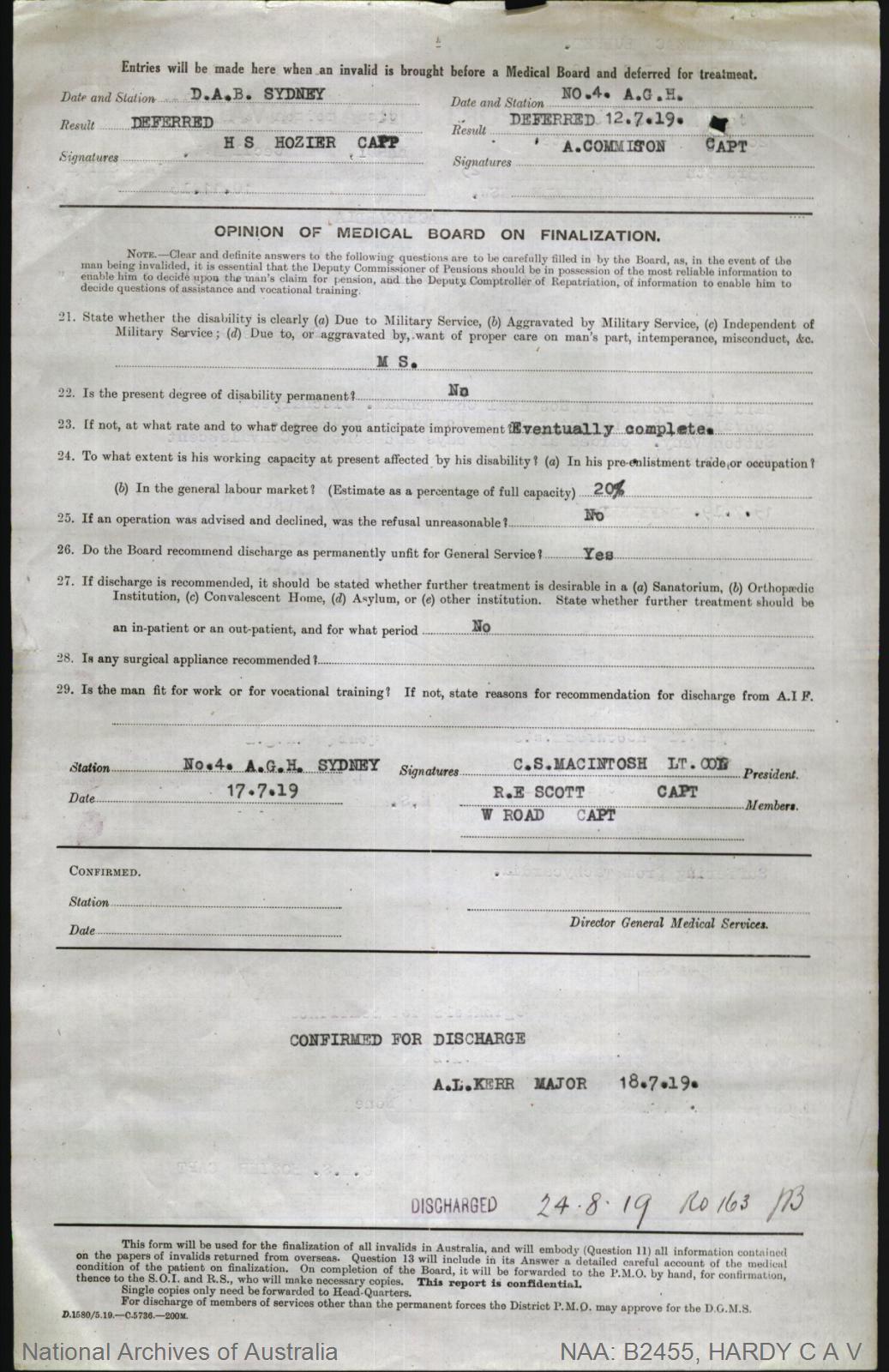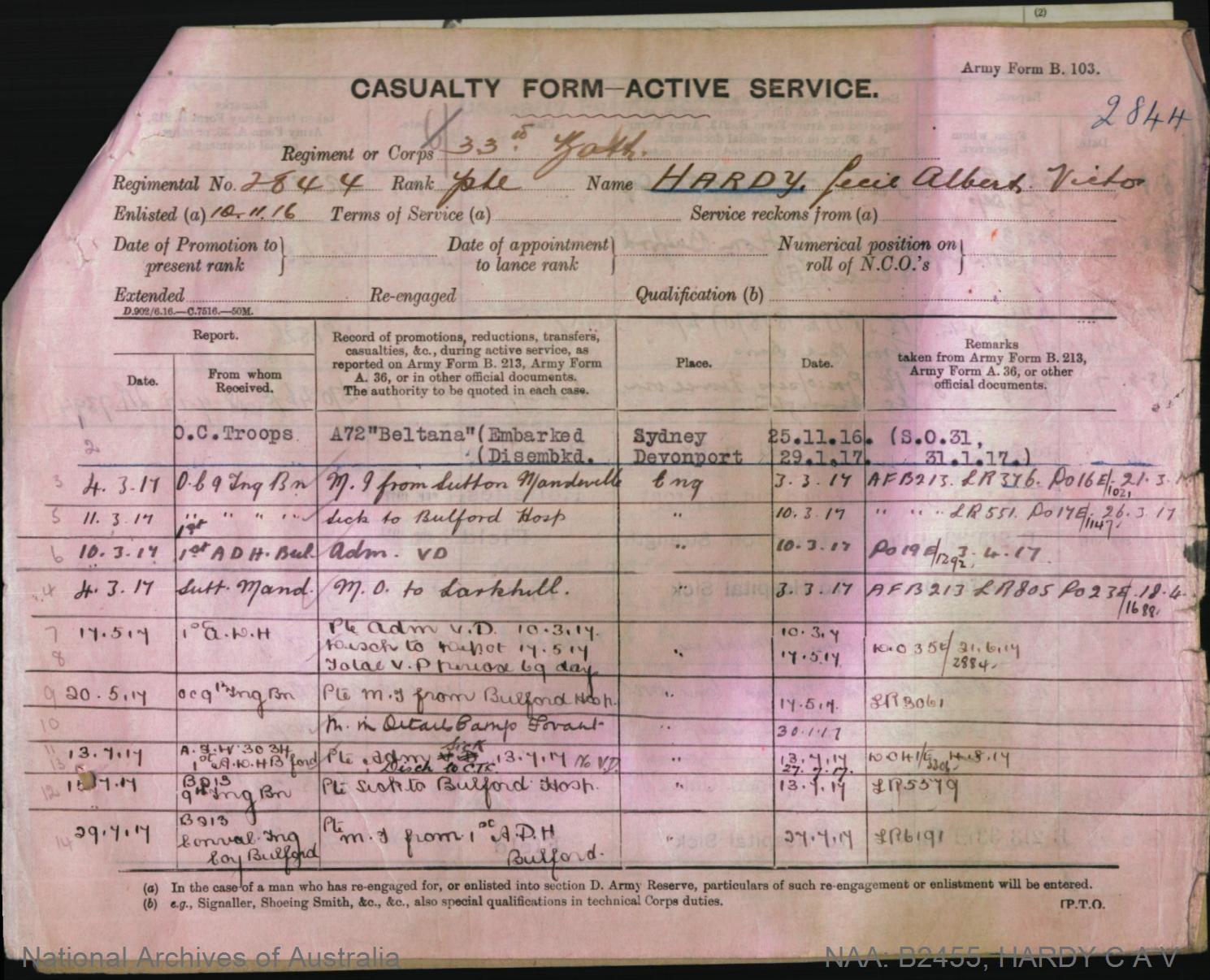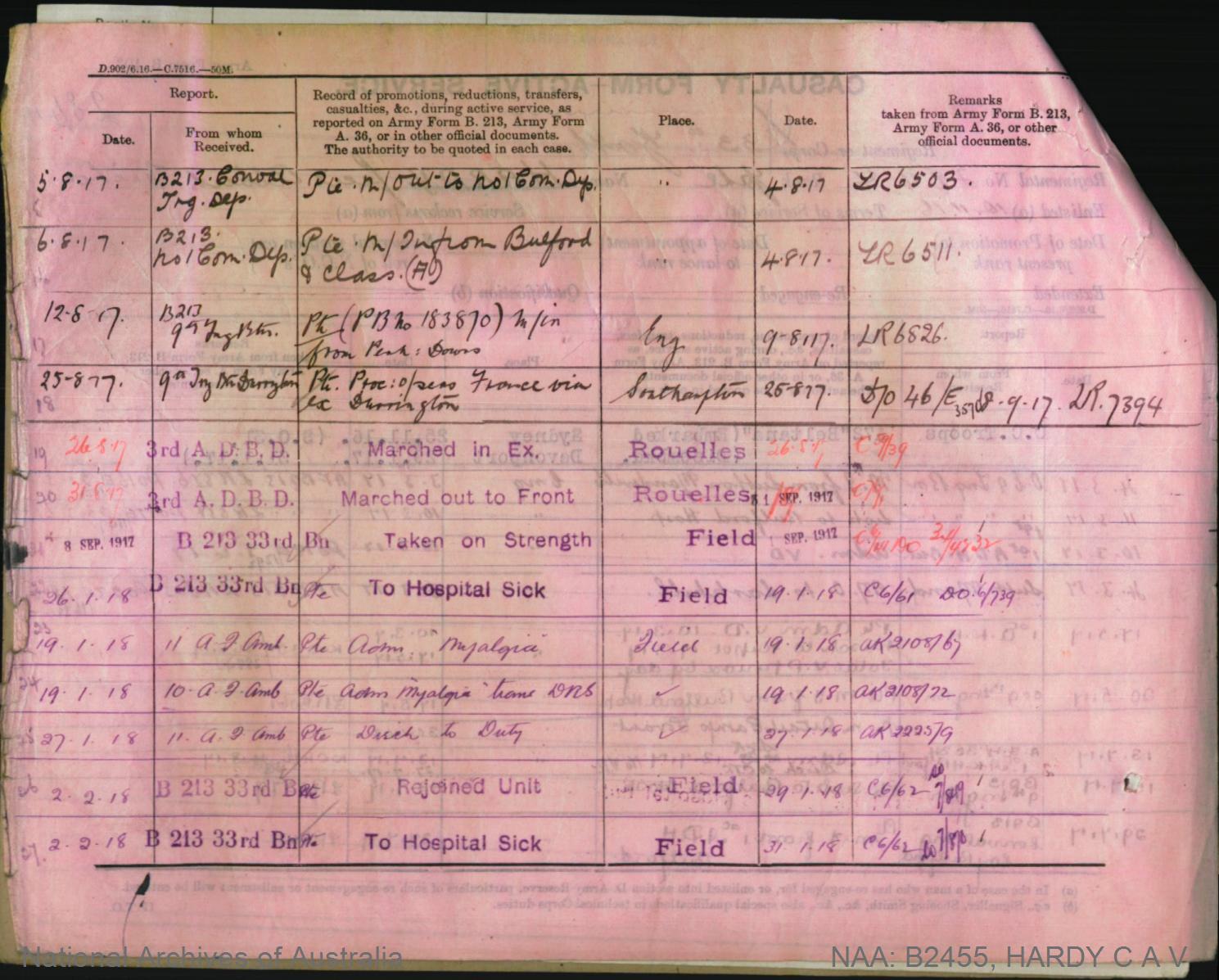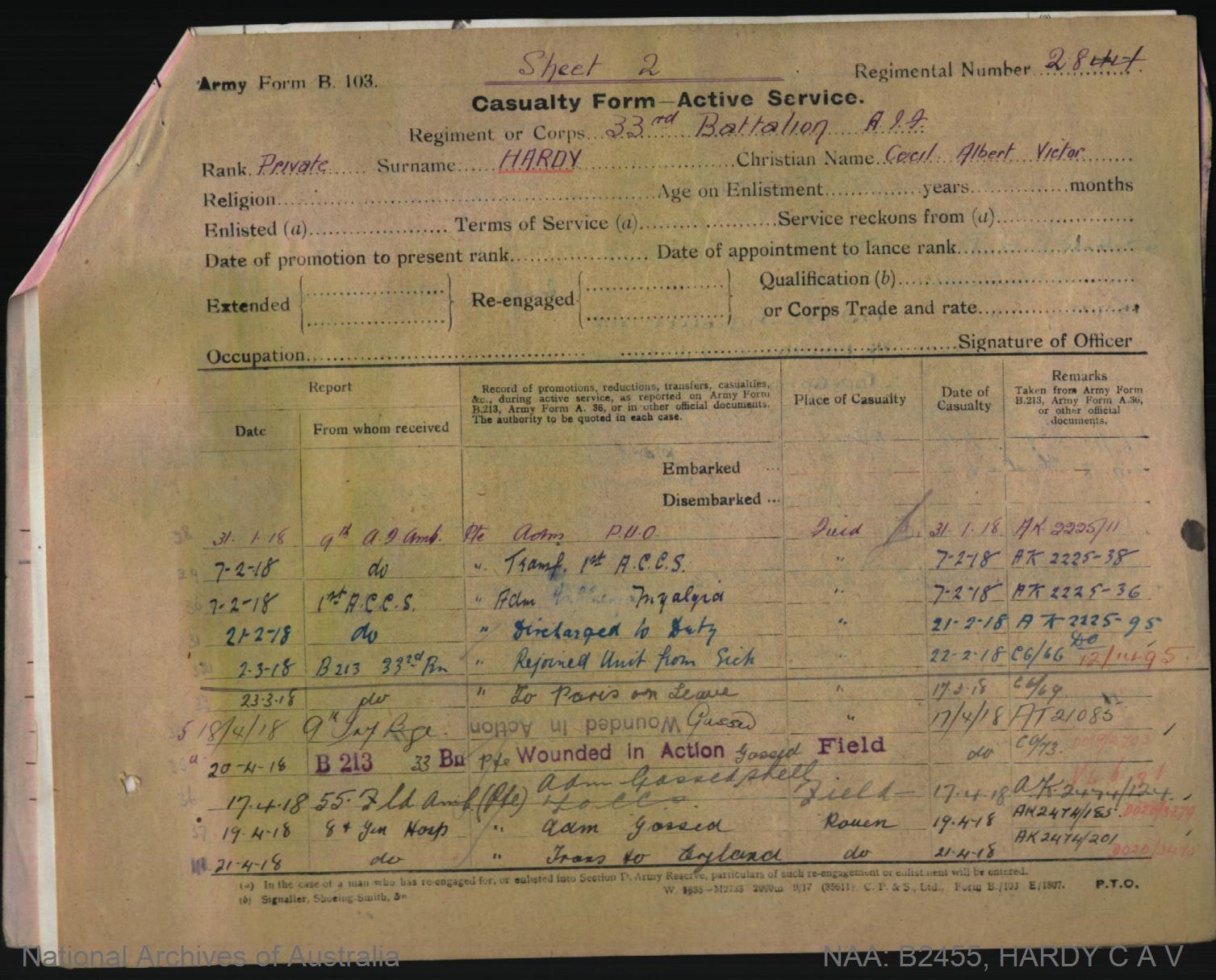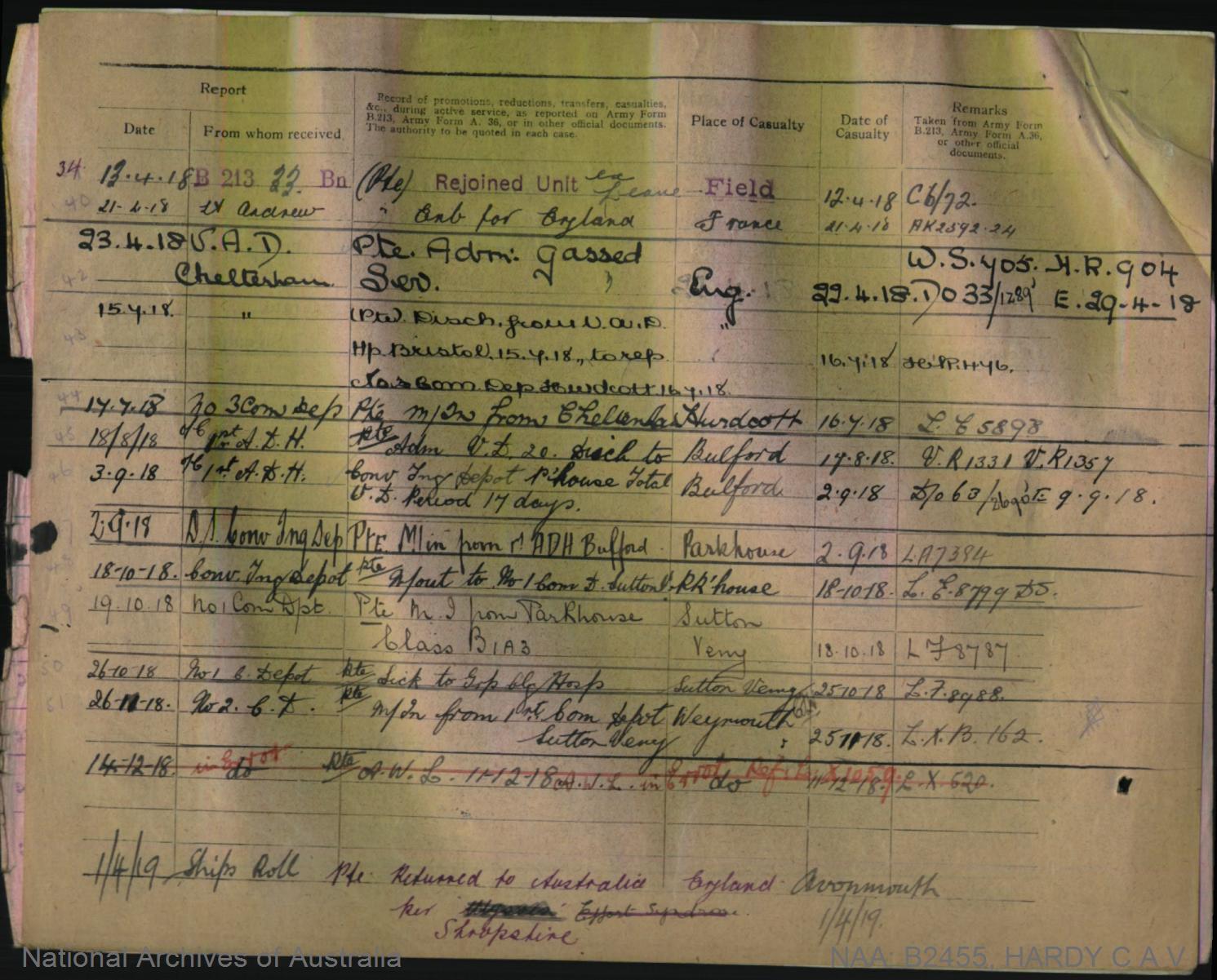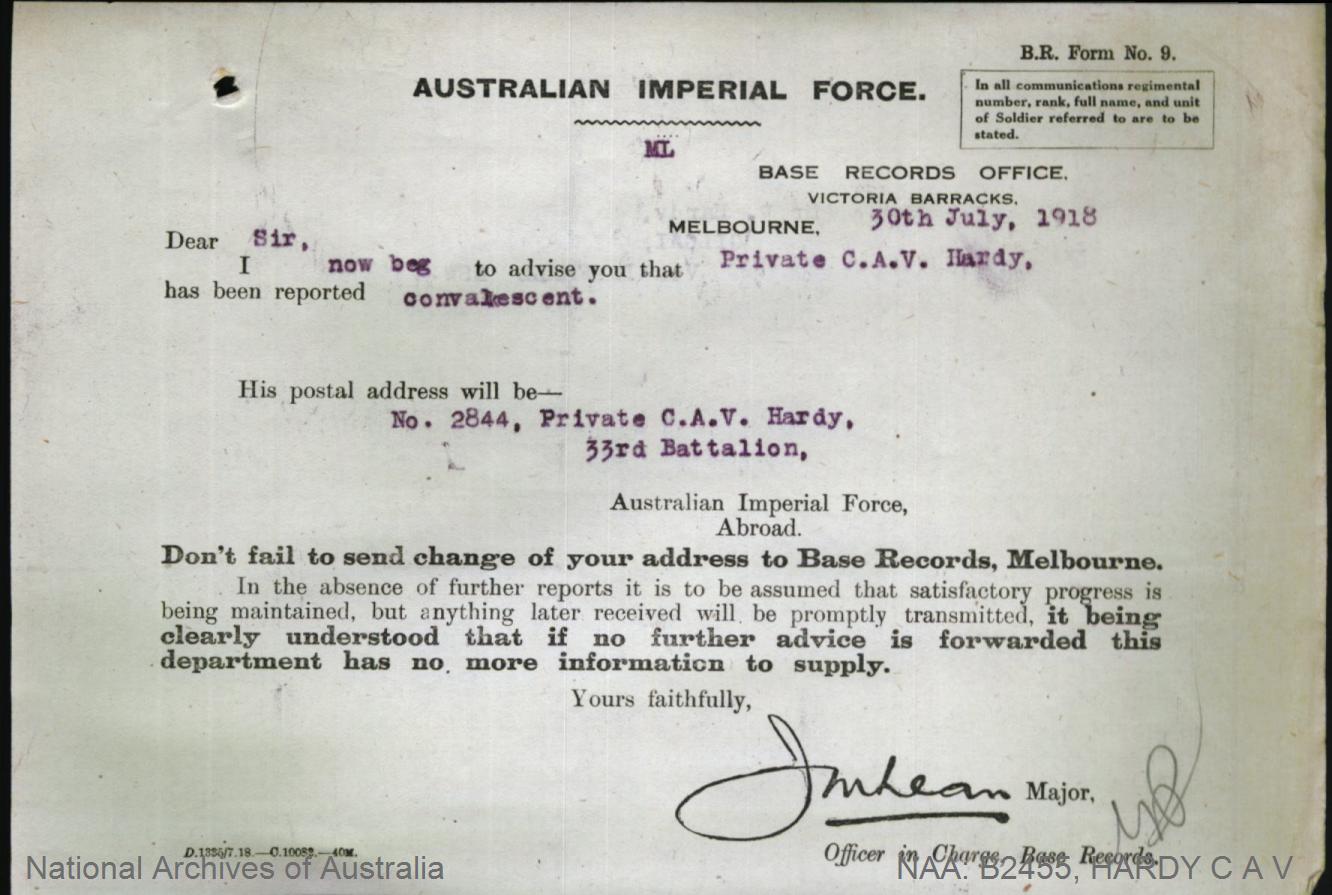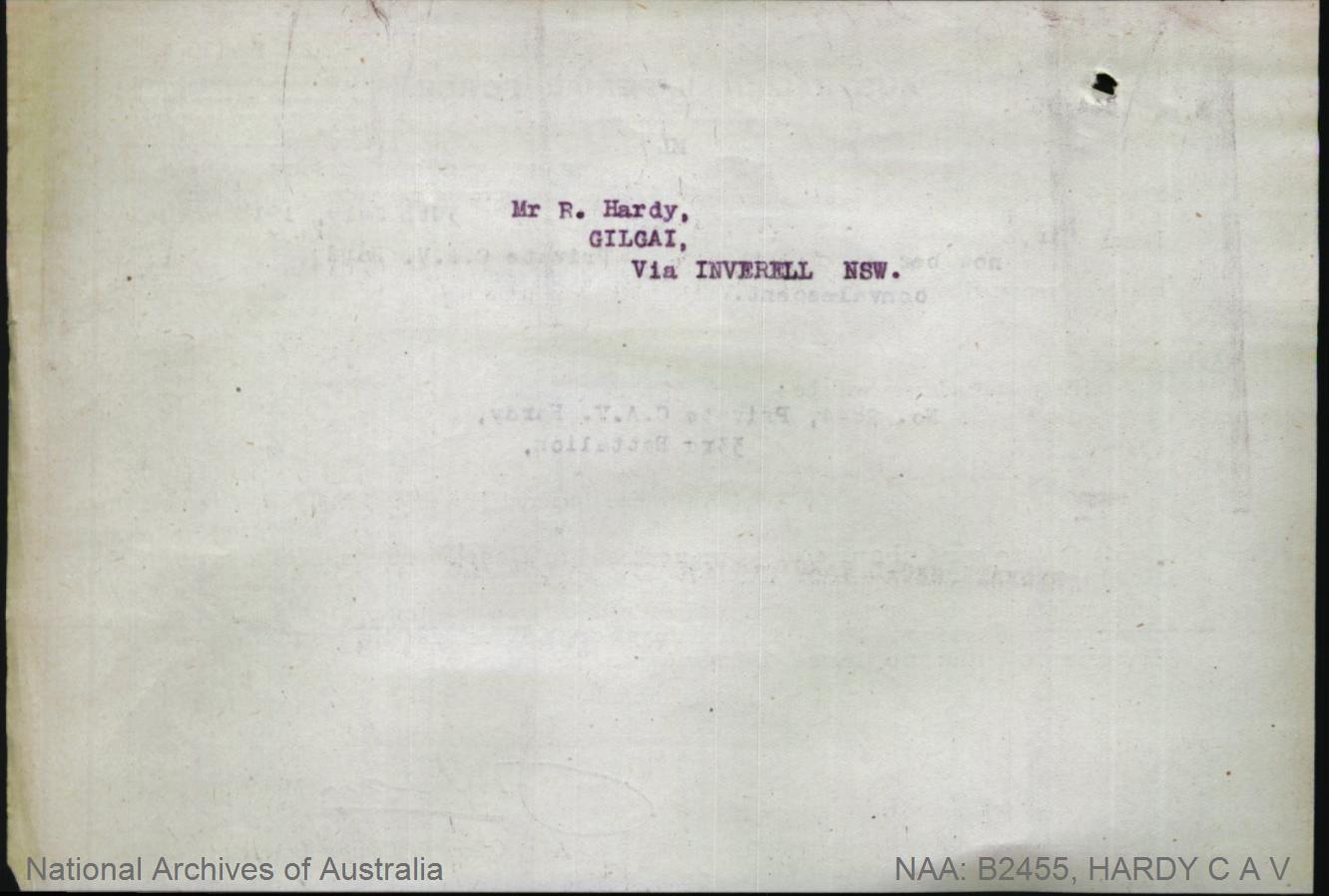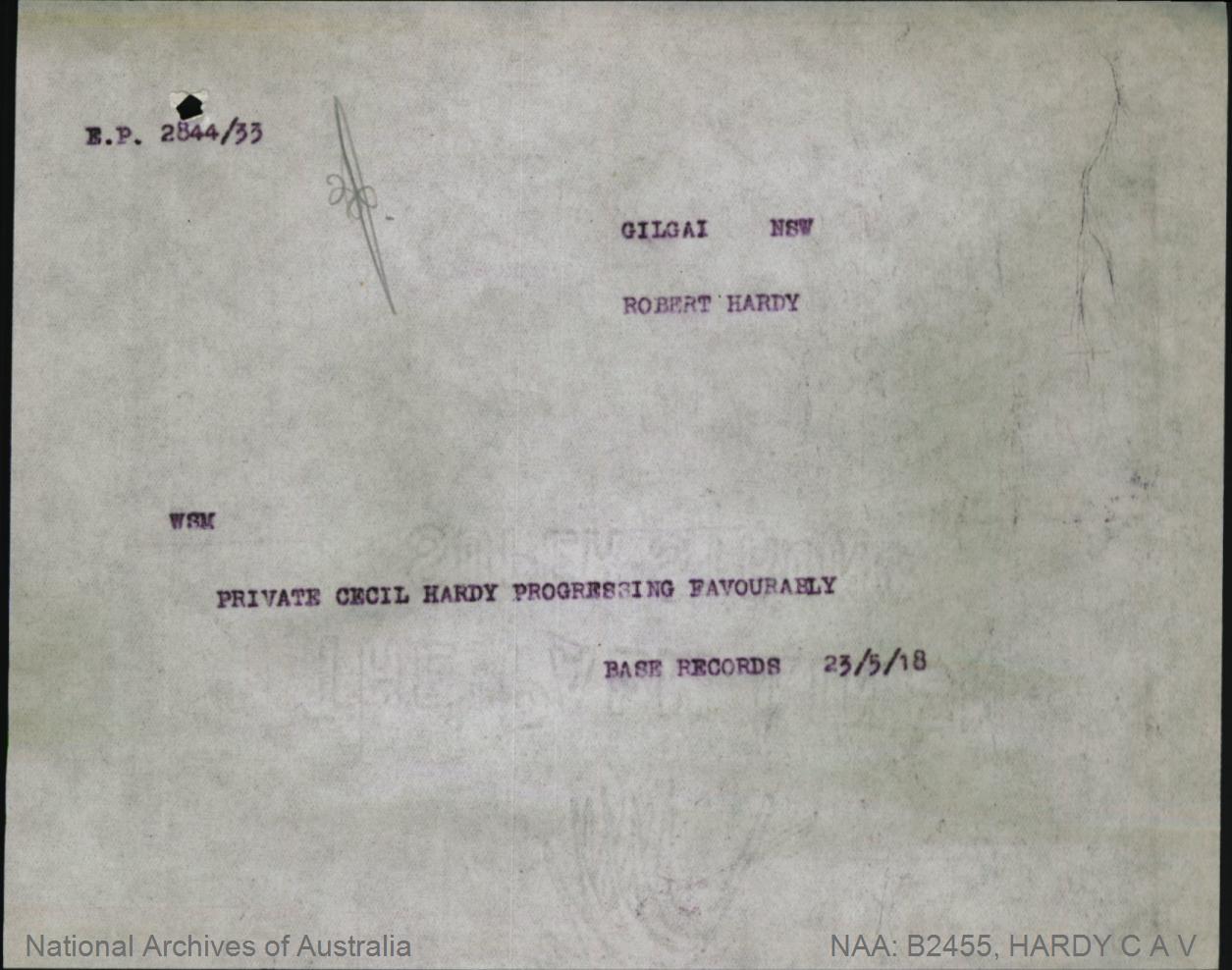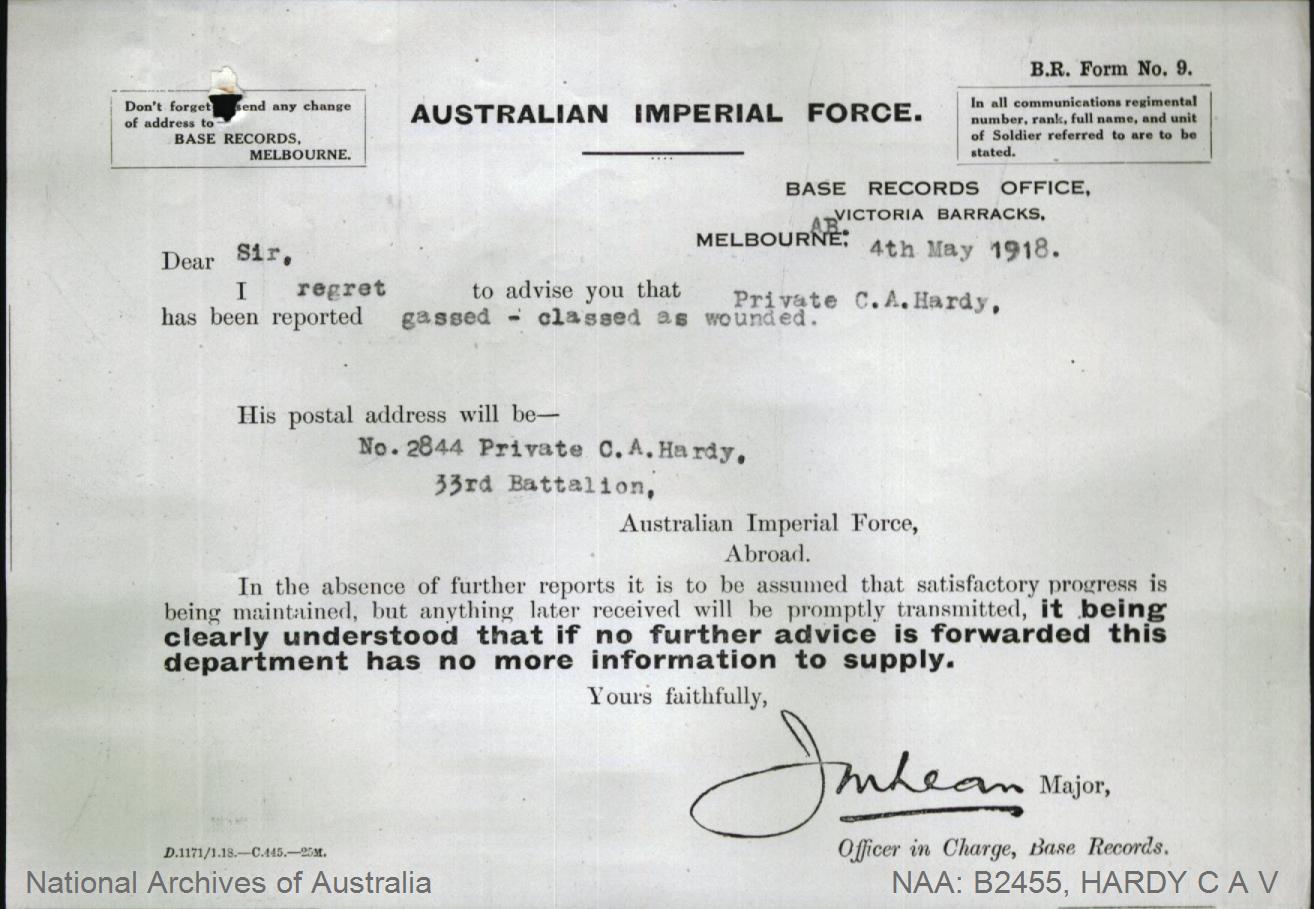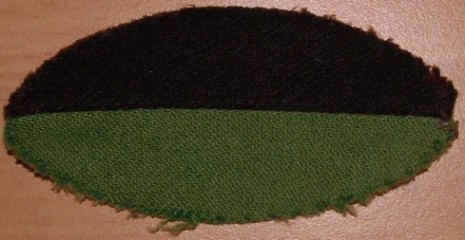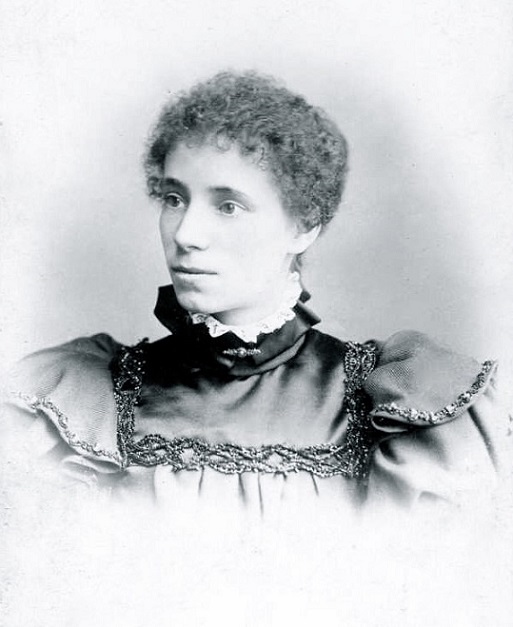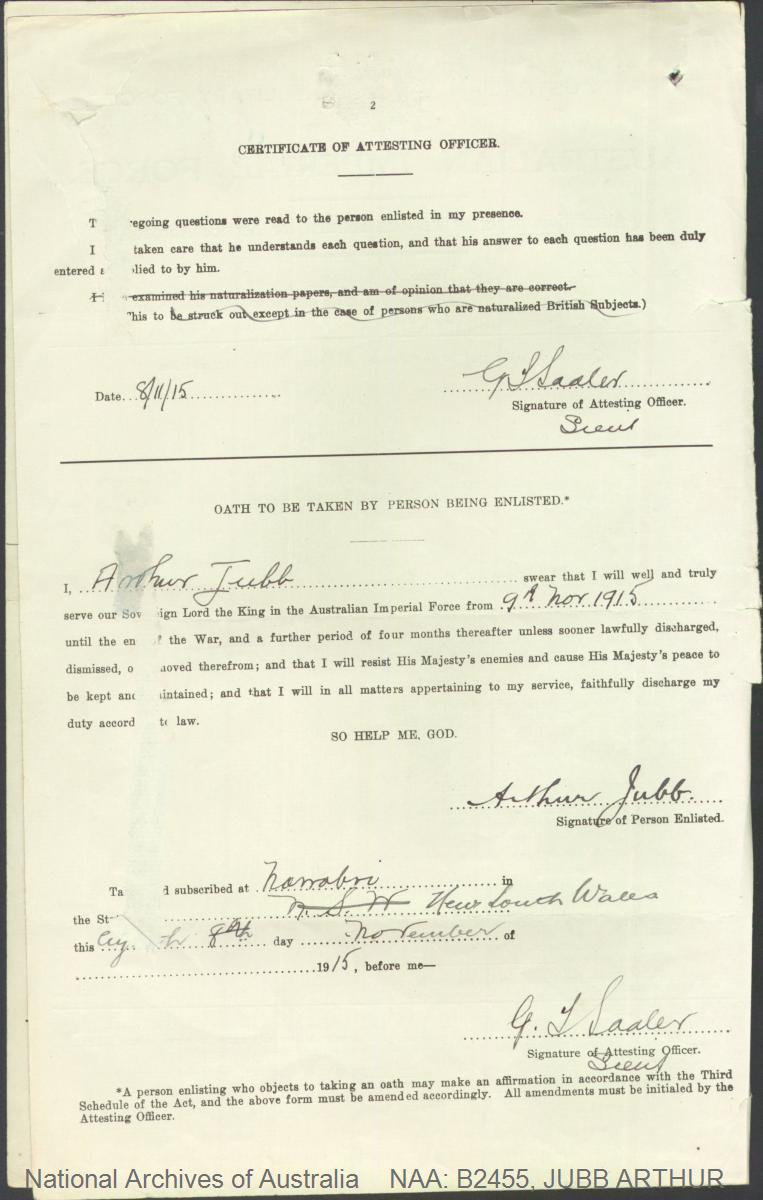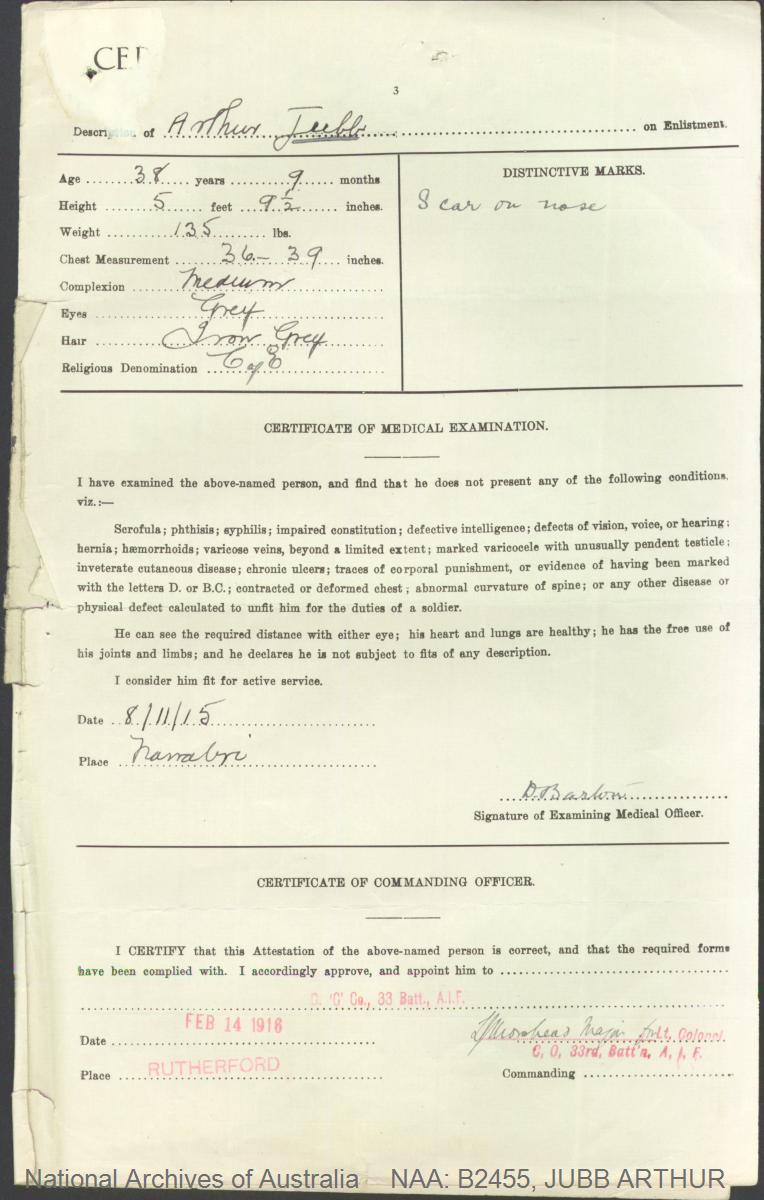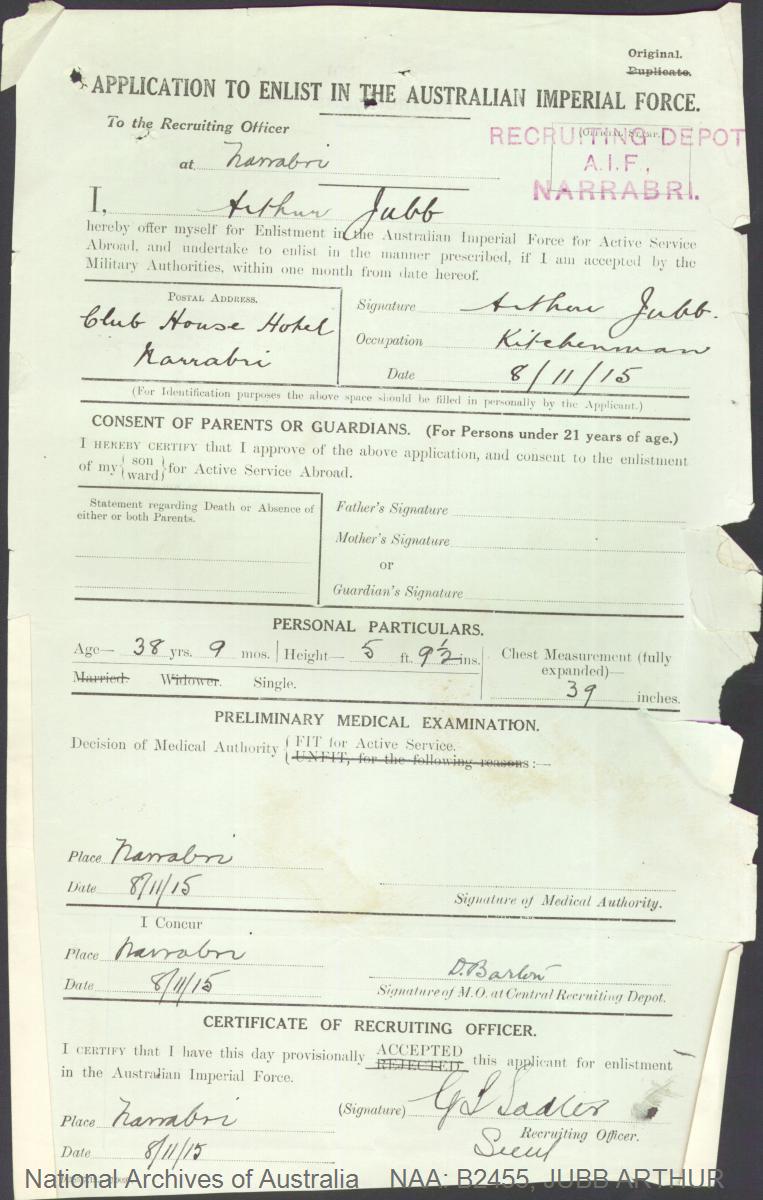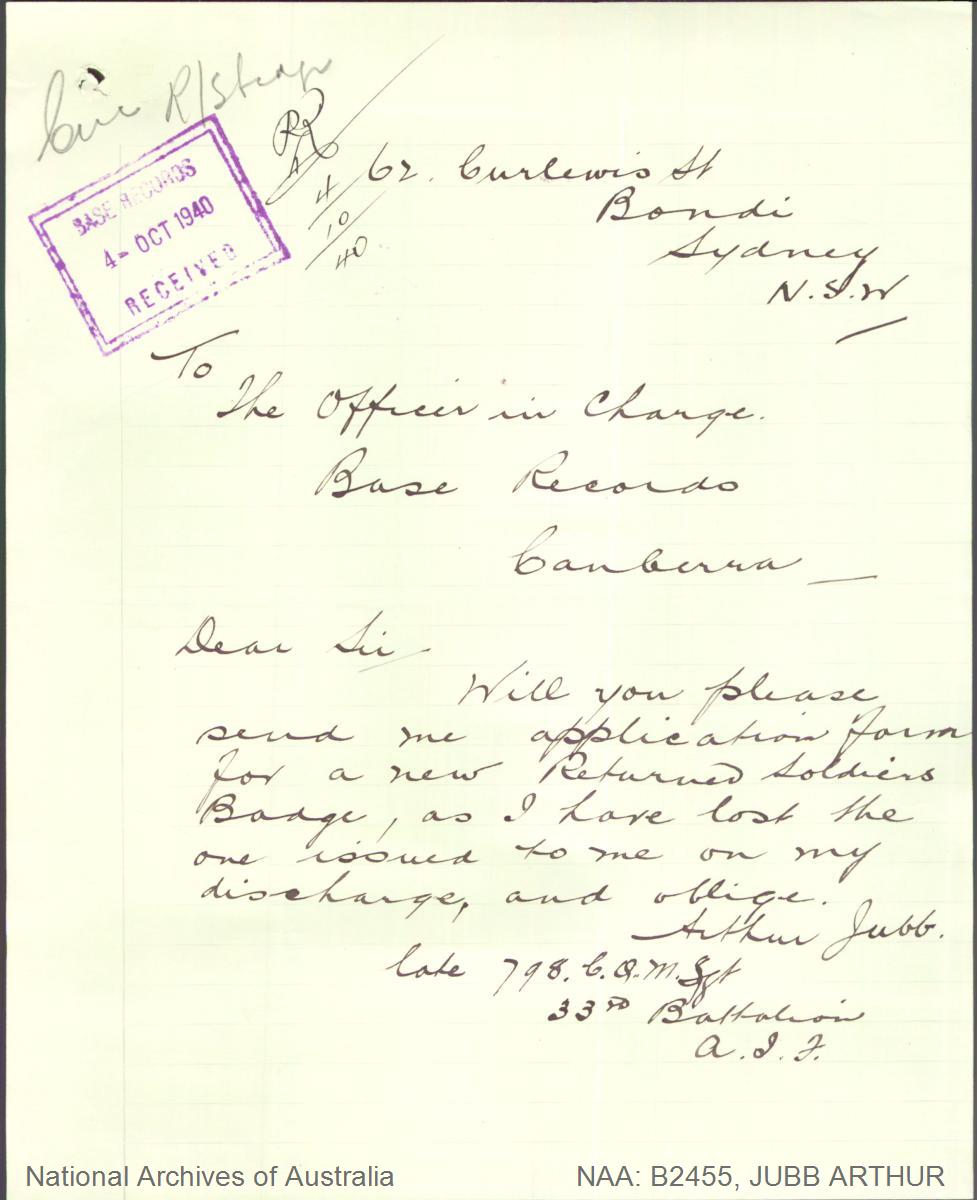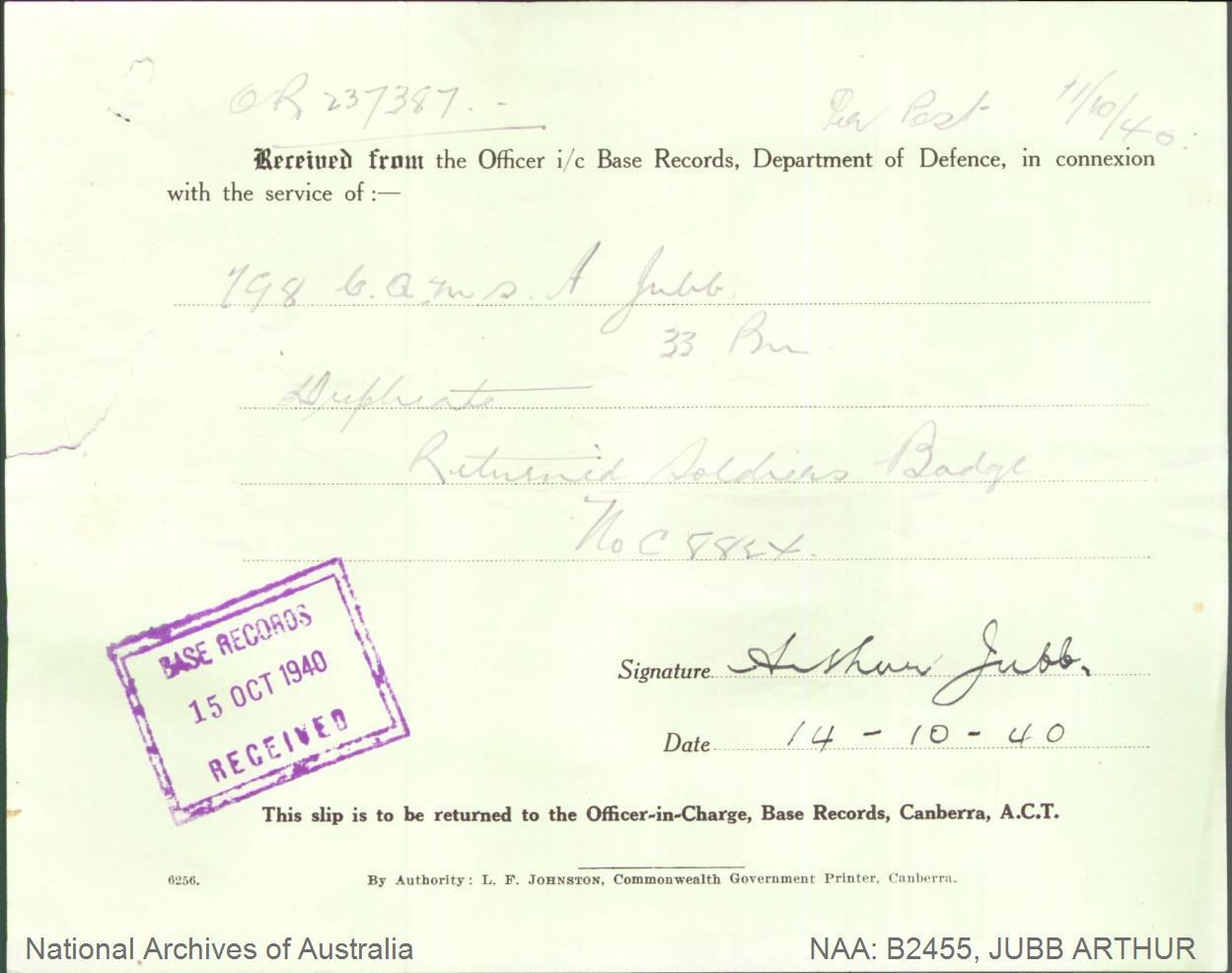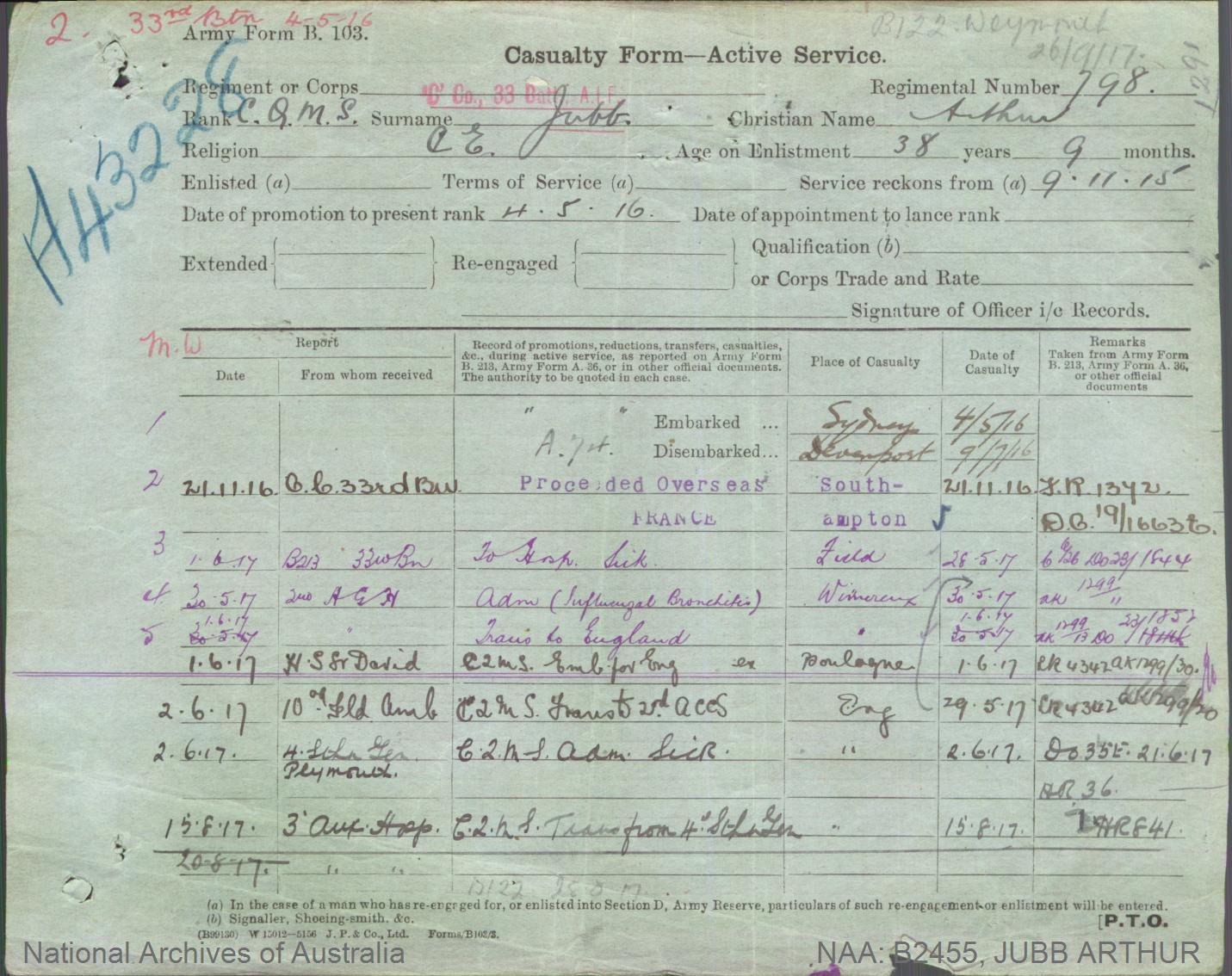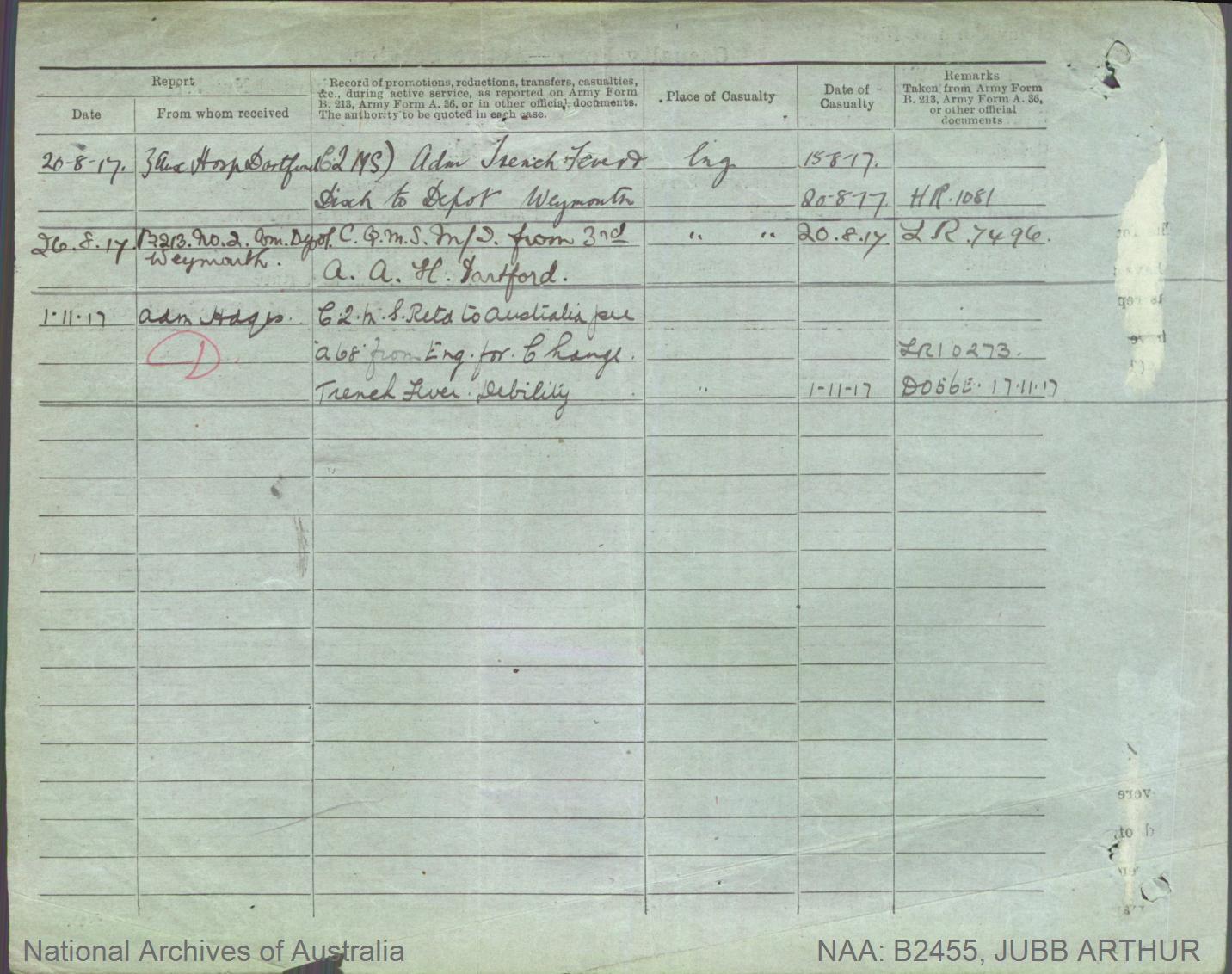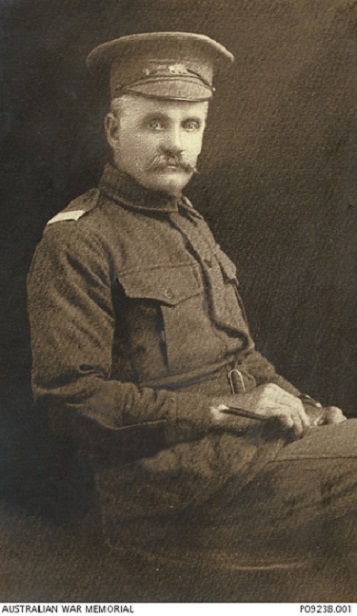
36th BATTALION - 33rd BATTALION AIF
Company Quarter Master Sergeant: 487A John Dixon KITCHEN.
Born: 1st July 1867. Guildford via Melbourne, Victoria, Australia.
Married: 22nd March 1894. Prahan, Victoria, Australia.
Wife: Florence Harriet Kitchen. nee: Bruce. (1867-1947)
Died: 30th July 1918. Killed in Action. Villers-Bretonneux, France.
Father: Edward Nicholson Kitchen. (1830-1917)
Mother: Dora Kitchen. nee: Watson. (1838-1894)
INFORMATION
John Dixon Kitchen enlisted with the AIF on the 8th February 1916 at the Liverpool Army Camp and was allocated to B Company 36th Battalion AIF and was an original member of the Battalion. John en trained to Sydney where the Battalion embarked on board HMAT A72 "Beltana" on the 13th May 1916 and disembarked at Devonport, England on the 9th July 1916. John and the Battalion were marched in to the 9th Training Battalion at Larkhill where the Battalion settled down to hard training, which included Route Marching, Trench Digging, Bomb Practice, Musketry and General Camp Routine.
22nd November 1916.
Larkhill. Troops en trained at Amesbury Station in three trains. 1st Train 7:47 am Compliment-Officers 11 and 327 others, 19 horses, 8 hand carts, 3 4 wheeled wagons and 9 bicycles. Lieutenant Colonel: James William Albert SIMPSON. Officer Commanding. A Company Lieutenant: ARNOLD. B Company Lieutenant: 3 Harry WOODHAMS. C Company Lieutenant: James Michael JULEFF.
2nd Train 9:15 am-Compliment-Officers 11 and 327 others. 20 horses, 2 two wheeled, 5 four wheeled vehicles. Major: Archibald Clifford BLACKLOW. Officer Commanding. A Company Lieutenant: DOYLE.
3rd Train 11:am- Compliment-Officers 10, 326 other ranks, 20 horses, 2 two wheeled, 5 four wheeled vehicles. Major: Archibald Leeson PRINCE. Officer Commanding. B Company Lieutenant: 1376 William James GORDON.
22nd November 1916
Embarked "Caesarea" 24 Officers, 811 others. Embarked "African Prince" 8 Officers 168 others, 59 horses, 15 four wheeled vehicles, 12 two wheeled vehicles and 9 bicycles. Total 32 Officers, others 979 left Southampton 6:00pm. 1 Officer 75 others detailed as sentries and boat guard. 1 Sergeant, 1 Corporal and 20 detailed as Firing Party. 5 Sanitary Police and 10 men as Sanitary Party. Francis was promoted to Lance Sergeant on the day he embarked for France.
23rd November 1916.
Arrived at La Havre 1:40 am. Disembarked 7:25 am. Marched via town to No:1 Rest Camp arrived 11:40 am. Remained at Rest Camp, Le Harve, till 6:30 am 24th November 1916.
24th November 1916.
36th Battalion, less 8 Officers 250 Other Ranks marched via town to point 3 Railway Station, Le Harve at 8:00 am. Entrainied and left Le Harve at 10:30 am. Proceeded via Montcrolier Buchy, Abbeville 6:10 am. 10 hours late via Boulogne Calais and Bailleul. Arrived at Bailleul at 4:25 pm 25th November 1916.
25th November 1916.
Detrained at Bailleul marched to billets at Merris district. Arrived at billets 10:45 pm. Quartered in 12 billets. Headquarters at Hameur Farm.
26th November 1916.
4 Officers 100 men "A" Company arrived at Merris at 8:30 am. Remainder of Battalion arrived at Merris 4:00 pm. Hostile aircraft shelled overhead 2:15 pm.
27th November 1916.
8 N.C.O's detailed to attend Gas School for 4 days. All Officers instructed in Box Respirator by Divisional Gas Officer. General: GODLEY and MONASH visited billets at Hameur Farm at 2:30 pm. Captain: John Martin HAWKEY. and 1 N.C.O. per Company visited forward billets at Armentieres.
28th November 1916.
Battalion left for Armentieres in 16 Motor Lorries. Whole Battalion reported in billets at Armentieres at 5:30 pm. Headquarters established at 6:00 pm Rue De Strasburg.
29th November 1916.
Whole Battalion still in billets-supply Working Parties Only.
30th November 1916.
Visited the front line on left sector of Defences at Armentieres.
22nd January 1917.
Armentieres. Enemy started light shelling at 10:00 am. At 2:00 pm locality 16 & 17 was heavily bombarded also locality 14 which ended in a box barrage being put on at 4:10 pm and an attack by the enemy from Pimple Salient. They entered our trenches but were only in 10 minutes. Our casualties 11 killed, 36 wounded, 4 missing. It is quite possible the 4 missing have been buried by Minnies.
17th February 1917
On the night of 17th-18th February last. Lieutenant: Clarence William BODDY 36th Bn when on patrol in NO MAN'S LAND, crawled close up to a Machine Gun emplacement in the enemy wire when the Gun therein suddenly Opened fire. Sergeant: 731 Gordon Mott COX who was hit and their presence became known to the enemy who thereupon opened up a concentrated fire on them. Lieutenant BODDY who was carrying a demolition charge which was hit by a bullet without causing it to explode, thereupon crawled backwards to within about six yards of the gun, with the charge under him, fired it and he and the Sergeant both dashed away and sheltered in a crater. The charge exploded and the gun at once ceased fire and it is probable that it was destroyed. Corps, Divisional, and Brigade Commanders desire to congratulate Lieutenant BODDY on his successful and hazardous enterprise.
4th 6th March 1917.
(1) HOUPLINES. 34th Battalion relieved by 36th Battalion- Working Parties and Training started.
7th March 1917.
Orders received to relieve 42nd Battalion in EPINETTE Sector. All arrangements made. Advance Parties sent into trenches. Orders cancelled late at night.
8th March 1917.
Working Parties of 35th Battalion taken over as well as our own. Major: John Alexander MILNE. promoted to Lieutenant Colonel as from 24th February 1917.
9th to 11th March 1917.
Very busy with Working Parties. No Training possible.
12th March 1917.
TRENCHES. Took over the whole of the HOUPLINE Sector from locality 8 to RIVER LYS. S.O.S. went up from locality 16 that night. Enemy raid possibly avoided.
13th to 16th March 1917.
Intermittent Artillery dual throughout course of tour of duty.
17th March 1917.
HOUPLINES. 34th Battalion relieved 36th Battalion. Took up quarters as "C" Battalion-Working Parties.
18th - 20th March 1917.
Working Parties - These were excessive on the the night of 20th. When 240 men worked from 5.00 am to 1:00 pm and again from 6:00 pm to 10:30 pm. Rest given the next day.
22nd to 25th March 1917.
Battalion engaged as Working Parties. Took over Trenches on 25th.
26th March 1917.
TRENCHES. Heavy Artillery fire over whole Sector. Enemy working at night in front line C.29.
27th to 28th March 1917.
Intermittent shelling during two days. Snow falling. Cold intense.
29th March 1917.
Artillery dual progressing. Enemy heavily shelling our front line. Heavy and medium Trench Mortars carried out a shoot with good effect. IRISH AVENUE heavily strafed with 77 m.m.
30th March 1917.
TRENCHES, HOUPLINES. Patrols state enemy front line held very lightly. Enemy shelling HOUPLINES with 4.2 howitzer. Light Trench Mortars got on to a working Party of enemy and inflicted loss.
31st March 1917.
Light Trench Mortars again scored a Working Party. Heavy Trench Mortar fired with good effect damaging enemy support line. Enemy considerably shelled our front line.
1st to 2nd April 1917.
TRENCHES. HOUPLINES. Considerable shelling all over Sector. Nothing important. 34th Battalion relieved 36th Battalion on morning of 2nd April. Battalion moved to Billets in ARMENTIERES.
(36th Battalion War Diary)
John was Wounded in Action on the 2nd April 1917 and was treated by the 11th Australian Field Ambulance for a Contusion of the Right Hand and was evacuated to the 2nd Australian Casualty Clearing Station. He was transferred to Winereux on the 7th of April and was invalid the England the next day where he was admitted to the 3rd Australian General Hospital.
27th November 1917 John was promoted from Lance Corporal to Corporal vice Company Quarter Master Sergeant: 325 Robert BROWNLIE on the 17th January 1918 he was again promoted from Corporal to Sergeant and the next day to Company Quartermaster Sergeant. John was granted leave to England on the 6th February 1918 for 2 weeks and re joined his unit on the 21st February.
4th April 1918.
The First VILLERS-BRETONNEUX
A heavy burst of shelling occurred at CACHY and on some 6" Howitzer Batteries situated under cover of the S.E. corner of the BOIS D'AQUENSE, at about 3.30 am. At 5.30 am the fire thickened to heavy and general shelling, counter battle work and harassing fire suggestive of preparations for an attack. Just before 6.00 am shells fell in the wood near our bivouacs. The troops were hastily got out into the open. The shelling continued to be very heavy for about two hours, in the course of which two men were killed, and Lieutenant: 927 John LANG and 8 other ranks were wounded.
At 9:00 am orders were received to "Stand To" as it was expected the enemy would attack. At 11.45 am orders were received to proceed to position of readiness at U.5. central (South of VILLERS-BRETONNEUX) for defence of the village. Moved at 11.55 am and arrived at position of readiness without casualty despite general shelling of the area crossed. Lieutenant: Sydney Horace NEWELL (Scout Officer) reported direct to C.O. 35th Battalion, who was defending the line in part of the attack area. As the position of readiness the Battalion took up a position on the reverse slope of the hill on the east side of the VILLERS-BRETONNEUX - HANGARD ROAD, with "A" and "B" Companies just below the crest, "C" Company in close support, and "D" Company in reserve.
At 1.45 pm the C.O. and Adjutant reported to the C.O. 35th Battalion, at VILLERS-BRETONNEUX the village was being heavily bombarded. At 2.30 pm the Adjutant returned with the preliminary instructions to the 2nd in Command and the C.O. awaiting developments. At 4.45 pm the C.O returned with information that the Bosch had broken through the English line and was advancing on the village. While he was speaking heavy bursts of Machine Gun fire sprayed over the hill. English troops had been retiring for half an hour through our line but efforts to stop them were in vain.
The C.O ordered "A" Company and "B" Companies to immediately counter-attack. They did so with great spirit and in fine style sweeping along the southern end of the RAILWAY LINE. A party of English troops were seen to be reforming on our right. The Adjutant was sent with an invitation to their C.O to join in a Counter-Attack. Brigadier General: WOOD of the 55th Brigade was found to be Commanding in person and he immediately agreed, and went forward on the right flank of our "C" Company. In the advance great progress was made by "A" Company on the left under Captain: John Edward Wallace BUSHELLE who imbued them with wonderful Spirit and Confidence by his gallant leadership.
Owing however to organized opposition from special M.G. strong points in an orchard and two hay stacks "B" and "C" Companies were not able to keep up to the line of "A" Company's advance and wide gaps were left between all the Company frontages by reason of the extended front on which it was necessary to deliver our Counter Attack. The Reserve Company was however sent up to reinforce the center, link up the Companies, and, as far as possible, straighten out the line. Two small Companies of the 6th London Regiment who appeared at the time were also sent into the gap between "A" and "B" Companies and our gain was consolidated. Tools and ammunition were hastened forward by a small party from Headquarters - signallers, batman, police and gas personnel, - and this party brought back wounded on the return trip, doing excellent work.
4th-5th April 1918
The First VILLERS-BRETONNEUX
The Strength of the 9th Infantry Brigade was about 2,250 but their casualties during the 2 days of fighting numbered 30 Officers and 635 men either killed in action or missing.
9th Infantry Brigade Casualties.4th-5th April 1918
| 33rd Battalion. AIF |
3 Officers |
82 Other ranks |
| 34th Battalion. AIF |
5 Officers |
120 Other ranks |
| 35th Battalion. AIF |
9 Officers |
282 Other ranks (including 44 missing) |
| 36th Battalion. AIF |
12 Officers |
133 Other ranks (including 1 missing) |
| 9th Machine Gun Company. AIF |
1 Officer |
18 Other ranks (including 4 missing) |
12th April 1918.
Just after dawn (at 6:00 am) the enemy opened a barrage along our front and to our right on the French. The French S.O.S. went up immediately and was answered by a heavy barrage. Very soon the whole of the forward areas and the immediate rear was screened by heavy smoke from the enemy barrage which consisted principally of 5.9's and 4.2's. At about 7:00 am the fire slackened and it was learnt that the French had been pushed back on our immediate right and partly out of HANGARD. Reinforcements for the French came along the slope of the hill on our right flank till almost level with our line and then went half right over the hill into HANGARD. Enemy Machine Gun's attempted enfilade fire on those troops from the BOIS de HANGARD, but "C" Company on the left stopped this by rifle and Lewis Gun fire.
The line was shelled heavily several times during the day. At 7:30 pm the French, West Kent's and Essex counter attacked on our right. The barrage was lighter than in the morning. Fire died away about 8:30 pm and it was learnt that the line on the right had been re established and in some parts had gone further than the position lost in the morning. The Battalion was relieved by the 18th Battalion AIF commencing about 10:00 pm and was completed at 1:30 am, the Battalion then moved to billets in the BOIS de BLANGY where a hot meal awaited them.
At 1:09 pm a 5.9 Howitzer Shell landed in Battalion Headquarters and killed Lieutenant Colonel: John Alexander MILNE. D.S.O., Captain: Thomas Rodger MacNEE, also the Adjutant of the 5th Essex Regiment and 6 other ranks; the same shell wounded Major: John Ambrose McDOWELL. and 3 other ranks.
36th Battalion War Diary
The 36th led the attack at Villers-Bretonneux before they were disbanded on the 30th April 1918 and John was transferred to reinforce the 33rd Battalion AIF. He was later allocated the Prefix A the his service number to 478A on the 9th July 1918. John was Killed in Action on the 30th July 1918 at Villers Bretonneux, France and is remembered with honour and is commemorated in perpetuity by the Commonwealth War Graves Commission at the Villers Bretonneux Military Cemetery, France.
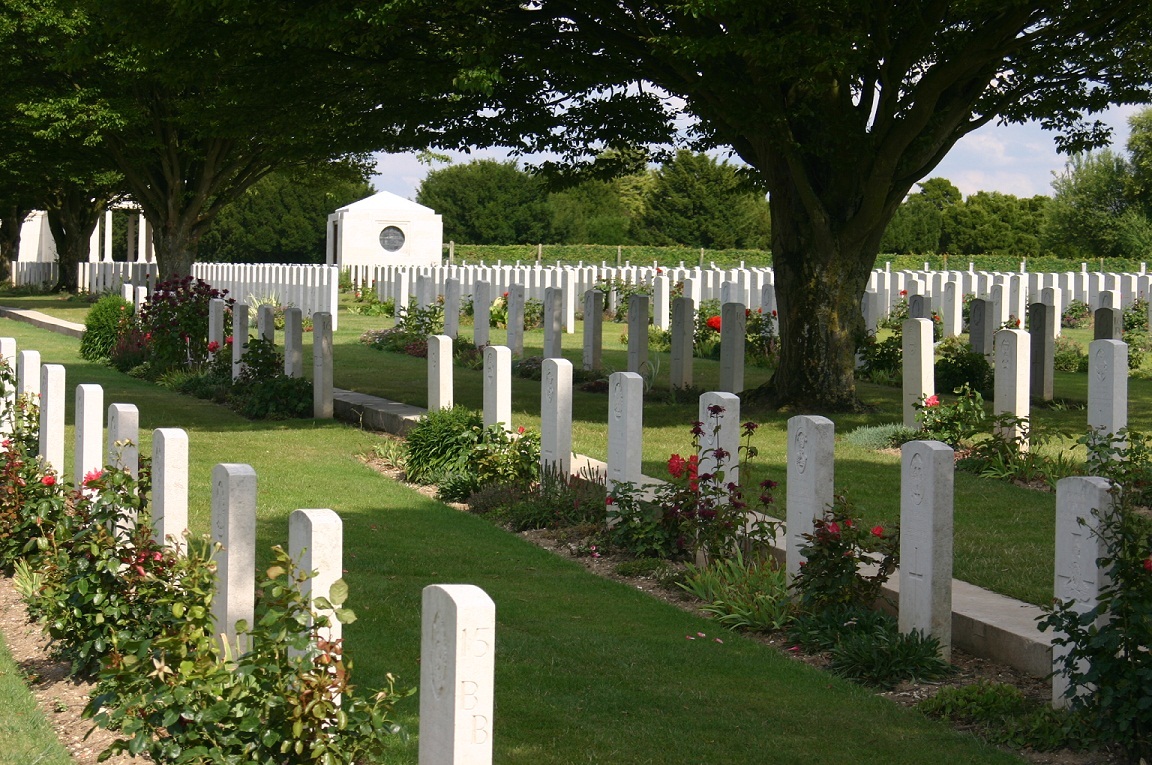
Villers-Bretonneux Military Cemetery, Villers-Bretonneux, Picardie, France
Family Information
John was a married 43 year old Storeman from Leichardt via Sydney, N.S.W. upon his enlistment with the AIF.
Military Records

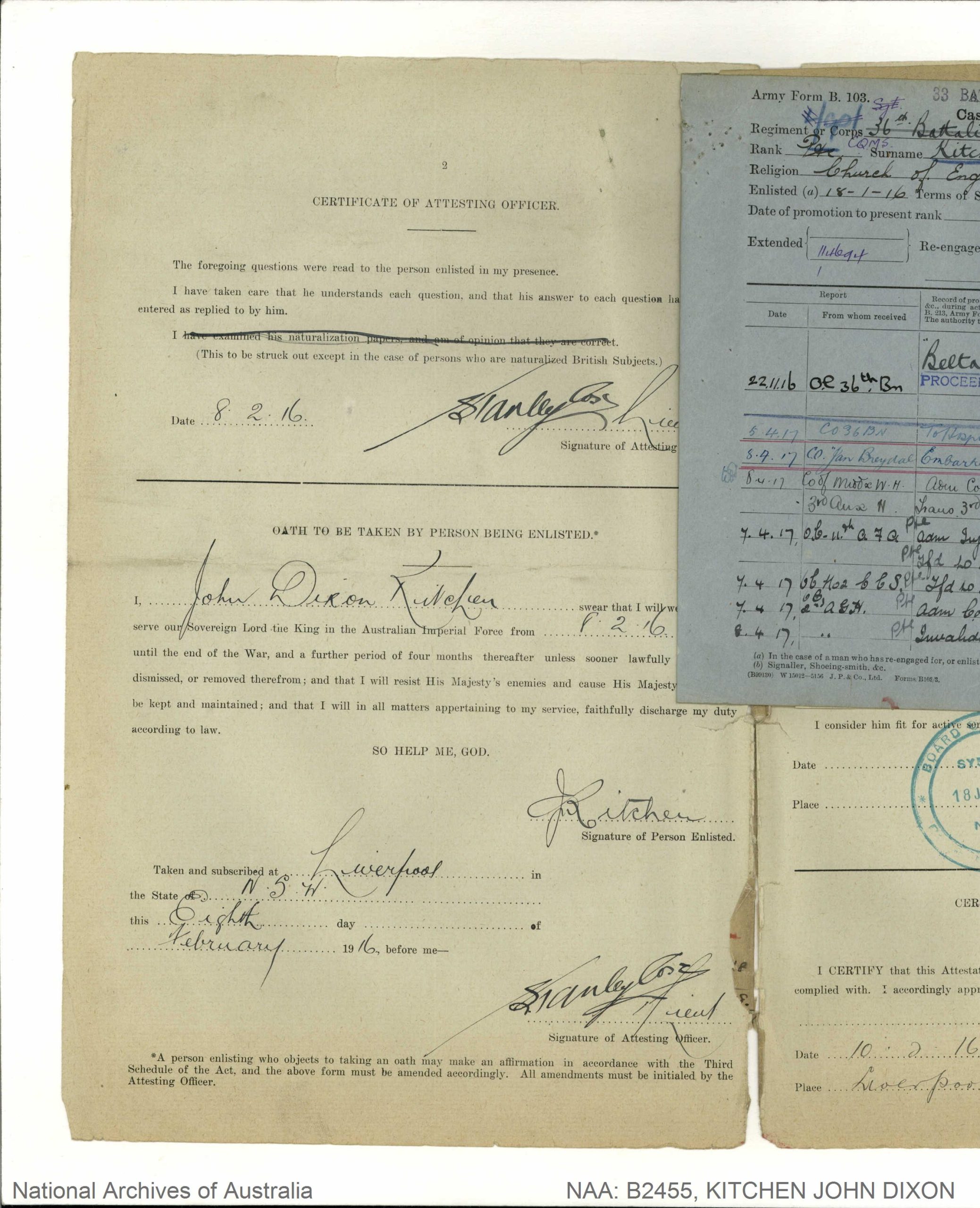
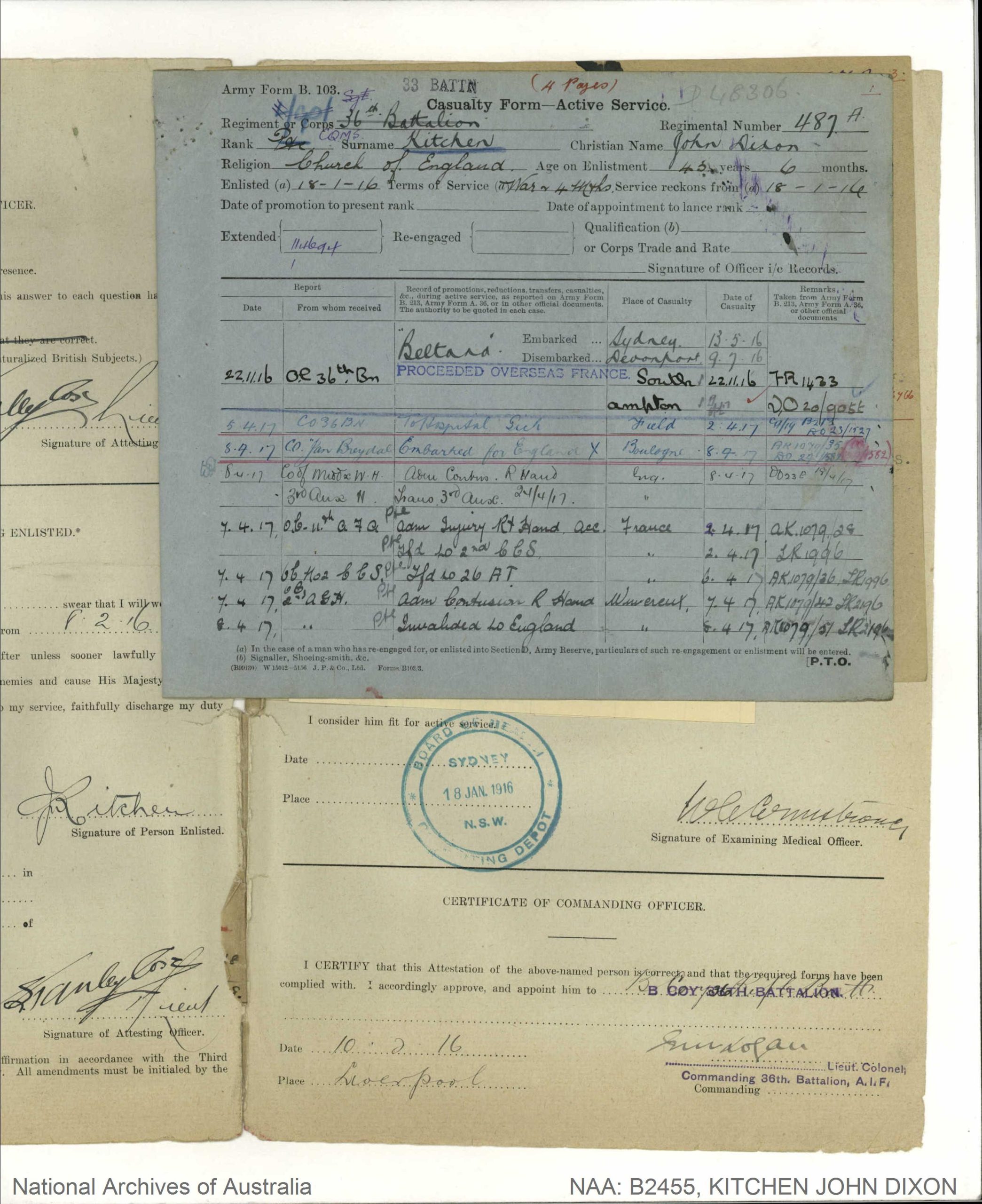
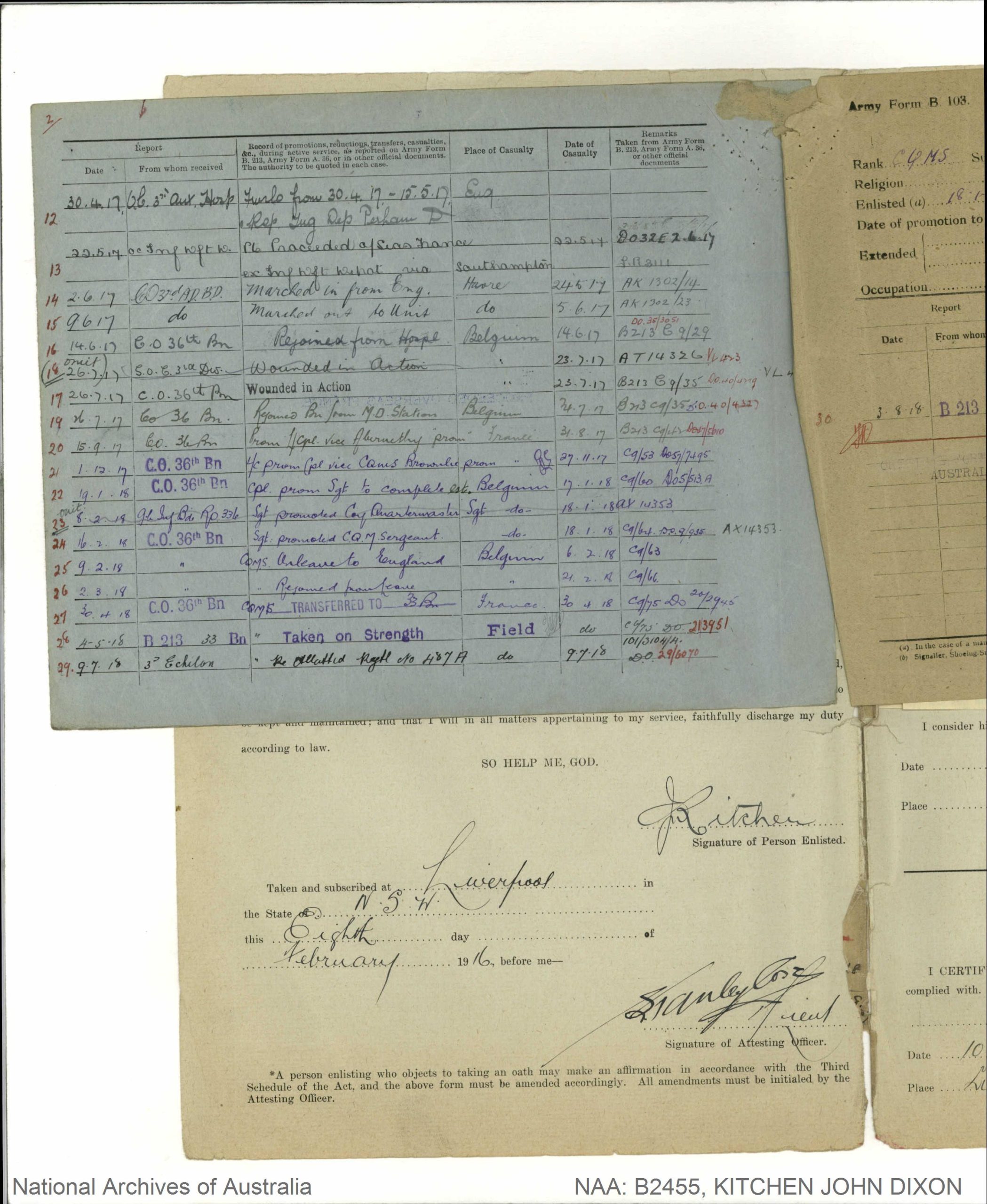
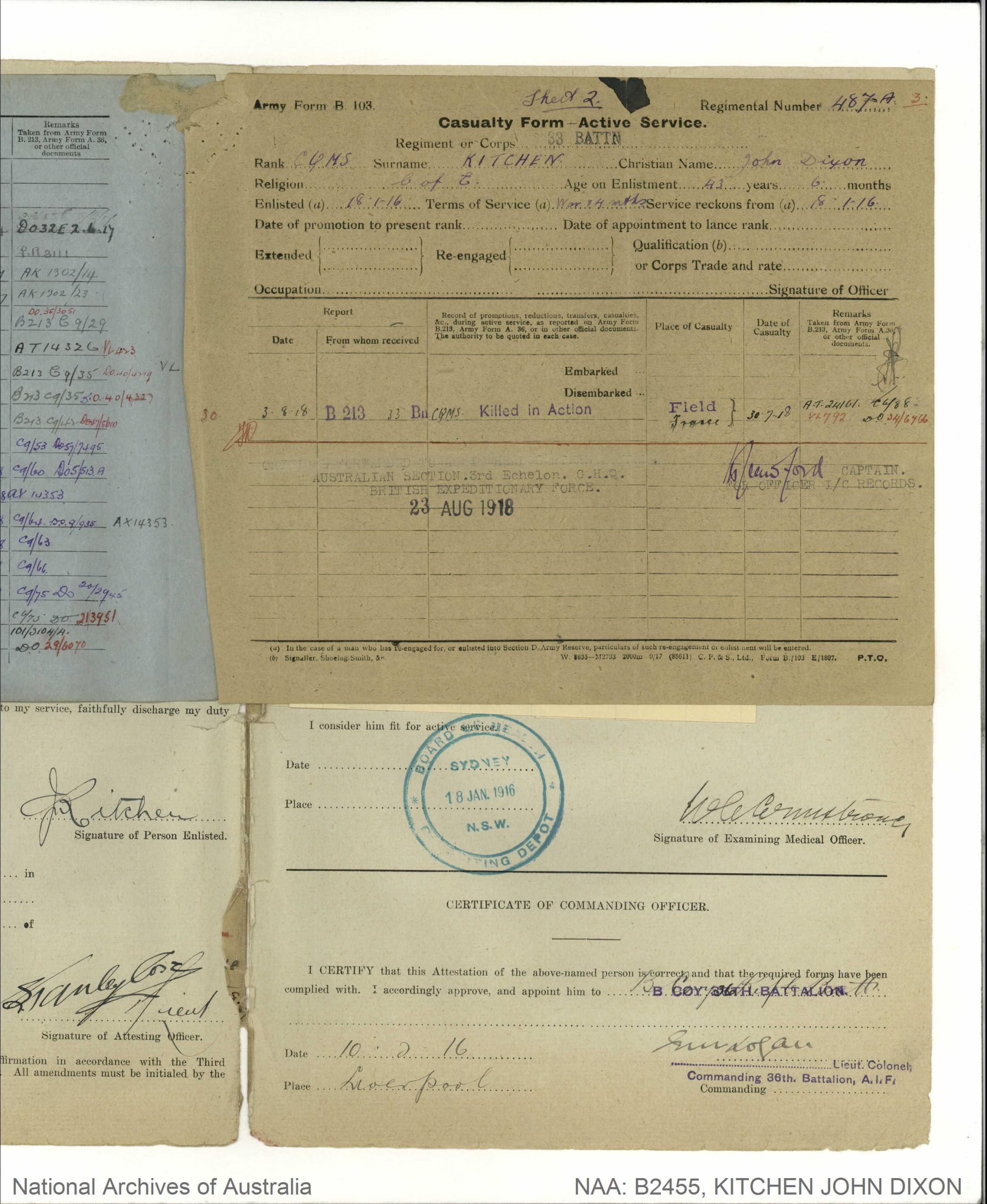
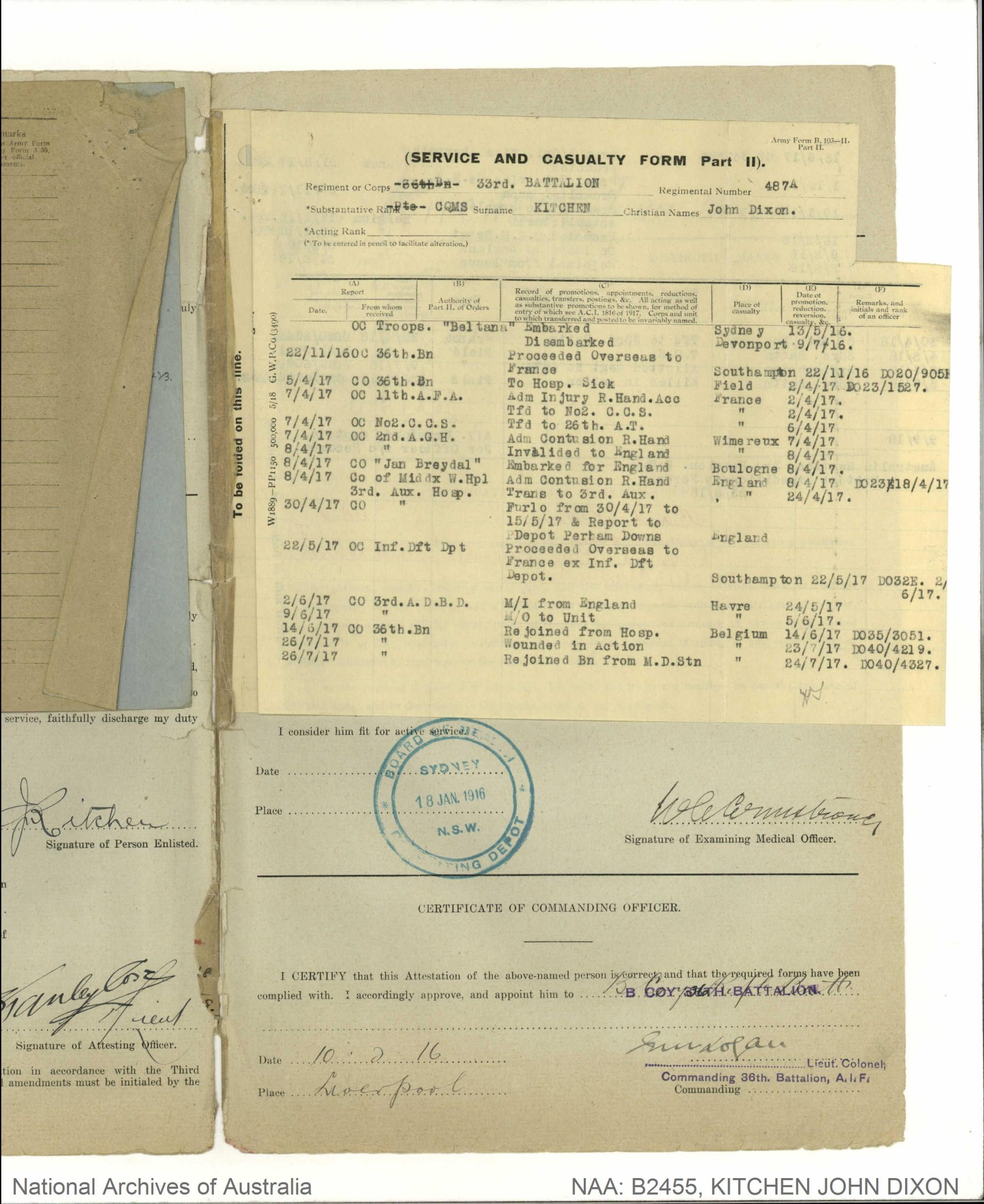

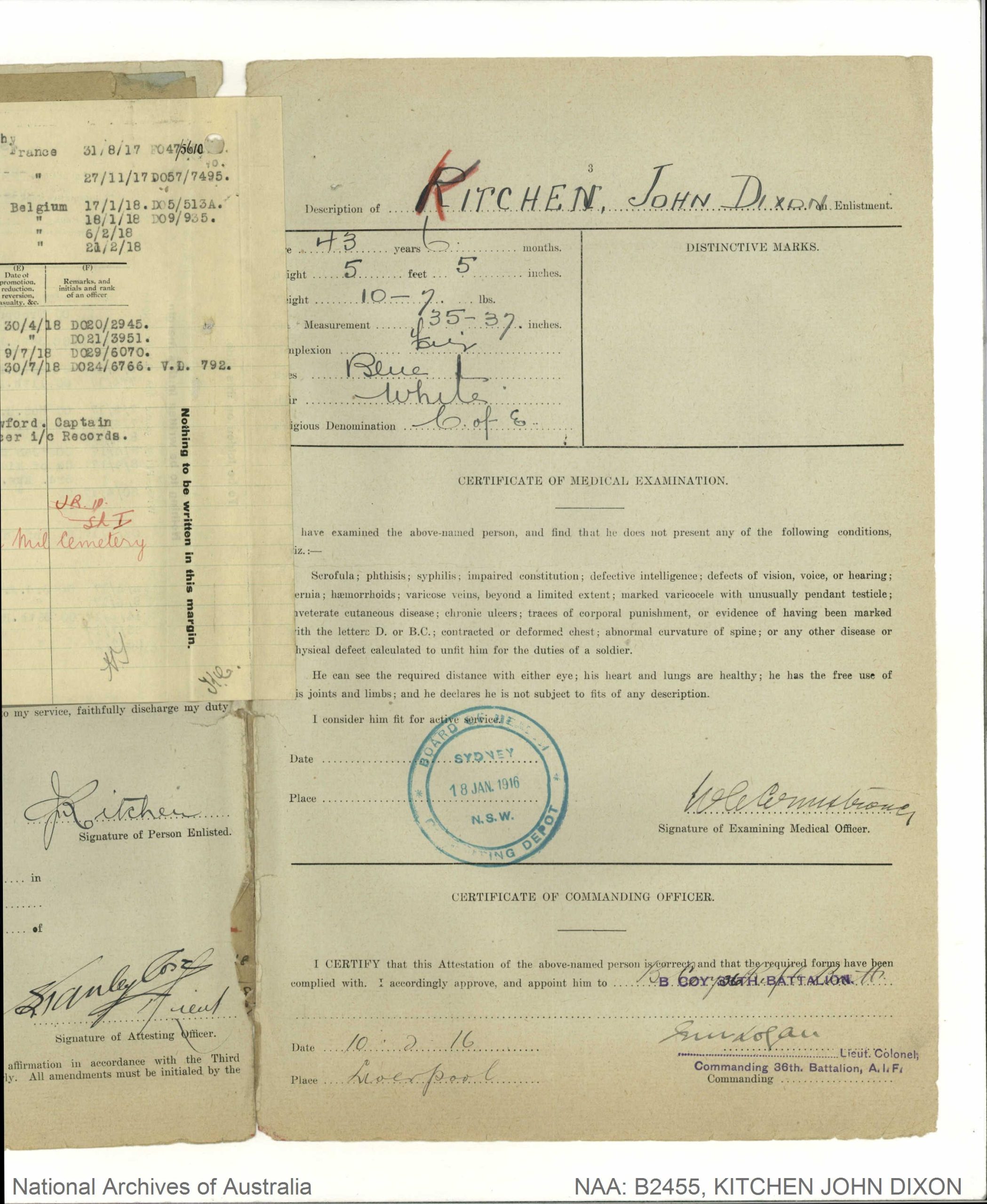

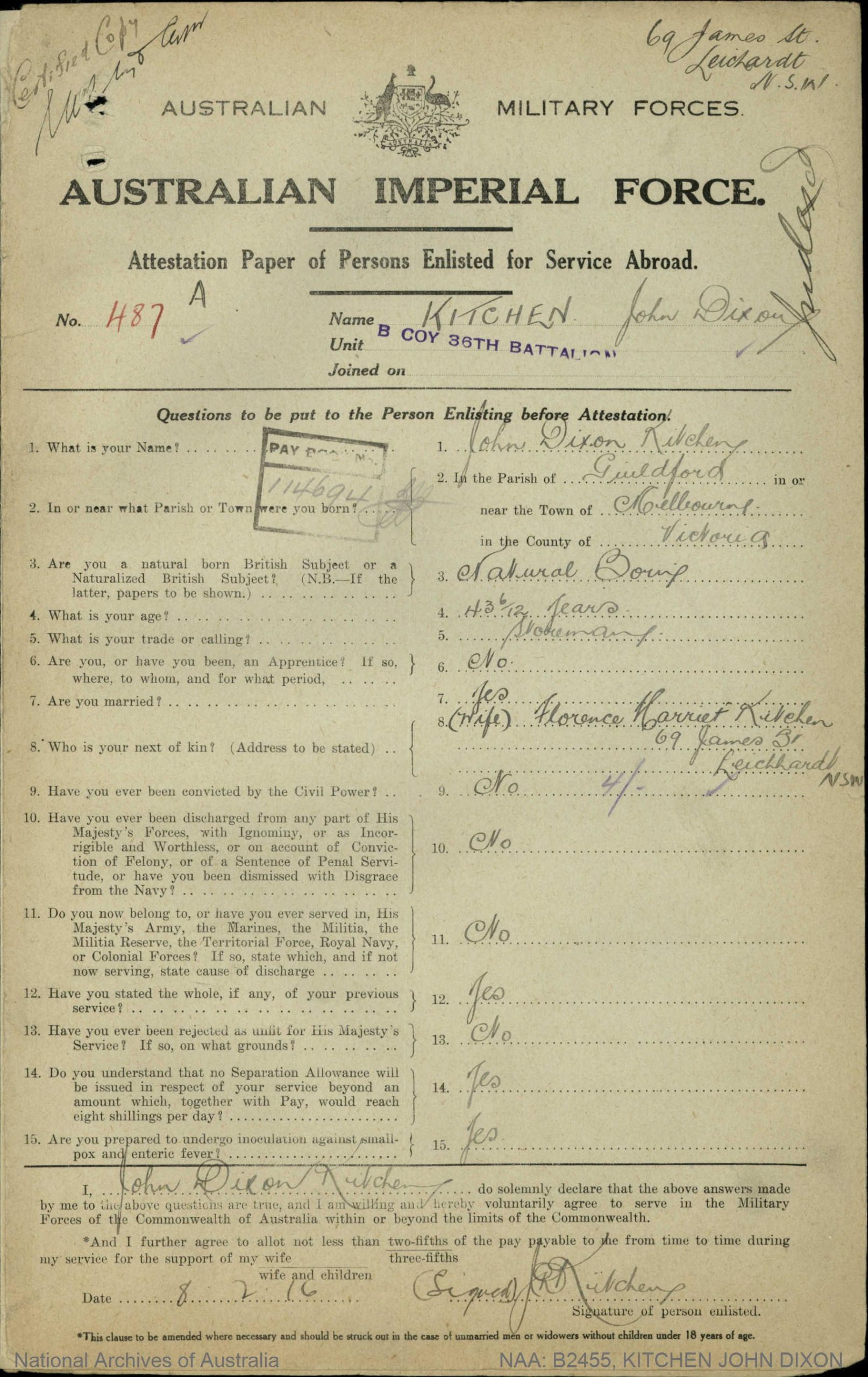

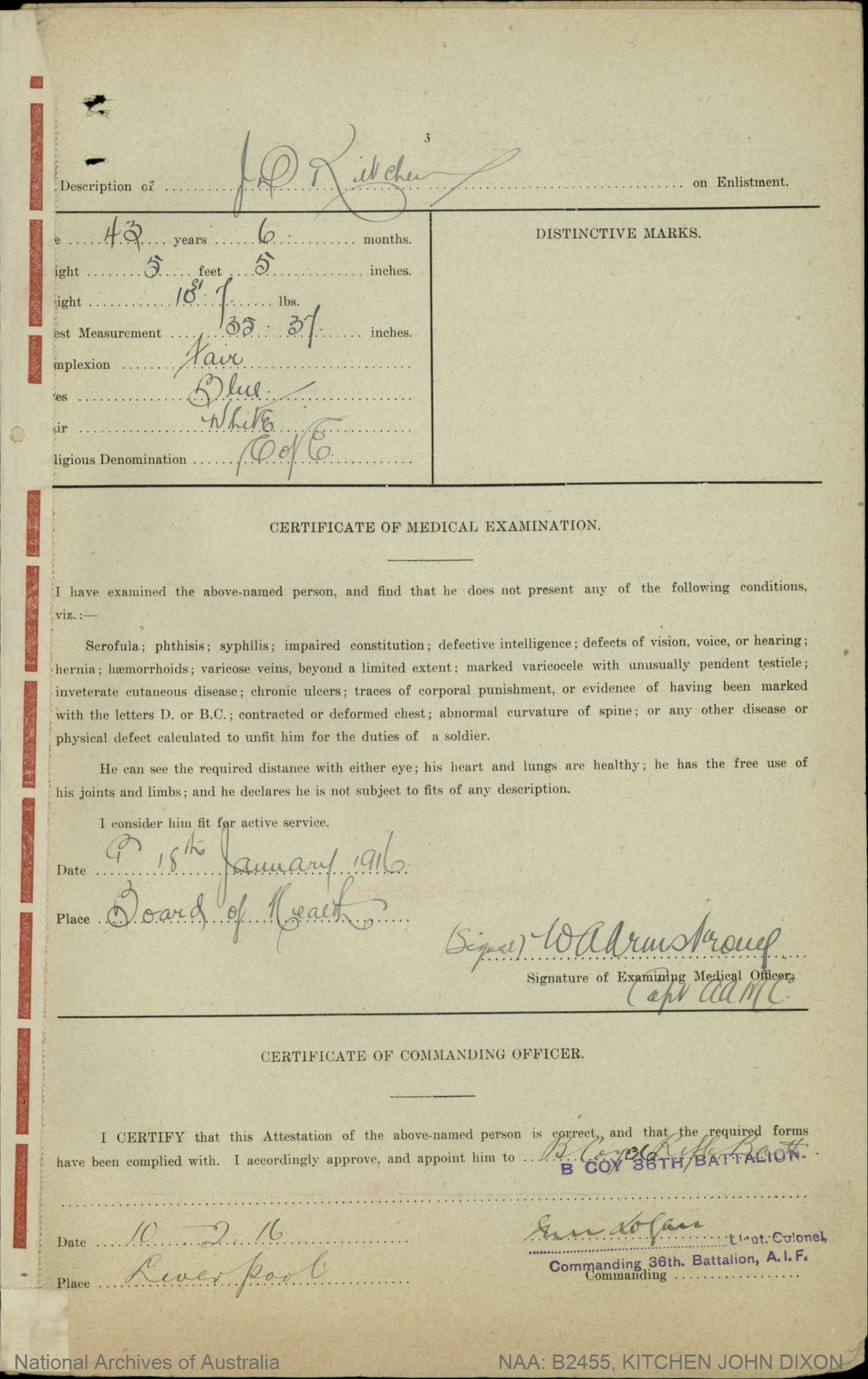
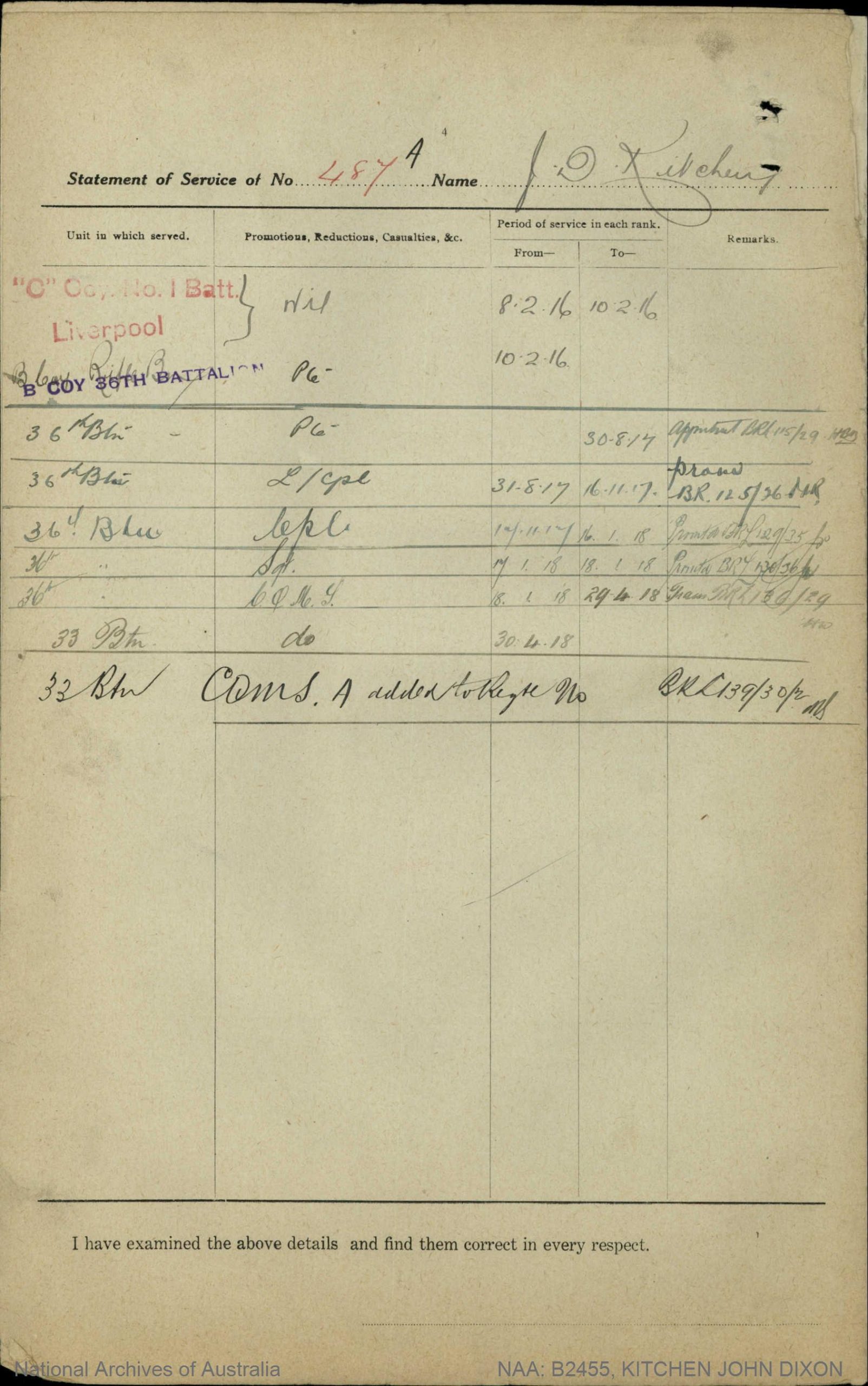
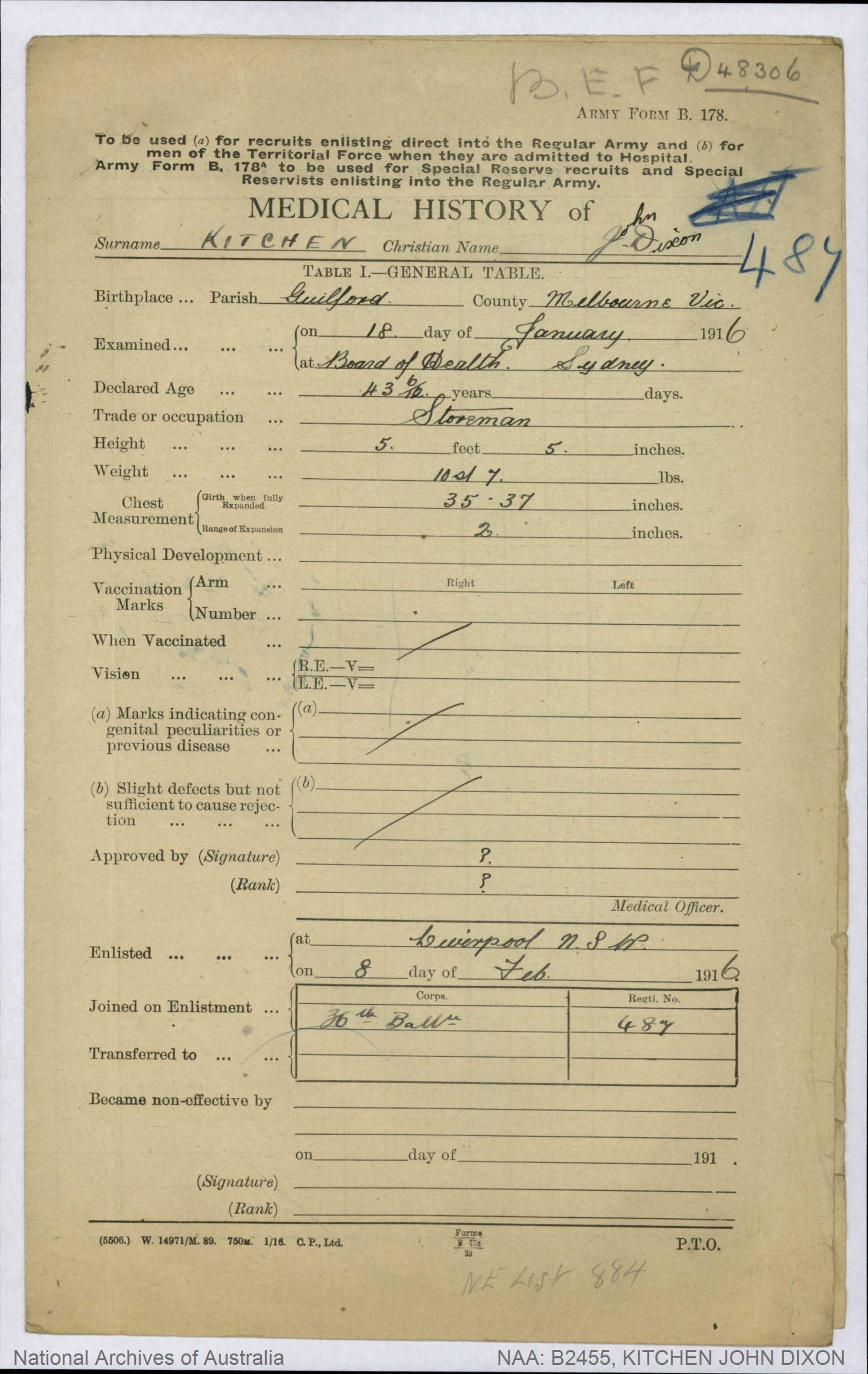
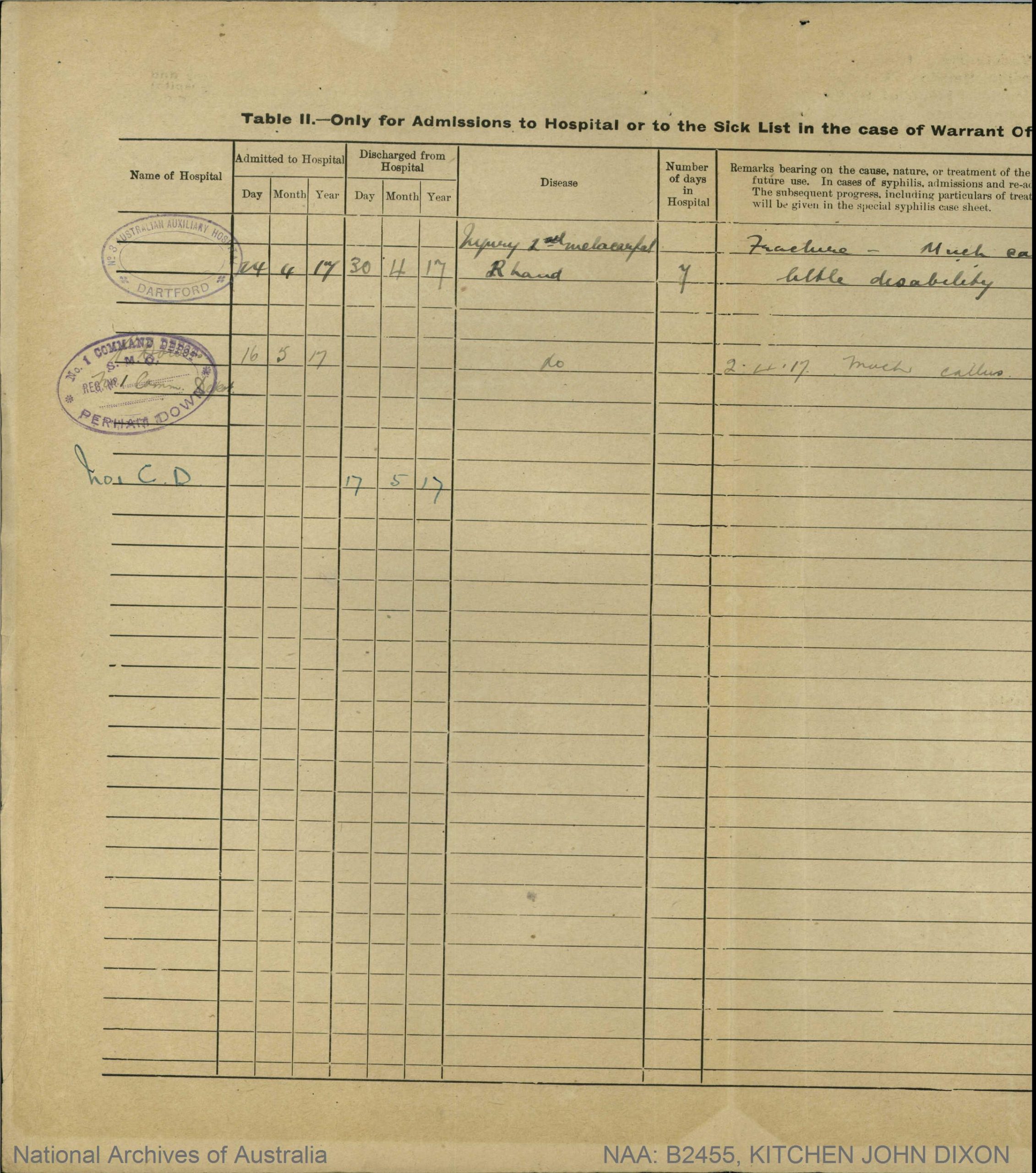
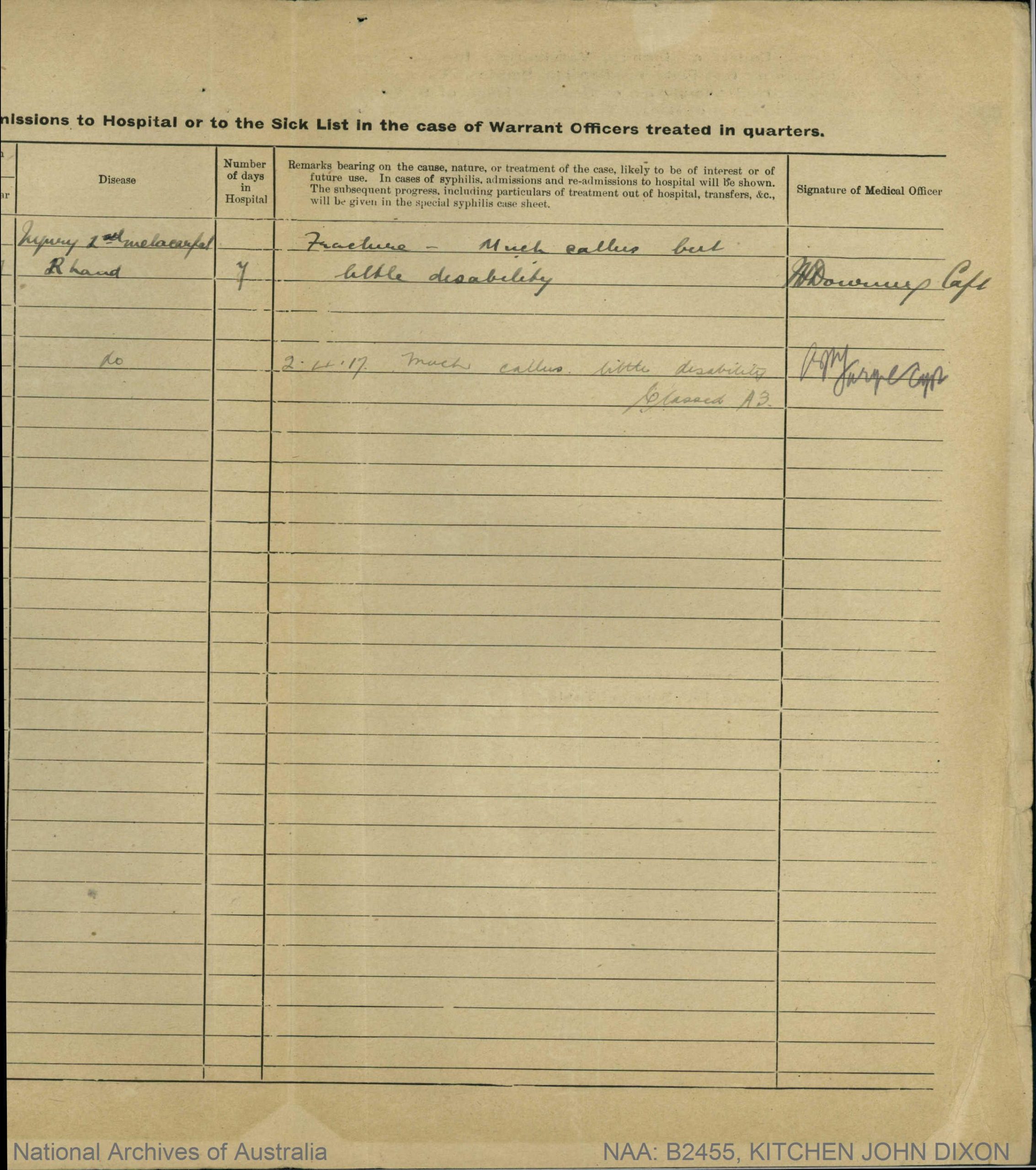


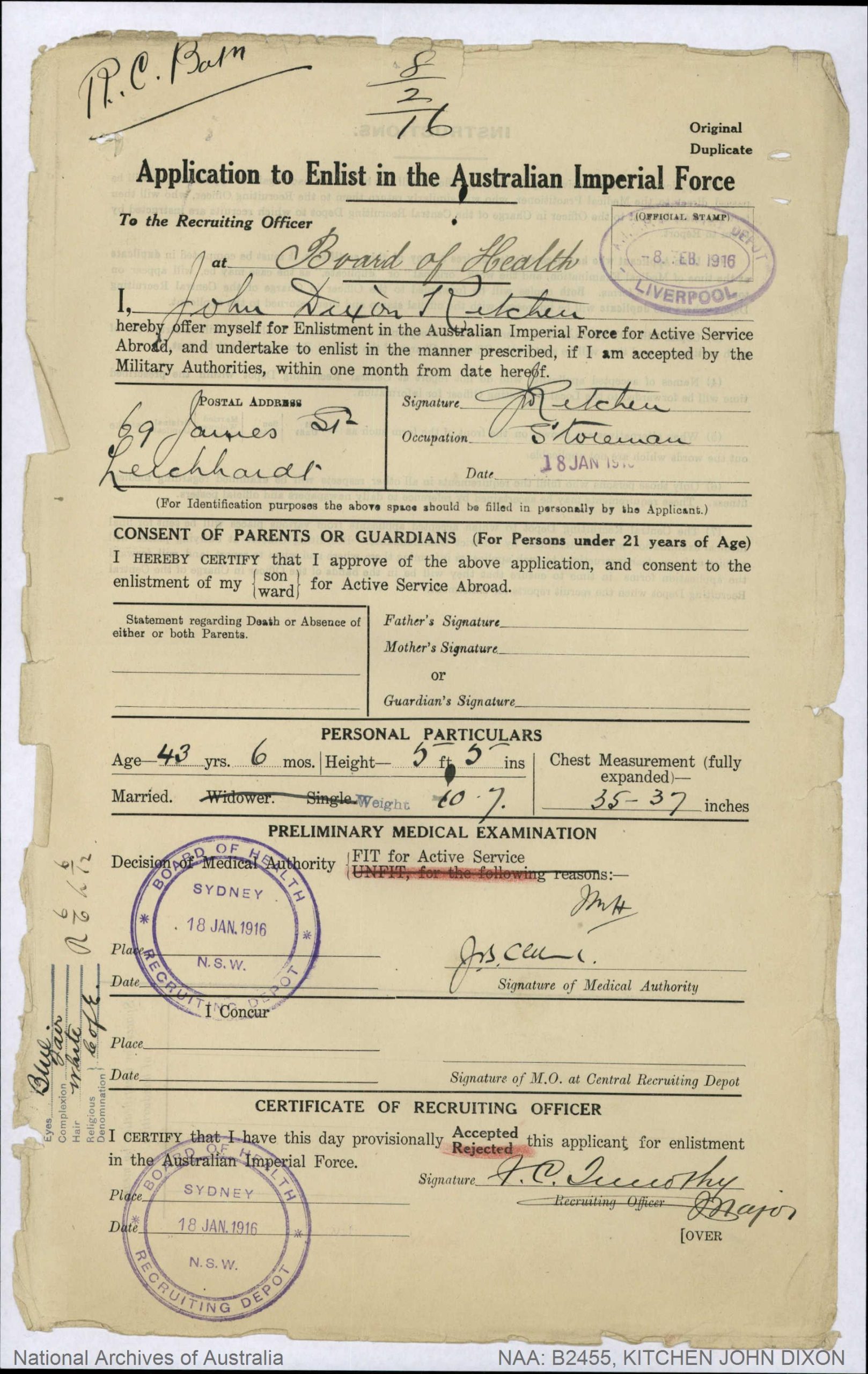
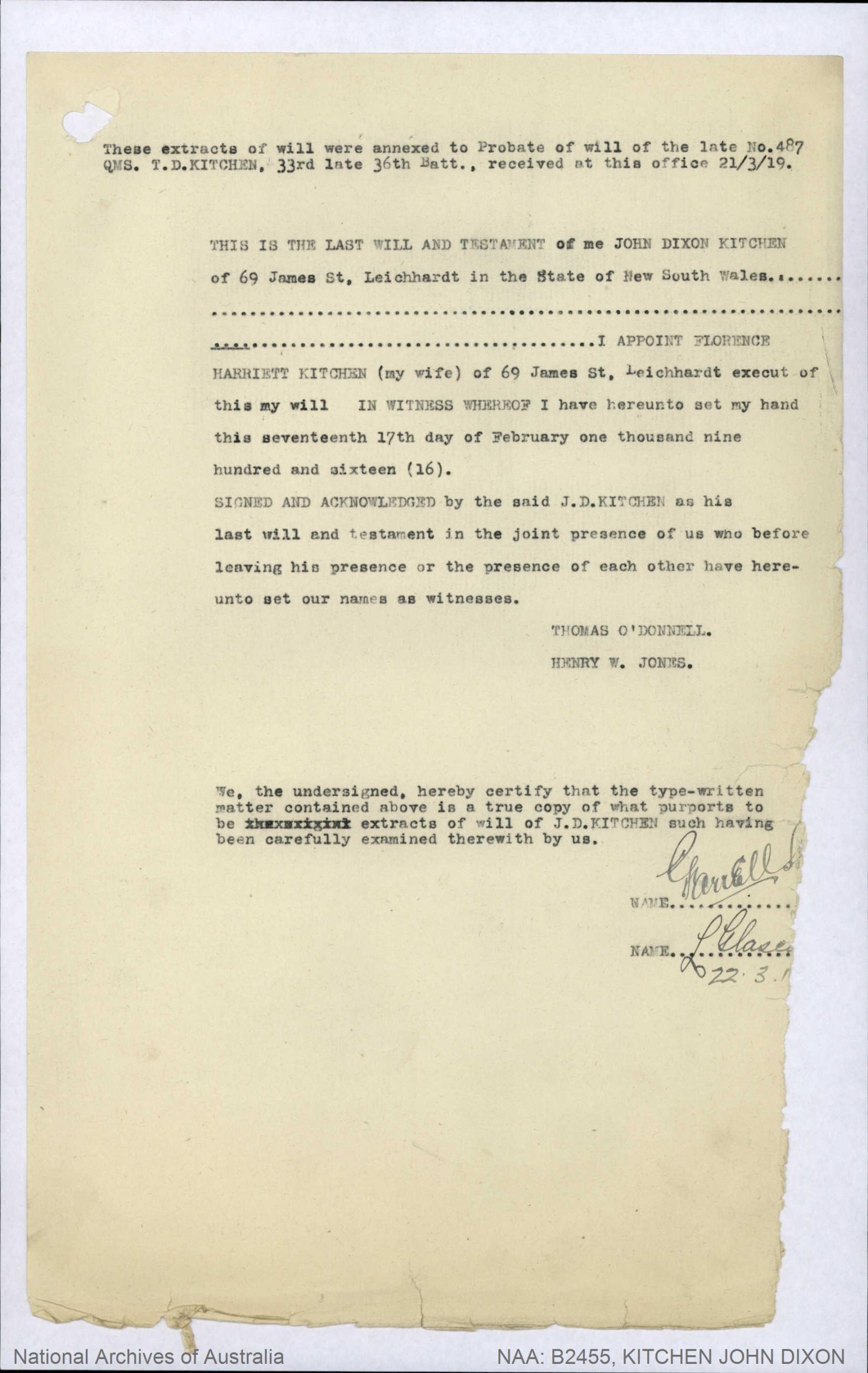
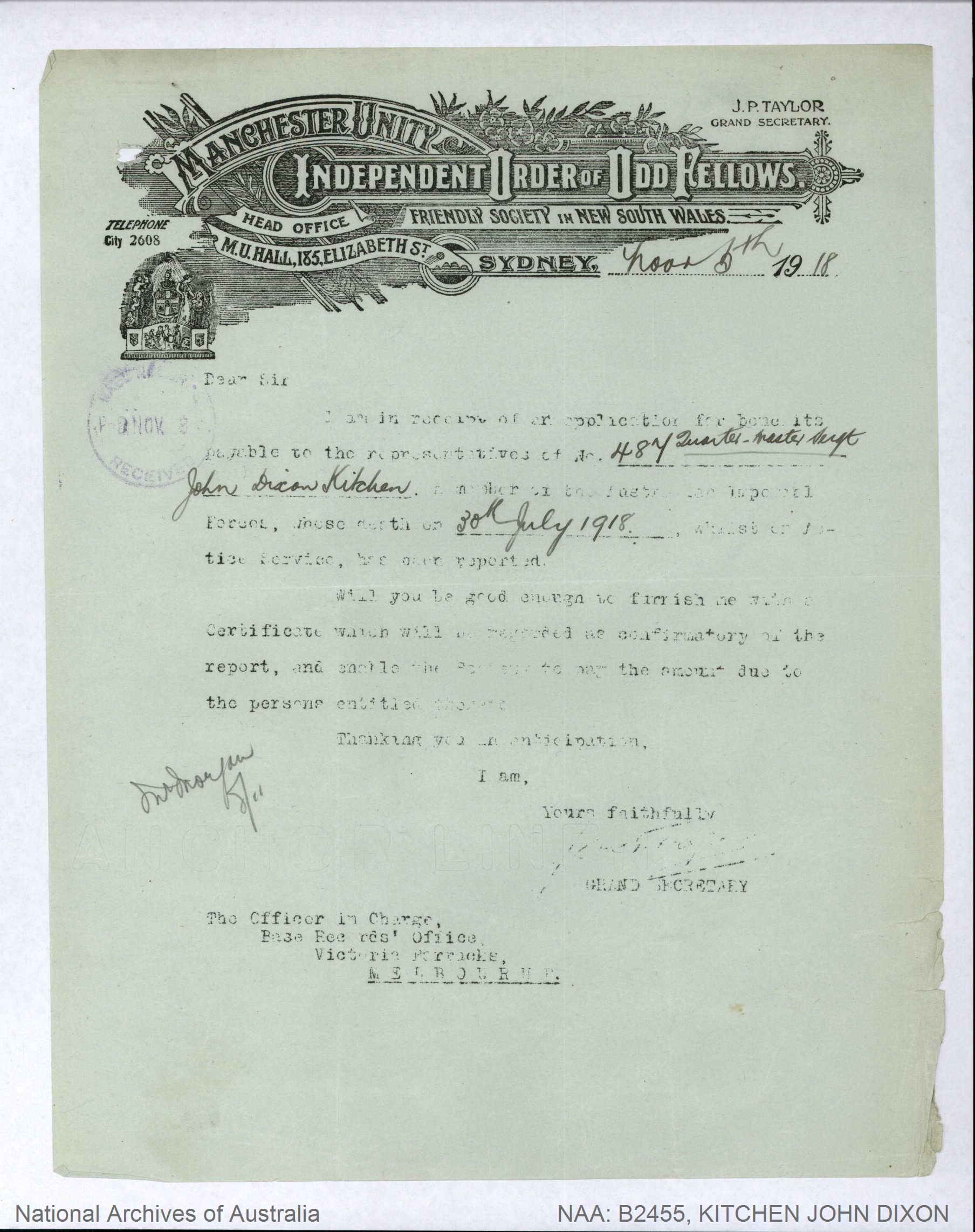
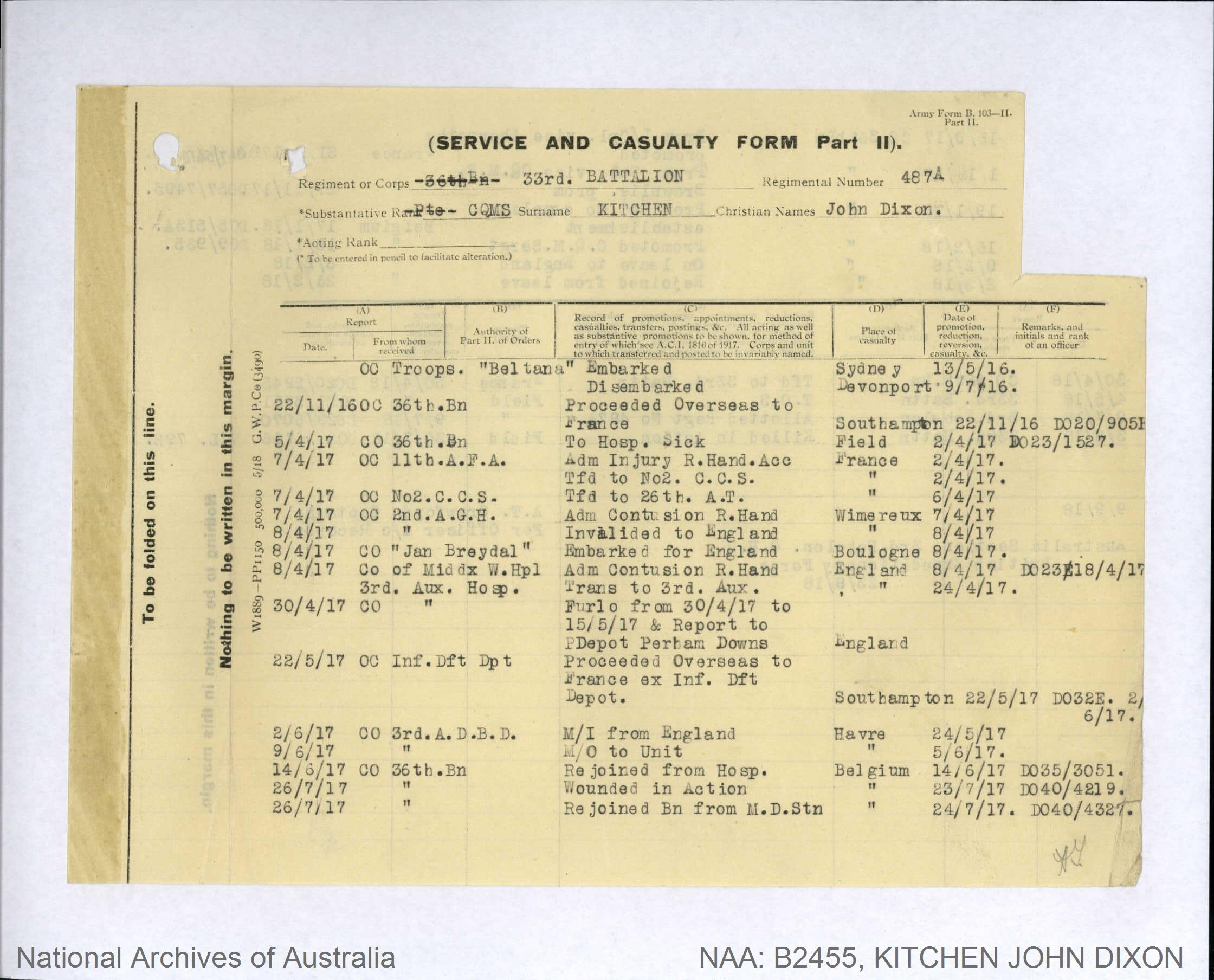
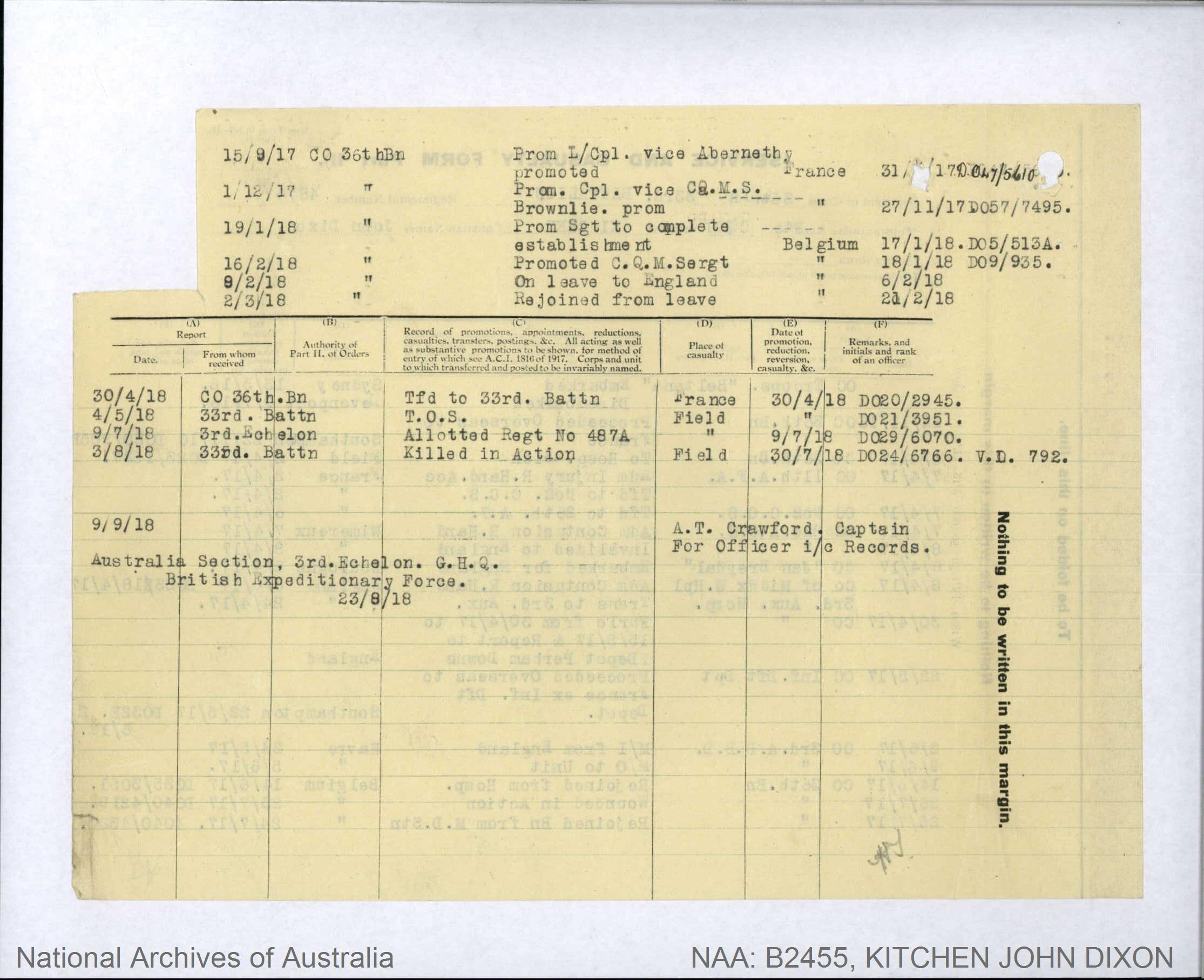
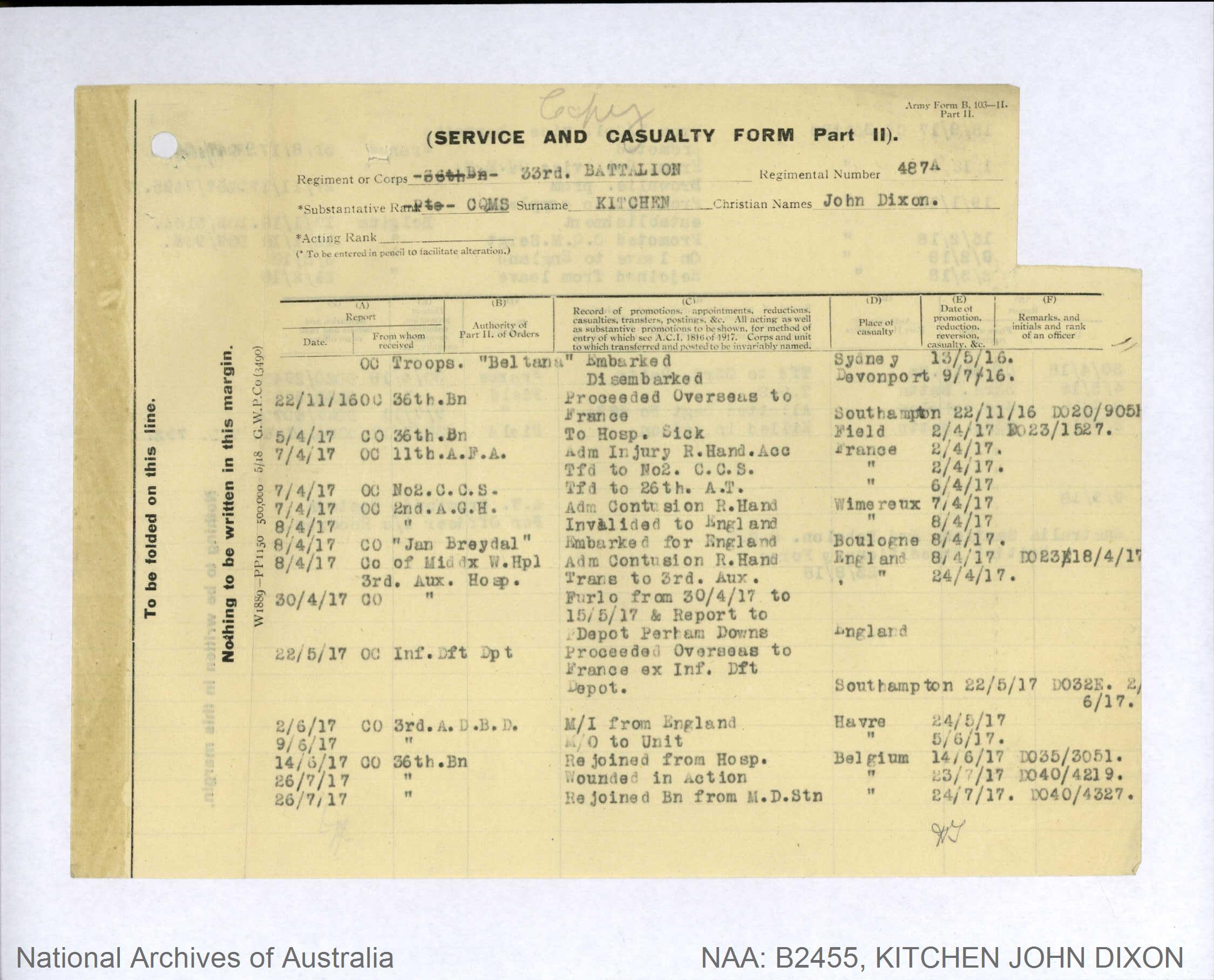
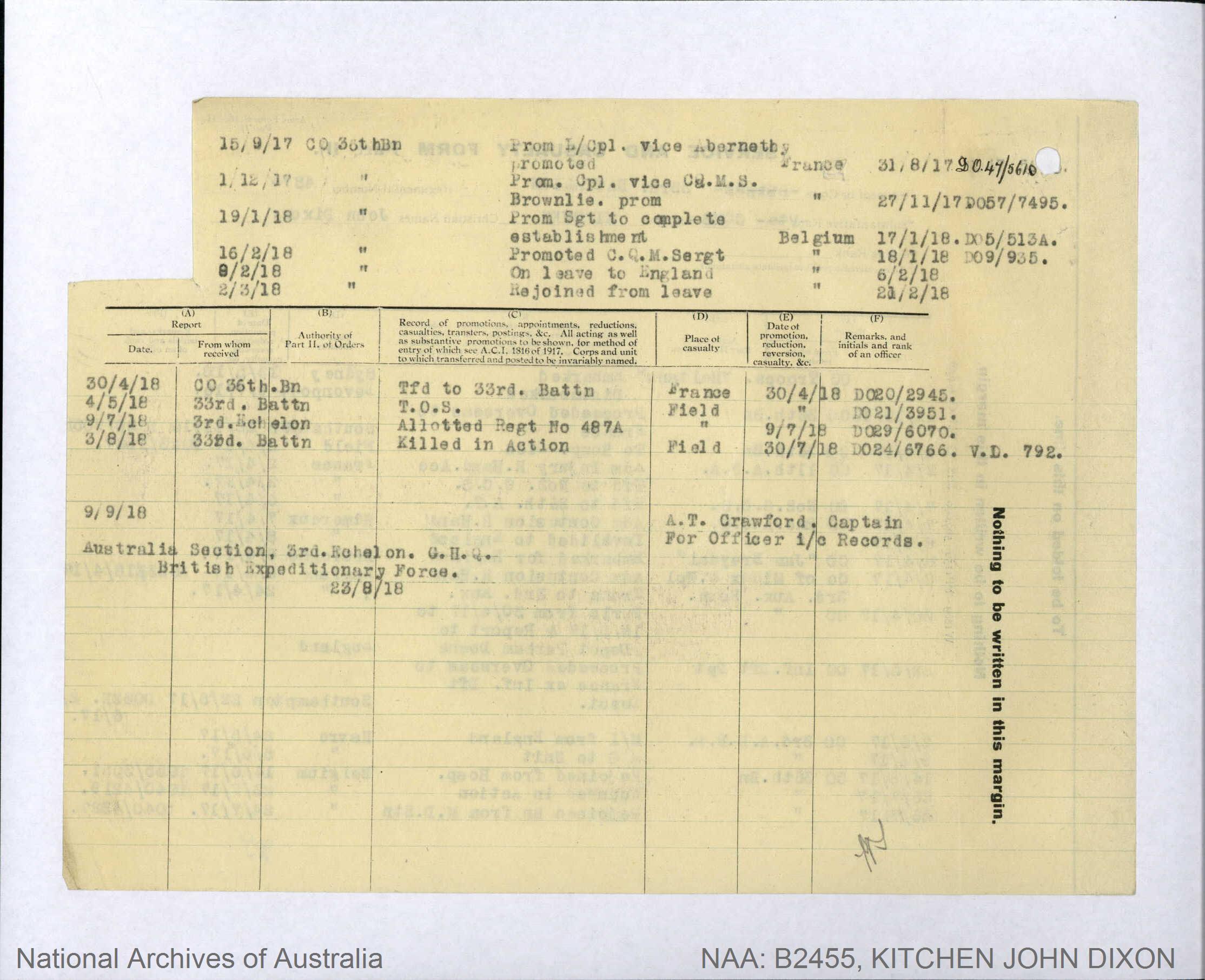
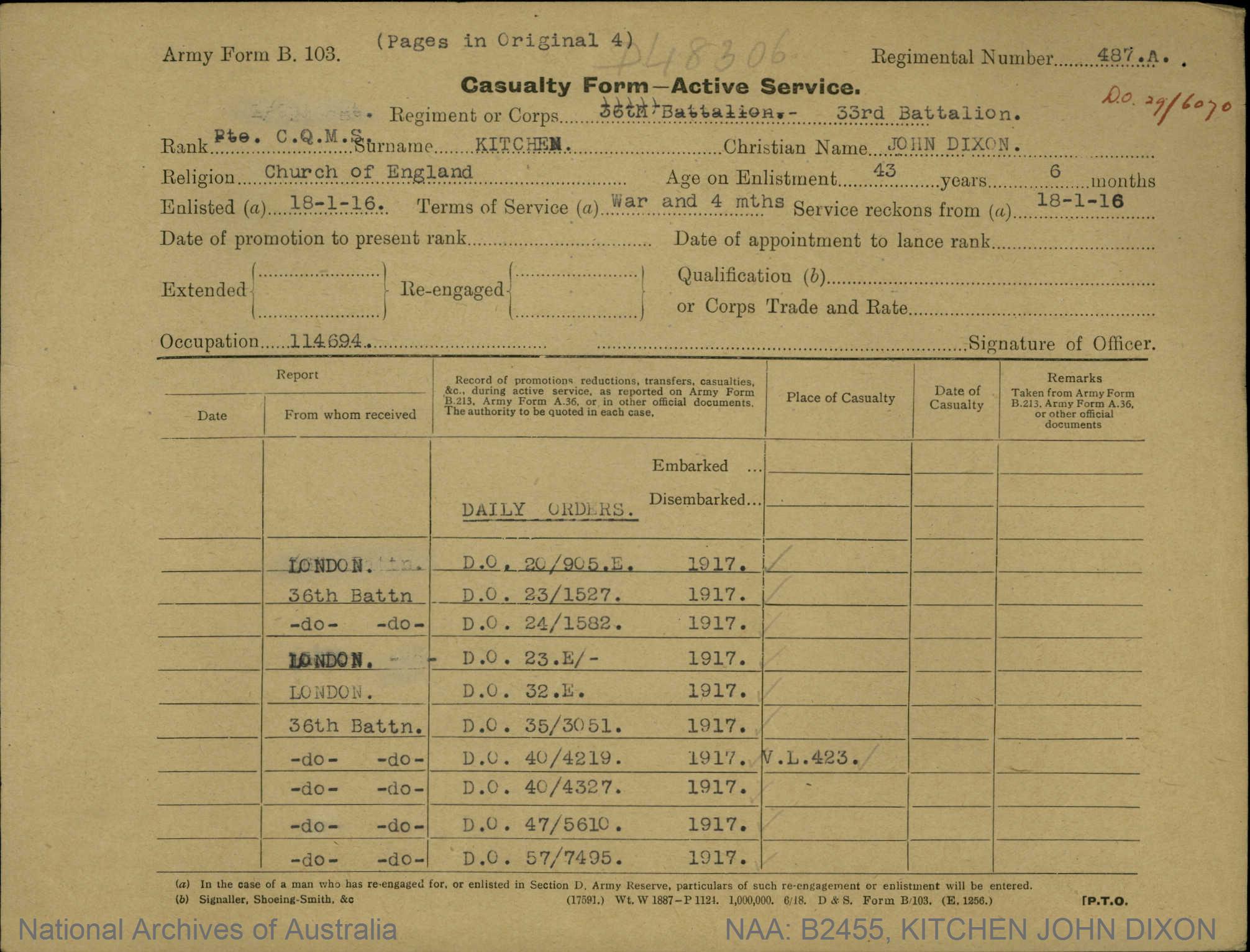
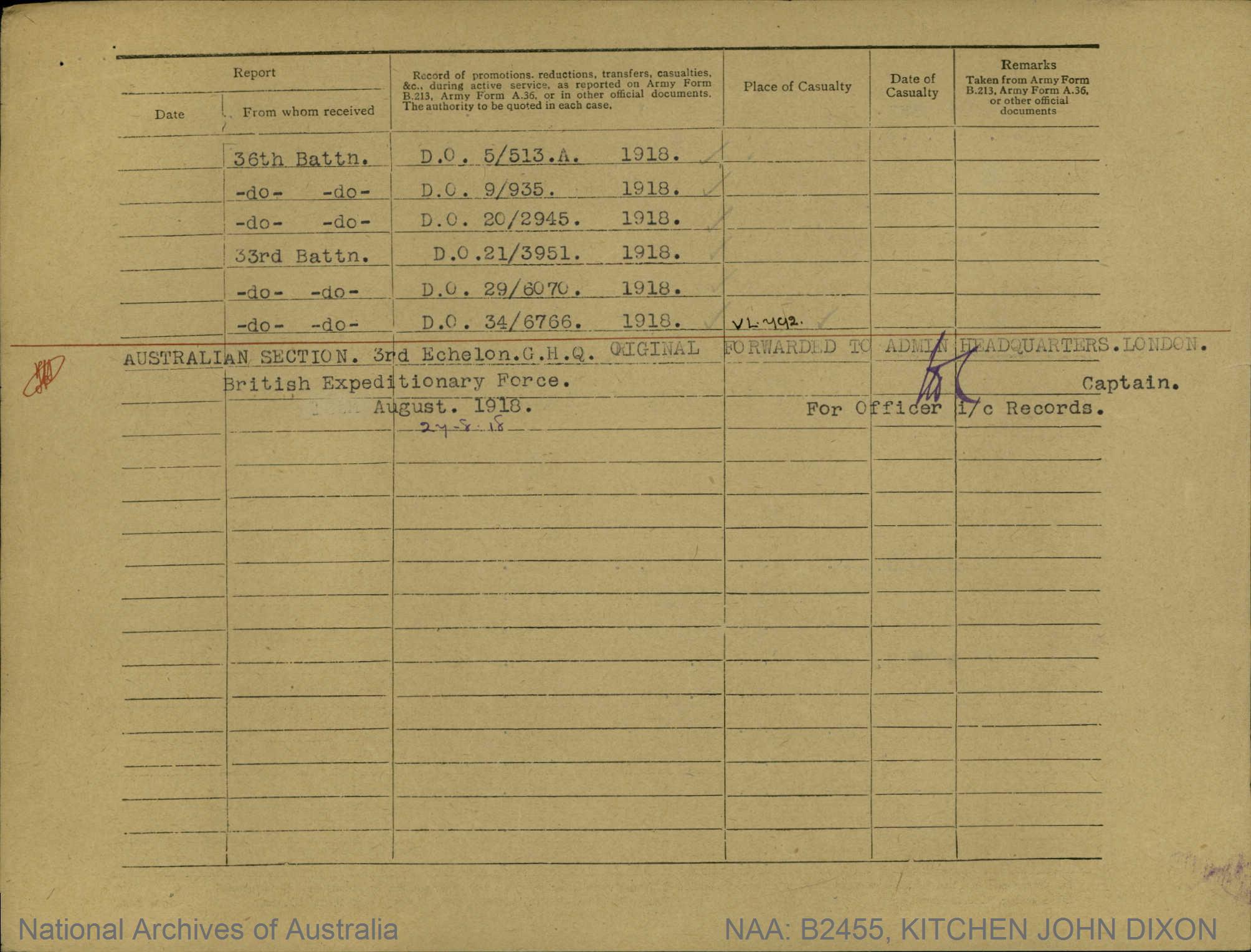

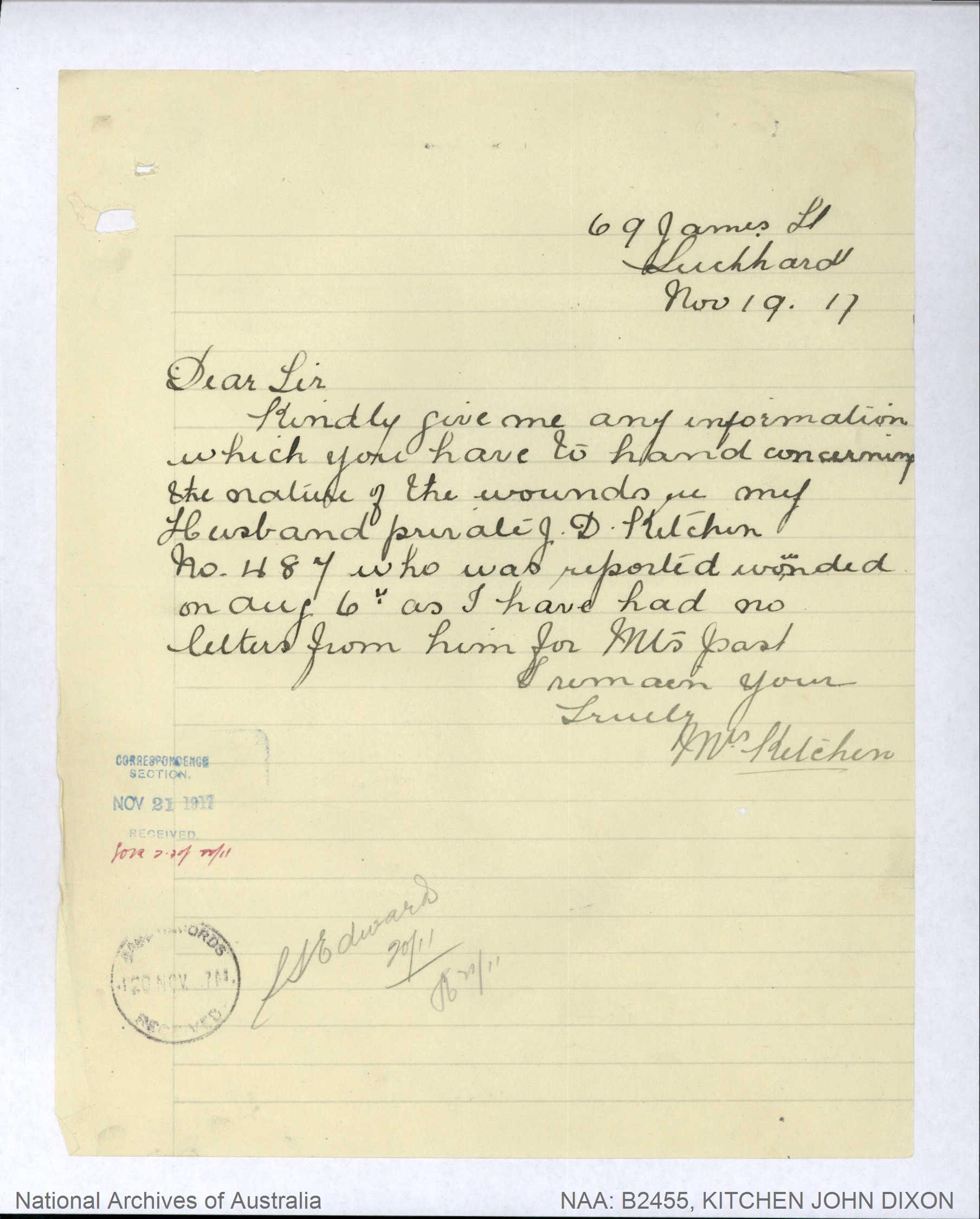
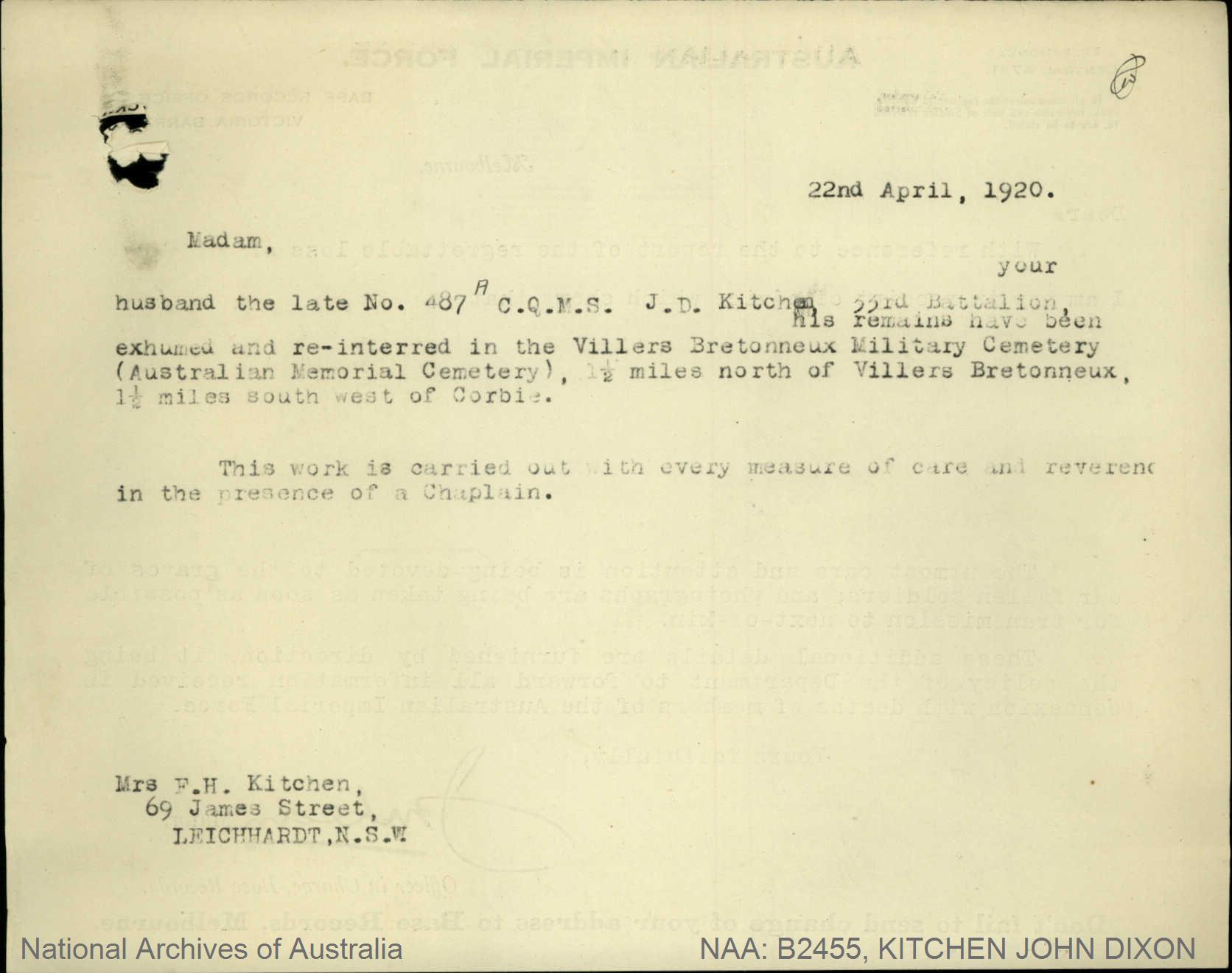
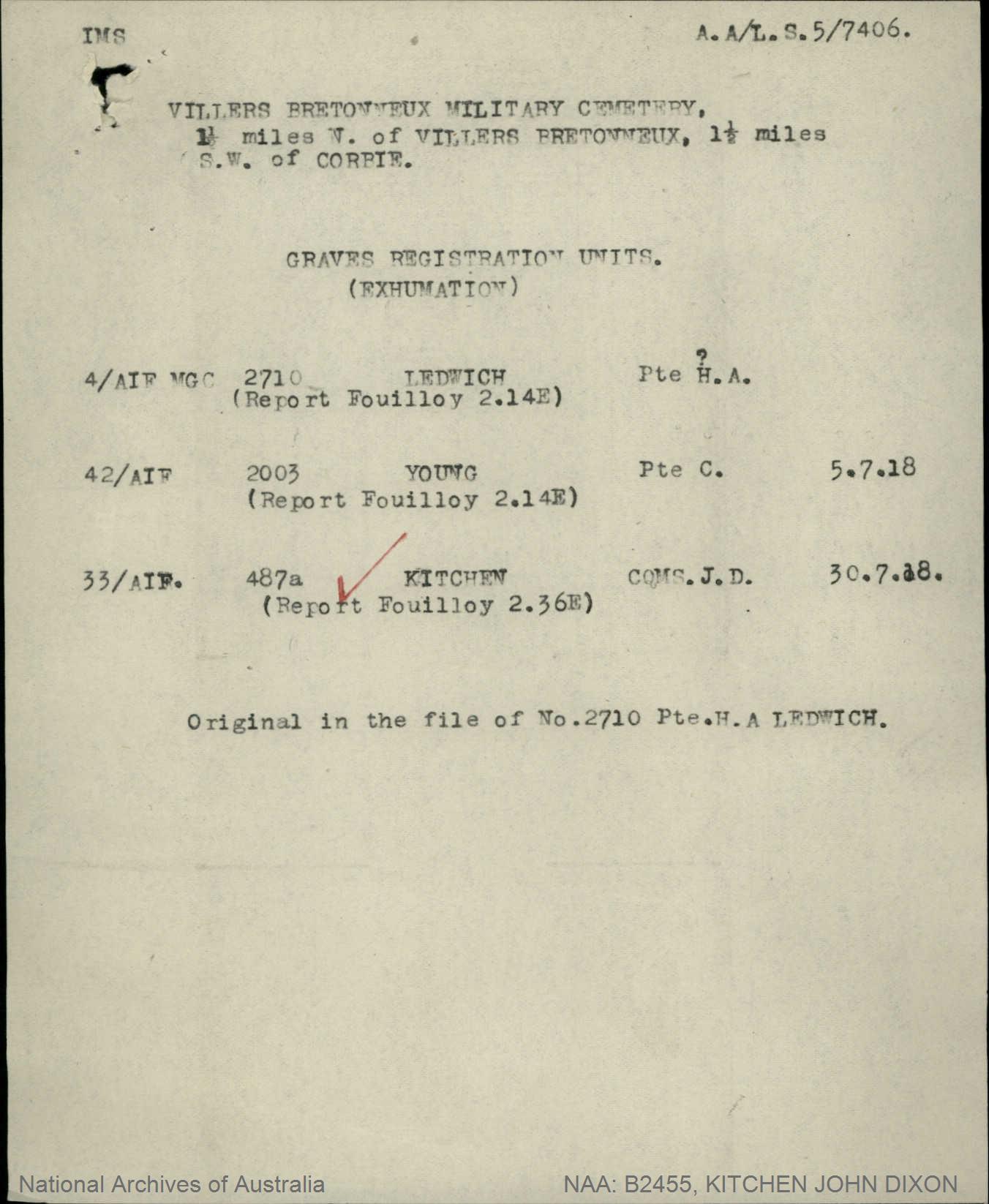


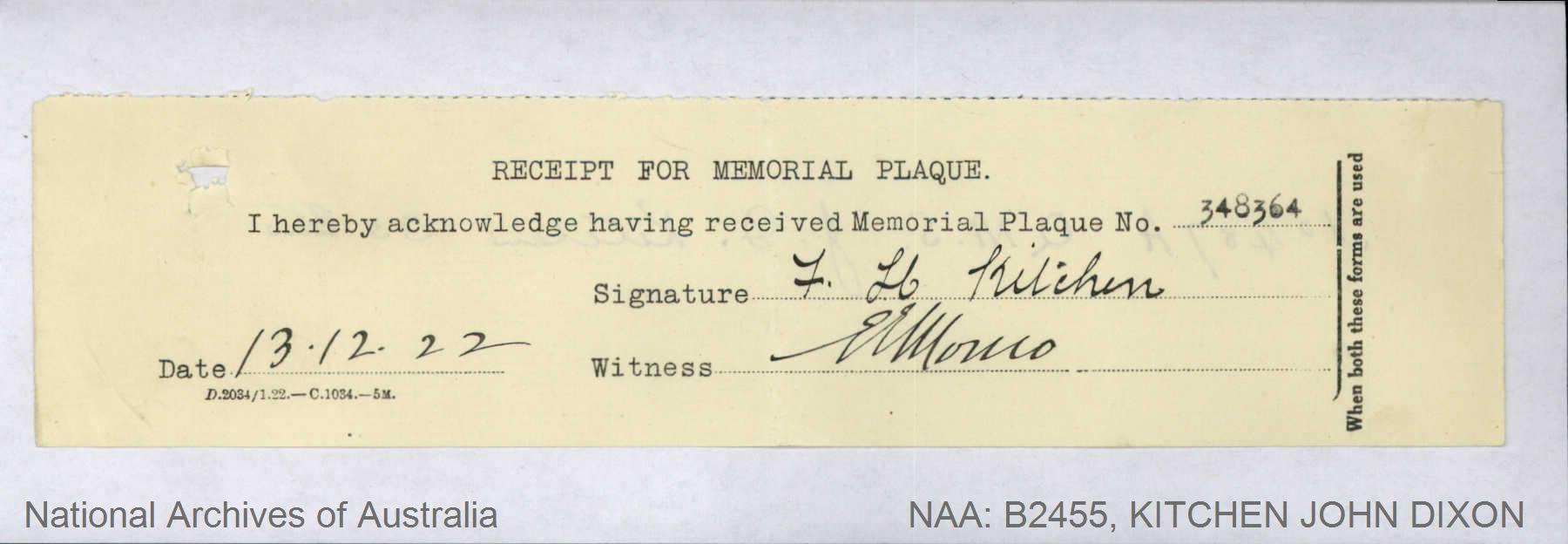
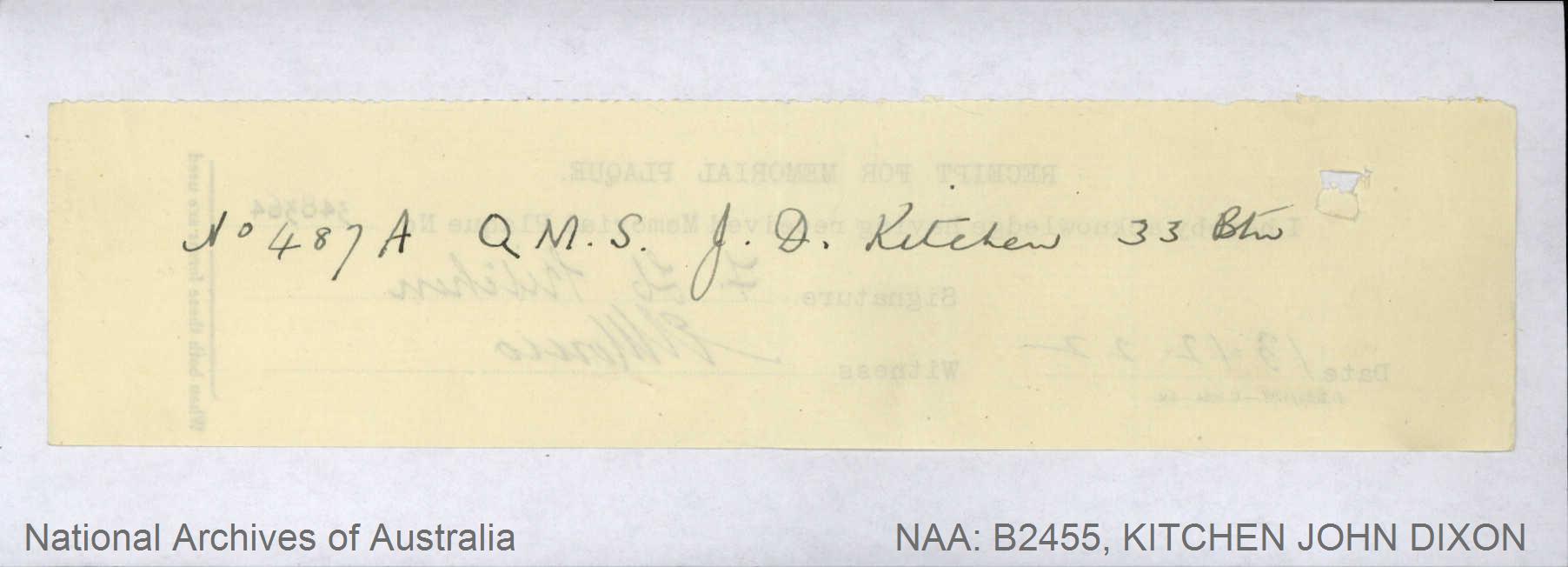
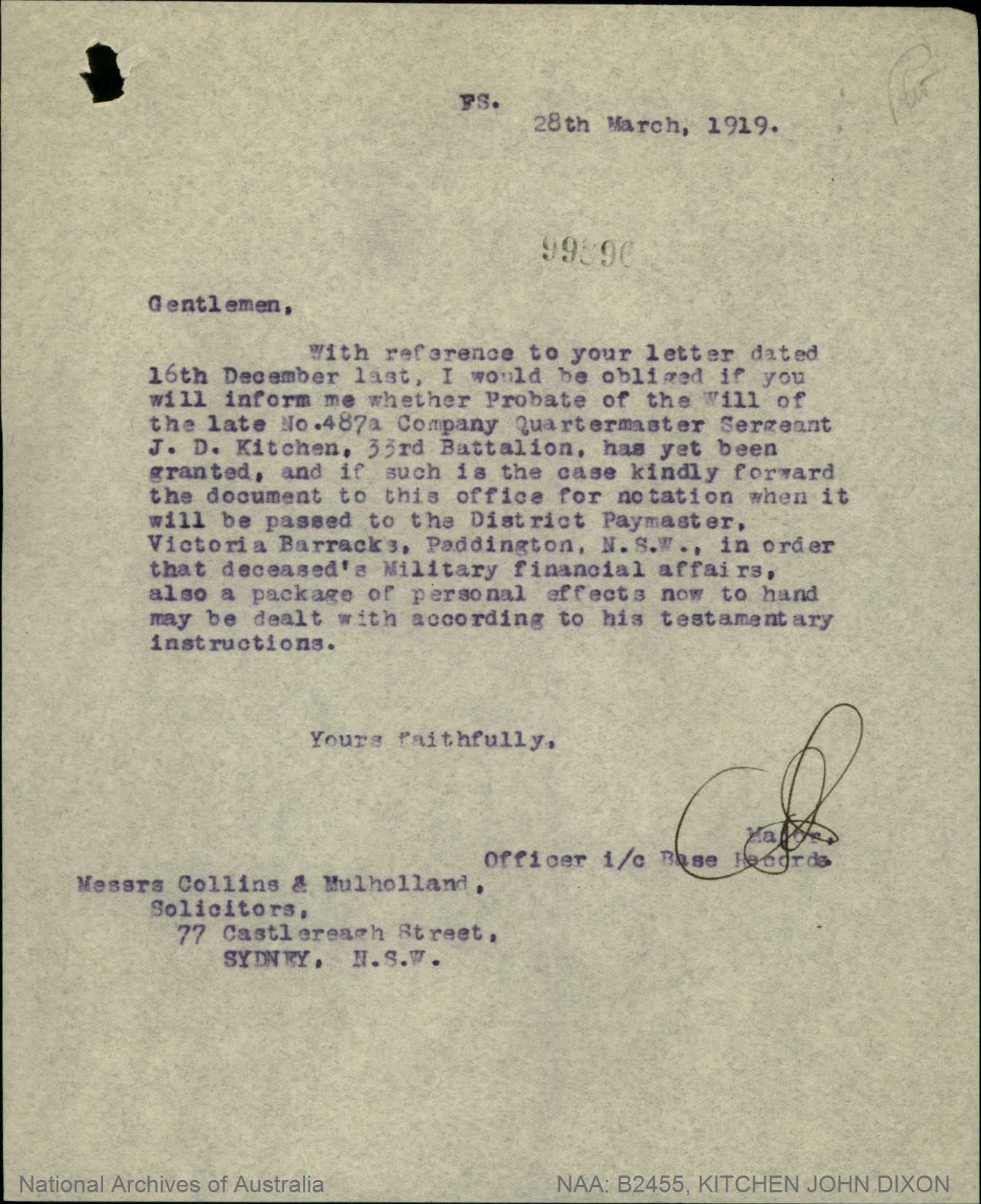
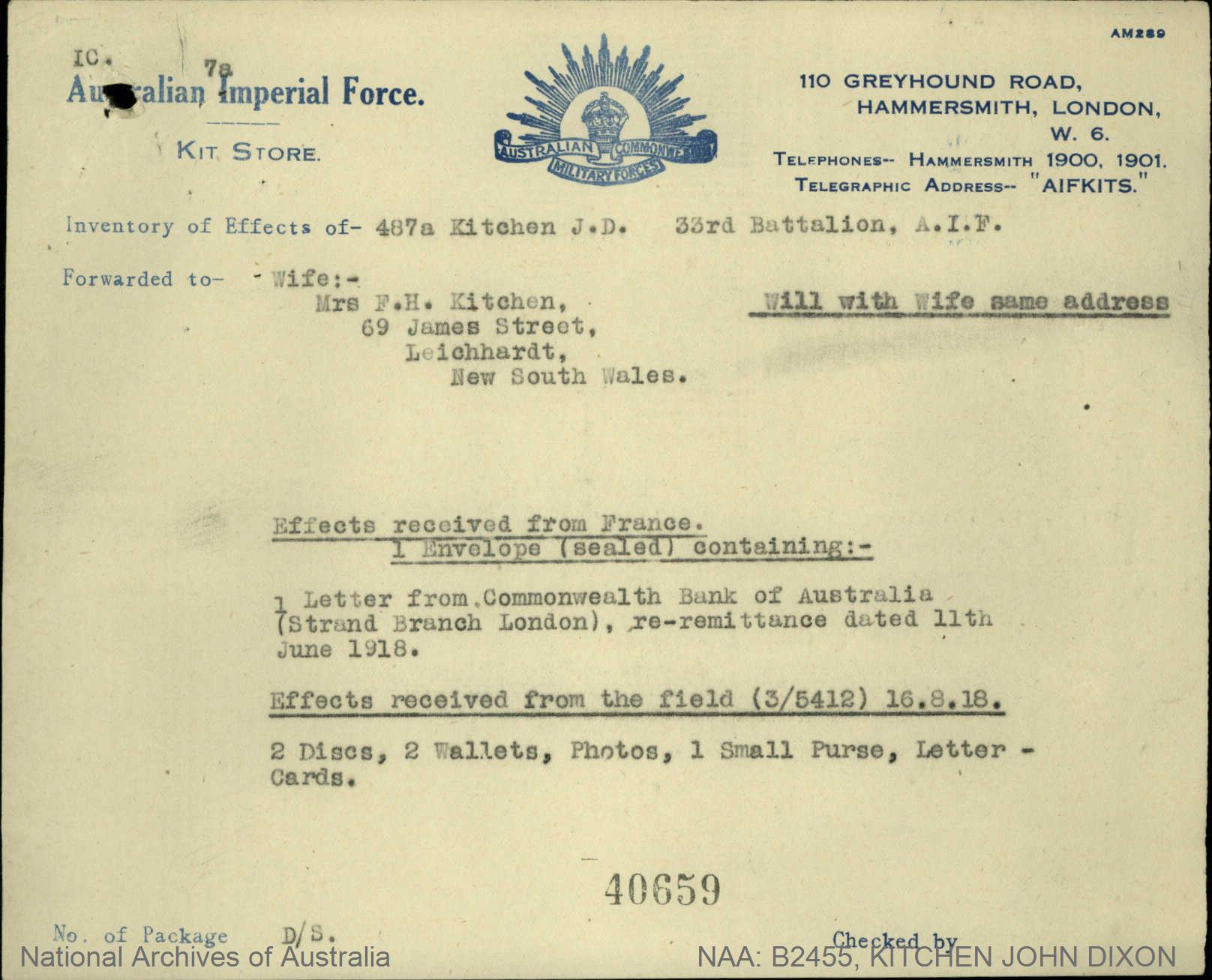
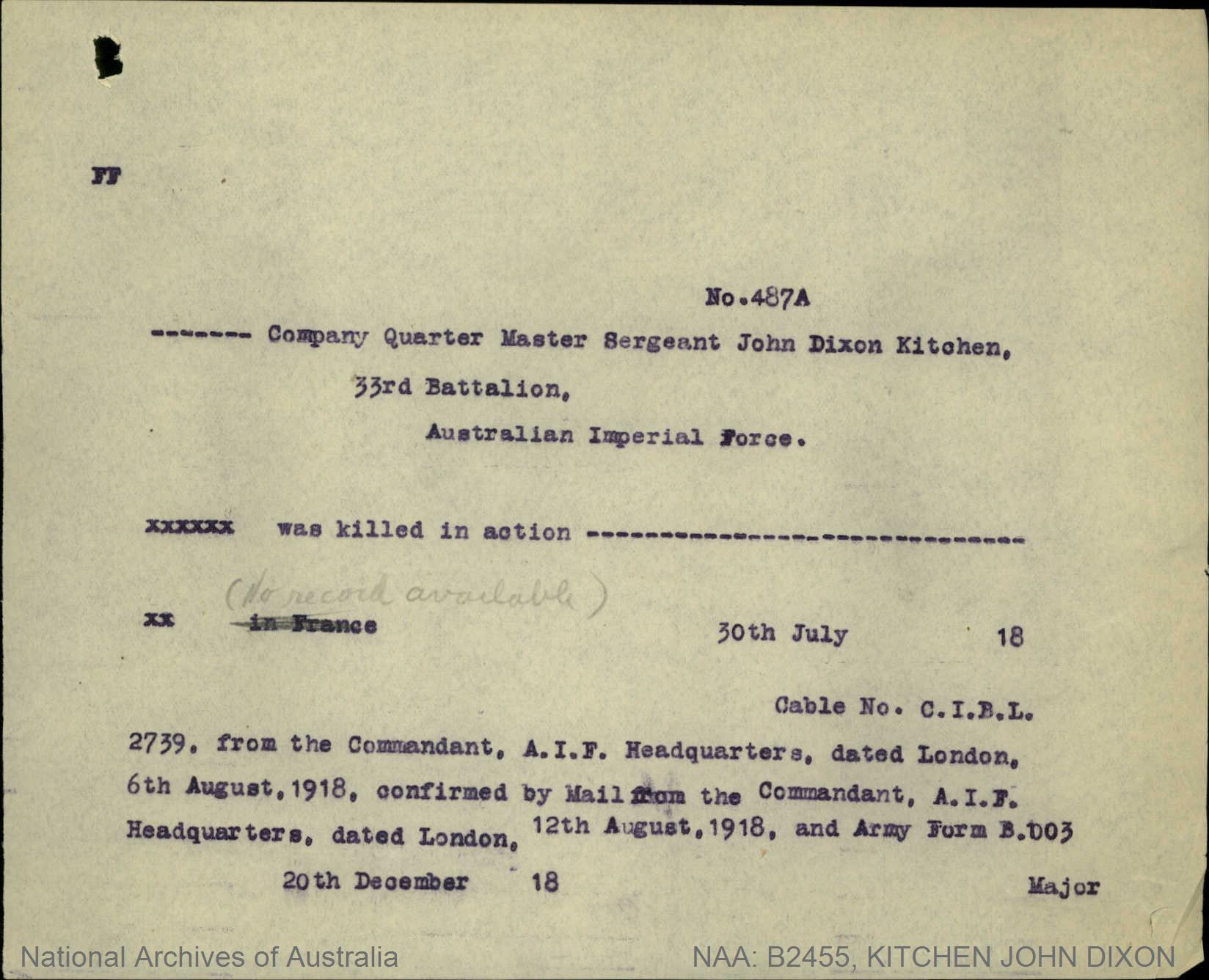



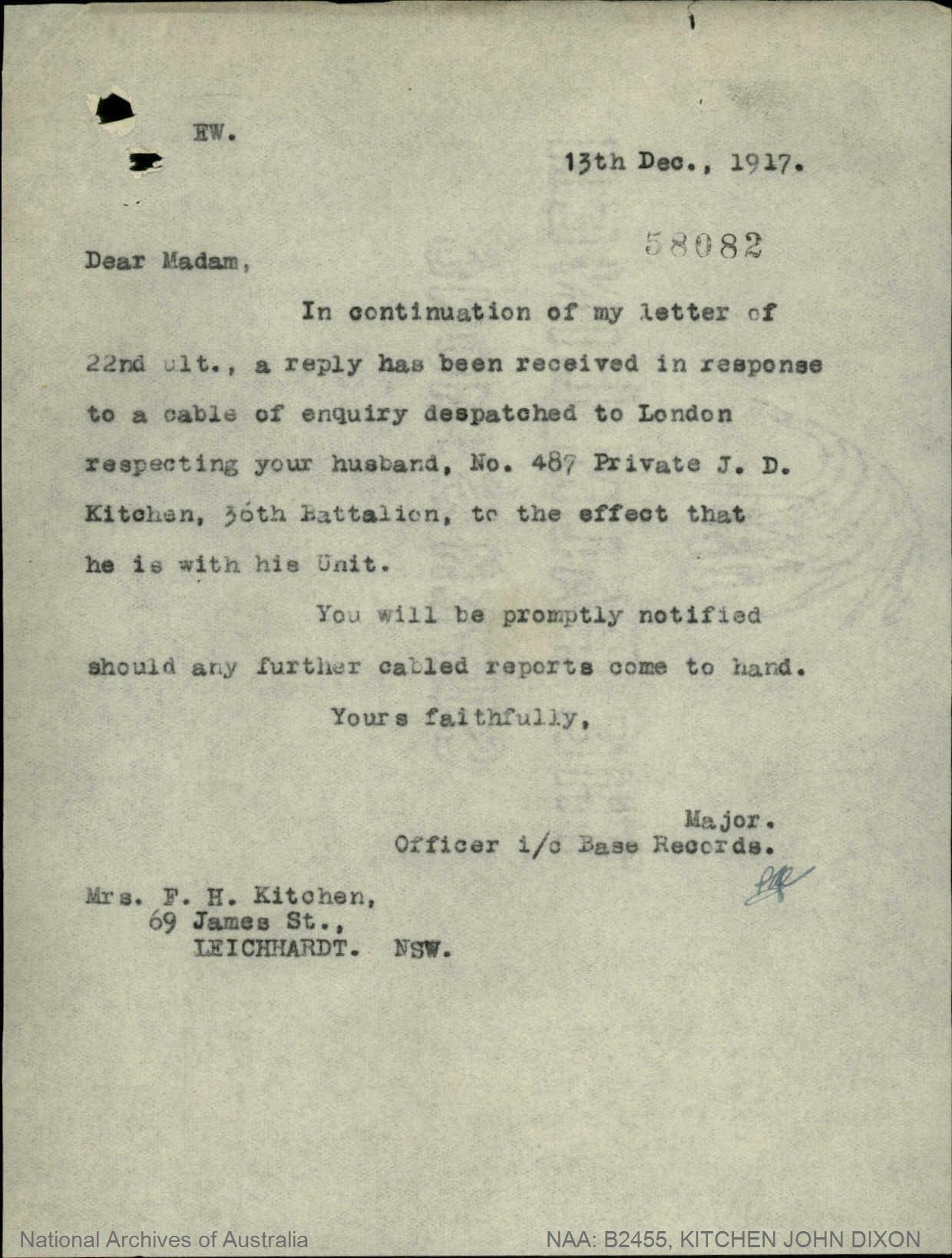
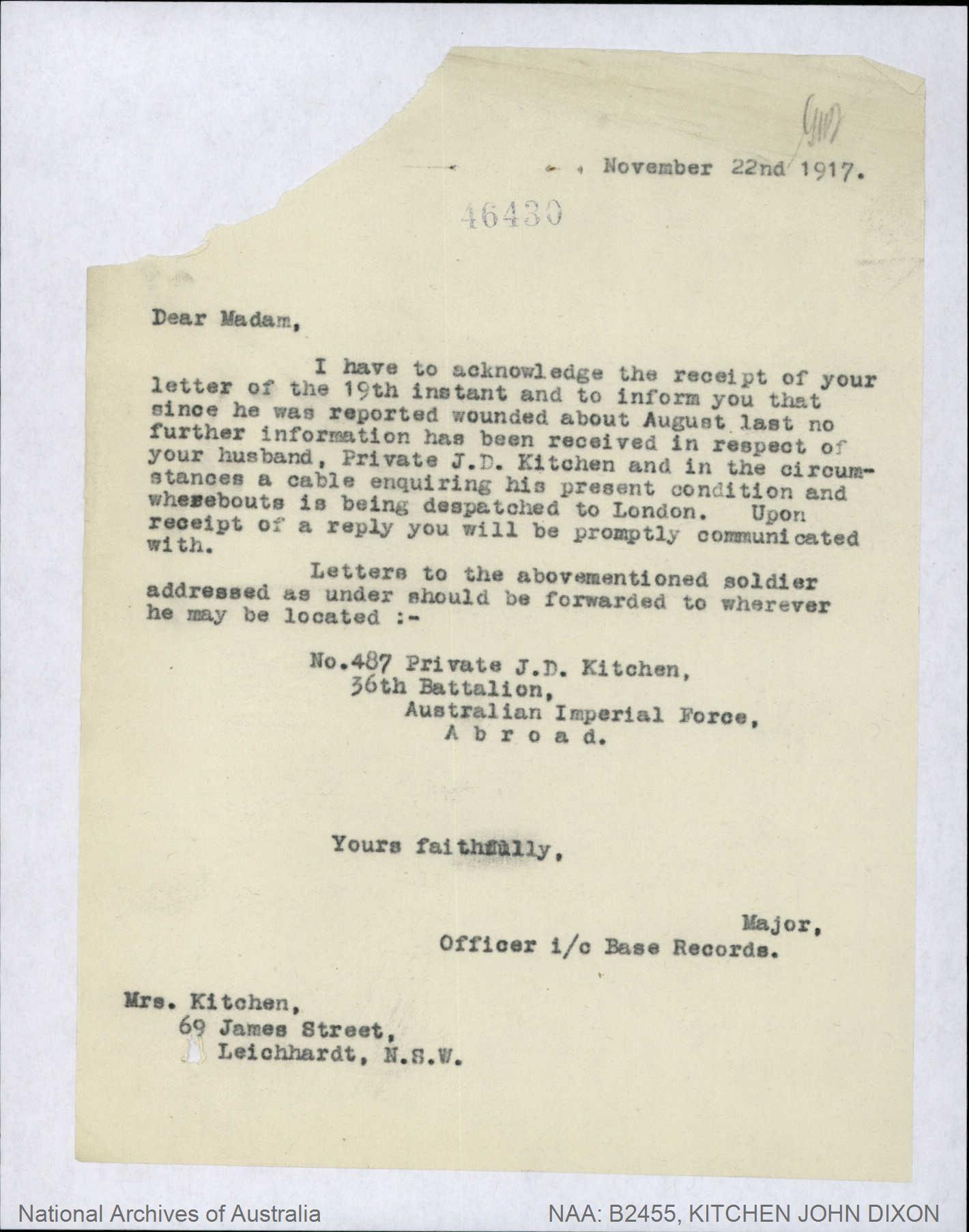


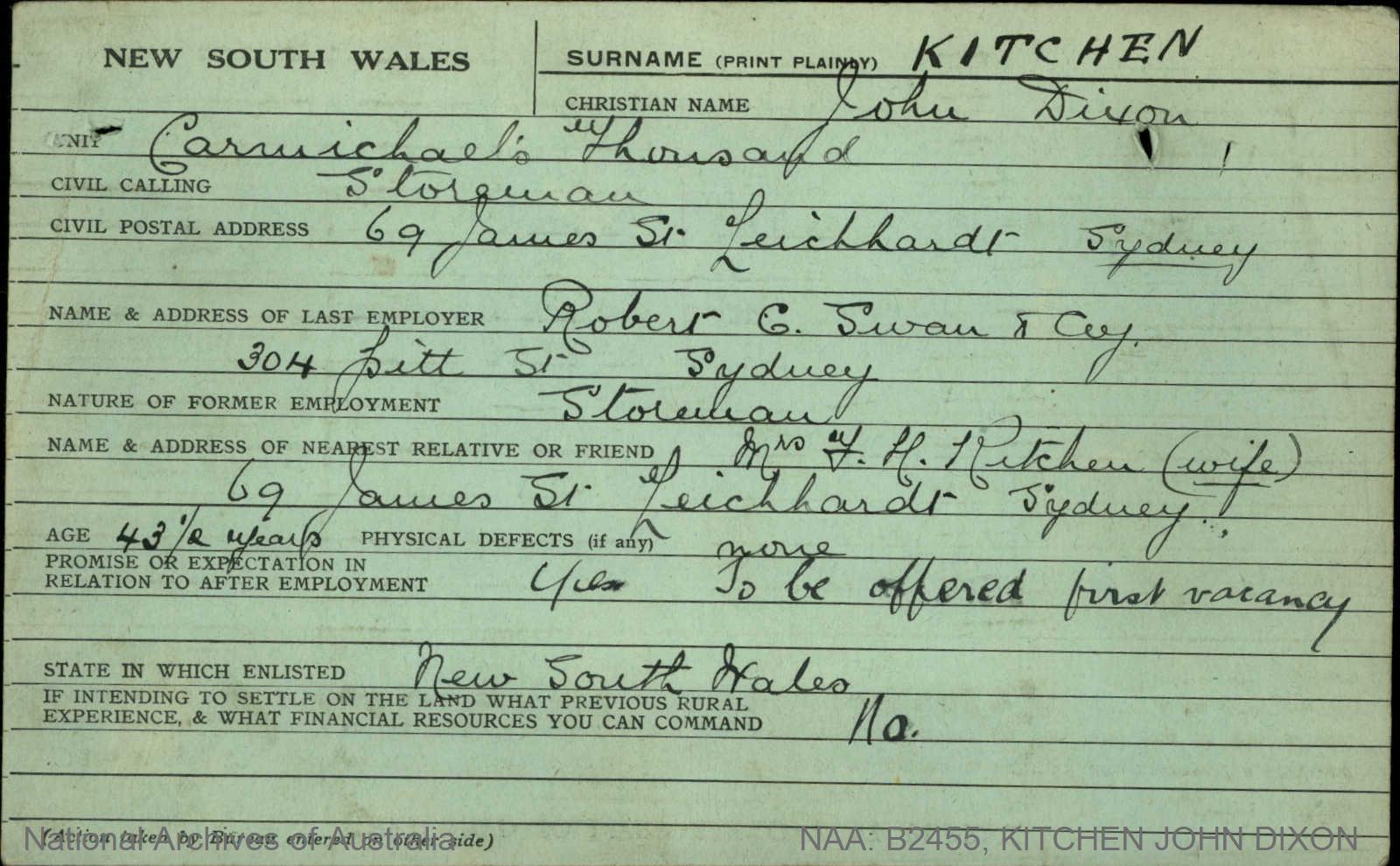

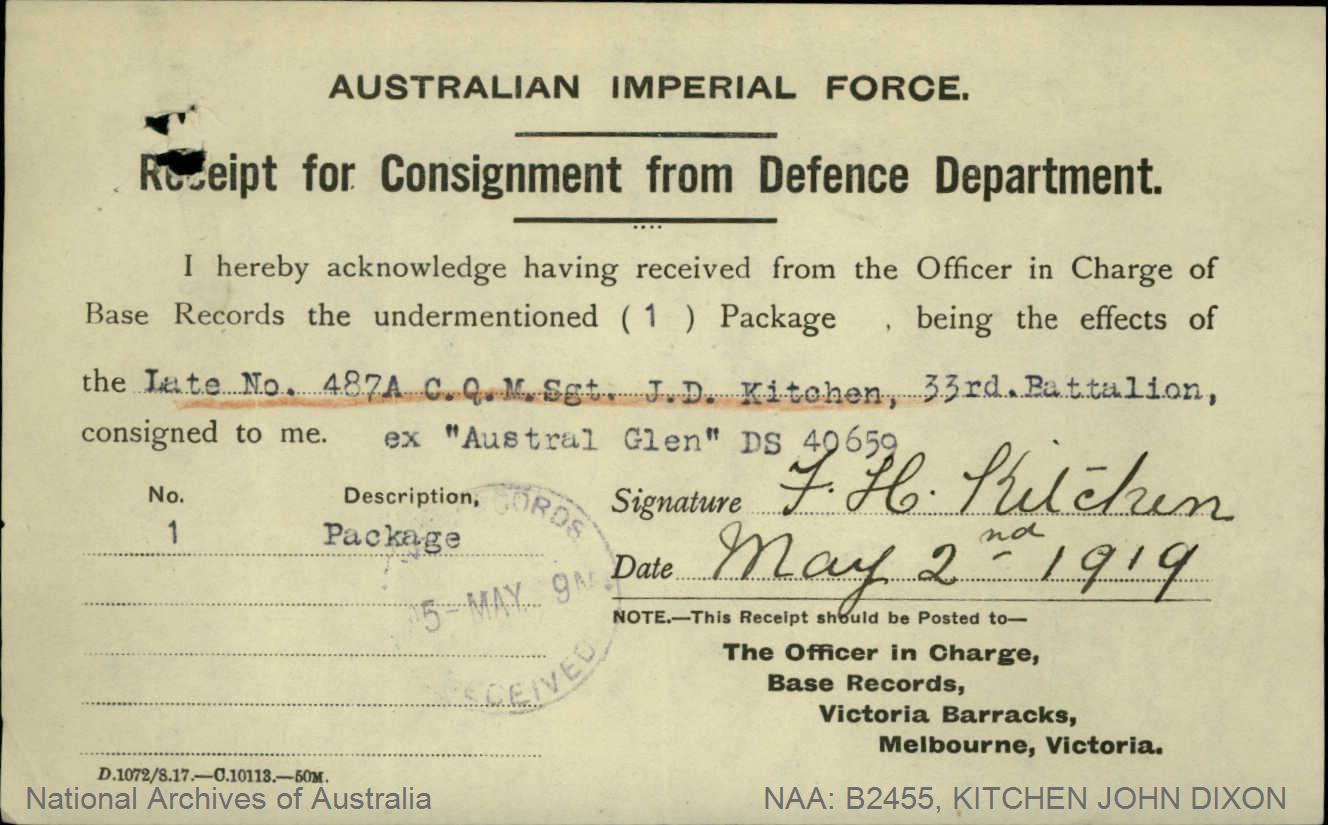
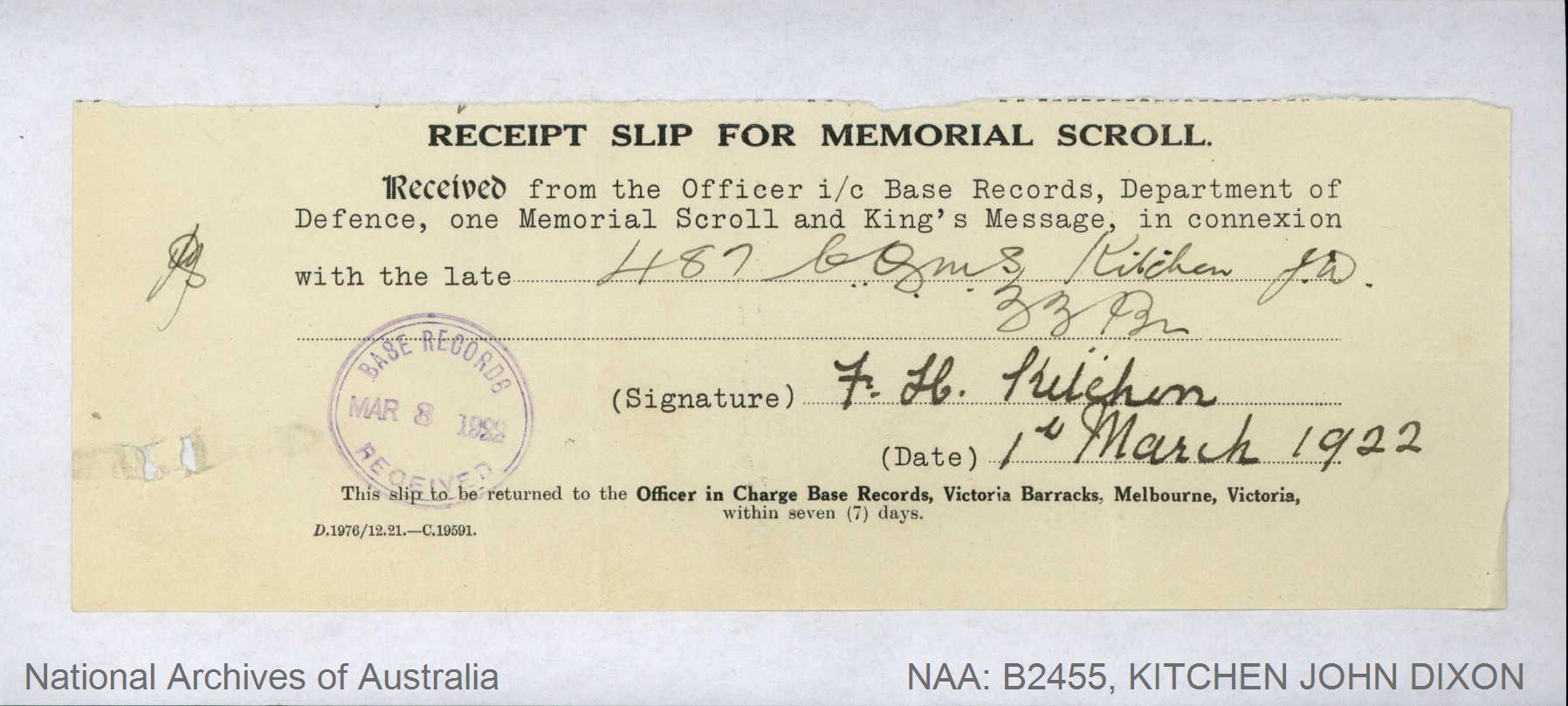
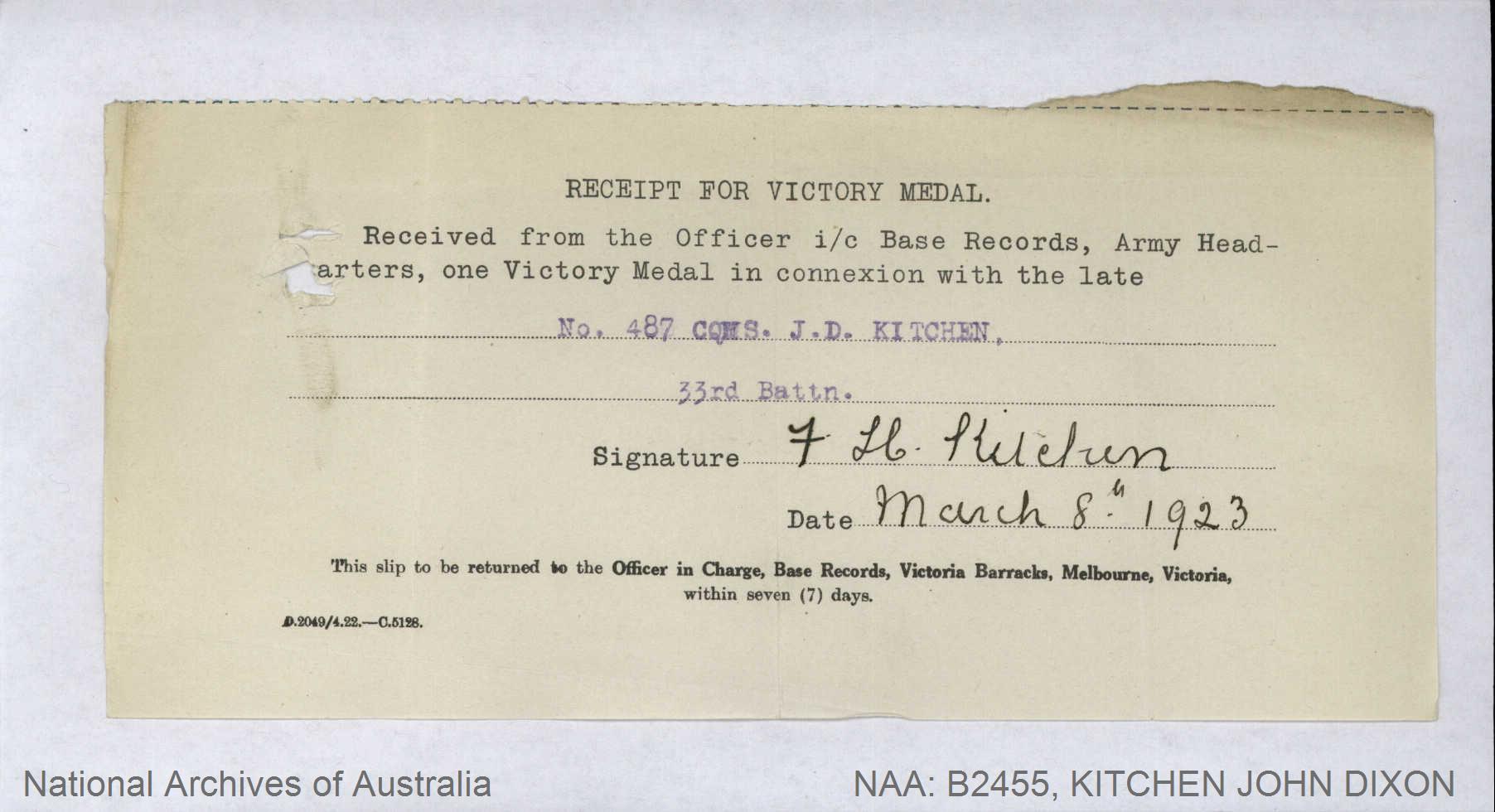
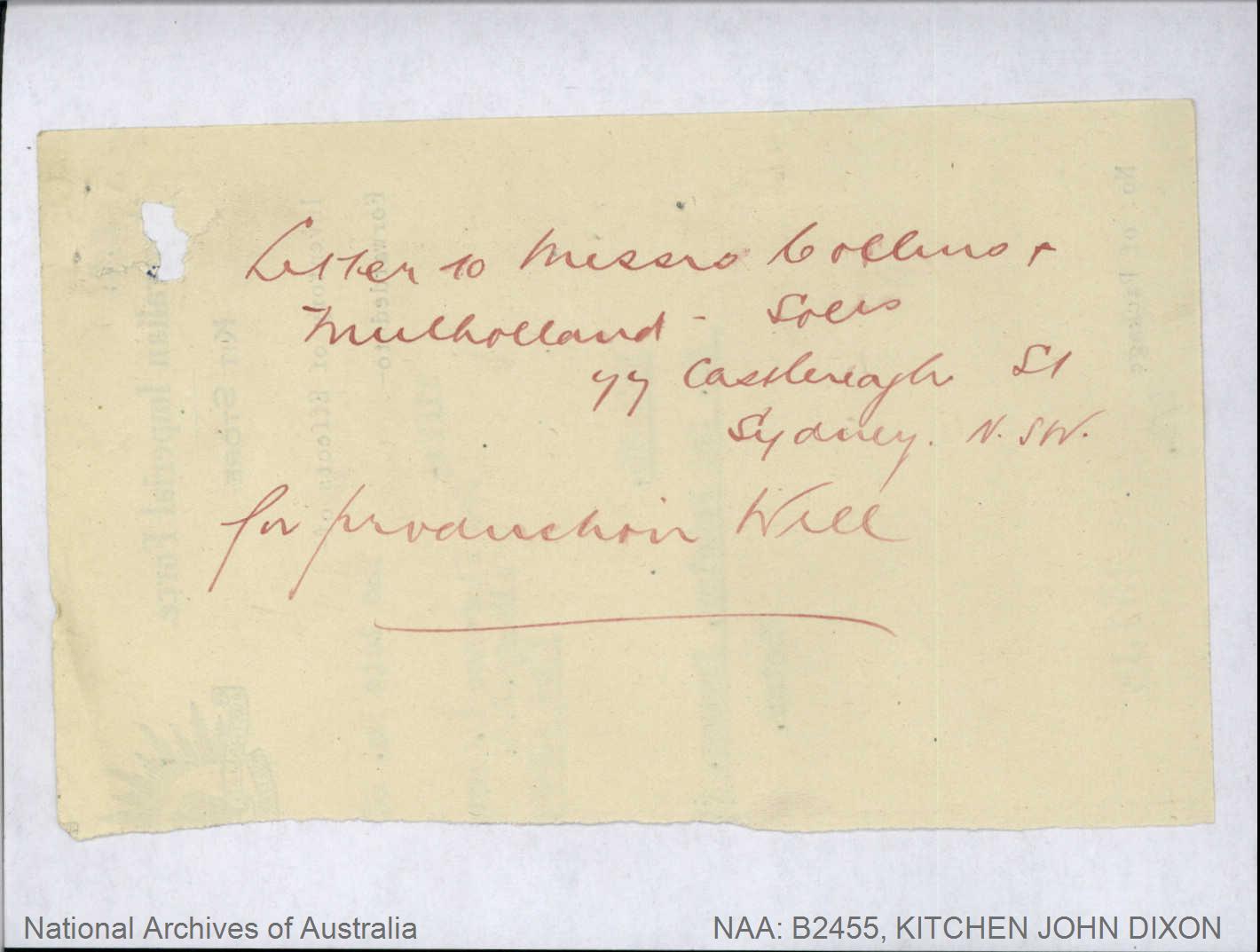
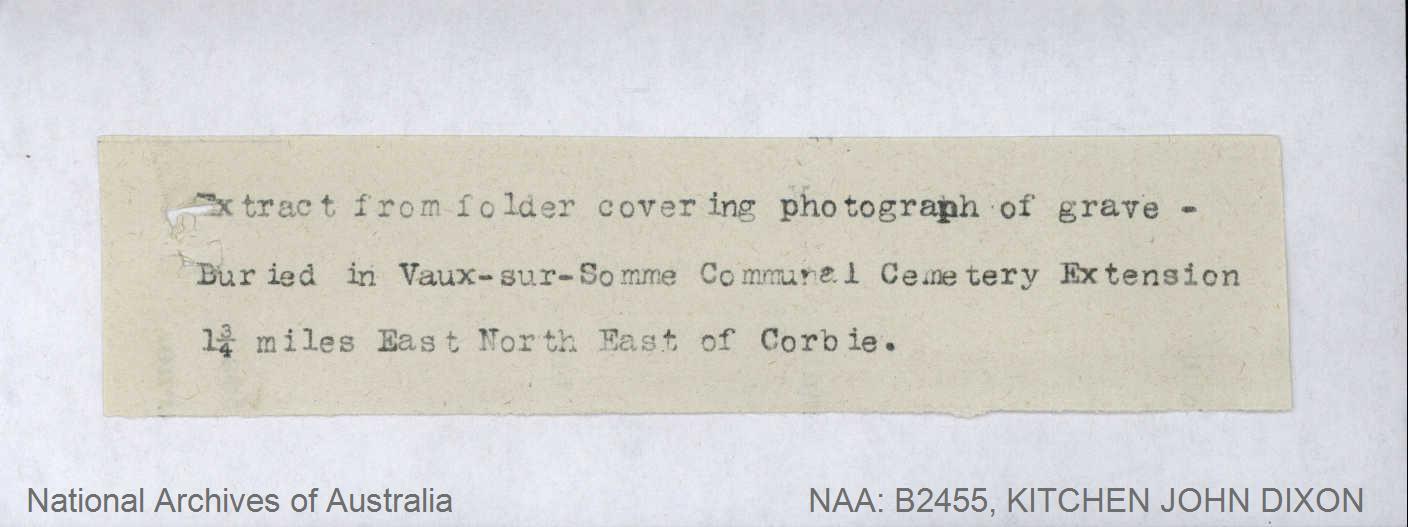

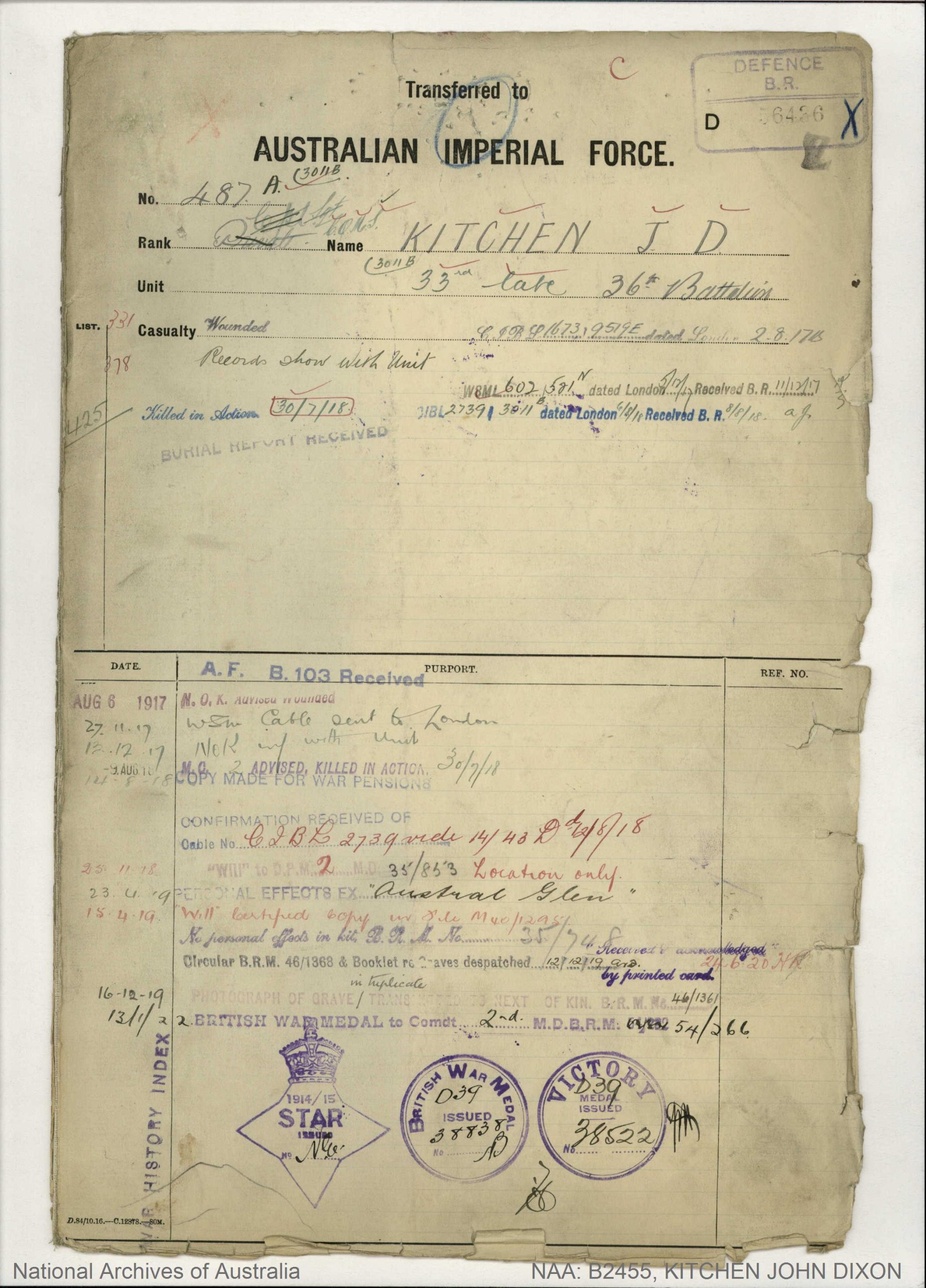
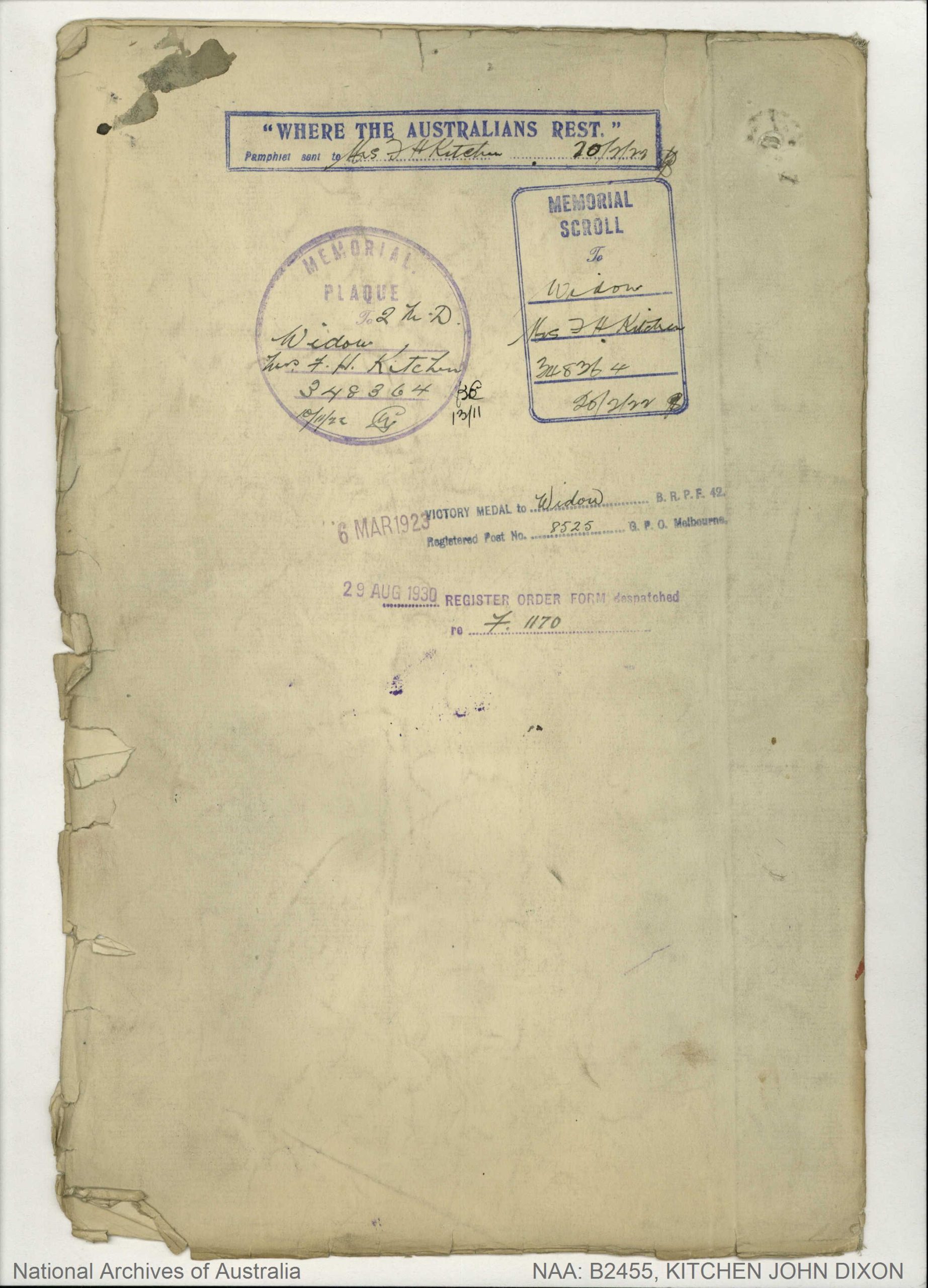
© Commonwealth of Australia (National Archives of Australia)
Under Construction: 10/08/2023-18/08/2023.
